Lebanon travel guide: a 2-week itinerary
By Joan Torres 58 Comments Last updated on April 25, 2024

This is a compelling travel guide to Lebanon that shows how to visit the Levantine country during the crisis, including where to exchange in the black market. It also includes things to do, how to move around, where to stay and more.
Despite its tiny size, Lebanon is the most diverse country in the Middle East, a nation that chaotically combines both Arab and European Mediterranean culture, with their love for good wine and the most exquisite food in the region, without never losing their Arab essence.
Lebanon, however, is not in their brightest moment.
A deep economical crisis fuelled by the port explosion and also COVID-19 has left an impoverished country with terrible inflation, and an absolutely desperate population.
As a traveler, Lebanon has changed a lot, the crisis is particularly palpable but that should not stop you from visiting such an alluring country, which is also desperate for foreign currency .
This guide contains travel tips for Lebanon, as well as a complete itinerary.
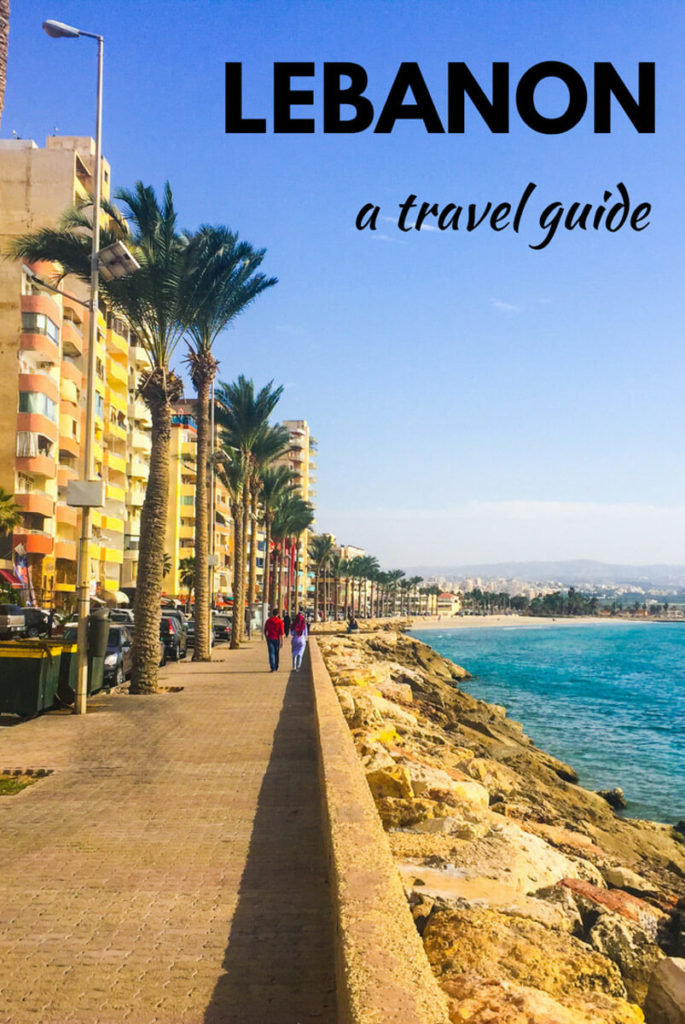

In this Lebanon travel guide:
Table of Contents
- Traveling during the crisis
- Power shortages
- Useful books
- Travel insurance
- Moving around
- Day 1,2,3 – Beirut
- Day 4 – Byblos
- Day 5 – Zahlé
- Day 6 – Baalbek
- Day 7, 8 – Tripoli
- Day 9, 10 – Kadisha Valley
- Day 11 – Sayda & Mleeta
- Day 12 – Tyr
- Day 13 – Go off-beat – Lebanese-Israeli separation wall
- More Information
our recommended travel insurance for Lebanon
IATI Insurance is the most versatile insurance for any destination, including Lebanon.
🪪 Visa for traveling to Lebanon
Most nationalities can get a free 30-day visa on arrival at the airport in Beiru t , which is extendable for 2 additional months.
You just get an easy, friendly stamp, that’s it, and it’s valid for multiple entries.
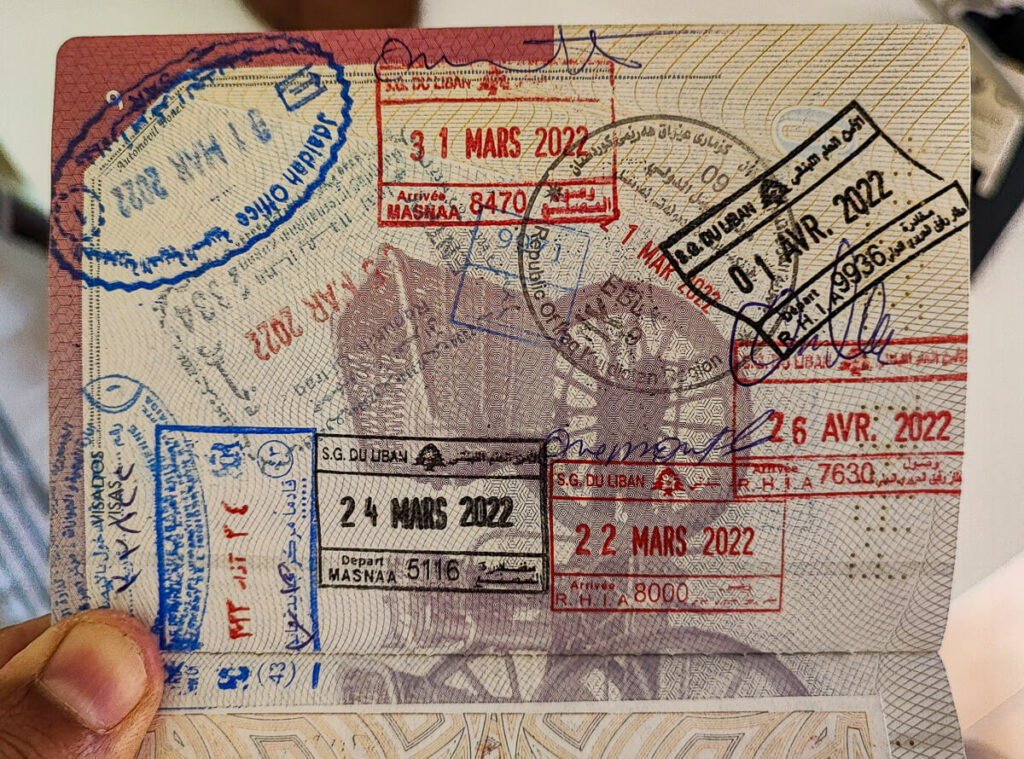
💻 Internet and connectivity in Lebanon
Wi-Fi connection has improved over the last few years, but it’s still not the best, it tends to fail in most budget hotels, and that’s why I recommend buying a SIM Card.
One company I used was Alfa , their internet packages costing the equivalent of around 20USD.
Get a VPN for traveling in Lebanon
You should always use a VPN when you travel, especially when you connect to public Wi-Fi networks.
Your connection will be much safer.
Moreover, you will be able to access content which is typically censored in Lebanon.
I recommend ExpressVPN – Extremely easy to use, fast and cheap.
If you want to learn more about VPN, check: Why you need a VPN for traveling .
Read: A travel guide to Palestine
💰 How to travel in Lebanon during the crisis
As mentioned, Lebanon is immersed in a hugely deep financial crisis, and below are the things that might affect you as a traveler.
1 – Need to know about money in Lebanon during the crisis
In Lebanon, the official currency is the Lebanese Pound (LBP) .
The official exchange rate versus US $ is 1 USD equals 1500LBP .
That’s the official (and old) bank rate. However, because of the crisis, the official rate in the black market is today:
1 USD = 27,000 LPB
The Lebanese pound has devalued more than 15 times its original value in just a few years, it’s absolutely crazy.
Lebanon travel tip – I recommend you download Lira Exchange on your smartphone, an app that gives you the current black market exchange rate.
However, for some reason, Lebanese banks like to keep the old rate.
This means that you should never ever use your credit card in Lebanon, never pay by card, and never withdraw from an ATM, never ever because you’ll get the old rate.
Lebanon is today a cash economy, bring all your money in cash, don’t use your credit card. In the hypothetical case you run out of money, ask someone to send you cash via Western Union or similar, but never without your debit card.
How to exchange money in the black market of Lebanon
They call it black market but basically, the black market for exchanging money in Lebanon is anywhere, including the official money exchange offices which can be found everywhere, especially along Hamra Street in Beirut.
Which currencies do they accept?
You can exchange Euros (€), US dollars, or British Pounds, among others.
If the Lebanese Pound has devalued more than 15 times, does that mean that everything is 15 times cheaper?
No. The currency devaluation has brought massive inflation too.
For example, before the crisis, a bottle of beer in a supermarket used to cost 1,500LBP. Today, you can buy it for 15,000LBP.

2 – Need to know about power shortages in Lebanon
One of the biggest consequences of this unfortunate crisis for the Lebanese people is their shortage of electricity. When you travel in Lebanon, you’ll see that power cuts occur very often, every day.
As a traveler, if you only stay in fancy hotels and eat in top-end restaurants, the power cuts won’t really bother you, since pretty much all use powerful generators.
However, in cheaper hotels, as well as outside of Beirut, power cuts occur pretty often.
By the way, one top travel tip for Lebanon is not to order meat from certain cheap restaurants, since their fridge might not be always on due to the power cuts.
3 – Is it safe to travel to Lebanon during the economical crisis?
Lebanon has never come without its own issues but this has always been one of the safest countries in the Middle East , a country home to a huge cultural and religious diversity, where there’s never been a place for extremists.
In the last couple of years, however, since the unfortunate crisis started, many travelers are questioning the country’s safety, claiming that traveling to Lebanon isn’t safe anymore, but I strongly disagree.
Crime has always been pretty insignificant in Lebanon and, despite that many Lebanese are in urgent need of cash, it still remains low, and there are no travel reports telling otherwise.
Public demonstrations
Since the crisis started, the only place or moment of potential violence has been during the street protests. If you bump into a public demonstration, it’s recommended to stay away from it.
Moreover, one of the most tangible legacies of the Lebanese Civil War , is that many people in Lebanon have guns at their homes, and many still like to carry them outside of their respective houses.
Once, I took a shared taxi in Beirut , from Hamra to Burj Hamood, and one of the passengers was carrying a gun, yet, nobody seemed to care about it.
This is the reason why in most public demonstrations, some demonstrators have guns, and they tend to like shooting into the sky. Being around those people is, obviously, dangerous.
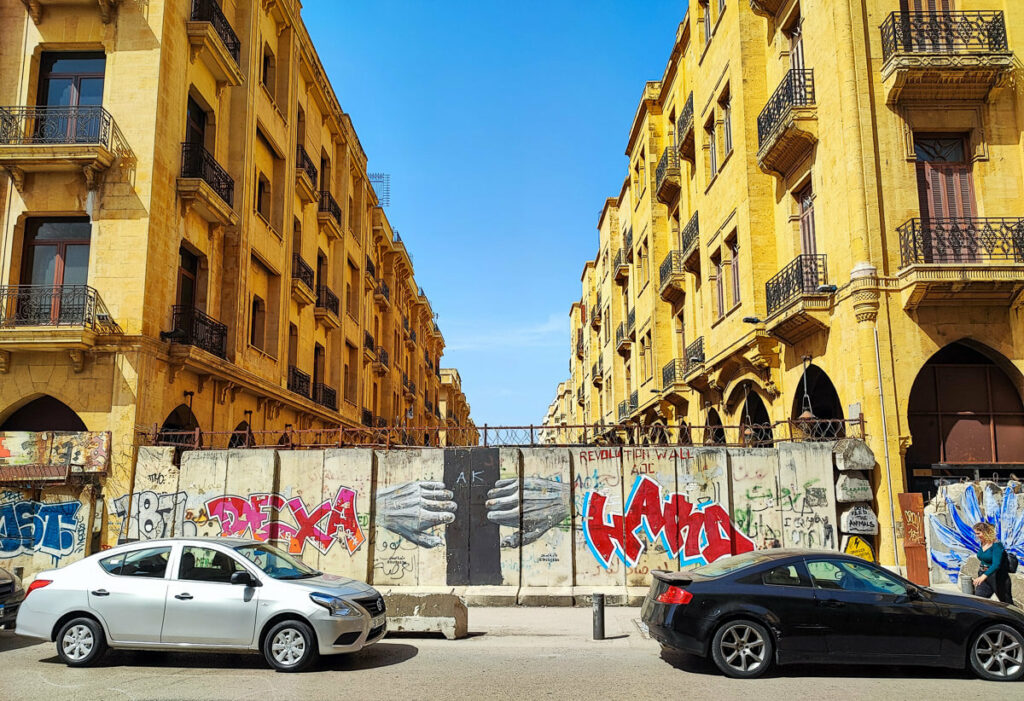
🛫 How to get to Lebanon
How to travel to lebanon by air.
The national airline in Lebanon is Middle East Airlines (MEA) , which has several connections across Europe and the Middle East.
Moreover, you can also fly to Beirut International Airport from Paris (Air France), Frankfurt (Lufthansa), Barcelona (Vueling), Istanbul (Turkish and Pegasus) and pretty much any country in the Middle East .
How to travel to Lebanon by land
Lebanon shares a border with Israel and Syria.
- Traveling to Lebanon from Israel: The border with Israel has always been closed, not possible to cross it.
- Traveling to Lebanon from Syria: It’s fully open and very easy to cross. We use it all the time for our group expeditions .
For more information, read my Syria travel guide .
How to travel to Lebanon by sea
Apparently, the ferry from Cyprus to the northern city of Tripoli isn’t running anymore but you can take a ferry from Tasucu, Port of Mersin (Turkey). However, there isn’t any reliable information online regarding departure timings so overlanders should just show up in Tasucu.
Travel reports are more than welcome 🙂
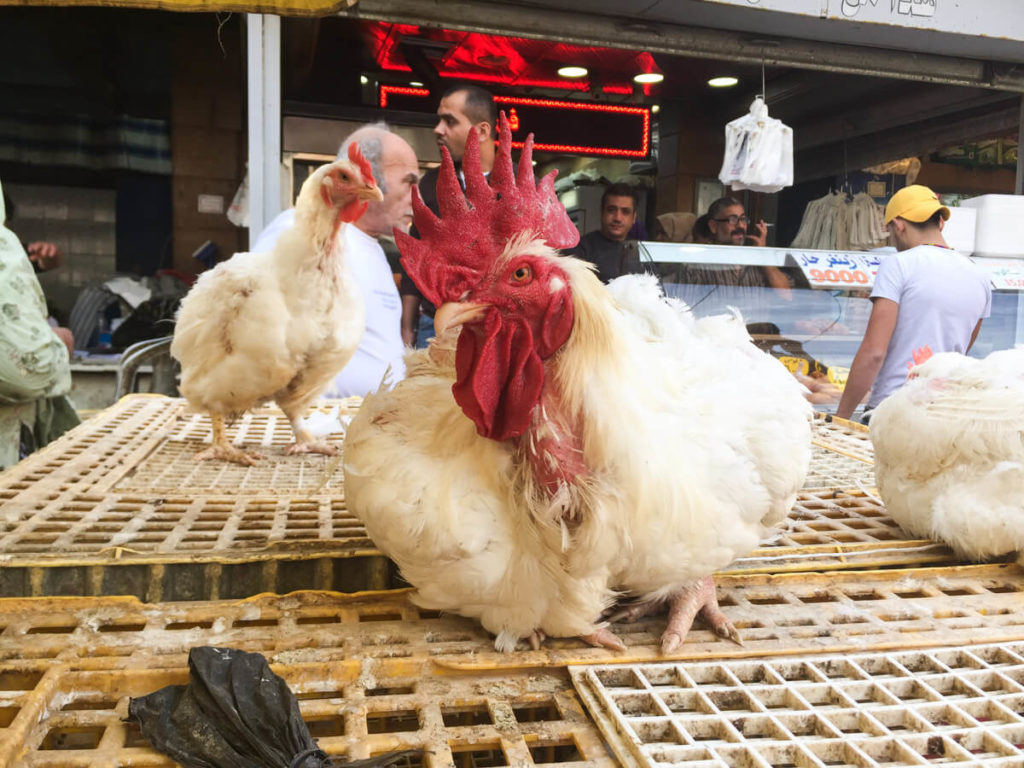
📚 Useful books for traveling in Lebanon
Lebanon travel guide by bradt.
This is the most up-to-date travel guide to Lebanon. I am a Bradt Guides fan because all their guides are extremely insightful, both from a local perspective and also, because they give plenty of tips for independent travelers which help you easily plan your itinerary for Lebanon.
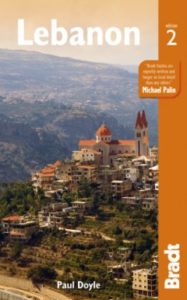
Middle East Travel Guide by Lonely Planet
It has only one chapter about Lebanon but, at least, the information here is updated.

🚑 Travel insurance for visiting Lebanon
Lebanon is one of those countries where you must travel with insurance, as it is a wild place where people drive crazily.
I recommend IATI Insurance because:
- Plans for all budgets.
- Covers all countries in the Middle East, including Syria and Iraq
- Full COVID coverage
- It covers senior citizens too
- Readers of this blog can get a 5% exclusive discount
🕌 The country: people & culture
For me, the highlight of traveling to Lebanon is by far, the Lebanese people.
However, I am not talking about their kindness and hospitality – since that would be falling into the classical cliché one can say about any country in the Middle East – but I am talking about the cultural diversity.
There’s no other country – at least that I am aware of – where there can be so many groups of people living in such a tiny space.
Shia, Sunni, Catholics, Orthodox and Druze, but also Armenians, Palestinians, and Syrians.
From Hezbollah areas to Christian districts inhabited by European-like people and Sunni women wearing the niqab , the cultural mix in Lebanon is so chaotically mixed that it can’t be defined as a whole, and that’s what Lebanon is about.
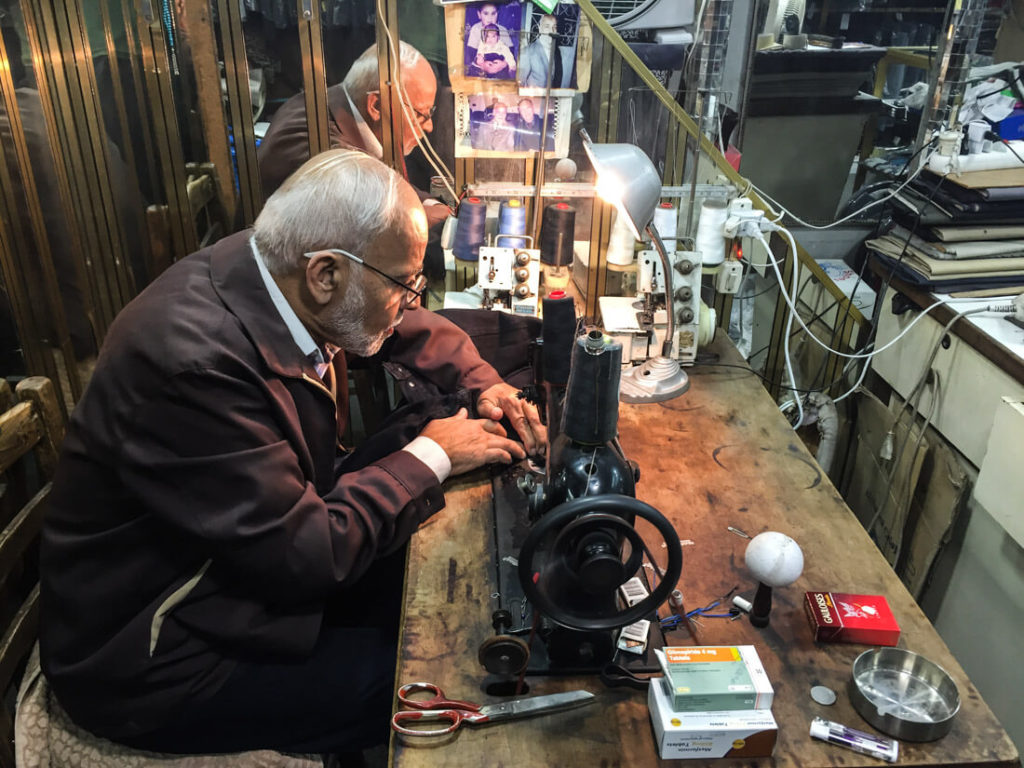
Which language do they speak in Lebanon?
The official language in Lebanon is Arabic.
English is widely spoken in Beirut among well-educated Lebanese, especially in the districts of Hamra and Gemmazyeh.
Outside of Beirut, English is less spoken.
French is also spoken among a tiny part of the Lebanese population.
🍲 Food in Lebanon
Lebanese food is a Mediterranean cuisine with influences from both the Middle East and the French colonial era and, as in Spain, Italy or Greece, olive oil is the base of any dish.
Typically, most restaurants serve mezza , an array of small dishes similar to the Spanish tapas, which includes both vegetarian and non-vegetarian dishes.
From the classic hummus, kibbeh (a local steak tartar), kebabs and syadye (rice, fish, and almonds in a gravy sauce) to a tasty olive oil of the standard of any southern European country and a strong wine culture, Beirut is home to the best food in the entire region.

Read: Iraqi Kurdistan travel guide
🛺 How to move around Lebanon
Everything in Lebanon can be reached in less than 2 or 3 hours.
Except for the northern mountains, where you might need to stay overnight, if you wanted, you can visit the entire country on different day trips from Beirut .
However, in order to enjoy all the places to their fullest, I really recommend spending some nights outside of the capital.
Traveling around Lebanon by public transportation
Lebanon is a very easy country to move around.
There are public buses and mini-vans going to almost every corner in the country from Beirut, where there are 2 main stations named Charles Helou and Cola Station . Charles Helou is ideal for traveling to the north, whereas Cola is to the South.
For more information about these 2 stations, check my Beirut Travel Guide and for more details about how to reach each city in Lebanon, check the Itinerary Section on this post .
Travel around Lebanon by taxi
If you can share the costs with other travelers, traveling by taxi around Lebanon is relatively cheap and pretty convenient, since most places can be reached from Beirut on a day trip.
One easy option would be calling an Uber, but I recommend getting in touch with a local taxi company. One I tried is located in Hamra street . They have fixed rates for going anywhere in Beirut.
Self-driving in Lebanon
You can also rent a car, no problem.
Just be aware, however, that the driving in Lebanon is pretty insane, but definitely not more than in Saudi Arabia , Iraq and any other country in the Middle East .
As per rental car companies, some travelers recommend a local company named Mike Rent a Car , but Hertz or Europcar are also available.

📍 Lebanon travel guide: a 2-week itinerary
Here you will find the best itinerary for Lebanon.
It might be a bit challenging to include all of these places in just 2 weeks but, if you plan ahead, it is totally feasible.
Day 1, 2 – Beirut – The most liberal city in the Middle East
What can I say about Beirut that I haven’t said already?
The Lebanese capital is the most westernized and liberal city in the Middle East (outside of Israel), only comparable to Tehran and a city full of contrasts and owner of deep and interesting history.
Beirut is composed of several neighborhoods, each one with its own subculture, so different from each other that, when you are wandering around them, it looks like you are in a different city, from the hipster neighborhood of Gemmazyeh to Hezbollah areas, Armenian, Christian, refugee camps and fancy districts with the most glamorous stores and the best restaurants in the region.
For more information about Beirut, read my article: A travel guide to Beirut
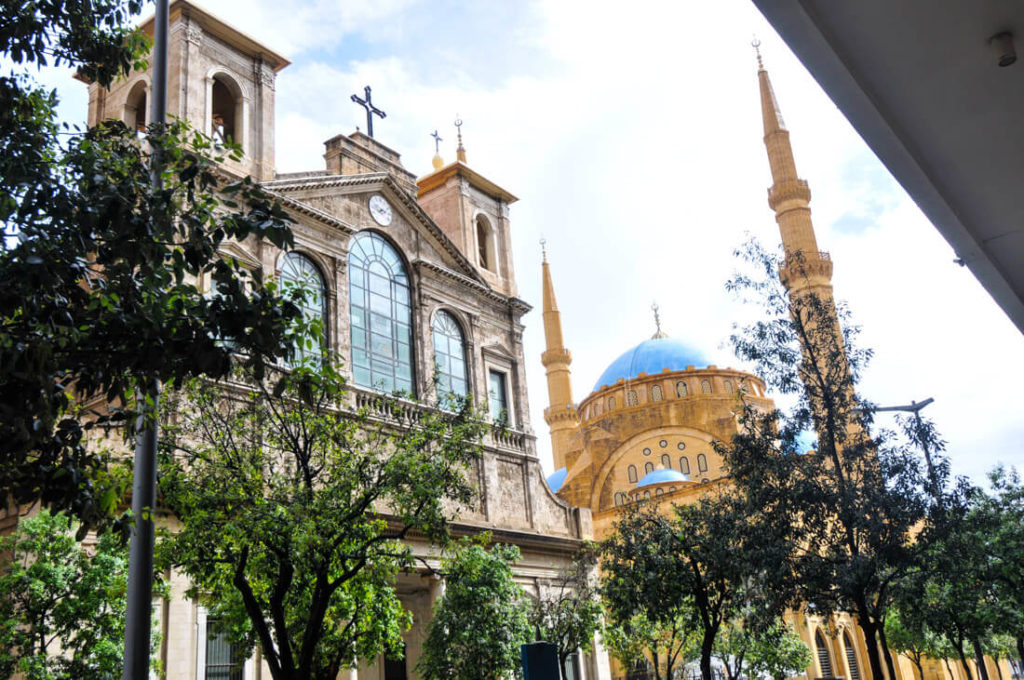
Where to stay in Beirut
Budget Hotel – Embassy Hotel – This is the cheapest hotel in town. The rooms are getting quite old but, at this price, you won’t find anywhere better. The location is great, however, in Hamra, a very cool area to hang out.
Backpacker Hostel – Hamra Urban Gardens – Located in the main Hamra Street. It offers both suite and dorm rooms with a seasonal outdoor pool and bar.
Mid-range Hotel – O Monot Boutique – Strategically located at the heart of Beirut, this property was highly recommended by many because of their amazing facilities especially their rooftop bar with a panoramic view of Beirut.
Top-end Hotel – Radisson Blu Hotel – If you are looking for a comfortable place which has a delightful design, a good restaurant and other various facilities, this 5-star hotel is a perfect choice. Located in Dunes shopping center and 5-minute walk away from the beach.
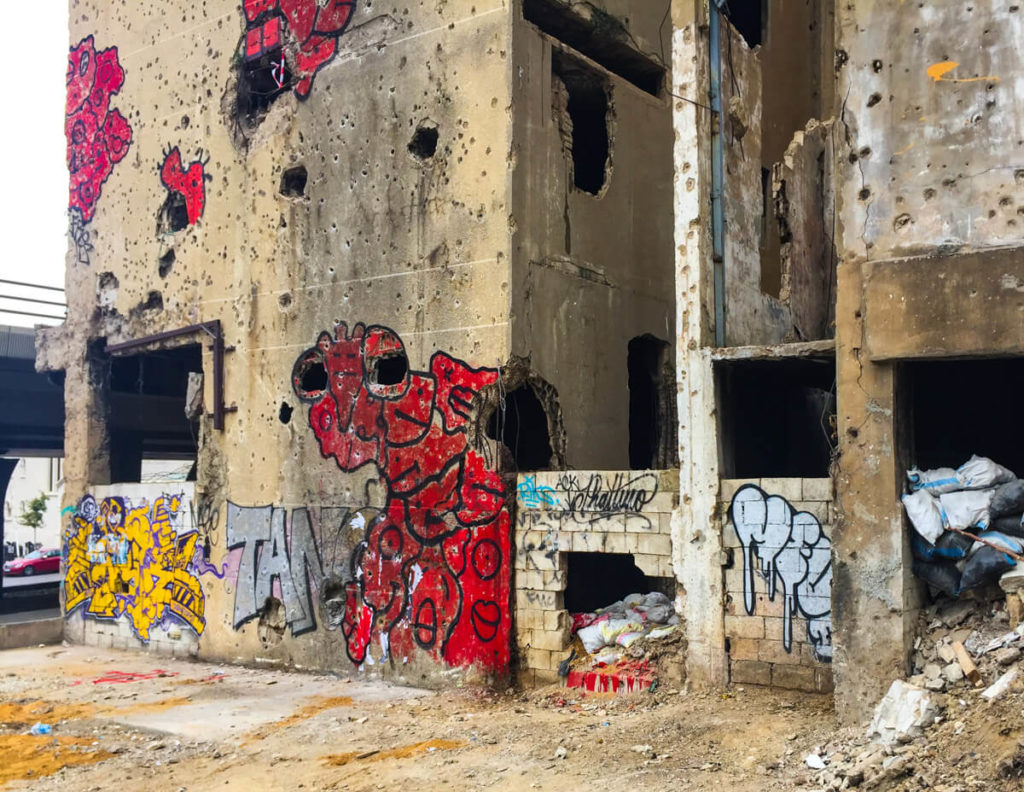
Day 3 – Byblos – The native home of the modern alphabet
With 8,000 years of history, Byblos is considered one of the oldest inhabited cities in the world and the place where the first inscriptions containing the modern western alphabet were found.
Byblos derives from the Greek word bublos , meaning papyrus , as the town was the stopping place for the Phoenicians who shipped papyrus from Egypt .
Besides a super interesting museum that explains the history of the creation of the alphabet, in Byblos you can also visit a crusader castle from the XII century, built by the Franks, a restored souq, a beautiful Mediterranean harbor full of restaurants, where you can eat seafood feasts, and some archeological sites containing mainly Roman ruins but also from many other civilizations, from the Neolithic settlements 8,000 years ago to Phoenician, Egyptian, Greek and Ottoman.
Book a tour to Byblos from Beirut It also includes Jeita & Harissa CLICK HERE TO LEARN MORE
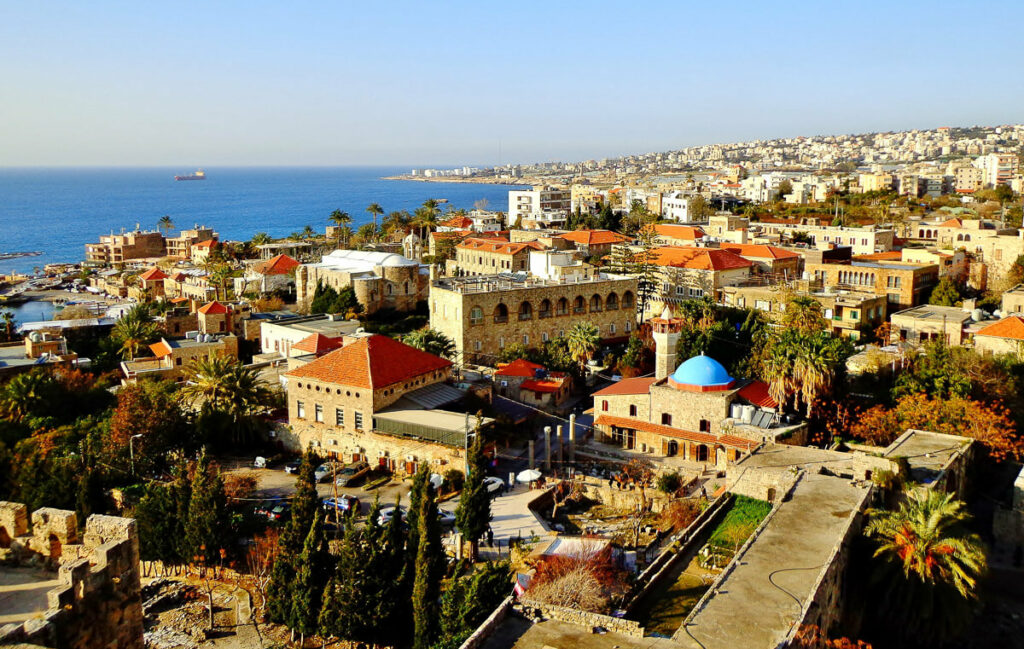
How to get to Byblos from Beirut
Byblos is around 50km from Beirut. Buses depart from Charles Helou station.
Where to stay in Byblos
Byblos can be reached on a day trip from Beirut but, in case you wanna stay here, here’s a few options:
Budget Hotel – Sea Valley – The cheapest hotel in Byblos is a very decent aparthotel.
Mid-range hotel – L’Hotel de mon pere – With stunning panoramic sea views and really awesome breakfast, this super pretty modern hotel serves the best quality in Byblos, at the lowest price. It is really close to the beach and even closer to the Old City of Byblos, so you can’t ask for more!
Top-end hotel – Byblos Sur Mer – This boutique hotel is at the most privileged location in the whole of Byblos, next to the ruins, on the seaside and at the heart of where the exquisite social life in Byblos is, which consists of eating at the seafood fancy restaurants that compose the harbor.

Day 4 – Zahlé – The face of Lebanon you didn’t know about
What I loved about Zahlé was that, even though it is a Lebanese city located in the heart of the Bekaa Valley, it is more similar to the villages of Mediterranean Europe than to Lebanon itself, as this city, with a Christian majority, is famous for its wineries and for its restaurants, serving the best mezza in the whole country.
In Zahlé, you can’t miss Berdawini , located just outside of the city, a green area with a river flowing, plenty of high-quality restaurants, slightly pricey for my taste but delicious.
When I went there, it was not only full of Lebanese people from the middle-upper class but also, there were plenty of Western diplomats escaping from Beirut for the weekend.
I also recommend you go to Ksara Winery , the oldest and most famous winery in the whole country.
I always prefer visiting small, traditional wineries, rather than big corporations (check my Kakheti travel guide ) but I have to admit that the wine I tasted here was excellent. Their tour was OK but there wasn’t any need to book it in advance.
Book a wine tour from Beirut which includes 3 different wineries in the Beqaa Valley CLICK HERE TO LEARN MORE

How to get to Zahlé from Beirut
Zahlé is on the way to Baalbek, so you should first take a bus to a town named Chtoura. From there, you can get on a second bus to Zahlé.
I got it at Cola Station but there may be a direct bus from Charles Helou station.
Where to stay in Zahlé
There is no cheap accommodation in Zahlé: the most budget accommodation starts at 70USD, so if you are on a budget, you should spend the night in Baalbek or go back to Beirut.
Mid-range Apartment Hotel – Berdawni Apartments – This apartment-hotel is nothing outstanding but it really fulfills its function, with very comfy beds and the best location, right next to Berdwani river, the highlight in town. It is a good value money for money option and, in any case, you won’t find anything cheaper!
Top-end Hotel – La Place Hotel – Located in the old part of town, people love this hotel because it manages to combine the old and traditional with very modern facilities and exquisite decoration. The breakfast is great and they have the purest and kindest Middle Eastern service.
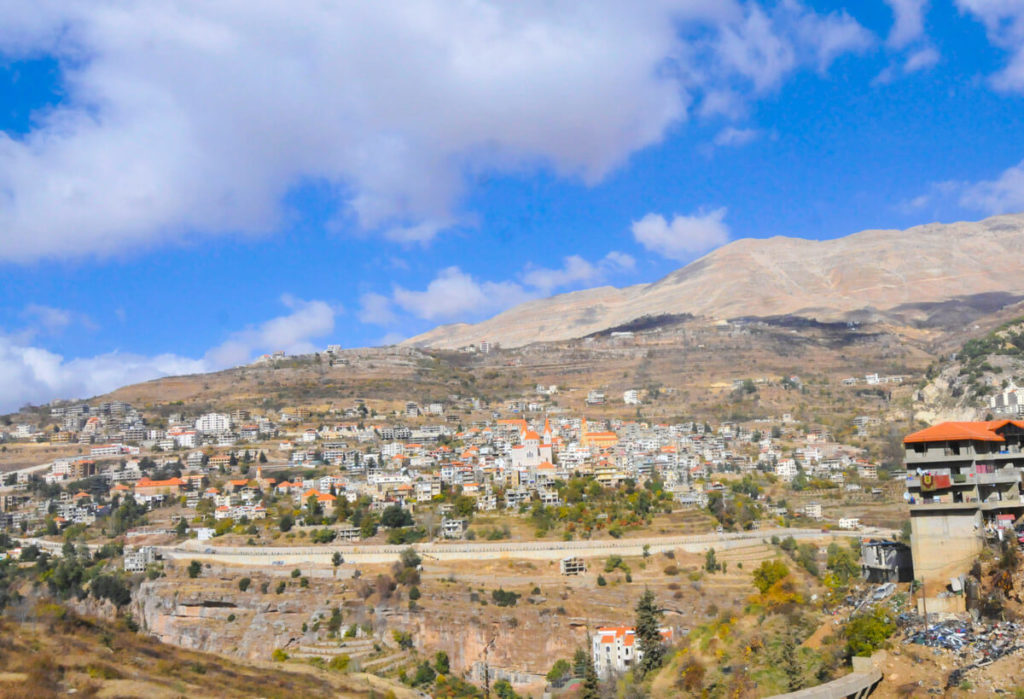
Day 5 – Baalbek – The most impressive and off-the-beaten-track Roman ruins
Lebanon travel tip – Pay the entrance ticket in Lebanese Pounds (LBP), not in USD, since they will give you the official bank rate, meaning that you’ll pay no more than 1 dollar to enter the site. Before the crisis, the entrance fee was $15
Visiting Baalbek is one of the best things to do in Lebanon, a city that has some impressive Roman ruins, built on a giant scale and often considered the most important in the Middle East and, controversially, one of the least visited off-the-beaten track Roman ruins in the world, even lesser visited than Palmyra in Syria , which used to receive hundreds of thousands of visitors before the war.
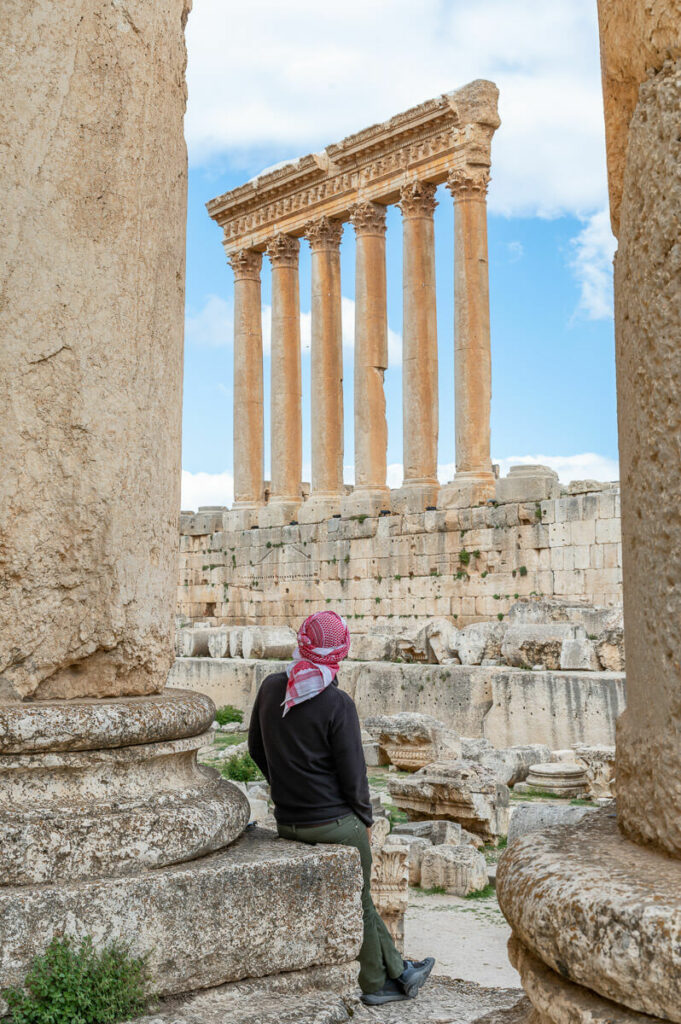
The temple of Jupiter and the temple of Bacchus are the buildings that dominate this stunning architectural masterpiece.
Seriously, these Roman ruins are just outstanding and, when I went there, I had the ruins completely to myself.
Book a tour to Baalbek from Beirut the easiest way to visit the site with no hassle CLICK HERE TO LEARN MORE
How to get to Baalbek from Beirut
Baalbek is 90km from Beirut.
From Cola Station, there are buses going to Chtoura, situated half-way, a town from where you should take a second bus to Baalbek.
Where to stay in Baalbek
Even though you can visit Baalbek on a day trip, I strongly recommend spending one night there to see the ruins at sunset time.
Budget Hotel – Jammal Hotel – This is the most budget hotel in Baalbek but you can’t book it online. It is OK for 1 night.
Mid-Range Hotel – Palmyra Hotel – This is, perhaps, the most famous hotel in the country and the reason is that it has never been closed since it was opened in 1874. it has hosted famous people such as Nina Simeone and the President of France It is also located next to the Roman ruins. I personally think the hotel is absolutely overpriced, since there hasn’t been any renovation for decades.
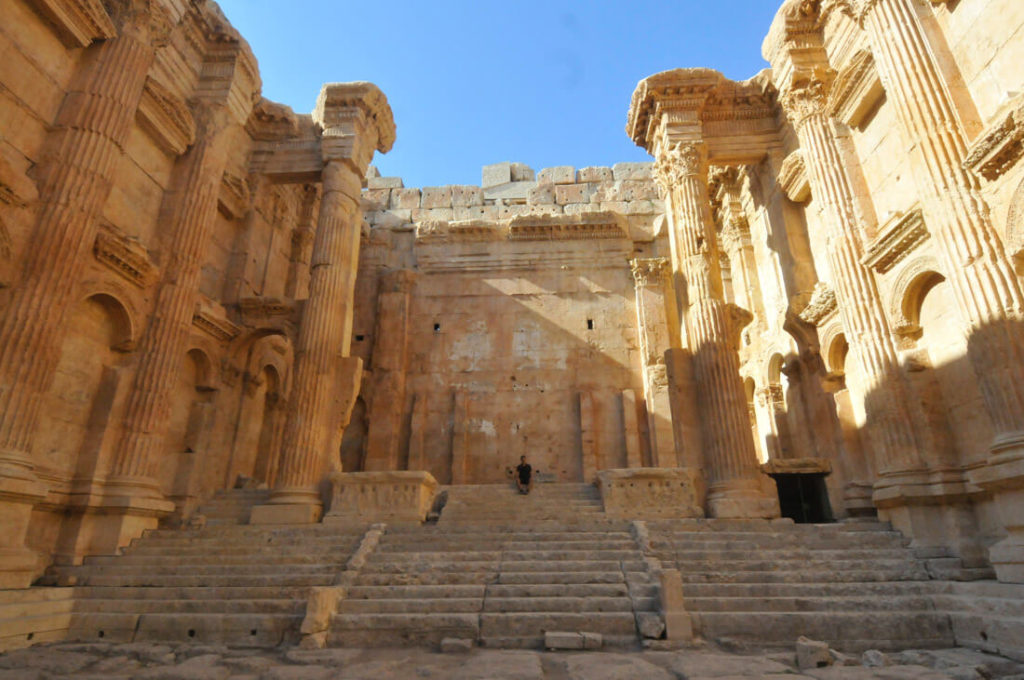
Day 6 – Tripoli – The most traditional Lebanese city
Tripoli is the second biggest Lebanese city, a city that would probably fit in what you think are the Lebanese standards, with its beautiful old souq of spices, ancient medieval architecture, and a citadel from where you get fantastic views of the city.
In Tripoli, a city famous for its sweets, live the Lebanese people who have the famous Arabic hospitality, as it’s impossible to be wandering the streets, kind of lost, without several locals offering you their help.
This is a city to get lost in around its narrow alleys and an old city belonging to the XIV century.
Furthermore, you can’t miss the fortress of Raymond de Saint Gilles, built in the XI century and the lovely neighborhood around the harbor.
By the way, you probably heard that the U.S. Embassy describes Tripoli as a dangerous city to travel to. Why is that so? Since the Civil War, there have been one-off clashes between Sunni and Alawi Muslims who reside in the neighborhoods of Bab al-Tabbaneh and Jebel Mohsen, respectively. Throughout the years, these clashes have killed several people.
This is a one-off conflict happening in a specific area, far away from the city center. It’s a fight between two small districts and doesn’t go beyond.
The rest of the city is totally cool and safe. However, since I’m an extremely curious human being, I also went to Jebel Mohsen . And what can I say? Life there was merely normal. Again, clashes and bombings happen once a year, not more.

How to get to Tripoli from Beirut
Located 80km, there are buses leaving from Cola Station continuously, as well from Charles Helou.
Where to stay in Tripoli
There are very few options in Tripoli but these would be the most popular:
Budget Guest House – Haddad Hotel– The facilities and rooms are very old but the staff is a lovely family that will give you a very charming welcome and a great, traditional breakfast. With an awesome location, close to the old city, this is the best place for budget travelers and backpackers. Online booking not available.
Mid-range Hotel – Via Mina Hotel – Being the top rated hotel in Tripoli, Via Mina has a kind of rustic style but with very modern facilities at the same time. It is located right in front of the sea, has a great pool and the staff will bless you with great hospitality.
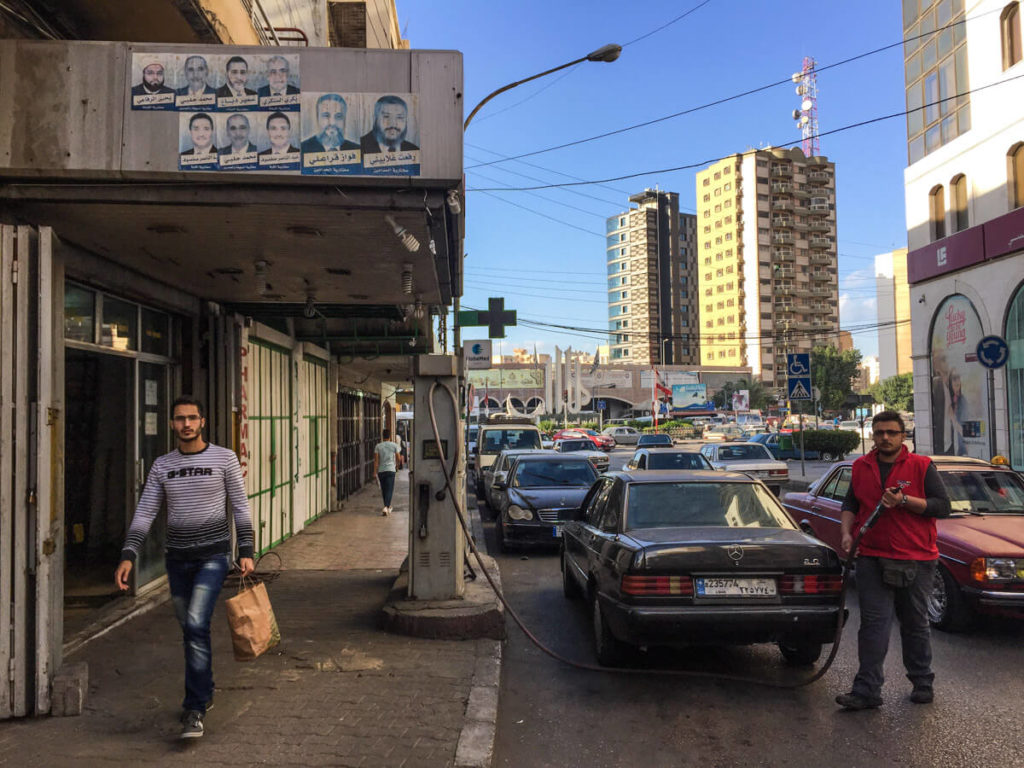
Day 9, 10 – Kadisha Valley – Lovely Christian mountain villages
If you either want just to relax, eat good food, visit beautiful Christian monasteries or to go hiking, the Kadisha Valley in Lebanon will always be the perfect place for you.
Kadisha means ”holy” and owes this name to the fact that this valley is home to some of the most ancient communities of monastic Christians in the Middle East.
In case you don’t know, monasticism is a way of life for which the person (in this case Christian monks) renounces everything to devote himself completely to spiritual work.
The valley is full of natural caves, difficult to access, that once served as places of isolation for the monks living lives devoted to Christ.

How to get to Kadisha from Tripoli (or Beirut)
If you come from Beirut, you will have to go to Tripoli first.
Once in Tripoli, there are buses leaving from 9am to a small village named Bsharri, which is a great base to explore the rest of the valley. For coming back, the last one is at 4:30pm.
Where to stay in Kadisha Valley (Bsharri)
Kadisha is one of those places where you really should spend one night at least, especially if you come by public transportation. Otherwise, you will just have 1 hour to explore it entirely.
Budget Guest House – Tiger Guest House – This is an ideal place for budget backpackers and, basically, the only cheap accommodation in town. Everything is very simple but the family is lovely and very helpful.
Mid-range Hotel – Bauhaus Chalets Apartment – Breathtaking views, a very accommodating owner, and pretty modern facilities, this hotel is pretty good, given the low range offer in Bsharri.

Day 11 – Sayda and Mleeta – Hezbollah territory
Sayda is a small city located 40km from Beirut. Slightly conservative, Sayda is a nice place to visit on a day trip, wandering around its labyrinthine, covered souq, full of cafés where the Lebanese are sitting outside, looking with expectation at the few foreigners that pass by.
Perhaps, the most iconic building in the city is the castle, built in the XII century, located on a tiny island just 80m from the shore, whose walls turn into a beautiful orange during the sunset.
Mleeta, the Museum of Hezbollah
A fantastic day trip from either Beirut or Sayda is visiting the Mleeta Museum, aka the Hezbollah Resistance Museum .
Hezbollah is a Shia militia and armed group created in Lebanon during the war against Israel.
They don’t like to be called militia, however, but they consider themselves a resistance organization against a common enemy named Israel.
The area around Mleeta was their headquarters and stronghold during the war and today, they have built an amazing museum where you can visit the underground tunnels they used to hide in, as well as some captured Israeli tanks and artillery.
The museum only costs a few $ and it includes a guided tour with a member of the militia.
While it’s true that his explanations are pure propaganda, the guides are open to absolutely any question, and they are actually very pleasant people. A must-see.
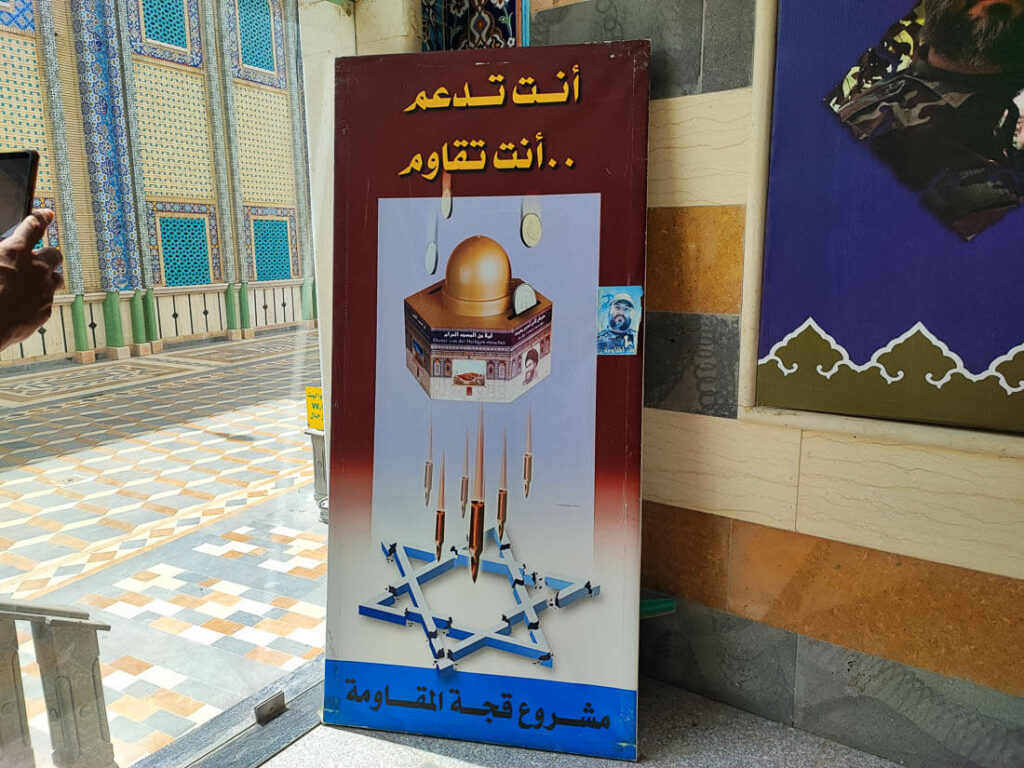
How to get to Sayda from Beirut
To get to the south of Lebanon, Cola Station is the best and only option.
Where to stay in Sayda
Sayda isn’t famous for its accommodation. To be honest, I didn’t stay here but came on a day trip from Beirut. In any case, if you plan to stay here, these are the most feasible options:
Budget / Mid-range Hotel – Yacoub Hotel – A very old hotel from 1920, Yacoub is located very close to the old city and the beach, the main city’s tourist attractions. However, many people have complained about cleanliness, especially because it is not a cheap hotel for what you get.
Mid-range Hotel – Al Qualaa Boutique Hotel – This boutique hotel isn’t bad but, for what you pay, the experience should be way better. The location is unbeatable, next to Sayda Old Fort and, overall, it is in a very cute building and the breakfast is just great. However, people complain about small details, like power cuts, the shower was not working and a large etcetera.
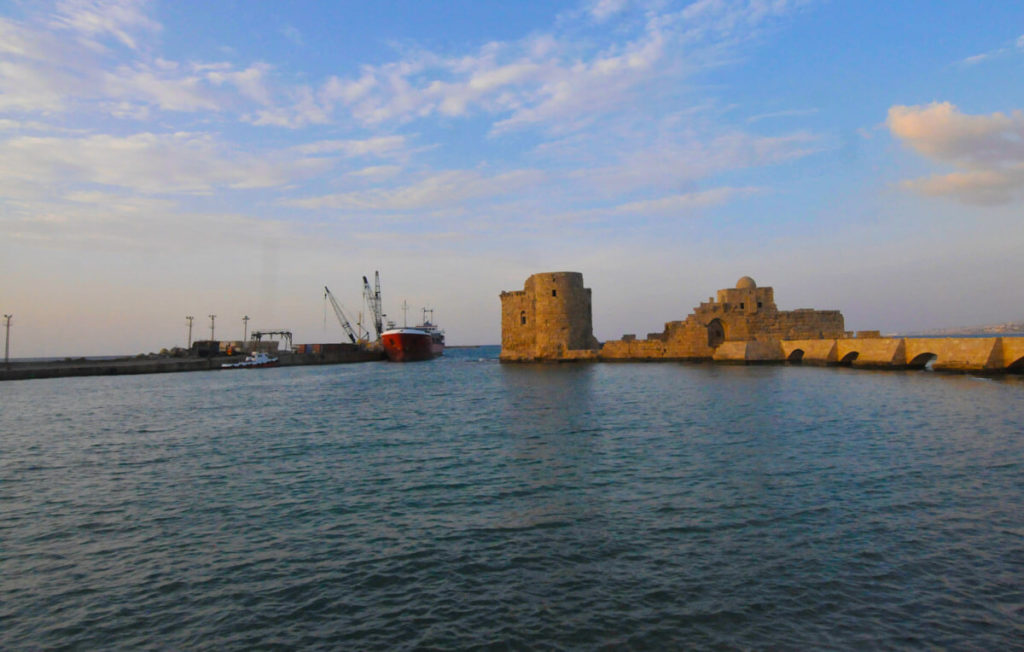
Day 12 – Tyre – Your beach destination in Lebanon
The most southern city in Lebanon, Tyre brags about being the place where you find the best beaches in the country.
In summer, every day, tons of Lebanese come from Beirut to spend the day and chill at its beaches and eat awesome seafood at the many restaurants that are found around the harbor.
In Tyre, you also find a castle, Roman ruins, a corniche, and a beautiful and colorful harbor, full of seafood restaurants.
How to get to Tyre from Beirut
Tyre is 90 kilometers from Beirut and buses leave from Cola Station.
However, you should first take a bus to Sayda and, from there, take the second one to Tyre.

Where to stay in Tyre
In Tyre, accommodation is super expensive. I didn’t stay there but, if you are a beach lover and you can afford it, this is the most popular hotel:
Mid-range Hotel – Asamina Boutique Hotel – Tastefully furnished and with really cozy rooms and comfortable beds and located in the old city, very close to the sea, this is one of the best boutique hotels in the country. They serve an amazing traditional breakfast, with really fresh products and the staff are just extremely accommodating. I think this is the best option in Tyre, better than any of the other resorts, which kind of lack of personality and authenticity.

Day 13 – Go off-beat – The wall that separates Lebanon from Israel
Both Lebanon and Israel have been in continuous war for several decades and, today, diplomatic relations between both countries don’t exist, since they still consider each other to be enemies. This is one of the most sensitive borders in the world.
These two Middle Eastern countries share a 79-kilometer border. For the most part, it is unreachable, as it’s located too far from the road. But I was told that there’s one area where you can actually get close to it. I liked the idea pretty much, so I decided to go there.
Visiting it is an adventure, as the whole area is full of military facilities and soldiers from the United Nations, who are guarding the border.
You need to be very cautious when visiting it. I was there by myself, with a camera, and I got arrested. If you wanna read my full story, check out this article: The day I was accused of being an Islamic State spy .
Please note that this is a Hezbollah area, which means that a permit is required . It’s very easy to obtain and you can get it at the police station in the city of Sayda.
They give it to you instantly but remember that a permit makes you eligible to enter the area and it doesn’t mean that you can take pictures or walk freely along the wall.
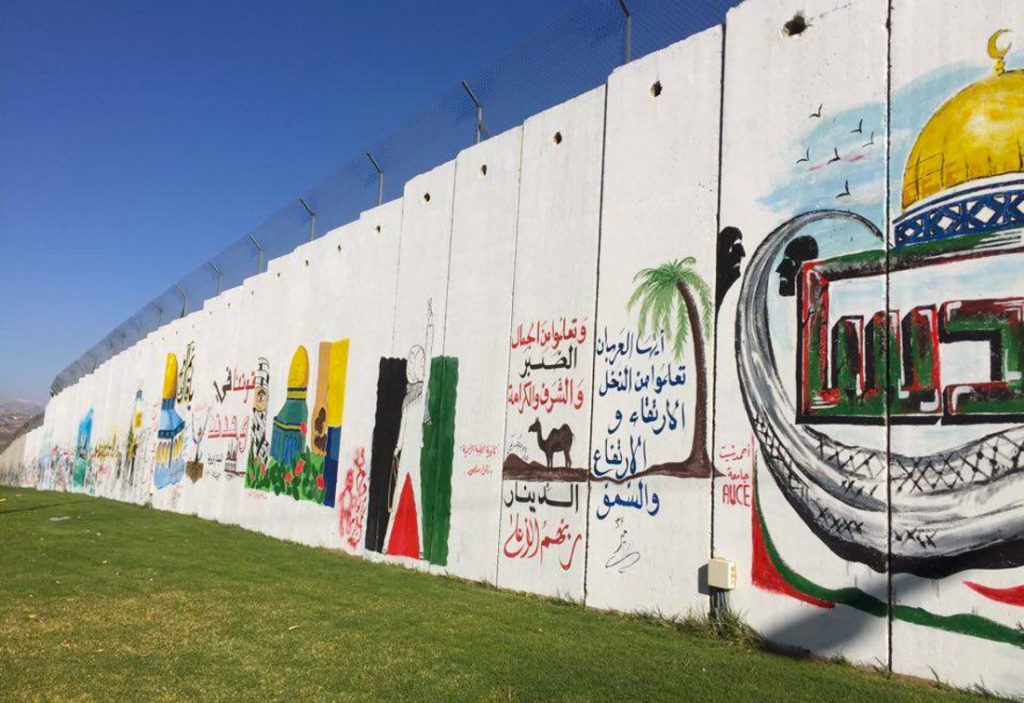
How to get to the Wall from Beirut
Be aware that it is not recommended to get there by public transportation, as you will trigger the suspicion of the Hezbollah Army.
It is not about walking around the wall but just that tourists never go there, so seeing a dude wandering there by himself is kind of weird, according to their eyes.
As I said, I got arrested when I was there but, in part, it was because I had a camera hanging from my shoulder.
Going there on your is your own responsibility but, if you decide to go, here’s how to get there by public transportation.
From Beirut, go to Cola Station and take a bus to Sayda. From Sayda, take a bus to Nabatiyeh. In Nabatiyeh, you need to take a shared taxi towards Kfarkela. You have to drop off as soon as you see the wall. Please note that you may have to wait for over an hour for the taxi to be completely full.
❗ More information to complement your Lebanon itinerary
📢 In my Travel Resources Page you can find the list of all the sites and services I use to book hotels, tours, travel insurance and more.
All guides and articles for traveling in Lebanon destination
- Beirut Travel Guide
- Solo Female Travel Guide in Lebanon
- The day I was accused of being an Islamic State spy
- Is Lebanon Safe
Travel guides to other countries in the Middle East
- Iran Travel Guide
- Iraq Travel Guide
- Travel Guide to Oman
- Travel Guide to Saudi Arabia
- Syria Travel Guide
- Palestine Travel Guide
- Yemen Travel Guide
You will also be interested in: Where in the Middle East is safe? and The most beautiful places in the Middle East .

58 comments
Wow, Lebanon looks beautiful! I like the mix of elements it seems to have based on your photos. I’ve always been a fan of the food too 😉
Hey Shannon, thanks for your comment. It’s a very underrated country and, the mix of elements you say, is what makes the country great ;9 ª
I am Lebanese!!! And i’m so happy you enjoyed your trip to Lebanon
Really? That’s awesome! It’s one of my favorite countries 🙂 !
I’m so glad I just stumbled on your blog. I am a Syrian/Lebanese American traveling to Lebanon for the first time in a few days. I have family in a village east of Tripoli named Aalma, I have yet to locate them but I do know that is where my family came from before migrating to the US. I will be spending a week traveling across Lebanon, a journey I have dreamt of for a long time coming.
Not to keep you for too long but I wanted to thank you for shedding light on Lebanon. A country which is mistakenly given a bad reputation due to strict travel warnings from my government.
Hey man! That’s amazing that you are going on a trip to Lebanon to know more about where your family comes from. Are you going to stay with some relatives? Please, do let me know if I can help you with anything. Cheers,
Hey, do you think I can show up at the cheap hotels in Tripoli and Baalbek and there will be a room available? By the way when you speak about Zahlé you say it’s called Berdawini but it’s Berdawni.
Hard to say, man. I went during low season and one of the hotels in Baalbek was fully booked… If there’s the option, I would book in advance!
Wanting to travel to Lebanon do many people speak English? Do I need a guide? If so what’s the charge. And where is the airport? Close to what country
Hi Linda. Most educated people speak English. You don’t necessarily need a guide, it’s up to you. The airport is in Beirut.
Amazing Joan. What a special place.
Is it possible to arrive by boat from Cyprus? And how much is a visa?
Yes, it’s possible and visa is free
Hey i am planning a one week Lebanon. Is it possible to cover all the famous destinations within one week?
Hi, maybe you could cover Beirut, Baalbek, Byblos and Tripoli, yes, why not.
Can all these be done as day trips? The hotel in Tripoli is expensive.
hi, do you think having my wedding in LEBANON (BERUIT) is a good idea/
Sure, why not 🙂 ?
Hello there,
Your blog about Lebanon is really great ! My parents are lebanese and Im going there for the 1st time this summer. I really liked your itinerary. I was wondering if we needed a private driver to go from one place to another when we leave Beirut, since there isn’t really public transportations outside of Beirut. For example, I want to visit the cedars, and I would also like to go from byblos to Baalbek. Cheers!
Hello! There is public transportation all over the country, you don’t need to worry about anything. Only to the cedars, you may need to hire a taxi, including the taxi. In the article itself I give plenty of transportation tips, like how to get from each city to the other
Hey Joan Thanks for your blog! I enjoyed reading it. I’m going to Lebanon for eight days, so far I plan to stay in Beirut for three nights, nearby Chouwen lake for two nights and then to Byblos and/or Tripoli. Do you think I’m trying to cram too much in? I’d love to hear any thoughts you might have on that plan. Thanks
Hi Madeline, 8 days is good enough for what you want to visit and I think you can even visit both Byblos and Tripoli, spending 1 night in each.
we are looking for a great in -Lebanon travel organiser to essentially fix all elements of our trip for us. Maybe not the flight from the UK but everything else. 8-10 days. Can you recommend either the best local company for that or even one based here in the UK looking to come in either May or October.
Many thanks for this blog.
Hi Keith, I don’t know about any specific travel agency for Lebanon, sorry. I did everything independently
Fab information! Do you know if having a Lebanese stamp in your passport will stop you from entering any countries – and if so, which?
Thanks! Emily
Hey Emily, no, it won’t stop you from going anywhere. Please, refer to this for more information: https://againstthecompass.com/en/avoid-israeli-passport-stamp/
Hi there, I enjoyed reading your blog. We’re going to Lebanon from the UK for two weeks in October. We’re planning on spending a week in Beirut, and maybe three nights in Byblos and Batroun. Does this seem a good way to divide our time? Thanks!
Hi Ellbin, it’s all right, but try to save one day for going to Baalbek at least!
Hi Joan, Just a few questions as you seem pretty familiar with the middle east. Will it be an issue entering Israel with visas from Sudan, Kurdistan and Syria? Am planning a trip to cover Lebanon, Israel and Jordan early next year and am considering adding on Kurdistan or Syria. Any ideas on itineraries. Will have to do at least one flight from Kurdistan and also from Lebanon to Jordan if not crossing through Syria.
Hi Melody! I suggest you check out this post 🙂 https://againstthecompass.com/en/avoid-israeli-passport-stamp/
Hi! I just booked my tickets to go to Lebanon in September. I’ll stay there for 2 weeks! I’ll spend about one week in Beirut (visiting some places from there), and then I’ll explore the Q. Valley and do lots of hiking. Thanks SO much for this information, it’s been very helpful! I also love the Middle East. I’m getting ready to go to Israel (second time) with my kids :). We’ll spend more time in the North this time. Blessings!!!
Thank you, Laura, have a great time in Lebanon!
Hi Joan, I read your blog and a couple of others and booked a trip to Lebanon a couple of months ago and was really exited. However, I have just read that if you have the exit stamp into Jordan on your passport you won’t get passed border control (even when flying from the UK) in Beirut. We went to Israel and Jordan in 2018 so I have the entry, exist and “residence for one month” stamps in my passport. Do I need to cancel my trip? We are due to leave on Sunday so I’m not really concerned we won’t be able to go. Thanks, Alex
P.S. I have already read your blog “avoid Israeli stamp” but there was only one stamp on the passport photo in this blog. We have two which I assume is entry and exit as we left and then returned to Israel. Surely these would be the stamps you would get if you entered and exited the country from anywhere?
Where did you enter and exit from, via airport or by land?
Hi Alex, a Jordanian stamp is fine but you won’t get into Lebanon with an Israeli stamp. Just change your passport, report it lost or something, probably cheaper than cancelling your trip.
Hi, please advise if it is still safe to go to Tripoli, I supposed to meet my engaged and get married there next month…I will wait for him at Beirut airport and then go to tripoli….
Yes, Tripoli is very safe
I’ve been to Lebanon a year ago and agree with most of what is said, except for food and accommodation because I was hidted by locals.
Naqoura and the very South are a gem undisturbed by big hotel complexes. A permit us indeed needed but not because it’s un Hezbollah territory but because it’s UNIFIL zone. You do have to get it in Salida but it takes a while and the process is quite opaque. Plan in advance if you can
Sorry about the typos, I should have read before posting.But I guess the text can be understood. And it’s Saida, not Salida, of course
Dear Joan, Thank you for your excellent information on Lebanon. A remark and a question: – The text of LEBANON TRAVEL GUIDE: A 2-WEEK ITINERARY appears only in Spanish (English flag not working) – Is it OK to get visum at Beirut Airport if passport contains stamp from Iran? Thanks.
Thanks for telling me, I really appreciate it. It’s been fixed now 🙂
Yes, no problem to enter Lebanon if you have an Iranian visa or stamp.
Hello Joan, This is a request that I take the liberty to put on your blog. As part of a master class in photojournalism with the National Geographic magazine I am looking for a ‘story’ in Beirut. For this I need to find a local guide to ‘develop’ this story. To show me around Beirut, make the contacts etc. Not so much the tourist sites but the life itself, after the explosion. I would be very grateful for your suggestions.
Thanks for the info. As of Oct. 29, a Covid test is no longer required.
Many thanks for an excellent blog post! Great to know about bringing currency to exchange before visiting Lebanon. I am visiting Lebanon for the first time in May for two weeks. I intend on booking a hostel online in Beirut to base myself for day trips for the first week and then go hiking around Kadisha Valley and spending time around Baalbek before flying onwards.
My question is – approximately how much $US/day would you recommend bringing over with you? I plan on staying in hostels/budget hotel, using public transport where possible and doing a bit of solo hiking. Just wanted to know a ballpark figure so that I don’t find myself short and have to use my debit or credit card and deal with the terrible exchange rate offered by the banks.
Hi Sam! I think you need around $50 a day, so I’d bring the equivalent of 70 a day, just in case! But it’s always hard to say. There are so many restaurants and night bars in Beirut, so you also need to think about that!
I was thinking about this itinerary, private tour, two people, hotel 3/4 only breakfast, if is possible italian speaking guide: 1 arrival beirut 2 beirut 3 Jeita Grottoes – Harissa – Byblos 4 Tripoli-Ehden 5 Valley of the Cedars – Baalbek -Zahle 6 Anjar – Beittedine – Deir al Qamar 7 Tire – Sidon 8 Beirut – Italy Greetings. Ilario giacometti
Thank you so much for this fantastic post! I was wondering how late are the last buses from places like Byblos and Baalbek since most of the hotels are expensive/booked out? Thanks again for making such a great page!!!
Hi Dhruv, I am not entirely sure, maybe around 7pm?
Hola Joan. Gracias por tu gran e interesante y profesional información de tu blog. De todos los países que visitas En cuanto a Líbano.. no es conveniente llevar euros? Se usa más dolares? Gracias
Hola Poli, en general, puedes cambiar de euros a libras libanesas sin problema alguno.
Sin embargo, hay hoteles que solo aceptan pago en efectivo y en dólares.
Lo que resulta mejor es llevarlo todo en euros y para el hotel, cambiarlos allí mismo a dólares. La tasa que ofrecen es mucho mejor que si compras dólares en Europa.
Lo que yo hago es llevar todo en euros, y lo cambio todo a libras o a dólares.
Hi, I´ve seen some comments and foregin governments advising not to go to Baleek. Is there any threat of doing this? Seems like a very touristic place. Going to Lebanon in october.
Hi Simon, it’s fine, it’s just that in that region there’s been local issues related to drug trafficking
Hi this is an awesome resource thanks so much for putting it together. Just wondering what the weather is like in October ( first couple of weeks). Want to go when it’s hot. Thanks
October is autumn, not super hot but pleasant
Hi, Do you still recommend going to Lebanon in March?
Beirut and more north than that should be fine to travel
Leave a Comment Cancel reply
Your email address will not be published. Required fields are marked *
Notify me when new comments are added.
Join our Expeditions
From Syria to Iraq in Pakistan, Against the Compass is finally running expeditions to the most epic and off-the-beaten-track countries.
We have scheduled expeditions for every month of the year.
Latest posts
- How to Travel to Libya in 2024
- Backpacking Venezuela Travel Guide (2024)
- How to travel to Afghanistan during Taliban rule (2024)
- How to visit Los Llanos in Venezuela
- How to visit Angel Falls and Canaima National Park
- Work With Me

- Sierra Leone
- South Africa
- United States
- New Zealand
- Falkland Islands
- Netherlands
- Accommodation
- Electrical Gear
- Essential Gear
- Working Abroad
- Blogging Resources
LEBANON , Middle East
Complete lebanon itinerary: 1 week, all the highlights.
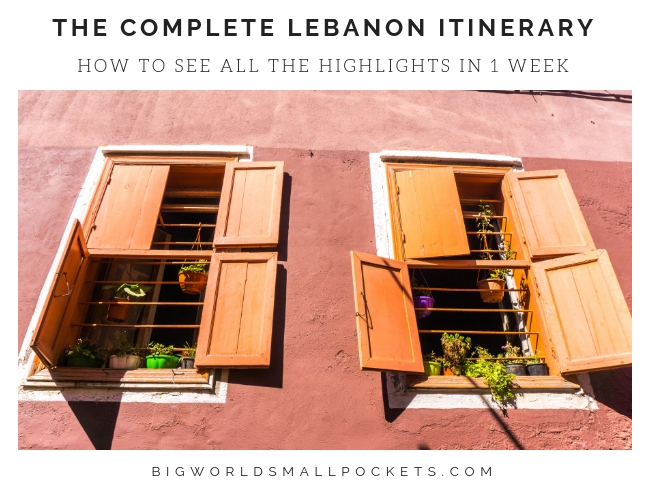
One of the beautiful things about travelling in Lebanon is, of course, the country’s outstanding beauty!
Another beautiful thing about travelling in Lebanon, is the country’s wonderfully compact size.
For Lebanon is small – tiny in fact – which makes seeing a lot of it, or at least the touristic highlights, more than possible within a short timeframe.
Because most travellers don’t realise just how beautiful Lebanon is, they sadly come to this country with a very limited amount of time to explore it.
And so, with that in mind, here is my complete Lebanon itinerary – a one-stop guide to seeing the best of this country in just 7 days.
I’ve actually given you 2 options in this article – the first works best if you want to base yourself in Beirut and simply day trip from there, while the second provides a complete circuit road trip if you plan to hire a vehicle in Lebanon.
Related Posts
- Complete Lebanon Packing List
- Travelling Lebanon? 25 Things You Need to Know
- Solo Female Travel in the Middle East – What to Expect!
This page contains affiliate links meaning Big World Small Pockets may receive a small commission on any purchases at no extra cost to you.
Lebanon Itinerary: Option A
Base yourself in beirut & day trip.
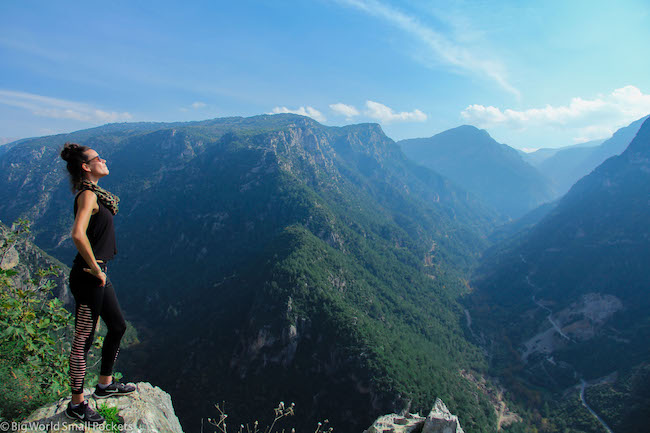
Day 1: Beirut Day 2: Jeita Grotto & Harissa Day 3: Cedars & Qadisha Valley Day 4: Tyre / Sour Day 5: Tripoli Day 6: Byblos & Batroun Day 7: Baalbeck & Beqaa Valley Keep Scrolling for All the Details…
Day 1: Beirut
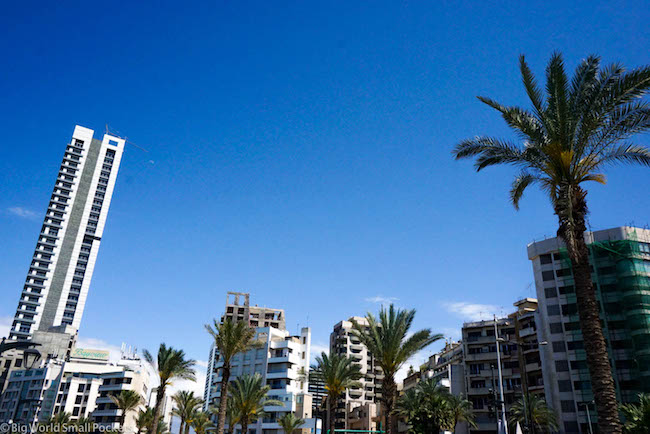
Allow at least one full day to explore Lebanon’s wonderful capital city.
Hugely diverse and throbbing with a youthful vibrancy and energy, it makes a great introduction to this enchanting country.
While simply wandering the streets of the city is a good way to take everything in, there are several highlight attractions I’d recommend visiting too – these include the National Museum, Sursock Museum and Beit Beirut.
Wandering the glitzy Corniche area is also a must, as well as heading to The Pigeon Rocks to enjoy the incredible sunset views.
If you’d like to stay in this area of Beirut, the Hamra Urban Gardens offer good dorm beds and a welcoming, clean space.
Otherwise, the Gemmayzeh area of Beirut provides hipster cafes and galleries a go-go and nearby Mar Mikael is full of fun bars to hop between almost any night of the week.
And when it comes to staying in the heart of the action, look no further than popular choice – Hostel Beirut .
With a top location, a guest kitchen and some of the best-priced dorm beds in the city, this is a good spot to meet other travellers while you chill on the roof terrace.
Day 2: Jeita Grotto and Harissa
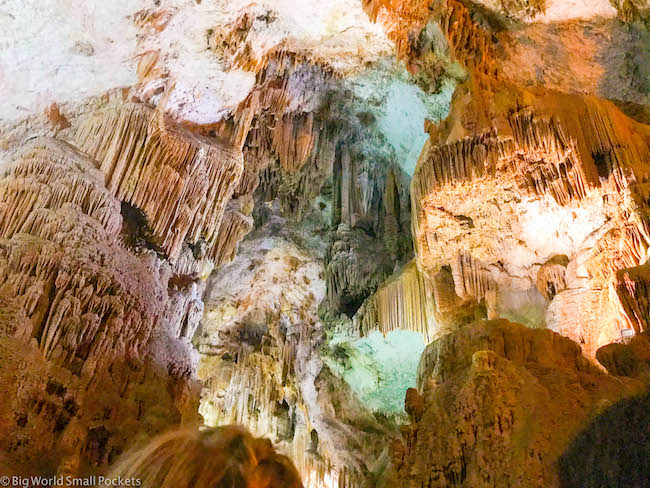
On Day 2 of your 1 week Lebanon itinerary, it’s time to head north of out Beirut to explore one of the country’s greatest natural wonders – Jeita Grotto.
An amazing underground network of seriously impressive caves, it’s easy to spend a few hours here – with a short documentary film, short cable ride and boat ride all included in the fun.
Probably the easiest way to get to Jeita Grotto from Beirut is using Uber and you can then use this app again to get you from the caves to the cable car that will whisk you up to Harissa.
Once there grab your camera and prepare to be amazed by the view!
Jeita Grotto and Harissa make for a short day trip, so set off early in the morning and you can be back in Beirut during the afternoon to explore the parts of the city you missed on day 1.
DISCOVER MORE: 10 Best FREE Things to do in Beirut
Day 3: Cedars & Qadisha Valley
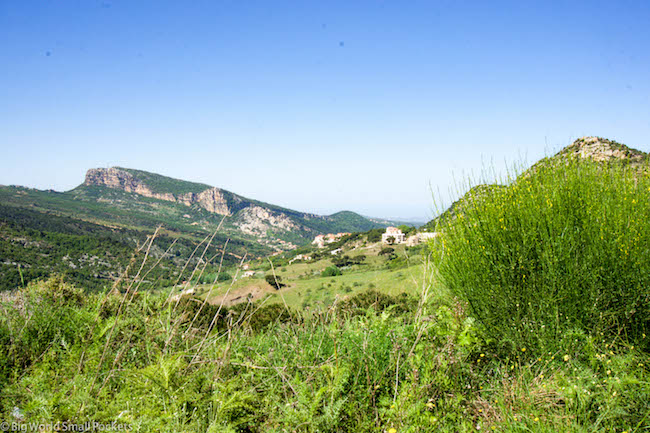
Heading up to the north of Lebanon on day 3 of your itinerary is an absolute treat and will provide you with some of the most scenic views in the whole of this scenic country!
A spiritual place for the Maronite Christians, the Qadisha Valley is chock full of ancient monasteries to discover and hikes to enjoy.
Heading on from here to the famous Cedar Reserve will give you yet more opportunities for hiking and a chance to enjoy the fresh alpine air as you ascend the mountain.
Depending on the time of year you visit, you may even have the option to ski in the Cedar Reserve or, at the very least, enjoy the views of the surrounding snow-capped mountains.
Either way, ensure you come appropriately dressed!
I visited both the Cedars, the Qadisha Valley, Bcharre and the Monastery of Kozahya as part of an amazing day trip with Explore Lebanon, who I highly recommend for their professionalism, flexibility and great customer service. Check out their website here .
DISCOVER MORE: Discovering Lebanon’s Cedars with Explore Lebanon Tours
Day 4: Tyre / Sour
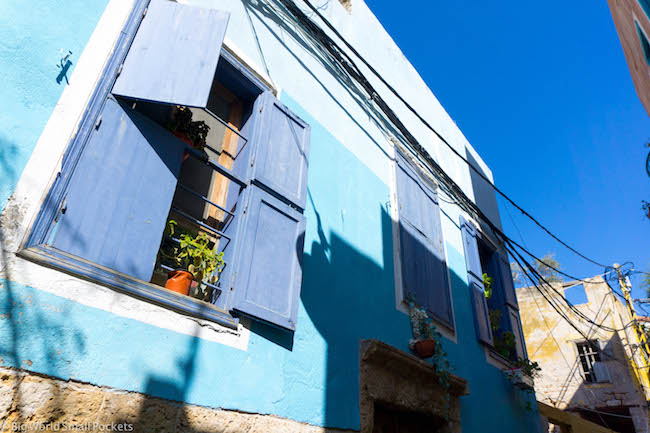
On day 4 of your Lebanon itinerary, it’s time to head in the other direction and make your journey to the most southerly city in the country, the coastal delight of Tyre, also known as Sour.
This is probably my favourite city outside of Beirut, mostly because it boasts one of the most amazing beaches in the whole country.
Before hitting the sand however, do check out the UNESCO-listed Old Town, bustling souks and busy fishing harbour of this city, before stopping to marvel at the seaside Roman ruins that are still clearly visible.
After that, head to the beach to enjoy a relaxing afternoon, before grabbing a bite and a sunset beer right on the sand at local café Cloud 59.
DISCOVER MORE: The Best 1 Month Middle East Backpacking Itinerary
Day 5: Tripoli
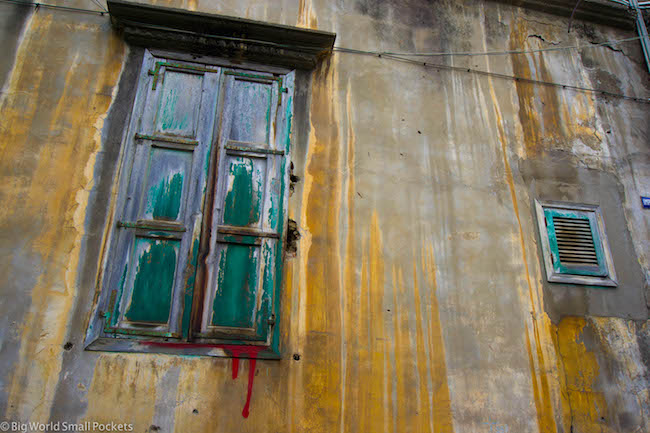
Day 5 of my Lebanon itinerary sees you heading back north from Beirut to take in the ancient city of Tripoli, which feels very different to both Beirut and Tyre / Sour.
It’s easy and cheap to get either the Connextion or Tripoli Express buses from Beirut all the way to this northern city and once there, taking in the very different cultural vibe is an awesome way to pass a few hours.
Must-sees includes a visit to the Souks, the old World Expo area and the Citadel.
Do make sure you take your camera to Tripoli too. In many ways, a day trip here feels like stepping back in time.
DISCOVER MORE: 10 Epic Things to Do in Lebanon You Can’t Miss
Day 6: Byblos, Batroun & Our Lady of Noorieh Monastery
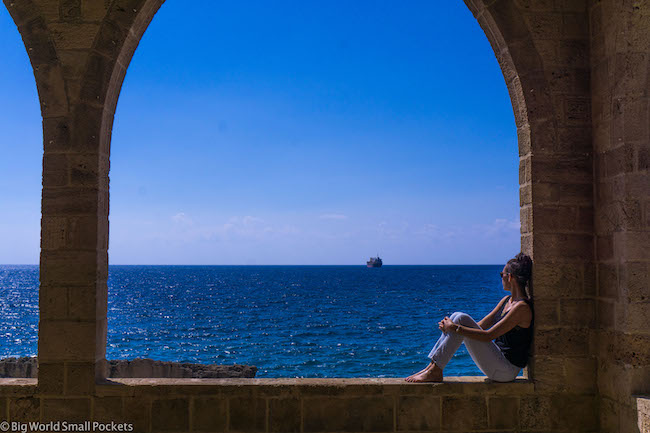
As you start to wind down on Day 6 of your Lebanon itinerary, it’s the perfect opportunity to head to the coastal towns of Byblos, Batroun and the nearby monastery of Our Lady of Noorieh.
Head to first Our Lady of Noorieh Monastery and enjoy the gorgeous views and peaceful ambience.
There’s a shop here which sells some wonderful products made by the nuns and is a great spot to pick up some delicious Lebanese food items such as Pomegranate Molasses, Olive Oil and Zatar to take home with you.
After this, swing by the quaint town of Batroun to take in the Phoenician Wall, souks and coastal views. Enjoying a homemade lemonade here at Hilmi’s is basically a rite of passage!
Supposedly one of the oldest continually inhabited cities in the world, Byblos is your final stop today and a must-see on any Lebanese itinerary.
Again wandering the souks, cobbled streets, tiny harbour and taking in the views is the best way to soak it all in, before enjoying a sunset drink amidst the amazing setting of Kina Handcrafted Bar !
Day 7: Baalbeck & Beqaa Valley Wineries
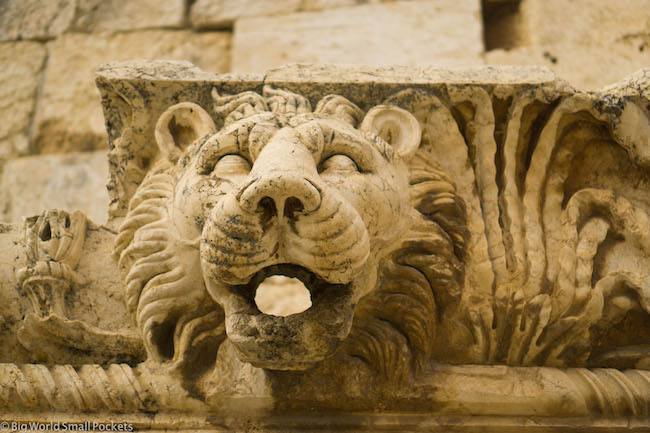
And finally, on the last day of your Lebanon itinerary, it’s time for the piece d’resistance, the amazingly UNESCO-listed Roman ruins of Baalbeck over in the east of the country.
Close to the Syrian border, it’s best to check the security situation before heading here, or take a tour if you feel less confident.
Once you’ve wandered these sensational ruins, which are undoubtedly some of the most impressive in the whole of Middle East, it’s time to head to the nearby Beqaa Valley – Lebanon’s premier wine growing region to enjoy some tastings and a spot of lunch amidst the gorgeous natural surrounds.
Joe from Beirut Pub Crawl runs some great tours to Baalbeck and the Beqaa Valley. Check out his website for more info.
Got Some Extra Days for Your Lebanon Itinerary?
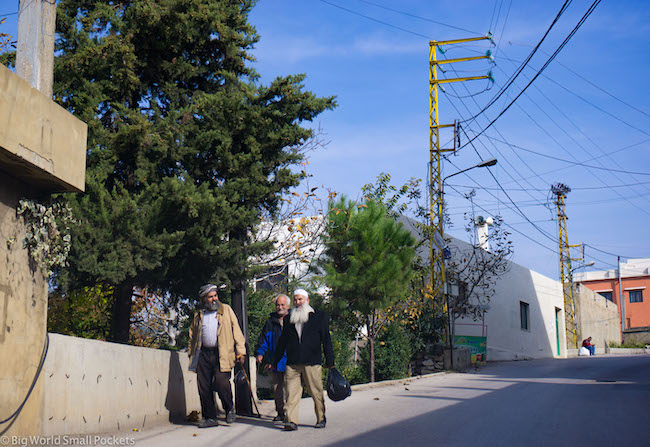
Why not check out the Beiteddine Palace, the Shoaf Reserve, the Aakkar region or some off the beaten track hiking adventures with Trekking Lebanon!
So there you have it, my perfect 7 day Lebanon itinerary for those who want to base themselves in Beirut.
If you’re more interested in hiring a car and staying outside Beirut, then read on to discover my 7 day Lebanon Circuit Tour…
Lebanon Itinerary: Option B
7 day lebanon itinerary circuit.
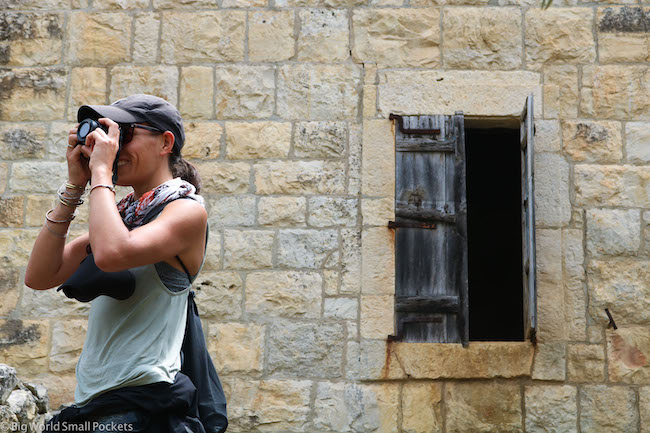
Day 1: Beirut Day 2: Jeita Grotto, Byblos & Batroun Day 3: Tripoli & The Cedars Day 4: Baalbeck & Beqaa Valley Day 5: Shoaf Cedar Reserve & Beiteddine Palace Day 6: Sidon & Tyre Day 7: Return to Beirut Keep Scrolling for All the Details…
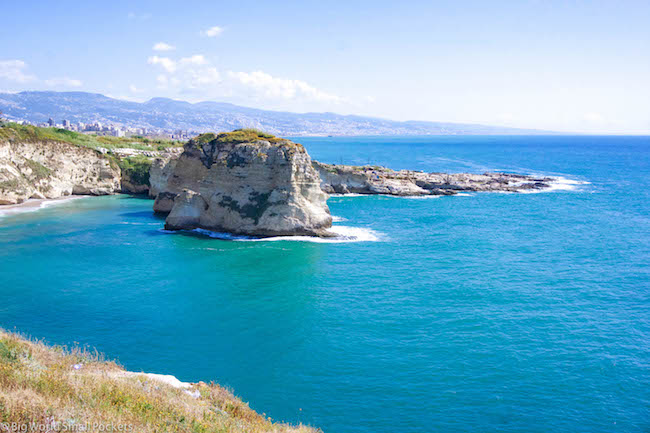
Base yourself in the capital city and get your bearings.
Explore the city’s galleries, cafes, bars, museums and architecture.
Stay at Hostel Beirut or Hamra Urban Gardens .
Day 2: Jeita Grotto, Byblos, Batroun
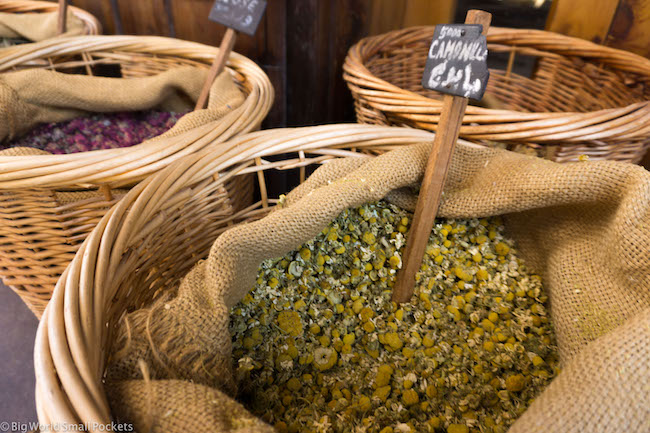
Pick up your hire car and head out to the amazing cave formation of Jeita Grotto.
Afterwards, head on to enjoy an afternoon in one of the oldest inhabited cities in the world – Byblos – before heading to neighbouring Batroun for the sunset and a drink at Rays right on the shore.
Stay at Mayyouli Guesthouse in Batroun.
Day 3: Tripoli & The Cedars
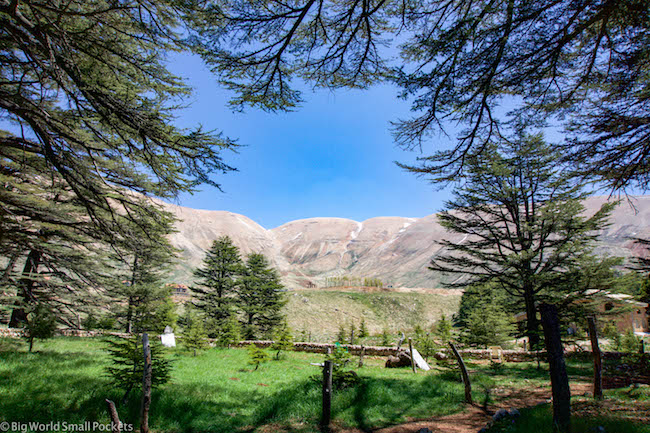
From Batroun continue north to Lebanon’s second city – the ancient town of Tripoli.
Don’t miss the soaks or the citadel here, before you continue on to the country’s premier ski resort – The Cedars.
Even out of season, you can enjoy some lovely hiking and top views from this gorgeous reserve.
Stay at the Tiger Guesthouse in Bcharre.
Day 4: Baalbeck & Beqaa Valley
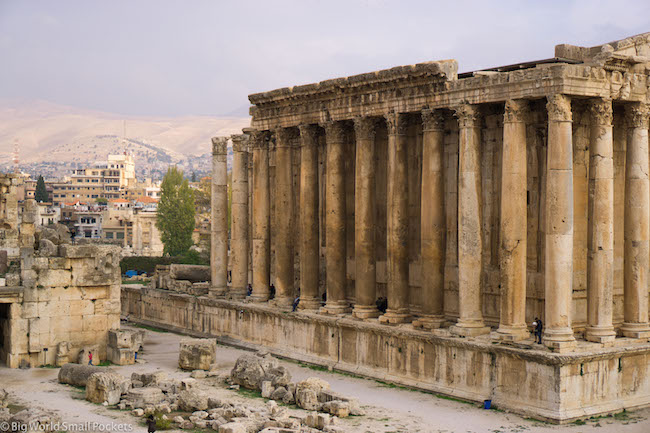
From the Cedars make your way to the east of the country to explore the amazing UNESCO-listed ruins of Baalbeck – some of the most famous ruins in the whole of the Middle East.
After that, it’s time to kick back and soak in the views of the gorgeous Beqaa Valley at one of the area’s wonderful wineries.
Spend the night at these luxurious apartments in Faraya.
Day 5: Shoaf Cedar Reserve & Beiteddine Palace
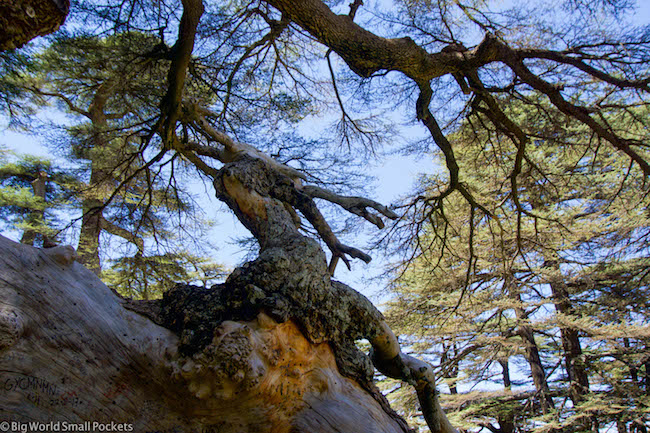
After your night in the Beqaa Valley, it’s time to take a drive to the amazing Shoaf – an area of natural beauty and protection.
Enjoy a short stroll or opt for a longer hike here before heading to the amazing Beiteddine Palace.
Stay at Deir Al Oumara Guesthouse in Dier El Kamar.
LEARN MORE: Solo Female Travel in Lebanon : Is It Safe?
Day 6: Sidon & Tyre
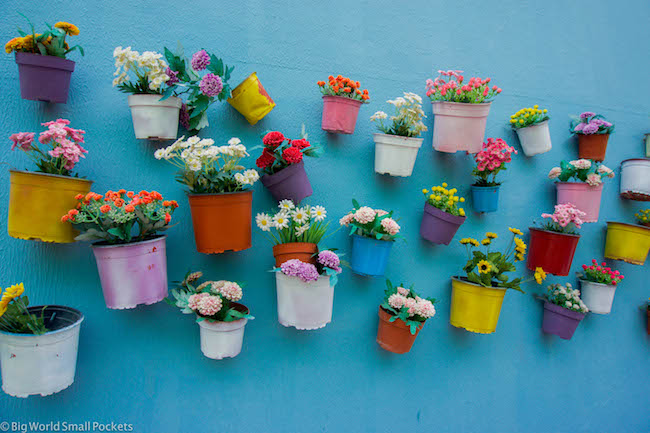
On the penultimate day of your Lebanon itinerary head to the country’s south to enjoy the cities of Sidon and more importantly, Tyre.
Also known as Sour, Tyre has some bustling souks, a beautiful fisherman’s harbour and a delightful UNESCO-listed Old Town to wander.
After you’ve checked these out and seen the coastal Roman ruins, it’s time to head to hit the beach and enjoy the sun, sea and sand at one of Lebanon’s finest coastal areas.
Stay the night in Tyre at the beautiful El Boutique Hotel .
Day 7: Return to Beirut
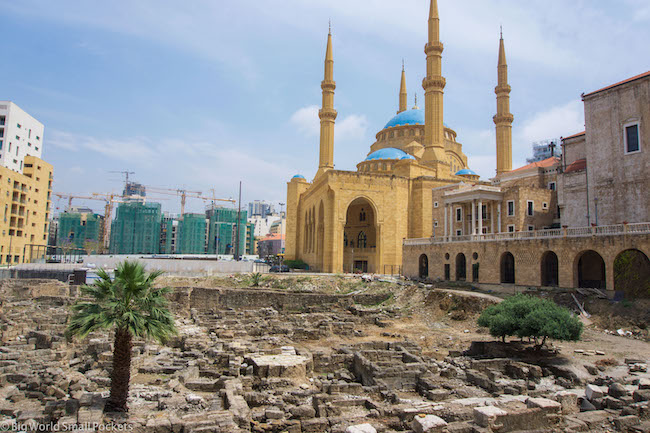
And finally, on Day 7 of this Lebanon itinerary, it’s time to return to Beirut and sadly get ready to depart this gorgeous country.
And if you’re on a shorter time frame – don’t miss my guide to spending 48hrs in Lebanon and still seeing the best bits!
Just enter your email address below and I'll send it to you for FREE!
Information will be sent to the email provided above
Mini Travel Guide to Lebanon
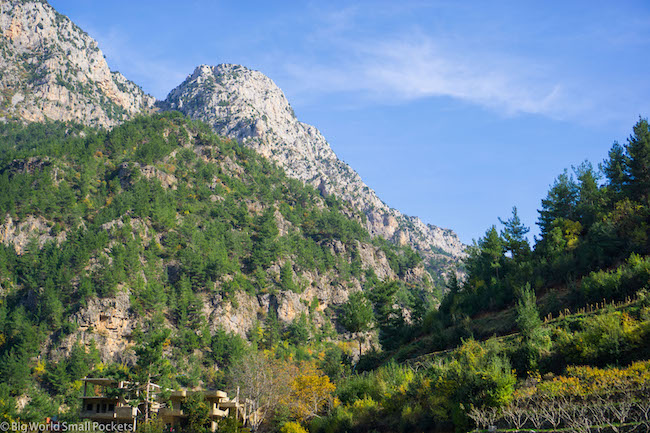
When to Visit?
I highly recommend visiting Lebanon during the spring and autumn months of April through June and September to October.
This is when the pleasant climate will allow you to enjoy all parts of the country – hitting the beach and mountains in equal measure!
How to Get to Lebanon?
Most people arrive into this tiny country via Beirut’s international airport.
As I always, I use Skyscanner to find the best prices, which are often with MEA the national Lebanese airline.
Budget flights with Pegasus can also be found to Turkey, and there’s direct flights to Cyprus too.
5 Packing Essentials for Lebanon
#1 Lebanon Bradt Guide – An excellent resource when it comes to finding out the history of what you’re seeing in this country without the need for a guide, the Lebanon Bradt Guide is a must.
#2 Head Lamp – Great for taking into Roman Ruins, Jeita Grotto or just dealing with the powercuts you may experience. I love my Black Diamond Storm , which served me super well in Lebanon.
#3 Sun Hat – Trips to the beach, the mountains, the monasteries and the ruins will mean many hours in the hot sun of Lebanon. Do yourself a favour and bring a wide-brimmed hat to protect you. I love this Hello Sunshine design.
#4 Long Thin Trousers – While Lebanon isn’t a super conservative country overall, you’re unlikely to feel comfortable in some areas walking around in anything too short. As such a pair of long, thin cotton or linen trousers provides the perfect attire for this hot country.
#5 Walking Shoes – Coming to Lebanon and not getting out for a good hike is like going to Switzerland and not eating chocolate. As such, I highly suggest bringing a pair of good walking / running shoes so you can enjoy this beautiful country at its best.
Travel Insurance for Lebanon
Alternatively, if you’re a long-term traveller, digital nomad or frequent remote worker seeking travel health cover, check out Safetywing’s Nomad Insurance policies.
PIN IT TO PINTEREST!
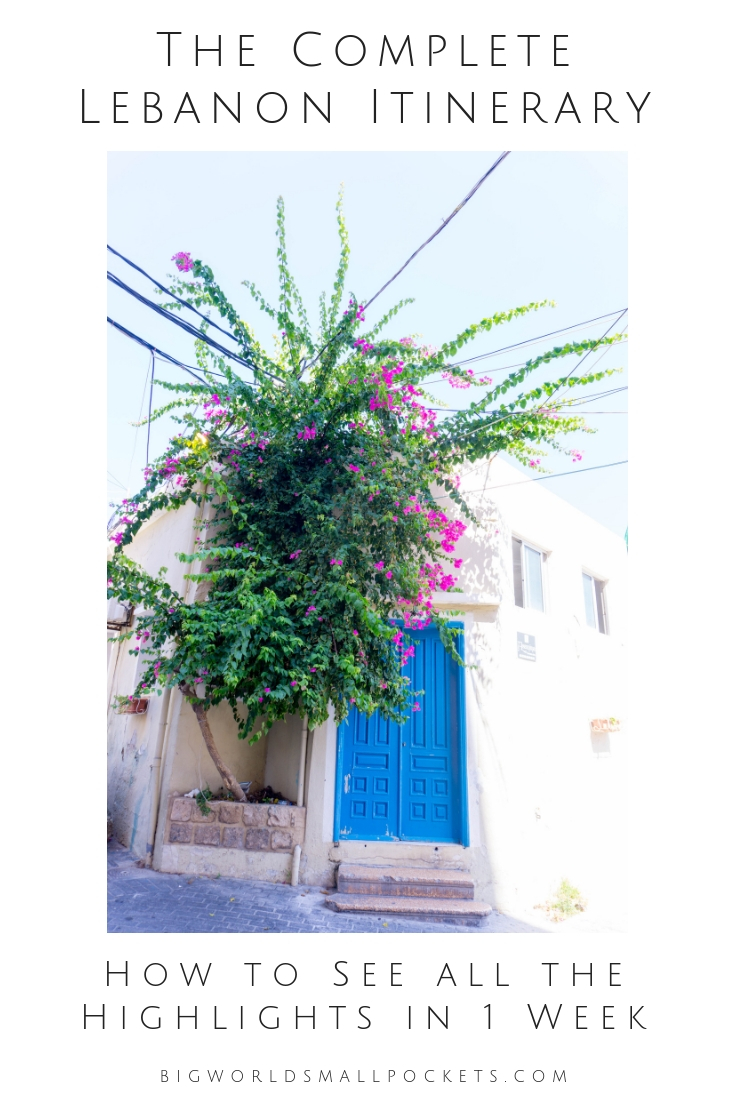
So that’s it folks, my complete Lebanon itinerary and your one-stop guide to seeing the best of this county in just 7 days!
Have you visited Lebanon?
What was your favourite destination?
Please fill me in via the comments box below…
Creator of Big World Small Pockets, Stephanie Parker is a travel addict! Originally from Jersey in the Channel Islands, Stephanie adventures the world collecting tips, advice and stories, to share with a smile
4 thoughts on “ Complete Lebanon Itinerary: 1 Week, All the Highlights! ”
Hi Steph, Is it possible to visit the Palestinian people in Gaza before or after Lebanon.? Thank you for this wonderfully evocative article.So what to go there.
Hi John – what to say to this question?! Gaza is an area of great political instability and I would certainly do your research and consult your national foreign office before even thinking about going there. In terms of linking with Lebanon, Gaza is neither in Lebanon, nor does it border it, so I’m confused as to why you link the 2? You’ll need to learn about Isreali border controls and what having a Lebanese and / or Isreali stamp in the passport will mean for your future travels. This is a very complex question in a sensitive region.
Hi! I am wondering if you might have thoughts on which of your two travel options would be most budget friendly? I am mainly wondering about the costs of transportation – care hire for a week versus day trip car hire. I’m doing about a week in Lebanon with a friend and would like it to be a leisurely trip so in some ways the idea of going back to Beirut each night sounds like a more relaxing ‘home base.’ But budget is also a deciding factor. Thank you!
Hi Darin, thanks for your comments. It’s always hard to give budgets for people because it depends on the sort of places you like to stay and how well you bargain on the day trips. Renting a car will likely be cheaper than taking multiple day trips if you feel up to dealing with the Lebanese driving! Otherwise Uber can be a handy option to do trips closer to Beirut – like Jeita Grotto etc. Local buses also run from Beirut up and down the coast to places like Tyre / Sour, Tripoli and Byblos. This would be your cheapest option by far, with maybe a combination of Uber thrown in to some of the other places I suggest away from the coast. Try to negotiate an accommodation deal if you are staying in Beirut a week. Hope you enjoy 🙂
Leave a Reply Cancel reply
Your email address will not be published. Required fields are marked *
This site uses Akismet to reduce spam. Learn how your comment data is processed .

Ultimate 10-Day Lebanon Itinerary for Your Perfect Road Trip
Lebanon is not a big country, but it is packed with fun things to do and amazing things to see. But how can you experience all that in only 10 days? I put together the ultimate 10-day Lebanon itinerary that makes a perfect road trip.
From central buzzing Beirut to Northern Tripoli and Southern Tyre. From Cedars to snow and the amazing Bekaa Valley. I’ll show you the things to do in Lebanon in 10 days and how you can arrange everything yourself.
I paid for everything in full myself. I was not paid or sponsored. All my opinions and experiences are my own.
Probe around the Globe does use affiliate links. If you decide to follow one of my links and make a purchase, I’ll earn a small commission. This is at no extra cost to you.

Ultimate 10-Day Lebanon Itinerary
10 Days in Lebanon
When I first started looking into going to Lebanon, I didn’t know how many days in Lebanon would be enough. I figured 1 week in Lebanon would feel a bit rushed and hectic.
I decide to fly in on a Thursday evening and I found a flight out on a Sunday evening.
This would give me 1 solid day of travel, arriving late in Beirut and 10 whole days to explore the country.
I absolutely loved it!
Actually, it has been 2 months since I’m back and I’m already putting Lebanon back on my list of places I want to visit.
About my 10-day Lebanon itinerary
I’m from the Netherlands and I traveled to Lebanon as a solo female traveler in my mid 30’s. I choose to rent a car but also used local transport for one of my day trips.
In the past, I’ve traveled solo to Turkey , Iran , Morocco, and Jordan , as well as Peru and Bolivia and most part of Europe.
I knew Lebanon would be expensive, so I tried to find the cheapest places but still with a lot of comforts, like the perfect location, private rooms, breakfast included, free parking and decent reviews.
If I wanted to, I could have saved a bit more money if I would have picked shared accommodation like hostels or stayed in Beirut for 10 days.
As you can read below, I didn’t do that but I did make conscious decisions about the tours I did or didn’t take, mainly based on my budget and value for money.
I traveled to Lebanon in April. My last few days in Lebanon were around Easter. The first few days were lovely and sunny, after this, storms came in and I saw a lot of rain. It was also very cold and the weather was unpredictable. This influenced my trip quite a bit.

Top Things to do in Lebanon
This post is intended to help you decide what you can do in Lebanon in 10 days.
And how to arrange it yourself.
Below I walk you through the logistics of each travel day, what you can see and do in Lebanon, how to get there and where to stay.
If you’re interested in a particular location, jump straight ahead, otherwise, I’ll take you on my 10 days in Lebanon in chronological order.
- Day 0: Arrive in Beirut, Lebanon
- Day 1: Explore Beirut
- Day 2: Sidon & Tyre
- Day 3: Jeita Grotto, cable car to Our Lady of Lebanon and Jbeil/Byblos
- Day 4: Batroun and 2 Roman Ruins, Tripoli
- Day 5: Qadisha Valley, Cedars of God or Horsh Ehden National Park
- Day 6: Hiking in Qadisha Valley
- Day 7: Tannourine Cedars National Park and Baalbek
- Day 8: Anjar and Zahlé
- Day 9: Shouf National Park
- Day 10: Beiteddine, Moussa Castle, Deir el-Qamar village
My Ultimate Lebanon travel itinerary
I always try to pack as much into these shorter and smaller country trips.
My days were quite full and I didn’t allocate any time to lazy on the beach or go for days of skiing or snowboarding.
If that is what you’d like to do, make sure to add an extra day or two to your itinerary. Here is what I did with my 10 days in Lebanon.
Arrive at Beirut Rafic Hariri International Airport
I arrived in Beirut at around 8 pm and I call this day 0. I went through customs and I had a taxi driver waiting for me with my name on a sign.
We went to the downstairs car park and from there, made our way to Beirut.
I learned all the prices for a pre-arranged taxi from the airport to Beirut (Hamra) are all the same. I arranged one with my hotel, but you can also use Allo Taxi app or book your Taxi transfer here.
3 nights in Beirut
I checked into the J Hotel and Spa , in downtown Hamra neighborhood. I stayed here for 3 nights, allowing for 2 full days in Beirut.
The place was lovely with its own fridge, AC that was working, and generous comfortable beds. The people at the reception were also very helpful and their breakfast was exuberant.
I choose the Hamra neighborhood because it is the advised area to stay in. It is central, there are 100 places to stay and it has loads of restaurant options and evening activities.
On my first evening, I went to a local mobile phone shop and bought a SIM card for Lebanon. As a blogger/ modern traveler, I cannot live without the internet.
During my recent trips to Iran and Jordan , I experienced it was so effortless to rely on my mobile phone working without WiFi, it was a no-brainer for me. For 50$ I got a sim card with 5GB of data and some minutes to make calls, which I didn’t use.
If you want to hit the town running and not miss a thing, consider a Beirut Night Tour to explore the city by night. Starts at 6 pm so only possible when you’ll arrive earlier than I did. Check for more details here .

1-day walking tour around Beirut
To be honest with you. I’m not a big city person.
Looking at the map of Beirut, I felt immediately intimidated by the maze of streets and the lack of overview.
That is why I only allowed myself 2 days in Beirut, of which one I would get out of the city.
If fine dining, vibrant nightlife and shopping are your things, you must add at least 2 full days to your itinerary to spend in Beirut.
I decided to go on a self-guided walking tour of Beirut on my first day in the country. I wanted to see some sites and experience some of the Beirut’s life. It was wonderful!
I left the hotel around 11 am and I started walking until I couldn’t walk anymore. It was roughly 5 pm when I arrived back at my hotel. I just marked interesting things on my google maps and walked around the city.
If you feel like you need a bit more guidance, you can join a Beirut walking tour here:
- Beirut Bites Food Tour (food and walking!)
- Historical Walking Tour (focusses on history)
- 4h Beirut City Tour (incl. transport)
- 7h Beirut Tour (incl. transport so not that much walking)
I took my time, wandering around the streets, taking pictures and making video snippets. I had a long lunch and walked the whole Corniche as it was a lovely day (and got a sunburn!)
If you don’t like walking, Beirut now also offers a Hop on Hop off tour. Make sure to check it out here .
Day Trip to Sidon and Tyre
For my second day in Beirut, I choose to leave the city and go south. I took a day trip to Sidon (Saida) and Tyre (Sour). These two smaller cities are easily combined and make for a nice full day trip. I set out early, around 8 am and got back at my hotel in Beirut around 6 pm.
I chose for local transport, mainly because I wanted to have my own experiences with local transport as many people use Beirut as a base, and explore the rest of the country from Beirut. And I must say: it is perfectly safe and doable.
I found the minibusses not so comfortable though, and it took some time to fill them up. If you’re traveling in a larger group things might speed up a bit but overall, I was exhausted from a day of sightseeing by local transport.

I first went to Tyre and explored the Tyre Necropolis and the Roman Hippodrome. It was marvelous and I absolutely loved it. It was one of the (many) highlights of my 10-day trip to Lebanon and can highly recommend it.
I continued to downtown Tyre where I visited another set of Roman ruins and had the best and cheapest lunch during my time in Lebanon. I’m actually contemplation going back to Tyre to eat once again at this small kebab shop.
After Tyre, I visited Sidon and the Crusader castle in town. I found it a bit disappointing and wandered around the Souk. You can also visit the soap museum but I choose to find the remote ruins of Eshmoun.

Road Trip Itinerary for Lebanon
The next morning was a Sunday and I made my way back to the airport early morning. I didn’t go to the airport to fly home, but to pick up my rental car!
On Sunday, all the rental car offices are closed so I had to go to the airport.
But this allowed me to drive through Beirut on the least busy day of the week. I compared prices for rental cars at Beirut airport here , and found the best rate for my road trip.
Driving or Day Trips from Beirut?
Now, I hear you think: driving in Lebanon?
I think everyone and their mother will discourage you from driving in Lebanon.
But I did it and I actually found it quite easy. Y
es, Beirut was crazy hectic and I definitely recommend to avoid driving in Beirut. But otherwise, I found the freedom to explore more remote places invaluable.
It actually made my trip.
Yes, I might have pissed some drivers off with my more than polite driving skills, but other than that, I don’t think it is that bad.

Day 3: Drive to Jbeil/Byblos
This day can also be done very well as a day trip from Beirut, I’ll give some suggestions at the bottom. But let’s assume you did like me and you rented a car, so I can continue my story.
I whizzed through Beirut, sweaty palms and cars overtaking me left, right and center. Yes, the first few miles were a bit intimidating but I soon got the hang of it and once I left Beirut behind, traffic numbers dwindled and I basically had the road to myself.

Jeita Grotto
One of the most see things in Lebanon and a mandatory stop on your Lebanon travel itinerary is Jeita Grotto. I contemplated skipping Jeita Grotto, as the entrance price is quite steep, but decided to do it regardless. And I’m glad I did because I absolutely loved it.
I parked the car for a small fee, got my ticket and hopped on the first cable car up the mountains. There, I had to store my phone, camera, and GoPro in a locker as filming or photography is not allowed.
I entered the Grotto which is basically a cave with a well-lit pathway through it, guiding you to one amazing formation of stalactites and stalagmites after another.
Some were free-standing, others formed sheets hanging from the walls, and yet another arose in the middle of the path. I was definitely wowed. You can walk all the way to the back of the Grotto to climb via a staircase to a viewing platform before you have to return the same way you came.
After this, we all got in a touristic train and were brought to the lower cave. Here we would make a small boat ride on the Grotto’s inner lake. It was only 10 minutes but absolutely spectacular.
Being out on the water, inside a grotto, surrounded by dripping stalactites was impressive.
The whole visit took maybe an hour or 1,5 hour but it was a quiet day. If the Jeita Grotto is busier, you might need to allocate more time for waiting in line to go inside or on the boat trip. I visited early morning before the crowds and the buses.
Cable Car to Our Lady of Lebanon
Another popular thing to do in Lebanon and usually combined with a day trip to Jeita Grotto is a ride on the cable car to Our Lady of Lebanon.
As I drove by in my rental car, the line up to the mountains looked impressive and I’m sure you have a spectacular view. However, when I was there, a big storm was rolling in from the Mediterranean and visibility was poor so the cable car wasn’t operating.
If you don’t like to rent a car and drive yourself, you can always hire a driver from Beirut who brings you to Jeita Grotto and the Cable Car. Make it a full day to include Byblos too.
The common rate seemed to be 100$ per day for a private driver. You can also do this as a day trip from Beirut, but you have to take the local buses and take a taxi to Jeita Grotto from the main road.
Go on a guided day trip to Jeita Grotto, the cable car and Byblos with a licensed guide. Check for options here .
Explore Byblos
From Jeita Grotto, I drove straight to Byblos. I arrived around 2 pm and could already check into the Aleph Boutique Hotel . I picked it because it has free parking in front of the hotel and is situated right at the turn off of the main road.
And it looked absolutely ‘boutique’ and lovely. At their exorbitant breakfast, I discovered it has a 180-degree view of the coastline and the ruins of Byblos. I highly recommend this hotel for your Lebanon itinerary.
For the rest of the afternoon, I explored the old Souk of Jbeil and visited the castle and ruins of Byblos. I loved the relaxed vibe in the small city. On this Sunday afternoon, the small streets were packed with families having lunch, I heard music everywhere and the village was bustling with sounds and smells.
I spend nearly 1.5 hours exploring Byblos Castle and its ruins which contain several layers of history, from the Phoenicians to the Romans, Greeks, and Crusaders.
After my visit, I walked to the old harbor, stopping at the St. John-Marc Cathedral and admiring the fierce waves crashing on the beach. I absolutely adored Jbeil and I wish I could have stayed longer.
If 1 day is all you’ll have, visit Jbeil and Byblos on a day trip from Beirut .

Day 4: Drive to Tripoli
Today, I intend to make good use of my rental car. I first went to Batroun and then visited 2 very remote Roman ruins in the mountains before I went to Tripoli.
If you’re not that much into Roman Ruins, I understand, but driving through the mountains was still spectacular. Below, I explain more about Tripoli and if you should go or not.
Batroun Lebanon
Batroun is known for its live and vibrant Souk and ancient Phoenician wall. I decided to stop there and check things out. As I walked from the car park to the sea, I encountered an abandoned maze of closed shops and restaurants.
Old wooden doors were shot and building works were ongoing literally everywhere I looked. I roamed around the empty streets, found the wall, looked at it and disappointingly returned.
Somewhere, I took a wrong turn and this landed me at the surprisingly lovely St. Stephan’s Cathedral which looked adorable with all the school children posing in front of it.
I spotted a sign that said: Roman Theatre so I had to check it out!
All in all, Batroun wasn’t that bad and I think when you visit on any other day than Monday morning, it will probably be much nicer.
It did allow me a peek into non-touristy Lebanese life, which I liked very much. I wouldn’t stay in Batroun though and maybe stop here only if you have time.

Roman Ruins of Bziza & Qasr Naous Temples
I set out in my rental car and headed for the mountains. The road was now empty and I could slowly meander up the mountain until I found the tiny hamlet of Bziza. There I stopped for 5 minutes to admire the Roman Temple.
A bit disappointed by its size, I was hoping Qasr Naous would be more worth the detour and it sure was. Qasr Naous is a ruined temple complex situated high up in the mountains.
If the weather wasn’t so bad, the views must have been stellar. I loved how those two temples just sat there, abandoned and forgotten. I imagine it makes for a great picnic place in the summer.

1 night in Tripoli
I wanted to see Tripoli for myself. Some people might advise against visiting Tripoli because it might not be safe. I did not experience any safety issues in Tripoli. It felt like any other big city.
I stayed at an apartment in the Al-Mina neighborhood. The owner of Azur Apartments helped me park my car and I admired the lovely little apartment. If you feel like cooking yourself, this is the place to do it. Tripoli doesn’t have many accommodation options, so it is either Azur or the Via Mina Hotel .
I left my car in Al Mina and took a shared taxi to downtown Tripoli. I wanted to visit the Crusader castle and experience the Souk.
The Castle was absolutely impressive. Such a strong defense structure with all its courtyards and walls you can walk on. The views of the city are unrivaled and at the same time intimidating.
After the Castle, I tried to find my way around the Souk. There are several Mosques that are really beautiful but the one I found, I was not able to visit.
The others remained hidden behind a maze of small alleys and doors. It didn’t really help that it was pouring with rain and I had a long day. I found the soup Souk and bought some soap souvenirs for home.

Should you add Tripoli to your 10 days in Lebanon?
Good question! Out of all the places I visited in Lebanon, Tripoli was disappointing. Not that it wasn’t safe, I just felt out of place.
Downtown Tripoli is enormous.
The Souk area is a puzzle of small streets, closed doors, and grey buildings. I didn’t find any beauty in it. I’m sure, if you have a local guide and take your time to explore, Tripoli might unravel her hidden beauty. I just didn’t see it.
You can also visit Batroun and Tripoli on a day trip from Beirut. Find your driver or tour here .
Day 5: To the Qadisha Valley
It is time to hit the road again and head for the mountains. I left Tripoli behind and set out to Bcharre, a small village overlooking the Qadisha Valley.
I booked a 2-night stay at the Bauhaus Chalets in town, to explore the surrounding National Parks and explore the Qadisha Valley.
As soon as I got closer, the road started to twist back and forth and slowly I sneaked up to a spectacular view of the Qadisha Valley. It was especially beautiful with the first apple blossoms on the trees.

Explore the Cedars of God
After check-in, I headed out again with my rental car and I make my way to the Cedars of God natural park.
This is one of the smallest parks where you can find Cedars, but it is high up in the mountains.
Although it was only 8 km (5 miles) from town, it took me well over 45 minutes to get there.
I soon realized I might have been too early in the season. Or the snow was still late in the season. The road was abominable!
Potholes everywhere, small patches of sand and loads of snow at the side of the road. Finally, I arrived at a small ranger’s station and I asked if I could visit.
The ranger showed me how far I could visit and I soon realized it was a mission impossible.
The snow was waist-deep and only a small path for say 200 meters was cleared. I did get a tiny peak in the beauty of these majestic trees, especially with the snow on them.

Explore Horsh Ehden National Park
After the Cedars of God, I returned to Bcharre and I continued to Horsh Ehden National Reserve. A much larger national park with a wide variety of flora and fauna. As I was creeping up the mountain, the sunny weather flipped. Clouds started to drift in.
The higher I got, the thicker the clouds got.
I parked my car at the ranger’s station, but it wasn’t manned, so I couldn’t ask for directions or walking paths.
Online, I had read there were numerous walking trails and the area around the parking lot seemed free of snow, so I decided to give it a go.
I first walked up a cobblestone path that was indicated as a fun walk for kids. A few steps in, I found several great learning opportunities, but the path quickly headed over rocks up the steep mountain.
The ground was slippery and more fog was rolling in. I decided it was a bad idea and I turned back.
I decided to head in the other direction and walked through a gate. The path in front of me was broad and flat. Not as interesting but luckily also not as challenging.
I knew I had to turn into the forest at some point if I wanted to walk a loop, but after 30 minutes or so, I could hardly see 100 meters in front of me.
A thick soup drifted in front of me. I couldn’t enjoy the view and could not even make out the top of the trees. I decided to turn around and leave the mountain.

Driving in the mountains of Lebanon
I arrived safely at my car and quickly got in. I was freezing by now and wanted to get off the mountain. The weather really took a turn for the worst and I slowly made my way down the mountain.
Heavy rain tormented my windshield and I could not see the road in front of me. It was one of the scariest things I’ve ever done.
In this area, the road twists and turns, the potholes are everywhere and markings on the road are nowhere to be found. I put the car to the side of the road and tried to calm down.
After 5 minutes, the weather got even worse and I decided to continue. I figured, as soon as I would make it below a certain altitude, I would be fine. And I was. 5 minutes later, the road dropped and the skies cleared.
Lesson learned: the weather can be very unpredictable and when it looks bad, you need to turn around before it is too late as it might get even worse.
Day 6: Hike in the Qadisha Valley
I spent most of the night before, contemplating if I should hike the Qadisha Valley solo. Until now, I had never hiked solo before and I did not know what the terrain would look like.
I was a bit scared of getting too tired and then still having to hike out of the valley. The night before, I went to check out Mar Lichaa monastery that would be my starting point.
I went to the look-out point and saw a car slowly drive down. I spent the rest of the evening googling and I found that there is a car park at the bottom of the valley.
It would mean I would have to hike out and return the same route, but I figured that would be a safe way to try my first solo hike. And so I went out!

Hiking Qadisha Valley
I did exactly so. I drove my rental car to the bottom of the valley, parked my car and followed the trail into the valley.
And it was lovely, I enjoyed the silence, the scenery, and the surroundings.
The water rushed with an extreme force down the stream, the trees stood tall above me, holding on to the valley’s walls. It was gorgeous.
I set out early in the morning, the sun came out and I had a lovely walk. I didn’t take any side tours or climbed any rocks or ledges.
When I arrived at Qannoubine Monastery, I took a break, taking in the silence of the monastery. I checked out the little shrine of Santa Maria a little bit further and then decided to head back.
It took me nearly 3 hours to walk there and back again. I still had some energy left, so I also checked out the Saint George’s Church with the amazing views of the valley and the cliffs surrounding it. If you like nature and history, then I can definitely recommend hiking the Qadisha Valley.
Although the Qadisha Valley is quite a drive from Beirut, you can visit on a day trip too. I’d recommend a full day trip to make the journey out there worth your time.
Find the best Qadisha Valley Day Trips from Beirut here .

Day 7: Drive to Bekaa Valley & Explore Baalbek
After spending two days in the Qadisha Valley, it was time to move away again. I set out to the Bekaa Valley as I wanted to visit the ruins of Baalbek.
When I planned my trip, I just looked at the map and figured it was an easy 1 to 2-hour drive and I could easily manage it all on 1 day.
I was wrong. I didn’t factor in that the road I saw on the map was actually a road over the mountains.
Snow-covered mountains, only open from June till September.
There was no way I could pass them. I decided on the alternative route over a smaller mountain range and not drive back to Beirut.
Tannourine Cedars National Park
This would allow me to stop at the Tannourine Cedars National Park. Maybe I was overconfident from the solo hike the day before, but I figured I could visit the national park and take a short hike and then continue my Lebanon road trip to the Bekaa Valley.
The trip from Bcharre to Tannourine was breathtaking. I had the road to myself and the air was bright and crisp. I set out early in the morning and slowly crept up the steep, windy mountain pass.
At a certain altitude, patches of snow lined the dirt road and I even took on a hitchhiking old man.

Hiking in Tannourine Cedars National Park
Finally, I arrived at Tannourine Cedars National Park. I was the only one but the park ranger gave me a map and I happily stepped on the crisp snow.
I followed a path around one of the easiest and shortest walks in the park. It took me nearly 1.5 hours to complete it as the ground was very unstable as the snow started to melt, making the ground slushy and slippery. I even trotted through knee-deep patches of snow, hoping I wouldn’t lose the trail.
For me, it was quite the adventure. 2nd solo ‘hiking’ adventure in such conditions, while I was actually on a tight timeline.
But girl was it worth it.
I got to several viewpoints where I could overlook the rugged mountains, covered with tall standing cedars and other snow-covered trees.
The sky was a gorgeous delicate blue, birds were chirping and I felt so blessed to be able to see such beauty. Conditions were not ideal but all the more beautiful.

Qalaat Faqra Roman Ruins
From Tannourine, I continued my journey inland. I figured I could follow the main road at Mzaar Ski Resort and then enter the Bekaa Valley there.
One winding road after another, passing through small villages and tiny cities, I finally arrived at the Qalaat Faqra Roman Ruins.
I figured this would be another great stop on my Lebanon travel itinerary.
But the weather flipped. I was quite high up in the mountains but it was getting a bit chilly. Clouds filled with rain drifted in and out.
The Roman Ruins of Qalaat Faqra are quite impressive as they are hewn from the rock. There are several ruins you can look at, but during my visit, I kept looking at the big mountain range in front of me.
That was where I was supposed to pass but I couldn’t see the top of the mountains.
I could see snow and fog. There was no way I could pass there.

Bekaa Valley
That morning, I left Bcharre at 8 am. I stopped a few times but it took me till 3 pm to arrive in Zahlé. I was so happy and relieved to finally be able to cross a mountain range and see the broad and green Bekaa Valley in front of me.
During this day of intense driving, I saw so much of the interior of Lebanon but it came at a toll. I felt a migraine throbbing underneath my templates and I felt like my face was burning up. I could feel my body protesting.
Baalbek Lebanon
I checked into my guesthouse in Zahlé, the Beit el Kroum Boutique Hotel, and contemplated what to do. Outside, the blue sky beckoned me to come outside.
Inside, my phone’s weather app would tell me bad weather was on the horizon for tonight and tomorrow. I would have 2 hours to get to Baalbek and explore one of the best-preserved Roman ruins in the world.
Quickly, I decided to head out and give it a try. I could always go back tomorrow if I felt I missed out on some things.
And that is how I ended up rushing through the Baalbek ruins. I arrived roughly at 4.30 pm and figured I had until 6 pm to explore. It turned out they kicked me out at 5.30 pm.

Exploring Baalbek Ruins
The plus side of this story was that I had the Baalbek ruins almost completely to myself.
I could roam around and take quick pictures without anyone in my view.
Which was perfect.
I tried my best to take in the site and the views but I did feel a bit rushed.
However, I did take my time to set up my camera for a few selfies at some of the greatest ruins I have ever seen.
By 5.30 pm, the guards kicked me out.
I couldn’t see the museum and the Temple of Venus but the things I did see, made me fall in love with Baalbek. It was perfect that I had the site to myself which allowed me to move quickly around and take in the history.
And I was glad I did it because the weather was perfect. The next day, it even snowed in Baalbek!

Day 8: Explore the Bekaa Valley
But that evening and night, I felt my body revolt to the stress of that day. Or it allowed for a bug to settle in my stomach and disrupt my whole system.
I was cold and I couldn’t get warm anymore. And I couldn’t keep in any food. I rushed to the toilet every hour of the night, leaving me cold, weak and ill the next morning.
For me, I was glad to stay in such a homestay type of accommodation I stayed in bed nearly all day. Mostly because I felt too ill to go out but also because rain and hail were covering the Bekaa Valley.
Ruins of Anjar
At the end of the afternoon, I did decide to go out for a bit.
I drove to Anjar, only 40 minutes away and visited the ruins of the Umayyad court of the 8th century.
There Unesco World Heritage Ruins are remarkable because they only cover one period in time. They were not reused or repurposed by future generations.
It was convenient to park in front of the ruins and I could follow the grid and layout of the old city.
Sadly, my umbrella could barely hold up the constant stream of rain and hailstones, so I did a quick tour of the site.
If you’re not ill and the weather is better, I recommend spending 1 to 1.5 hours here to explore the ruins, take in the old Grand Palace and walk the streets of Anjar. It reminded me a little bit of Pompeii even.

Zahle wine tasting
Because of the heavy rain, I cut my visit to Anjar short and returned to Zahle. Only 15 minutes out, the sky cleared up and the sun came out.
Just my luck. Instead of turning around and revisiting again, I decide to continue and stop at one of the famous wineries in Zahlé.
Chateau Ksara
The Chateau Ksara was on my route to my guesthouse, so I decided to check in and see if they were open . They were and I joined an English tour of the wineries caves.
This was really short but impressive.
The guide took us to the underground labyrinth of caves and niches, with barrels of wine lining the walls and bottles of wines stacked behind closed gates.
She explained that the monks used to produce so much delicious wine, that the higher power in the church ordered them to stop their commercial activities with the delicious wines.
They sold the winery and Chateau Ksara was born.
Tour Ksara Wine House
After the tour, we watched a video of the harvest and it was really an interesting twist on the other things I’ve seen so far in Lebanon.
All the while, I was contemplating to do the wine tasting or not. I was driving after all and it seemed like a bad idea. But I really wanted to taste the wine. In the end, I decided to choose safety over sampling the wine.
My big tip for you would be to get a driver or take a taxi and drink and taste and sample as much wine as you can! I heard raving reviews about the wine at Chateau Ksara.
As the Bekaa Valley and Baalbek are one of those epic must-see things in Lebanon, there are numerous tours and day trips to Baalbek. Some combine a day trip with Anjar and a wine tasting in Zahlé. Check out the best tours here .

Day 9: Drive to the Shouf National Reserve
Although I wasn’t feeling much better, I had to leave Zahlé and the Bekaa Valley. My next stop would be the Shouf.
This mountain range is dominated by tiny villages and several national parks to see the Cedars.
I rested a bit and went to the pharmacy for some antibiotics and some ORS rehydration salts to prevent me from dehydrating.
With so many liquids coming out, I felt my bodies need to stock up on electrolytes and keep in some of the fluids.
My recommendation for you would be to leave early and explore as much of the Shouf National Park as possible. The Shouf consists of several different smaller parks, each with entrances at different roads. I tried to visit all of them but the weather and wintery conditions made it difficult.

Palais des Cedres Hotel
From Zahlé, I took the main road to Beirut for a while and was a bit overwhelmed by how busy it was.
After driving for nearly a week on small mountain roads, passing empty villages, the main highway was a bit of a shock.
This was also the first time I drove on the main road during mid-day so I was glad when I reached the turn-off to the Shouf and continue on the tiny mountain roads again.
I arrived at the Palais des Cedres Hotel and I nearly cried when I entered my room.
It was so beautiful, so warm and the intense smell of thick cedar wood was everywhere.
It sure helped they upgraded me to a royal room and I could see the mountains from my bed and balcony. Although I wanted to stay in and veg out, I decided to head out again and try to explore some of the Shouf Cedars National Park.

Shouf Biosphere Reserve Barouk Cedars Forest
The hotel is really close to one of the main entrances to the park. It was 5 minutes to the Ranger Station at Barouk National Reserve.
I needed to buy my ticket and I could continue by car.
Unfortunately, again, hiking was not possible. The ranger told me I could drive till the end of the road and look around, but then I would have to come back.
I didn’t quite get what he meant, as my google maps showed the road going up the mountains to Maasser Cedar Forest Shouf Biosphere Reserve and over the mountains to Kefraya but I soon found it.
But, I got in my car and followed the road.
I quickly climbed and soon the snow was lining the road again. The road twisted and turned up the mountains and fog was drifting in again. I passed a small patch of cleared snow where I could see a trail but I continued. Until I couldn’t go any further.
The last few meters I drove on snow and the road wasn’t cleared. And then I hit a wall of snow. Well, I didn’t actually hit it but it was clear I couldn’t continue anymore.
The road was blocked by a mountain of snow. As it was half of April, I was surprised but it clearly shows that I am not used to the mountains.
After looking around, I returned the same way I came from.
Maasser Cedar Forest Shouf Biosphere Reserve
I still was slightly disappointed. I drove back to Barouk and took the valley road to Maaser El Chouf village.
Unfortunately, the main visitor center was closed or had vanished, so I drove up another mountain to reach the Maasser Cedar Forest Shouf Biosphere Reserve.
It was a bit busier here and there were several rangers in the hut. I could access this part of the park with the same ticket as in Barouk, so this saved a few Lebanese pounds.
One of the rangers walked with me and explained which path I could follow and where I had to go to see the oldest Cedar tree in Lebanon.

Oldest Cedar Trees in the world
The path was horrible. Patches of snow, mixed with slush and frozen puddles. I slipped and slithered up the path and tried to enjoy the scenery. The fog crept up on me and obstructed any views of the National Park and Forest.
I reminisced on the glorious sunny morning I had in Tannourine National Park and decided this wasn’t working. I’m still not sure if I saw the oldest Cedar tree. I did see several old and big cedars but I didn’t see a sign, so I think I haven’t seen it.
I retreated to the luxurious warmth of my hotel room and watched movies for the rest of the night.
If the weather is better or you visit during a different season, I highly recommend the several Shouf Cedar parks.
Although I didn’t see much of it, I could see they have good infrastructure, spacious parking lots and there were rangers at the post to guide you around the park.
Several trails were clearly set out and what I did see of the parks was well maintained.
I can’t wait to go back during the summertime!
Day 10: Beiteddine and Beirut Airport
I realize my Lebanon itinerary starts to sound a bit like: I was sick, the weather was bad, I didn’t do that much. I’m sorry for that but it hugely impacted the last days of my 10-day trip to Lebanon.
I’m sharing the things I did do or could have done to show you what you can do when you make your own itinerary but the truth is, not everything worked out for me.
After I left the Palais des Cedres with pain in my heart, I slowly made my way to Beirut airport. I wanted to visit the Beiteddine palace and then move to the coast and wait for my flight home from Beirut airport.
I wanted to visit the grotto of Beit Nazein, but I learned it was closed for the public until further notice.
Beiteddine Palace
In the morning, I drove to Beiteddine and was excited to visit this palace complex of Emir Bashir II of the Shihab dynasty (1788-1818). I wanted to see the courtyard, the stairway and the palace wings with my own eyes, but unfortunately: it was closed.
So, I parked in the parking lot and contemplated what to do next as it was still raining and it seemed like the perfect indoor activity for my last day in Lebanon.
I wasn’t the only one who was disappointed, as several tour groups and family came to the gate to return disappointed.

Deir al-Qamar Village
I decided to drive around the valley, which offered lovely views and settle for a coffee at Deir al-Qamar. I stopped at Moussa Castle, a fairy tale whimsical make-belief palace by a guy with too much money but decided to continue.
Once in Deir al-Qamar, I was charmed by the buzzing lively feel of this small village.
Flowers lining the streets, cute houses and shops and a romantic feel. I drove two circles around the village to find a spot to park my car, but I had no luck.
By now, I was quite fed up with the weather and the inability to do something fun and entertaining and the rain that I decided to give up and head to the airport.
If the palaces are open, allocate 1 to 2 hours to explore Beiteddine Palace and another hour for Deir Al-Qamar. Make that 2 or 3 hours if you include a nice lunch stop there.
Beiteddine and the Shouf Valley is an easy and popular day trip from Beirut. Find the best tours and prices here .

Back to Beirut Airport
I went back to the airport. I found a Starbucks and gave in to my need to be near a bathroom and use high-speed internet. There , I am only human.
As we glided in the air, looking down on the bright lights of Beirut, I had a content smile on my face. Despite the illness, despite the rain and the last few days, Lebanon charmed me in a way I did not expect.
I found the mixture of religions, opinions and natural and cultural sites to visit intriguing and surprising.
It left me already craving for more and I don’t rule out that I will return to Lebanon in the near future.

10-day Lebanon Road Trip Itinerary
I think I could have spent another week in Lebanon and not gotten bored at all.
For a first acquaintance, 10 days in Lebanon is a good amount of time to get a first taste. If you have less time, for example only 1 week in Lebanon, you can leave some of the activities out and still see a good portion of the country.
I hope I was able to show you how to arrange your own road trip in Lebanon and gave you plenty of practical suggestions on things to see and do.
Practical tips for your Lebanon Trip planning
As always, I like to leave you with some practical tips and advice to make planning your own Lebanon itinerary easier.
- I do recommend renting a car in Lebanon. Get the best rates and conditions and compare the best car rentals here .
- Lebanon’s tourism industry is up and coming but it is also a perfect independent backpacker country. If you do want to go sightseeing but want more guidance and let someone else take care of the logistics, book your day trip tour here .
- Bring US Dollars and pay with them and get the locale Lebanese Pound in return. No need to take out money from the ATM or exchange at an exchange office. The rate is fair and it is super easy.
- Many airlines fly to Beirut, like the nation’s MEA airline. I flew from Amsterdam directly with Transavia to Beirut but you can search for your flight here .
- Book your hotels in advance. Hotels outside of Beirut are not that common or well-advertised. I’m sure you sometimes can show up and get a room but booking ahead can help you a lot. I always use Booking but Hostelworld also offers nice budget accommodations too. Some unique stays can be found on Airbnb as well.

- Bradt Lebanon Guidebook is a good guide for information and practical travel tips. Purchase your copy here .
- Book your hotels in Lebanon via Booking.com or Hotels.com
- Book your direct flights to Beirut, Lebanon here
- Travel in style with your Lebanon Passport cover! Absolutely love these !
- Unfortunately, things can and do go wrong when you travel in Lebanon. World Nomads offers coverage for more than 150 activities as well as emergency medical, lost luggage, trip cancellation and more.
Lebanon hotels for your trip
To make things easier for you, here is a list with the hotels I stayed at during my Lebanon trip. I recommend all of them wholeheartedly, so feel free to book your stay there too:
- 3 nights in Beirut at the J Hotel and Spa
- 1 night in Jbeil/Byblos at the Aleph Boutique Hotel
- 1 night in Tripoli at Azur Apartments
- 2 nights in Bcharre in the Qadisha Valley at Bauhaus Chalets
- 2 nights in Zahlé at the Beit el Kroum Boutique Hotel
- 1 night in Barouk at the Palais des Cedres Hotel
- Practical things to know before traveling to Lebanon
- Renting a car in Lebanon
- Tyre and Sidon day trip from Beirut
- Roman Ruins in Lebanon
- Epic Outdoor Adventures in Lebanon for Nature Lovers
- My Lebanon Travel Budget Breakdown
- 17 Amazing Things To Do in Beirut – Lebanon
Are you thinking of going to Lebanon? What is at the top of your must-do list? Or do you have a favorite place in Lebanon that you recommend? I’d love to read it, feel free to share your thoughts in the comment section below.

Author: Naomi
Hi Naomi I loved your blog about Lebanon! Thank you. It’s inspired me. I have been hesitating for some time to book a group tour due to cost and restrictive itinerary but didn’t imagine it could be a trip I could take independently. It is now. How much would you recommend budgeting for a 10 day trip (excluding flights?) Thank you. Samantha
Thank you, Samantha. I still haven’t added up all my expenses and I plan to write about the costs later on but Lebanon is not cheap. Accommodation outside Beirut can be a bit pricer but the food was affordable and sights too. In the end, it was worth every penny and with planning your own trip you have the freedom to choose a bit of luxury on one day and go cheap the next, whereas a group tour is always at the same level which adds to the higher budget. Either way, I hope you get to enjoy Lebanon too!
Thank you Naomi! I am starting to plan my trip now 🙂
Comments are closed.
- [ January 14, 2024 ] EQUATORIAL GUINEA – Best 10 day itinerary with island marvels and mainland hidden gems Equatorial Guinea Travel Guide
- [ May 10, 2023 ] TOGO – Best 10-day itinerary for a road trip from south to north Itineraries
- [ November 20, 2022 ] DJIBOUTI – The best 1-week Djibouti roadtrip itinerary with a 4×4 landcruiser Djibouti Travel Guide
- [ November 18, 2022 ] YEMEN – Mainland Yemen itinerary with all the best places to visit in Hadramout Itineraries
- [ January 21, 2022 ] TRINIDAD – Port of Spain city walk: Top 12 things to see and do Trinidad & Tobago Travel Guide
- [ January 18, 2022 ] TRINIDAD – Hyatt Regency hotel review: Best luxury place to stay in Port of Spain Hotel reviews
- [ January 11, 2022 ] ISRAEL – Caesarea day trip from Tel Aviv: Must see Roman ruins Israel
LEBANON – The most complete Lebanon itinerary: All highlights in 10 days (or 2 weeks)
Table of Contents
Planning a Lebanon road trip itinerary
Beiteddine palace tour, deir el-qamar tour, anjar umayyad ruins tour, baalbek roman ruins tour, adonis temple afqa highlight, nahr ibrahim valley roman ruins, byblos day tour, batroun day tour, faqra ruins tour, lebanon itinerary day 7: tripoli day trip, lebanon itinerary day 8: qadisha valley tour (and cedars of god), lebanon itinerary day 9: beirut city tour.
Lebanon is a small hidden gem in the Middle East and a beautiful destination for a 10-day trip. It’s just a 3-4-hour flight from Europe and thus a perfect destination for the May (or October) school holidays! I visited with my family (kids 13/16 years) and drove around the country for 10 days. Having seen a lot of the world, it takes real beauty to amaze me and that is something Lebanon has plenty of. It’s time to share my experiences in this Lebanon itinerary.
This Lebanon travel guide covers all its beauty in the best day trips so that you can efficiently see all the must-see places. Although Lebanon is a small country it has such a huge variety of highlights that each day will be different. Sea, mountains, Islam, Christianity, and ancient history but also modern lifestyle is what you find in Lebanon. Let’s have a look at what I think is the most complete Lebanon itinerary to experience all its beauty.
Before going into details of each day a few tips to plan your Lebanon trip efficiently.
- The best time to visit Lebanon is in spring or autumn. In summer it’s very hot and in winter there is a lot of snow up in the mountains. Of course, if you want to go skiing then winter is the time to go! I visited in late April when the weather was perfect with snow up in the mountains but warm enough to swim too at the beaches.
- Lebanon has just one international airport in Beirut which is easily reached by a wide variety of airlines. It’s just a 3-4-hour flight from Europe and you can connect anywhere in the world from there. From Europe you have connections all over the world. I arrived in the afternoon and I passed immigration in just 30 minutes but keep in mind that at busy times this might take longer. Check before travelling if you require a visa.
- Getting around Lebanon is best done by car. I love flexibility so when possible, I hire my own car. I got a good deal in Lebanon for a 4×4 SUV at just 48 USD a day. Traffic is chaotic, yes; but if you’re a confident driver you’ll manage. I drove 2 weeks in Thailand , a week in Mexico and 2 weeks in Tunisia . Lebanon was easy compared to these countries. You can also opt to hire a car with driver which should cost about 100-130 USD a day pending the distance. Public transport is not an option for this Lebanon itinerary as it takes you off the beaten track s . All sights mentioned can be put in Google Maps, which will take you there the most efficient way. Make sure to download them in case you won’t have reception.
- There are no major safety concerns (May 2019) in Lebanon if you follow this itinerary. Do always carry your passport as there are some military check points. I didn’t have to stop at any and the soldiers are very frienly and helpfull. The only region to avoid is north of Baalbek around the town Hermel and the area’s north and east of Hermel.
- You can do all trips from Beirut , but I advise to stay 3 nights north of Beirut to save time driving up and down. All day trips can be mixed of course but I recommend staying 3-4 nights in Beirut, then 3 north of Beirut and then back 3-4 nights in Beirut. I love luxury hotels and in Beirut I stayed at Le Gray Hotel (member of the Leading Hotels of the World ) and Le Bristol Hotel which are centrally located. The Intercontinental Mzaar in the mountains was my home north of Beirut but a hotel in Jbeil (Byblos) would be even more efficient.
Now lets explore Lebanon, a true hidden gem in the Middle East .
Lebanon itinerary day 1 – South Lebanon day trip: Tyre and Sidon
The first day trip from Beirut of this Lebanon itinerary is a long one but recommended to do the first day because if you run out of time you can add Sidon to day 2. Tyre and Sidon are two cities in southern Lebanon with a rich history and beautiful archeological sites. Unless you go wander around the modern parts of these cities, you can visit both the same day. Go early so you have time to make a short stop at the Temple of Eshmun, just outside of Sidon too. I left Le Gray Hotel at 08:00 and arrived in Tyre at 09:15 which is VERY quick. I did speed 10-20 km/h as everyone else did.
In Tyre, which is a UNESCO World Heritage Site, I recommend going to Al-Mina on the peninsula first as most tourists stop first at the Al-Bass Hippodrome. It’s possible to park near the entrance and if you are lucky you should have this site for yourself. There are beautiful Roman ruins, a cathedral, and parts of a Crusader castle. A visit takes just over an hour.
Now go to Al-Bass which is just a 5-minute drive. You could walk but it’s not a nice walk and you would loose to much time. Al-Bass consists of a Necropolis, triumph arch and a hippodrome from the Roman period . Here you’ll probably spend 90 minutes. Make sure to continue to Sidon for lunch at about 12:30.
Sidon, a tentative UNESCO site, is a beautiful coastal town with a crusader castle in the sea. You can park your car at the parking lot of the castle as they don’t mind you’ll explore the city after. Across the street there are various restaurants but Zawat for sure is good. After lunch you can explore the Sidon Sea Castle and walk through the old souks. Make sure to not miss the Dabane Palace, Nicholas Church, Khan al-Franj and, if you are interested, the Soap Museum. The beauty of Sidon is the fact the souks are still in use as they were in ancient times. It’s great to just get lost but make sure you’re in your car at 16:30.
Before heading back to Beirut make a stop at the Temple of Eshmun. This site is free to visit and it’s very small and not much is left of it. The reason of the visit is that in the National Museum of Beirut they have beautiful finds from this site. In Phoenician time it was an important temple hence a visit should be on your Lebanon itinerary. From the temple it’s about an hour drive back to Beirut.
EXTEND YOUR TRIP: Split Sidon and Tyre into two day trips. You’ll have more time to relax or go swimming. Tyre has beautiful beaches to fill the 2nd half of the day there before heading back to Beirut. You can visit Sidon & the Temple of Eshmun on the second day.
Lebanon itinerary day 2 – Shouf valley day trip
The Shouf Mountains (and valley, also called Chouf valley) are located just 40 kilometers from Beirut and are a must-see destination. You can either go for a half day trip or a full day trip. I decided to make it a long half day trip to not make this Lebanon itinerary stressed. I drove first to Moukhtara Palace which is a place few tours go. This Italian style palace is still in use by the political Jumblatt family. You can’t freely walk around the house but a small tour of about 20 minutes is a must-do to learn about this family and assassination that took place.
MAKE IT A FULL DAY TRIP: If you want to do a full Shouf valley day tour you should now drive to the Shouf Barouk Cedar Forest. The reason I decided to not do this is that I would see cedar trees at the Cedars of God. If you like wine, you could also visit Château Florentine in the village of Majdel Maouche to make it a full day trip.
I continued to Beiteddine (Beit’eddine) which was once the center of power in Lebanon. The Beiteddine Palace (House of Faith) located there is the best example of Lebanese 19 th century Italian inspired architecture. A visit will take you 2 hours in spring and autumn as in some parts of the year the palace is in use as the president’s summer residence. Check with your hotel in advance if it’s open.
The last stop of the Shouf valley day trip is in Deir el-Qamar which is a beautiful small old town. It’s also possible to also make a stop at Moussa Castle museum first which has wax statues and a weapon collection. The town is small but very cozy. I wandered the small streets, visited the mosque and museum for about 30 minutes. After a delicious Lebanese lunch, I drove back to Beirut where I explored downtown Beirut by walking the Heritage Trail which started in front of Le Gray Hotel where I stayed. More on central Beirut on day 9 though, when there is time to walk this trail too.
Lebanon itinerary day 3 – Anjar, Ksara Vineyard and Baalbek in the Beqaa valley
It’s time to checkout of your hotel in Beirut today. As mentioned, you can do each trip from Beirut but if you follow this Lebanon itinerary, I highly recommend changing hotels. You can stay in Faraya in the Mzaar mountain range as I did or in Jbeil (Byblos). I choose the Mzaar Intercontinental as I had plenty of loyalty points to book a room there (read about my Bleisure trips to learn how accumulate those). Visiting two UNESCO World Heritage Sites meant a long day. I left Le Gray Hotel at 08:00 and I arrived in Anjar around 10:00.
Anjar is a ruined Umayyad trading city which was build in the 8 th century between Baalbek and Damascus (Syria). It’s located just 3 kilometers from the Syrian border. You’ll see remains of roads, a mosque, a hammam, a palace and housing of shops all surrounded by a thick wall. The city was in use just 30 years before it got destroyed, which makes it even more impressive. It’s not a huge site but also not small so plan 1-2 hours to see Anjar.
Next up is the only vineyard I added to this Lebanon itinerary: Ksara vineyard. You’ll pass it when driving from Anjar to Baalbek but if you want to make a tour, you’ll have to depart Beirut at 07:00. I only picked up some wine (a good tasting requires a full bottle) and had a quick lunch before heading to Baalbek.
I have seen many Roman ruins and the last one that amazed me was the Dougga Roman city when I made a two-week Tunisia road trip . Baalbek is a completely different ball game. Those ruins are the best-preserved Roman ruins I have seen and that says a lot. When the Romans arrived in Phoenicia half a century before Christ the city Baalbek was called Heliopolis. Various beliefs where mixed and worshipped. The temple and city complex was extended for over 300 years before it got abandoned. Most impressive is the Temple of Bacchus which is huge and decorated with fine carvings. To fully see the complex, you need 2 hours or more.
I was back at the parking lot around 17:00 and expected to drive to Faraya in about an hour over the mountain road (via Beirut would be 2-3 hours). That didn’t go as planned as just before the T-junction to Faraya (left) and Afqa (right towards the Ibrahim Valley) there was a military checkpoint and the guard didn’t want to let me go through. When I wanted to steer left, he put spikes up that would flatten my tires. I asked why I couldn’t go, and he said it wasn’t a security issue but the road to Faraya was covered in 8 meters of snow. Even a 4×4 wouldn’t get through so if you follow this Lebanon itinerary make sure to check for road closures! I had no other option as to drive the road to Afqa OR turning back and drive the highway to Beirut and then up to Faraya. The road to Afqa was a good choice. It was an amazing drive over the snowy mountains (see photos above with the snow wall). I arrived around 20:00 at the Mzaar Intercontinental as I made many stops in the snow to take photos.
EXTEND YOUR TRIP: From December to April the ski resorts are open so if you like skiing you can add an additional day to do some exercise. The best place to do this is Mzaar ski area at Faraya. Another option to extend this Lebanon itinerary by a day is to stay around the Ksara vineyard. You can visit other vineyards in the vicinety and fill a day with wine tasting . Best to hire a taxi for that day though!
Lebanon itinerary day 4 – Off the beaten track Lebanon: Ibrahim Valley
The Ibrahim Valley is a tentative UNESCO site but honestly, I don’t think it will ever make it on the list. It’s however a beautiful off the beaten track destination in Lebanon. I only saw a handful of local tourists in Afqa and for the rest nobody! There are several places of interest in the Nahr Ibrahim Valley worth checking out. Plan about 5 or 6 hours unless you’re coming from Beirut. Not every Lebanon day trip has to be a super highlight and that’s why this Lebanon itinerary is 10 days with the option to extend it to 14 days. I’ll list the must-see places of the Ibrahim Valley in order from Faraya. If you’re coming from Jbeil (Byblos), Batroun or maybe Beirut then follow it in the opposite direction. The fun of this day is also to admire the beautiful nature and pass through local villages to see how rural Lebanon is.
Set your GPS or Google Maps to the Adonis Temple in Afqa and drive there. Stop along the way where you want because the views are amazing. The valley has its name from the river that flows through it: The Adonis River, also called Abraham River or Nahr Ibrahim in Arabic. Adonis is the god of love, rebirth and beauty as the Phoenicians believed and was worshipped at the source of the river in Afqa and in Byblos where the river meets the Mediterranean Sea. Water flows from a cave which you can climb into. When snow melts in spring the stream is huge and has a lot of power but in dry times you can walk also into the cave. A beautiful site.
Now put your GPS to Yanouh where on the right side of the road you can visit the Mar Girgis al Azraq temple. There are Roman ruins and a newer Saint George church which is of special interest as it’s made of blue/grey stones. Now continue to Qartaba by pointing your GPS to Saint Sarkis Monastery located a few hundred meters downhill. It dates to the 16 th century. When I visited, I couldn’t find any option to visit the inside but the outside was worth a look too. Qartaba is also the place to get lunch as it should be halfway the day.
Next is the Mashnaka Roman temple which is spelled in a dozen or so varieties. Mashnaka (Souaneh, Lebanon) works is Google Maps though. The valley views here are amazing! Now it’s time to cross the Nahr Ibrahim River (put 34.077561, 35.724308 in Google Maps) and drive along the other side to the Roman aqueduct. This aqueduct is just small and isn’t even on Google Maps so put (34.063076, 35.653333) as coordinates. It’s worth a stop if you’re passing anyway and the views are still amazing there. After this I drove back up to Faraya and made a quick stop at the ruins in Faqra so I would save time another day.
Lebanon itinerary day 5: Byblos (Jbeil) and Batroun day trip
Byblos (now called Jbeil) is a coastal city in Lebanon north of Beirut. Founded over 7 centuries ago and thus one of the longest continually inhabited cities of the world. A visit of the heritage park takes half a day and best combined with Batroun which is just 20 minutes north. Byblos is an UNESCO World Heritage Site and Batroun a tentative one. Make sure to visit Byblos first especially if you like craft beer!
It was approximate an hour drive from Intercontinental Mzaar to Byblos where I parked near the entrance of the archeological site. You can put the entrance in your GPS and when close park in the first available spot as you’ll otherwise keep circling. Try to arrive around 10:00 which gives you time to do a Byblos tour to all the highlights, have lunch and continue to Batroun.
Byblos (Jbeil) was already inhabited in 5000 BC but from the Neolithic and chalcolithic time is not much left. The Phoenicians transformed Byblos to a walled city in around 2800 BC. It was their capital. The Phoenician alphabet used later by Romans and today by western civilizations was invented there.
The Byblos archeological site isn’t huge but for the long route through it you must count for about 2 hours. There points of interest include three major Phoenician temples, a Crusader fort , and a Roman theater (smallest I ever saw) with columns. Do read the explanations signs as many have drawings of how a certain place looked like centuries ago. It helps to understand the ruins. In the Crusader fort is a small exhibition but the most beautiful finds are in the National Museum in Beirut.
After exploring the archeological site go for a small stroll through the souks and maybe have a look at the harbor. For lunch I can recommend Fenicia just in front of the entrance of the site. After lunch head north to Batroun.
First set your GPS to Mseilha Fort which is a Crusader style fort on top of a rock (see photo below). Entrance is free and a visit doesn’t take long. I hadn’t seen a fort like this ever before, so it was a nice detour before heading to old Batroun. I parked my car near the Batroun souks from where I wandered through the old town which has also Phoenician origins. Strolling the narrow streets exploring the churches and other old building takes about 2 hours. The highlight is in the sea: a Phoenician wall. It was built to keep the tidal waves out and unique in its kind.
None of my trips isn’t complete without craft beer and I found some in Lebanon. Of course, I added Batroun to my Lebanon itinerary for its historical sites but the Colonel Craft Brewery was another reason. It’s located 5 minutes by car from the old central part and a minute walk from a nice beach. You can go swimming in the afternoon, enjoy craft beer and great Lebanese food before heading further. Or, drink more and stay overnight in Batroun.
SHORTEN OR EXTEND YOUR TRIP : If you have to shorten your trip by a day you could visit Byblos & Tripoli (only the old town) on one day. It will be a long day but it’s possible. You can also extend your trip by a day if you want to relax at the beach for a day. Visit Byblos one morning and relax at the beach, and Batroun the next day in the morning and relax at the beach.
Lebanon itinerary day 6: Nahr el Kelb (Jeita Grotto) day trip
On the 6 th day of my Lebanon itinerary I planned again a hotel change. I moved from Intercontinental Mzaar to Le Bristol Beirut in downtown Beirut. To not waste time, I drove through the Nahr el Kelb valley which is a tentative UNESCO World Heritage Site. The Lebanon highlights of this day don’t take to much time to visit unless the Jeita Grotto is very busy. Start at the Jeita Grotte in case you’re coming from Beirut or any other city on the Mediterranean coast.
Near Faqra is a beautiful natural bridge which was the first stop of the day. You can make a short hike there too but as it was early morning, snowy and cold I only had a quick look from the top. The second stop should have been the Roman and Byzantine ruins at Faqra. As mentioned, I already made a quick stop there after visiting the Ibrahim Valley. I did stop again though to make photos from a distance as the sun is shining towards the temple in the morning. Across the street I visited some minor ruins too. Plan an hour to explore the site; it’s not huge.
Now it’s time to drive to the best and most beautiful cave system of Lebanon: Jeita Grottos. Located in the Nahr el Kelb valley. It’s Lebanon’s national natural pride and the most beautiful cave I have ever seen after the Furong Cave at the Wulong Karst in China. Keep in mind that it’s also visited A LOT by locals so it’s one of the sights in Lebanon that does have waiting lines (unless you walk up but the cable car is easier). There is an upper cave which is accessible by tunnel from where you walk over boardwalks. The lower cave is only accessible by a 400-meter underground river cruise. There will be a waiting line of 1h+ in busy times at the lower cave. I skipped it as on Easter Sunday the line was 2h+. Photography inside is not allowed, the below two pictures were displays at the entrance. I spend 2 hours at the Jeita Grotto in total after which I continued.
Next up are 3 monasteries which are part of the tentative Nahr el Kelb UNESCO site. I first drove to the Our Lady of Louaize Monastery which is located behind the Notre Dame college. It’s an old monastery but I couldn’t find any open door to see the inside. Well worth a look at though. Next up was the Mar Abda de Mouchamar which Google Maps doesn’t know so put (33.944141, 35.628315) as coordinates. The last monastery is Our lady of Tamiche Monastery which has a beautiful patio and church. Visits take 15-20 minutes only in each place.
When driving back to Beirut make sure to stop on the road around (33.953877, 35.603424) where you can see a Roman aqueduct and a medieval bridge. Just further down the road (but park at the coordinates) are the Independence Stone Carvings which various armies that marched through left behind. One is from Napoleon. These places are also part of the tentative UNESCO site. You’re basically back in Beirut now so it should be 15-20 minutes to the hotel. I recommend staying at Le Bristol Hotel .
Tripoli is Lebanon’s second largest city and a Tripoli day trip must be added to any Lebanon itinerary. It’s a completely different world compared to Beirut. I left Le Bristol Hotel around 08:30 and was in Tripoli at 10:00. If there is much traffic it could be a bit longer. I made however one mistake by visiting first the old town and then the International Fair and El Mina. I missed lunch so first go to the Rachid Karami International Fair, then the Old Town and if you have time left El Mina.
Oscar Niemeyer designed the Rachid Karami International Fair in the late sixties for the World Fair in 1976. He also designed Brasilia and Pumpulha which I saw when I travelled 5 days in Belo Horizonte (Brazil). The fair ground was never finished as the civil war broke out in 1975. Today all the concrete structures are still there and not damaged by the war. The site is a tentative UNESCO World Heritage Site and worth a 45-minute stroll. If you don’t like this kind of architecture, you can go direct to downtown Tripoli. Park at the Citadel (fort) of Tripoli.
When I arrived at the Citadel of Tripoli, I thought I was at the wrong place as it looked like a military base. That’s partly true as they use part of the building too. After exploring the fort, you can walk in a few minutes to the Izzeddeen Hammam located at the entrance of the souks. After that stroll through the souks and once you get hungry have lunch. If you follow the following order of sights (just put them in Google Maps) it will be most efficiently: AlKhayyateen Caravanserai, AlBourtasi Mosque, Khan El Askar (might be closed) and the St. George Church next door, Saray AlAteeqah, Old Ministry Building, Clocktower, Al Mansouri Mosque, Hammam Alnouri and Khan Al Saboun. There are more places to stop along the way just look for the plaques on the monuments. With lunch you easily spend 3-4 hours in old Tripoli.
Now you can choose to either drive back to Beirut or make a short visit to El Mina peninsula. You can stroll the corniche, visit the old railway station, and watch sunset. There are also plenty restaurants for dinner. I drove back to Le Bristol Beirut at 17:00 as I skipped lunch.
OPTIMIZE YOUR LEBANON ITINERARY : I choose to drive up and down to Beirut from Tripoli and the next day to the Qadisha Valley. This isn’t efficient as you will safe 2-3 hours of driving by staying overnight in Tripoli. I didn’t do that as only my daughter would join to Tripoli and to the Qadisha Valley my full family.
Just when I though Lebanon couldn’t get better it did! The Qadisha Valley is so different as all the other places and has unique history which made it an UNESCO World Heritage Site. It consists of 2 parts: The Forest of the Cedars (Cedars of God) and the valley with all it’s monasteries. These monasteries all originate from caves where hermits lived centuries ago. Even today hermits still use some. The main monasteries are: Qannubin Monastery, Monastery of St Anthony of Quzhayya, Monastery of Our Lady of Hauqqa, Monastery of Mar Licha. I didn’t have time left to visit Hauqqa but all other 3 are “easily” reached by car in a day if you spend up to 45 minutes in each maximum.
I recommend starting your Qadisha Valley day trip at 07:00 from Beirut. I drove in 2 hours to the Forest of the Cedars which is a holy place. It’s not a huge forest and 30 minutes there is enough especially if there is 2 meters of snow. Those trees, some said to be 3000 years old, are a pretty sight high in the mountains so don’t miss them. Now put in your GPS: Old Mar Licha Monastery which can be reached over a small road that goes down into the Qadisha Valley. It’s one of the better monasteries to visit.
Next up is the Qannoubine Monastery and you won’t regret having your own wheels as busses cannot go to there. You must follow the unpaved road along the river for 5 kilometers. A sedan will get you there and don’t worry if you only pass hikers and don’t see other cars. At the end of the road is Abou Joseph Bsharri restaurant serving delicious Lebanese food. Take an early lunch as on crowded days it fills up and you don’t want to lose time waiting for your food.
The Qannoubine Monastery is 500 meters down the road and 100 meters uphill. Don’t forget to have a peak at the St. Marina the Monk Chapel 200 meters further. The Monastery of Our Lady of Hauqqa is another 2 kilometer hike further down the path but that doesn’t work if you want to visit the Monastery of St Anthony of Quzhayya too. I recommend visiting Monastery of St Anthony of Quzhayya before heading back to Beirut . It has also a small museum on site. Each of the monasteries is different and all are recommended. I drove back to Beirut in 2 hours for dinner at Brew Inc. which is the best craft beer bar in Beirut.
I recommend starting in Beirut’s old district which has a 2.5-kilometer trail called the Beirut Heritage Trail. It’s marked with bronze medallions in the pavement so you can easily follow it. The trail official starts at the Beirut souks, but you can start at any place of course. You might want to park your car around the Al-Omari Grand Mosque where there is space along the streets. The Beirut Heritage Trail takes you to all the important places in old Beirut including mosques, churches, Roman, Byzantine and Phoenician remains. It’s a pleasant walk and you can have lunch at one of the restaurants around the clock tower or go to Badaro street before visiting the National Museum.
Now drive, or better use Uber in Beirut, to the National Museum. It has the best finds of all the archeological sites on display. Do note it’s closed Mondays. The museum is medium sized which is pleasant as you don’t need to spend hours and hours looking at pottery. The items are all very nice and diverse. Two hours will do. In the afternoon you can go to the corniche to see the Raouche Rocks and watch sunset. I walked back to Le Bristol Hotel from there.
In the evening you can go to Hamra district or to Badaro street. Badaro street is for the young generation with plenty of cafes, bars, and restaurants.
EXTEND YOUR TRIP: There are many more museums in Beirut which can be of interest to you pending your interest. You can easily spend another day in Beirut. Wandering the streets, visiting more museums or just relax.
I think you agree after reading this Lebanon itinerary that it’s a true gem in the Middle East. Visit now! Lebanon was on my radar for a long time but for some reason I never visited. It’s just a 3-4-hour flight from the Netherlands so flight time isn’t an issue. I’m glad I finally visited as Lebanon was full of amazing surprises. Roman, Phoenician, and Byzantine ruins mixed with old monasteries and beautiful nature are amongst the highlights. It’s a small country but each place of interest is different in Lebanon.
If you’re looking to extend your trip, I recommend reading my 7 days in Cairo (Egypt) itinerary , 2 weeks Jordan itinerary , or 2 weeks Oman itinerary . Even a Tunisia itinerary can easily be added. I’m sure you’ll have fun in the Arabic world!
Stay tuned for more stories and subscribe to the newsletter or follow CTB on social media ( Facebook , Twitter , Instagram including Instagram stories; on all social media you can find CTB @christravelblog) to get updated information.
Did you visit Lebanon too or do you have questions? Please leave a comment at the bottom of the page. Love to hear from you!
- christianity
- mediterranean sea
- wine tasting
Related Articles
Israel – akko day trip from tel aviv or haifa; what to do and see.
Table of ContentsAkko day trip: How to get to AkkoThe Hospitaller FortressHamam al-Basha Turkish bathAcre day trip: narrow streets & lunchTemplar Tunnel, more narrow streets and city wall & moatUnderground Prisonors MuseumOther places of interst in AkkoGallery Akko day trip An old Akko day trip [read more]
LEBANON – Le Gray Beirut review: A true luxury hotel in downtown Beirut
Table of ContentsThe hotelThe rooms at Le Gray BeirutFacilities at Le Gray BeirutDining & Drinking at Le Gray BeirutConclusionGallery of Le Gray Beirut Lebanon is a small country and most places can be reached as a day trip from Beirut, also called the Paris of [read more]
#PHOTO The most beautiful fresco’s I ever saw are in Boyana, Bulgaria
Photo of the week 11, 2015 The most beautiful fresco’s I ever saw are in Boyana, Bulgaria The fresco’s in Boyana Church in Sofia, Bulgaria are amongst the most beautifull I have ever seen. The photo is for sure not the best photo as photography [read more]
All text, images, photos and videos are copyright © by Chris Travel Blog / CTB Global® 2009-2024, all rights reserved. Unauthorized use and/or duplication of this material without express and written permission is strictly prohibited. Excerpts and links may be used, provided that full and clear credit is given to Chris Travel Blog / CTB Global® with clear written note and link to the original content. Read the privacy statement to learn how personal data is collected and stored!

The Perfect Lebanon Travel Itinerary
- Last Updated On: September 8, 2023
Lebanon has always been high on my list of places to visit. I’ve been to much of the Middle East and I’ve always found the region to be fascinating in its history and culture. Lebanon is the without a doubt the most liberal of all the Middle Eastern countries. Beirut is known internationally as a party city and its club scene is famous worldwide. Lebanese food needs no introduction and this of course was another reason for my visit.

I spent almost two weeks traveling through Lebanon in 2021 and absolutely loved it. The people are incredibly friendly, even if there is a massive financial crisis taking place as we speak. If you’re looking at inspiration on where to go in Lebanon, or how to plan a trip, then this post is for you!
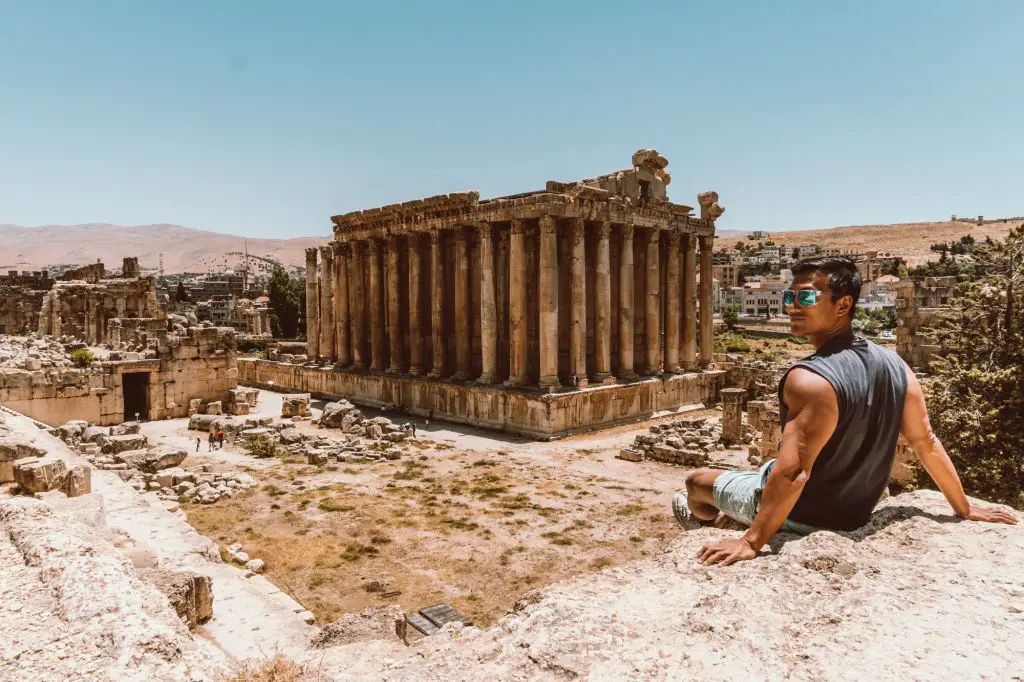
Visiting Lebanon in 2020 and Beyond

You’ll notice that prices of goods are drastically cheaper than they ever have been and will probably among the cheapest if not the cheapest country you’ll ever visit.
Black market currency
The official exchange rate of the Lebanese Pound/Lira is pegged at 1,500 to $1 USD. From 2019 and beyond, confidence has long disappeared for the Lebanese lira.
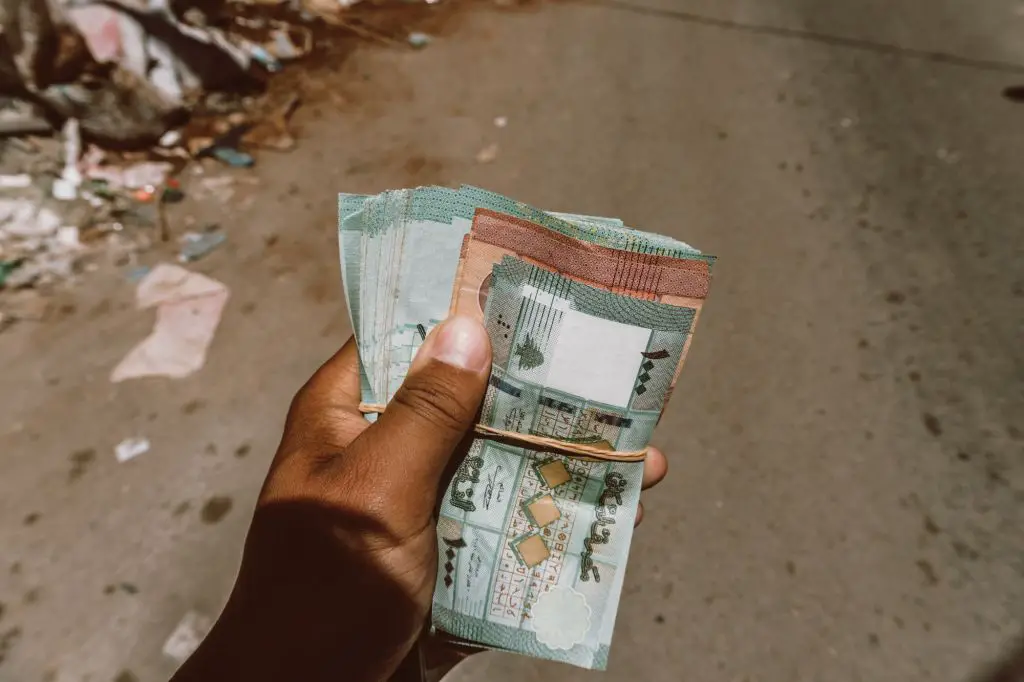
There is a parallel black market rate and at the time of writing this post, is more than 10x the official rate (15,000 Lira to the dollar). This rate will continue to change as time progresses.
You will want to bring USD or Euro cash into the country and exchanging it on the black market, thereby completely avoiding ATM withdrawals and credit card payments.
Make sure to read my guide on exchanging money in Lebanon before visiting!
Getting around Lebanon: Rent a car or do day trips?
Lebanon is a very small country. From Tripoli in the north to Tyre in the south, it is only 2.5 hours. From Beirut to Baalbek, it is 1.5 hours. That is the entire country.
Therefore, if you are staying in Lebanon for a long period of time and are looking to see more than Beirut, you might ask if it is worth renting a car or just simply doing day trips around the country?
Day trips from Beirut to the rest of Lebanon
Both are totally feasible and viable options. I met plenty of tourists that elected to just do day trips from Beirut. They didn’t want to rent a car and deal with the craziness of the Lebanese drivers and traffic. I can’t blame them!
From Beirut, you can see every place in Lebanon as a day trip. For example, Beirut to Saida and Tyre is a perfect day trip to the south of the country. You don’t need a ton of time to see the highlights of these towns. I actually elected to do this myself. I took two day trips: One day to Tripoli and Anfeh in the north, and one to Saida and Tyre in the south. The driver drove me around the entire time and stopped whenever I wanted.
The only downside to doing day trips throughout Lebanon is the constant driving. I found myself rushed to see things at times and once I got back to Beirut, I had to prepare myself for the crazy traffic getting into the city. I did a combination of hiring a driver for day trips, as well as renting my own car to explore the inland area of Lebanon.
In 2020 and beyond, it is very cheap to hire a car with a driver for the day. With the currency depreciation, it’s feasible to hire a driver for the entire day with gas included for $25-30 depending on your itinerary. Negotiate accordingly.
Rent a car in Lebanon
I rented a car for five days to see the mountain areas (Qadisha Valley), Baalbek, and the Bekaa valley. I rented a car after staying in Beirut for five days already. I rented from a company in the city center so I didn’t have to go back to the airport.
For a simple Nissan Automatic car, I paid $20 per day which seemed to be the going rate. This rate included
Driving in Lebanon
I’ll keep this simple. Drivers in Lebanon (and the Middle East as a whole) are crazy drivers. The driving habits in the Middle East can be summarized as “rules are guidelines”. I’ve never seen people stop so infrequently at stop signs and turns. When turning at an open intersection, normally you would look all directions to make sure cars aren’t coming. In Lebanon, cars just slowly drift into the road and you need to react accordingly even if it’s your right of way.
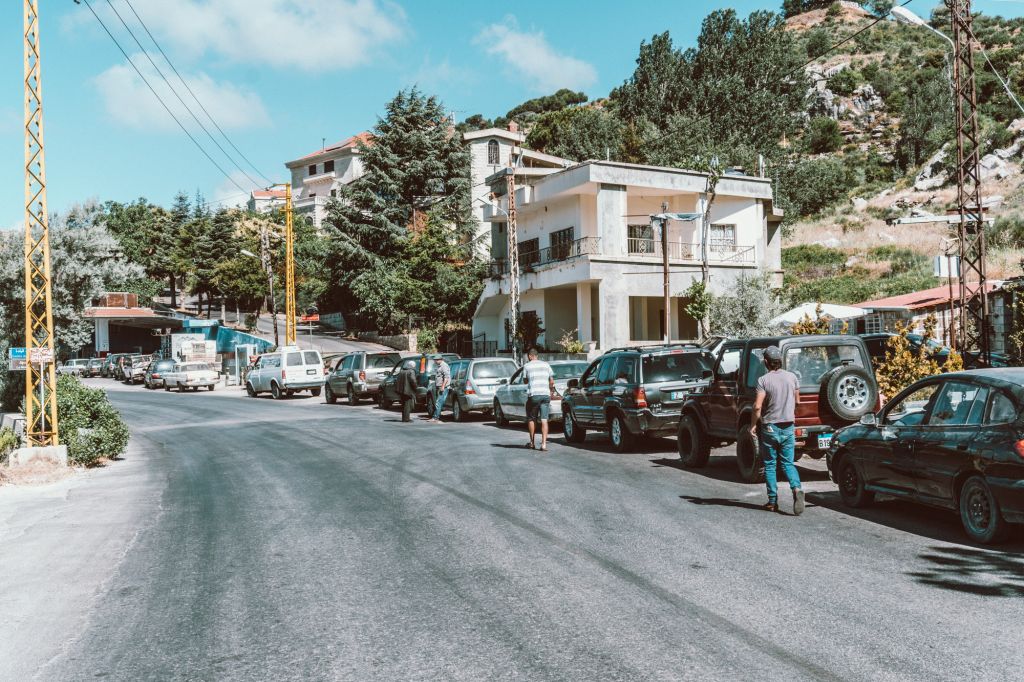
Is Lebanon Safe?
Somehow, someway, Lebanon has retained its reputation of being “dangerous” or “suspicious” in the world reputation scene. Sure they had a civil war many decades ago but there has been no conflict here for a long time. Nevertheless, the media has brainwashed people into associating Lebanon with instability and danger.
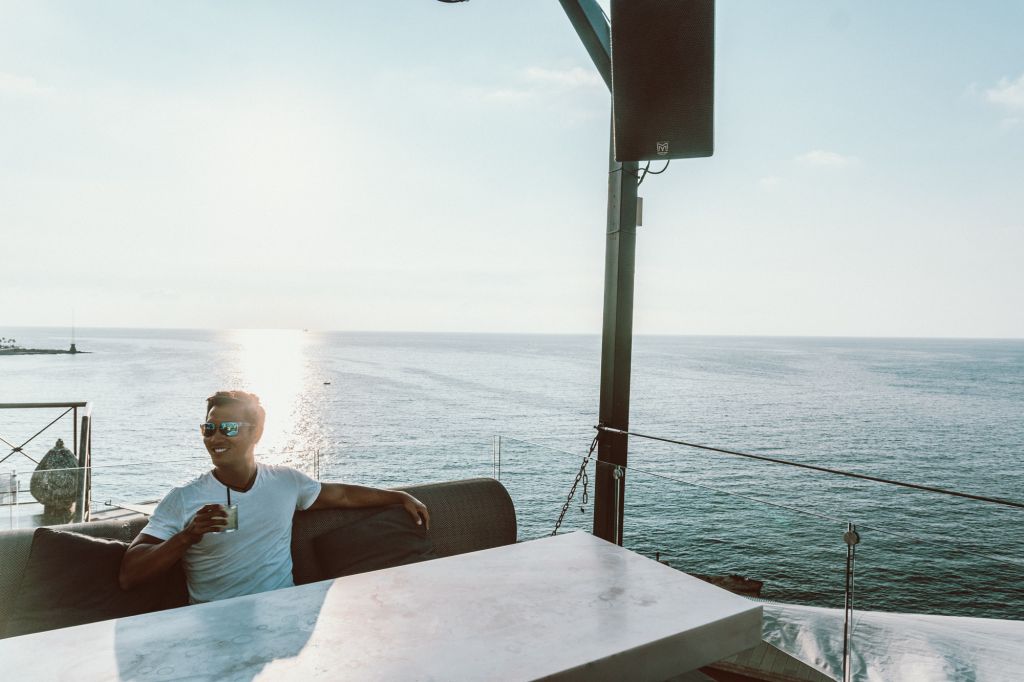
I’m here to say, it’s all complete nonsense. Do not listen to the media, and especially do not listen to your friends who heard something from someone.
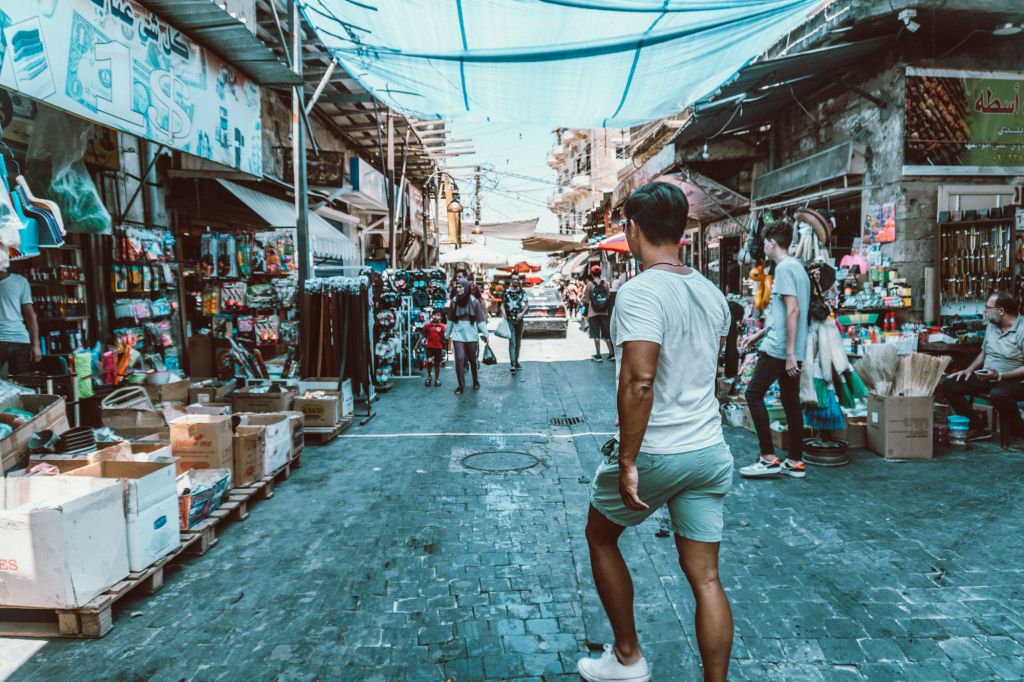
People in Lebanon are extremely friendly and there were constantly locals approaching me asking me how I liked the country and my stay. The sad part is every person was trying to convince me how Lebanon is not as dangerous as they make it out to be to which I had to reply of course I know this because why else would I be here?
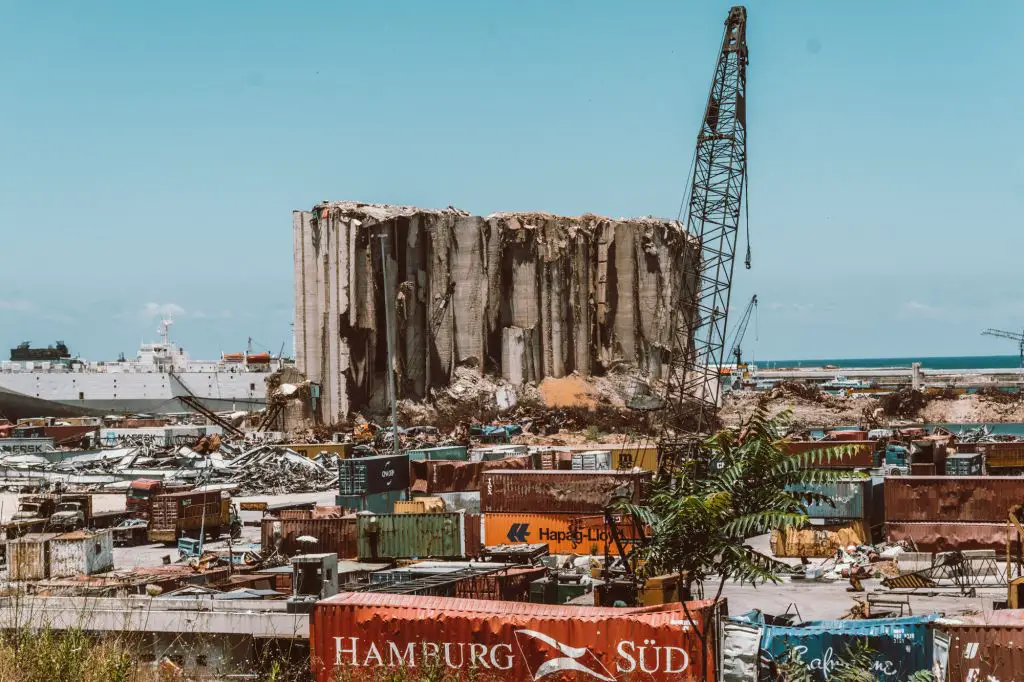
Where I went in Lebanon
I had a total of two weeks to see Lebanon. With this amount of time, it is enough to see the entire country in my opinion without feeling rushed. Even with one week, you could see the majority of the country although you won’t have enough time to settle down anywhere.
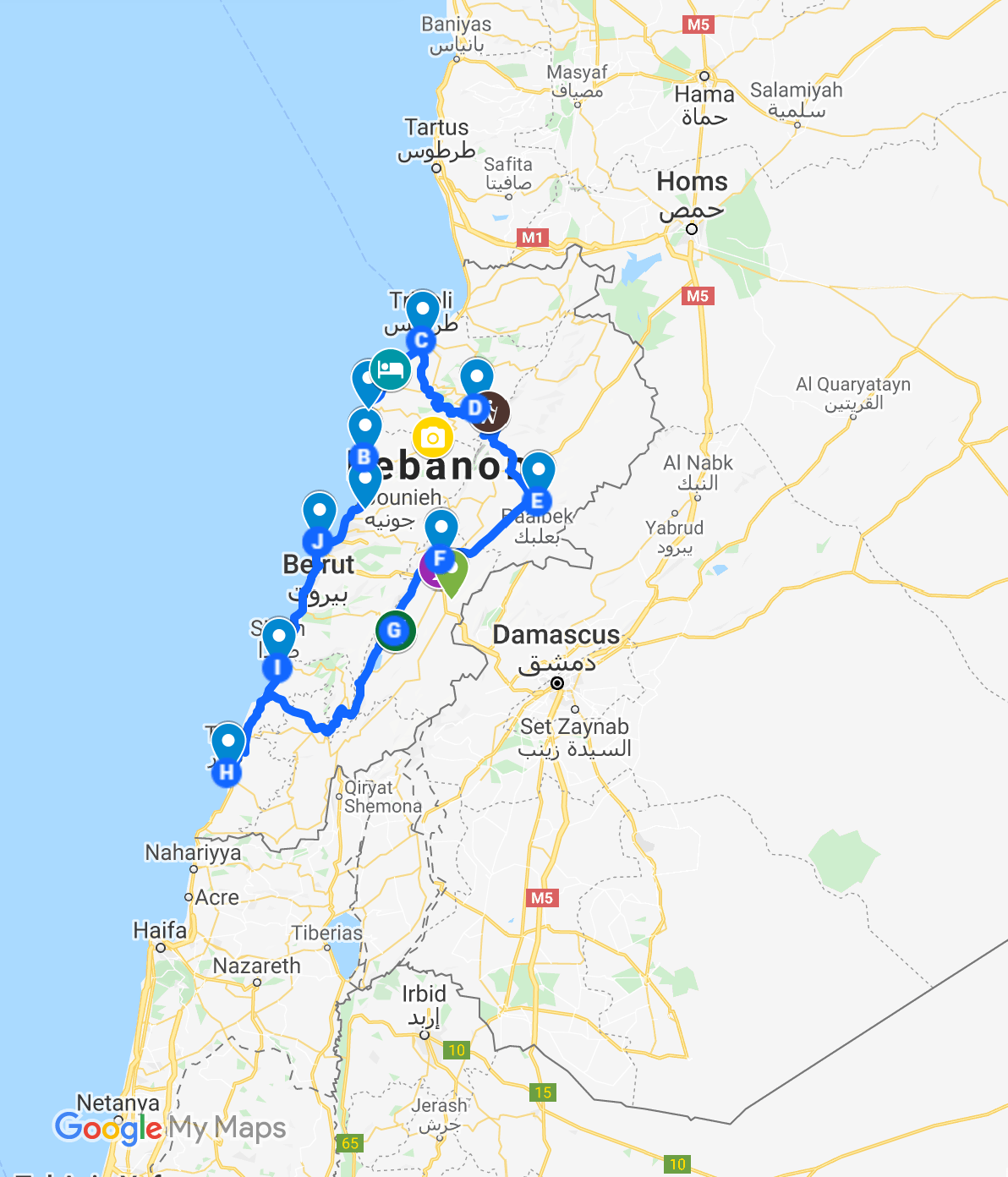
If these places are on your list of place to visit, then this is the itinerary for you. Don’t worry, I will have plenty of itinerary examples depending on the amount of days you have to travel.
- Qadisha Valley (Bcharre town and the Gods of Cedars)
- Zahle and the wine region
I spent a lot of days in Beirut as I wanted to experience the famous Beirut nightlife and have my share of delicious Lebanese food.
From Beirut, I took day trips to Tripoli in the north and Saida/Tyre in the south. Following this, I rented a car and went to the Qadisha Valley and stayed in the town of Bcharre. Then I went to Baalbek to see the Roman Ruins.
Full map of my Lebanon Itinerary
Beirut, the Capital of Lebanon
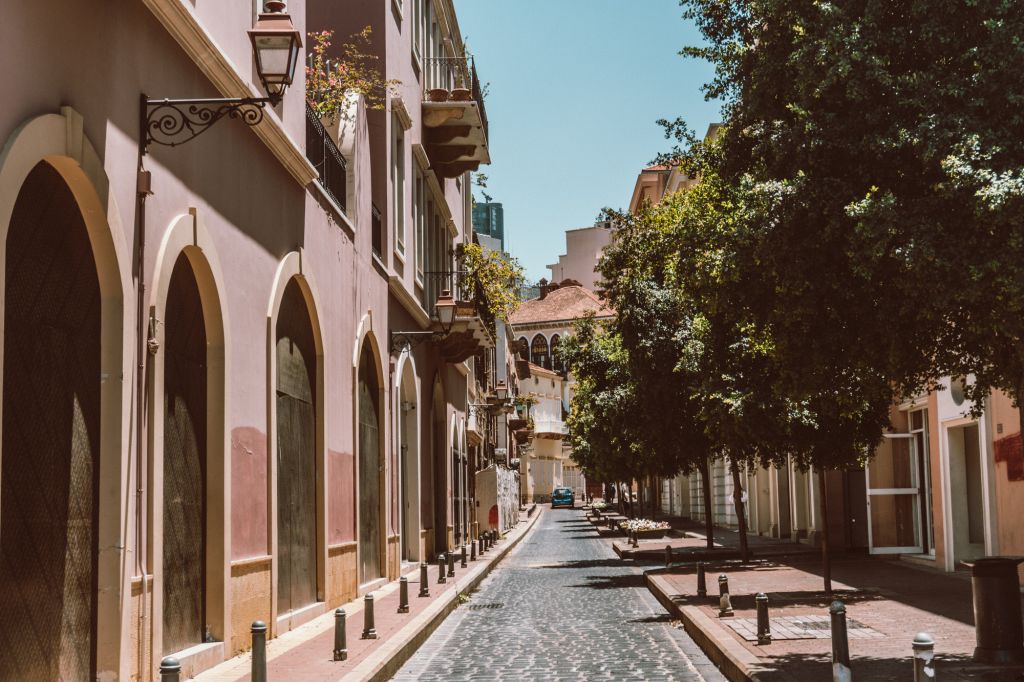
Therefore, Beirut will be everyone’s first experience to Lebanon. And it’s a good first experience in my opinion!
Beirut was once considered the Paris of the Middle East. It’s by and far the most liberal city in the Middle East. Tossing aside the fake glitz of the UAE, Beirut is also the most cosmopolitan city as well. The nightlife in Beirut is world famous with its nightclub scene one of its highlights. While I didn’t visit any nightclubs due to Corona, I went to plenty of cocktail bars, rooftop bars, and lounges.
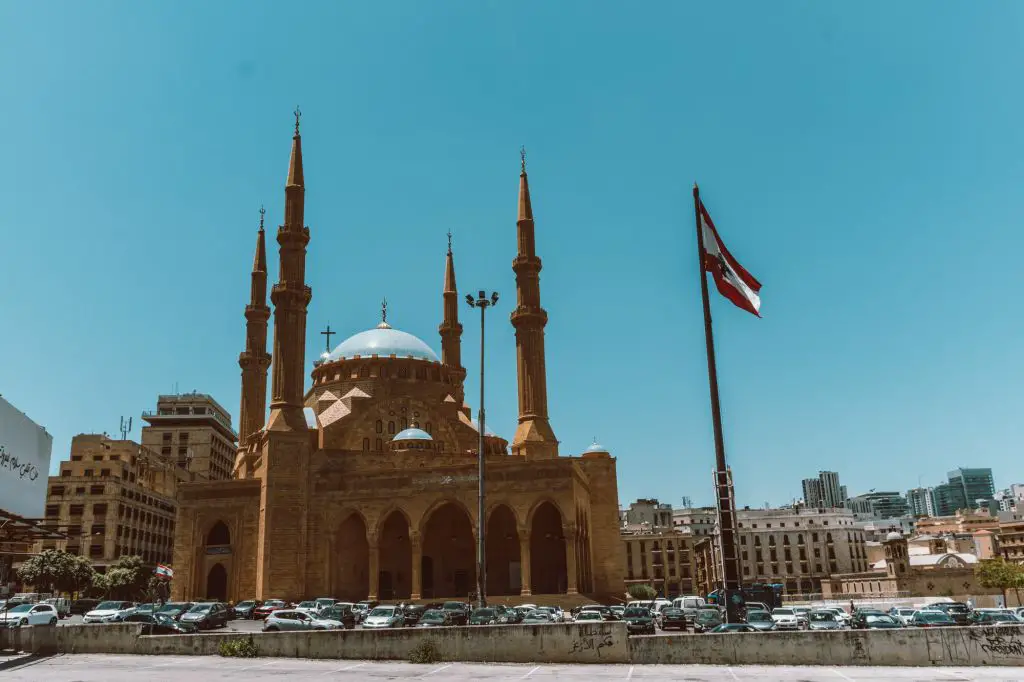
Everything is true.
Beirut is nothing like other cities in the Middle East and there’s more energy and vibrancy here than most other cities I’ve visited. People are extremely friendly and love to enjoy life.
Where to eat in Beirut
First thing’s first, Lebanon is all about the food. This is probably one of the main reasons I came here. I absolutely love everything associated with Lebanese food. Hummus, Tabouleh, Moutabal, Kofte, Kebabs, Fattoush, Falafel, etc. you name it, I will eat it.
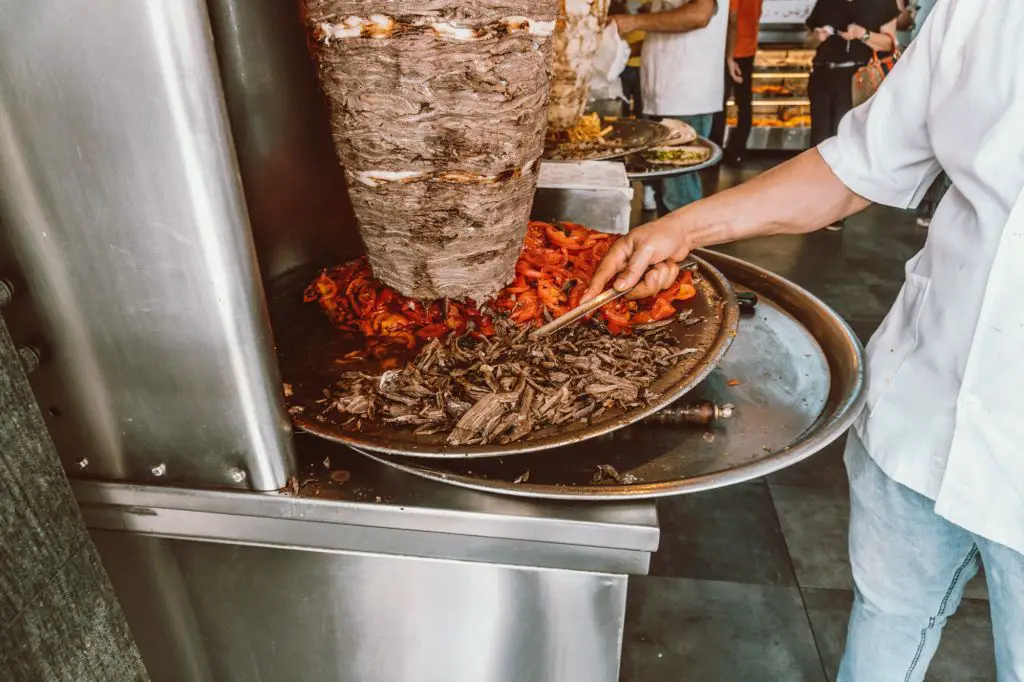
Here are a list of my favorite restaurants:
- Em Sherif: There are multiple locations but make sure to visit the original and the one with the Rooftop bar
- Loris Restaurant:
- Restaurant Joseph: For the best schawarma street food in town, look no further than Restaurant Joseph which has been slanging out the goods for a long time.
In addition to Restaurants, there are so many good cocktail bars, wine bars, and the like. I had some of the best cocktails of my life in Beirut.

- Ales and Tales
- Cyrano Cafe
- Electric Bing Sutt
- Aaliya’s Books
Go to the Harissa Cable Car for amazing views

It’s well worth a visit and I loved coming here around sunset time. Make sure to grab drinks at the Bay Lodge hotel which has dead on views of the Bay. Finish it off with dinner at Al Sultan Brahim and your night will be complete.

Saida and Tyre
Sidon, on the coast 48 kilometers south of Beirut, is one of the Famous names in ancient history. But of all of Lebanon’s cities this is the most mysterious, for its past has been tragically scattered and plundered. In the 19th century, treasure hunters and amateur archaeologists made off with many of its most beautiful and important objects, some of which can now be seen in foreign museums.
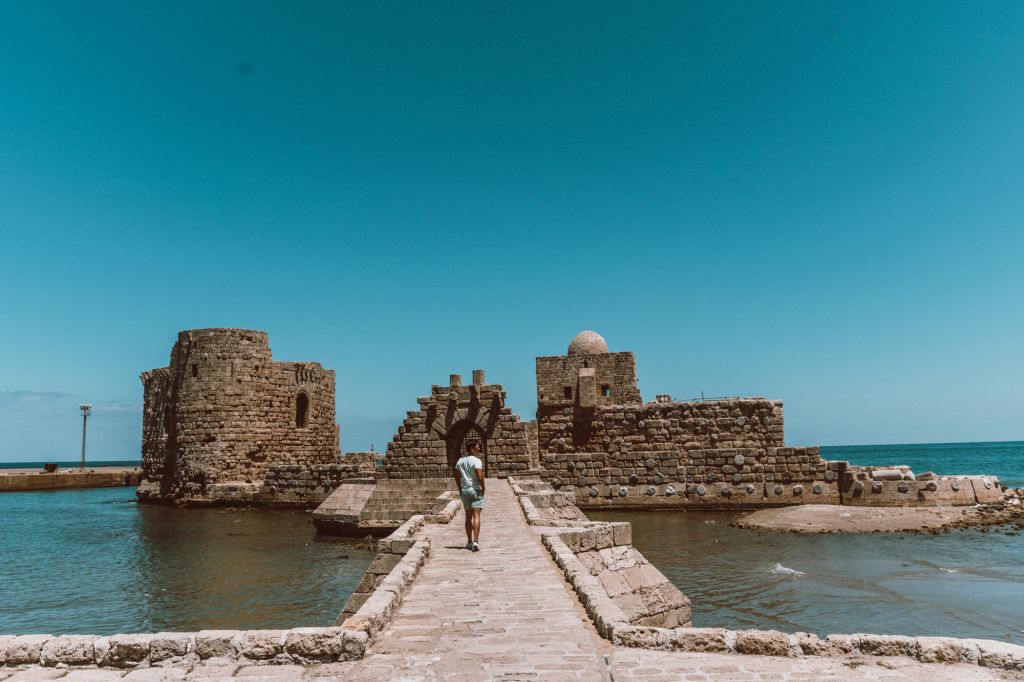
After the fortress, the Souk is the main point of interest in Saida. Get lost in the narrow streets and see how the locals live.
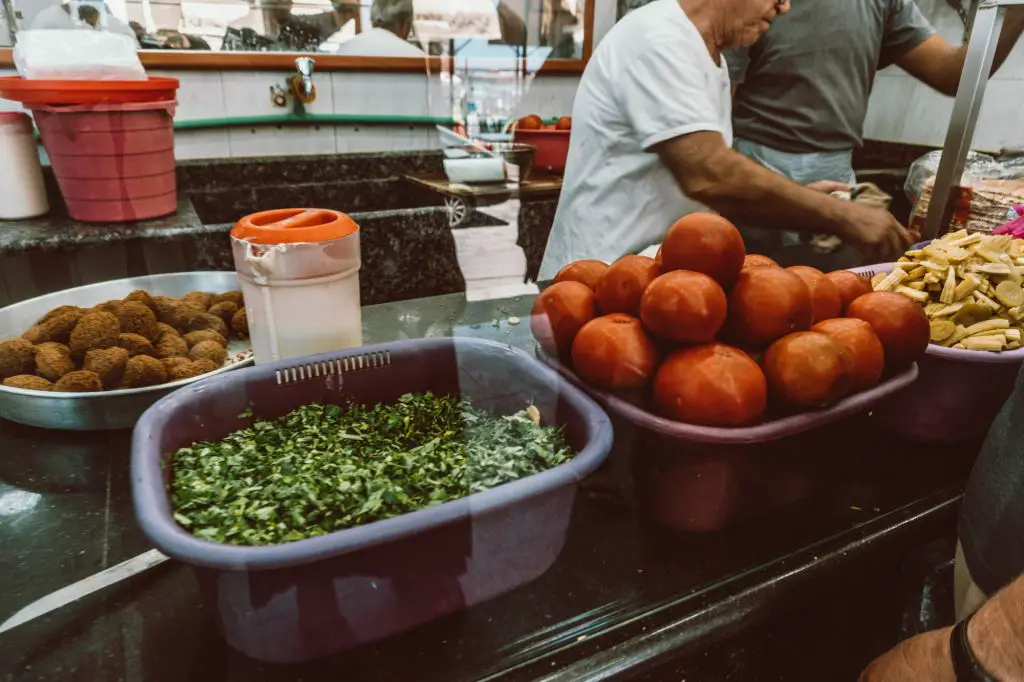
The beaches are very nice in Lebanon with huge sandy strips and azure colored waters. I didn’t spend much time on the beach unfortunately but I did visit the famous Cloud 59 Beach bar for a quick drink and a shisha.
Tripoli and Anfeh
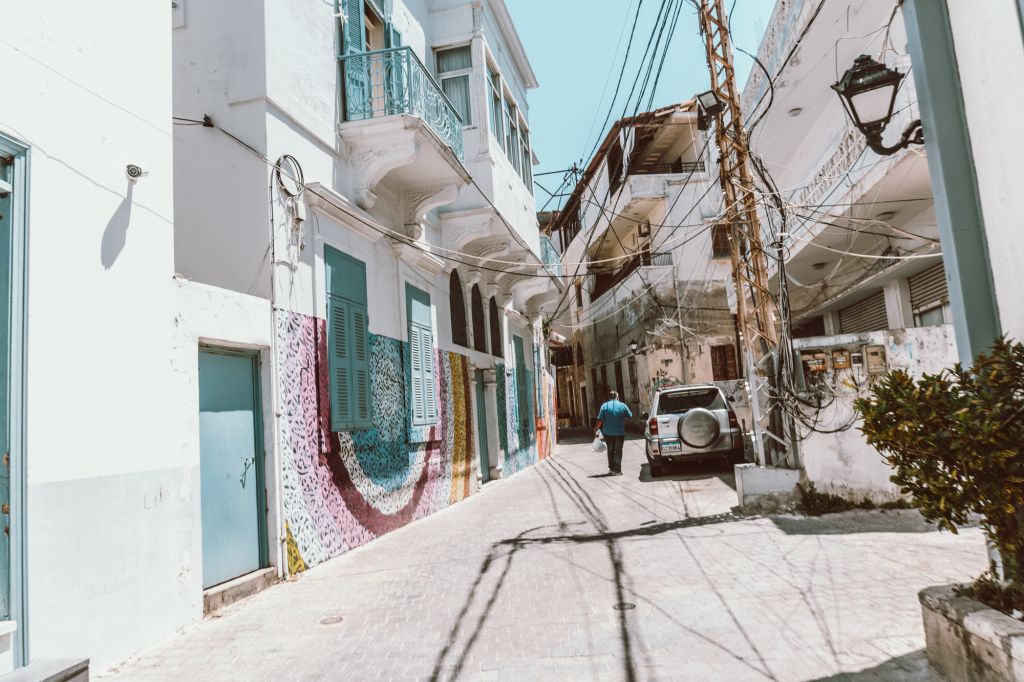
The traffic in Tripoli is a bit crazy so I’m glad I came here with a driver who took care of it all. Nevertheless, the souk and the fortress in the center of the city are quite impressive.
The views from the fortress of the Mediterranean sea and the city of Tripoli are beautiful. I don’t think you need to spend much time here unless you have a guide who can give you a proper tour of the city.
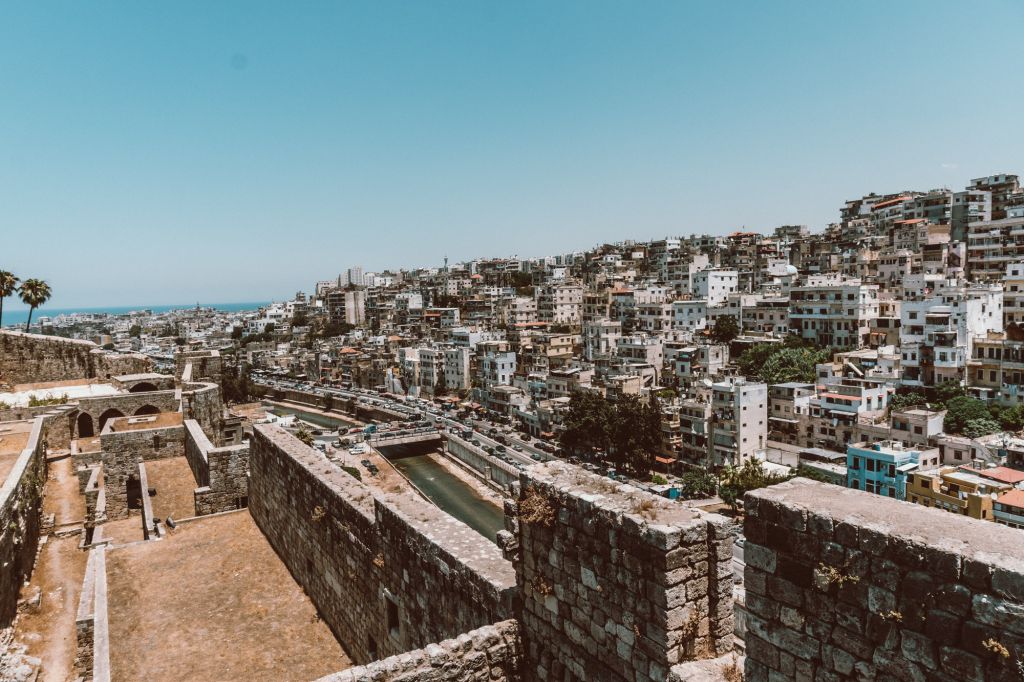
Nearby to Tripoli is the coastal town of Anfeh. It was highly recommended to visit as it is considered the Mykonos of Lebanon . There is a strip along the water that contains many white washed houses and blue painted outlines. It does resemble the architecture of the Cyclades a tiny bit. However, you will not find the charm of the Cyclades here. It’s best just to take a flight to Athens and then visit the CYclades instead!
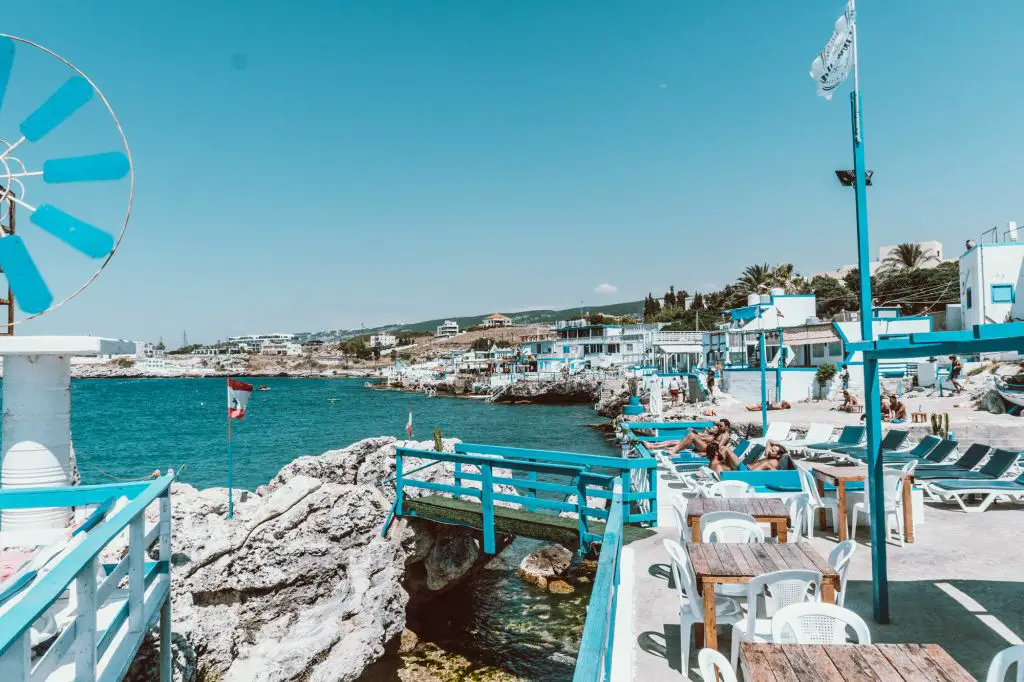
I did stop here for a seafood lunch which was quite delicious before heading back to Beirut.
Qadisha Valley
The Cedars of God Forest is one of the last vestiges of the ancient cedar forest of Lebanon that covered much of the Land of Cedars. The Bcharré site is classified as a “forest reserve” and registered on the World Heritage List by Unesco, along with the neighboring Qadisha valley.

The emblematic tree of the country is becoming rare. The Lebanese forest and its legendary perfumed scents now represent only 7% of the territory. However, we can still admire beautiful relics in the forest of Bcharré, on Mount Lebanon.
This forest is nestled on the western slope of Mount Lebanon on Mount Makmel, between 1,900 and 2,050 meters above sea level, east of the village of Bcharré, which gave it its name. It is smaller than the cedar forest of Chouf, with only 375 trees, but is home to the oldest cedars, some over 3000 years old! One will not fail to admire the famous Cedar of Lamartine, where the famous French poet was ecstatic in 1832. In winter, the place is a ski slope!
Lebanese people are crazy about their Cedar Trees
The Qadisha Valley is famous for its large cedar forests. I will say that it is quite unique and spectacular to see these types of trees in what you’d expect to be a desert landscape. I wouldn’t have thought these Christmas tree lookalikes would grow in such a climate.
There are a lot of these trees too which is why it is the symbol on the Lebanese flag. However, having grown up in the Pacific Northwest of North America, cedar and pine trees were literally dotting every square inch of the landscape I had in my backyard. Not to say that the Gods of Cedars park isn’t cool, but I guess I am just too used to it. I probably would skip the Qadisha Valley if I was limited on time.
Visit the Shouf National Park
One of the constant recommendations I received from people is to visit the Shouf National Park southeast of Beirut. Apparently these forests are much bigger than in the Qadisha Valley. However, I think this would be at the bottom of my list of to-dos given where I’m from!
Baalbek Roman Ruins

Like Petra in Jordan , Baalbek alone deserves the trip to Lebanon. Located in the Bekaa plain in the east of the country, this UNESCO World Heritage Site is home to some incredibly well-preserved temples. Emperor Augustus had undertaken to build the largest acropolis in the Roman world there. Gigantic remains of this crazy enterprise remain, among the most interesting bequeathed by the Roman Empire.

The temples of Venus, Jupiter and Bacchus, one of the best-preserved temples in the Greco-Roman world, are the highlights of the visit. The work started during the reign of Augustus, around 14 BC. AD, continued until at the end of the 2nd century AD. The name comes from the god Baal, deity of the storm and the rain, worshiped by the Phoenicians and the Canaanites, then the city was baptized Heliopolis at the time of the Greeks, Helios being the god of the sun. Since 1955, Baalbek has hosted a world famous international festival every summer in August.
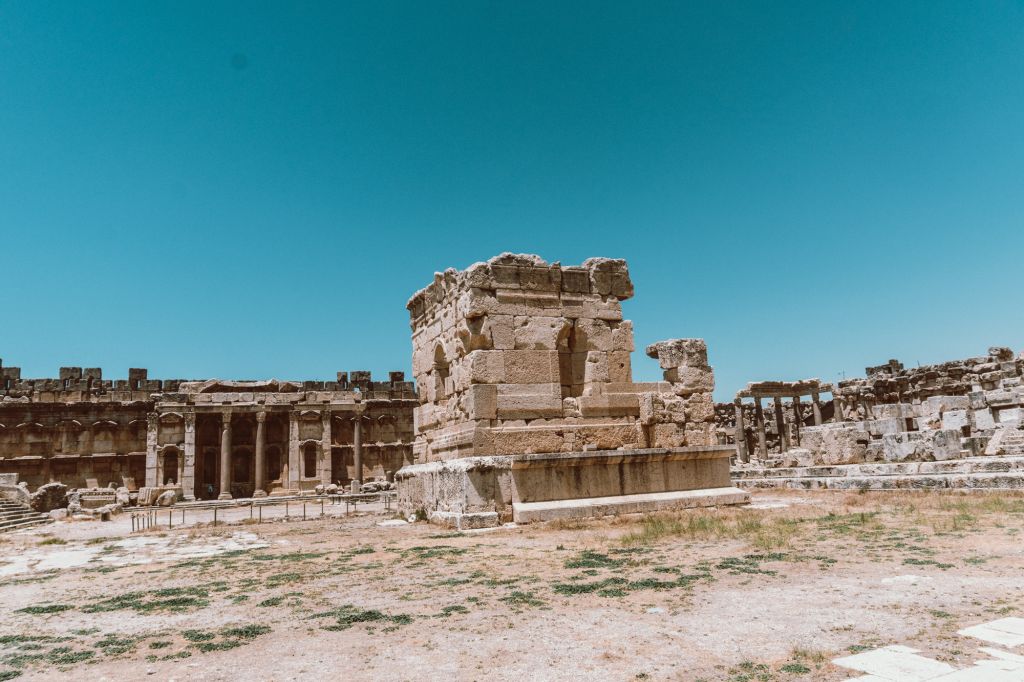
Artists from all over the world come to perform on the spectacular ruins: ballets, orchestras, soloists, lyrical, jazz or variety singers, as well as theater companies, in a most spectacular setting! Baalbek hosts a world famous international festival every summer in August.
Take many photos
I spent a few hours walking around the ruins taking photos. I couldn’t believe how amazing and the conditions the ruins were still in. The Temple of Bacchus is probably the highlight. It’s the same size as the Parthenon in Athens but in much better condition. Most of the pillars are still in tact, and the inside is completely in tact.
I think some of the best photos are taken directly watching the Temple of Bacchus near to the leftover pillars of the temple of Jupiter. Nevertheless, everywhere I turned was a good photo opportunity so you won’t have any shortage of inspiration here.
The best part of the experience was the lack of crowds. It reminded me of the incredible Roman Ruins in Dougga, Tunisia where I was essentially the only tourist there. There were more people in Baalbek than in Dougga, but you never felt overwhelmed.

Zahle and the Bekaa Valley Wine Region

From Baalbek to Zahle is a quick 1 hour drive from Baalbek and was where I spent the next two nights. Zahle is a picturesque mountain town with great views of the valley. It’s home to a large Christian community and home to most of the wineries in Lebanon.
I spent most of my time visiting different wineries in the region.
Stay at the Grand Kadri Hotel
I stayed at the Grand Kadri Hotel in Zahle. It is definitely one of the nicest hotels in town and you can tell the people that come here are not worried about the devaluation in the Lebanese Lira. The breakfast was good and the shisha from the courtyard was also superb.
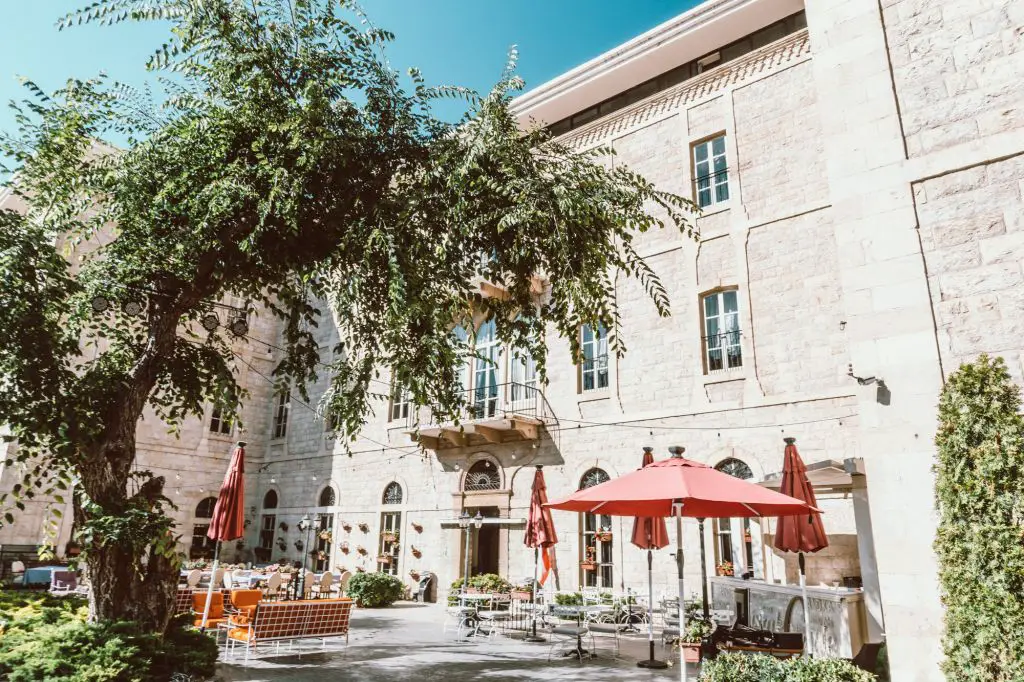
Ksara is located just outside of Zahle town. It is the largest winery in Lebanon accounting for almost half of the total production. The estate is beautiful and you can come taste wine or go on a tour at any time.
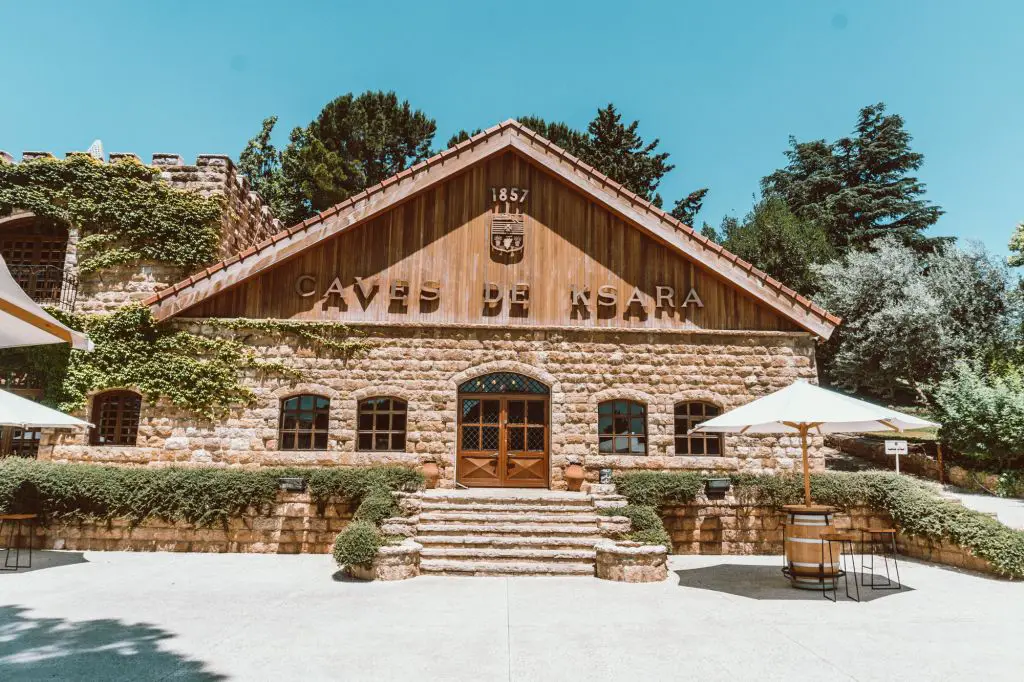
The history behind wine making in Lebanon dates to pre Roman times. The cellars at Ksara are some of the oldest in the world and they are still used to help in the aging process.
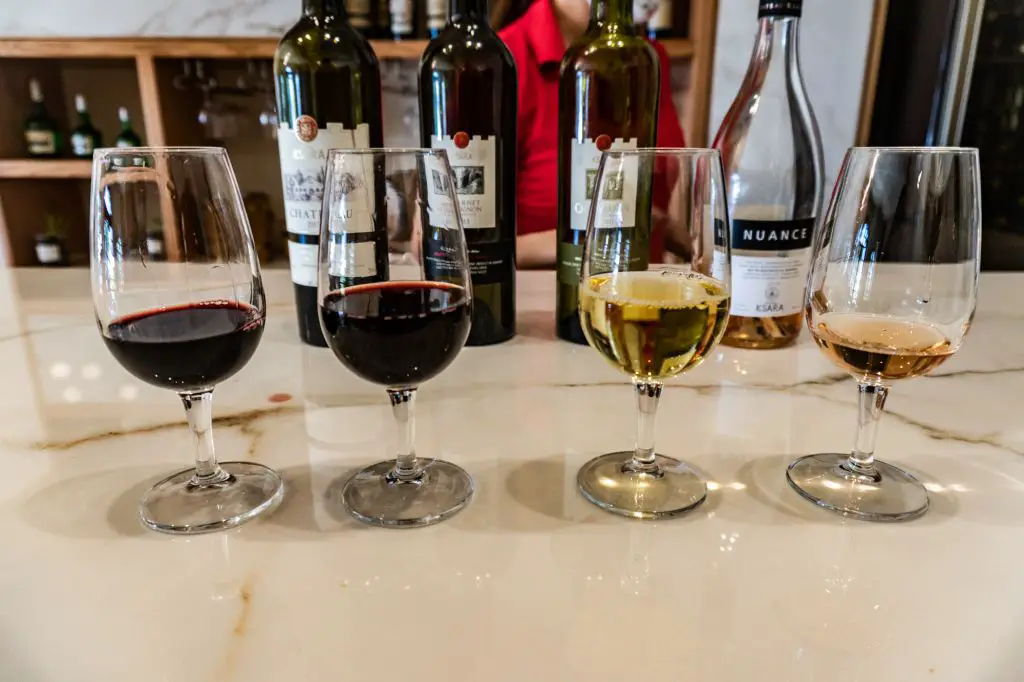
Kefraya Winery
Kefraya is the second largest winery in Lebanon. Kefraya and Ksara were wine brands I’d seen numerous times already as they are often times on the menus at restaurants.
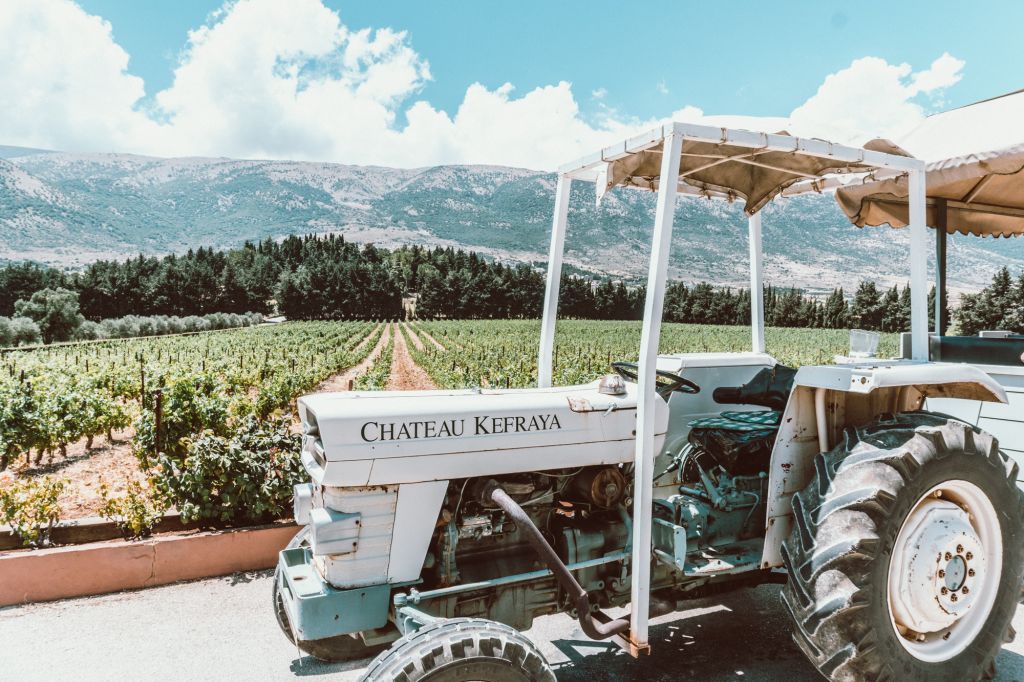
While Ksara is located in the town, Kefraya is located out of town in the wine country. It is the most picturesque winery as far as having a large estate overlooking the vines. It reminds me of the wineries in South Africa and it is definitely the place to go for a few hours.
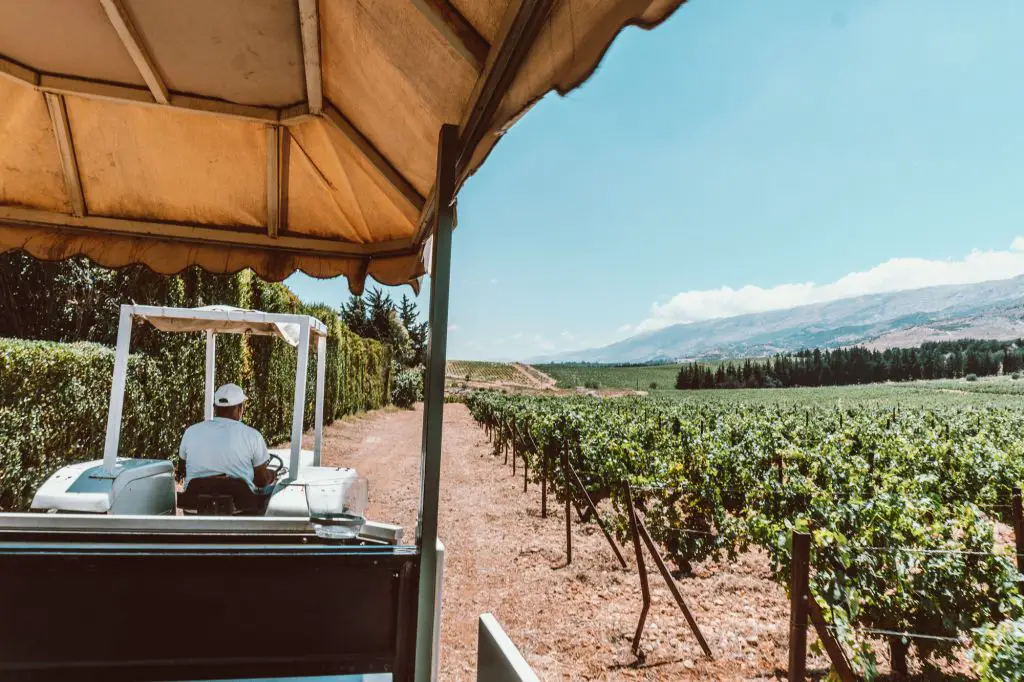
They offer tours that take you around the vineyards that includes wine tasting. I would highly recommend visiting this place.
The last stop on the wine tour is the St. Thomas winery. It was the only one still open at 4pm so I decided to pay them a visit. I ended up having a boatload of delicious and a nice long conversation with the owner about the current state of Lebanon which was quite enlightening.
Byblos and Batroun
The last part of the itinerary is to visit the coastal towns of Byblos and Batroun. You could technically do this at any point on the trip but I decided to save this for the end.

Byblos is the prettiest town in Lebanon
Byblos is by far the most beautiful town in Lebanon. Everyone recommended that I visit the town during my stay so of course I knew I had to.

Byblos is the most traditional and most picturesque town in Lebanon. The architecture and buildings date back hundreds and even thousands of years to the Phoenician and Roman times. It was the capital of the Phoenician Empire almost 3,000 years ago and has remained one of the oldest and continuously habited cities in the world (starting from 7,000 BC). It is a UNESCO World Heritage site and rightfully so.
Visit the Souk of Byblos
Byblos is a port town located just north of Beirut. It has a few beaches which are popular with Lebanese as a weekend getaway.

The Souk of Byblos is just one small street, but is very picturesque and you’ll inevitably find yourself here. I find the souk here to be a bit of a “premium souk” in that it was very clean, orderly, and without the chaos in other places I’ve been to in the Middle East.
Byblos Castle
Still standing tall is the Byblos Castle or Crusader Castle , built in the 12th century from indigenous limestone and the remains of Roman structures. Inside you’ll find the Byblos site museum, although a snap from the outside is a sight as is. The grounds are much larger than you’d expect so plan accordingly and roam freely.
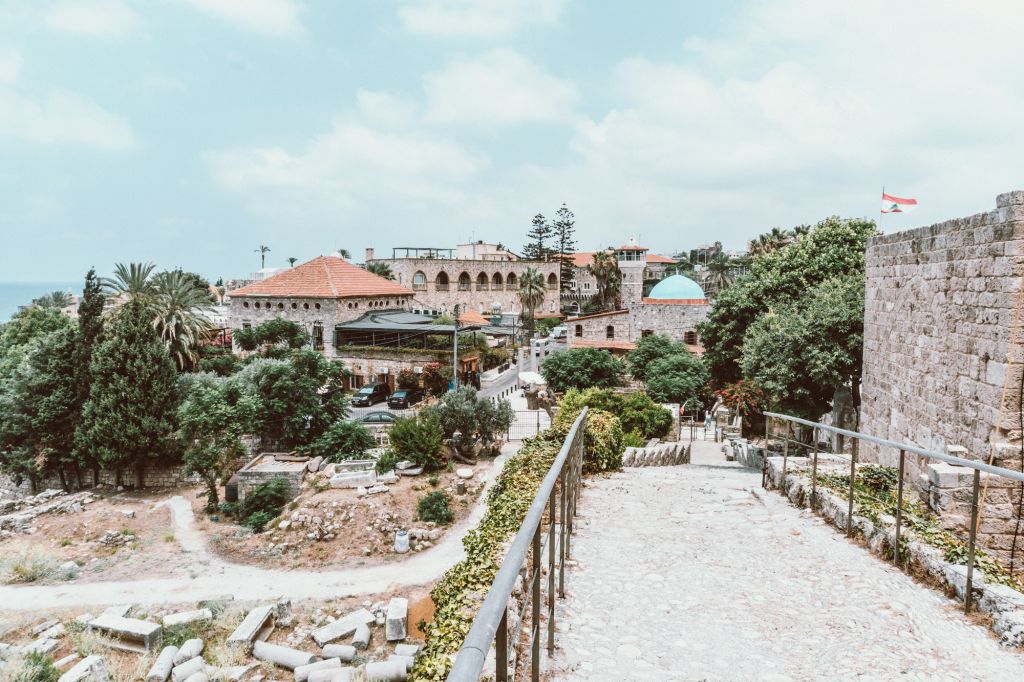
Enjoy the sunset from Kino Bar
Grab a drink on the beach at Kino Beach Bar which is an eclectic oceanfront bar that has the most inviting reclaimed wood decoration. The drinks here aren’t that great but the views are fantastic.
Finally, to finish it off, have dinner at Feniqia Restaurant which serves the best Lebanese food in town. I had all the delicious delicacies along with my shisha which is a must!
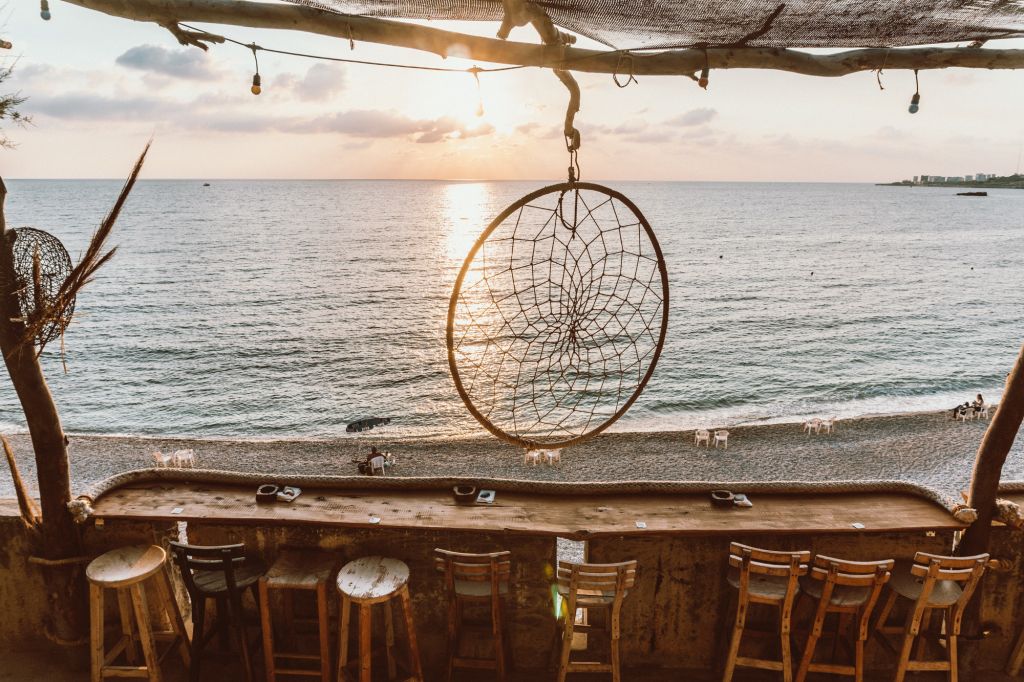
Stay at Byblos Sur Mer
There aren’t many hotels in Byblos unfortunately but the best option is definitely Byblos Sur Mer. It is a 4* hotel right on the water with ocean front views.
Day by Day Lebanon Itinerary
This is a run down of my itinerary day by day.
Day 1: Land in Beirut, explore Beirut Day 2: Full day in Beirut Day 3: Full day in Beirut, go to Jouneih to take the Harissa cable car for sunset Day 4: Full day Saida and Tyre day trip with a private driver Day 5: Full day Tripoli and Anfeh day trip with private driver Day 6: Beirut to B’charre in the Qadisha Valley Day 7: Qadisha Valley to Baalbek Roman Ruins, stay in Zahle Day 8: Full day wine tasting near Zahle Day 9: Zahle to Byblos Day 10: Full day in Byblos Day 11: Back to Beirut Day 12: Fly home
My itinerary is a bit all over the place. I had a lot of time in Lebanon and elected to spend much of it in Beirut. I really liked the vibe in the city and decided to make the trip more about city life than about the nature.
How to plan a one week itinerary for Lebanon
I had almost two weeks for my trip in Lebanon. I know not everyone will want to dedicate such amount of time to the country so in this section I will offer up suggestions on how to plan your trip if you only have one week. I will use a 7-8 day time frame for this itinerary and of course, you can ask in the comments below any questions on how to amend said itineraries.
Note that I prefer renting a car and driving around Lebanon as opposed to organizing day trips every day from Beirut. If you are uncomfortable driving a car in Lebanon, simply make the itinerary day trips from Beirut.
Day 1: Land in Beirut, explore Beirut Day 2: Full day in Beirut Day 3: Full day Tripoli in the morning, afternoon in Byblos, spend the night in Byblos Day 4: Byblos in the morning, Jouneih and the Harissa Cable car in the afternoon Day 5: Drive to Baalbek and visit the Roman Ruins, drive to Zahle afterwards and spend the night there Day 6: Visit the wineries of Zahle, afternoon in Anjar town Day 7: Drive to the Shouf National Park, back to Beirut in the afternoon Day 8: Fly out
Continue Reading:
- The Perfect One Day Itinerary For Cape Town’s Wine Region – Stellenbosch
- Why South Africa Is The Perfect Destination To Learn English
- The Perfect Cyprus Travel Itinerary: One week to Two Weeks
- Guide to Visiting Cape Town
- Exploring the Douro Valley: An Epic Day Trip From Porto
- The Ultimate Piedmont Travel Itinerary And Guide: Italy’s Most Underrated Wine Region
- The Perfect Moldova Travel Itinerary: Chisinau, Transinistria, And Cricova
- The Ultimate Two Week Travel Itinerary For Turkey
- The Perfect Provence, France Itinerary: Wine Tasting And The Cote D’Azur
- The Perfect One Week, Two Week, and Three Week Travel Itinerary For South Africa
- The Absolute Most Beautiful Villages Along The Mosel River, Germany
- The Perfect Romania Travel Itinerary: Timisoara, Cluj-Napoca, Sibiu, Brasov, Bucharest
- The Ultimate One To Two Week Travel Itinerary For Guatemala
The Perfect One Week Itinerary For Greece
Related posts.

The Perfect Sri Lanka Travel Itinerary: One Week, 10 days, and Two Weeks

The Perfect Fiji Honeymoon Itinerary: One To Two Weeks

The Perfect Fiji Travel Itinerary: Beaches, Diving, and Island Paradise

The Perfect Vietnam Travel Itinerary: One Week, Two Weeks, and Three Weeks
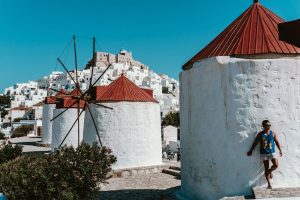
The Perfect Two Week Travel Itinerary For Greece

Leave a Reply Cancel Reply
Your email address will not be published. Required fields are marked *
Yes, add me to your mailing list
Add Comment *
Save my name, email, and website in this browser for the next time I comment.
Notify me of followup comments via e-mail. You can also subscribe without commenting.
Post Comment
Hi Johnny! This post was extremely detailed and helpful — really appreciate the thoroughness! I’m interested in hiring a private driver for day trips and wanted to know if you could share where you found a reliable driver / contact information. Thanks!
Hi my driver was recommended to me by my Airbnb host! He was fantastic. Plz msg me on insta and I can across his details.
May I ask to which places you hired a driver and if you rented a car? etc?? How you found fair and reliable services? I’m not sure how to go about planning my transportation. There will be 3 of us and we will have about 3 weeks. Thanks!
Hi Abigail! Yes I hired a driver for day trips to tyre and another day trip to tripoli. The car was rented to go and see the places in the mountains and baalbek
Such a fantastic information about Lebanon ! I am truly impressed andI would surely want to go there. Many many thanks !
Glad you found it helpful!
Can I connect with you over whats app..i am on +44 7774109596

travel more & worry less
A 10-day lebanon itinerary.
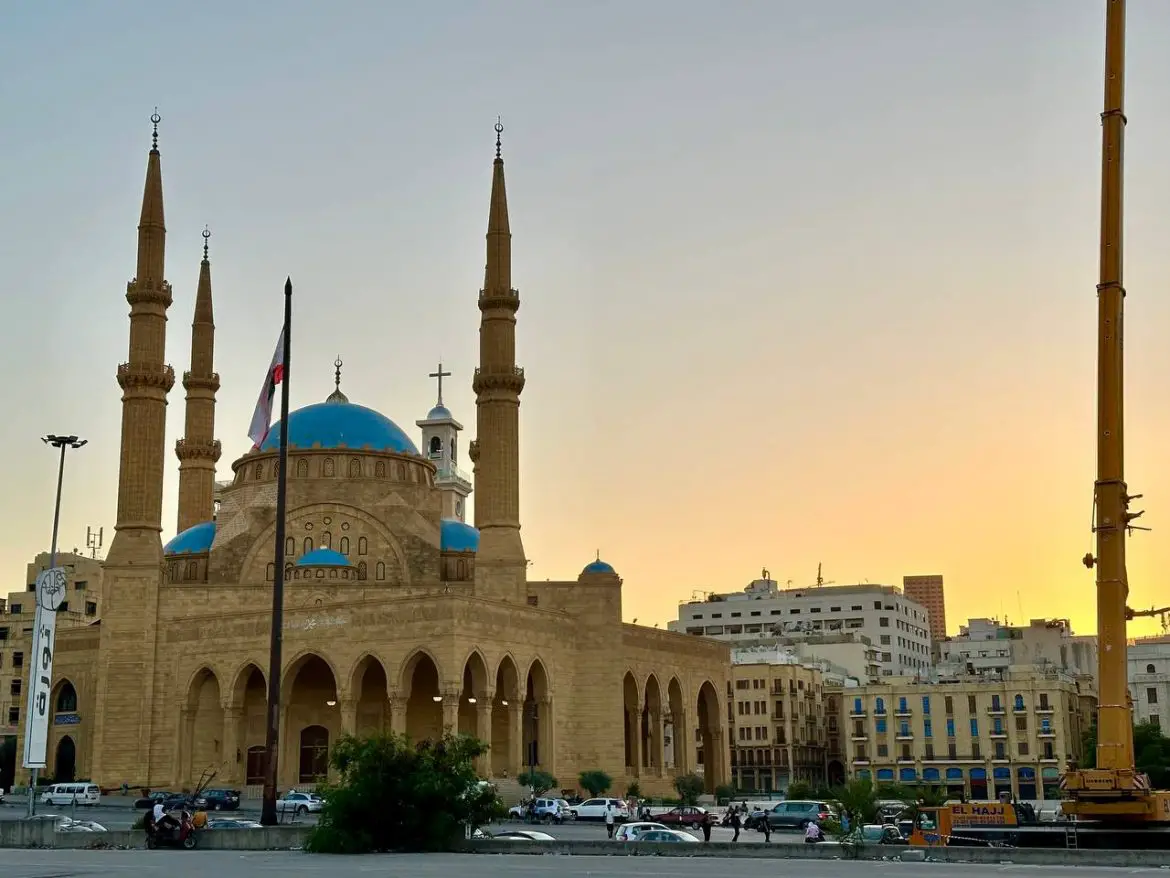
This 10-day Lebanon itinerary was a little dream come true kind of experience. I’ve wanted to visit Lebanon for a long time and was very excited when I finally started to plan this trip. So, if you’re also planning (and dreaming) of visiting Lebanon , I can help you organize the perfect trip.
In the next lines, I will be sharing my exact 10-day Lebanon itinerary with you with practical tips for your visit, including how to get around and what the current economic situation is.
NOTE: Please note that this Lebanon itinerary doesn’t include visiting places such as Jeita Grotto, Harissa, and the popular destination in the south of Lebanon, Tyre and Sidon. It also doesn’t include the Baatara Gorge waterfall, a place that I would have loved to visit, but in autumn, when we traveled to Lebanon, there was no water in the waterfall, so you don’t get the full experience of visiting. If you want to visit the waterfall, make sure you plan your Lebanon itinerary during the springtime. And also, if you want to visit any of the places I mentioned that are not included in this itinerary, you can still do so by spending less time in some of the other places covered here.
Table of Contents
Highlights of This 10-day Lebanon Itinerary:
- Visit of the oldest continuously inhabited cities in the world.
- Learn about Lebanon’s turbulent past.
- Enjoy visiting some of Lebanon’s natural wonders.
- Immerse yourself in Lebanon’s ancient past and cultural heritage.
- Relax by the tranquil Mediterranean beaches.
Brief Lebanon Itinerary
Day 1-2: explore beirut.
Known as the “Paris of the Middle East” during its Golden Age, Beirut is a chaotic blend of modern and ancient charm, history, culture, and nightlife. Nowadays, unfortunately, the city is no longer as beautiful and attractive as it has been in its glory days, but it is absolutely worth visiting nonetheless. Beirut has literally survived the test of time and many battles and proudly wears its scars.
For those who don’t know or don’t remember, Beirut experienced one of the largest non-nuclear explosions in recent history. That was in 2020. The year before that, the Lebanon crisis began. The World Bank has classified the Lebanese crisis as one of the 10 worst economic crises globally since the 19th century – and possibly even as one of the top three. (And so much more happened in Lebanon before these two events) I won’t go into details about the crisis, the reasons for it, and such; the point of mentioning this was to say that now, amid economic crisis and political dysfunction, many of Beirut’s homes near the port (where the explosion happened) remain in ruins (and their tenants in limbo). And that might be a strange thing to say, but that site is actually quite unique.
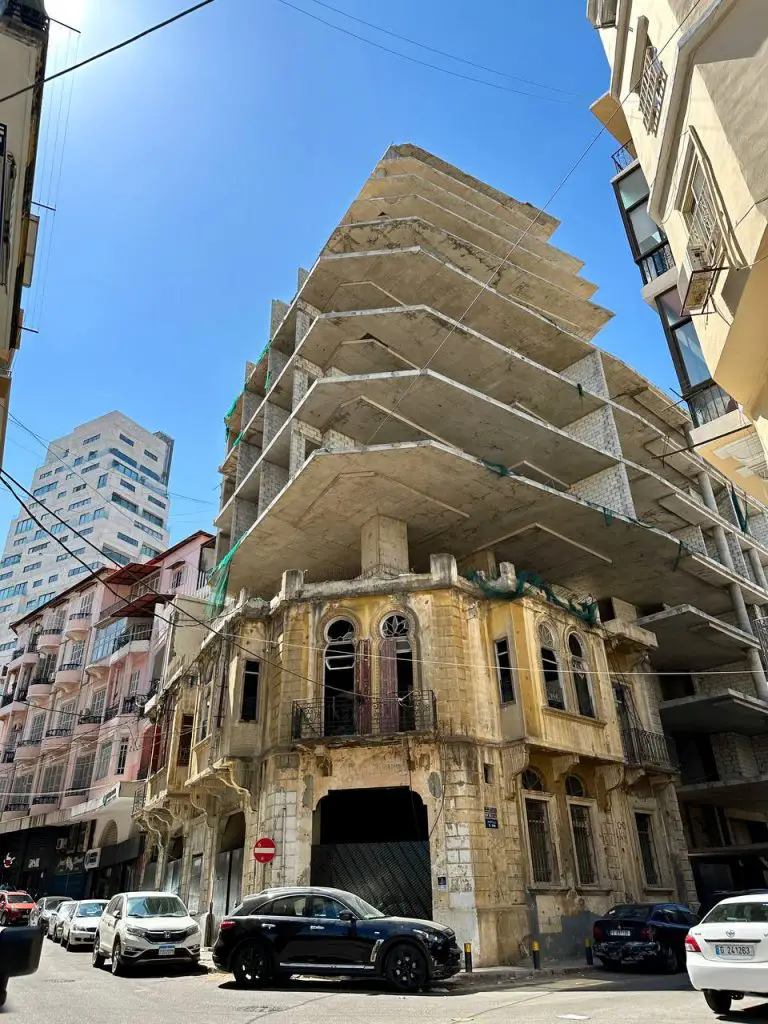
See, while exploring Beirut, you can pass by a building destroyed by the explosion, and just a few steps away, there is a fancy restaurant, cafe, or boutique standing right next door. Fascinating really. It might not be everyone’s thing, but witnessing the city’s destruction and the way that local people survive everything that has happened to them was absolutely one of the highlights of my 10-day Lebanon itinerary.
But don’t let that put you off, as Beirut has so much more to offer. Another unique sight in the heart of Beirut is the Mohammad Al Amin Mosque, standing side by side with the Saint George Maronite Cathedral. Not everywhere can one see a mosque and a church standing next to each other. From a certain angle, it even looks like the cross of the church is sitting at the top of the mosque.
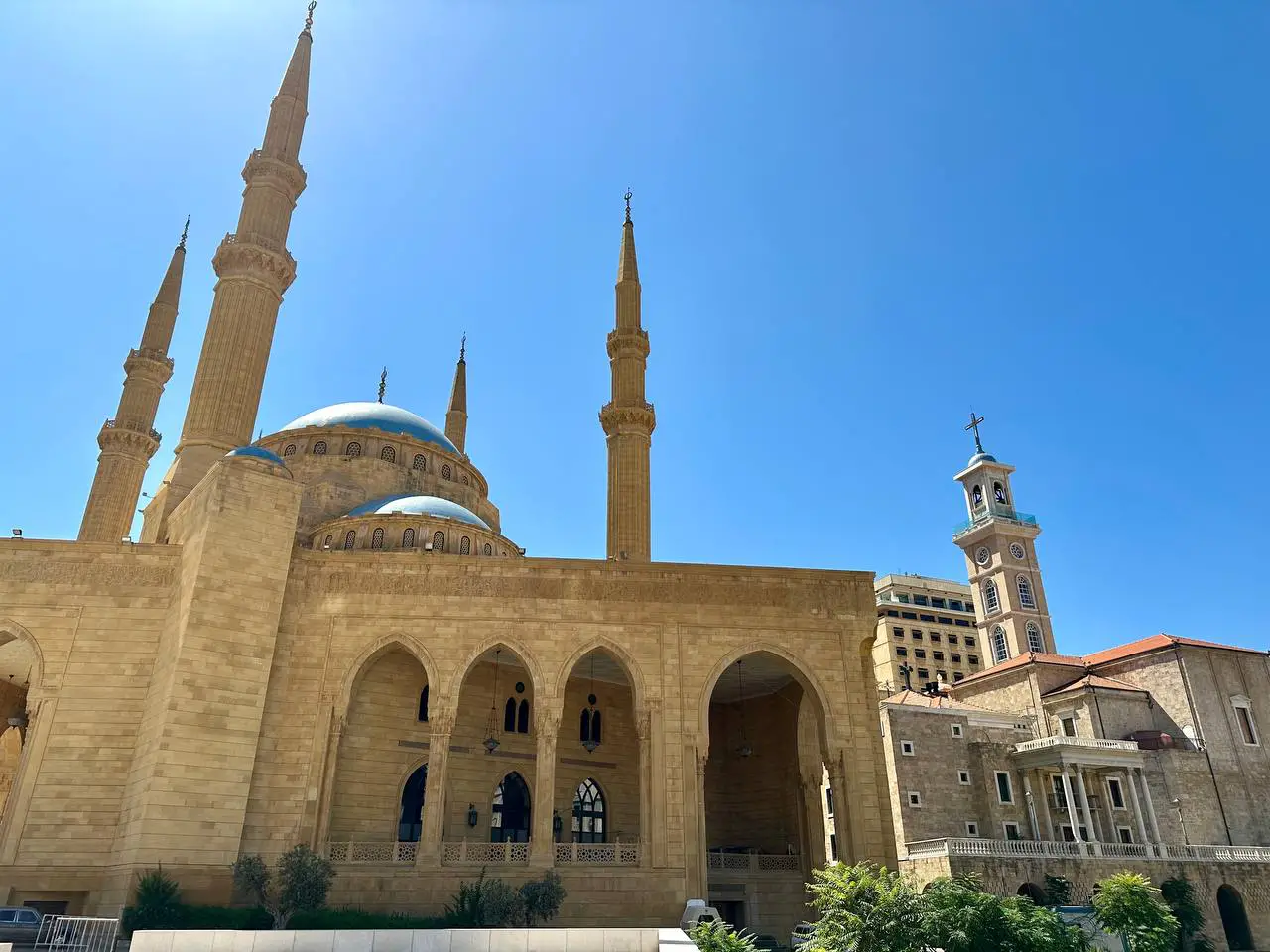
Some of the best things to do in Beirut include:
- Explore Downtown Beirut
- Stroll the Corniche
- Shop at the Beirut Souks
- Visit Martyrs’ Square
- Walk along Gemmayzeh Street
- Go to the trendy Mar Mikhael neighborhood
- See the Pigeon Rocks
- Admire the street art
- Take a picture at the I Love Beirut sign
- Hang out at Zaitunay Bay
- Eat at the famous Beirut restaurant Le Chef
- Experience the nightlife
Day 3: A Day Trip into the Nature of Lebanon
One thing you should definitely not miss on your 10-day Lebanon itinerary is to explore as much as you can of the beautiful nature the country has to offer. Where you would go on that day depends on what place you want to visit, and if you don’t hire a car, is it manageable to visit that place independently?
Here are some popular nature destinations:
- The Cedars of God (there are a number of reserves where you can see them)
- The Akoura Lakes
- Jeita Grotto (can be visited along with Hariss in one day)
- The Baatara Gorge waterfall
- The Kadisha Valley
We went on a sunset and stargazing hike in Laklouk with Lebanon by Nature . The trip was absolutely fantastic and included a beautiful hiking route, stunning rock formations, a gorgeous sunset, and a great stargazing experience with a fire.
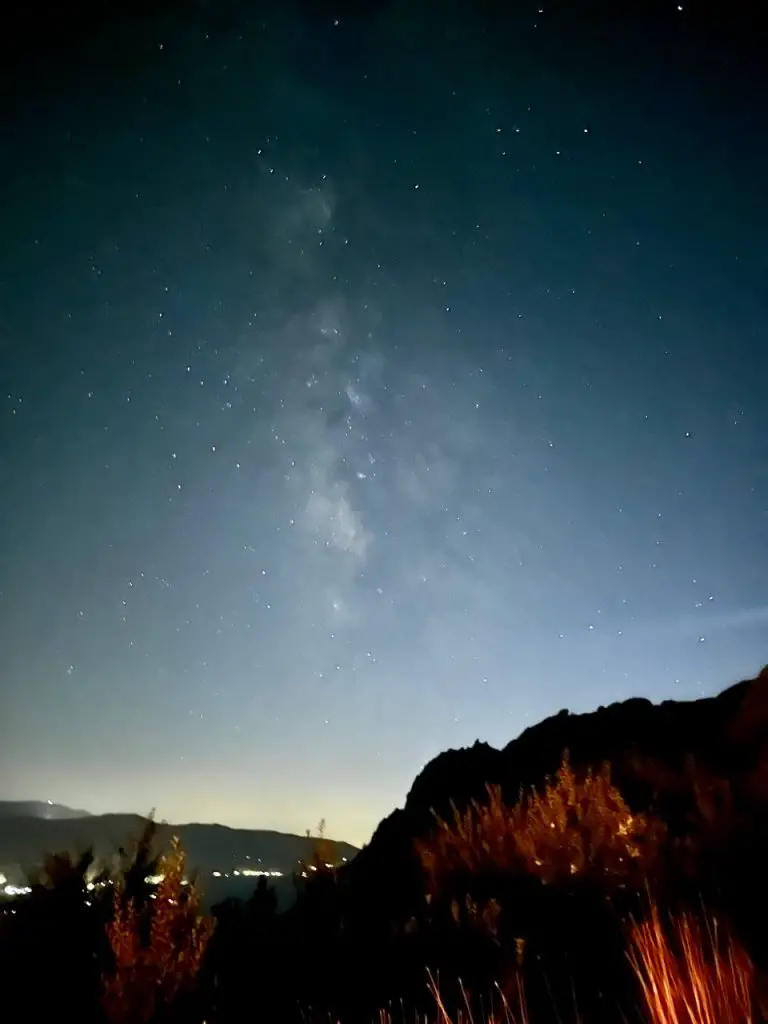
As we didn’t rent a car, our options were limited, so we just happened to go on the tour that was available. Lebanon by Nature and a few others organize weekly trips to different parts of Lebanon. You can find them and follow them on Instagram, where they share their upcoming trips, or contact them if you are interested in a bespoke trip to any particular place.
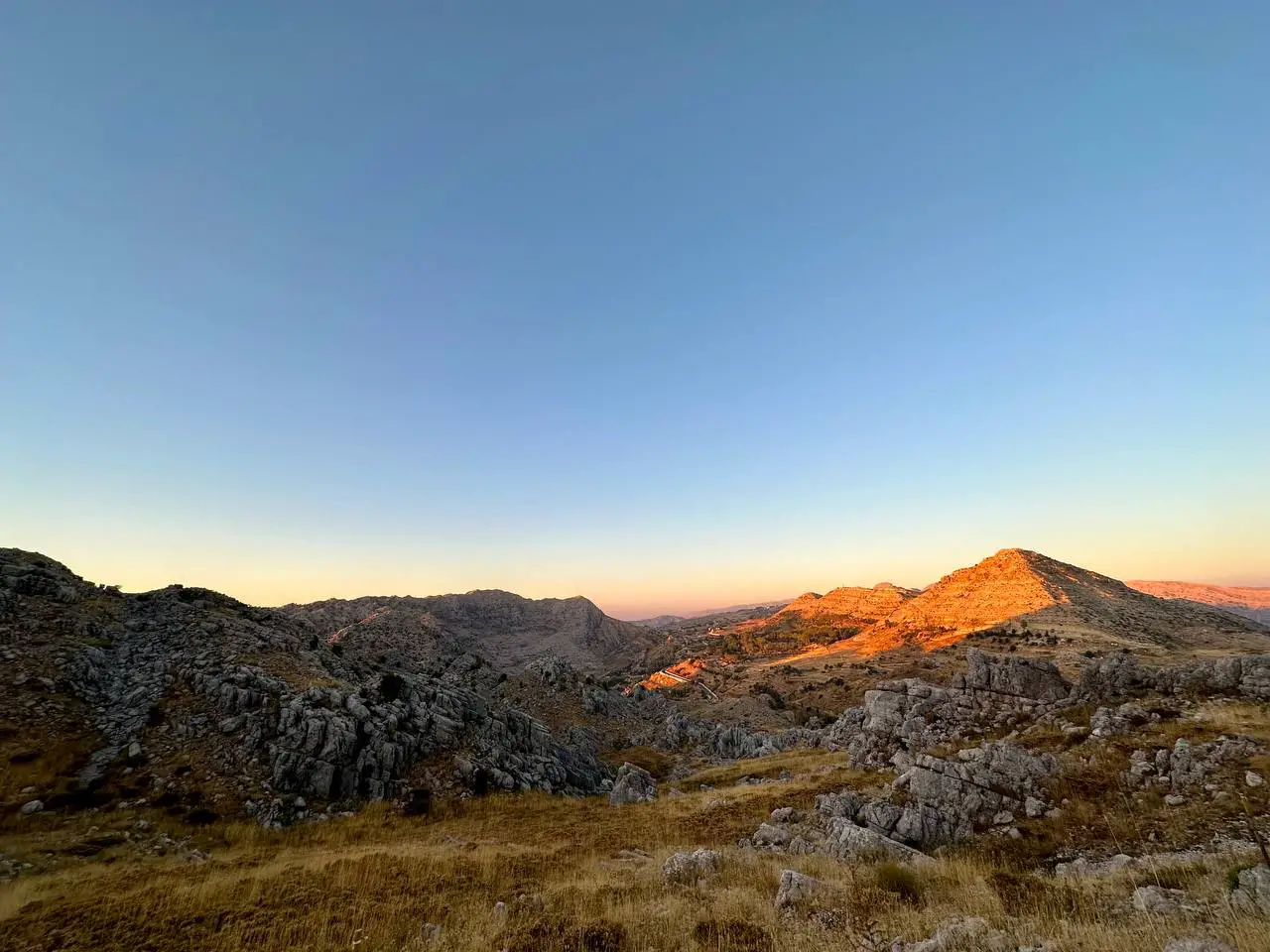
Day 4: A Day Trip to Baalbek
No trip to Lebanon is complete without a visit to the magnificent Baalbek. Baalbek, also known as Heliopolis in antiquity, is Lebanon’s most impressive archeological site, recognized by UNESCO as a World Heritage Site. With a history of over 9,000 years, Baalbek has witnessed the rise and fall of numerous civilizations, each leaving an indelible mark on its landscape.
We visited Baalbek by hiring a private driver, which also took us to the ruins of Anjar and the oldest winery in the Middle East. You can calmly explore the Baalbek Temples in a matter of 2-3 hours, so even if you choose to travel by public transportation, like us by hiring a private driver or on a tour, the trip to Baalbek will take up your entire day.
Read my article dedicated to visiting Baalbek for more information on how to get there, prices, and practical tips for your visit.
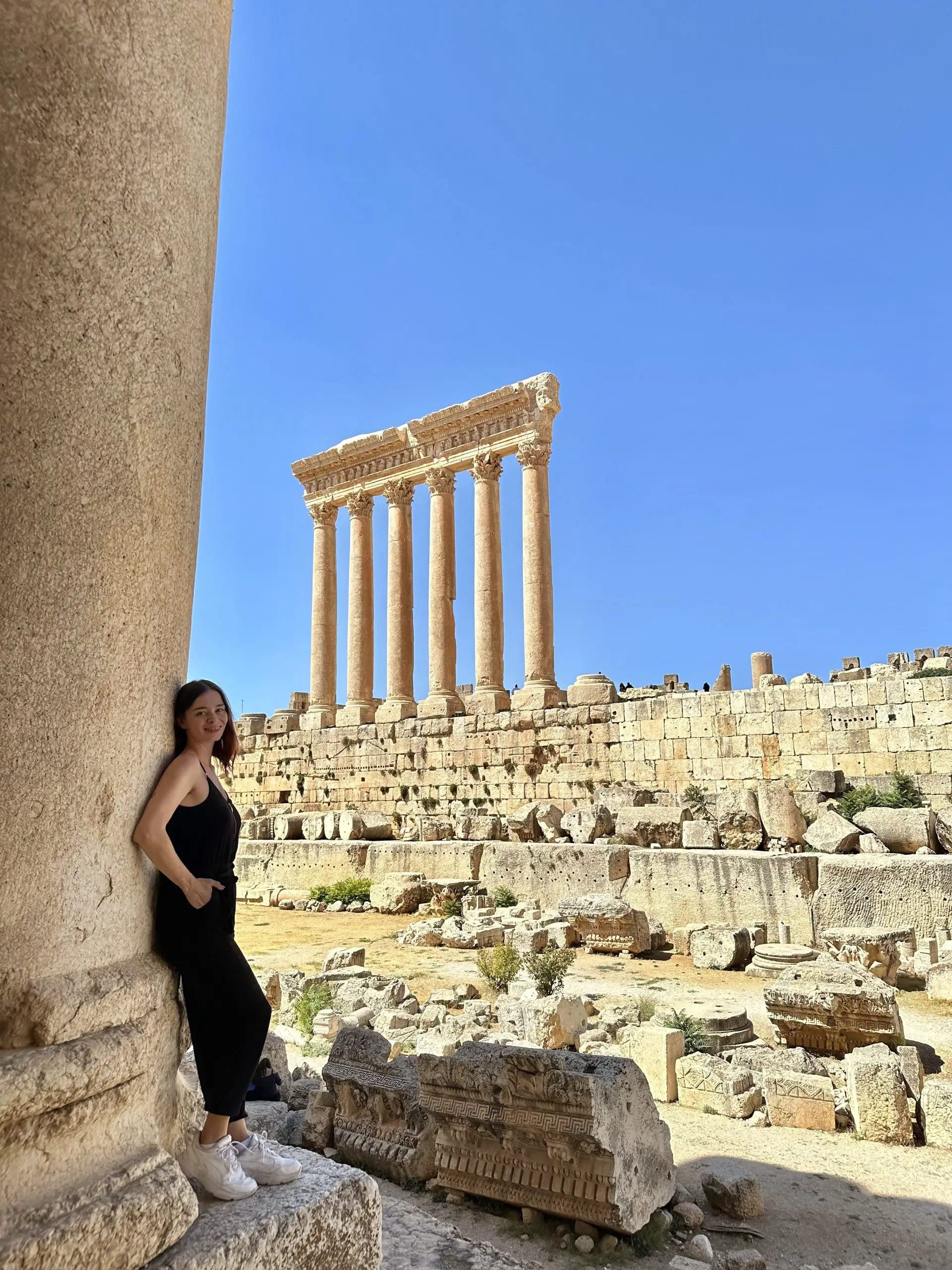
Day 5-8: Relax or Get Active in Batroun
Oh, Batroun, my love! I absolutely fell in love with this charming little town nestled along the northern coast of Lebanon. Once a humble fishing village, this well-preserved old town has witnessed the passage of time, bearing witness to the rise and fall of ancient empires. From its Phoenician origins, possibly dating as far back as the 14th century BC, Batroun has evolved into a bustling coastal destination with a fascinating past.
History aside, Batroun is also a place to unwind and enjoy the simple pleasures of life. With its attractive beaches, Batroun draws in travelers to relax and soak up the Mediterranean sun. Whether lounging at one of its beach clubs, taking a leisurely stroll along the coast, or indulging in water sports, there’s no shortage of ways to enjoy Batroun.
Whether you are looking for history, relaxation, adventure, or gastronomic delights, I highly recommend you add Batroun to your 10-day Lebanin itinerary. You can thank me later.
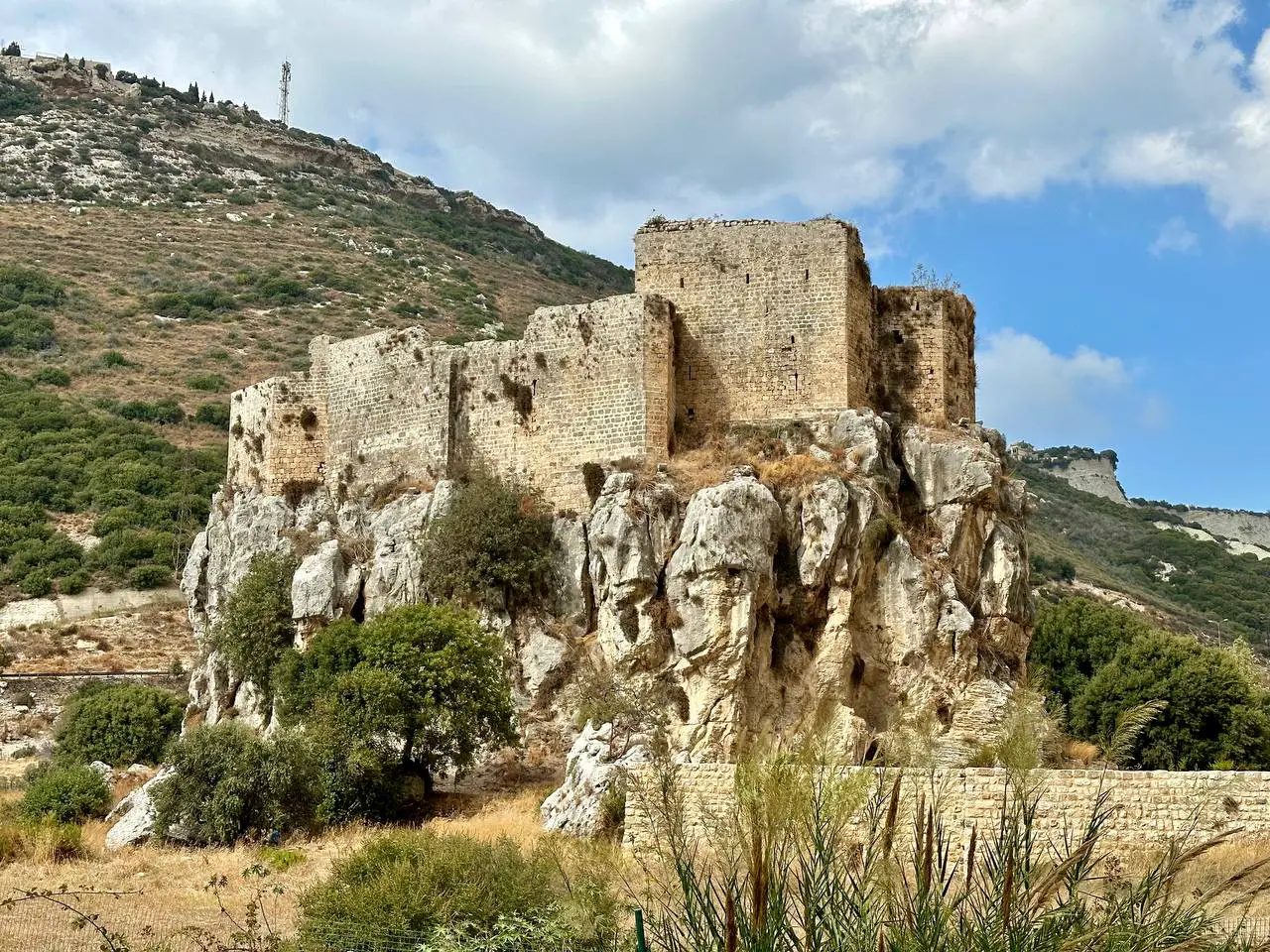
Some of the best things to do in Batroun (see my linked article for the full list) include:
- Explore the beautiful Old town of Batroun
- Enjoy the beaches
- Take a boat ride
- Go hiking in the surrounding mountains
- Kayaking, surfing, and other water activities
- Visit the nearby wineries
- Explore the fishermen’s harbour
- Try the local craft beer
- Yoga and zen
- Enjoy the nightlife
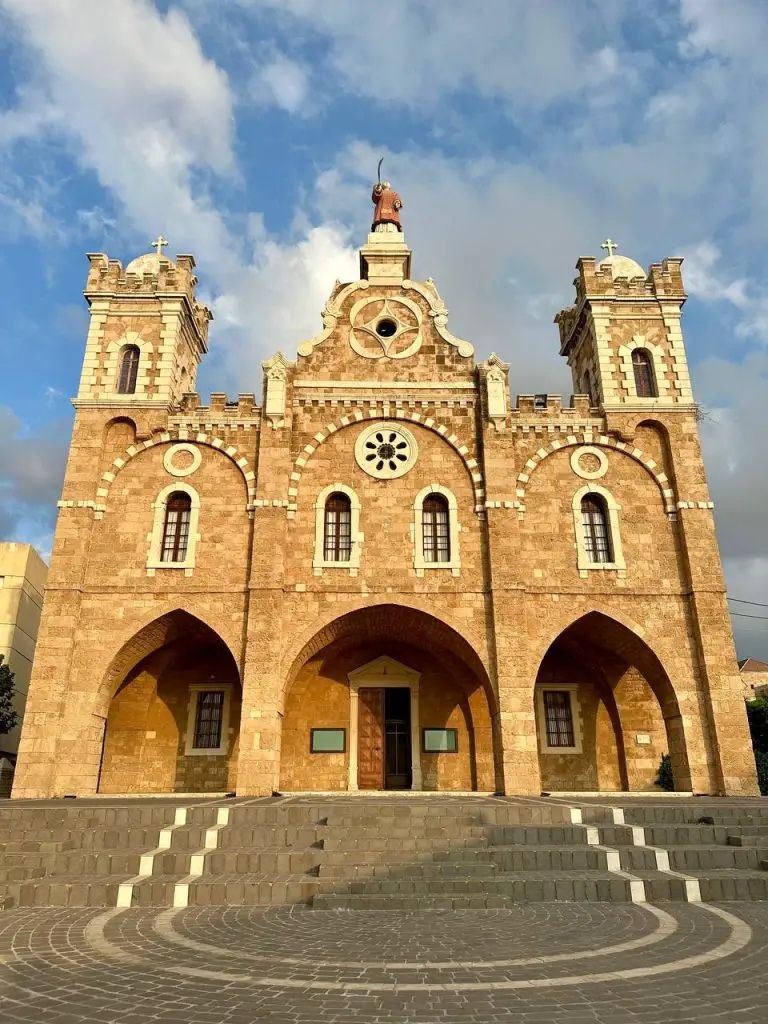
How to Get from Beirut to Batroun
Traveling from Beirut to Batroun is very easy. To reach Batroun from the capital city using public transportation, you first need to take a taxi to the Dowra bus station (please note that this isn’t a real bus station, but a large roundabout filled with plenty of minivans/marshrutkas traveling to different places across the country gather). When you reach Dowra, you will be approached by a person asking you where you want to travel to (or you just ask someone). Tell them that you want to travel to Batroun, and they will direct you to a minivan going in that direction.
An important thing to note here is that there is nothing such as a bus station (or the same kind of large roundabout where minivans gather, for that matter) in Batroun, and the minivan doesn’t even enter the town. By getting the minivan from Beirut, you will get dropped off at the main road. No worries, tho, as there is a bridge that you can use to easily cross to the other side of the road. From here, you can either take another taxi or just walk to your accommodation.
As for the price, I don’t remember exactly how much was it, but it was not more than 3-4 USD.
Day 9: Visit Tripoli or Byblos
Depending on how you decide to spend your time in Batroun, you can fit both a day trip to Tripoli and Byblos. I was very interested in visiting Tripoli, but in the end, we ended up not going as we were enjoying Batroun a lot. In the end, before returning to Beirut to fly back home, we spend a night in the town of Byblos.
Byblos is one of the oldest continuously inhabited cities in the world. There are numerous activities and attractions to explore in this small town, reflecting the town’s rich history, vibrant culture, and stunning coastal setting. Here are some highlights not to miss when visiting Byblos :
- Explore the old souks
- Visit Saint John-Marc Cathedral
- Climb to the top of the Byblos Citadel
- Go to the Byblos harbor and home some fresh seafood
- Relax by the beach
- Shop for souvenirs
- Have dinner at Feniqia
- Museums – you can visit the Fossil or Wax museum
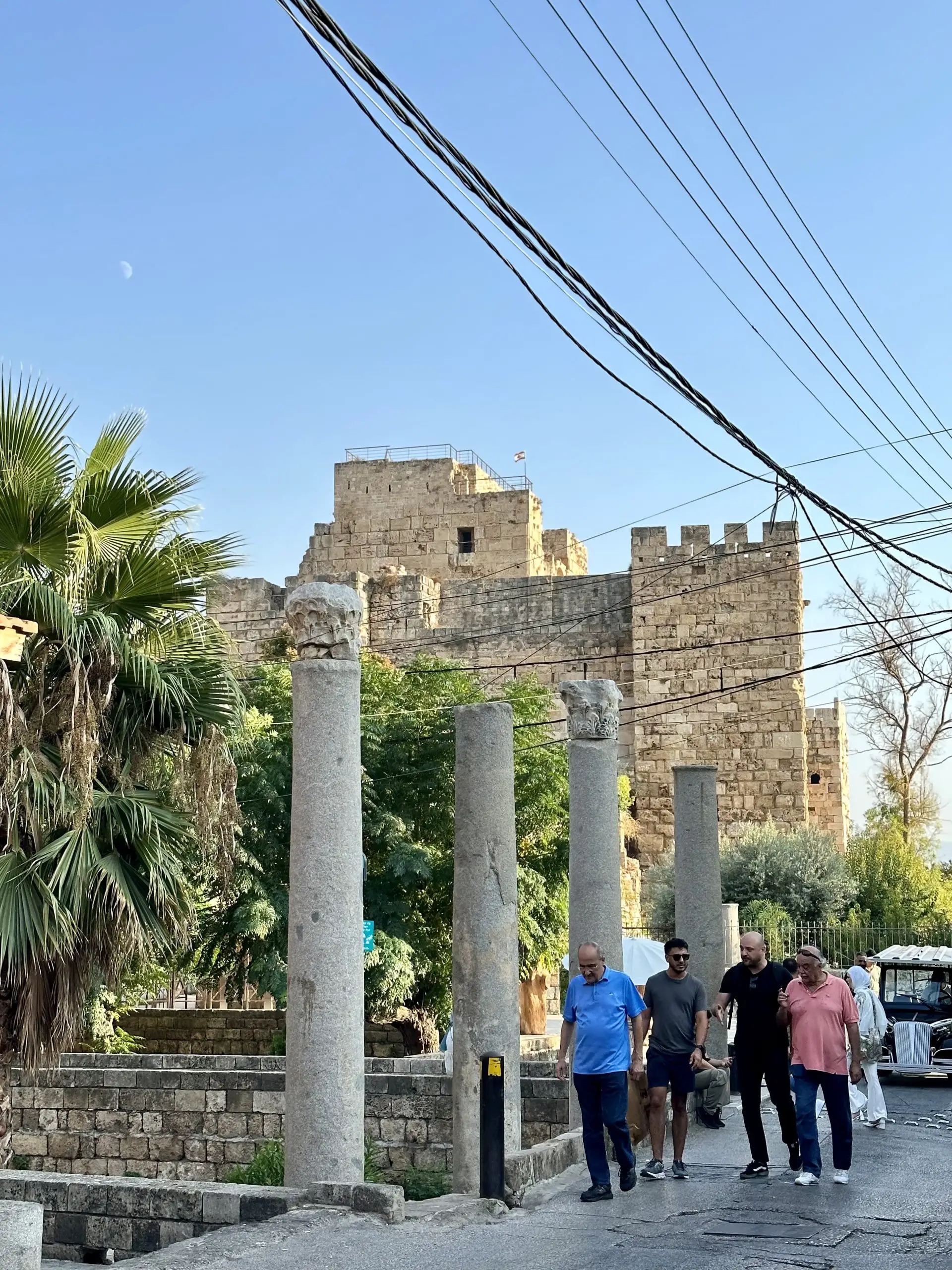
As for Tripoli, it is the second-largest city in Lebanon. It is also situated on the Mediterranean coast and serves as a major port, a commercial and industrial center, and a popular beach destination. Tripoli is famous for the manufacture of soap and cotton goods. The city’s must-visit attractions include the Citadel of Raymond de Saint-Gilles, the Great Mosque, the city’s many souks, hammams, and the Palm Island Nature Reserve.
How to Travel from Batroun to Tripoli and Byblos and Then Back to Beirut
To travel between these places in any direction, you need to go to that same road where you were dropped off, coming from Beirut to Batroun, and take another minivan. It is very easy. To catch the passing minivan, you just need to wave at it, and it will stop to pick you up.
*I also just want to mention that these minivans don’t have much space for luggage, so keep that in mind. I would offer to pay extra for a second seat if necessary and if your luggage doesn’t fit in their small trunks.
Day 10: Fly Home
On your final day in Lebanon, wave goodbye to the country and catch your flight back home (or your next destination). Reflect on the past 10 days you spent in Lebanon and the experiences you had. Did you like it? Would you go back?
Lebanon FAQ
What language do they speak in lebanon.
The official language of Lebanon is Arabic. Additionally, French is also commonly spoken, and English too, especially in tourist areas and among younger generations.
Is It Safe to Visit Lebanon?
The safety situation in Lebanon can vary depending on the region and current political developments. While Lebanon has faced challenges such as political instability and occasional security incidents in the past, many areas, including popular tourist destinations like Beirut, Batroun, and Byblos, are generally safe for visitors.
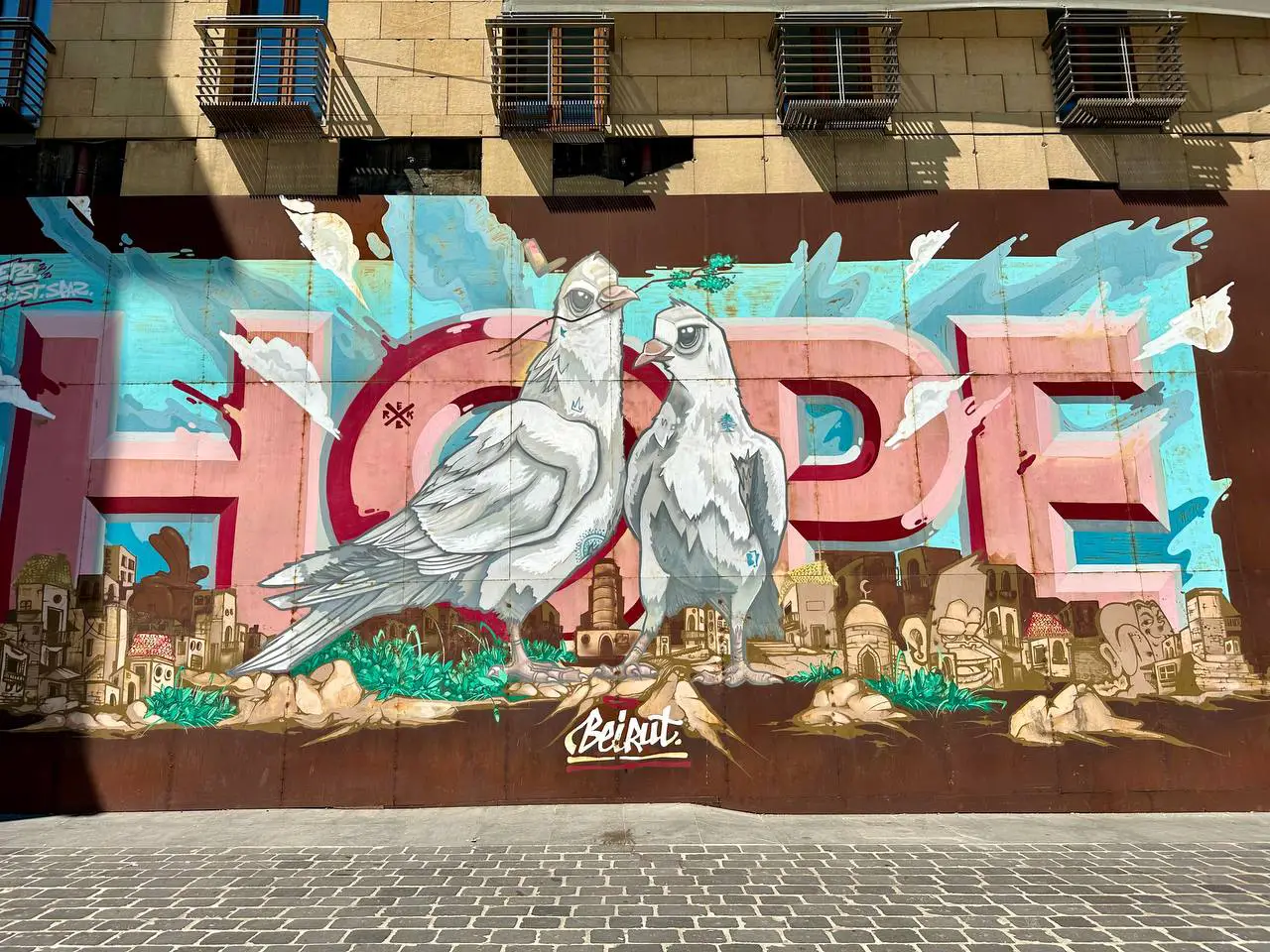
When Is the Best Time to Visit Lebanon?
Lebanon is a great destination year-round. Spring and Autumn months are the best times to visit Lebanon if you want to spend more time exploring the outdoors because of the temperatures. However, winter in Lebanon is beautiful, too, and you can also ski and snowboard there. So, the best time really depends on what you are looking to see and do while visiting Lebanon.
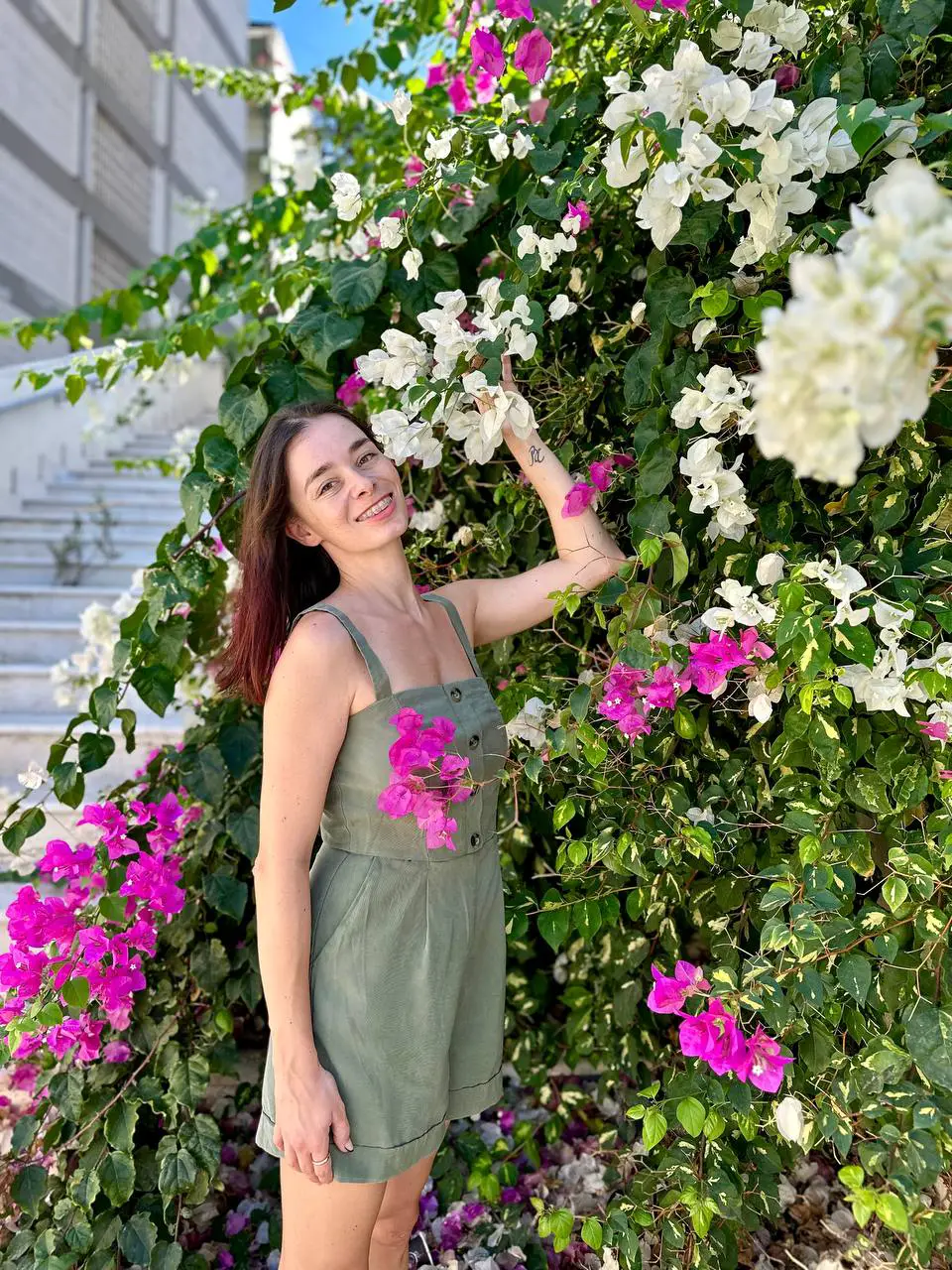
How Long Do You Need to Visit Lebanon?
While it’s possible to experience the highlights of the country in a week, ideally, you would want to spend around 10 days in Lebanon (and more) to fully immerse yourself in the country’s culture, history, and natural attractions.
How to Get Along Money-Wise Amidst the Economic Crisis?
As a traveler visiting Lebanon, it’s crucial to understand how money work in the country nowadays. After the crises began, the local currency was devaluated by 90%. At that time, 1 USD equaled 1,500 LBP. Now, at the time of writing (it was the same when I visited), 1 USD equals 89,700 LBP. And here, it gets interesting and also somehow confusing. Shortly after the crisis began, the Central Bank of Lebanon shifted its long-standing official exchange rate from 1,507.5 LBP to 15,000 LBP against the dollar, and that is still the official rate today. To survive and to get better value for their money, local people and businesses operate exclusively on the black market rate.
So, what you need to know is that using official banking channels, such as withdrawing money from ATMs or making card payments, can result in unfavorable exchange rates, often almost six times higher than those offered on the black market. To deal with it, exchanging currency on the black market is a common practice and can be done easily and conveniently throughout the country. You can even pay in dollars (in some places, prices are also displayed in dollars), and change is often provided in a mix of LBP and USD, which isn’t a problem as you can use both currencies to pay for everything.
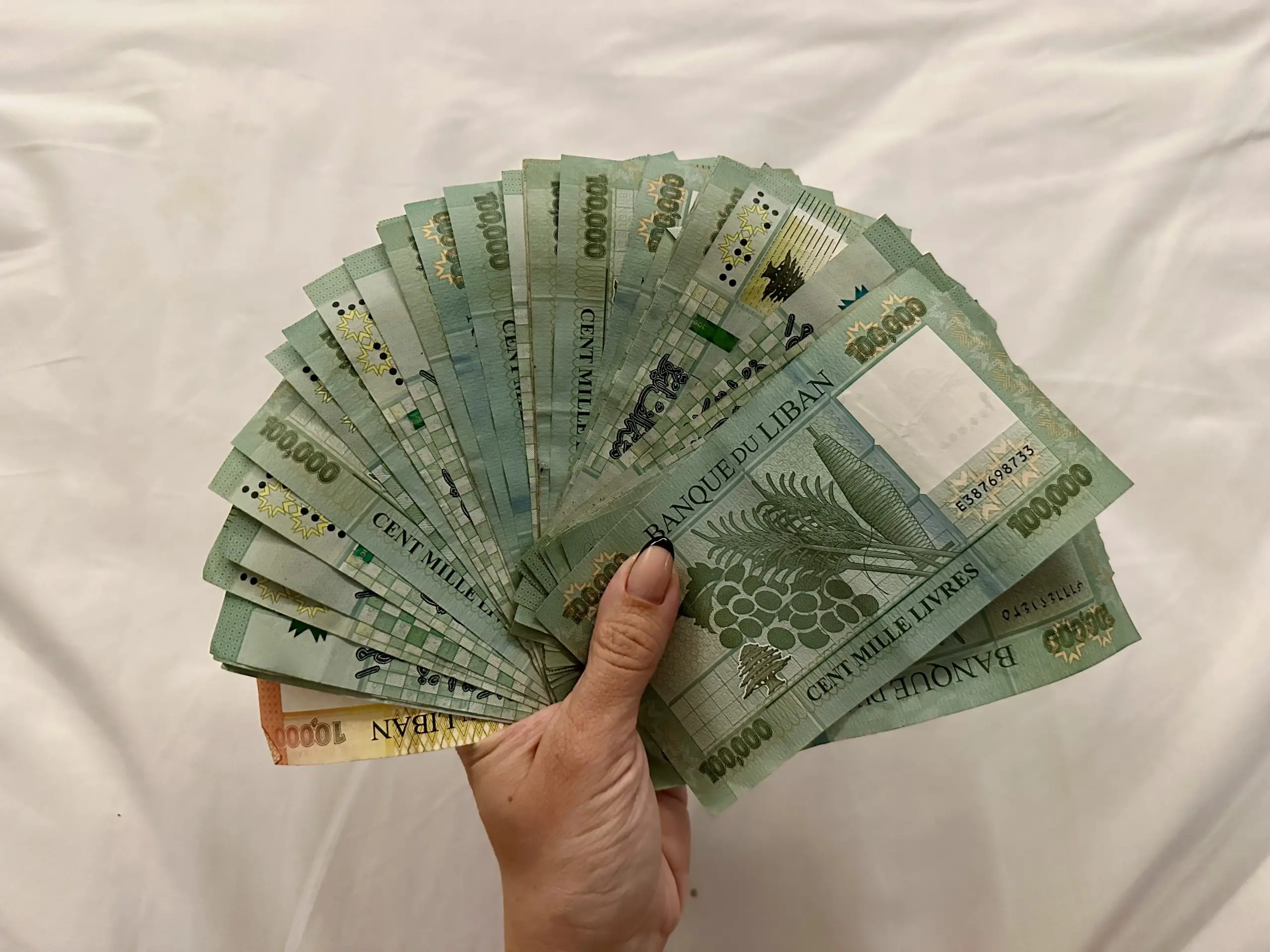
While exchanging money on the black market may seem like a bad idea, it has become a way of living. And for you, it is the only way to visit Lebanon now if you don’t want to pay ridiculous prices. To get an idea of what the difference is, here are a few examples:
- Coffee costs 134,000 LBP, which is approximately 9 USD at the official rate and 1.50 USD at the black market rate.
- A ride from Beirut to Batroun costs 200,000, which is approximately 14 USD at the official rate and 3 USD at the black market rate.
- A dinner for two costs 2,300,000, which is 153 USD at the official rate and 25 USD at the black market rate.
To stay updated with the current rate at the time of your visit, you can use this website, Lebanon market rates today .
And remember: DON’T EXCHANGE MONEY AT HOME. KEEP AN EYE ON THE LEBANON MARKET RATES DAILY. EXCHANGE MONEY ON THE BLACK MARKET. DON’T WITHDRAW MONEY FROM THE ATMS. DON’T PAY BY CARD.
I hope that this article gave you a good overview of how to spend 10 days in Lebanon. Again, this 10-day Lebanon itinerary is for those who prefer slow travel. Instead of rushing between places, we prefer to spend more time in each place – depending on what our time allows. If you have any additional questions or comments, please let me know in the comment section below, and don’t hesitate to contact me .
If you like this post, please share it with your friends and follow Owl Over The World on Facebook & Instagram for more travel tips & inspiration.
Thank you for reading,
How to Spend One Day in Byblos, Lebanon
The 19 best things to do in batroun, lebanon.
Bilyana is the founder of Owl Over The World and the girl behind the screen. Besides being a travel blogger, she's also a mountain freak and a full-time dream chaser. She writes about her adventures around the world wanting to inspire you to travel more & worry less.
Yerevan for First-Time Visitors: What to do,...
Winter trekking – musala peak, bulgaria, why do you need to travel to..., where to stay in den haag –..., where to stay in berlin city center..., where to stay in amsterdam vondelpark –....
Lebanon in a week: the ultimate road-trip guide
Sep 17, 2010 • 4 min read
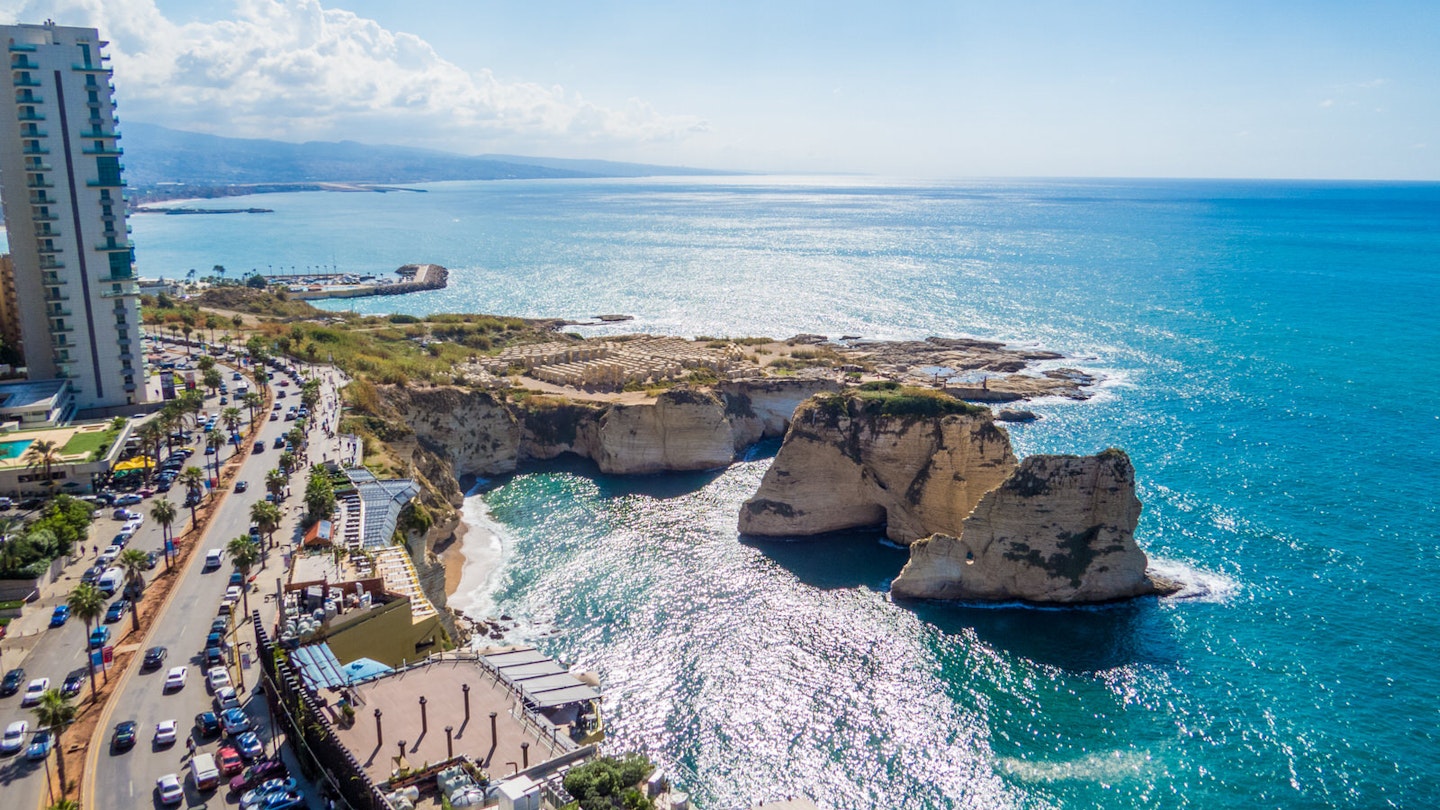
With just a week to spare in Lebanon, that tightly packed powerhouse of Middle Eastern history perched beside the Mediterranean, you can – with the help of four trusty wheels – embark on a road trip across some of the Middle East's most spectacular scenery, and to some of its most fascinating, friendly and off-the-beaten-track destinations.
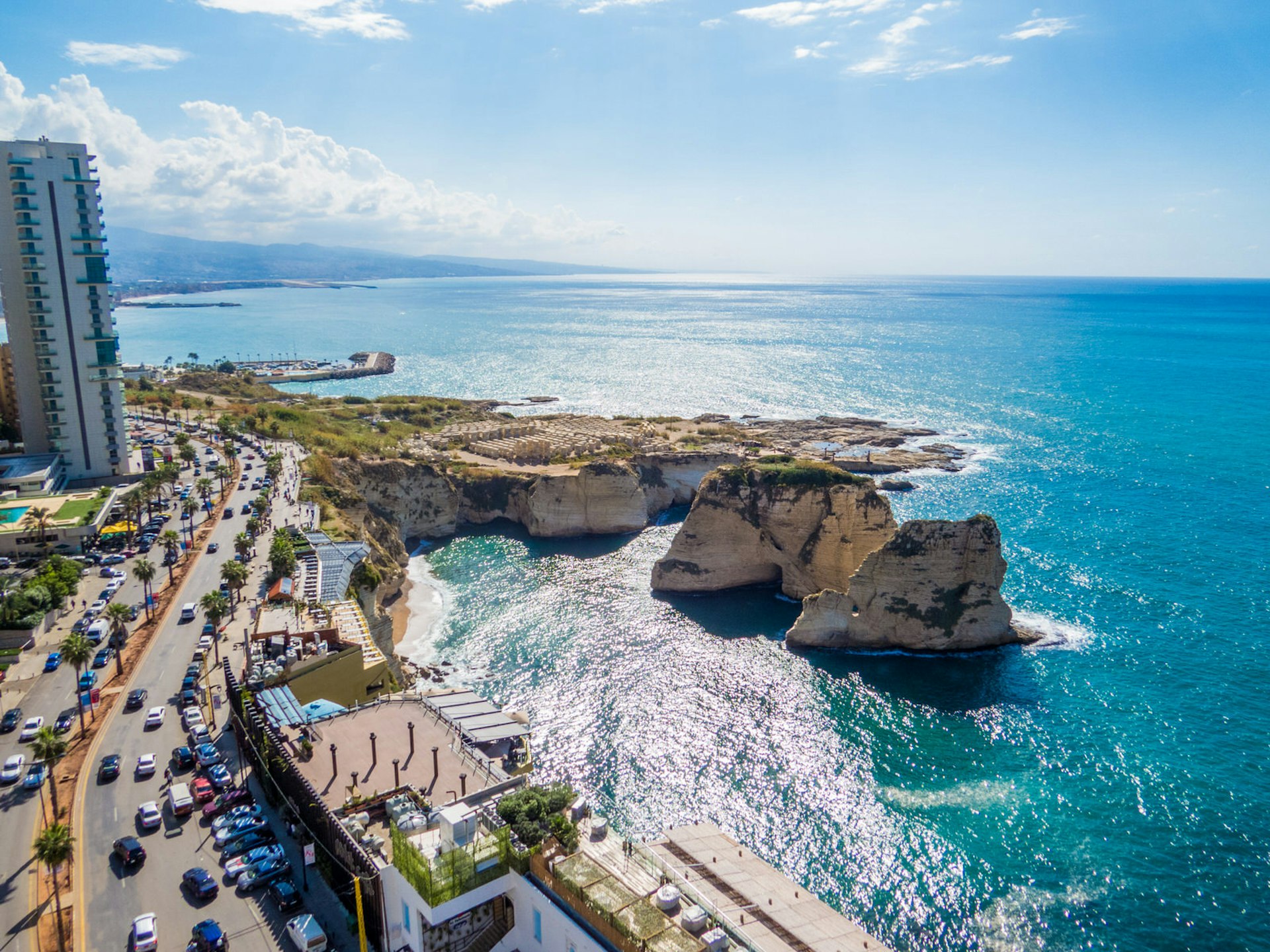
Start: Beirut
Touch down in Beirut and hire a car. You will need to be a competent, unflustered driver to handle the Lebanese penchant for no-rules driving. Take it slow, but be prepared to hold your line in traffic; nobody is going to let you in unless you force the issue. Out of the driver’s seat, you’ll find a magnificent welcome across the country.
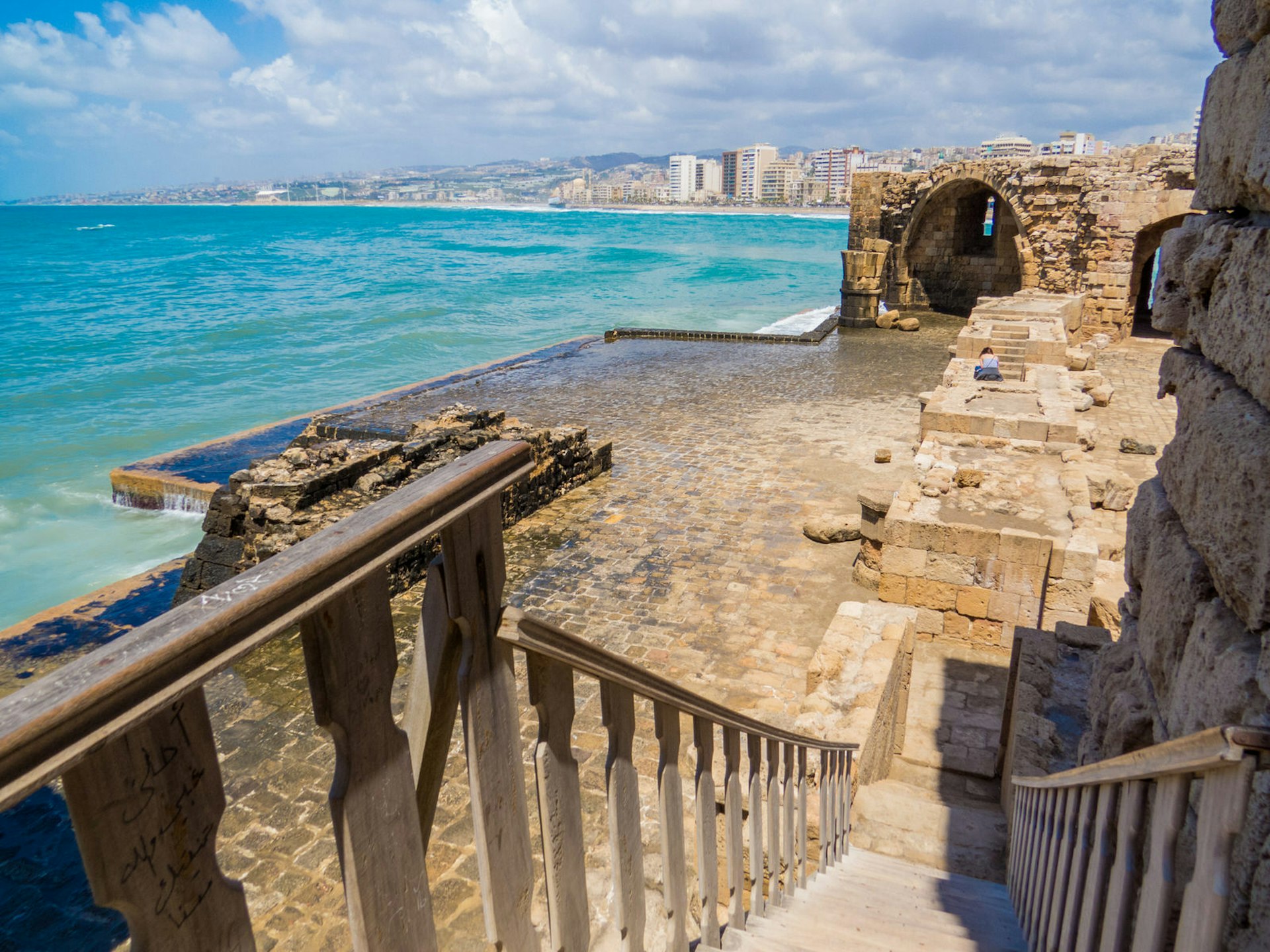
Day 1: Saida and Tyre
Rather than going into the chaotic traffic of central Beirut, drive south along the coast to Saida (Sidon), an ancient Phoenician port city sporting a fine 13th-century Crusader sea castle , the magnificent Great Omari Mosque and a super-atmospheric souq . Wander the narrow lanes and stop in at the Musée du Savon (Soap Museum) to see how the sudsy stuff is traditionally made, before continuing south to Tyre , whose ancient ruins, clean beaches and fine hotels make it a fascinating destination. The two principal archaeological sites include Byzantine streets, an immense funerary complex and a huge, well-preserved Roman hippodrome . Afterwards, dine out with locals on the Rue Abou Deeb or linger over seafood by the harbour. Spend the night in style at waterside Dar Alma or Asamina Boutique Hotel .

Day 2: Chouf Mountains
Retrace your steps to Saida and then turn inland, climbing into the Chouf Mountains. There are various gateways to the biosphere reserve that is home of many of Lebanon’s famous cedars, but make for Maasser Al Chouf, where you can stroll on short trails among these magnificent trees in the cool, crisp mountain air. Head back down to explore lavish 19th-century Beiteddine Palace and the lovely village of Deir Al Qamar , near which is the lovely rural hotel of Beit Al Qamar .
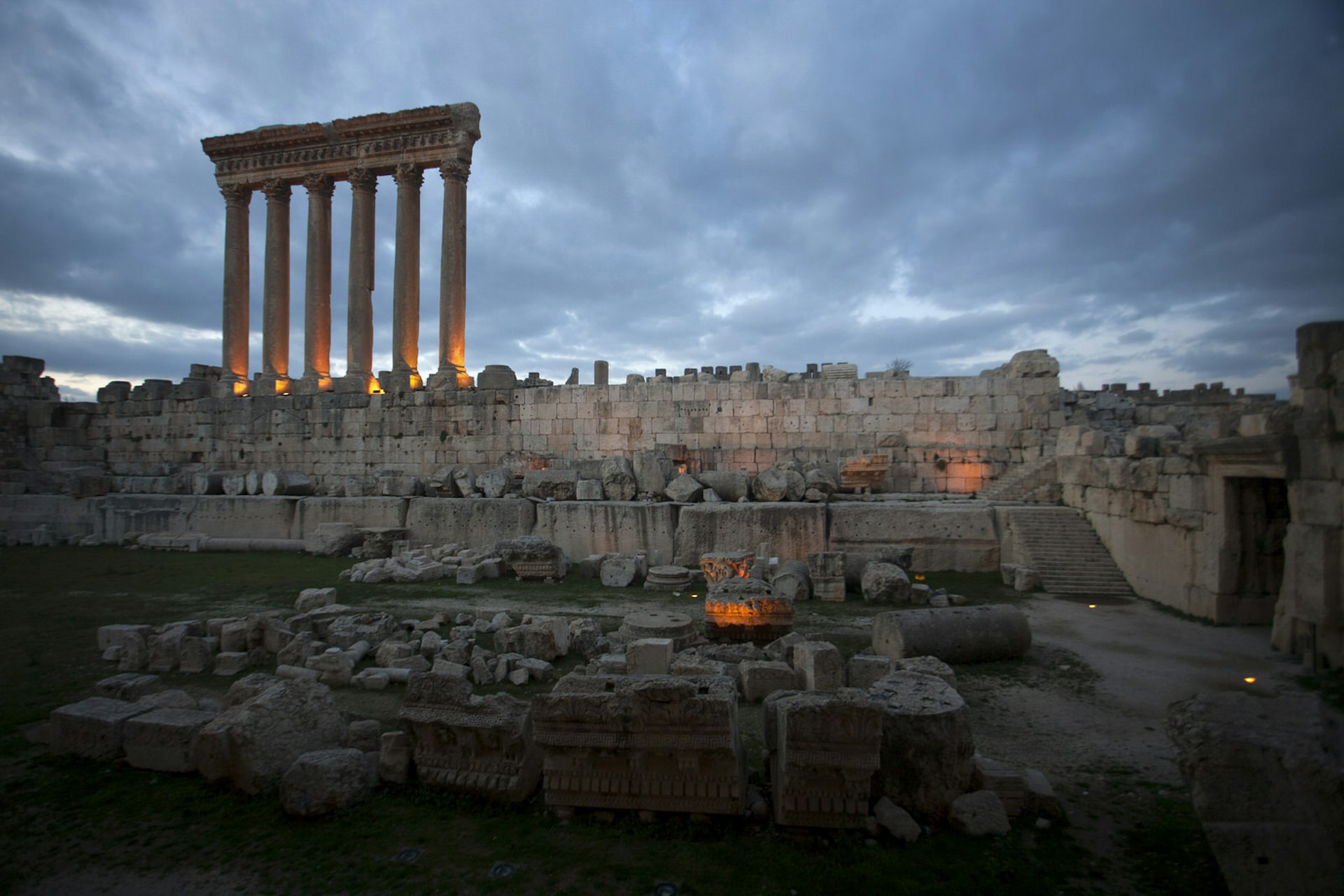
Day 3: Baalbek
Hop back into the car and drive over a spectacular pass to reveal the glorious Bekaa Valley spread out beneath you. Follow the main road north to reach the ancient town of Baalbek , where the magnificently preserved Temple of Bacchus and the vast adjacent Temple of Jupiter hold their own against any Classical ruins in the whole Mediterranean. Baalbek is also headquarters of the Hezbollah party. You are unlikely, however, to see many traces; instead, check into the creaky old Palmyra Hotel where luminaries including Jean Cocteau and General de Gaulle once slept.
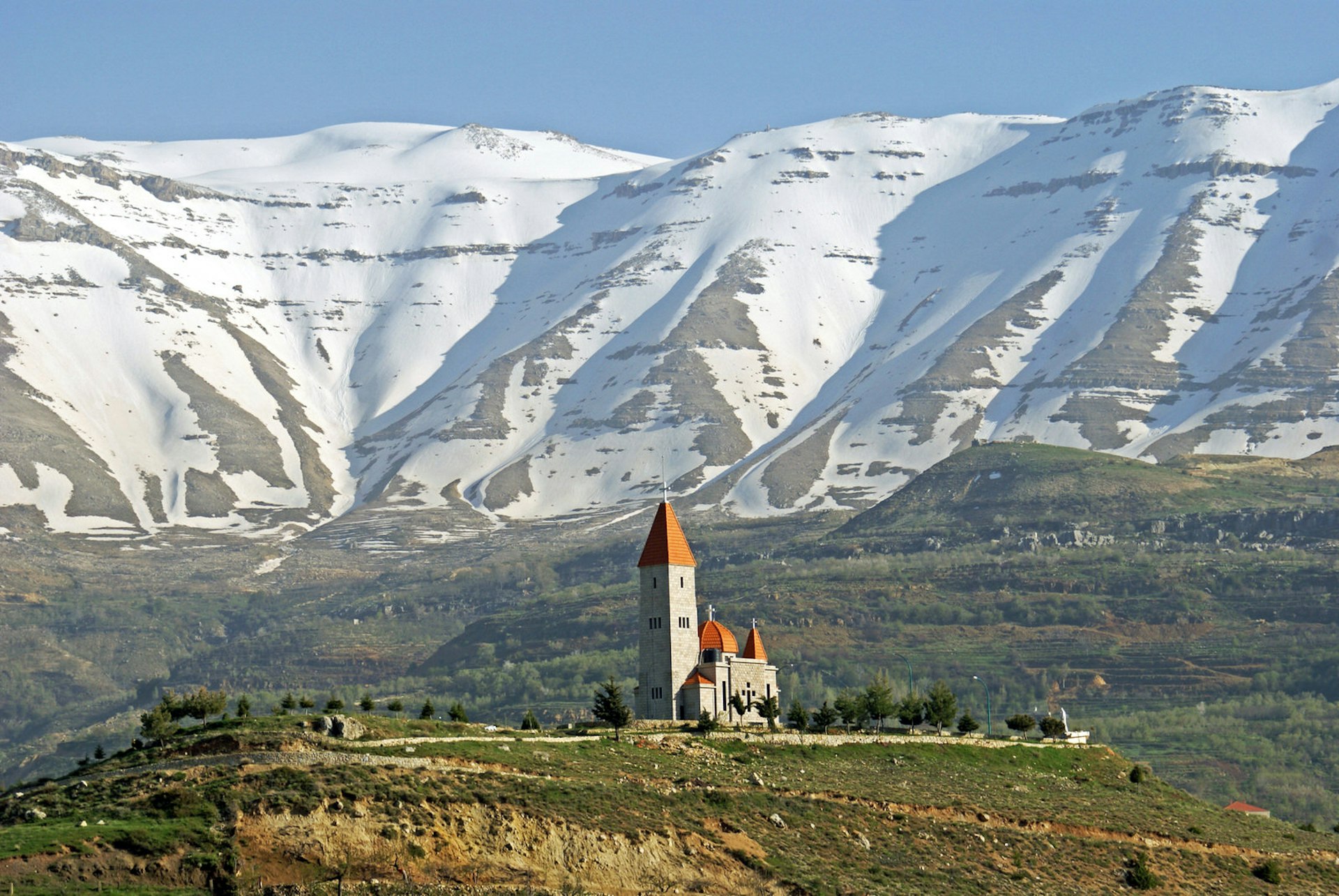
Day 4: Bcharré and the Qadisha Valley
Head west into the mountains again up spectacular hairpins to a pass (usually closed in winter), over the other side, where you'll find The Cedars , the country’s most popular ski resort. Below here, pretty Bcharré , birthplace of legendary poet Khalil Gibran, is a fine lunch stop and gateway to the Qadisha Valley . This scenic gorge is dotted with ancient monasteries: hiking between them is the way to go if you have an extra day, though you should visit Deir Mar Elisha , the closest to town, even if you don’t.

Day 5: Tripoli
From the Qadisha, it’s an easy but steep descent down to the coast and Lebanon’s principal northern city, Tripoli . The traditional Sunni old town has a superbly characterful souq, where stalls and shops occupy 14th- and 15th-century khans (travellers’ inns) and locals duck in and out of numerous historic madrassas (religious schools), hammams and mosques. Stay at Beit El Nessim or Via Mina in the seaside district of Al Mina and eat fresh fish at Silver Shore .
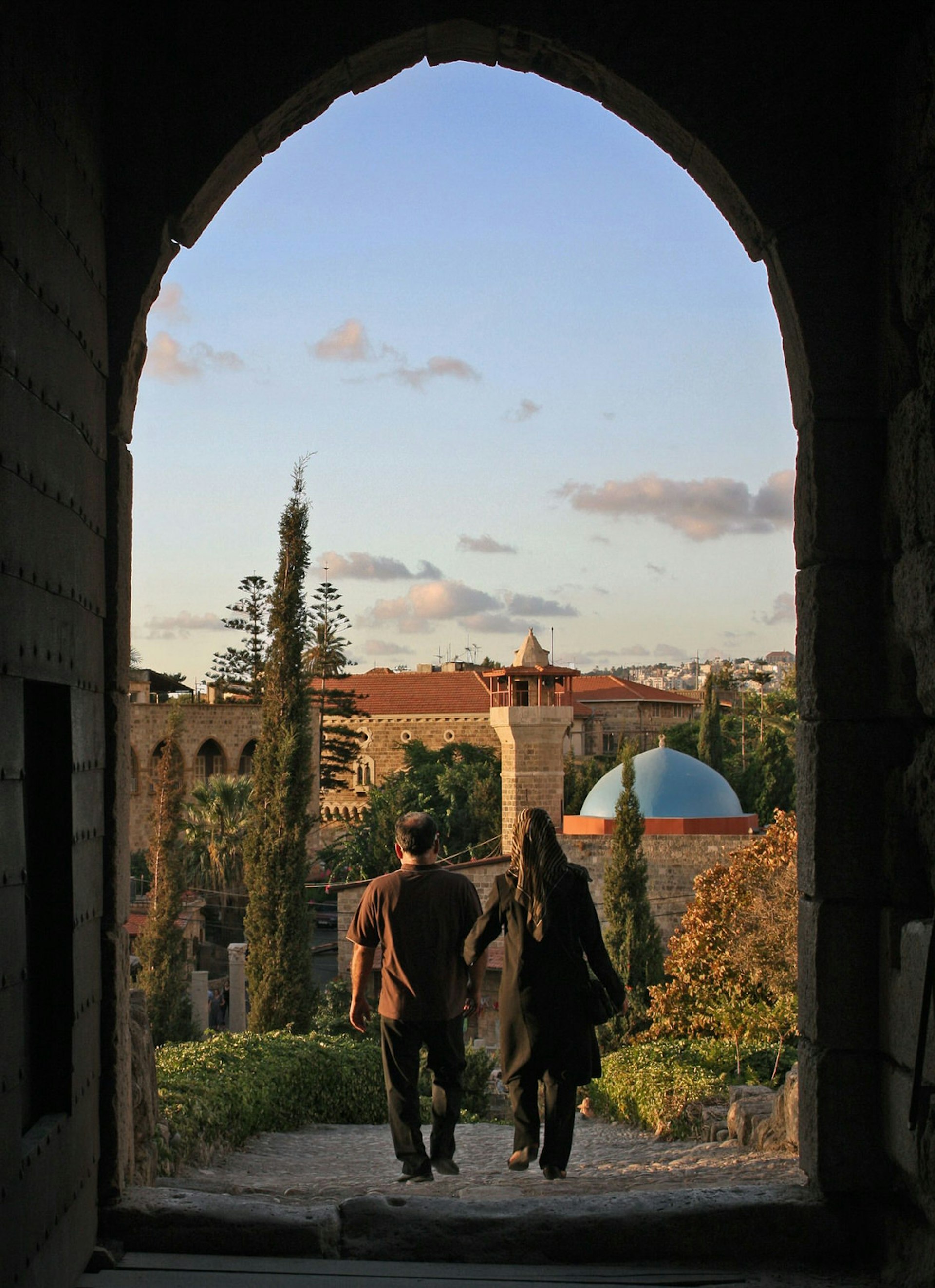
Day 6: Byblos
Head down the coastal highway, stopping in Byblos for a look at its seashore and archaeological site that covers everything from Neolithic remains to a Crusader castle via everything in between. Have lunch outside the site at marvellous Feniqia and make sure to check out the amazing fossils at Mémoire du Temps . Staying the night here is worthwhile if you have extra time.
Day 7: Beirut
Expect heavy traffic as you drive from Byblos to the capital, but you’ll be a dab hand at Lebanese driving by now. Leave the vehicle firmly parked in the hotel (or drop it off at the airport) while you explore Beirut's diverse districts . Stroll Downtown, extensively reconstructed following Lebanon’s long, painful civil war; mingle with students and hipsters over shisha or craft beer in Hamra; stroll the seafront Corniche at sunset and hit Mar Mikhaël for a contemporary eating scene and the city’s most vibrant selection of bars and clubs. Hit the rooftop at Junkyard and then take on the dance floor at subterranean B 018 , watching Beirut’s beautiful people out to play and toasting the completion of a road trip with which few others back home will be able to compete.
Last updated June 2018
Explore related stories
![lebanon trip itinerary Photo/File #: 12MP ..Country: Great Britain..Site: Hurst Castle..Caption: 12MP aerial..Image Date: [November 2021?]..Photographer: ExploringWithin MUST CREDIT..Provenance: Watch 2022](https://lp-cms-production.imgix.net/2022-03/GBR%20Hurst%20Castle%20MUST%20CREDIT.JPG?auto=format&w=730&h=630&fit=crop&q=75)
Archaeology
Mar 2, 2022 • 4 min read
Threatened by challenges ranging from climate change to overtourism, the World Monuments Fund released its bi-annual watch list of sites under threat.
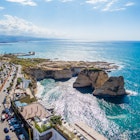
Aug 12, 2020 • 5 min read
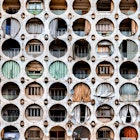
Feb 7, 2020 • 1 min read
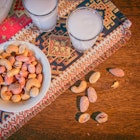
May 9, 2019 • 6 min read

May 2, 2019 • 6 min read
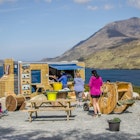
Feb 28, 2019 • 9 min read
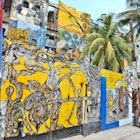
Dec 13, 2018 • 7 min read
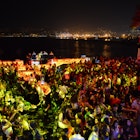
Nov 16, 2018 • 6 min read
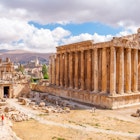
Jul 17, 2018 • 6 min read
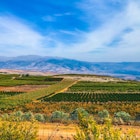
Jun 12, 2018 • 5 min read
Lebanon Road Trip Guide 2024: A 1-Week Itinerary Through All the Highlights
The author goes through a dream Lebanon road trip itinerary to explore this Middle Eastern country highlights in just one week.
With just an area of 10,452 square kilometers (4,036 sq mi), Lebanon is a country that you must visit. Lebanon is actually the oldest country name in the world, remaining unchanged for over 4,000 years. Recently, National Geographic declared it as one of the world’s oldest countries.

Below I will present a guide to a 1-week road trip in Lebanon.
Day 1: Beirut

When your plane lands in the “Beirut International Airport”, it is best to rent a car and start your week in beautiful Beirut.

Beirut is the capital and largest city of Lebanon. Greater Beirut has a population of 2.2 million, which makes it the third-largest city in the Levant region and the thirteenth-largest in the Arab world.

Beirut is a gem on the Mediterranean coast and one of the oldest cities in the world; it emerges in records kept by the ancient Egyptians. There is a lot to see in Beirut.

Head to the downtown of Beirut where the famous blue mosque and trendy Beirut souks are located. Then, take a stroll along the Corniche and check out the famous Raouche Rock which is a natural landmark that formed after a big earthquake hit the area in the 13th century.

You can enjoy a cup of coffee with the view of the rock on the many cafés that surround the rock. Then, head to Hamra (by car or on foot) and have a nice traditional Lebanese lunch. I recommend Café Em Nazih because it is very affordable and extremely delicious and authentic.

Then, head to the famous “American University of Beirut” and check its beautiful campus. The university has a great Archaeological Museum and art galleries that host a variety of exhibitions and events. Then, head to Ashrafieh and check the tallest building in Lebanon “Sama Beirut”.

To finish off the day, have some dinner and drinks in the lovely and quaint bars and restaurants of Gemmayzeh and Mar Mikhael.
Day 2: Jounieh / Jeita / Byblos
Start your car and head to Jounieh in the early morning. Grab a Manoushe on your way there from any shop along the highway. Manoushe is a must-try popular Lebanese breakfast and is eaten on the go. Try the za’atar, cheese, and keshek manoushe!
Jounieh is a coastal city in the Keserwan District, about 16 km north of Beirut. Head to the famous village of Harissa where the “The Shrine of Our Lady of Lebanon” is located overlooking the bay of Jounieh.

You can take the gondola lift, the Téléphérique, from the city of Jounieh to Harissa and enjoy a breathtaking view.
After that, head back down and drive to the popular Jeita Grotto which is just 15 mins away. The Jeita Grotto is a natural wonder and was one of the top 14 finalists in the New 7 Wonders of Nature competition. Jeita Grotto is actually the longest cave complex in the Middle East (9 kilometers long). You can take a short ride in a rowboat in the lower cave and discover this wonderful landmark on the way.
After seeing the grotto, head to Byblos (35 mins away) where you will be spending the night. Make sure to book a hotel on the beach ahead of time. To save time, stop by a shawarma place on the way and order endless amounts of chicken or meat shawarma which are to die for!

Byblos (Jbeil) is one of the 20 oldest cities in the world, and it has been constantly inhabited ever since it was formed in 5,000 B.C. Byblos is linked with the history of the diffusion of the Phoenician alphabet. When in Byblos, take a stroll through its old stone cobbled street (souk) where they sell everything from traditional embroidery to souvenirs and hand-made jewelry.
Also, do not forget to check the well-kept Byblos castle which was built by the Crusaders in the 12th century from indigenous limestone and the remains of Roman structures. If you do not have time on this day, check the castle quickly the next morning before heading to Batroun as they open pretty early (8:30 a.m).
Extra Tip: If you want to do something else, you can head to Baatara gorge waterfall which is 40 mins away from Byblos. The waterfall is an impressive natural wonder and plunges 255 m (837 ft) down the Three Bridge Chasm, which is a limestone formation formed as a result of millions of years of erosion. Geologists say that the rock formation is around 160-million years old and was present in the Jurassic period.
Day 3: Batroun / Chekka

Batroun is only 15 mins away from Byblos and is definitely the place to be. Head to the Phoenician Wall and grab a coffee or breakfast and go sit down on the wall and enjoy the gorgeous view. Then, head to the beach for a swim/tan day in the cyan blue waters of Batroun.
The weather in summer is so beautiful and perfect. Visit the free joining beach and lay there. You can order fresh fish and delicious appetizers and beers at the joining kitchen. After lunch, have a walk in the old Batroun souks and stop at The Colonel Brewery, which is a hip, dog-friendly bar on the beach with live bands, surfing, and seafood.
Later, head to Chekka where you will be staying the night (hotel or camp). Chekka is a beautiful place with huge and tall cliffs and caves by the beach. While in Chekka, check Saydet el Nouriyi Monastery (Hamat, Lebanon).
Day 4: Anfeh / Tripoli
Head to Anfeh which is another beach town and is known as the little Greece of Lebanon because it has white and blue houses and resorts all over. Enjoy a morning tan in Anfeh and grab breakfast by the sea.
After, head to Tripoli where you will be staying the night. It is 18 mins away by car and is filled with things to do.

Tripoli is known for its delicious food and desserts. Visit Al-Mina in Tripoli which a beautiful place with pretty alleys, old architecture, and bright colored walls. Have lunch in one of the Mina restaurants which range from small seafood shops to big restaurants with extravagant menus that sell fresh seafood.
Then, visit the Hammams in old Tripoli (Trablos), which are old Turkish baths. Hamman Al Jadid is Tripoli’s best-kept Hamman (not operational but worth the visit). Also, check Khan Al-Saboun (Soap Khan) where you can buy olive and olive-oil-based products which include a wide range of soup (even a soap made of gold).

Later, have a stroll in the old Tripoli souks where you can see the traditional coffee and Tripolitan Ka’ak vendors. Do not forget to try the pastry and dessert; there is a pastry shop on every corner in Tripoli. Try the Baklava, Maamoul, Daoukiyeh, Owaymet, Kallaj, and my two favorites; Znoud El Sit and Halawet el Jibn.

Finish your day by checking out the Tripoli Expo (Rashid Karameh International exhibition) at sunset. The Rashid Karameh International exhibition center looks abandoned, but it is a breathtaking place designed by the famous Oskar Niemeyer.
Extra Tip: If you have time or an extra day (during summertime), discover the four small islands offshore of Tripoli. The Palm Islands were declared a protected area because of their status of haven for endangered loggerhead turtles, rare monk seals, and migratory birds.

The Palm Islands Nature Reserve is open to the public between July and September.
Day 5: Bcharré and the Qadisha Valley
The Qadisha Valley, a Unesco World Heritage, is home to the legendary Cedars of God, the most highly valued building materials of the ancient world.
The trip to the mountain village of Bcharré is very scenic and takes you through the most gorgeous views of mountains and snowy slopes and a spectacular view of the Qadisha Valley (also known as Kadisha Valley) .

Bcharré is home to the famous poet and author, Gibran Khalil Gibran. If you are a big fan, head to the Gibran Khalil Gibran museum which houses the content of Gibran’s studio in New York, including his furniture, his manuscripts, his personal belongings, 440 original paintings, and his private library. This museum used to be a grotto for monks seeking shelter in the 7th century and now is Gibran Khalil Gibran’s tomb and museum.

After that, head to the Cedars of Lebanon (Cedars of God) which is one of Lebanon’s most beautiful nature reserves and home to the oldest Cedar Forest. Near the reserve is the Cedars Ski Resort which is located in the Bsharri mountains, North Governorate. It is Lebanon’s oldest ski area and home to Lebanon’s first ski lift, built in 1953.

One of the most amazing Lebanese experiences is checking the snow wall in the Cedars during the summer. The snow can sometimes stay until September especially in Qurnat as Sawda’, which is the highest point in Lebanon and the Levant, at 3,088 meters above sea level.
The historic Qadisha valley offers a great opportunity for hiking in the beautiful and quiet valley trails and isolated mountain landscapes.
Related read: Road Tripping Oman
Day 6: Baalbek / Aanjar

The next day, head to Baalbek in the Bekaa district, which is home to the most extraordinary archaeological sites in Lebanon and is a UNESCO World Heritage site along with Tyre, Anjar, the Cedars of God, Qadisha Valley, and Byblos.
Baalbeck is going to be an extraordinarily rich cultural and historical trip. Check the Baalbek Roman Ruins which are great ancient temples built by the Phoenicians, the Romans, and other civilizations that have conquered the region. Make sure to check the Temple of Bacchus which is one of the largest Roman temple ruins in the world.

The Temple of Bacchus is dedicated to Bacchus, the god of wine, grape harvest, fertility, and theater. The temple is very well preserved to the extent that the carvings of bulls, lions, and eagles are still visible.

It is believed that the temple was constructed between 150 A.D. and 250 A.D. Also, check the temple of Jupiter and the temple of Venus.

After this cultural trip, have lunch in one of Bekaa’s delicious authentic Lebanese restaurants. Then, head to Anjar and check the Ummayad Citadel which is one of Anjar’s most celebrated sites.
You can also check the neighboring village of Riyak, where you will find a family-run winery called “Chateau Rayak”. The owners will gladly give you a tour around their vineyards and let you taste their wine and arak.
Related read: 10-Day Israel Road Trip Itinerary
Day 7: Marjaayoun / Saida / Tyre
On your way to Saida, pass through the lovely Marjaayoun. Take a stroll through the cobblestone market squares, which have served as the town center since Ottoman times. While in Marjaayoun, visit the Beaufort or Belfort Castle, known locally as Qal’at al-Shaqif or Shaqif Arnun, which is a Crusader fortress in Nabatieh Governorate, 1.30 hours’ drive from Beirut.
Later, head to Tyre, which is among the world’s 20 oldest cities. It is a Phoenician city that dates to 2,750 B.C. One of its main sites that you must visit is a Roman hippodrome which is on UNESCO’s list of World Heritage Sites. This Roman hippodrome stands as the best-preserved in the world and is even larger than the Circus Maximus in Rome herself.
Also, make sure to check the Triumphal Arch of Tyre nearby. This arch is one of the city’s most remarkable archaeological relics.
After this historical and cultural trip, head to the clean beaches of Tyre and enjoy a swim and some seafood! You can also visit the Tyre Coast Nature Reserve which is 380 hectares (940 acres) and is divided into three zones: the tourism zone (public beaches, the old city, and Souks, the ancient port), the agricultural and archaeological zone, and the Conservation zone that includes the Phoenician springs of Ras El Ain.

The last stop would be Saida (Sidon) and then you are back in Beirut. Once in Saida, go to the gorgeous Sidon Sea Castle (Crusader Castle). From the castle, you can see the “Ziri Island” which is a tiny rocky island with a lighthouse, located 1.5 Kilometers off the coastline of Sidon. You can actually go to the island by several ferry boats from Sidon’s port.
Also, check the beautiful Debbane Palace and the museum of Sidon. The palace was ruined by the war and was eventually restored in 2000 and visitors were welcomed in 2001. Later, head to a pastry shop and get the delicious Kanafeh and walk along the Corniche. Kanafeh is a traditional Middle Eastern dessert made with shredded filo pastry, soaked in sweet, sugar-based syrup, and typically layered with cheese.
It will surely guarantee that you stay full for at least 3 hours!
Then, head back to Beirut on a full stomach.
Related read: 4 Arabian Countries of the Gulf You Should Visit Next
Lebanon is a beautiful little country and must be on your bucket list for your next destination. Despite its current turmoil economic crisis, this country will not fail to give you a great authentic middle eastern experience.
Filled with great food, desserts, friendly people, rich history, art, culture, gorgeous beaches, and scenery that will make one hell of a trip; don’t hesitate to give Lebanon a shot. You will thank me later!
About Katy Terroz – Travel Writer & Blogger

Katy is a travel blogger and writer from Lebanon/Ukraine. She completed her undergraduate studies in Beirut (Lebanon) while playing on the university rugby team. Katy enjoyed traveling around the Middle East, camping all over Lebanon, and volunteering with FoodBlessed, a local hunger-relief initiative.

After graduating, Katy moved to Italy to follow her dream of studying abroad. While pursuing her master’s degree in Food Security, Katy took every opportunity she had to travel all over Europe and fell in love with it.
Living in Rome gave Katy the chance to deeply explore Italy and its wonders. She loves experiencing the local life and tries to make every travel experience genuine and authentic. Katy is passionate about exploring new places and different cuisines while making sure to snap beautiful pictures and write down her experiences. She also enjoys getting lost in beachy areas, small medieval towns, and the beautiful quaint cities of the world.
You can follow her travels on her Instagram .

- Facebook.com
- Instagram.com
- Youtube.com
- Linkedin.com

July Dreamer
Exceptional Vacation & Travel

Lebanon travel guide: a 2-week itinerary

This is a compelling travel guide to Lebanon that shows how to visit the Levantine country during the crisis, including where to exchange in the black market. It also includes things to do, how to move around, where to stay and more.
Despite its tiny size, Lebanon is the most diverse country in the Middle East, a nation that chaotically combines both Arab and European Mediterranean culture, with their love for good wine and the most exquisite food in the region, without never losing their Arab essence.
Lebanon, however, is not in their brightest moment.
A deep economical crisis fuelled by the port explosion and also COVID-19 has left an impoverished country with terrible inflation, and an absolutely desperate population.
As a traveler, Lebanon has changed a lot, the crisis is particularly palpable but that should not stop you from visiting such an alluring country, which is also desperate for foreign currency .
This guide contains travel tips for Lebanon, as well as a complete itinerary.
If you are interested, remember to check my tips for traveling to Syria

COVID-19 Travel restrictions for Lebanon
For entering Lebanon, you must be in possession of either your COVID-19 certificate or a negative PCR.
Travel Insurance for Lebanon with COVID-19 coverage
IATI Insurance is one of the few providers that offers full Coronavirus coverage, not only when it comes to treatment, but also cancellation costs in case you tested positive before departure.
Readers of Against the Compass can get an exclusive 5% discount .
Visa for traveling to Lebanon
Most nationalities can get a free 30-day visa on arrival at the airport in Beiru t, which is extendable for 2 additional months.
You just get an easy, friendly stamp, that’s it, and it’s valid for multiple entries.

Internet and connectivity in Lebanon
Wi-Fi connection has improved over the last few years, but it’s still not the best, it tends to fail in most budget hotels, and that’s why I recommend buying a SIM Card.
One company I used was Alfa , their internet packages costing the equivalent of around 20USD.
Get a VPN for traveling in Lebanon
You should always use a VPN when you travel, especially when you connect to public Wi-Fi networks.
Your connection will be much safer.
Moreover, you will be able to access content which is typically censored in Lebanon.
I recommend ExpressVPN – Extremely easy to use, fast and cheap.
Get ExpressVPN
If you want to learn more about VPN, check: Why you need a VPN for traveling .
Read: A travel guide to Palestine

How to travel in Lebanon during the crisis
As mentioned, Lebanon is immersed in a hugely deep financial crisis, and below are the things that might affect you as a traveler.
1 – Need to know about money in Lebanon during the crisis
In Lebanon, the official currency is the Lebanese Pound (LBP) .
The official exchange rate versus US $ is 1 USD equals 1500LBP .
That’s the official (and old) bank rate. However, because of the crisis, the official rate in the black market is today:
1 USD = 27,000 LPB
The Lebanese pound has devalued more than 15 times its original value in just a few years, it’s absolutely crazy.
Lebanon travel tip – I recommend you download Lira Exchange on your smartphone, an app that gives you the current black market exchange rate.
However, for some reason, Lebanese banks like to keep the old rate.
This means that you should never ever use your credit card in Lebanon, never pay by card, and never withdraw from an ATM, never ever because you’ll get the old rate.
Lebanon is today a cash economy, bring all your money in cash, don’t use your credit card. In the hypothetical case you run out of money, ask someone to send you cash via Western Union or similar, but never without your debit card.
How to exchange money in the black market of Lebanon
They call it black market but basically, the black market for exchanging money in Lebanon is anywhere, including the official money exchange offices which can be found everywhere, especially along Hamra Street in Beirut.
Which currencies do they accept?
You can exchange Euros (€), US dollars, or British Pounds, among others.
If the Lebanese Pound has devalued more than 15 times, does that mean that everything is 15 times cheaper?
No. The currency devaluation has brought massive inflation too.
For example, before the crisis, a bottle of beer in a supermarket used to cost 1,500LBP. Today, you can buy it for 15,000LBP.

2 – Need to know about power shortages in Lebanon
One of the biggest consequences of this unfortunate crisis for the Lebanese people is their shortage of electricity. When you travel in Lebanon, you’ll see that power cuts occur very often, every day.
As a traveler, if you only stay in fancy hotels and eat in top-end restaurants, the power cuts won’t really bother you, since pretty much all use powerful generators.
However, in cheaper hotels, as well as outside of Beirut, power cuts occur pretty often.
By the way, one top travel tip for Lebanon is not to order meat from certain cheap restaurants, since their fridge might not be always on due to the power cuts.
3 – Is it safe to travel to Lebanon during the economical crisis?
Lebanon has never come without its own issues but this has always been one of the safest countries in the Middle East , a country home to a huge cultural and religious diversity, where there’s never been a place for extremists.
In the last couple of years, however, since the unfortunate crisis started, many travelers are questioning the country’s safety, claiming that traveling to Lebanon isn’t safe anymore, but I strongly disagree.
Crime has always been pretty insignificant in Lebanon and, despite that many Lebanese are in urgent need of cash, it still remains low, and there are no travel reports telling otherwise.
Public demonstrations
Since the crisis started, the only place or moment of potential violence has been during the street protests. If you bump into a public demonstration, it’s recommended to stay away from it.
Moreover, one of the most tangible legacies of the Lebanese Civil War , is that many people in Lebanon have guns at their homes, and many still like to carry them outside of their respective houses.
Once, I took a shared taxi in Beirut , from Hamra to Burj Hamood, and one of the passengers was carrying a gun, yet, nobody seemed to care about it.
This is the reason why in most public demonstrations, some demonstrators have guns, and they tend to like shooting into the sky. Being around those people is, obviously, dangerous.

How to get to Lebanon
How to travel to lebanon by air.
The national airline in Lebanon is Middle East Airlines (MEA) , which has several connections across Europe and the Middle East.
Moreover, you can also fly to Beirut International Airport from Paris (Air France), Frankfurt (Lufthansa), Barcelona (Vueling), Istanbul (Turkish and Pegasus) and pretty much any country in the Middle East .
How to travel to Lebanon by land
Lebanon shares a border with Israel and Syria.
- Traveling to Lebanon from Israel: The border with Israel has always been closed, not possible to cross it.
- Traveling to Lebanon from Syria: It’s fully open and very easy to cross. We use it all the time for our group expeditions .
For more information, read my Syria travel guide .
How to travel to Lebanon by sea
Apparently, the ferry from Cyprus to the northern city of Tripoli isn’t running anymore but you can take a ferry from Tasucu, Port of Mersin (Turkey). However, there isn’t any reliable information online regarding departure timings so overlanders should just show up in Tasucu.
Travel reports are more than welcome 🙂

Useful books for traveling in Lebanon
Lebanon travel guide by bradt.
This is the most up-to-date travel guide to Lebanon. I am a Bradt Guides fan because all their guides are extremely insightful, both from a local perspective and also, because they give plenty of tips for independent travelers which help you easily plan your itinerary for Lebanon.
CLICK HERE TO CHECK PRICES ON AMAZON

Middle East Travel Guide by Lonely Planet
It has only one chapter about Lebanon but, at least, the information here is updated.

Travel insurance for visiting Lebanon
Lebanon is one of those countries where you must travel with insurance, as it is a wild place where people drive crazily.
I recommend IATI Insurance because:
- Plans for all budgets.
- Covers all countries in the Middle East, including Syria and Iraq
- Full COVID coverage
- It covers senior citizens too
- Readers of this blog can get a 5% exclusive discount
The country: people & culture
For me, the highlight of traveling to Lebanon is by far, the Lebanese people.
However, I am not talking about their kindness and hospitality – since that would be falling into the classical cliché one can say about any country in the Middle East – but I am talking about the cultural diversity.
There’s no other country – at least that I am aware of – where there can be so many groups of people living in such a tiny space.
Shia, Sunni, Catholics, Orthodox and Druze, but also Armenians, Palestinians, and Syrians.
From Hezbollah areas to Christian districts inhabited by European-like people and Sunni women wearing the niqab , the cultural mix in Lebanon is so chaotically mixed that it can’t be defined as a whole, and that’s what Lebanon is about.

Which language do they speak in Lebanon?
The official language in Lebanon is Arabic.
English is widely spoken in Beirut among well-educated Lebanese, especially in the districts of Hamra and Gemmazyeh.
Outside of Beirut, English is less spoken.
French is also spoken among a tiny part of the Lebanese population.
Food in Lebanon
Lebanese food is a Mediterranean cuisine with influences from both the Middle East and the French colonial era and, as in Spain, Italy or Greece, olive oil is the base of any dish.
Typically, most restaurants serve mezza , an array of small dishes similar to the Spanish tapas, which includes both vegetarian and non-vegetarian dishes.
From the classic hummus, kibbeh (a local steak tartar), kebabs and syadye (rice, fish, and almonds in a gravy sauce) to a tasty olive oil of the standard of any southern European country and a strong wine culture, Beirut is home to the best food in the entire region.
Read: Iraqi Kurdistan travel guide
How to move around Lebanon
Remember to get travel insurance for Lebanon I strongly recommend IATI Insurance as it has COVID-19 coverage + 5% discount Get your 5% discount if purchasing via this link
Everything in Lebanon can be reached in less than 2 or 3 hours.
Except for the northern mountains, where you might need to stay overnight, if you wanted, you can visit the entire country on different day trips from Beirut .
However, in order to enjoy all the places to their fullest, I really recommend spending some nights outside of the capital.
Traveling around Lebanon by public transportation
Lebanon is a very easy country to move around.
There are public buses and mini-vans going to almost every corner in the country from Beirut, where there are 2 main stations named Charles Helou and Cola Station . Charles Helou is ideal for traveling to the north, whereas Cola is to the South.
For more information about these 2 stations, check my Beirut Travel Guide and for more details about how to reach each city in Lebanon, check the Itinerary Section on this post .
Travel around Lebanon by taxi
If you can share the costs with other travelers, traveling by taxi around Lebanon is relatively cheap and pretty convenient, since most places can be reached from Beirut on a day trip.
One easy option would be calling an Uber, but I recommend getting in touch with a local taxi company. One I tried is located in Hamra street . They have fixed rates for going anywhere in Beirut.
Self-driving in Lebanon
You can also rent a car, no problem.
Just be aware, however, that the driving in Lebanon is pretty insane, but definitely not more than in Saudi Arabia , Iraq and any other country in the Middle East .
As per rental car companies, some travelers recommend a local company named Mike Rent a Car , but Hertz or Europcar are also available.

Here you will find the best itinerary for Lebanon.
It might be a bit challenging to include all of these places in just 2 weeks but, if you plan ahead, it is totally feasible.
Day 1, 2 – Beirut – The most liberal city in the Middle East
What can I say about Beirut that I haven’t said already?
The Lebanese capital is the most westernized and liberal city in the Middle East (outside of Israel), only comparable to Tehran and a city full of contrasts and owner of deep and interesting history.
Beirut is composed of several neighborhoods, each one with its own subculture, so different from each other that, when you are wandering around them, it looks like you are in a different city, from the hipster neighborhood of Gemmazyeh to Hezbollah areas, Armenian, Christian, refugee camps and fancy districts with the most glamorous stores and the best restaurants in the region.
For more information about Beirut, read my article: A travel guide to Beirut

Where to stay in Beirut
Budget Hotel – Embassy Hotel – This is the cheapest hotel in town. The rooms are getting quite old but, at this price, you won’t find anywhere better. The location is great, however, in Hamra, a very cool area to hang out.
Backpacker Hostel – Hamra Urban Gardens – Located in the main Hamra Street. It offers both suite and dorm rooms with a seasonal outdoor pool and bar.
Mid-range Hotel – O Monot Boutique – Strategically located at the heart of Beirut, this property was highly recommended by many because of their amazing facilities especially their rooftop bar with a panoramic view of Beirut.
Top-end Hotel – Radisson Blu Hotel – If you are looking for a comfortable place which has a delightful design, a good restaurant and other various facilities, this 5-star hotel is a perfect choice. Located in Dunes shopping center and 5-minute walk away from the beach.

Day 3 – Byblos – The native home of the modern alphabet
With 8,000 years of history, Byblos is considered one of the oldest inhabited cities in the world and the place where the first inscriptions containing the modern western alphabet were found.
Byblos derives from the Greek word bublos , meaning papyrus , as the town was the stopping place for the Phoenicians who shipped papyrus from Egypt .
Besides a super interesting museum that explains the history of the creation of the alphabet, in Byblos you can also visit a crusader castle from the XII century, built by the Franks, a restored souq, a beautiful Mediterranean harbor full of restaurants, where you can eat seafood feasts, and some archeological sites containing mainly Roman ruins but also from many other civilizations, from the Neolithic settlements 8,000 years ago to Phoenician, Egyptian, Greek and Ottoman.
Book a tour to Byblos from Beirut It also includes Jeita & Harissa CLICK HERE TO LEARN MORE

How to get to Byblos from Beirut
Byblos is around 50km from Beirut. Buses depart from Charles Helou station.
Where to stay in Byblos
Byblos can be reached on a day trip from Beirut but, in case you wanna stay here, here’s a few options:
Budget Hotel – Sea Valley – The cheapest hotel in Byblos is a very decent aparthotel.
Mid-range hotel – L’Hotel de mon pere – With stunning panoramic sea views and really awesome breakfast, this super pretty modern hotel serves the best quality in Byblos, at the lowest price. It is really close to the beach and even closer to the Old City of Byblos, so you can’t ask for more!
Top-end hotel – Byblos Sur Mer – This boutique hotel is at the most privileged location in the whole of Byblos, next to the ruins, on the seaside and at the heart of where the exquisite social life in Byblos is, which consists of eating at the seafood fancy restaurants that compose the harbor.

Day 4 – Zahlé – The face of Lebanon you didn’t know about
What I loved about Zahlé was that, even though it is a Lebanese city located in the heart of the Bekaa Valley, it is more similar to the villages of Mediterranean Europe than to Lebanon itself, as this city, with a Christian majority, is famous for its wineries and for its restaurants, serving the best mezza in the whole country.
In Zahlé, you can’t miss Berdawini , located just outside of the city, a green area with a river flowing, plenty of high-quality restaurants, slightly pricey for my taste but delicious.
When I went there, it was not only full of Lebanese people from the middle-upper class but also, there were plenty of Western diplomats escaping from Beirut for the weekend.
I also recommend you go to Ksara Winery , the oldest and most famous winery in the whole country.
I always prefer visiting small, traditional wineries, rather than big corporations (check my Kakheti travel guide ) but I have to admit that the wine I tasted here was excellent. Their tour was OK but there wasn’t any need to book it in advance.
Book a wine tour from Beirut which includes 3 different wineries in the Beqaa Valley CLICK HERE TO LEARN MORE

How to get to Zahlé from Beirut
Zahlé is on the way to Baalbek, so you should first take a bus to a town named Chtoura. From there, you can get on a second bus to Zahlé.
I got it at Cola Station but there may be a direct bus from Charles Helou station.
Where to stay in Zahlé
There is no cheap accommodation in Zahlé: the most budget accommodation starts at 70USD, so if you are on a budget, you should spend the night in Baalbek or go back to Beirut.
Mid-range Apartment Hotel – Berdawni Apartments – This apartment-hotel is nothing outstanding but it really fulfills its function, with very comfy beds and the best location, right next to Berdwani river, the highlight in town. It is a good value money for money option and, in any case, you won’t find anything cheaper!
Top-end Hotel – La Place Hotel – Located in the old part of town, people love this hotel because it manages to combine the old and traditional with very modern facilities and exquisite decoration. The breakfast is great and they have the purest and kindest Middle Eastern service.

Day 5 – Baalbek – The most impressive and off-the-beaten-track Roman ruins
Lebanon travel tip – Pay the entrance ticket in Lebanese Pounds (LBP), not in USD, since they will give you the official bank rate, meaning that you’ll pay no more than 1 dollar to enter the site. Before the crisis, the entrance fee was $15
Visiting Baalbek is one of the best things to do in Lebanon, a city that has some impressive Roman ruins, built on a giant scale and often considered the most important in the Middle East and, controversially, one of the least visited off-the-beaten track Roman ruins in the world, even lesser visited than Palmyra in Syria , which used to receive hundreds of thousands of visitors before the war.

The temple of Jupiter and the temple of Bacchus are the buildings that dominate this stunning architectural masterpiece.
Seriously, these Roman ruins are just outstanding and, when I went there, I had the ruins completely to myself.
Book a tour to Baalbek from Beirut the easiest way to visit the site with no hassle CLICK HERE TO LEARN MORE
How to get to Baalbek from Beirut
Baalbek is 90km from Beirut.
From Cola Station, there are buses going to Chtoura, situated half-way, a town from where you should take a second bus to Baalbek.
Where to stay in Baalbek
Even though you can visit Baalbek on a day trip, I strongly recommend spending one night there to see the ruins at sunset time.
Budget Hotel – Jammal Hotel – This is the most budget hotel in Baalbek but you can’t book it online. It is OK for 1 night.
Mid-Range Hotel – Palmyra Hotel – This is, perhaps, the most famous hotel in the country and the reason is that it has never been closed since it was opened in 1874. it has hosted famous people such as Nina Simeone and the President of France It is also located next to the Roman ruins. I personally think the hotel is absolutely overpriced, since there hasn’t been any renovation for decades.

Day 6 – Tripoli – The most traditional Lebanese city
Tripoli is the second biggest Lebanese city, a city that would probably fit in what you think are the Lebanese standards, with its beautiful old souq of spices, ancient medieval architecture, and a citadel from where you get fantastic views of the city.
In Tripoli, a city famous for its sweets, live the Lebanese people who have the famous Arabic hospitality, as it’s impossible to be wandering the streets, kind of lost, without several locals offering you their help.
This is a city to get lost in around its narrow alleys and an old city belonging to the XIV century.
Furthermore, you can’t miss the fortress of Raymond de Saint Gilles, built in the XI century and the lovely neighborhood around the harbor.
By the way, you probably heard that the U.S. Embassy describes Tripoli as a dangerous city to travel to. Why is that so? Since the Civil War, there have been one-off clashes between Sunni and Alawi Muslims who reside in the neighborhoods of Bab al-Tabbaneh and Jebel Mohsen, respectively. Throughout the years, these clashes have killed several people.
This is a one-off conflict happening in a specific area, far away from the city center. It’s a fight between two small districts and doesn’t go beyond.
The rest of the city is totally cool and safe. However, since I’m an extremely curious human being, I also went to Jebel Mohsen . And what can I say? Life there was merely normal. Again, clashes and bombings happen once a year, not more.

How to get to Tripoli from Beirut
Located 80km, there are buses leaving from Cola Station continuously, as well from Charles Helou.
Where to stay in Tripoli
There are very few options in Tripoli but these would be the most popular:
Budget Guest House – Haddad Hotel– The facilities and rooms are very old but the staff is a lovely family that will give you a very charming welcome and a great, traditional breakfast. With an awesome location, close to the old city, this is the best place for budget travelers and backpackers. Online booking not available.
Mid-range Hotel – Via Mina Hotel – Being the top rated hotel in Tripoli, Via Mina has a kind of rustic style but with very modern facilities at the same time. It is located right in front of the sea, has a great pool and the staff will bless you with great hospitality.

Day 9, 10 – Kadisha Valley – Lovely Christian mountain villages
If you either want just to relax, eat good food, visit beautiful Christian monasteries or to go hiking, the Kadisha Valley in Lebanon will always be the perfect place for you.
Kadisha means ”holy” and owes this name to the fact that this valley is home to some of the most ancient communities of monastic Christians in the Middle East.
In case you don’t know, monasticism is a way of life for which the person (in this case Christian monks) renounces everything to devote himself completely to spiritual work.
The valley is full of natural caves, difficult to access, that once served as places of isolation for the monks living lives devoted to Christ.

How to get to Kadisha from Tripoli (or Beirut)
If you come from Beirut, you will have to go to Tripoli first.
Once in Tripoli, there are buses leaving from 9am to a small village named Bsharri, which is a great base to explore the rest of the valley. For coming back, the last one is at 4:30pm.
Where to stay in Kadisha Valley (Bsharri)
Kadisha is one of those places where you really should spend one night at least, especially if you come by public transportation. Otherwise, you will just have 1 hour to explore it entirely.
Budget Guest House – Tiger Guest House – This is an ideal place for budget backpackers and, basically, the only cheap accommodation in town. Everything is very simple but the family is lovely and very helpful.
Mid-range Hotel – Bauhaus Chalets Apartment – Breathtaking views, a very accommodating owner, and pretty modern facilities, this hotel is pretty good, given the low range offer in Bsharri.

Day 11 – Sayda and Mleeta – Hezbollah territory
Sayda is a small city located 40km from Beirut. Slightly conservative, Sayda is a nice place to visit on a day trip, wandering around its labyrinthine, covered souq, full of cafés where the Lebanese are sitting outside, looking with expectation at the few foreigners that pass by.
Perhaps, the most iconic building in the city is the castle, built in the XII century, located on a tiny island just 80m from the shore, whose walls turn into a beautiful orange during the sunset.
Mleeta, the Museum of Hezbollah
A fantastic day trip from either Beirut or Sayda is visiting the Mleeta Museum, aka the Hezbollah Resistance Museum .
Hezbollah is a Shia militia and armed group created in Lebanon during the war against Israel.
They don’t like to be called militia, however, but they consider themselves a resistance organization against a common enemy named Israel.
The area around Mleeta was their headquarters and stronghold during the war and today, they have built an amazing museum where you can visit the underground tunnels they used to hide in, as well as some captured Israeli tanks and artillery.
The museum only costs a few $ and it includes a guided tour with a member of the militia.
While it’s true that his explanations are pure propaganda, the guides are open to absolutely any question, and they are actually very pleasant people. A must-see.

How to get to Sayda from Beirut
To get to the south of Lebanon, Cola Station is the best and only option.
Where to stay in Sayda
Sayda isn’t famous for its accommodation. To be honest, I didn’t stay here but came on a day trip from Beirut. In any case, if you plan to stay here, these are the most feasible options:
Budget / Mid-range Hotel – Yacoub Hotel – A very old hotel from 1920, Yacoub is located very close to the old city and the beach, the main city’s tourist attractions. However, many people have complained about cleanliness, especially because it is not a cheap hotel for what you get.
Mid-range Hotel – Al Qualaa Boutique Hotel – This boutique hotel isn’t bad but, for what you pay, the experience should be way better. The location is unbeatable, next to Sayda Old Fort and, overall, it is in a very cute building and the breakfast is just great. However, people complain about small details, like power cuts, the shower was not working and a large etcetera.

Day 12 – Tyre – Your beach destination in Lebanon
The most southern city in Lebanon, Tyre brags about being the place where you find the best beaches in the country.
In summer, every day, tons of Lebanese come from Beirut to spend the day and chill at its beaches and eat awesome seafood at the many restaurants that are found around the harbor.
In Tyre, you also find a castle, Roman ruins, a corniche, and a beautiful and colorful harbor, full of seafood restaurants.
How to get to Tyre from Beirut
Tyre is 90 kilometers from Beirut and buses leave from Cola Station.
However, you should first take a bus to Sayda and, from there, take the second one to Tyre.

Where to stay in Tyre
In Tyre, accommodation is super expensive. I didn’t stay there but, if you are a beach lover and you can afford it, this is the most popular hotel:
Mid-range Hotel – Asamina Boutique Hotel – Tastefully furnished and with really cozy rooms and comfortable beds and located in the old city, very close to the sea, this is one of the best boutique hotels in the country. They serve an amazing traditional breakfast, with really fresh products and the staff are just extremely accommodating. I think this is the best option in Tyre, better than any of the other resorts, which kind of lack of personality and authenticity.

Day 13 – Go off-beat – The wall that separates Lebanon from Israel
Both Lebanon and Israel have been in continuous war for several decades and, today, diplomatic relations between both countries don’t exist, since they still consider each other to be enemies. This is one of the most sensitive borders in the world.
These two Middle Eastern countries share a 79-kilometer border. For the most part, it is unreachable, as it’s located too far from the road. But I was told that there’s one area where you can actually get close to it. I liked the idea pretty much, so I decided to go there.
Visiting it is an adventure, as the whole area is full of military facilities and soldiers from the United Nations, who are guarding the border.
You need to be very cautious when visiting it. I was there by myself, with a camera, and I got arrested. If you wanna read my full story, check out this article: The day I was accused of being an Islamic State spy .
Please note that this is a Hezbollah area, which means that a permit is required . It’s very easy to obtain and you can get it at the police station in the city of Sayda.
They give it to you instantly but remember that a permit makes you eligible to enter the area and it doesn’t mean that you can take pictures or walk freely along the wall.

How to get to the Wall from Beirut
Be aware that it is not recommended to get there by public transportation, as you will trigger the suspicion of the Hezbollah Army.
It is not about walking around the wall but just that tourists never go there, so seeing a dude wandering there by himself is kind of weird, according to their eyes.
As I said, I got arrested when I was there but, in part, it was because I had a camera hanging from my shoulder.
Going there on your is your own responsibility but, if you decide to go, here’s how to get there by public transportation.
From Beirut, go to Cola Station and take a bus to Sayda. From Sayda, take a bus to Nabatiyeh. In Nabatiyeh, you need to take a shared taxi towards Kfarkela. You have to drop off as soon as you see the wall. Please note that you may have to wait for over an hour for the taxi to be completely full.

More information to complement your Lebanon itinerary
All guides and articles for traveling in lebanon destination, travel guides to other countries in the middle east.
You will also be interested in: Where in the Middle East is safe? and The most beautiful places in the Middle East .
Related Posts

How to Plan the Perfect Vacation

6 Cheap (and Best) Ways to Travel Europe in 2023

A Single Parent City Trip to London
You may have missed.

Conquer Uncertainty: Adventure Travel Insurance Strategies

Unlocking Uncharted Realms: Essential Adventure Travel Tips

Discovering Paradise: Between Blue Waters and Unique Keepsakes

Embrace the Thrill: Extreme Sports Travel
Ultimate 5 day Lebanon itinerary
Reading time: min
Lebanon just seems to have it all! Ranging from beautiful mountain ranges (also great for skiing in the winter), national parks, vineyards, Roman temples, a nice Mediterranean coastline, and Beirut is famous for its party scene! Distances are short in this small country, which make it ideal for a short(er) getaway! This is exactly what I did… I rented a car from the airport and explored all there is to see!… And now I will show you how to see all these highlights in just 4 to 5 days !…
Update: Since I have traveled to Lebanon, the country has significantly changed economically and politically !… Hence, also many of these tips may not all be fully up to date ! Do some additional research before you travel (also safety-wise)!…
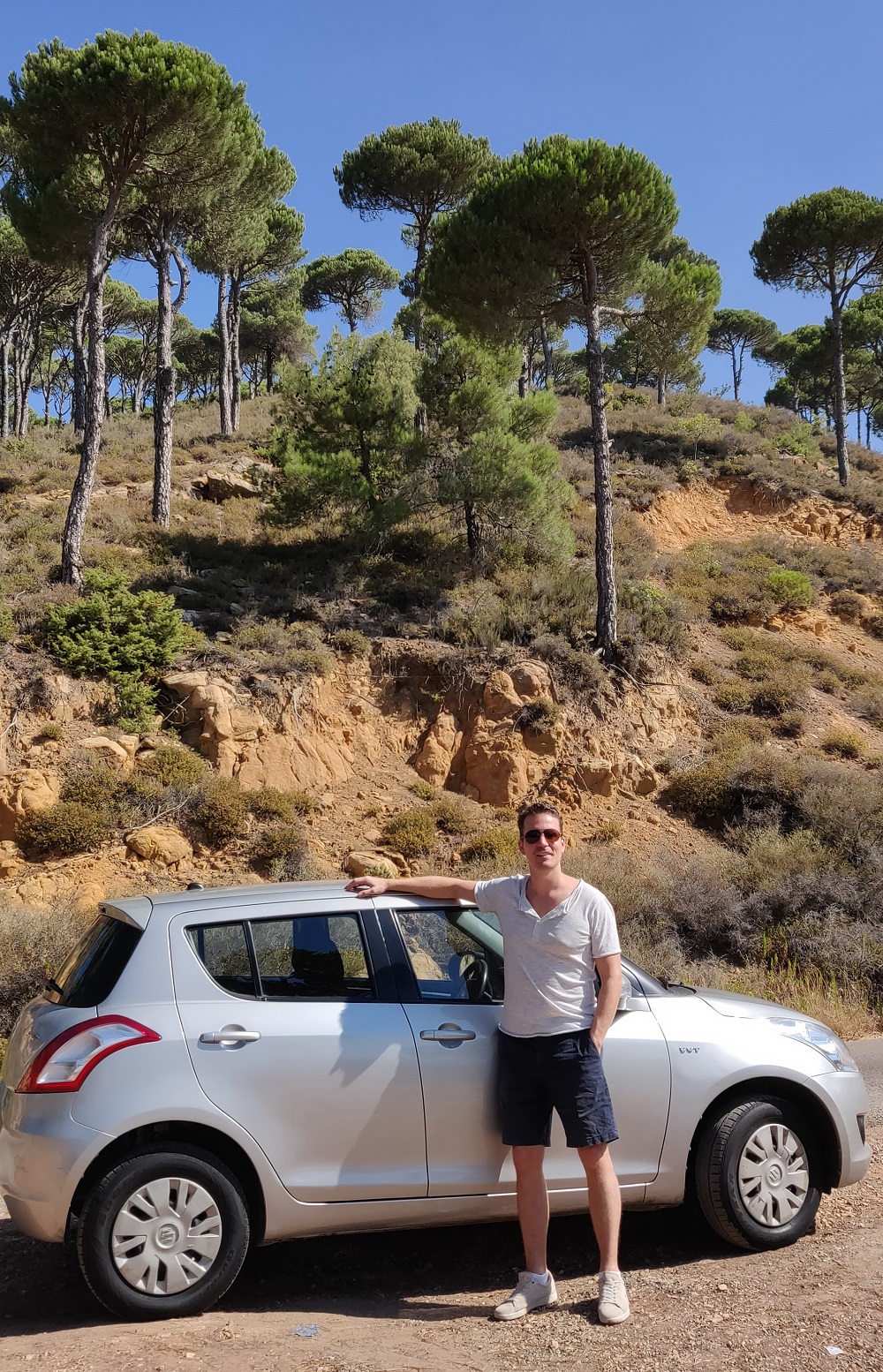
Day 1 – Beirut – Chouf National Park – Bekaa Valley
We actually arrived the late evening before (Day 0). This is how I usually like to travel: leave/fly after work and make the most of my free time. In case this is not possible for you, or if you are flying in from further away than aim to arrive in the early morning, or spend your remainder of Day 0 in Beirut!
Top Tip: We decided to leave for the countryside directly and leave Beirut until the end of our trip, as this fell in the weekend. Making the most of the livelier weekend nightlife! I recommend staying at least one Friday or Saturday night in Beirut during your stay.
Chouf National Park
As said, we left Beirut in the early morning and drove directly to Chouf (or Shouf) National Park. It is famous for its Cedar trees , the national tree of Lebanon, which is also depicted on the country’s flag. Upon arriving, you pay a small entrance fee and choose any hiking trail you like. It is all very straightforward and the trails are well maintained (also for the less fit it is steep but doable). We got an explanation from one of the rangers at the entrance.
It all depends on how long you like to spend here. I would recommend taking the circular “amber” line, but walk halfway and take the same route bac k. Completing the full circle would mean walking in the sun on a road with cars and did not sound too nice.
The trail offers great views over the cedar filled mountain ranges and the distant Mediterranean coastline. Going to the midway point and back will take approximately 1.5 – 2 hours . Ideal for a morning hike!
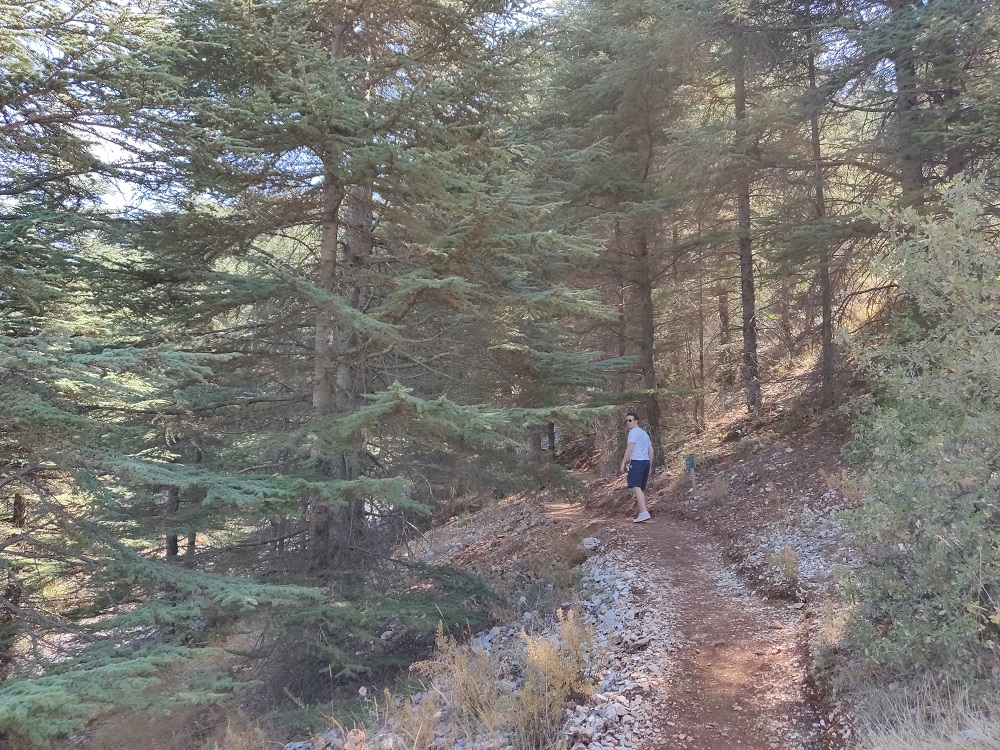
Bekaa Valley
The Bekaa (or Beqaa) Valley was our next destination! This valley is famous for its wineries . We stopped at a few vineyards for tours and wine tastings.
Chateau Kefraya was the first winery we went to and it offers multiple tours (guided and non-guided) at certain timings. Perhaps check their website to time your visit, or like us just book the first available tour or tasting. We took a tour around the vineyard with a tractor train , which also included a tasting of White and Rose wine on the vineyard itself. The tour was a nice experience (perhaps a bit overpriced). Afterwards, we also joined one of the tastings in their tasting room. The tastings are free!
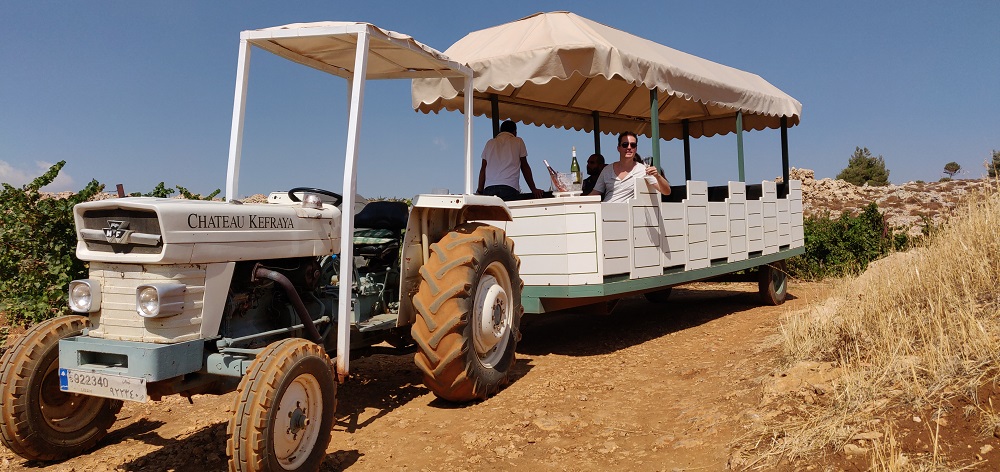
Chateau Kefraya also has a nice restaurant with a terrace . We did not eat here (and beforehand read some negative stories about their buffet-style lunches). It seems they abandoned the buffet concept and switched to a la carte. However, the prices were definitely high-end! Keep that in mind when planning your lunch here!
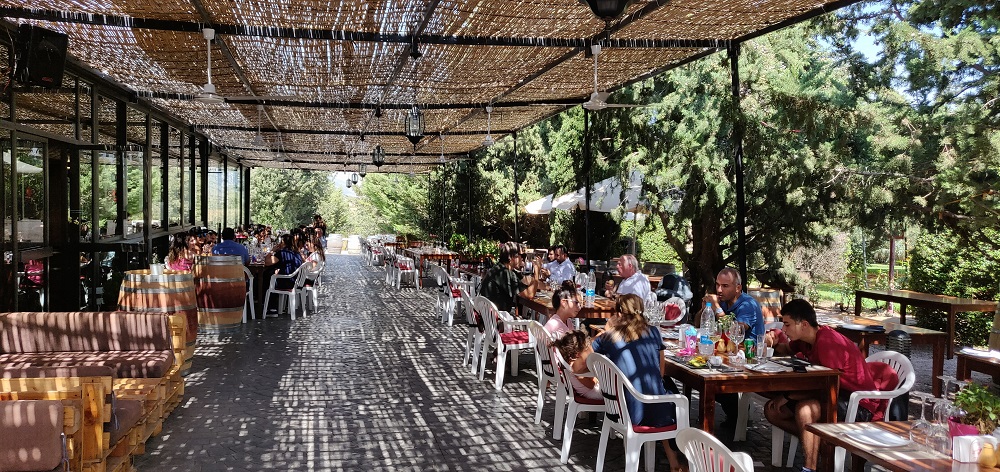
Chateau Ksara was our next winery. The (free) tour was very high pace. A video is played explaining the history of the winery and how winemaking was “introduced” during the French occupation of Lebanon. After the video, you will be guided through the ancient Roman tunnel system , which Ksara uses to store its wines! The tour ends with a free tasting (or paid tasting for more exclusive wines). A nice overall experience (although you are a bit rushed through the entire tour).

There are plenty of hotels around Chateau Ksara and I recommend to book/stay in the surrounding area! (You could also do like us and not book anything in advance, instead see where you end up after day 1)
Interested in wines? Check out my posts about Napa Valley , Perth , Georgia and Tuscany !….
Day 2 – Baalbeck – Bscharre – Baatara waterfall – Douma
On this day we drove further through the Bekaa valley and drove to Baalbeck. We visited Roman temples, mountain ranges, valleys, and picturesque mountain villages.
This small city has one of the best preserved Roman temples to date. We were almost the only visitors (likely due to the proximity to Syria and the related decline of tourists in this region). We spend approximately 1 – 1.5 hours here, taking in the immense complex and small museum in a Roman tunnel system , near the exit.
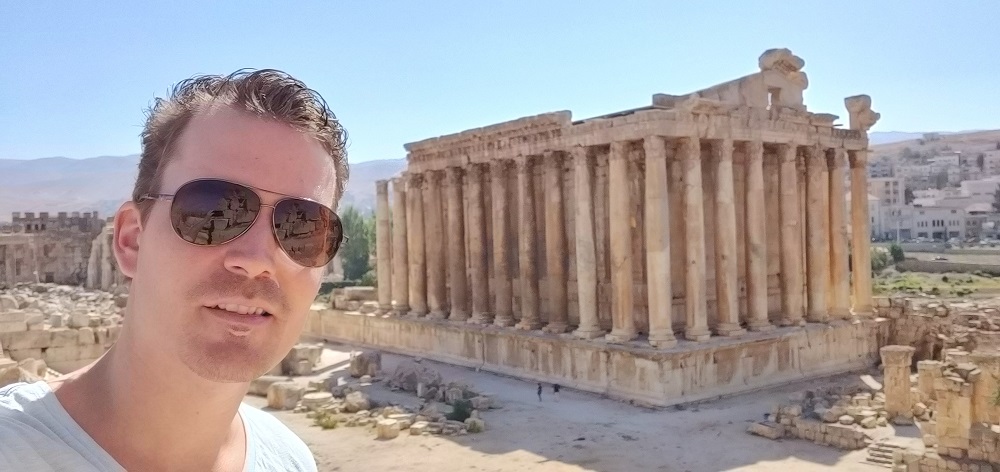
Bscharre and Qannoubine valley
After Baalbeck I recommend you type in Bscharre (or Bsharri) in your navigation system and you will quickly head up the massive mountain ranges. It is approximately 1-hour scenic drive past various ski resorts and dramatic valleys. The town of Bscharre is a nice stop for a drink or lunch with a view over the Qannoubine Valley . This is also an ideal base for hiking (in case you have more time!)
Baatara waterfall
Next stop will is the Baatara waterfall. Driving to the waterfall leads you through Tannourine , a nice mountain village located in a beautiful valley (which offers various nice accommodations).
The Baatara waterfall itself is a spectacular natural site (even without the actual water during our visit in the dry summer season). A short hike on a well-maintained trail leads you to the waterfall. The site also has a restaurant offering refreshments! At the time of writing the site is being further developed. They seem to construct tipis and other tents for accommodation and it also seems the will soon provide adventurous activities like involving rope bridges trails and zip lines.

We stayed in Douma, a quint mountain village with various restaurants and hotels offering nice views over the valley . However definitely also consider neighbouring villages, like Tannourine or Bchaaleh in the area. There are many accommodations here to choose from! We did not see many tourists, but according to our hotel staff, it gets more crowded during weekends!
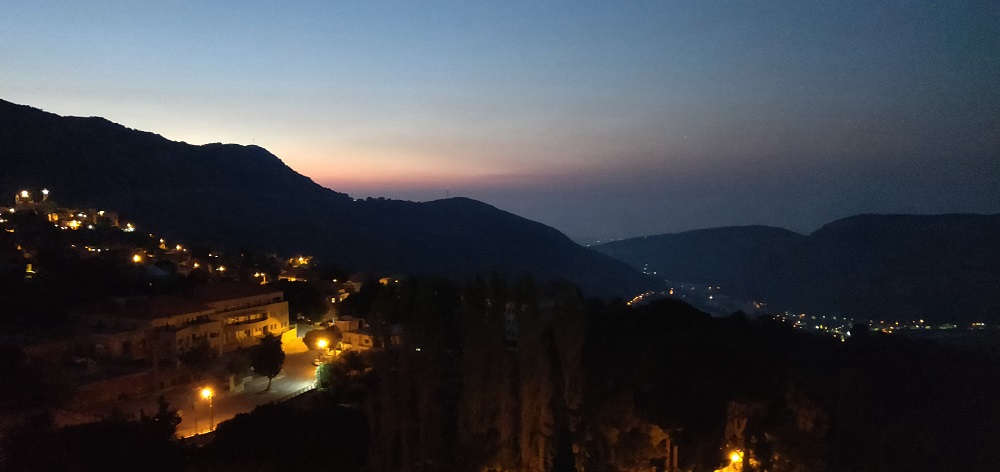
Day 3 – Ixsir Winery and exploring the Mediterranean coast
On this day you will have just too much to choose from! Definitely do some research on your own as well, as there are many beach bars, restaurants, and activities along the Lebanese coast. Let’s first start with some additional wines!…
Ixsir Winery
In addition to the other two wineries on day 1, this is the third large Lebanese winery we visited. It is not located in the Bekaa valley but that does not make it less appealing! This winery is likely our favourite , especially setting wise. Its modern building has won awards in the field of eco-friendliness. On the roof of the building, various grape varieties are planted. It is also where you’ll find the wine tasting area and a nice restaurant! Inside you take the stairs down and you automatically follow the winemaking process from wine pressing facilities to testing areas, to bottling and ending in the cellar. Again really nicely set up!
You can join a free tour (ending with a tasting) at certain set time slots, or you can walk around the winery on your own and do a (free) tasting afterwards. Depending on when you arrive, you can have lunch at the nice outdoor terrace.
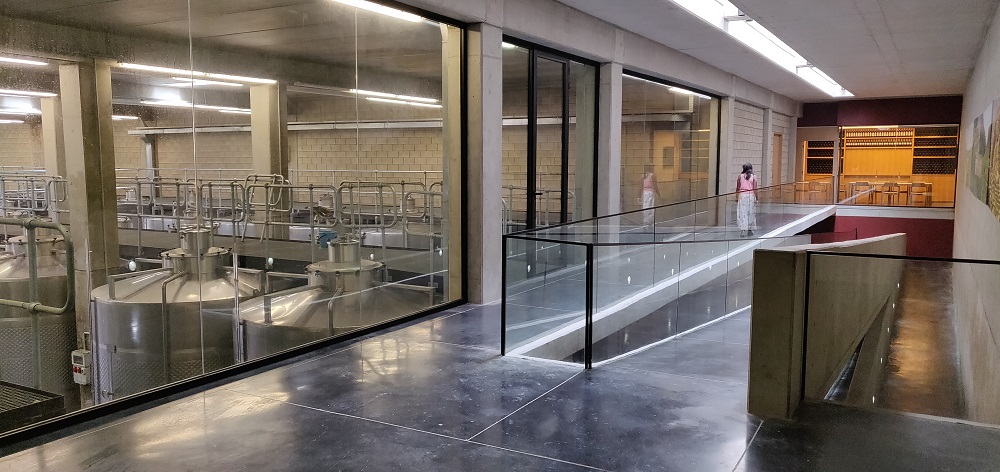
Drive down the Mediterranean coast
After Ixsir, drive down the Mediterranean coast of Lebanon! There is a lot to do, and again do some research yourself on what you are looking for. High chances that you’ll find it in one of the many towns alongside the sea. Some picks and suggestions I received from Lebanese friends and colleagues!
Jamal restaurant – Real nice seafood restaurant with a tiny private bay. We arrived in the morning and although they do serve breakfast and lunch, it is likely best for dinner (reservation only!). Prices are high-end but likely worth it! We only had a cup of tea to enjoy the relaxing atmosphere.
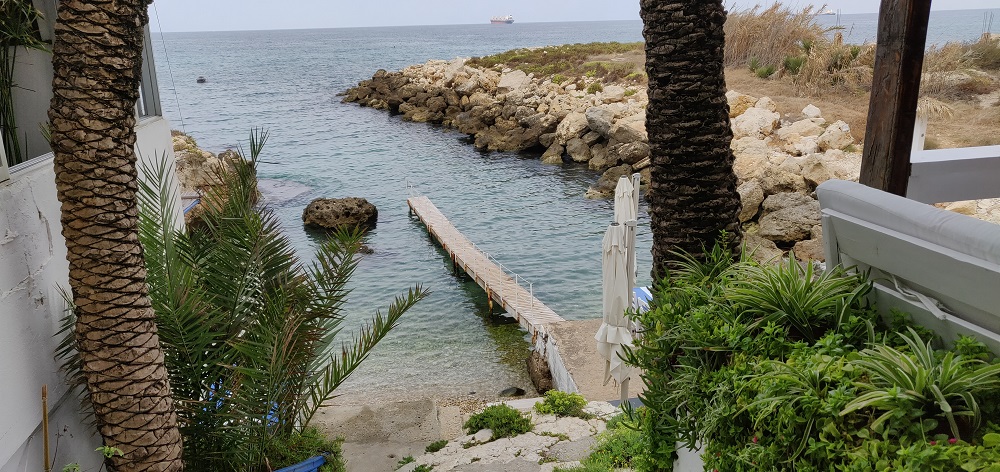
Rachana – This small village (not far from Ixsir Winery) showcases many sculptures from a local artist. We were welcomed by the friendly artist and had a quick walk through his garden. The garden also includes a “sculptured house” where his mother resides. It is a nice quick stop if you are interested!
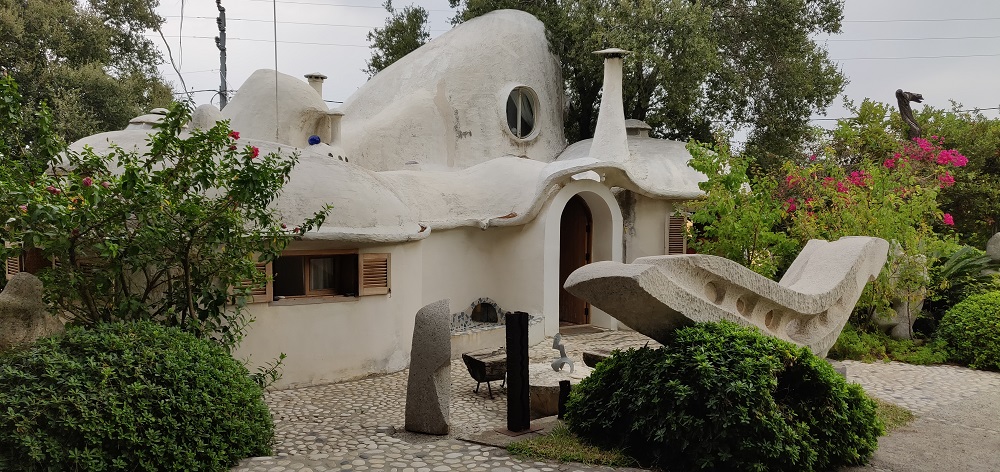
Pierre and Friends – A beach club/bar. They play music and especially on the weekends this is a more trendy place to be. We were here Friday afternoon and it already had a good vibe going. Food prices are midrange, beverage prices a bit on the high-end… They have limited sunbeds.
Top Tip: there are lots of bars and hotels offering beach access on the stretch around Pierre and friends. They likely offer beach access for free (like Pierre and friends at least on weekdays). Do keep this in mind and bargain if required. The food and drinks at these places are lower priced .
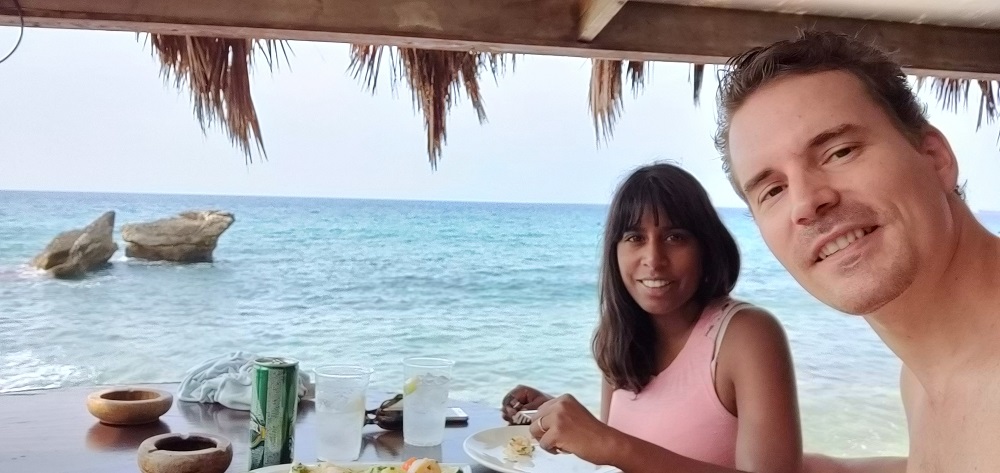
Punte del Este – This is a high-end trendy beach bar annex club annex restaurant in Jounieh. It has South American food and serves great cocktails to enjoy the sunset! We slept in Jounieh, my advice is to stay close to the lively bar and restaurant area that surrounds Punte del Este!

Yachouch Trekking
Supposedly a very nice is trekking in the area in Lebanon, is Yachouch. Unfortunately, we did not put this in our itinerary but depending on which choices you make you can easily fit this. You have to do some research but I assume it has a similar setup to the Chouf trekking, as earlier described: Pay a small fee and choose a trail. If you have more info let me and others know! You could also decide to do this trekking on day 4.
Day 4 –Jeita Grotto – Beirut
On this day you could still include some additional items from Day 3. You could even decide to end your day 3 already in Beirut, all is possible given the small distances. What you definitely should not skip is are the caves…
Jeita Grotto
The Jeita Grotto or Jetta Caves are likely one of the most spectacular caves I have visited ! We went on a Friday morning and it was not crowded. However, the place is definitely build to accommodate big crowds (likely best to avoid public holidays or weekends). You are not allowed to take your camera inside the caves (there are safe lockers provided).
The upper grotto is immense and nicely lit, showcasing the countless giant stalactites, stalagmites and various other types of rock formations.
The lower grotto you enter by boat and also gives you a spectacular perspective on this part of the cave.
Both caves, including the cable cart, train ride, and boat ride are included with your entry ticket and mark my words it is worth it! Do not skip !

Beirut Sightseeing
Beirut is also called the Paris of the middle east . And to some extent, I do agree. The buildings, the architecture, the small streets, the French language, all do resemble Paris. However, the traffic is certainly much more hectic! And I do find that Paris has far more to offer on the day-time sightseeing front… We tried to find our way through the dense traffic to do some sightseeing but found it a slightly disappointing experience.
Top tip: Do not plan to spend too much time in Beirut during the day , rather visit the caves or spend your time on a nearby beach. (Note: This may not count for shopaholics).

However, having said that, Beirut is well known in the region for its great nightlife . Again definitely do some research yourself but here are a few great tips (as I found some sources a bit confusing). If any tips do share via Facebook or Instagram!
Beirut’s nightlife in Monot Street
Al Falamanki Monot street – has a laid back middle eastern setup. We went here early in the evening when you can smoke shisha, have dinner and drinks. This is a great place to start or end your night! It is situated in Monot Street which has lots of hip bars and restaurants!
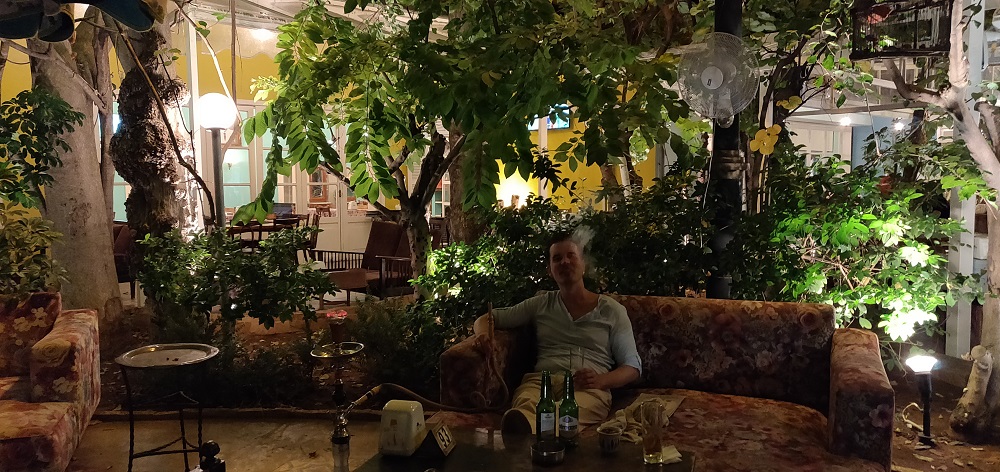
Santana – A very nice Cuban style restaurant/bar. We went here for drinks and dinner! Go early (or reserve) to sit outside. We were late but had a great time at the bar! Definitely pay a visit as the food was great, the wine amazing and it is very well priced!
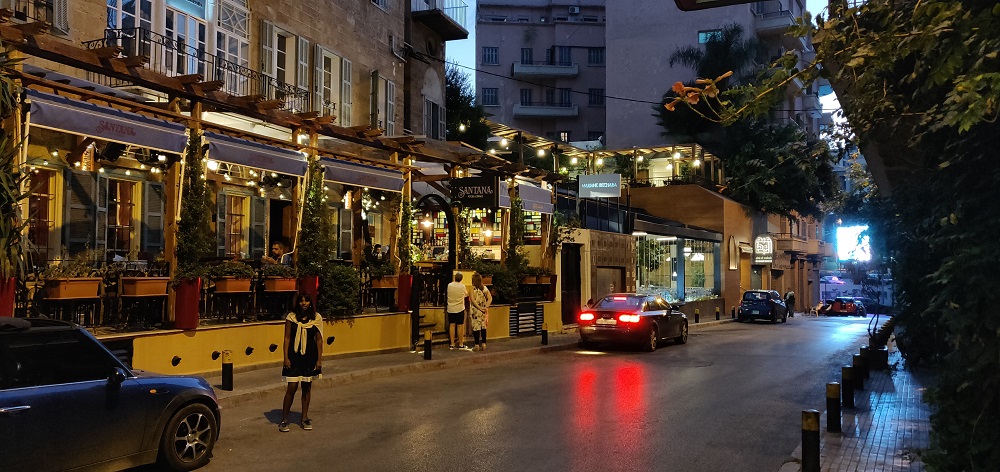
Other areas of interest
Gemmayzeh street – Also a street with many nice bars, cafes, and restaurants. We only checked it out during the day, but looks fun and it is fairly close to Monot street.
Hamra – This area has many shops, but also (supposedly) has a great nightlife. We only went here during the day for some shopping and did spot some bars and restaurants. Again, any tips and tricks for your fellow readers are welcome on Facebook or Instagram!
Day 5 – Free time and flight!
Depending on your flight and/or perhaps your crazy late night Beirut experiences you can choose to spend this day as you like! By now, you will have already seen most of the highlights of Lebanon! Before dropping your rental car at the airport you could optionally:
- Go to Sidon and/or Tyre in the south, for some additional cultural sightseeing.
- Enjoy the great beaches surrounding Beirut
- Go Shopping in Beirut , perhaps check out Hamra area
- Explore the surrounding area on a short hike . Perhaps Yachouch or visit the Jeita grotto on your last day
Whatever you decide to do, you will be looking back on a great couple of days with lots of exciting experiences! Have a good one!
Is it safe to travel to Lebanon?
I found it perfectly safe to travel to Lebanon . Also, the Lebanese people are very friendly and helpful! Some countries have issued travel warnings (mainly due to the current conflict in the region), but apart from some (non-touristy) zones in the North-Eastern part, Lebanon is very safe to visit. Obviously check the latest news, as the situations could always change!
You will come across many army posts , but remember these are there to maintain your safety. It is only logical the army is involved, given that the country borders a civil war situation. We also did see some (small) UN refugee camps, as Lebanon is harbouring many Syrian refugees.
Probably a larger safety hazard would be the maniacal driving style of many Lebanese and the absence of lines on most roads. This takes some getting used to. Likely also a good reason to start with exploring the countryside and avoid most of congested Beirut in the first days of driving!
Again: Both, the army posts nor the Lebanese driving style are reasons to avoid Lebanon! Do go, you will enjoy!
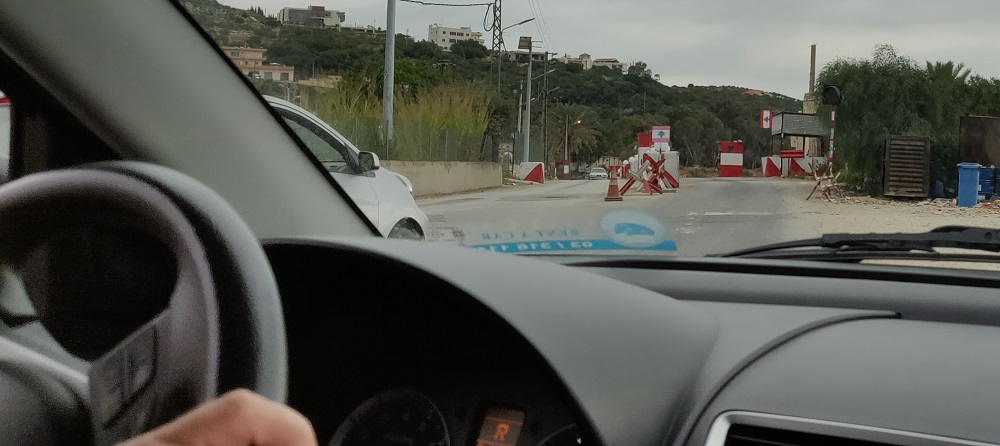
All excited about visiting Lebanon or perhaps explore the rest of the Middle East? What about Jordan ? or Musandam, Oman ? Or perhaps want to read all about my road trip to Saudi Arabia ?
Another fun combination could be to travel from Cyprus by Ferry!… follow the link for all Ghost around the Globe tips & tricks on this Mediterranean island!
Related Posts
- How we got overwhelmed by Jordan hospitality in Petra
- Things to do in Georgia and Tbilisi
- Cyprus top sights in a 1-day itinerary!

Ultimate Lebanon Travel Guide
The ultimate travel guide to lebanon.
Last Updated: 22 Feb 2023.
This guide will tell you everything you need to know for visiting Lebanon during the current crisis, updated regularly with the latest pandemic travel restrictions and for changes caused by Lebanon’s current crises. I have lived in Lebanon for the past three years ( narrowly surviving the 2020 port explosion ) and have visited almost every inch of this beautiful and crazy country.
Lebanon was a beautiful country with vibrant cities and beautiful ancient historic sites before the multiple crises that began in 2019. And actually, it still is. With a bit of planning, it’s still possible to have an amazing trip here, despite the political crisis, economic crisis, electricity shortages, frequent protests and the after effects of the port explosion.
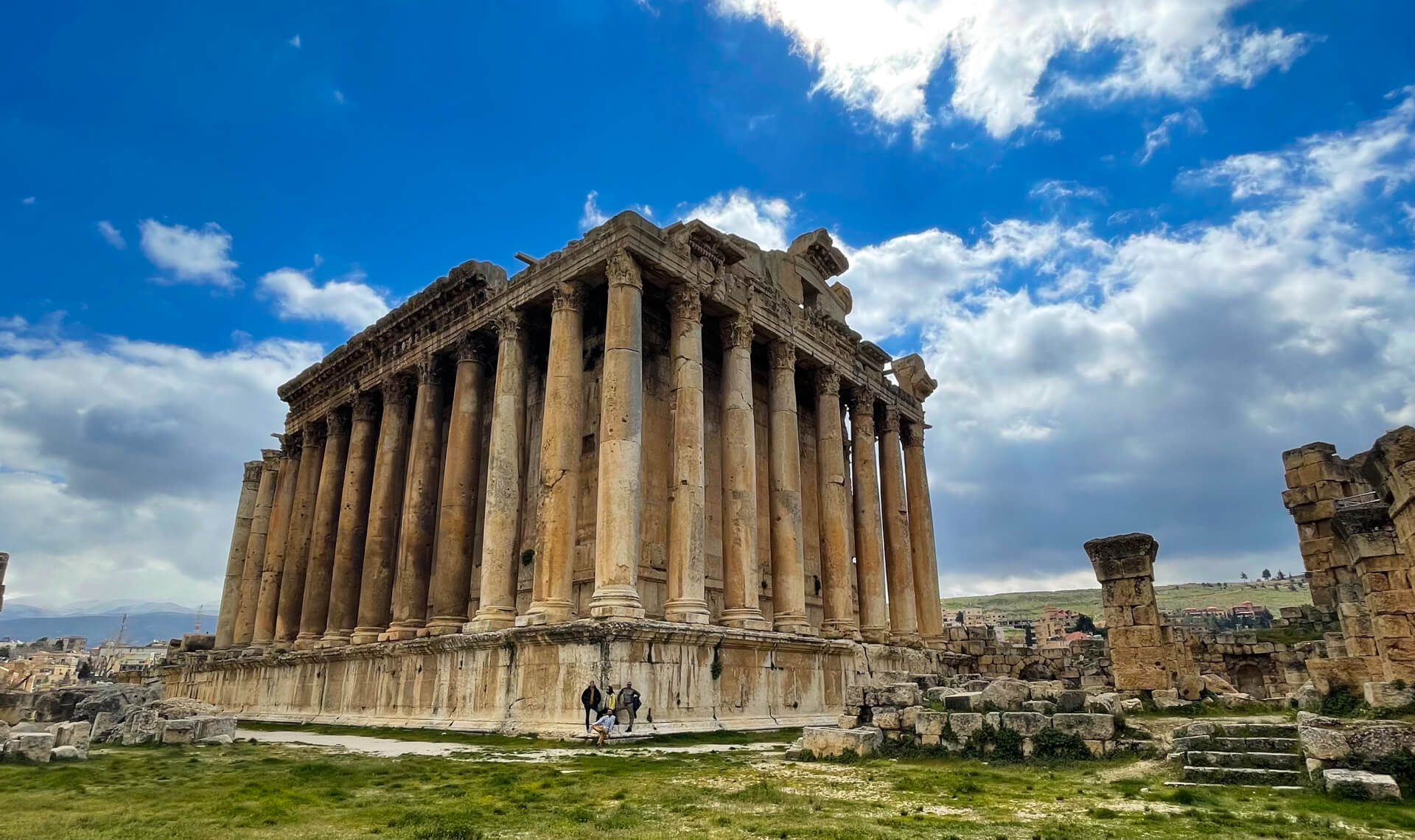
The 2,200 year old Roman temple of Bacchus, the wine god, in Baalbek.
Places to Visit
One of the best things about Lebanon is that almost any area can be visited as a day trip from Beirut. You can choose to do the below as a series of day trips or stay overnight in different cities as you travel. Staying overnight reduces the time spent travelling, but also means you have to take everything with you as you travel.
In my opinion, the real must see place in Beirut are the Raouche (Pigeon) rocks, which are a beautiful place to watch the sunset. If you’re feeling adventurous, take the path down the cliff from the viewing point next to the Bay Rock Cafe (opposite Starbucks) and sit on the rocks opposite Raouche. From there, not only do you get a beautiful view of the rocks themselves, but also of the sun setting over the Mediterranean Sea. It’s a great place to enjoy a couple of beers or a bottle of wine.
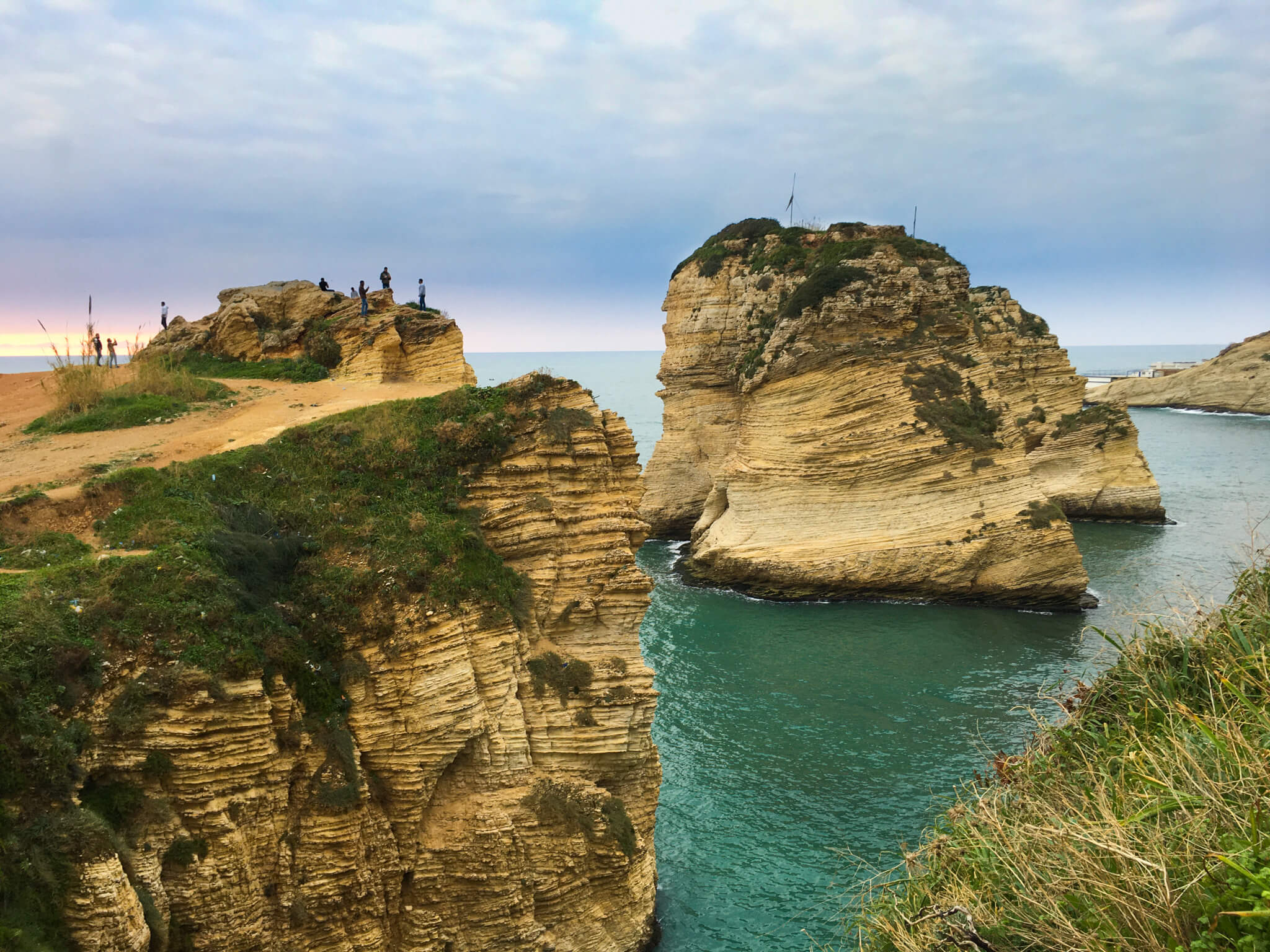
The best place to view Pigeon Rocks (left, with people gathered). Also a great location to take a bottle of wine for a romantic sunset date.
One of the joys of Beirut is just strolling through its vibrant neighbourhoods. I particularly recommend Hamra, which is an interesting mix of old and new, with boutique shops, bars and restaurants. Gemayze and Mar Mikhael, the main bar district, are also gradually coming back to life after the port explosion destroyed them in 2020. Zaytuna Bay is a chance to see the more upmarket side of Beirut.
The centre of the Beirut Souks area, including the iconic clock tower in Place de L’Etoile and the Roman baths, has reopened after being cordoned off by the military due to protests for the past two and a half years. Until recently, it was still possible to enter the ‘egg,’ an abandoned cinema building purportedly left to remind people of the atrocities of the civil war (it’s full of bullet holes), but unfortunately the authorities have now built a fence around it to keep people out.
The National Museum of Beirut reopened to tourists in summer 2021 and is currently open daily. Be sure not to miss the ‘mummy room’ on the basement level, which houses three mummies from the Qadisha Valley. It’s a little temperature-controlled room in a corner and easy to miss if you don’t know it’s there.
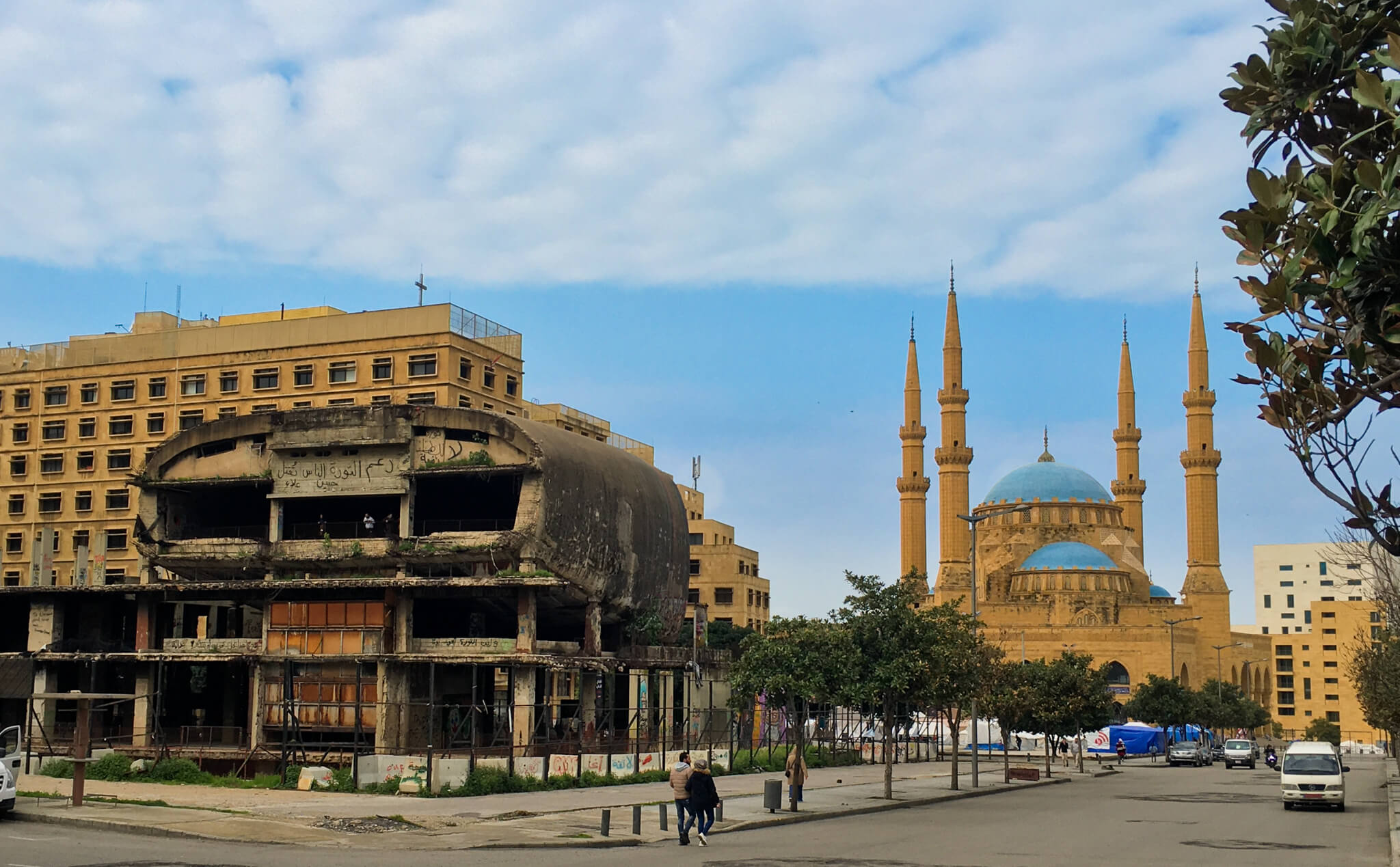
The Beirut ‘egg’ (abandoned cinema) and the main mosque.
The Jeita Grottoes & Byblos
The Jeita Grottoes, located slightly to the north of Beirut, are spectacular and conveniently located not far from the coastal highway up to Byblos, making the two a convenient day trip. You can also choose to stay overnight in Byblos before heading further up north.
At the Jeita Grottoes, you have to leave your phone in a little locker near the entrance, as they don’t allow photographs. It doesn’t look very secure, but I’ve never heard of anyone having problems.
The main attraction of Byblos is wandering the beautiful historic centre, with its ancient Mediterranean architecture, beautiful flowers growing up the walls and in some cases across nets over the streets and cute boutiques, bars and restaurants. There’s also an ancient citadel that’s worth checking out and the picturesque little harbour.
If you’re looking for something a little adventurous, walk along the right hand wall of the harbour (as you’re facing out to sea) until you reach the ancient tower at the harbour entrance. From here, with a bit of care, you can climb up to the top of the tower for amazing sunset views, often without any other people.
If the beach is more your thing, slightly north of the harbour you’ll find a pebble beach that’s great for swimming in the summer (approximately May to October). Finally, Byblos is home to Fenicia restaurant, in my opinion one of the best restaurants in the whole of Lebanon.
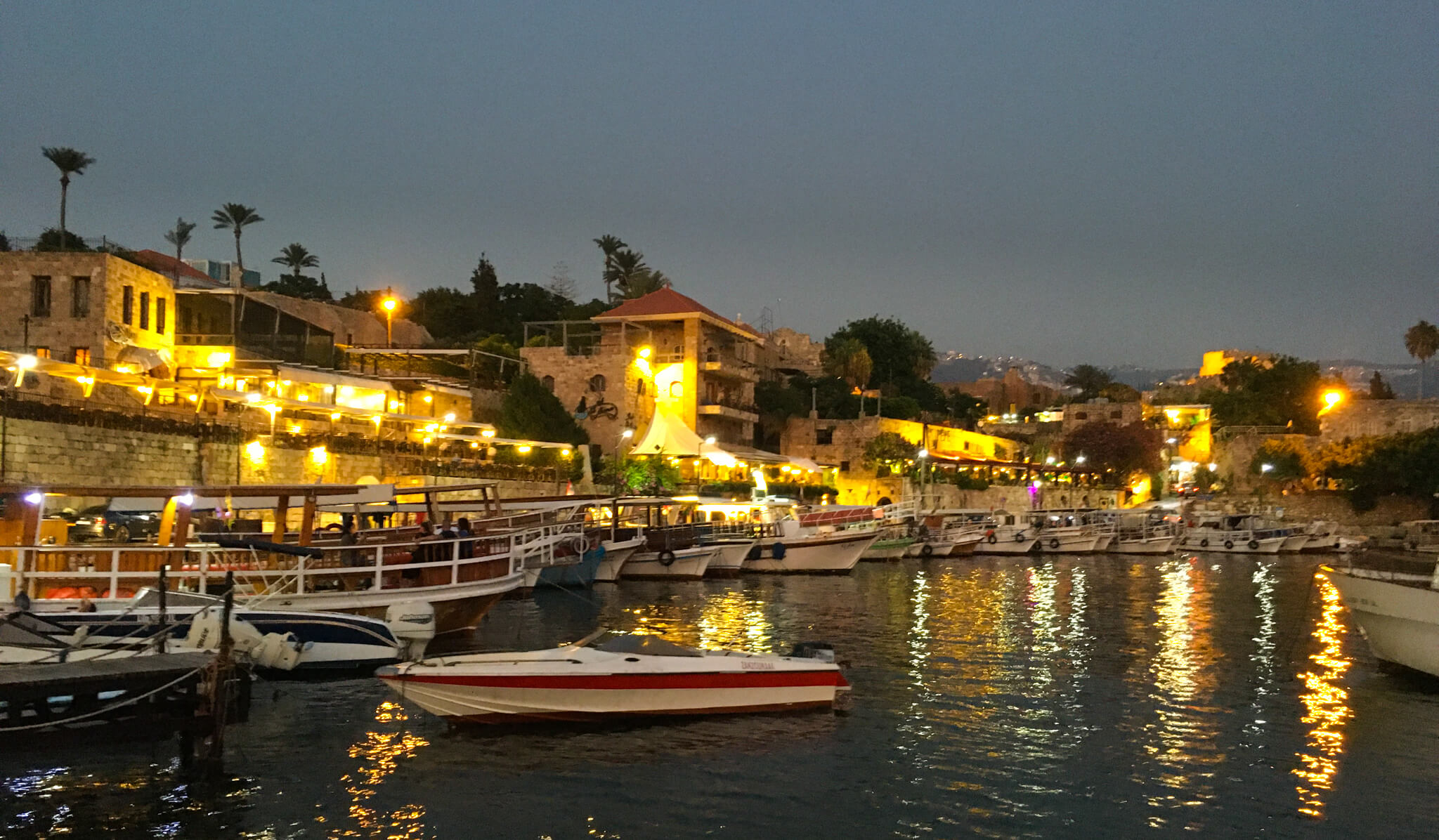
Byblos harbour is beautiful day and night.
A pretty seaside town in the north of Lebanon, Batroun is nice for an afternoon to wander it’s old town, which is basically a less touristy version of Byblos. In the Batroun area there are several off-the-beaten-track places that are worth checking out if you have time:
- The Msailha fort, just up the main highway from the city, is small but impressive, standing alone on a huge rock (it’s also free to enter). The location is here on Google Maps .
- The Rock of Hamat, a giant rock painted in the colours of the Lebanese flag, on the edge of the old cliffside road from Batroun to Chekka. The location is here on Google Maps .
- The cliffside walk though the old road tunnel to the north of the cliffside road from Batroun to Chekka. Go to coordinates 34.311459, 35.681865 ( here on Google Maps ) and then take the footpath on the left hand side of the road before the current tunnel entrance.
- For the more adventurous travellers, the disused railway tunnel. To reach the entrance, after the current road tunnel walk about 100m then go down the footpath on the left hand side of the road. Two thirds of the way down, there’s a little bank on the left that you can scramble up (about 2-3m). The entrance to the tunnel is at the top of this bank.
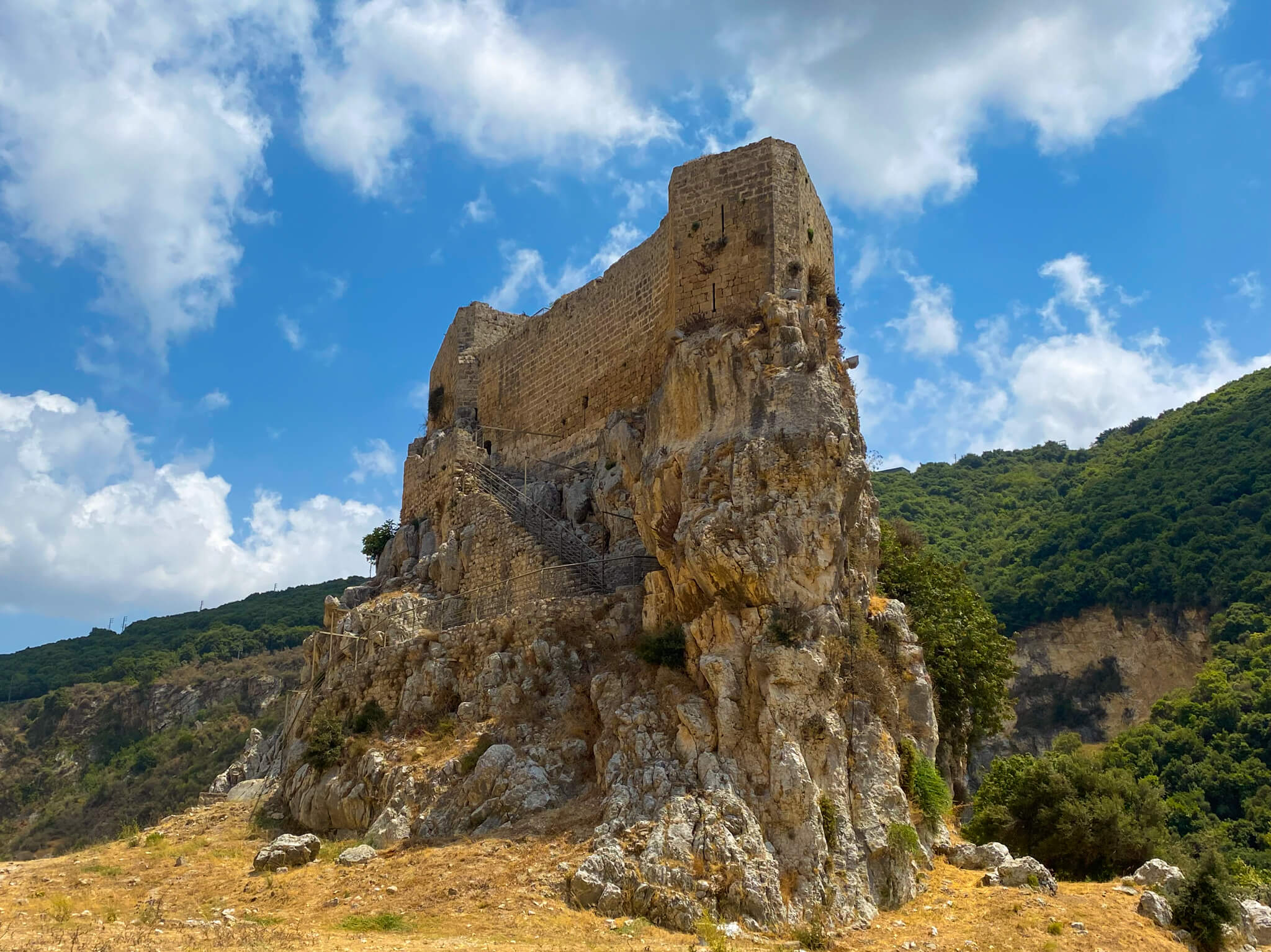
The spectacular Mseilha Fort, just outside of Batroun.
Much of the time, Lebanon doesn’t feel like the Middle East. There are no deserts, no camels (apart from a couple in Chouf that were imported from Saudi just to entertain tourists) and many of the main cities, including Beirut, Byblos and Batroun, have more of a Mediterranean feel than a Middle Eastern feel. And then you reach Tripoli. Check out the old souk (market) and the citadel. The souk seems to close around sunset at the moment, possibly due to a lack of power after dark.
Tripoli’s Corniche is, in my opinion, not as nice as Beirut’s, but Al Mina, the old town, is quaint and has several nice restaurants, including The Sailor Woman, my favourite seafood restaurant in Lebanon. If you have plenty of time, you can also catch a boat from the Corniche to Palm Island, which has the biggest sandy beach in the north of Lebanon. It’s a nice place to chill out and swim in the sea.
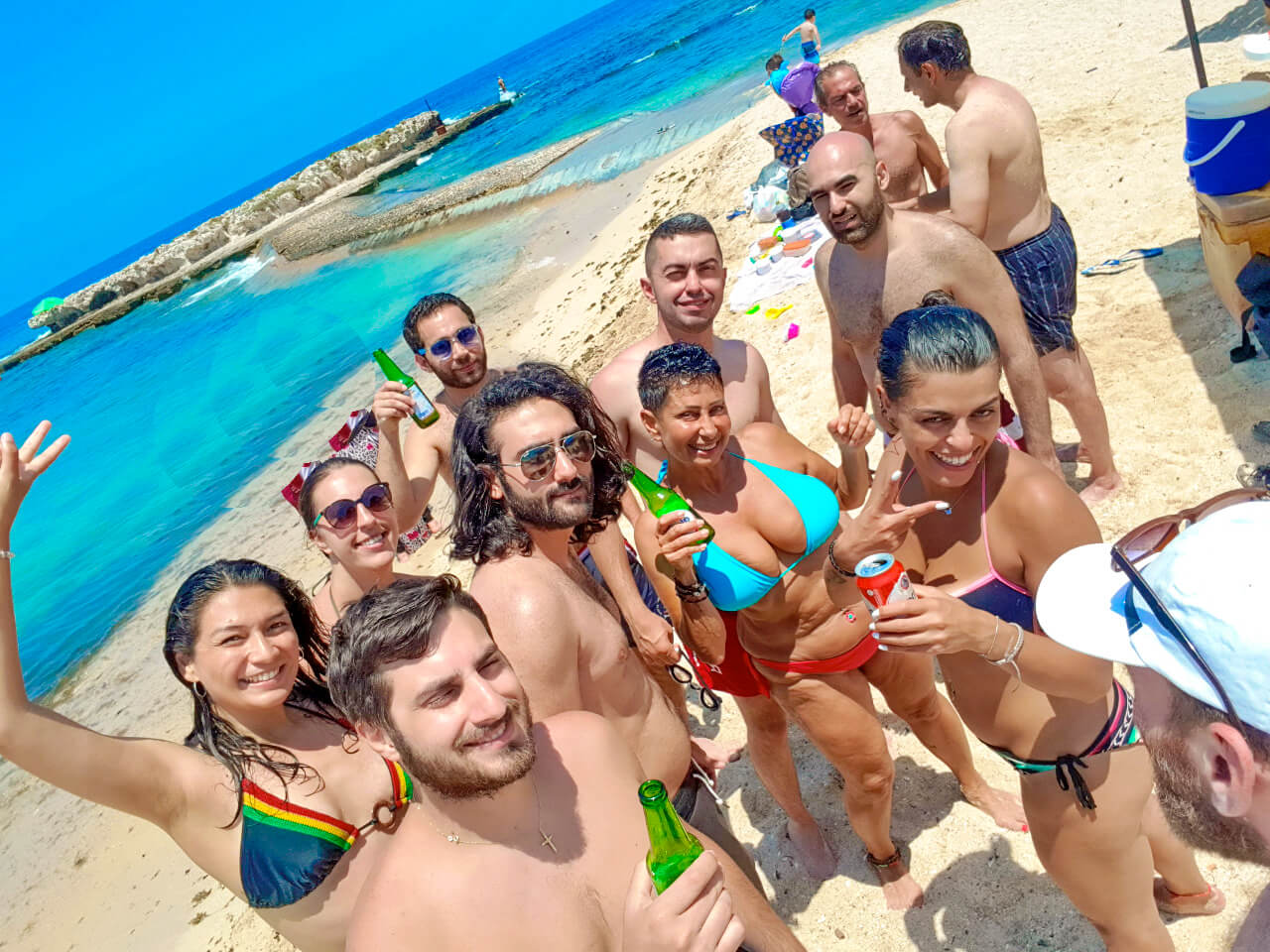
Beach Day on Rabbit Island with a group of crazy Couchsurfers.
Anjar & Baalbek
The Roman ruins at Baalbek are some of the most spectacular in the world, especially the enormous temple of Bacchus, the wine God (gotta love Roman priorities). That’s why you should visit Anjar first! Anjar is beautiful and spectacular, but after Baalbek, it will seem small and insignificant in comparison. Don’t forget to try sfeeha, the local delicacy, while you’re in Baalbek. Baalbek is also home to the Sayyida Khawla shrine, one of the most beautiful and historic Shia shrines in Lebanon.
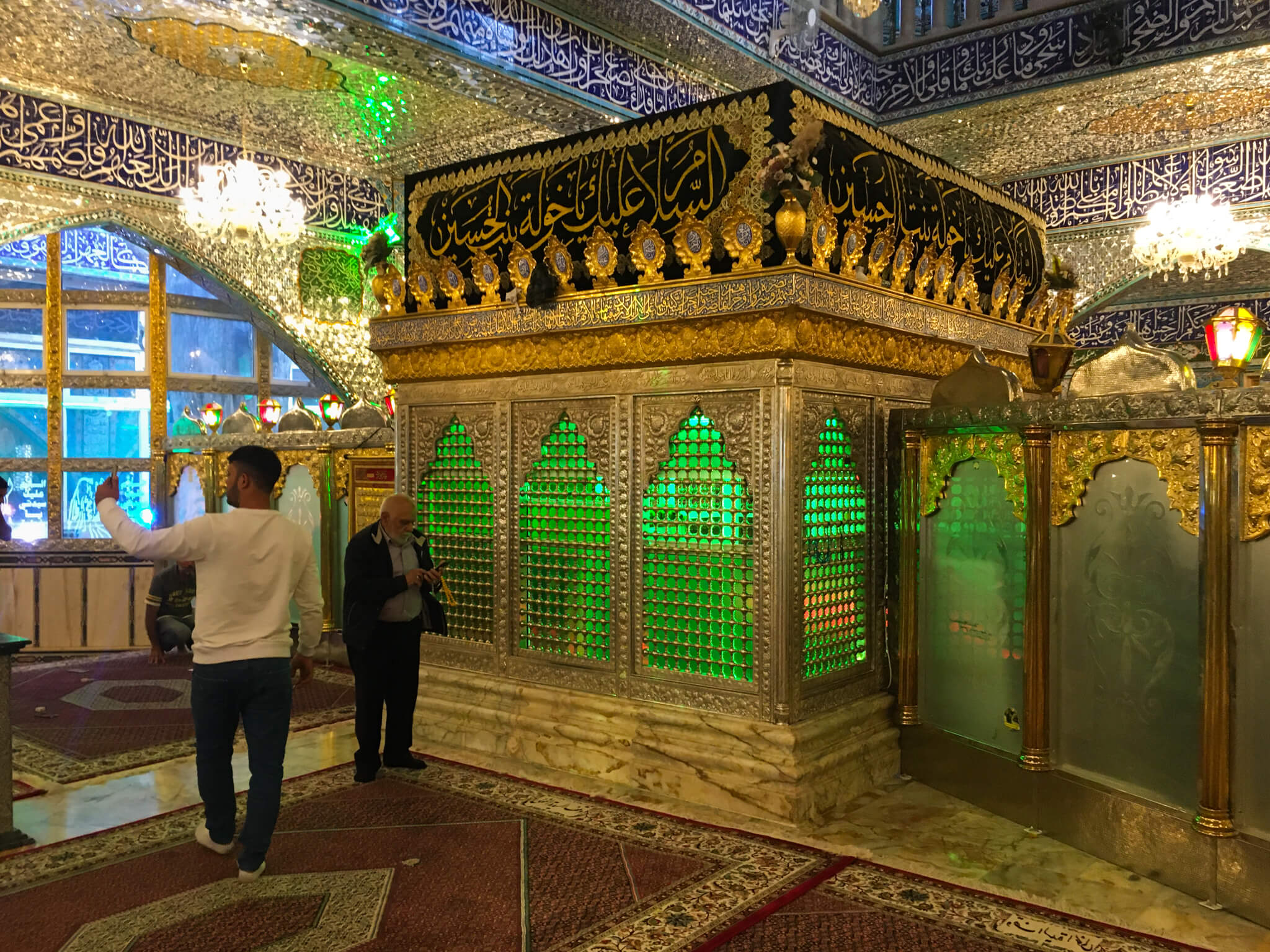
Local believe that Khawla, daughter of Imam al-Husayn, is buried in this tomb, although historians aren’t sure that Imam al-Husayn even had a daughter.
Baalbek has a bad reputation for safety, but this generally refers to other parts of Baalbek governorate, not Baalbek city. If you’re concerned about safety, just don’t go north of the city (and definitely keep away from Arsel, which has a justifiably rough reputation).
Saida & Mleeta
Saida has probably the most beautiful souk (market) in the whole of Lebanon, full of ancient stone archways and local people hawking traditional wares (and delicious Arab sweets). There’s also the small but worth-a-visit Dabane Palace Museum, a soap museum and the Hammam el-Sheikh traditional bathhouse. The seafort on the waterfront is also worth a visit (although more spectacular from the outside than inside). If you want a beer, go to Resthouse, a restaurant next to the seafort that is the only place in Saida allowed to sell alcohol. Its garden is also a great place to take photos of the seafort.
Mleeta is a tiny village in the mountains that is home to probably the most well-maintained museum in Lebanon – The Hezbollah Museum. Here, a free English-speaking guide will take you around and tell you about the various wars against Israel and Hezbollah’s role in protecting and driving out the enemy. Whatever your political views, the museum is very well done and worth a visit. It’s located about a 40-minute drive up into the mountains above Saida.
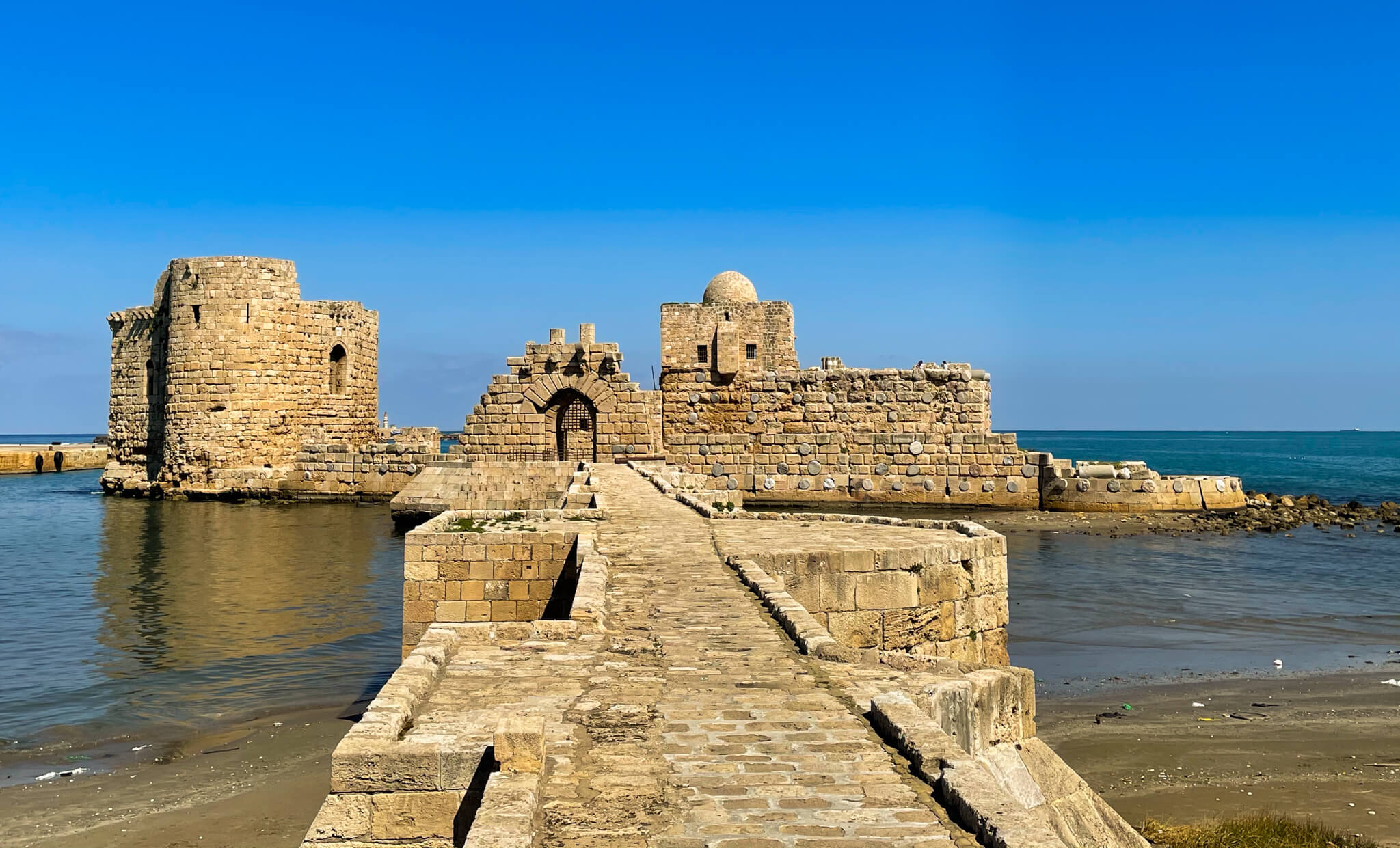
The Saida seafort – a castle in the sea.
One of the oldest cities in the world, Tyre is home to an ancient Roman Hippodrome. The site itself is a bit rundown now, but the ruins are still impressive. There’s also a pretty little old town with less tourists than other cities in Lebanon and a colourful harbour full of fishing boats. The restaurants next to it are worth checking out for some fresh seafood too. To the south of the city is Lebanon’s longest sandy beach. This was affected by the oil spill off Israel in 2021, but is now clean again and safe for swimming.
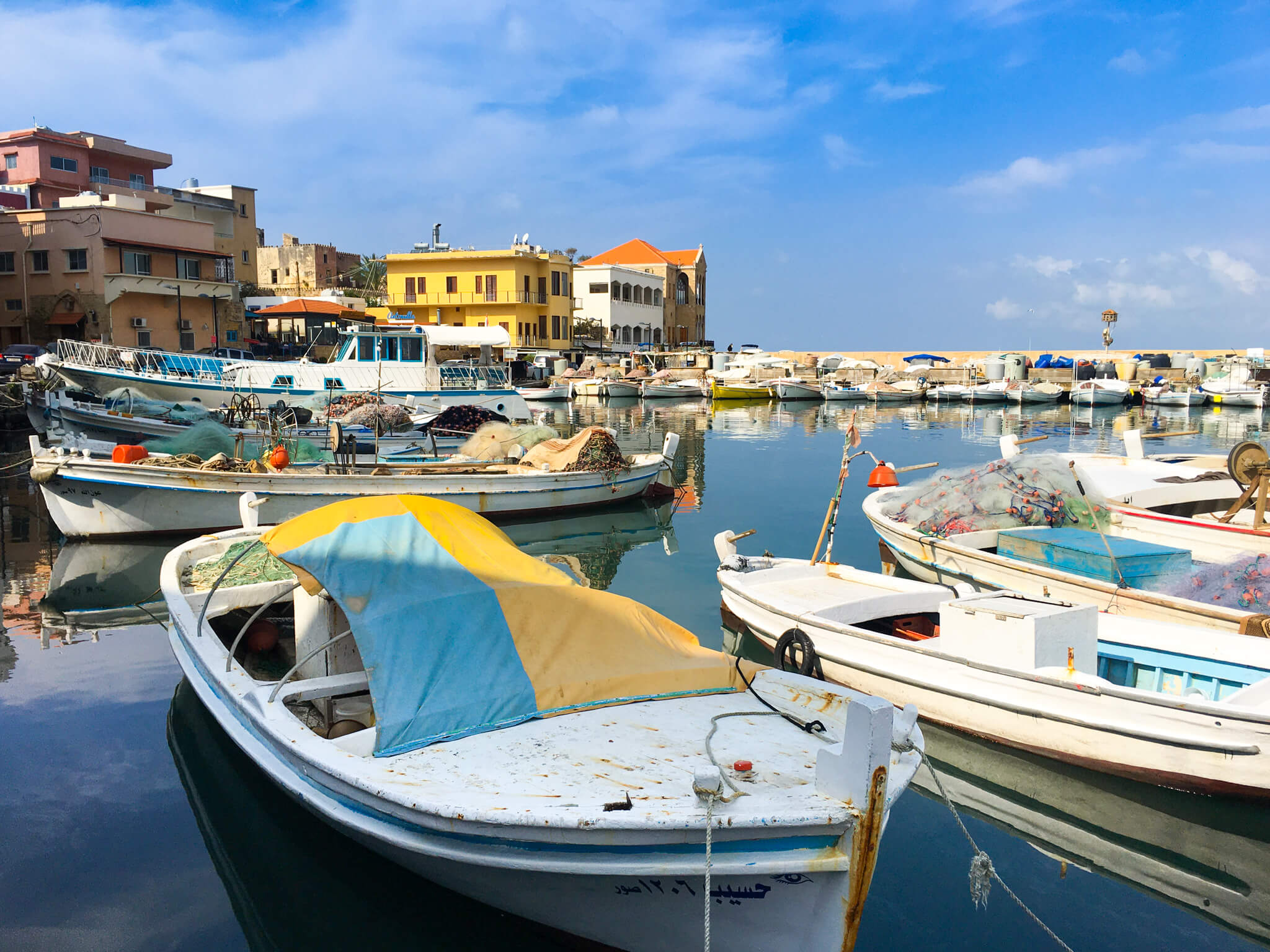
Tyre’s colourful harbour – a great place to eat fresh seafood.
The Northern Mountains
There are many beautiful places to visit in the northern mountains of Lebanon, aside from just the pleasure of driving through the local villages and the often breathtaking scenery. The three I would recommend for visitors are:
- The 2,000 year old olive trees in Bchaleeh, which are supposedly the oldest in the world. Local legends say that the olive branch from the story of Noah’s Ark came from one of these trees, but you can make up your own mind. The location is clearly marked on Google Maps .
- The viewpoint at Aqoura. Climb the rocky hill opposite the church for spectacular 360 degree views). The start point is at Saydat Al Qarn church ( here on Google Maps ).
- The Batarra Waterfall. This 255m (837 ft) waterfall, which passes through several layers of Jurassic limestone rock, is definitely the most beautiful in Lebanon. It’s best visited in the spring when there is plenty of meltwater. I went in early August once and there was no water at all.
- The Cedars of God. At possibly 2,500 years old, the Cedars of God are some of the oldest cedar trees in the world and a UNESCO world heritage site to boot.
You will need a car to reach these locations, or you could try hitchhiking.
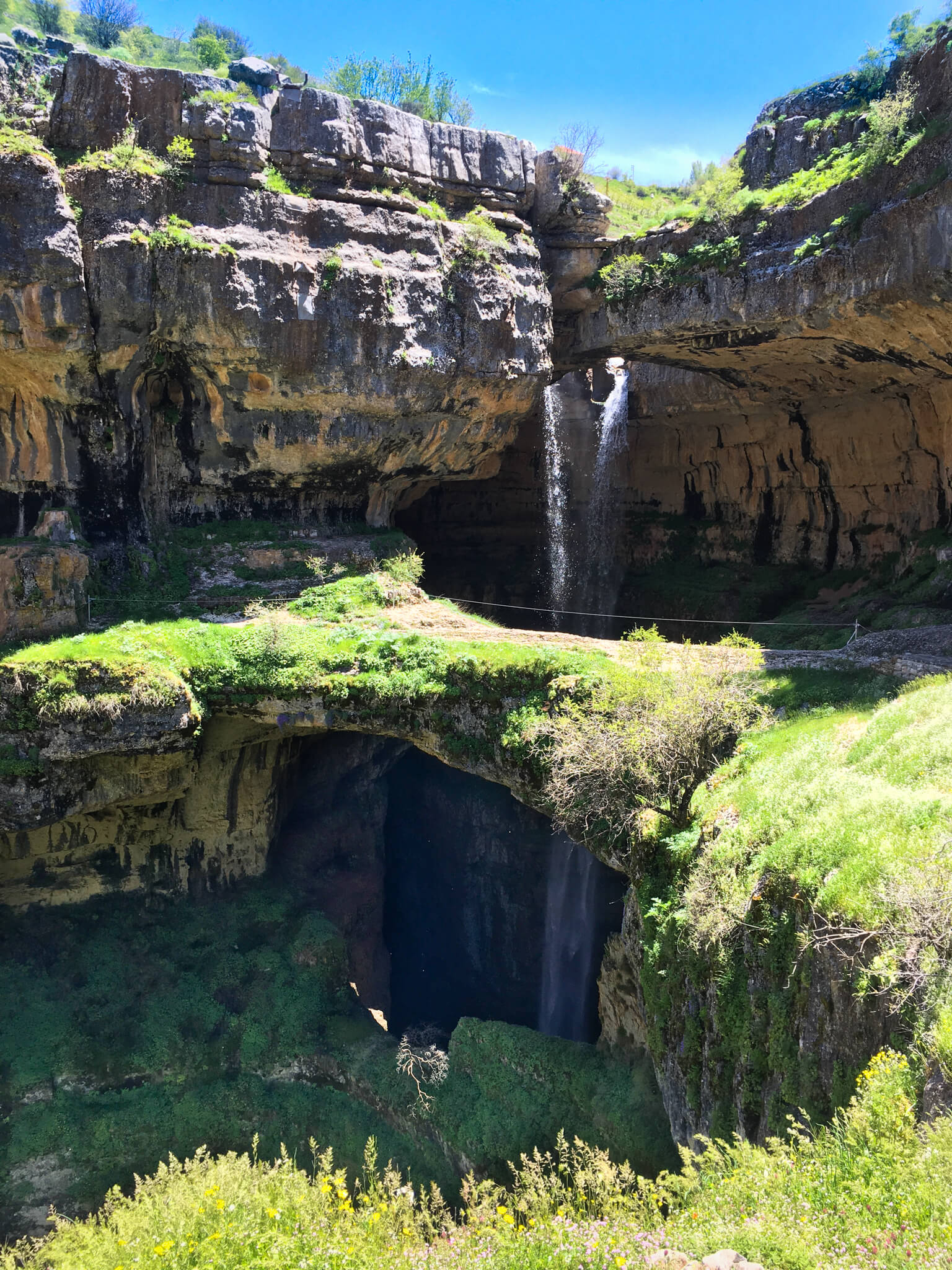
The 255m Batarra waterfall. Try throwing a stone down into the chasm below and see how long it takes before you near it hit the bottom.
The Chouf Region
Home to the majority of the Druze population of Lebanon, the Chouf region also contains the country’s largest remaining cedar forests at the Chouf Biosphere Reserve. This is a great place to do some hiking with trails from 5 minutes to a full day.
The region also contains the Bettadine palace, which was built by the Ottomans, and the Moussa Palace, which was built over several decades by a crazy Lebanese man who wanted his own palace. The latter contains a vast collection of ancient weapons and some very well done scenes from traditional Lebanese life, created with models animated in various ways. I love the concept that the guy just suddenly decided to build himself a palace!
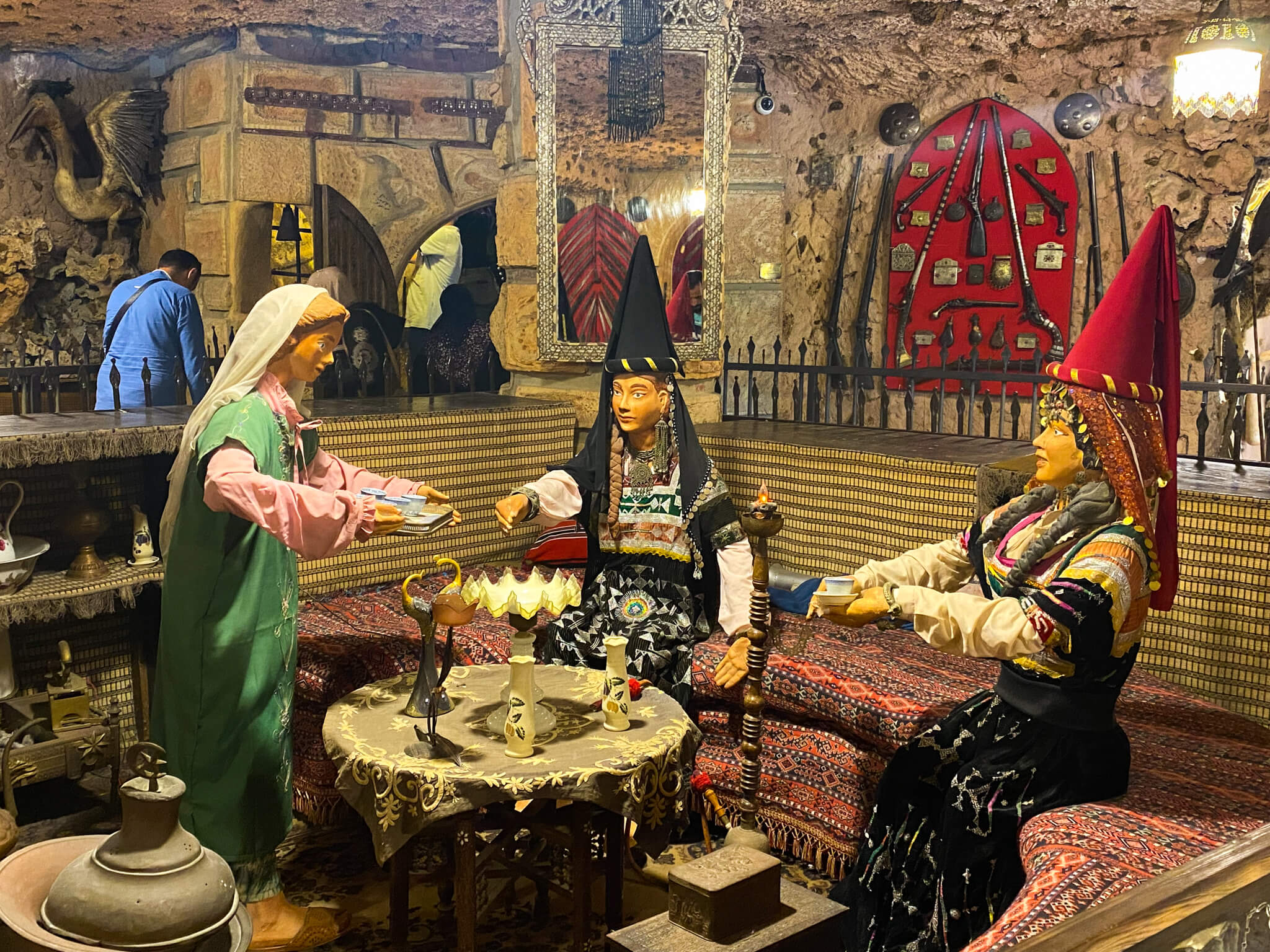
A traditional Lebanese scene in the Moussa Palace museum.
The Christian city of Jounieh used to be where Arabs from stricter countries in the Middle East went to party and unwind, as evidenced by the strip of hotels on the coast that look like they’ve seen better days. Even now, the city is still home to Lebanon’s only casino, Casino du Liban, and a bunch of ‘super night clubs’ – basically stripclubs.
For tourists not looking for such things, the main attraction is Harissa, the hill behind the city with a statue of Our Lady of Lebanon on the top. There is also a very nice (but steep) hike up from the city below through the dense forest with occasional views across the bay. The start of the path is at coordinates 33.997710, 35.650976 ( here on Google Maps ). Recommended for sunset.
Hermel and Akkar
The far north of Lebanon is known as one of its most dangerous areas, but most reports are highly exaggerated. The main attraction here is the 2,500 year-old Pyramid of Hermel, which I visited in 2021 . Even now, no one’s quite sure who built it! Worth a visit if you have the time, but its location in one of the most remote parts of the country means that it won’t fit many peoples’ itineraries.
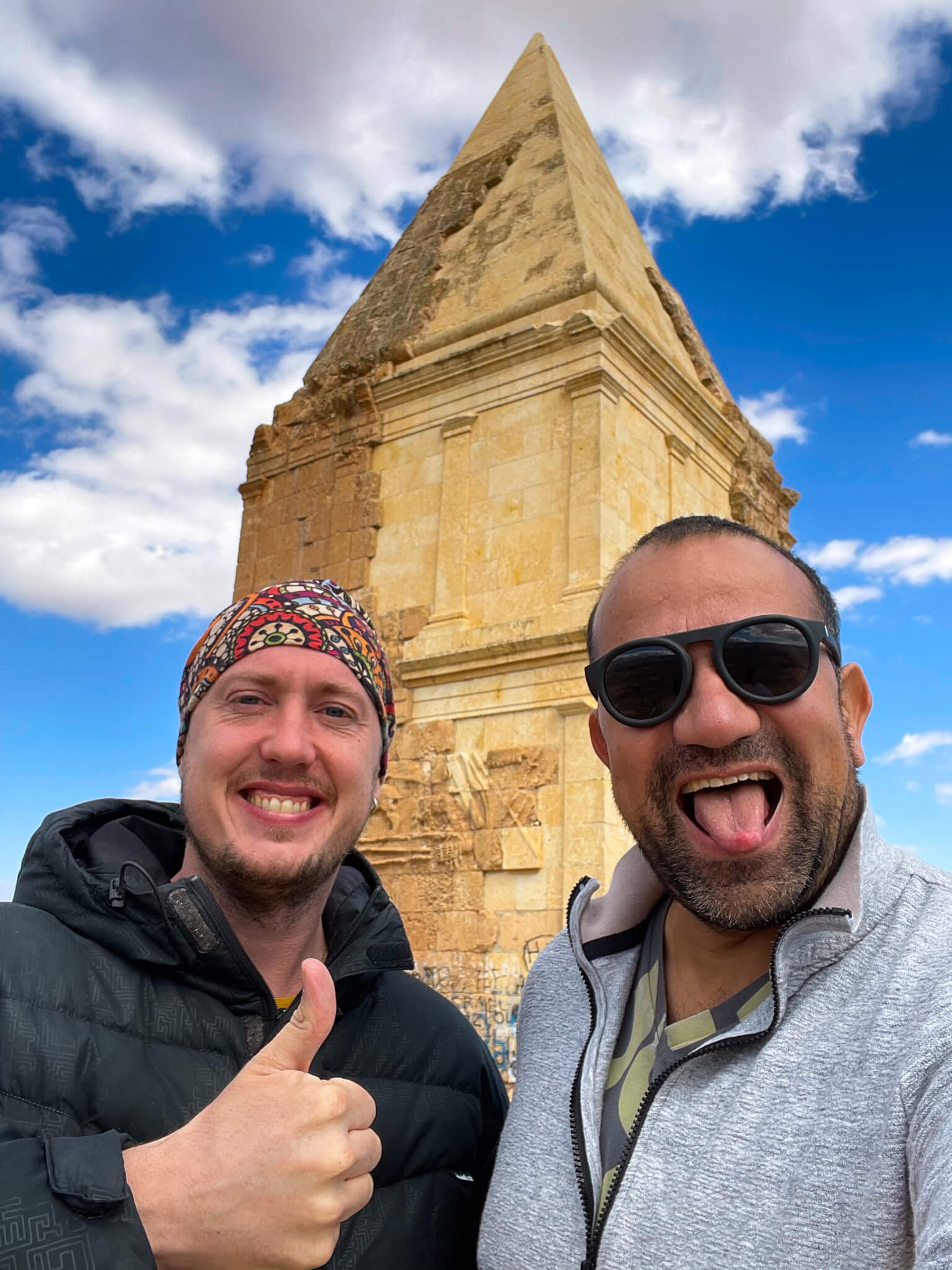
Nobody is sure why the Pyramid of Hermel was built.
The Far South (UNIFIL-Controlled Area)
The far south of Lebanon is interesting, because you can drive along beside the border wall with Israel, which is covered in security cameras and, in some places, graffiti similar to that seen in the Palestinian territories. The coast at Naqoura also have the cleanest waters in Lebanon for swimming, thanks to the low population density and proximity to Israel, which has better sewage treatment facilities than Lebanon.
The downside is that this area is under control of the UN peacekeeping force (UNIFIL) and foreigners need a permit to enter it. See below the section on Entering the UNIFIL-Controlled Area for details of how to obtain the permit.
This picturesque little village in the mountains near Saida is often overlooked by travellers, which is a pity, as it boasts one of Lebanon’s most spectacular waterfalls. For hikers, the village is surrounded by Lebanon’s largest pine forest. For those who want something darker, there’re also some interesting abandoned buildings leftover from Lebanon’s war of resistance against Israel to explore. Read more in my dedicated Jezzine guide here.
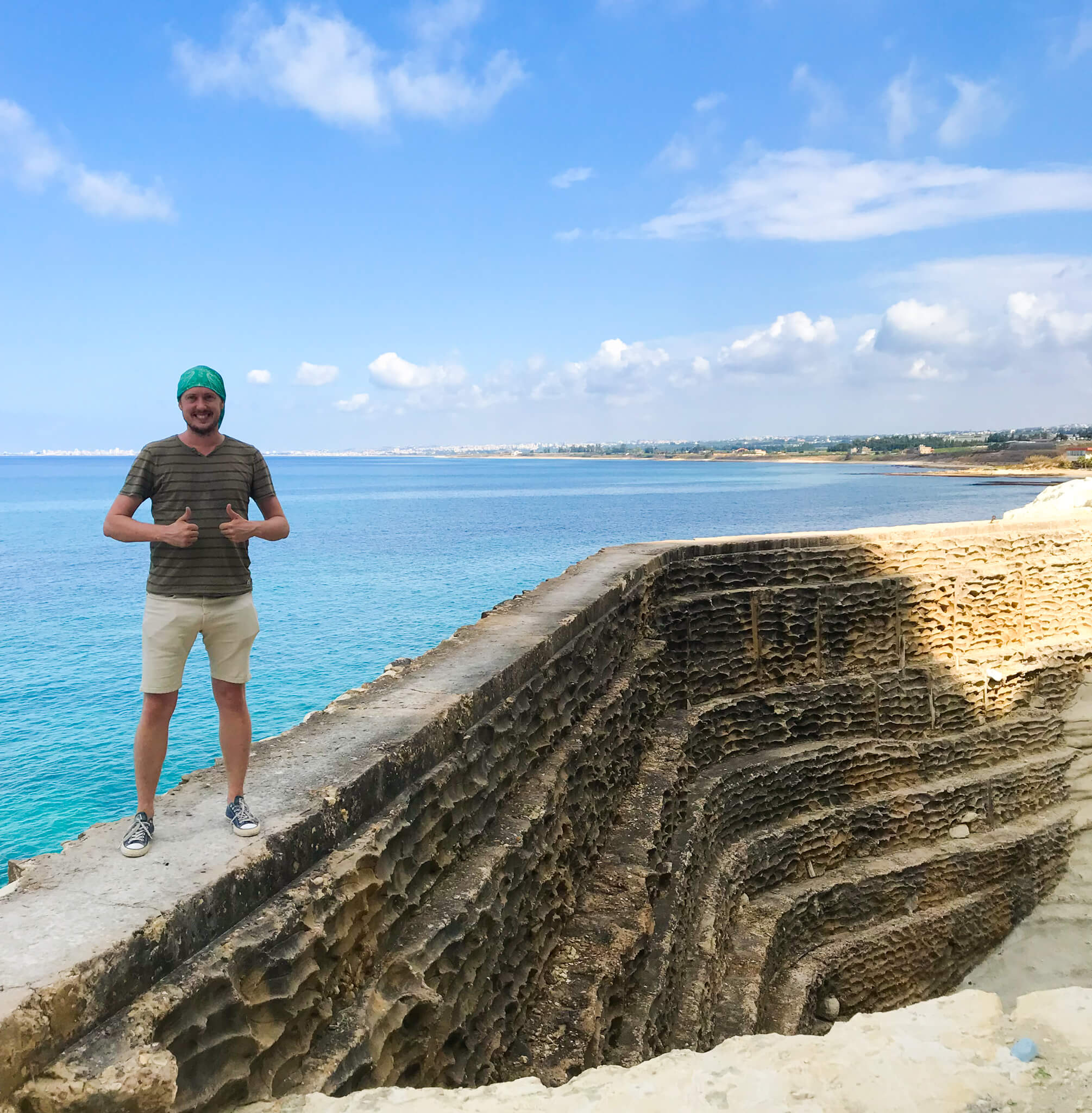
The sea wall south of Naqoura
Suggested Itineraries
Pick and choose where to visit from the places above. However, my suggestions are as follows:
Two-day Trip: Beirut – Jeita Grottoes & Byblos . This is way too short, but spend one day wandering Beirut, watch the sunset at Raouche in the evening and then head to the Jeita Grottoes and Byblos on day 2.
Four-day Trip: Beirut – Jeita Grottoes & Byblos – Saida & Mleeta – Anjar & Baalbek. Best to base yourself in Beirut for this itinerary, which covers the major highlights of the country.
One-week (7 day) Trip: Beirut – Jeita Grottoes & Byblos – Tripoli – The Northern Mountains – Saida & Mleeta – The Southern Mountains – Anjar & Baalbek. This itinerary includes most of the highlights of the country with a variety of cities, ancient ruins and nature.
Two-week (14 day) Trip or Longe r : Beirut – Jeita Grottoes – Jounieh – Byblos – Batroun – Tripoli – The Northern Mountains – Anjar & Baalbek – Saida & Mleeta – Jezzine – The Southern Mountains – Tyre . You could easily spend more than a day in many of the places listed here, making the trip more relaxing and enjoyable. Alternatively, add in some hiking or visit some random villages in the mountains, many of which are beautiful.
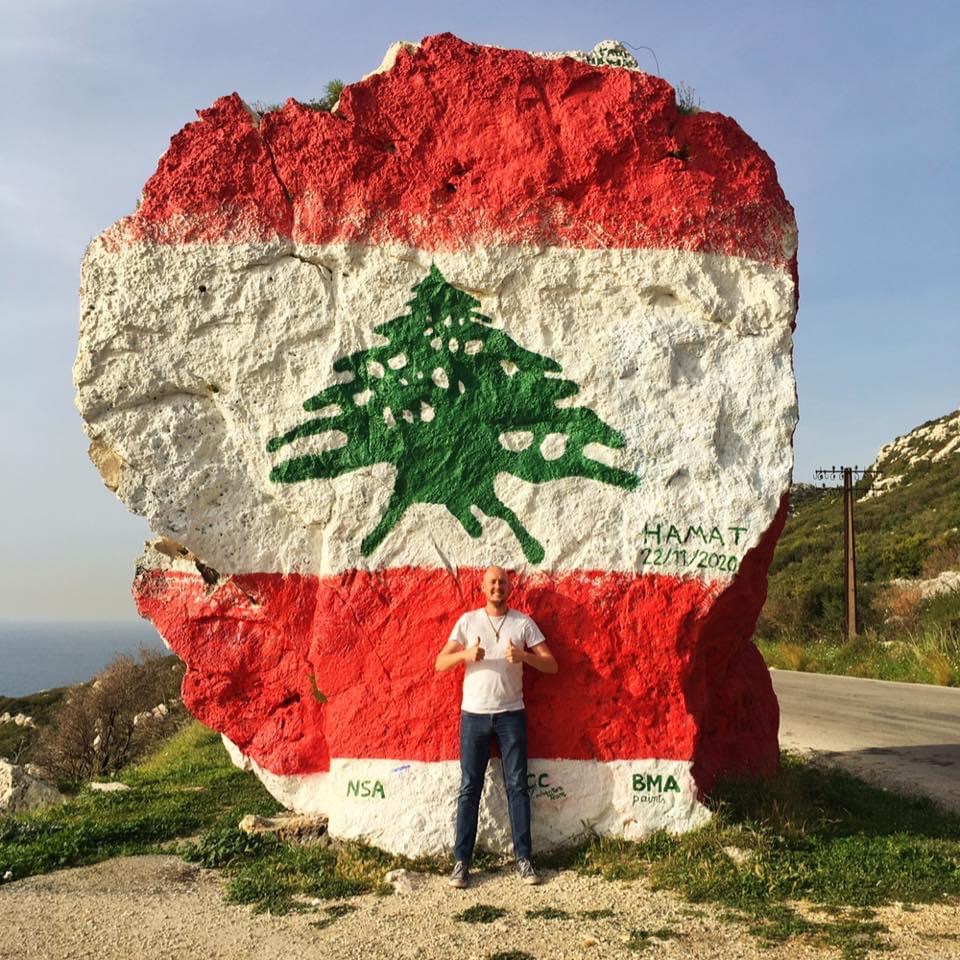
If you have the time, check out the Rock of Hamat near Batroun for a very Instagrammable pic.
I had no idea until I moved to Lebanon, but the country has some amazing hikes. My personal favourites are the following:
- Qornet As Sawda (Black Peak) – The highest mountain in not only Lebanon, but the entire Levant region, and 5th highest in the Middle East, at 3,088m. The landscape is like nothing else in the country, as barren as the moon. It gets very cold near the top and is covered in snow from around November to May, so it’s best to avoid these times. The hike starts from the Cedars ski resort near the Cedars of God and the first two hours follow the ski lifts. The total hiking time is about 8 hours and it’s long, but not difficult.
- The Chouf Biosphere Reserve – The largest cedar forests in Lebanon make for some beautiful hiking. The reserve is clearly marked on Google Maps and is suitable for short or long hikes.
- The Qadisha Valley – Possibly the most beautiful place in the whole of Lebanon, a Colombian monk lives in a tiny monastery perched high on a cliff above the valley. The path to the monastery is narrow with beautiful views and not particularly difficult, although the monk himself has stopped meeting visitors recently, due to the risk of Covid, as he is very old.
- Jabel Moussa Biosphere Reserve – There are many hikes here, from short 3-5km jaunts to 20km marathons and over steep mountain paths. The highlight is Chouwen lake, which is a beautiful turquoise blue. It’s also possible to swim in it during the summer.
- Bkassine Pine Forest – The largest pine forest in Lebanon is riddled with beautiful hiking trails. Check out my Jezzine guide for details .
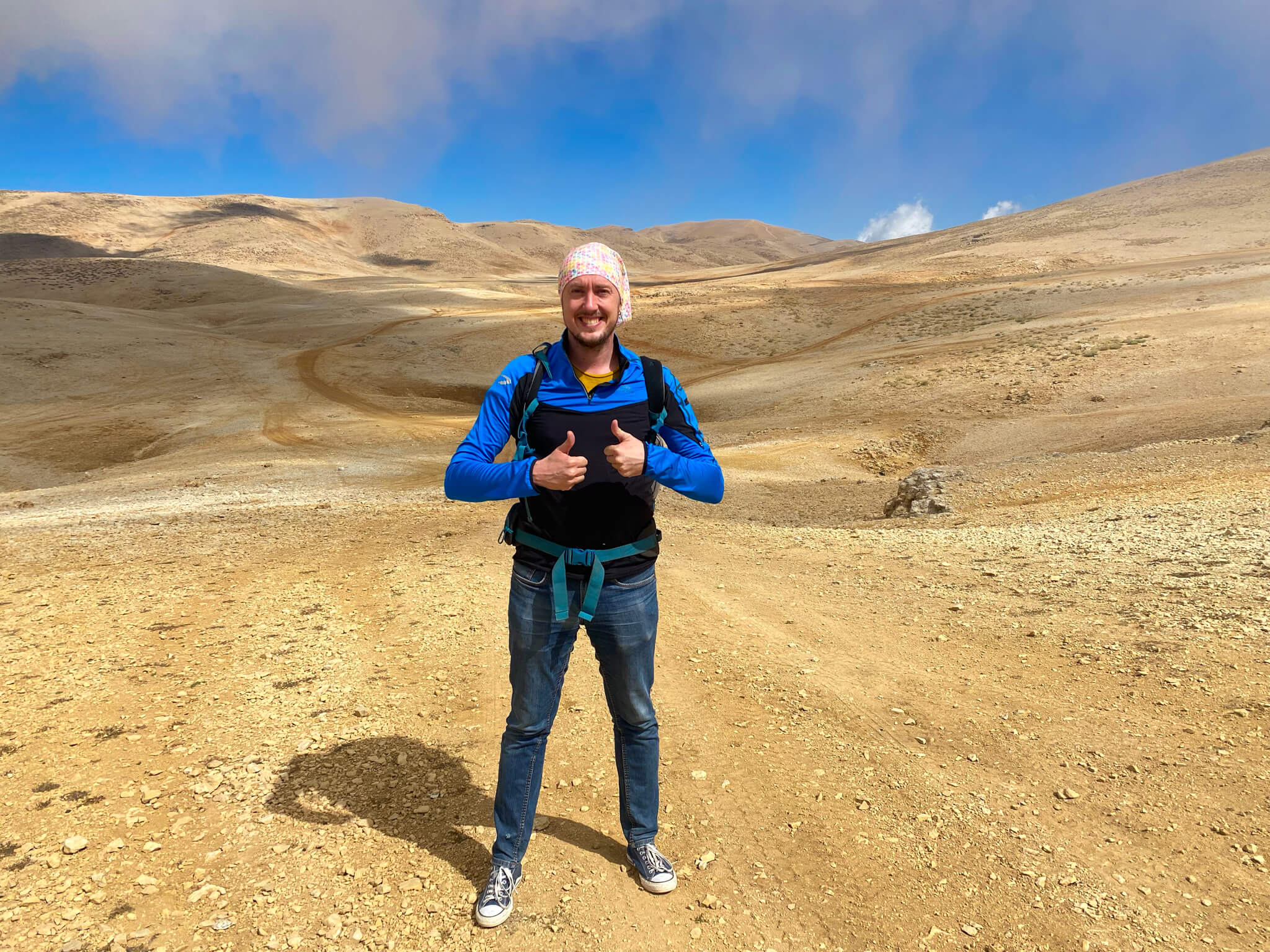
The moonscape of Qornet As Sawda is like nothing else in the whole of Lebanon.
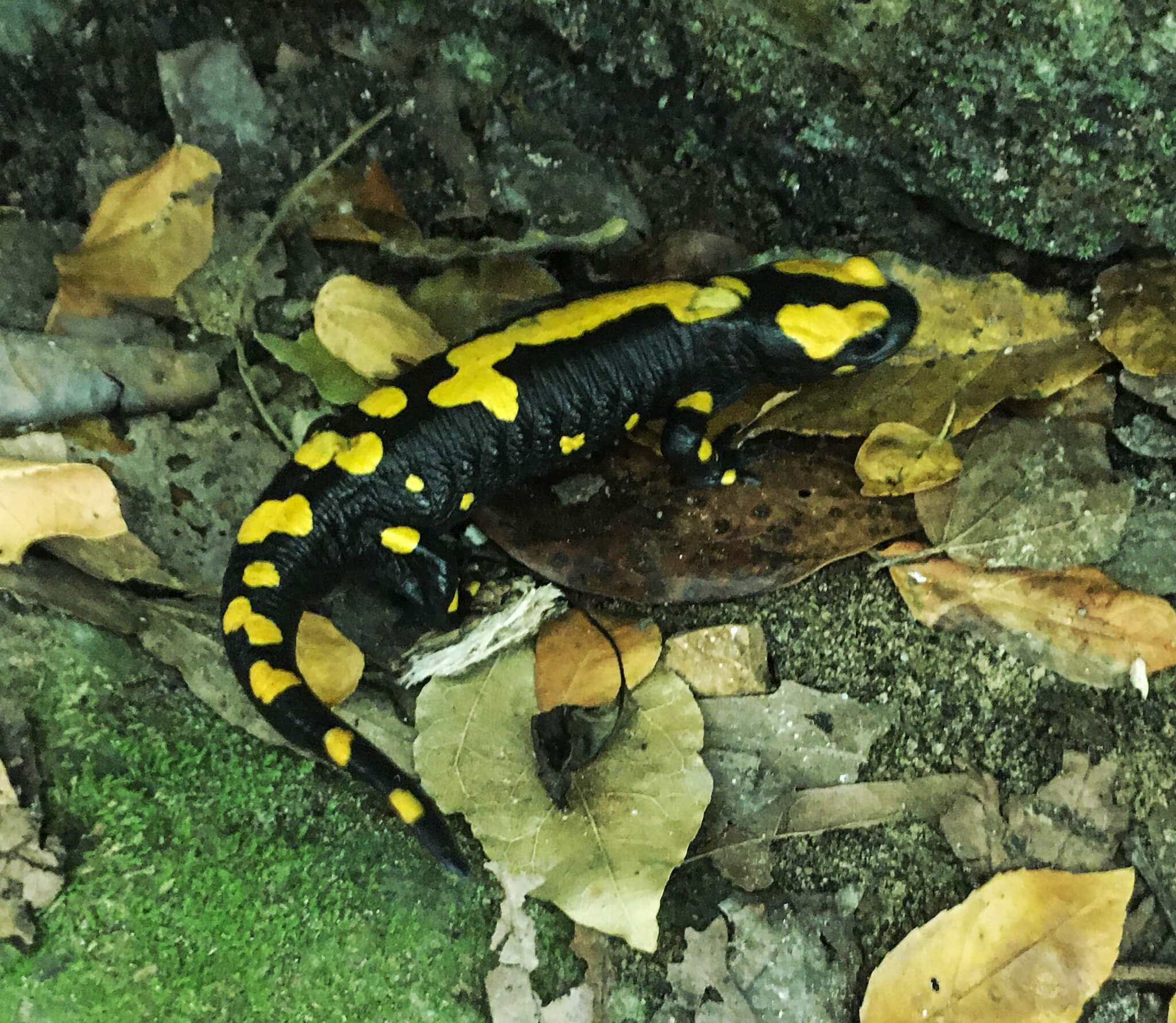
A rare near eastern fire salamander, spotted by yours truly while hiking in the Chouf region.
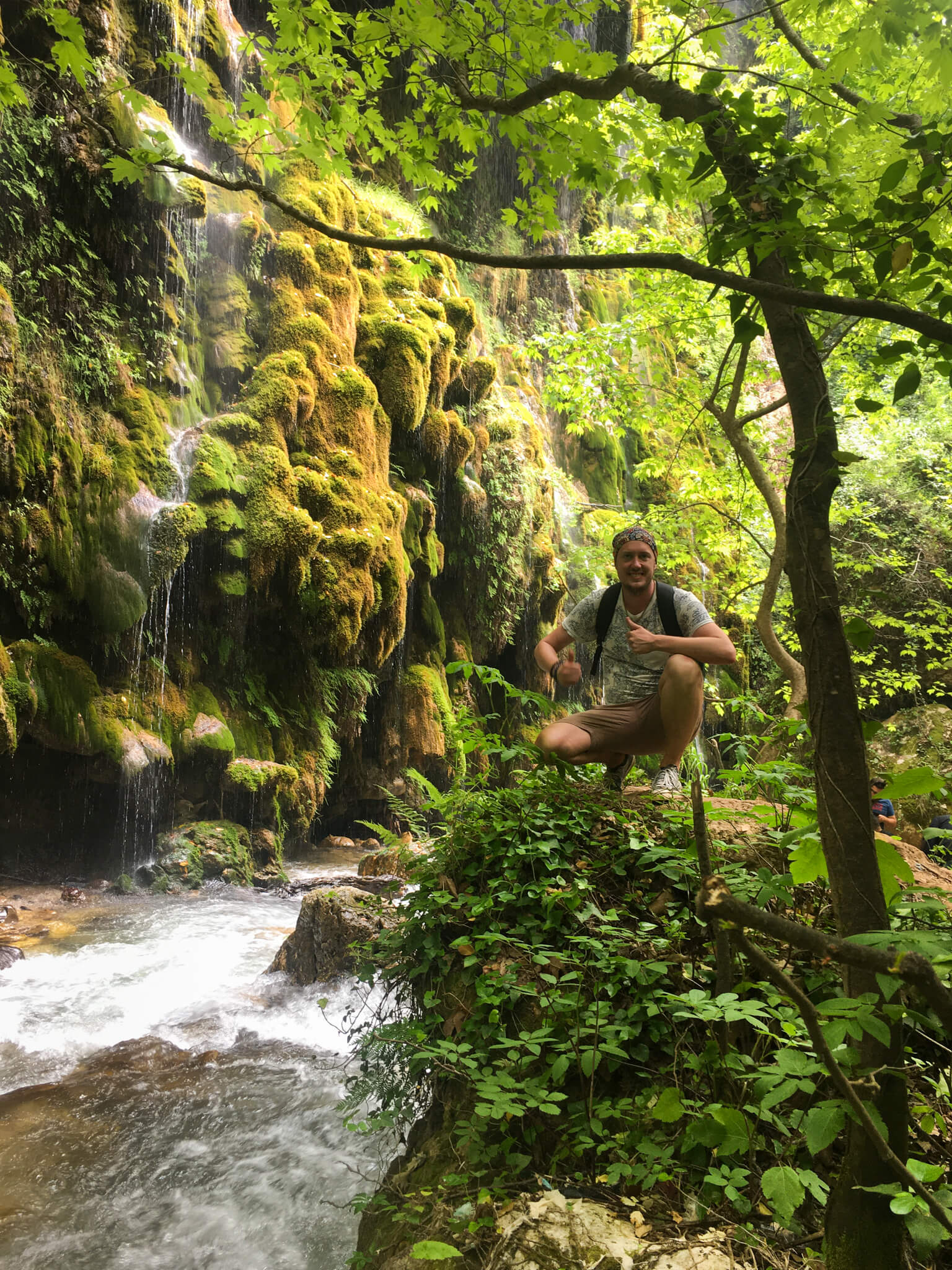
Anyone who thinks the Middle East is only desert and camels has never been to Lebanon – the lush green of the Qadisha Valley is like something out of a Disney film.
Impact of the Crisis – Electricity
Lebanon’s national grid currently only supplies about 1-2 hours of electricity per day to most parts of the country, due to a shortage of fuel, insufficient capacity and various other factors. This is terrible if you’re local and don’t have a backup power supply. However, for tourists it’s actually not that big a problem, as major hotels have good generators that provide 24/7 power and most restaurants and other businesses also have generators, if not all the time.
The best advice here is check with your hotel before visiting. Some generators are not designed to run 24/7 and so buildings can have gaps without power. My apartment currently has seven hours in 24 with no power, split between the night and morning, when they let the generator ‘rest.’
The electricity crisis has made the roads more dangerous – many street lights and traffic lights are not operating. If you do drive in Lebanon, when you come to a junction without working traffic lights, just slow down and drive slowly through. Most Lebanese drivers are very cautious at these junctions, as the economic crisis has made imported car parts astronomically expensive and no one wants to damage their car.
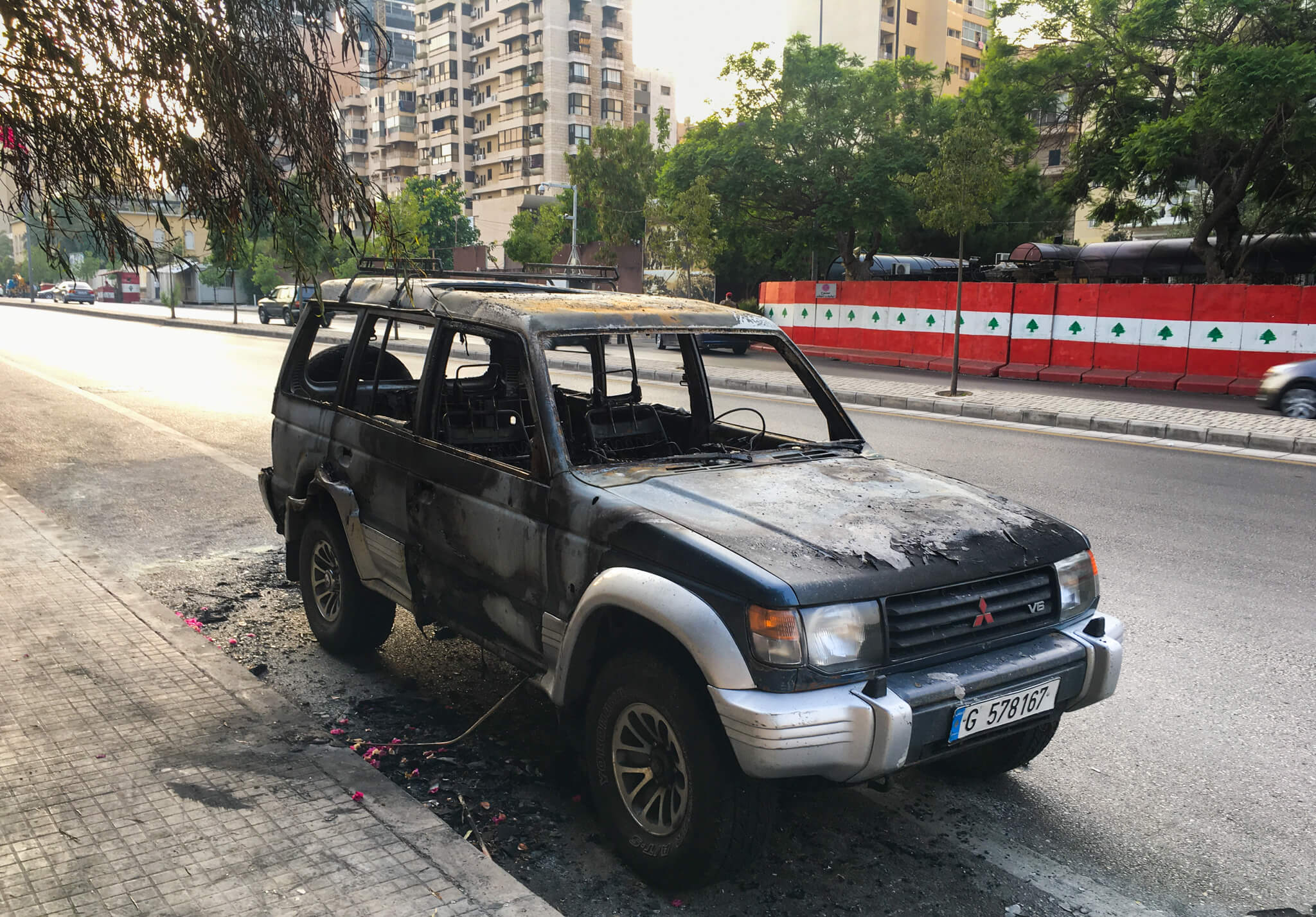
Protests occasionally turn violent, but luckily protest areas are easily avoided by visitors.
Impact of the Crisis – Hyperinflation
The most important thing to remember is to bring enough cash for the duration of your stay. The best currency to bring is USD, but other common currencies, such as EUR and GBP, can also be exchanged at black market rates. Licensed currency exchange shops are now permitted to exchange currency at black market rates, so you no need to be hooked up with a black market dealer.
Pro tip : before coming to Lebanon, download the Lira Rate or Lira Exchange app for your smartphone. These apps show the current black market rates and, although the rate on the street is usually slightly lower, give you a good guide as to the approximate rate you should expect when changing money.
If you do run out of money in Lebanon, don’t withdraw money from an ATM if you can possibly avoid it. ATMs currently operate at the official rate of 15,000 LBP to the USD, so you’re losing most of your money to the banks. The same applies to paying for things priced in LBP with credit/debit cards. ATMs no longer offer USD currency withdrawal for foreign bank cards. The best approach for travellers is to use a currency transfer service like MoneyGram or Western Union, which allow you to transfer in foreign currency and collect it in USD.
One knock on effect of the economic crisis is that Lebanon is now significantly cheaper than it used to be. Hotels have started charging foreigners in dollars again, but everything else, and especially food, is much cheaper than it was before. A good Lebanese meal for two in a normal restaurant will usually cost about $15, including drinks. In a slightly more upmarket restaurant, expect to pay around $30.
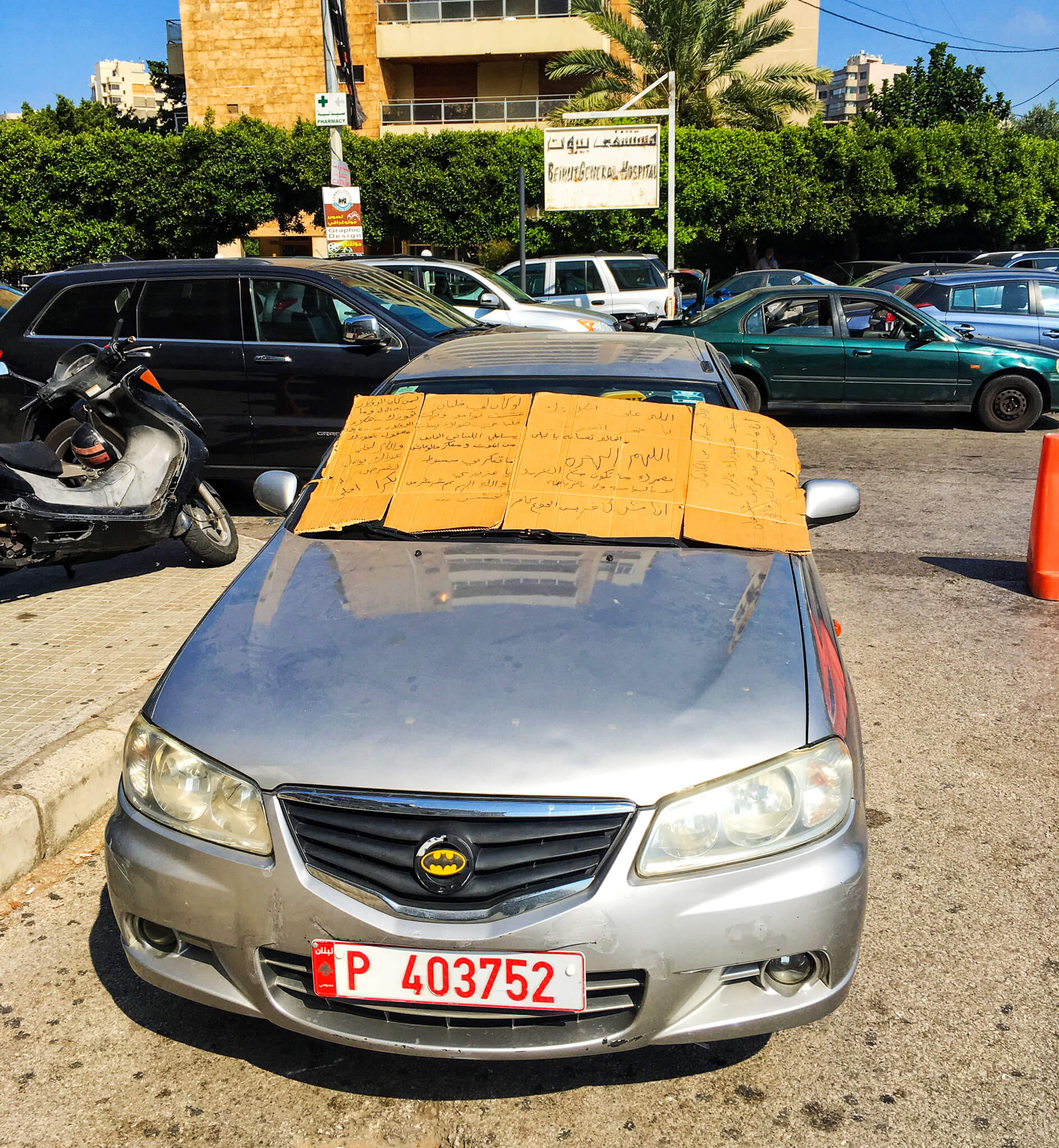
The economic crisis is so bad that Batman had to trade in the Batmobile.
Impact of the Crisis – Safety
Crime rates in Lebanon are very low and, although they have risen recently as people become increasingly desperate, rates of petty theft are still lower than in most of Europe and criminals in general do not specifically target foreigners. That said, the atmosphere can feel tense and the fortifications erected in some areas (lots of barbed wire, concrete barriers and patrolling soldiers) can give the impression that the safety situation is worse than it is.
Most violent incidents that have been in the news recently have occurred during protests, often of a political nature. If you do see the beginnings of a protest, such as groups of people marching together or tyres burning in the road, simply turn around and leave the area. Protests usually start peacefully, but build to a point where the demonstrations spill over into violence. Again, protests do not target foreigners, but there is a risk of being caught in the violence if you stick around.
An unfortunate legacy of the Lebanese civil war is that a lot of the populations still own guns. At a recent protest in Beirut, not only were there shootings with machine guns, but the violence escalated with the use of RPGs. This is an extreme case. Again, I stayed away from the area.
Guns are also often used at funerals or celebrations, where they are shot into the air in waves of celebratory gunfire. Unfortunately, what goes up must come down, and people are occasionally killed by falling bullets or by bullets entering buildings through windows. If you do hear shooting while you’re in a building, move to the interior, away from the windows and wait for it to subside. If you’re outside, leave the area. Funerals rarely happen in the city centre, which is the most interesting area for foreign travellers, so you probably won’t come across them anyway. Furn El Chebek, Chiyah, Tariq El Jdideh and Jnah are common areas for funerals.
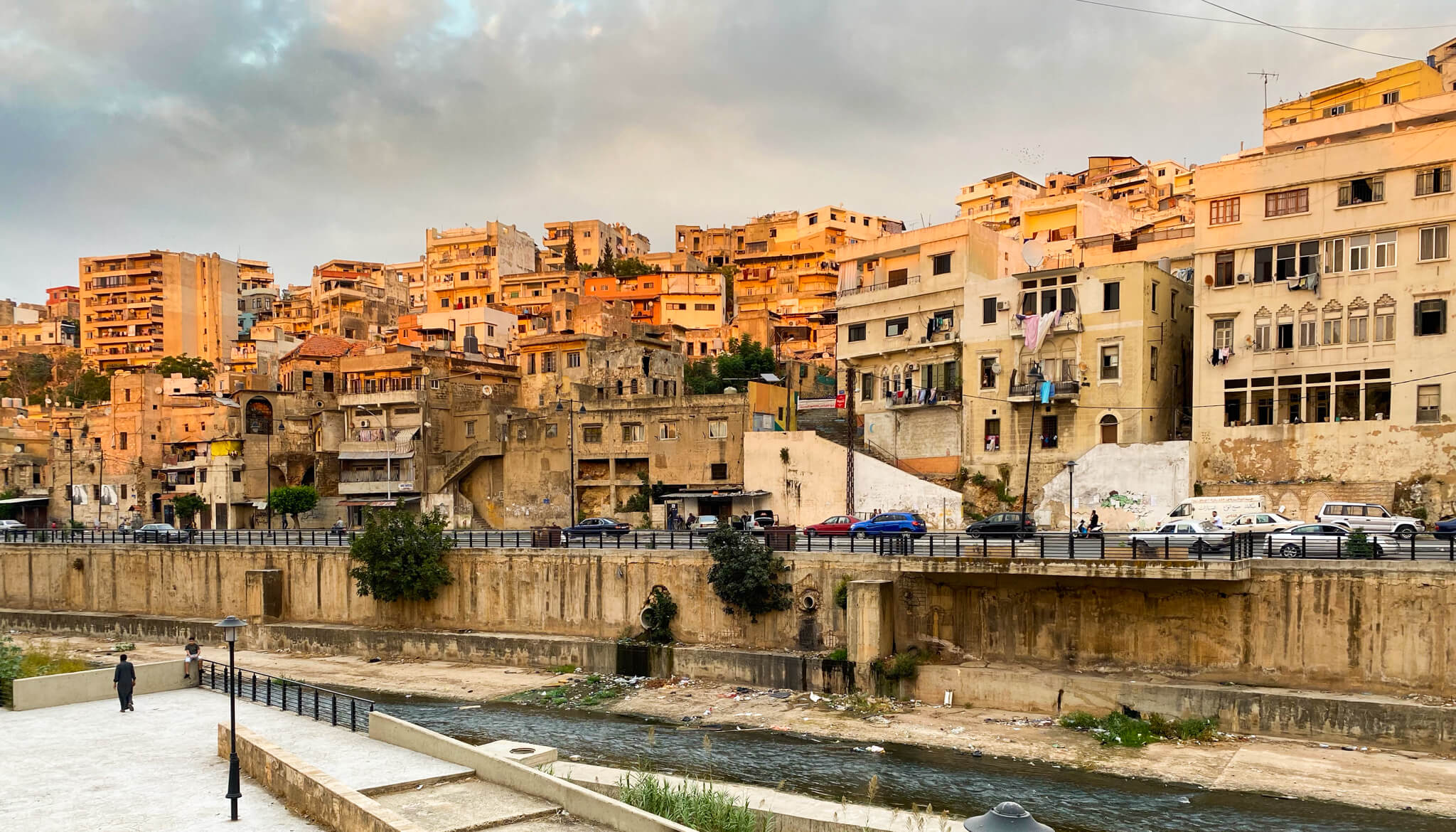
Lebanon is generally very safe. Even walking through the slummier neighbourhoods of Tripoli, Lebanon’s poorest city, I never felt unsafe.
Certain areas of Beirut experience violence far more than others. In general, the southern suburbs of Beirurt, south of main road where the National Museum of Beirut is located, are less safe than the city centre. In particular, Chiyah, Cola and Tayouneh and Tariq El Jdideh have all seen violent protests. Martyr’s Square and the Beirut souks area also see frequent protests, but these tend to be less violent than those in the south.
As a tourist, the only areas you’re likely to visit to the south are Badaro (an upmarket bar street) and the Cola Intersection, as it’s the main hub for public transport to the south and the Bekaa Valley. I visit these locations regularly and have never had problems, but keep an eye out just in case.
This may all sound very scary, but actually Lebanon is very safe for tourists. Even now, by far the most dangerous thing is the roads, where accidents are frequent. Just use a bit of common sense and you’ll be fine.
Impact of the Crisis – Fuel
One of the best ways to see Lebanon, and especially the more remote parts, is to rent a car and drive yourself. During the summer of 2021, fuel became extremely difficult to obtain, often requiring queuing for hours (if you can even find a fuel station that’s open). The only other option was to purchase it on the blackmarket at vastly inflated prices.
The good news is that, since the end of September 2021, fuel has been readily available again. The government has let the price of fuel rise to close to market value, which has reduced incentives for fuel hoarding and smuggling to Syria.
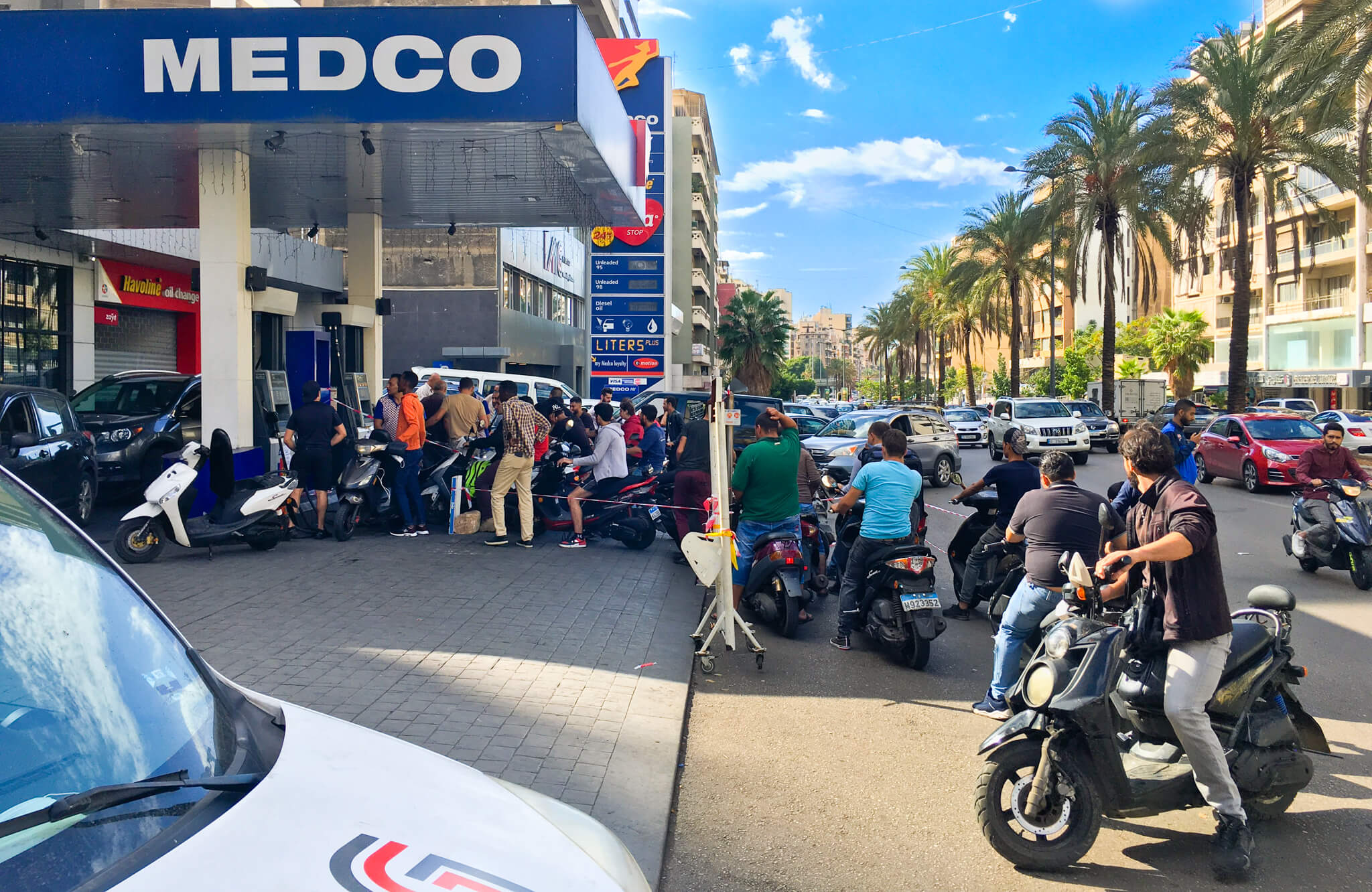
Bikers queuing for fuel at the peak of the fuel crisis in 2021
Ethics – Should I Visit Lebanon During the Crisis?
With frequent power cuts and shortages of some products, many people question whether they should visit a country while it’s in crisis, as they feel they may be using limited resources that are needed by the local population. In the case of Lebanon, the answer is definitely yes, you should visit. Lebanon produces very little domestically – even 80%+ of food is imported. Shortages are not caused by a lack of supply on global markets, they’re caused by a lack of financial means to purchase supply (compounded by corruption and a range of other factors).
By visiting Lebanon, you are bringing much needed foreign currency into the country and, by buying products and services from local businesses, ensuring that it reaches local people who need it. One of the biggest problems for Lebanese people is that the value of the LBP to the dollar is so low, which makes imports expensive. Everytime there is a large influx of visitors, for example with the Lebanese diaspora returning home over Christmas, the LBP gains value, helping local people. This shows the positive effect that an influx of foreign currency has and, as an individual your contribution will be small, but will certainly be positive. In other words, don’t feel bad about visiting!
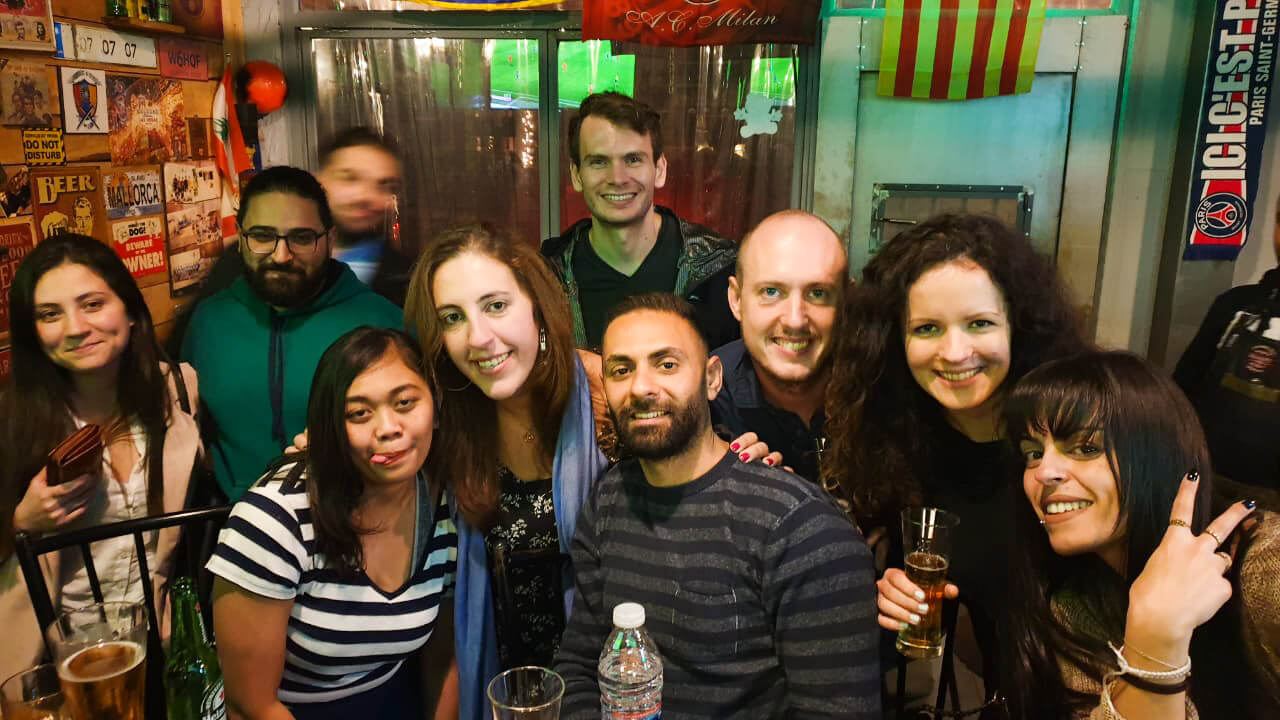
Lebanese people are very good at enjoying life, even in the middle of a crisis.
One of the best ways to see Lebanon is to rent a car. Car rentals are cheap now (about $20/day for a small car, including insurance) and Lebanon is a very car-based society. A deposit of around $100 is often requested in cash for your first rental. So far, I’ve not heard of any problems having this refunded. In theory, an International Driver’s Permit is required, but in reality no one cares, at least not if your local driver’s licence is in English, French or Arabic.
I usually rent from Mike Rent-a-Car, which is a good option if you want to support local businesses. The price is generally $20-30/day depending on the season for a small car and their Website is at www.mikerentacar.com . Their office in Beirut is located here . Alternatively, the big international car rental companies, such as Avis and Europcar , also operate in Lebanon. They also have the advantage of having a presence at the airport, so you don’t need to bother with other transport to get to your accommodation.
Cars and Drivers
If you don’t feel confident driving in Lebanon, it is possible to hire a car and driver from a hotel or hostel. This can cost upwards from around $70 a day plus fuel, but hotels may charge significantly more.
Ride Hailing Apps
Uber and Bolt both work well in Beirut. Bolt is usually slightly cheaper, but Uber cars are generally in better condition and the drivers are more professional. These apps are also by far the cheapest way to get to or from the airport in Beirut. Just be sure to change the payment method to cash, as credit cards are billed at the official exchange rate so you’ll end up paying $50 for a 5-minute trip across town.
Public Transport
Lebanon has an informal public transport network made up for service (shared) taxis and minibuses. These are operated privately with pricing regulated by the government. There are also public buses from Beirut to Tripoli. Vehicles licensed for public transport, including taxis, all have red number plates (or red lettering on the number plate).
To catch a service (shared) taxi, stand on the edge of a road (main roads are usually better) and hold out your arm when a taxi comes past (look for the red number plates). Ask the driver “Service?” If he agrees, it means the taxi is shared, so you will not be charged for a private journey. Then tell him your destination. If he’s going in the right direction and willing to take you there, he’ll agree. Finally, ask him the price. Most drivers are very honest, but a few do try to overcharge foreigners.
Inside Beirut
Service taxis operate throughout Beirut, although explaining the destination can be tricky. Often, the easiest approach is just to say the name of the area, such as “Hamra,” “Gemayze,” “Daora,” or “Cola.” Minibuses on set routes also operate, but finding the routes is extremely difficult, so use the same approach as when taking a service and ask the driver whether he goes to your destination. Prices for service taxis are just over $1 and for minibuses around $0.50.
Northern Lebanon
Shared taxis and minibuses run from the Daora roundabout in Beirut up the coastal highway to Jounieh, Byblos, Batroun and Tripoli. Prices vary, but are cheap, starting at about $1 to Jounieh. Just ask the drivers whether they go to the city you want to reach.
For Tripoli, there’s also a bus that runs on an actual schedule from Martyr’s Square in Beirut.
Their current schedule can be found on their Facebook page at https://www.facebook.com/connexion.transportation .
Southern Lebanon and the Bekaa Valle y
Minibuses run from the Cola Intersection in southern Beirut down the coastal highway to Saida and Tyre, as well as to Baalbek in the Bekaa Valley and to the Chouf region. To visit the Chouf Biosphere Reserve, catch the bus to Barouk, the name of the nearest village. From there, you need to walk several kilometres to enter the reserve and there is no public transport. Hitchhiking could be an option.
To reach Anjar, take the minibus to Baalbek and get off at Chtoura. From here, there are other minibuses running to Anjar.
The Jeita Grottoes
The Jeita Grottoes are located about halfway between Beirut and Byblos, approximately 5km from the highway. Take public transport from the Daora roundabout and get off at the Ajaltoun exit of the main highway (coordinates 33.960616, 35.604071, here on Google Maps ). From here you can either walk (5km uphill) or take a taxi. There are usually several drivers hanging around this area, although prices can be high and will depend on your negotiation skills. To get back to the highway afterwards, you can usually find a driver in the Jeita Grottoes carpark. Another good option to reach the Jeita Grottoes is to take an Uber all the way from Beirut. Uber is cheap in Lebanon, so this works out around the same price.
I’m not aware of any public transport option to reach this area of the country (including Aqoura, the Batara waterfall and the Cedars of God), so your options are really driving or hitchhiking.
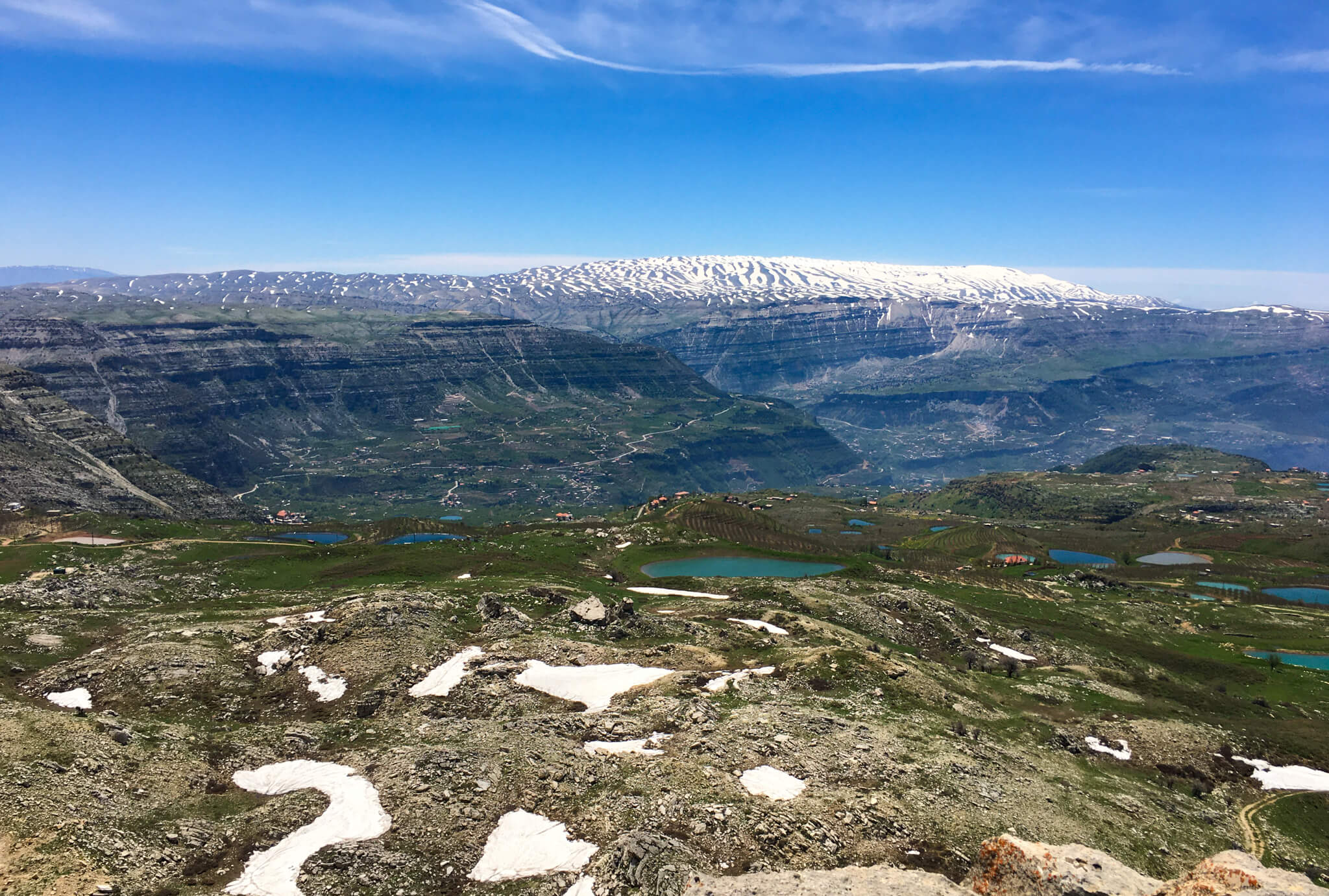
The view from Aqoura – there is still snow on the mountains in early May. The northern mountains are a pain to get to without a car, but worth the effort.
Transport to and from Beirut Airport
Uber is a cheap and convenient way to get to or from the airport in Beirut. This should cost around $6. However, this can be tricky when first arriving, due to needing to obtain Lebanese pounds to pay the driver. If the exchange counter at the airport is not open or the rate is bad, you can try negotiating with the Uber driver to pay in USD at the black market rate.
There are always plenty of local taxis waiting at the airport to take you to the city centre. These often try to charge ridiculous rates to foreigners – up to $50 for the 10-15 minute journey. With a bit of bargaining, you should be able to agree on around $10.
Checkpoints
There are military checkpoints on the roads throughout Lebanon and even within some parts of Beirut. Generally, they wave foreigners through without saying anything. If driving yourself, slowdown at the checkpoint, wind down the window and greet the soldier. Most times, he’ll wave you though before you even come to a stop.
In my two years here during which I’ve travelled the country extensively, I’ve been asked twice for my nationality and had my passport checked once (so carry it with you, just in case), and that was on the road between Hermel and Qobayat, one of the most remote parts of the country.
Entering the UNIFIL-Controlled Area
The only exception to the above is the checkpoints for entering the UNIFIL-controlled area south of the Litani river near the border with Israel. Foreigners can only enter with a permit obtained in advance (with the exception of UN employees). To obtain the permit, visit the police headquarters in Saida with your passport. The police station is at coordinates 33.550327, 35.381710 ( here on Google Maps ). You need to bring your passport and colour photocopies of the identity page and your entry stamp to Lebanon (and visa, if you come from a country that needs a visa to enter Lebanon). It generally takes less than one hour and permits can be issued for entry on the same day. Permits can be obtained for one or multiple days.
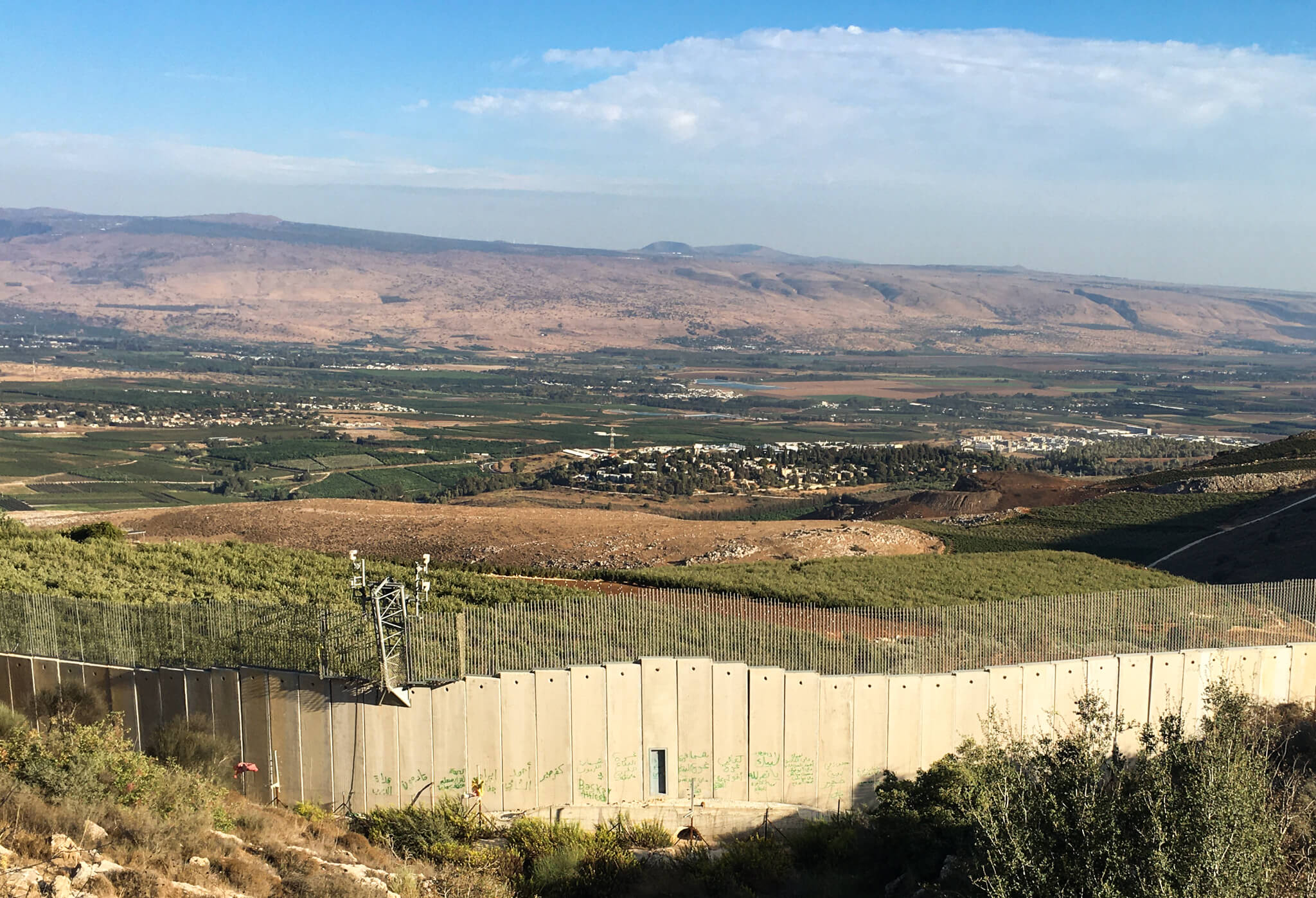
Northern Israel, as viewed over the imposing border wall in south Lebanon.
Recently (as of early 2023), the black market exchange rate has been hovering around the 80,000 LBP to the USD rate, whereas the official rate is 15,000 LBP. Previously, currency exchange shops were prohibited from giving the black market rate, but the government has relaxed this rule, so any currency exchange shop can exchange money for you. Just make sure you bring plenty of cash.
Whatever you do, don’t use a foreign bank card in an ATM or to pay in shops. The banks still apply the official rate, so you’ll be paying several times the real price.
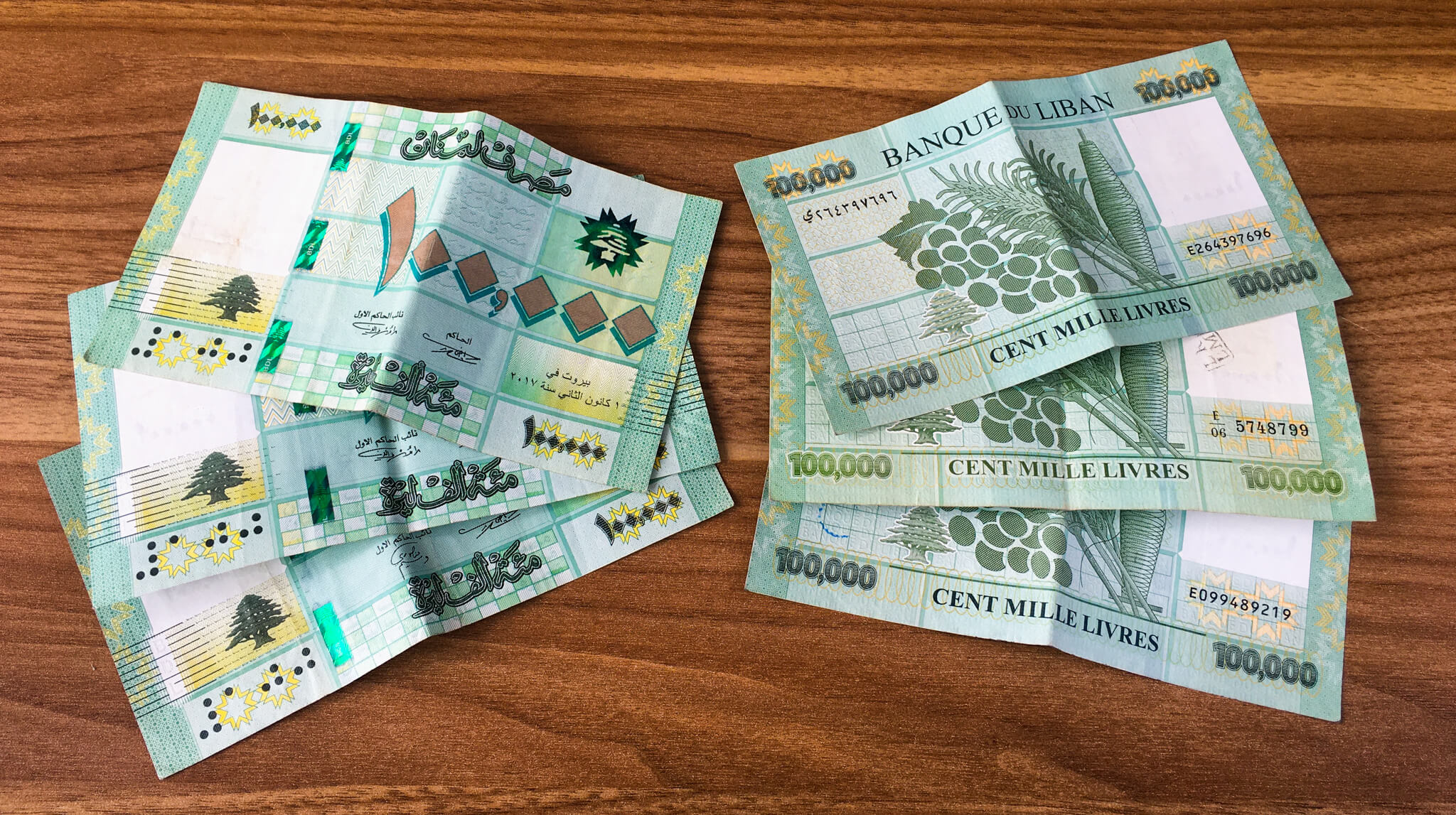
Pre-crisis, these notes were worth about $66 each. Now they’re worth around $3.
Mobile Phone Service and SIM Cards
Lebanon has good mobile Internet even in most rural areas. SIM cards are widely available from mobile phone shops. I use Alpha, which has good 4G coverage across most of the country. Passports are not required to obtain a SIM. Prices fluctuate, but a SIM card with 6GB of data valid for one month can be obtained for around $20. I have been warned to check that the seller gives you the packaging to ensure that it’s not a reused, although I’m not sure what the problem would be with this..
Restaurants and Coffee Shops
One of the greatest pleasures of visiting Lebanon is the food. This list is by no means exhaustive, but here are my favourite restaurants. I happen to like coffee a lot, so I’ve also slung in a few coffee shop recommendations for good measure.
- Resto Ghazar: My favourite Lebanese-Armenian restaurant. Try the soubeureg (cheese pastries), mouhamara (pomegranate with nuts) and manti. Although not Armenian, their batata harra (spicy potatoes with coriander) is also out of this world. Prices are very reasonable, at about $10-15 a person, including drinks.
- Ohannes Restaurant: Another great Armenian restaurant, with beautiful tiled decor. The food is also great, especially the Ohannes salad and fried liver. This place is a bit more upmarket at about $15-25 per person, including drinks.
- T-Marbouta: A variety of great Lebanese food in the heart of Hamra with a nice outdoor seating area. About $8-15 a person, including drinks.
- Sawani Falfoul: A great place for breakfast in Badaro, an upmarket bar street. In particular, try the foul (a kind of chickpea soup, pronounced like the word “fool” in English), shakshuka (scrambled egg with tomato) and hummus (the “Malaysian” hummus is particularly good, if not very Lebanese sounding).
- Barbar Restaurant: Basic but tasty Lebanese barbeque restaurant in Hamra. Not sure of the current price, but cheap!
- Le Chef: A traditional Lebanese restaurant that claims to be the oldest in Lebanon, although my Lebanese friends tell me that this is bullshit. The place has a lot of character and was saved from bankruptcy by a donation from Russel Crow, who once ate there, after being destroyed in the port explosion in August 2020.
- Notes Speciality Coffee: My local coffee place. Great brews and the chance to meet me if you’re there in the morning (I often work from there).

Quail eggs with basterma (seasoned meat) – an Armenian-Lebanese delicacy.
- Fenicia: This restaurant is so good that I have hardly eaten anywhere else in Byblos. Up there with Resto Ghazar as one of my two favourite restaurants in Lebanon. The environment is elegant and the food is absolutely out-of-this-world. The cheese/shrimp rolls and the mixed grill plata are my recommendations. Prices are about $15-25 per person, including drinks. The only problem is that they don’t take reservations and getting a seat can be difficult.
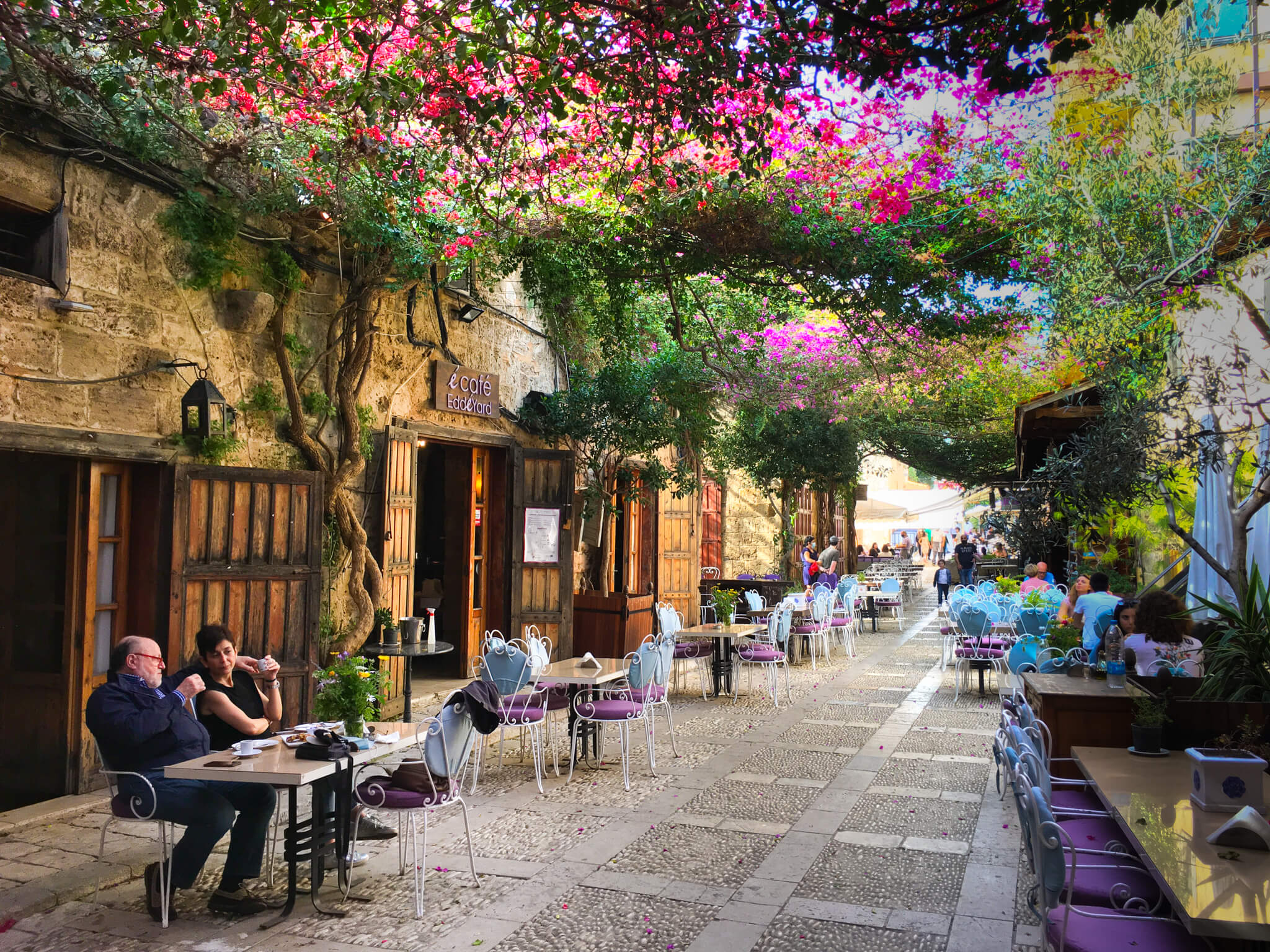
Byblos has many local restaurants, like this Italian one, where you can sit outside and enjoy the old town vibe.
- The Colonel Brewery: Lebanon’s most famous craft beer brewery, the Colonel recently opened a restaurant with a view of the Mediterranean and a great selection of fresh seafood. Try the delicious raw fish if you’re feeling adventurous. A meal for two including drinks is around $30.
- Barrio 67: Not Lebanese cuisine, but delicious international food and nice decoration in the heart of the old town. Prices are about $15-25 per person, including drinks.
- The Sailor Woman: this cute little restaurant serves only six dishes – fish with tahini, calamari, octopus, french fries, fattouch (traditional Lebanese green salad) and Tabbouleh (traditional Lebanese salad with Parsley). What makes it so special is that all the cooking is done by a little old lady in her apartment, which is just next to the restaurant. The fish is also very fresh, as Tripoli is the centre of the Lebanese fishing industry.
- Newtown Coffee: Great place to take a break from sightseeing and chill. Nice environment and good coffee.
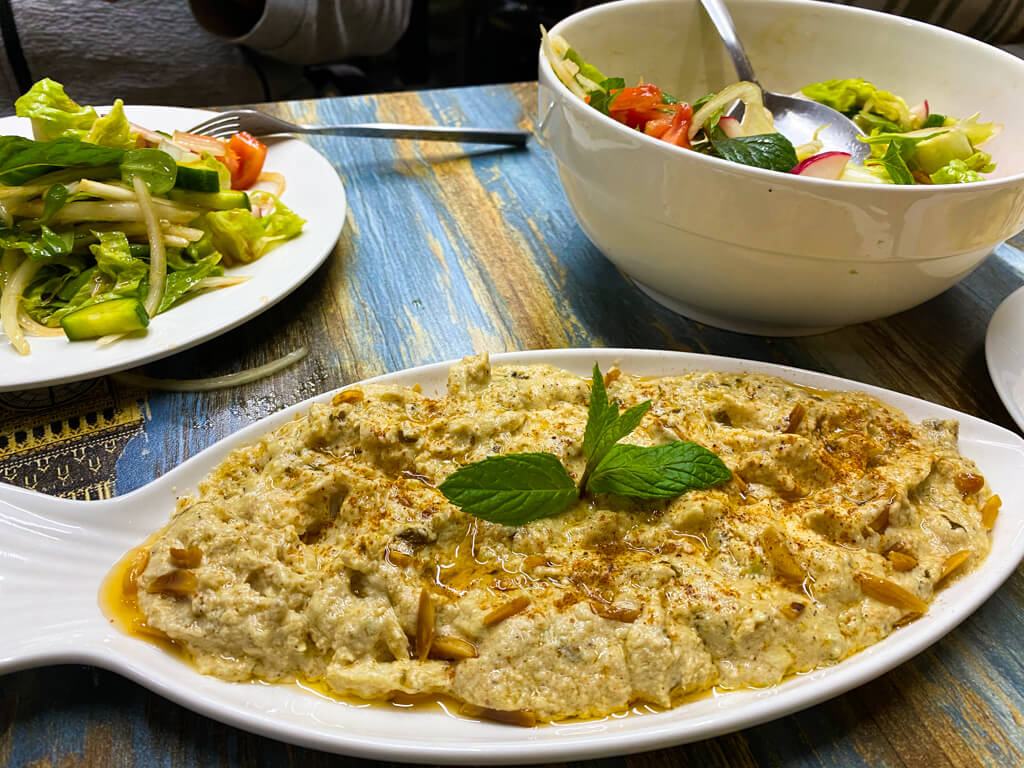
My favourite fish in Tahini at The Sailor Woman restaurant.
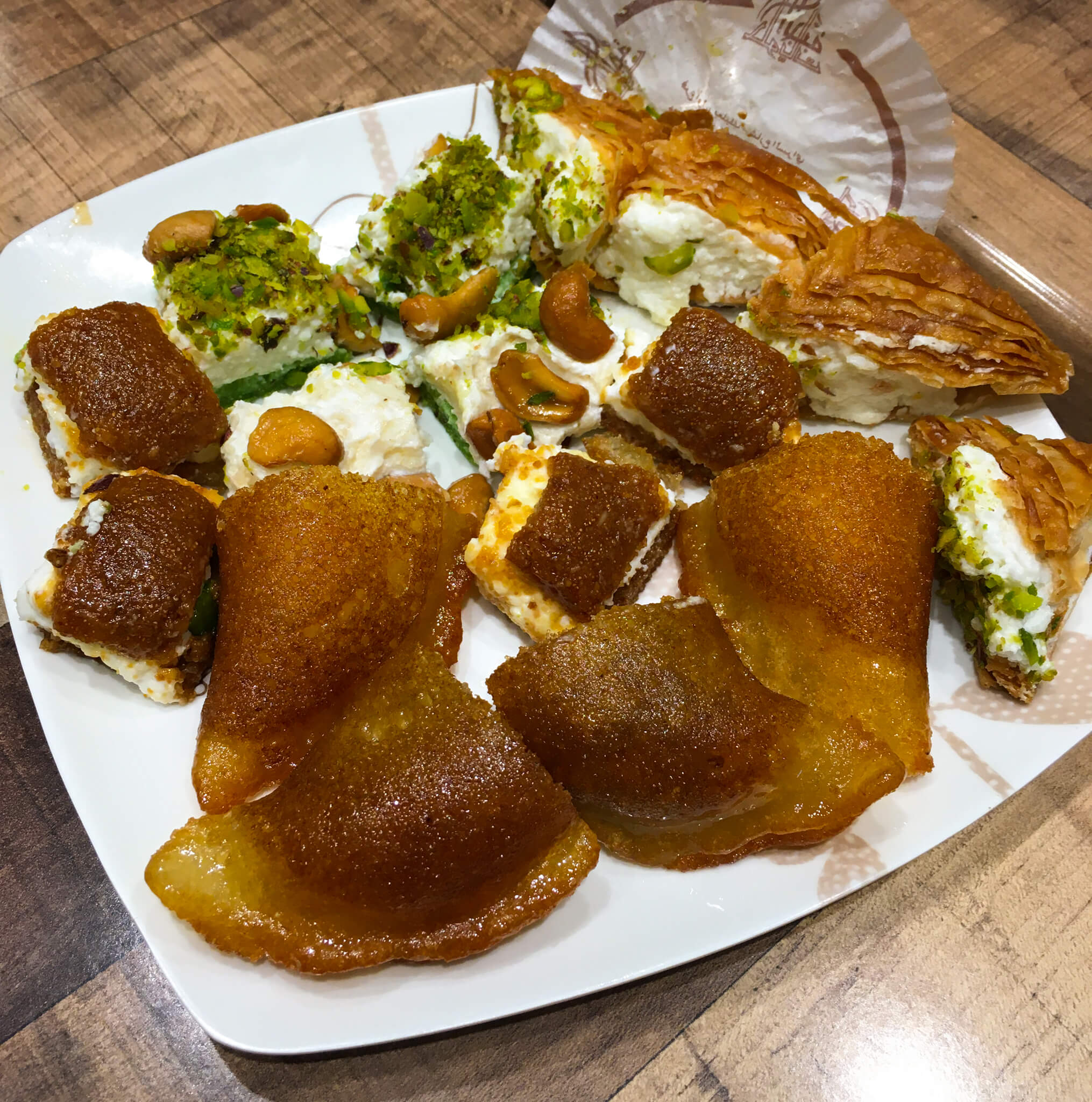
Be sure to try some Lebanese sweets, which can be found across the country.
- Foul Abou El Ezz: Another breakfast place, simple, very local and delicious. Try the foul (a kind of chickpea soup, pronounced like the word “fool” in English) and hummus.
- Green’s Coffee: One of my favourite coffee shops in Lebanon with a great selection of coffees and even a deli counter. The environment is top-notch with a nice retro feel.
- Resthouse: Overpriced (although still cheap by international standards), but with a great view of the Seafort and the only place allowed to sell alcohol in Saida. Perfect for a beer with a view on a hot summer’s day.
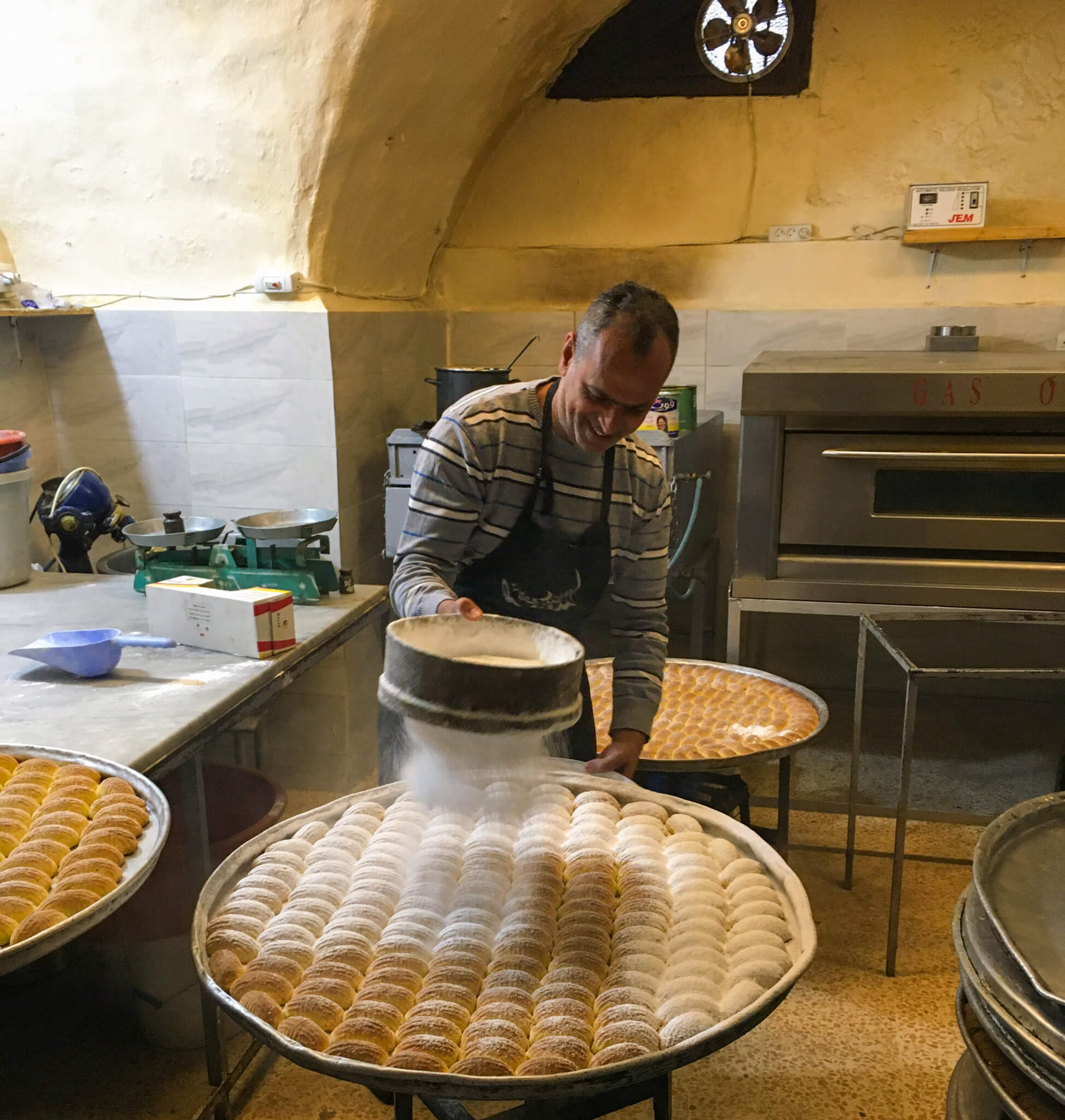
A man making local sweets at a little bakery in the winding streets of Saida’s old bazaar.
- Local sfeeha place: On the main street of Baalbek, on the left as you’re walking away from the Roman ruins, you’ll come across what is basically a traditional oven in a room on the edge of the street with a few tables outside (approx. coordinates: 34.005245, 36.208302, here on Google Maps ). They make one dish – delicious sfeeha, the traditional meat pastry originally from Baalbek – and they make it really well. It’s a while since I’ve been there, so not sure of the exact price, but twenty sfeeha cost a few dollars.
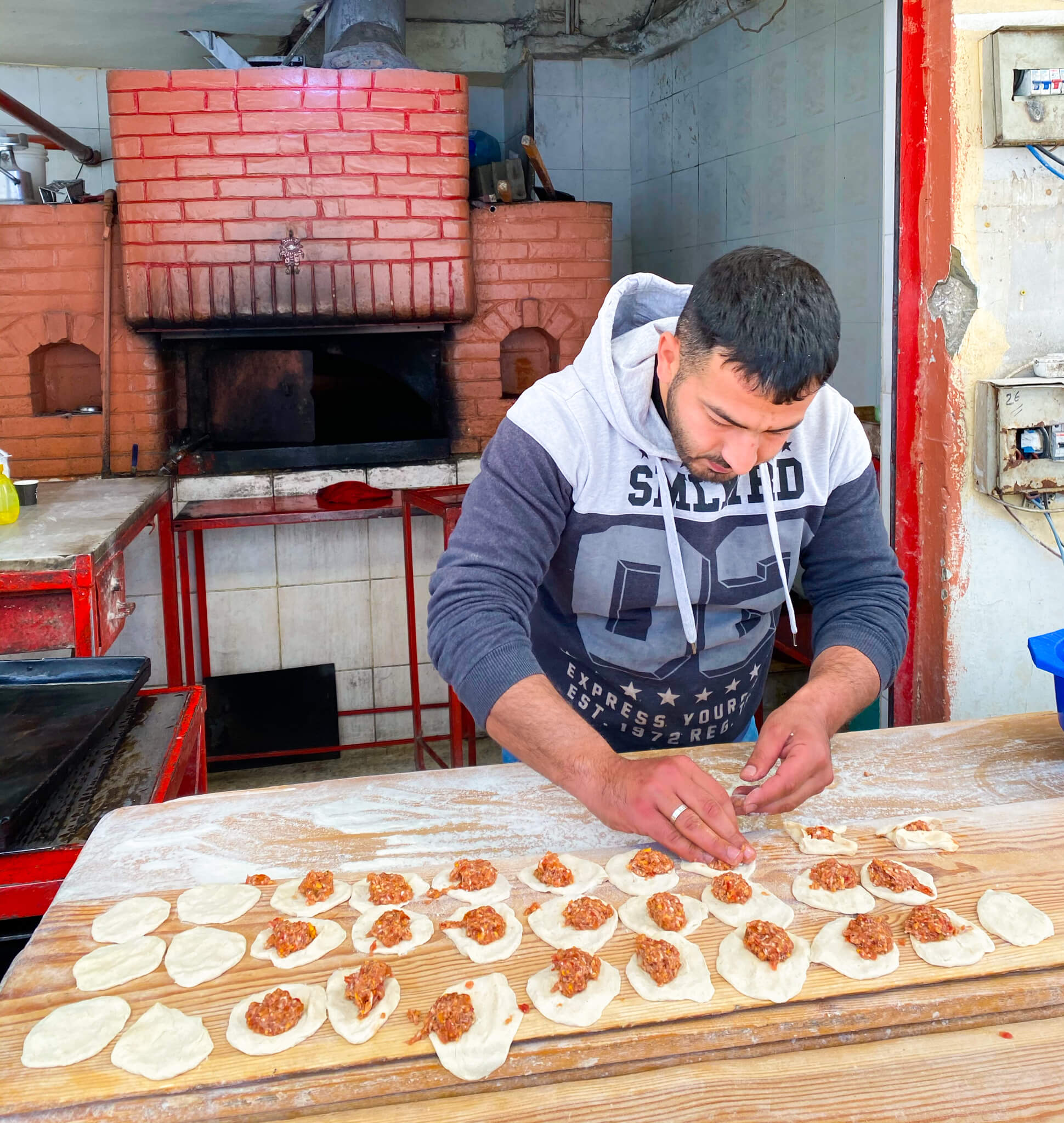
Local sfiha meat pastries being prepared for the brick oven.
- Fresh seafood: Tyre has a wonderful selection of reasonably-priced fresh seafood restaurants overlooking the harbour. The location is at 33.274307, 35.194684 ( here on Google Maps ) and there are several small restaurants with harbour views nearby. Prices start from about $10 a person, including drinks.
Accommodation
Hotels recently switched to charging foreign tourists in USD and so the prices are roughly the same as before the crisis. You may be able to negotiate a deal with some of the smaller places when you’re here, but that’s tricky to do in advance. AirBNB can be a very good option and relatively cheap. With any accommodation, check the hours that they have electricty before booking.
Couchsurfing
Lebanon has an active Couchsurfing community. Many people here host travellers and there are often events organised. If you’re looking to meet local people, this is a great way to do it.
Covid-19, PCR Tests and Entry Requirements
As of 28 September 2022, the Lebanese government cancelled all Covid-related requirements for entering Lebanon. Once in the country there are also no longer restrictions and masks are not required.
PCR tests are not required for departure from Beirut airport. However, if you need one for your next destination, they can be obtained at many hospitals in Lebanon. I have used Hotel Dieu de France hospital in the past. There’s also a lab that will send someone to your accommodation to do the test for you. It’s very convenient and the results are available same day, sent via WhatsApp. They can be contacted on WhatsApp at +961 3 444 925. Wherever you do the test, it will have a QR code. Prices vary depending on the exchange rate, but are generally around $10-12.
More about Lebanon
After two years living in Lebanon, I’ve visited almost every inch of the country. You can read about my adventures here:
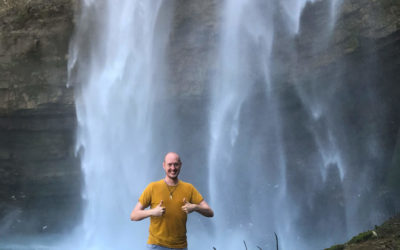
Jezzine Travel Guide
Why Visit Jezzine? The picturesque village of Jezzine is perched high on a cliff top overlooking the incredible Jezzine waterfall - at 90m (295ft), one of the highest waterfalls in Lebanon. It’s also practically surrounded by Bkassine forest, the largest pine forest...
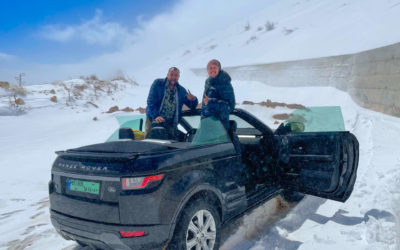
Hermel & Beyond: Road Tripping Remote Lebanon
Hermel & Beyond: Road Tripping Remote Lebanon As a Scot, I’m used to living in countries far bigger than my own. Lebanon is the exception - the entire country is only about 200km long and 80km wide at its widest point. So how, you might ask, can there be ‘remote...
Looking for even more great ideas? Here’s another in-depth travel guide to Lebanon by Romana and Jakub at Broken Naviation, including hotel recommendations for all budgets (living here I don’t stay in hotels much). They have some really beautiful photographs too. Check it out here:
- How to Travel to Lebanon in 2022 & 11 Days Itinerary
Don’t forget to leave a comment below if you enjoyed the article or have questions!
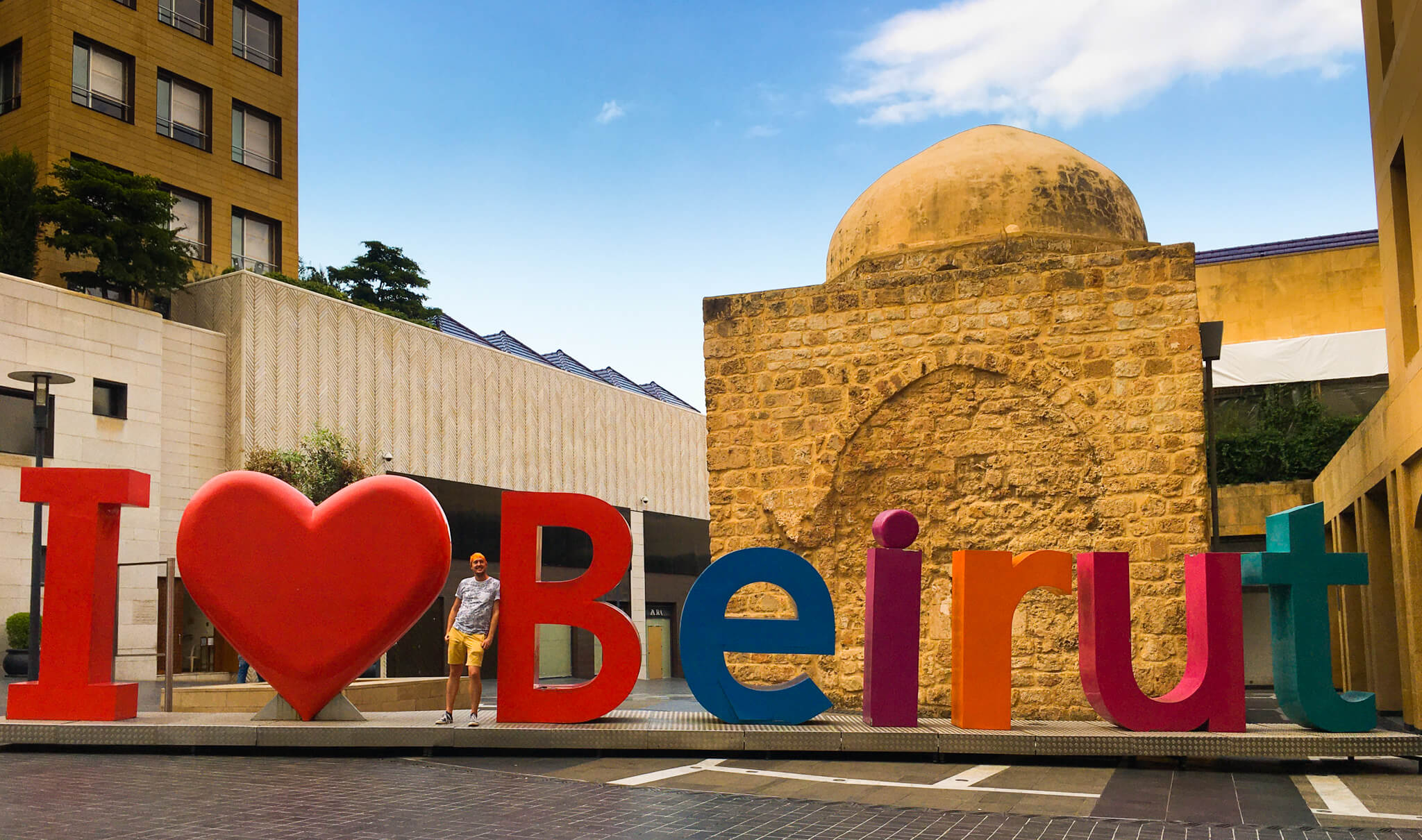
Beirut is one crazy beautiful city in one crazy beautiful country. I can’t not love it.
Recent Posts
- How to Visit Kassala and Hike the Taka Mountains
- What to do in Port Sudan and the Coral City of Suakin
- How to Visit the Meroe Pyramids, Naqa and Musawwarat es-Sufra
- How to Visit Karima and the Barkal Pyramids
- How to Visit Nubian Sudan: Abri and Kerma
Recent Comments
- rowan on Siwa Oasis Travel Guide
- Debjani Kundu on Siwa Oasis Travel Guide
- rowan on Iraq Independent Travel Guide
- August 2022
- August 2021
- September 2020
- August 2020
- December 2019
- November 2019
- October 2019
- September 2019
- August 2019
- Alor Island
- Andhra Pradesh
- Northern PNG
- Papua New Guinea
- Sulaymaniyah
- Entries feed
- Comments feed
- WordPress.org
30 Comments
Wow, this is a great post. Thank you so much. We’re travelling to Lebanon for a week in May (9th – 15th) and were a bit unsure of what to see/do because of the crisis. This has helped a lot. I’m coming with a friend. Hit me up if you’d like to hang out.
Hey mate, great to hear the guide was helpful. I’m actually outside the country travelling Sudan at the moment (another amazing place), so won’t be around on those dates. Enjoy Lebanon!
I absolutely love this guide. I am a 50plus woman who travels around the world and I am in Egypt now. I want to go and spend a month there in June/July and would love to contact people who want to meet and Argentina my age or around my age. I am not rich, my country goes through the same struggles than Lebanon with the second highest inflation in the world. I do have a website on the works and I can recommend your site, I believe the only waay we can make a change is to share
Hi Monica, that’s great. I’m sure you’ll enjoy Lebanon a lot. For meeting people, you might want to try Couch Surfing. The community in Lebanon is quite active.
Thank you so much for the useful information. I’m travelling to Lebanon for a week in 30th May – 6th June and was uncertain of what to expect. You information has helped me feel more confident. I’m coming by myself as my partner can’t make it because of work commitments. Feel free to contact me if you’d like have a chat over drinks. PS I’m keen to go to Sudan and see the Pyramids there. Hope you enjoyed it.
Hi Morris. Great to hear that the information was helpful. I would definitely be up for meeting for a drink, as long as I’m in Lebanon at that time. Could you drop me a message on the quitandgotravel Instagram page? I don’t want to put my WhatsApp number on this page as it’ll inevitably get flooded with spam.
Sudan was amazing! Working on a guide for that now, but will take some time.
This is amazing, thank you so much for publishing this! I’ve had a hard time getting a real read on the situation. We are planning a trip in July, probably just Beirut for 4 or 5 days. Do you have any hotel recommendations?
Hi Katie, glad to hear it was useful. July is a great time to visit, the weather will be beautiful. Beirut is a great place to base yourself, but I would suggest to do at least a day trip to Byblos and the Jeita Grottoes. Regarding hotels, as I live here, I don’t stay in them and so don’t have specific recommendations. However, wherever you stay, the main thing to check is whether they have a generator and how many hours of power they have per day. Generally, the higher-end hotels have 24/7 power, whereas the lower-end ones could be just a few hours a day.
Hi Rowan, this was SO helpful, thank you! Hoping to visit May 27-June 4 but was nervous about the US government “level 3” travel advisory. I saw your disclaimer about the elections last week – how is the sentiment now?
Hi Lily, glad this was helpful. The elections have gone relatively peacefully, so hoping things will be back to normal by then. Time will tell, so feel free to reach out to me nearer the time to confirm.
Think your guide is really helpful mate. I’m looking to visit with my girlfriend for at least a week in Oct before flying on to India, but we will not hire a car to keep the costs down, so hopefully we can visit places like Byblos and Kadisha Valley by bus/shared taxi etc as we’d love to do some hiking. Thanks again.
Awesome mate, glad the guide was helpful. Lebanon is very doable with public transport (and maybe a bit of hitchhiking to Kadisha). Enjoy India!
Is the situation pretty unstable atm mate? Been looking at uk gov website and it seems to say avoid all but essential travel to Lebanon. Not going until Oct, so I hope thing may improve then, but would you say wait to see if it calms down a bit before booking flights, or just take the gov advice with a pinch of salt? As your blog seems to indicate its not too bad 🙂 sorry for the bombardment of questions!
Hey mate, already replied to your email, but for anyone else reading, government travel warnings tend to exaggerate. It’s actually very peaceful here at the moment. Lebanese people are very friendly and crime rates are low. In Lebanon, the situation can change quickly, but I wouldn’t let that put you off visiting.
Hi Rowan, thanks for sharing those helpful Informations. Do you know if there is a possibility to get from Bcharré to Baalbek by public transportation in September
Hi Miriam. Glad the blog has been useful. Unfortunately, there is no public transport from Bcharré to Baalbek. By public transport, you’d need to go back to Beirut and then over the main highway to Baalbek, which is a huge detour. However, I’m sure you could hitchhike it without much difficultly. Lebanese people are very friendly and a female friend of mine who was volunteering in Anjar the past few weeks hitchhiked all over the country without problems.
Wowwwww I was just looking around, totally unsure about Lebanon and feeling no way I could Really do it but your post has totally changed my mind.
I hope to meet you for a coffee hello.
~A Solo woman traveller
Ps, Pls let me know your thoughts on overland travel from jordan through syria.
Hey, glad the blog helped inspire you! Overland travel from Jordan is possible with an organised tour, as that’s generally the only way to get the visa. It’s expensive but doable and I’ve spoken with people who’ve done it. A coffee sounds good, drop me a message on Insta @quitandgotravel when you know the dates.
This post re Lebanon is fantastic. I’m traveling alone; do you have any tour guide recommendations? Also, if you’re up for a cup of coffee and a chat, I’ll be there the first week of July.
Hi Stacy, great to hear the post is useful. I never use tour guides (except in North Korea, where it’s mandatory), so can’t recommend one. However, Lebanon is very doable solo. I’d definitely be up for a coffee and should be here that week. Can you drop me a message on Insta? @quitandgotravel
This blog was really helpful – I’m a solo female traveler and have been looking to go to Beirut to visit my friend’s dog and bring him doggie treats (and I guess say hi to my friend too and bring human treats) but with everything that has happened in the past two years it has been a bit difficult to get it organised. Due to my nationality it also appears the visa process will take longer than normal in my current country of residence. I would rather not have to get my (human) friend send some sort of invitation letter in order for me to get a visa, but I guess I’ll just have to see and try and Lebanese Embassy. I look forward to reading more of your blog.
Your poor friend, I can see that he or she is definitely second to the dog! Good luck with the visa though, I hope you get it sorted out okay, and thanks for your kind comments.
Thanks so much for this guide. I’m Lebanese background and even I found it very very useful. My Aussie partner and I are going to Lebanon in September and I’m wondering which neighbourhood to book our Airbnb. We want to be able to walk all of Beirut, prefer to flush toilet paper down the toilet haha and want to be walking distance to cafes, bars and be able to walk home safely afterwards (or is it safer to get a service/taxi?). Also did you have any issues with being overcharged for things? Memories of taxi drivers taking me around the block a couple of times in Syria and charging me double haha
Hi Lili. Great to hear that my blog is even useful to Lebanese! For AirBNBs, Gemayze is probably the best Neighborhood. It’s walking distance to most things and has power more often than Hamra, so is less dark. Beirut is still very safe and walkable, even now. I think it’s a cultural thing, but despite the ever increasing poverty levels, crime rates are still low here. Most people are pretty honest, so rip offs are not common. The worst are taxis, especially from the airport, so use Uber or Bolt and set the app to pay cash (don’t pay more than 200,000 LBP from the airport).
Rowan, as others have said this is a great blog. Many thanks for all this info. I am a keen cyclist but cannot find any of the major adventure tour companies who offer cycling holidays in Lebanon. Do you know of any cycling organisations in Lebanon who might be able to help me put together an itinerary.
Hi David. I’m happy you liked the blog. I focus on independent travel, so not sure about tour companies to be honest. I don’t think cycling is a big thing here though (drivers are not so considerate), but that said, it could be a good way to see the country.
I had planned a trip to Lebanon in May 2020 (tickets paid for and everything) but Covid happened. Since then, Lebanon had gone through some significant changes like the economic crisis, etc, and I was really unsure if this year was the right time to be visiting Lebanon; was thinking of doing so in December.
Your blog had really helped, it is positive yet realistic. I am leaning heavily on traveling to Lebanon this year.
I heard it is easy to do a day trip to Damascus from Beirut? Have you done this trip? If so, was it a good experience?
Hi Ivy. Great to hear that you’re planning to visit Lebanon. Keep your eye on the news, but if it stays like it is now, you’ll have a great time. Day trips to Damascus are easily arranged. I don’t like organised tours, so I haven’t done one. I’m still working on the visa now, but hope to visit Syria independently for a couple of weeks in the near future.
Thank you so much for all this great information. My husband & am planning to move to Jadra, Lebanon with in the next year and I am doing research now and came across your blog. Any information you can send me in a email would be much appreciated. I have never traveled outside the U.S. . We plan on visiting for 2 weeks before we actually move there.
Hey that’s awesome that you’re moving here to Lebanon. It’s a wonderful country. Jadra is an interesting choice of location though! Most of the relevant information is in the blog, but feel free to let me know if you have specific questions.
Submit a Comment Cancel reply
Your email address will not be published. Required fields are marked *
- Destinations
Wild Junket

One Week in Lebanon: My Itinerary
Last Updated on April 17, 2020
For those who are going to travel the Pearl of the Middle East, I’m sharing my one-week Lebanon itinerary to help you plan your own journey.
Lebanon: a name that many still associate with war and the Hezbollah even after 20 years the civil war has ended.
Lebanon used to be a tormented land – and in some parts it still is – but it is relatively safe to visit these days. Those adventurous enough to travel Lebanon will be rewarded with food for thought and a feast for the senses and the stomach.
The country is truly blessed with magnificent mountain vistas, impressive ancient ruins and authentic, hospitable people. The warm and welcoming Lebanese people are always willing to chat with you about their country’s culture and politics. Despite the war that tormented this country, t he Lebanese will not let political problems overshadow their pursuit of happiness.

My One -Week Lebanon Itinerary
Table of Contents
Is It Safe to Travel Lebanon?
Explore downtown beirut, learn about the war at beit beirut, stroll along the corniche, stay at: le gray beirut, go on an alternative beirut walking tour, wander around hamra, visit the caves of jeita grotto, take a cable car to mount harissa, stay at: 35 rooms, take another day trip to baalbek, stay at: palmyra hotel, stop over at byblos, wander the old town of tripoli, stay at: via mina hotel, soak up coastal vibes at al mina , go for a hike in qadisha valley, stay at: riviera hotel beirut, get lost in the souks of sidon , enjoy seafood in tyre, stay at: al qualaa boutique hotel.
First, let’s discuss if it’s safe to travel Lebanon. I traveled Lebanon with another female friend in October 2017 and we didn’t feel any danger at all during our entire trip. While we did see quite a lot of military presence in Tripoli and Beirut and also plenty of bullet-marked buildings everywhere, there weren’t any other signs of instability or potential danger at the time of our travel.
Most parts of Lebanon are safe to visit these days. But some parts of Lebanon should be avoided, including the eastern parts close to the Syrian border and the southern areas on the Palestinian border due to the spillover from the war with Syria and the conflict with Israel.
Despite a few incidents, Beirut and nearby areas as well as many other parts of the country are still reasonably safe and the chances to be caught up in anything are very remote. South Beirut, Baalbek, Sidon, Beqaa valley have also suffered sporadic clashes and/or security incidents but these are occasional events that don’t happen often.

A Detailed Lebanon Itinerary
Lebanon is one of the smallest countries in the Middle East , so you can easily see a lot of it in just one week. Before the trip, I was worried if we would be able to see the country in just one week, but needless to say, I had nothing to worry about. If you want to see things at a more leisurely pace, I would recommend 10 days. I hope that sharing my one-week itinerary in Lebanon will help you figure out your own.
Note that many cities in Lebanon have Westernised names which are significantly different from their Arabic names; the Arabic names are given in parentheses below. Be sure to use the Arabic names when talking to taxi drivers and other locals.
DAY 1: INTRODUCTION TO BEIRUT
Our journey started in the capital Beirut. As Lebanon is so small and distances short, we chose to base ourselves in Beirut for our trip (except for a night’s stay in Tripoli) and took day trips from Beirut. Beirut is famous for its nightlife and great restaurants, so my best friend Melinda and I wanted to spend our evenings hanging out and enjoying the atmosphere.
Once known as the Paris of the Middle East , Lebanon’s capital city of Beirut is the most liberal city in the region. The vibrant city is home to great restaurants, hotels and nightlife. Even though the impact of the devastating war can still be felt today, there’s a sense of joie de vivre in this city.
We began our exploration in Downtown Beirut, the historical and geographical core. This was also the frontline of the Lebanese Civil War and suffered the most devastation of all of Beirut. It underwent a thorough reconstruction plan in 1994 and a Lebanese company, Solidere, transformed it into a modern hub filled with high-end boutiques and restaurants. This project was hugely controversial as original inhabitants were forcefully removed from homes and the restoration work was criticised as inauthentic and artificial.
National Museum of Beirut
Then we headed to the National Museum of Beirut , located on the former Green Line. Its impressive, magnificently displayed collection of archaeological artefacts offers a great overview of Lebanon’s history and the civilisations that impacted this cultural crossroads. On the way there, we stumbled upon an impressive art exhibition housed in one of Beirut’s most iconic war-torn buildings, Beit Beirut. The crumbling, bullet-marked Beit Beirut building is a somber reminder of what happened here, and Healing Lebanon aims to promote peace through art work.
Beit Beirut building
In the evening, we went on a long sunset walk along the Corniche , the seafront promenade that fringes the entire northwestern part of Beirut. The 4.8km promenade is a great place for people watching as families, joggers and bikers often convene here in the evenings. There are also lots of beach bars here that overlook the beautiful Mediterranean Sea. We found a cute little grocery shop with high stools that offered the same view as pricey and touristy Bay Rock Cafe.
View of the Pigeon Rocks from the Corniche
For our first two nights, we stayed at Le Gray Beirut , one of the best hotels in Beirut. The five-star hotel has a spectacular rooftop pool that overlooks Downtown Beirut as well as parts of the Mediterranean Sea. We loved our spacious Executive Suite, that had a comfortable sitting area for lounging, and a small balcony that opened up to stunning views of the Mohammed Al-Amir Mosque. Breakfast is served on the rooftop Indigo on the Roof restaurant, which also offers a great dinner menu at night with views of the city before you (Don’t miss the signature beef wellington!).
Check the Latest Rates
DAY 2: GETTING TO KNOW DIFFERENT BEIRUT DISTRICTS
The next day, we signed up for a walking tour with Alternative Beirut to explore other parts of the city with a local. Beyond Downtown Beirut, there are plenty of lively, vibrant neighbourhoods in Beirut that are worth a visit.
We started in Gemmayzeh , a neighbourhood in East Beirut that’s popular with the younger crowd. Centered around Gouraud Street, Gemmayzeh is an enchanting area to enjoy a coffee or lunch or to stroll around along its authentic, traditional houses with mediterranean facades. At night, the many bars and restaurants – ranging from trendy and expensive to laid-back and affordable – are swamped with locals.
Then our guide led us through Achrafieh , a district that shows a different history of Beirut. It used to be farmland owned by several powerful Beirut families. The street is home to the Sursock House, a museum that holds regular modern art shows, and Sassine Square, one of oldest in the city. New buildings have sprung up in the area, despite the efforts of groups trying to preserve its history.
Antique street in Gemmayzeh
Lastly, we found ourselves in Hamra , known as the Champs Elysees of Beirut. Because of all the historical cafes and theaters, Hamra was once the intellectual center of Beirut. While that has lessened, the district still has a cosmopolitan vibe, and is definitely the place to hang out for people interested in culture. The atmosphere is a liberal haven in the middle of a country torn by political difference. Today, it is full of pubs and coffee shops that welcome people of all sorts, and still stands as a testament to Beirut’s rich cultural history.
One of the many crumbling buildings in Beirut
Day 3: day trips from beirut.
At just 18km from Beirut, Jeita Grotto and Mount Harissa make for an excellent day trip from the ctiy. We booked a car from our hotel (for around US$60) that brought us to both of the destinations and back. You can actually take public transport to Jeita Grotto but you’ll have to walk quite a distance and there isn’t any connecting transport to Harissa.
Jeita Grotto is a surprisingly impressive network of interconnected karst limestone caves spanning an overall length of nearly 9 kilometres (5.6 mi). It’s named one of top 14 finalists in the New 7 Wonders of Nature competition. Though inhabited in prehistoric times, the lower cave was not rediscovered until 1836 by Reverend William Thomson.
It can only be visited by boat since it channels an underground river that provides fresh drinking water to more than a million Lebanese. The upper galleries house the world’s largest known stalactite. Unfortunately, photography is not allowed inside the caves.
Book A Day Trip!

From Jeita Grotto, it’s just a short ride to Mount Harissa , an important Lebanese pilgrimage site, Our Lady of Lebanon. It’s one of the most important shrines in the world honoring the Virgin Mary and the shrine is highlighted by a huge, 15-ton bronze statue of the Immaculate Conception. The view from the top of the statue is impressive and definitely worth the visit. You can get there from the coastal city of Jounieh either by road or by a nine-minute journey by a gondola lift, known as the Téléphérique .

The view from Harissa
For the next two nights, we stayed in the Hamra district of Beirut as there was plenty to do after our day trips. 35 Rooms is affordable and well-located, just a block away from the main Hamra Street that’s flanked with shops, restaurants and bars. We could easily walk to the bars and flag down taxis right from our door step. Their service was really good; and they booked us affordable airport transfers as well as transport for the day. Check for the latest rates here.
If you prefer to stay outside of Beirut to experience other parts of Lebanon, I recommend staying in Jounieh, the closest city to Mount Harissa. Jounieh is said to have an even better nightlife than Beirut. Veer Boutique Hotel & Resort is a modern five-star hotel right on the sea, with a private beach and a massive swimming pool as well as spacious and stylish suites overlooking the sea.
Book Your Hotel here!
DAY 4: VISIT THE BAALBEK RUINS
Next on our Lebanon itinerary is Baalbek, the most spectacular archaeological site in Lebanon . To get there, we took an Uber to the cola intersection and hopped onto a mini-van towards Baalbek. Mini-vans or buses are the best way to get around Lebanon; you’ll need to wait for the mini-van to fill up before you can leave but it usually doesn’t take too long. The journey from Beirut to Baalbek takes two hours each way and costs around LL6,000 ($4) per person.
Baalbek Roman Ruins is a site of great ancient temples built by the Phoenicians, the Romans, and other civilisations that have conquered the region. With its colossal structures, Baalbek is one of the finest examples of Imperial Roman architecture that I’ve seen, almost rivalling those in Rome and Athens. Some of the most impressive temples here are the ones of Bacchus, the Greek god of wine, and Jupiter, the Roman god of light, of the sky and weather.
The historical site is located just 75km from Damascus, Syria, and is considered a stronghold of the Hezbollah movement so some books might warn you against visiting. I found the site very peaceful and quiet and didn’t feel any danger at all during my visit. As always, it’s best to keep yourself updated of the latest happenings.
There are very few hotels in Baalbek, but if you do want to stay here, then definitely make it Palmyra Hotel. It’s an institution with remarkable history — the iconic hotel almost makes it worthwhile to stay overnight at Baalbek. The heritage hotel gives you a glimpse of the grandeur of Lebanon back in the day and you’ll feel like you’re being transported back in time.
Check the Latest Prices

Lebanon’s best archaeological site, Baalbek
Day 5: head to tripoli.
Next up on this Lebanon itinerary is the second biggest city in Lebanon, Tripoli. As the fishing town of Byblos was along the way, we decided to stop for a few hours to take a look around. Again we took a mini-van from the Cola intersection (LL1500), and we were dropped off on the highway, which was a 15-minute walk into town.
Byblos (Arabic name: Jbail) is a charming historical coastal city, and a UNESCO World Heritage Site. Believed to be one of the oldest continuously inhabited cities in the world, Byblos is built upon multiple layers of ruins, dating back to as early as the Stone Age and extending to the more recent Ottoman days. Besides the layers of history behind it, it’s also a picturesque Mediterranean seaside town with beautiful cobblestone alleys and seafood restaurants that make for a relaxing visit.

Byblos has a charming old town
Not to be confused with the other ‘Tripoli’ in Libya, Lebanon’s Tripoli (Arabic name: Trablous) is the second-largest city in the country and is famous for its Crusader- and Ottoman-era architecture. Located in northern Lebanon close to the Syrian border, Tripoli has a far more Middle Eastern feel to it, with its labyrinth-like souks, teahouses, sweet shops and mosques. In comparison to Beirut, this city gives a more authentic Lebanese experience than Beirut does.
Tal is the old center of Tripoli, where most cosmopolitan activities happened in the 20th century. It is home to the city’s famous clock tower and old hotels. Walk through this busy street and marvel at all the hustle and bustle that takes place in the area. The most interesting site in old Tripoli is the Citadel, a Crusader fortress originally built atop the town during the period from 1103 to 1104. It’s partly used as a barracks, so don’t be surprised to find soldiers and tanks around it.

Tripoli’s souks are massive
Strangely there isn’t any affordable and pleasant hotel in Tripoli itself, so I recommend staying in El Mina, close to Tripoli (a taxi costs just US$3-5 each way) and next to the sea. It’s a pleasant area to stay in, with lots of seafood restaurants and kebab shops lined along the Corniche. Via Mina Hotel is the best hotel in the area, with comfortable and stylish rooms housed within a beautiful Mediterranean-style house. There’s even a swimming pool and a lush garden.
DAY 6: CONTINUE TO QADISHA VALLEY
We spent the morning exploring Al Mina — although it’s an independent coastal city, it feels more like a neighbourhood in Tripoli. Al Mina is actually a port city with a rich history and a municipality that dates back to the 19th century. The Greeks first inhabited the city, then the Turkish came, followed by the Syrians. The people of Mina (Minawiyeh) have their own accent which is totally different as other accents in Lebanon.
Al Mina is known for its historic hotels and homes, but you’ll need to get lost within its narrow alleyways to find them. The beach is really nothing to rave about, with heaps of rubbish strewn all over the sea front. I found the Corniche in Al Mina to be far more interesting: lots of locals hang out all the seafront promenade to enjoy sunset, have drinks and snacks at the kiosks that litter the sidewalk. It’s definitely a good place to people-watch and to get a sense of the local environment.

From Al Mina, we headed to Tripoli to catch a shared taxi to the Qadisha Valley , home to the legendary Cedars of God, the most highly prized building materials of the ancient world. This valley was named a UNESCO World Heritage Site because of its importance as the site of some of the earliest Christian monastic settlements in the world, and its continued example of early Christian faith.
The drive there was really scenic and we wished we had a car to drive and hike all over the valley. Instead, we only managed to visit Bsharri, the biggest town in Qadisha, and just took a short walk around the area.

The UNESCO site of Qadisha Valley
For our last two days in Beirut, we stayed in Hamra once again, but we really should have booked a hotel near the Corniche instead. The seafront is lined with nice hotels and it would have been nice to splurge on a luxury hotel after a busy trip like that. We walked past the pool and bar of Riviera Hotel Beirut and wish we’d stayed there for our last night. The pool area is right next to the sea, and lined with beautiful daybeds and lounge chairs. It’s also surprisingly affordable considering it’s a 5-star hotel overlooking the Mediterranean Sea and rooms are ultra luxurious.
DAY 7: EXPLORE SOUTHERN LEBANON
On our last day of our Lebanon itinerary, we headed south for the first time (the previous day trips were all in the north or east of Beirut) along the coast to two historical cities. Again, buses depart from the Cola intersection and cost around LL 4000 for the one-hour journey to Sidon.
Sidon (Arabic name: Saida) is Lebanon’s third largest city and is most famous for its sea castle. It turned out to be a pleasant surprise and I really wished we had spent the day here rather than going further down to Tyre. In July 2013, Sidon was the scene of a two-day battle between Sunni militants and the Lebanese Army which left over 50 people dead. Although Sidon is for now calm and safe to visit, be sure to keep up with the news if you decide to visit.
This coastal town was once a rich and flourishing Phoenician city, with tight trade links to ancient Egypt. Today it’s best known for its fresh fruit, pastries and sweets, which can be sampled at their awesome souk. Just across the road from the souk is the Sidon Sea Castle, which was built by the crusaders in the thirteenth century as a fortress of the holy land — another must-see when in Lebanon.

Views from the top of the Sidon Sea Castle
Further south, just 26km (16 miles) from the closed Palestinian border is Tyre (Arabic name: Sur), another ancient Phoenician city and home to one of the nation’s major ports. We had a nice stroll on the seafront and meandered our way through the colourful residential area before finding ourselves at a historical site.
The city has a number of ancient sites, including its Roman Hippodrome which was added to UNESCO’s list of World Heritage Sites in 1979. Its beaches are also some of the most popular places to go for both tourists and locals alike in summer.
The lazy fishing town of Tyre (Sur)
Roman ruins in tyre.
We had to head back to Beirut for our flight that evening, but I would recommend staying in Sidon if you have the chance. It’s an interesting city with lots to explore and discover, so an overnight stay would do more justice. Al Qualaa Boutique Hotel is a charming heritage hotel perched above the souk and overlooks the beautiful Sidon Sea Castle. You’ll find restaurants right at your doorstep and lots of spice shops and pastry shops just steps away. I particularly love the old stone walls and Ottoman decor and furnishing.
Book Your Stay Here!
Are you planning a trip to Lebanon? Leave a comment below if you have any questions!
Nellie Huang
Nellie Huang is the founder of WildJunket. Originally from Singapore, Nellie has traveled to over 150 countries across 7 continents. She is a book author and Lonely Planet guidebook writer. As an adventure travel blogger, she has a special interest in unusual destinations and deep experiences. Follow her travels on her Facebook and Instagram .
Leave a Comment Cancel Comment
Save my name, email, and website in this browser for the next time I comment.
This site uses Akismet to reduce spam. Learn how your comment data is processed .
The Comments
Lovely read. Beautifully narrated. Thanks for sharing mate.
Wow! seems like an amazing week. Loved it.
Helped me jot down my list of places to see in Lebanon. Thank you :)
Hi,This has been really helpful. Just wondering if you tell me what a rough budget for this trip would be?
Here’s a rough breakdown:
– $30-40 per night on accommodation (considering I shared accommodation with my friend) – $20-30 per day on food (considering we ate really well and sought out the best restaurants) – $2-3 per day on transport (public transport was really cheap)
In total, I estimate it to be around $500 not including the flights. My flight from Europe was quite cheap as well on Pegasus Air (it was around $300+). Lebanon is not an expensive destination and it’s even cheaper if you stick to public transport. Hope this helps!
Heidi Sequenz
Thanks a lot I am going there end of October? What time of the year did you travel?
I went in October too! It was warm and pleasant. :)
Hi there, Did you book any tours or did you just catch a taxi to the places you mentioned and wondered around yourself? I am heading to Lebanon in December and can spend 8-10 days there. Very keen to follow what you did and also do the hike to the tallest peak.
hi Sarah! I just took public buses/minivans. Most of them leave from the ‘cola intersection’ and drivers will be shouting out the names of the place they’re going to. They’re cheap and leave whenever they’re full. We didn’t book any tours at all. We did hire a private taxi to get to Harissa and Jeita Grotto as it was too late to go catch a bus and we would have to hike between the two spots. The taxi wasn’t cheap – I think we paid around US$50 for the full-day hire. Within Beirut, we would just take Uber everywhere since they’re cheap.
Hi Nellie! Thanks for all the information about Lebanon. I am going in December and your blog has been a nice surprise ! Very helpful with transport. Looking forward to know this fantastic country!
Thanks. This really help. I really want to see this country. I’m from Nigeria and I plan on visiting real soon.
Thanks for info. We only have a week, but I do have people to show us around as I was born there. I’m so excited. Leaving March 22nd. You have helped me with my plans. We are staying at the Vendone in Beirut
great post, thank you! on the minibus travel, I would have a question though. I understand that most leave from the Cola intersection, but was wondering if it is as clear on the return from the different destinations, or if there is something in particular you’d need to be aware of?
hey Georgia thanks for the comment! Yes it is pretty clear for the return journey. You pick up the minibus from where you were dropped. The minibuses are usually shouting off the destination they’re going, so it’ll be easy.
Carol Herbert
So enjoyed reading about your trip, informative and exciting, will definitely travel. Thankyou
I a mi amazed to read this blog. I want to travel with two other females in February but feel quite ambivalent regarding safety concerns. We are Canadians and the travel advisory posted for Lebanon is not good. I was thinking of perhaps lodging at one of the big hotels and organize day trips through them. Very costly though. Is it possible to be based in Beirut an de take the sides ame trips you went on?
hey Angie, thanks for writing! I traveled with a female friend all over Lebanon and we honestly didn’t feel unsafe (except at one point when we spotted a young boy masturbating in a cemetery). But yes, it IS possible to base yourselves in Beirut and take day trips. Lebanon is a relatively small country, so you can easily see quite a lot doing that. I highly recommend going to Balbeek, an ancient ruins site that’s really impressive. Also Byblos was also really lovely, with lots of nice restaurants.
I’m visiting end of June and can’t wait to explore the places you shared. Absolutely stunning
Great to hear, hope you enjoy Lebanon!
Adventures in Destinations Unknown
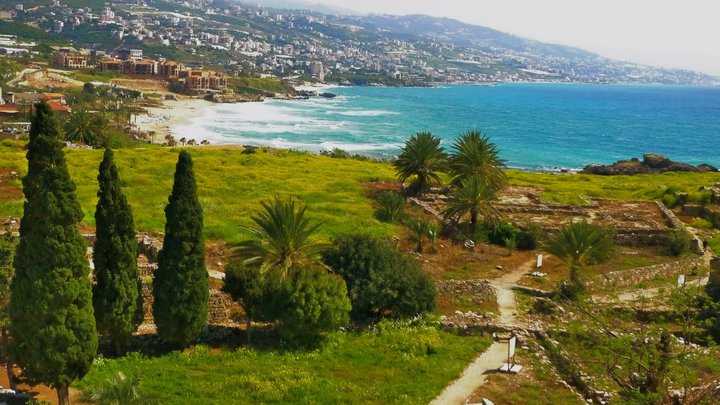
Three Day Lebanon Itinerary for Beirut and Beyond
Last modified on May 15th, 2020 at 15:42
Though it is the smallest country in continental Asia, Lebanon packs a lot of punch. The country is home to snow-capped mountains, cedar forests, lush green valleys and a beautiful coastline. It claims the oldest continually inhabited city in the world (though Damascus shares the claim), hosts a multitude of Roman ruins and boasts nightlife comparable to that of many cities in Western Europe.
One might think that, with such a wealth of attractions, the small Middle Eastern country would be a magnet for travelers the world over.
But Lebanon has made the news for all the wrong reasons in recent years.
And as a result, it remains an off the beaten path destination full of wonderful and little-known surprises.
Table of Contents
A Long Weekend in Lebanon
While living in Jordan, I had the opportunity to travel to Lebanon for a long holiday weekend.
Ideally, I would have dedicated more than three days to Lebanon, for the country has a wealth of places to visit that cannot be adequately discovered in three days.
Yet, due to time constraints, I had to make the most out of my limited time in the small Middle Eastern country.
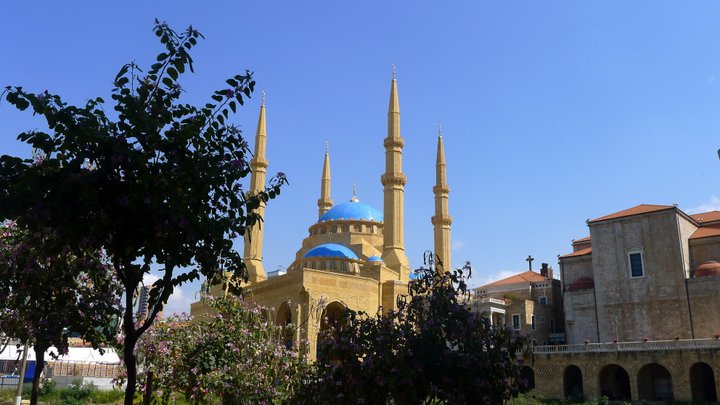
Still, with three days in Lebanon, I was able to indulge in Lebanon’s fantastic cuisine, relish the energy of Beirut, and enjoy some of the country’s most beloved tourist attractions.
Lebanon Itinerary Day 1: Beirut
Beirut is vibrant, dynamic, and cosmopolitan.
With one full day in Beirut, my travel companion and I walked the city from top to bottom and soaked in some of its history-laden highlights.
Beirut’s Central District
Lebanon’s tumultuous history is visible in Beirut’s architecture. The pockmarked city has a nauseating mix of war-ravaged buildings interspersed into its urban landscape.
In the area around Nejmah Square in the Central District of Beirut, post-conflict reconstruction efforts are particularly apparent.
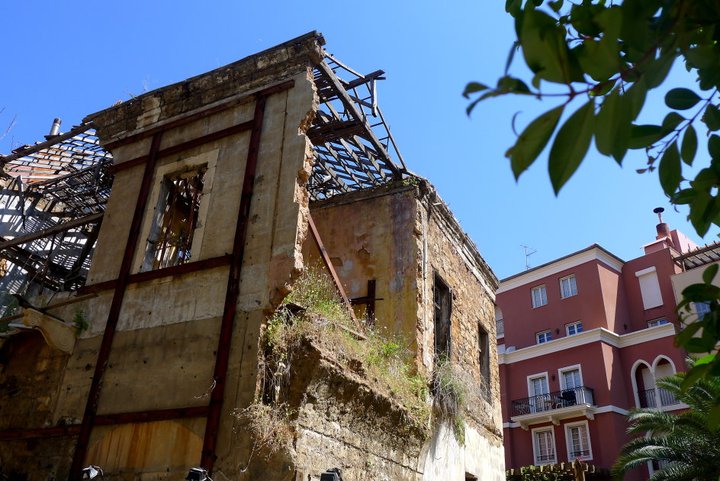
The area is home to reconstructed edifices, war-ravaged buildings, and quiet religious complexes—all laying side by side.
American University of Beirut Campus
We took an afternoon stroll through the American University Campus following our visit to Central Beirut.
The American University of Beirut is one of the most aesthetically beautiful institutions of higher learning in the world. Constructed by missionaries in the 1860s, the university’s campus spreads across more than 60 acres of manicured greenery overlooking the Mediterranean.
Fortunately, the campus’ stately 19th century edifices largely escaped the damaged caused by the Lebanon’s civil war.
The Beirut Corniche
I spent my first evening in Lebanon walking along Beirut’s oceanfront corniche with two friends who had accompanied me from Amman .
Much like the corniche in Muscat Oman , Beirut’s ocean-front walk is a favorite promenade spot. The corniche is a true meeting point for all segments of Lebanese society–Muslim and Christian, young and old, flirting couples and extended families. Girls jogged by in running shorts and tank tops, men sat out on the surrounding rocks hoping to catch a few fish and hundreds of small children zoomed around on bikes.
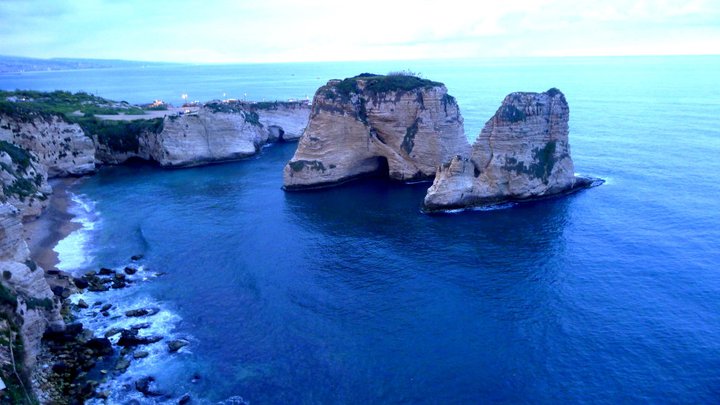
As I took in the sight, I kept having to remind myself that I was in the Middle East.
Day 2: Baalbek Ruins Day Trip
Just a few hours East of Beirut, the glitzy sophistication of the city gives way to conservative towns. The Beqaa Valley east of Beirut is home to the Baalbek Ruins and some of the country’s prettiest geography. It is also the heartland of Lebanon’s Hezbollah territory.
In Baalbek, signposts are decorated with the Hezbollah flag. The banner sways from buildings and is even draped over the back seat of cars. In fact, Hezbollah is such a part of the Baalbek experience that locals have begun to market t-shirts with the party’s logo for tourists. It is amusing to think that t-shirts of a group deemed to be a terrorist organization by the US government have become popular souvenirs for eager tourists.
Baalbek Ruins
Baalbek sits in the Bekaa Valley, surrounded by green rolling hills and snow-capped mountains.
The ruins themselves are wonderfully preserved. They include the Temple of Bacchus and the Temple of Jupiter—two of the Roman Empire’s grandest architectural feats.
The ruins of Baalbek are much smaller than I had anticipated, but they are perhaps the best preserved Roman ruins I have ever seen.
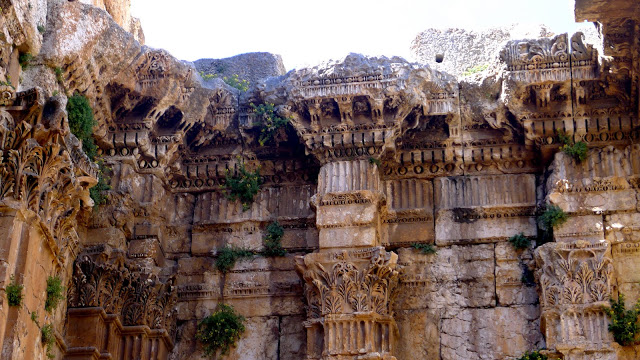
Despite the US State Department’s ample travel warnings and my own apprehensions about visiting the valley due to the recent news about Hezbollah kidnappings in the area, I felt completely safe the whole time.
Lebanon Day 3: Day Trip to Byblos and Jeita
During our final day in Lebanon, my friends and I were able to forget about the political predicament of the country and immerse ourselves in its surrounding natural beauty. Lebanon is distinct from its Middle Eastern neighbors in that it is the only country without desert.
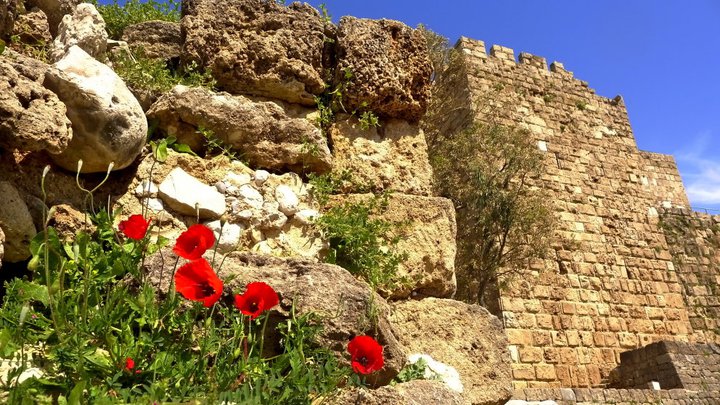
Instead, the various shades of orange and brown that define much of the landscape in surrounding countries, are replaced by lush green hills and fields of colorful flowers.
The Jeita Grotto
We began our third day in Lebanon with a visit to the impressive Jeita Grotto —a karstic cave that is nestled in the hills North of Beirut. The stalagmite-covered cave was nominated as one of the new seven wonders of the natural world.
Despite the Jeita Grotto’s hype, I found it to be truly spectacular. The Jeita Grotto is deservedly one of Lebanon’s major tourist attractions. During the Lebanese Civil War, the cave was used as a store for munitions. Today, it supplies water for over 1,000 Lebanese citizens in addition to generating revenue from tourism.
There are two parts of the cave open to visitors–the upper cave and the lower cave. The upper cave extends over 2,000 meters into the mountains, though only 750 of them are accessible to tourists. A pathway winds its way around columns and stalagmites, passing through a long tunnel and over ponds of clear water that reflect the karstic formations overhead. The lower cave contains a large, underwater river that meanders through passageways and intricately decorated caverns.
In order to visit the lower caves, visitors can take a short boat ride down the river and amid the exquisite natural formations. I was a bit disappointed that the boat ride only lasted about ten minutes, because the river visibly extends deep into the mountains and we only visited the first 500 meters. Nevertheless, the entire experience was at once overwhelming and serene.
I wish I could have taken pictures of the grotto, but photographing the landmark is strictly prohibited.
Words simply do not do it justice.
Byblos Lebanon
At around lunchtime, my friend and I took a microbus from the Jeita Grotto to Byblos.
Byblos is thought to be the oldest inhabited city in the world, though the same title has also been given to Damascus and Jericho. Byblos is a small, touristy town that overlooks the Mediterranean Sea and contains a picturesque old city as well as a crusader castle and roman ruins. Byblos is an ideal getaway from the congestion and fast-paced life of cosmopolitan Beirut. Surrounding the ruins and town are fields upon fields of tall green grass and small yellow and red flowers.

In this quiet paradise, it is easy to forget the visible scars of war that plague the architectural landscape of the country’s capital.
Is Lebanon Safe to Visit?
Though I visited Lebanon in 2011, I believe Lebanon is still safe to visit.
Lebanon is made up of eighteen official religions. For the most part, people with cultural and sectarian differences live side by side. Yet at times, tensions flare violently and without warning.
As always, it is advisable to check current travel warnings and do your own research before booking a trip to Lebanon.
Lebanon is a land of contradiction. It is at once glamorous and squalid, peaceful and volatile, hopeful and devastated.
Only time will tell if Lebanon can put its painful history aside and reclaim its title as the “Paris of the East.”
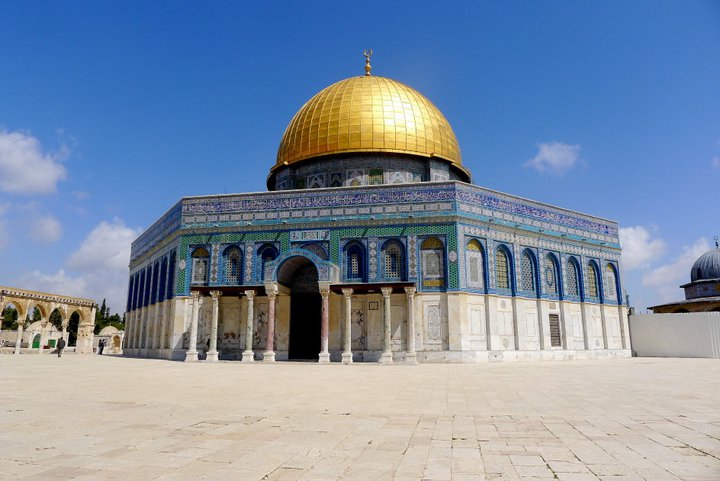

Complete 7 Day Itinerary to Lebanon: Visit the Best Things to do In Lebanon

Lebanon is in the Middle East, with Israel bordering to the south, Syria to the east and north, and the Mediterranean Sea to the west. While you may hear more about Lebanon in the news due to its current economic crisis or hostilities, this small country offers its visitors great variety of landscapes, gastronomy and activities. In this travel guide we are going to share the best things to see in Lebanon in 7 days.

Lebanon is a country with a lot of history and culture, given that it has been conquered by several empires such as the Byzantine and Ottoman empires, among others. For this reason, Lebanon is a popular destinations for lovers of ancient civilizations and people who love to learn more about history in general.

Although Lebanon is not often high on top tourist destinations, it is a country that has a little bit of everything, with sea, mountains, extreme sports, modern and historic cities. There are so many things to do in Lebanon and I hope that this guide will help you to plan your next trip to Lebanon.
- What is the best way to explore Lebanon?

The best way to see the whole of Lebanon is with a tour that includes transportation and local knowledge. We took a customized tour with the amazing Tourleb around a majority of the country and even got to see the home that my great-grandfather lived in and still is home to my relatives. Another recommendation is using Beirut as a home base city and taking daily tours, renting a car or taking a bus to different destinations and returning to capital to sleep.
To give you an idea of the size of the Lebanon from north to south, it takes about 6 to 8 hours driving depending on traffic. From Beirut to the southern border with Israel, is approximately 125mi, and from Beirut to Tripoli in the north is about 60mi.
- What is the best way to get around Lebanon?

As I mentioned before, the most comfortable and fastest way to get around Lebanon is by taking a tour, but if that is not within your budget, I recommend the following options:
- Bus (small buses or combis): The main bus stations in Beruit are located in Charles Helou, Cola and Dora. Prices and schedules vary depending on the destination. Some destinations require several bus connections.
- Private car: You can rent a car and explore at your own pace.
- Taxi or Uber: The distances are relatively short and the currency exchange makes this form of transportation between cities more affordable. If you are traveling with a group up to 4 people this can be more economical than expected with costs divided.
If you want to move within the city of Beirut or any other larger city, you can take regular taxis or Uber. If you take a taxi in Lebanon you have to negotiate the price before getting in, as they do not use a meter.
- 10 Typical Lebanese Foods You Need to Try

My grandfather was Lebanese, so the cuisine has always been part of my family and I have eaten Lebanese food since I was little. I am going to share a list of the most delicious Lebanese dishes that you must try in Lebanon along with restaurant recommendations in each city.
Traditional Lebanese food is a fusion between Arab, Turkish and Mediterranean food, making its cuisine honestly one of the most delicious in the world. Most dishes contain some combination of these main ingredients: fruits, vegetables, grains, legumes, sesame, olive oil, yogurts, cheeses and meats.
The most traditional way to enjoy a mean Lebanon is mezze, also known as the Lebanese mezze, which is a set of various appetizers that are shared at the table. The most popular appetizers in the mezze are hummus, cheeses, salads, breads and olives.
Here is the list of the Must-Try Dishes in Lebanon :
- Hummus: It is a dip made of chickpeas, lemon juice, sesame seeds and olive oil. Depending on the restaurants they add additional different flavors. The traditional flavor is my favorite and depending on who makes it you will still find a range of flavor and texture.
- Labneh: It is a yogurt cheese, made with sheep, goat or cow milk and olive oil. There are also different flavors, my favorite is with garlic.
- Tabbule: It is a salad made from parsley leaves, olive oil, wheat and mint leaves.
- Baba Ghanoush: It is a dip made from eggplant, one of the most popular vegetables in Lebanese food.
- Batjenjan Makli: Fried eggplants served with honey, lettuce, tomato, parsley, yogurt sauce or lemon vinaigrette.
- Manakish with Zatar: This dish is most commonly eaten in the breakfast. It is a round bread similar to pizza dough, to which they add olive oil, sesame seeds, thyme and sumac and zatar, or you can also put cheese on it.
- Kibbeh: My favorite dish since I was a baby, although I don’t eat it anymore because I’m a vegetarian. Kibbeh is the main dish of Lebanon and a must try for every visitor. They are balls made of wheat and meat. There are three ways to eat it; raw, fried or baked. All three options are delicious. If you are vegetarian, you can request that instead of meat you have pumpkin, tomato and potatoes, but it is a totally different flavor. It is usually served with yogurt sauce, garlic sauce, or hummus.
- Shawarma: Shawarma is like a burrito made of beef, lamb, chicken, or mixture. Inside you can add a rage of items with the meat including potatoes, garlic sauce, onion and tomato. The meats are cooked slowly with the juice and fat of the same protein dripping down it.
- Falafel: It is similar to Kibbeh but it is a vegetarian dish made of chickpeas or broad beans, with parsley, coriander, onion and cumin. It’s super delicious.
- Desserts: Maamoul, Baklava, Kuneffe (my favorite).
- Practical tips for visiting Lebanon:

- Visas: Many countries have the option of a free 30-day visa on arrival at Beirut airport, with the option to extend it for up to 2 more months. It is important to contact to your local Lebanese embassy to get the requirements for your nationality to enter Lebanon.
- How to get there: The most common way to get to Lebanon is by airplane. If you want to go by car it will have to be through the Syrian border as the border with Israel is closed. If you want to enter by sea, you must take a ferry that comes from Cyprus.
- Language: The official language in Lebanon is Arabic, but many of the inhabitants speak French and English, especially in Beirut.
- Money: The official currency is the Lebanese pound (LBP) but you can pay in USD. Although the official exchange rate is 1USD = 1,500LBP, I recommend you first find out the exchange rate on the secondary market. For example, when I visited Lebanon in May 2022, 1 USD was equal to 38,000 LBP when exchanging on the street. Because of this avoid paying by credit card or taking money out at an ATM, as you will receive the official exchange rate. It is best to bring enough cash with you for your trip.
- Internet: I recommend buying a SIM Card, which you can get at any store; Alpha and Touch have the best coverage across the country.
- Is it safe to visit Lebanon?

Yes, unfortunately most of what you see about the beautiful country of Lebanon in the media is negative. It is true that there was a civil war that caused a lot of damage and destruction as well as guerrilla groups and terrorist organizations that are still present in one way or another, but it is relatively safe in most of the country. At least, personally, I felt like in any European country when it comes to security.
In fact, Lebanon is one of the safest countries in the Middle East, although it has areas that are not advisable to visit, such as its border regions where there is more political instability. The cities in Lebanon are full of shops, restaurants, bars and terraces as in any other destination. In tourist areas you will notice the military presence which provide safer experience for your visitors.
- Places not to visit in Lebanon:
As mentioned before, there are unfortunately areas of Lebanon that even locals do not recommend visiting due to increase instability in these cities.
- South Lebanon: UNIFIL’s area of operations. Except for the city of Tire and its beaches.
- Northeast Lebanon: Arsal, Wadi Khaled. Hermel, Dannieh or other cities bordering Syria.
- Neighborhoods in Beirut: Dahiyeh Shia, Ouzai, Haret Hreik, Bir Hassan and Moawad Street.
Many believe that the tension between Christians and Muslims is still felt, due to the long and destructive civil war they had years ago, but currently there is no fighting between the two religions. In fact, almost half of the Lebanese population is Christian. In Lebanon there are not overtly religious based laws to follow like dress codes.
However if you are Jewish or Israeli, Lebanon is not a safe place for you at all, if you are even allowed in the country. Israeli passports or other passports with an Israeli visa or stamp are bared from entry to Lebanon. In fact, it is recommend you not outwardly mention or show your Jewish religion and worse if you mention you have visited the state of Israel.
- How many days should I spend in Lebanon?

We recommend you give yourself 7 to 10 days to explore Lebanon’s most famous cities and attractions at a relaxed pace. If you have the time and interest you can spend a month in Lebanon and still find new things to do. Since the country is relatively small it is easier to visit several regions or cities in the same day.
It also depends a on what time of year you visit, because if you go in the winter you get much less daylight than in the summer or spring.
- Will I experience with power outages in Lebanon?
As of 2022 the continued deep financial crisis in Lebanon has lead to frequent blackouts across the country. The timing of power outages occur depends on the area and can last from 3 to 10+ hours a day.
- Ultimate 7-day Lebanon Itinerary with all the highlights
Save this map with the best things to visit in Lebanon
The best things to see in lebanon in 7 days complete itinerary:, day 1: start the day in beirut and spend the afternoon in jeita grotto, day 2: start the day in byblos and the afternoon in balou balaa, day 3: start the day in douma and visit the oldest olive trees in bchaaleh, day 4: paragliding and baalbek, day 5: sidon and tyre, day 6: joumblat palace, beit ed dine and deir el qamar, day 7: tripolí, what vaccinations do i need to visit lebanon, how big is lebanon, when is the best time of year to visit lebanon.

Beirut : Lebanon only has one international airport, Beirut Rafic Hariri International Airport, so your starting point to explore this beautiful country will most likely be Beirut. Being the capital, Beirut has the greatest variety in hotels and accommodations, beyond the fact that the city is centrally located for day trips.

Beirut, the Paris of the Middle East, is a city that combines history with modernity from its architecture to its atmosphere. In Beirut there are several areas where you can enjoy the best food, experiences and parties. One of the must-sees in Beirut is the boardwalk or promenade, Corniche, where you can see the famous Rauche Rocks. In the evening, enjoy some drinks at the falamenki garden. Other places you should visit in Beirut are the Sursock Museum, the Sursock Palace, Gemayzeh, the Art House, the Martyrs’ Square, the Egg Building, the Saifi neighborhood, the Old Town, Saint George’s Cathedral, the Mohamed Al Amin Mosque, and Nejmeh Square.
- Where to eat in Beirut: T-marbouta , Le Chef , Manara Palace Café , Sousi Restaurant , Falafel Baydoun Al Fakhira , The Original Falafel M Sahyoun, Cafe Em Nazih .
Virgin Our Lady of Lebanon: In Harissa there is a giant statue of the virgin of Our Lady of Lebanon, Notre Dame du Liban. Close to Harissa is the seaside town of Jounieh, which has several restaurants, bars and resorts. Both cities are linked by a cable car . The cable car ride has wonderful views of the Lebanese coast. To go up to the virgin of Harissa you have to take a funicular.

Jeita Grotto: A must-see in Lebanon is the Jeita Grotto. These two caverns have a depth of 9km. You can visit both the upper and lower grotto, the latter needs to be visited by small boat as it goes through an underground river that supplies the city of Beirut with its drinking water. The caves have a considerable amount of stalactites and stalagmites, as well as a Guinness record: The largest stalactite in the world 8.20 meters.
While photography is not allowed in the grotto, we were lucky to receive special permission to take photos and videos. Please resect the rules of this natural attraction.
The Jeita grotto is located just 20 km from Beirut.
- Where to sleep: Byblos – Aleph Boutique Hotel

Byblos: This beautiful coastal city is well known for being the birthplace of the alphabet, invented by the Phoenicians, and for being the oldest continuously inhabited city in the world. The oldest part of the city, where the palace and ruins remain, are part of the UNESCO World Heritage list. Some of the things to do in Byblos are to explore its souk, walk around the port, take a boat trip along the coast, visit its ruins and castle, and swim at the beach.
Fun fact: The first copy of the Christian holy book was printed on papyrus in Byblos, which is why it is known as Byblos , the Bible.
- Where to eat in Byblos: Al- Rif-Grill .

On the way to Baatara, enjoy a short stop overlooking the artificial lakes in Aakoura & Laklouk.

Baatara: Baatara is one of the natural wonders you have to see in Lebanon. These waterfalls are located inside a cave that pass through 3 different natural bridges. This cave is named after the 3 bridges. The only thing is that the waterfall is seasonal, with the highest chance of water in the spring when the snow melts and form the waterfall inside this cave. The best months to see the water in the waterfalls is March and April. Baatara is located 74 km from Beruit, about two hours with traffic.
Where to sleep: Chabtine – Dar Nour

Douma: Enjoy strolling through the picturesque streets of this historic city.

Bchaaleh: Home to 12 still fruiting olive trees, which date back thousands of years and are thought to be the oldest olive trees in the world.

Tannourine cedar forest natural reserve: The cedar is the national symbol of Lebanon. It represents the strength of the Lebanese people in its flag. Historically, there were cedar forests across the entire country but unfortunately they have been disappearing due to massive and uncontrolled logging.

The Sacred Valley: Visit the Old Monastery of Mar Lichaa. The Qadisha Valley or Valley of the Christians of Lebanon, was one of the first monastic settlements in the world. Ancient monasteries can be found built into rocks.
Bsharre Village: The cedar tree is the national symbol of Lebanon, and you can’t miss one of the reserves where you can find a tremendous jewel. This tree symbolizes strength and longevity, among other beautiful things. The species of Cedar found in Lebanon is unique, it can only be found there.
The cedars can be seen in The Cedars of God, in the town of Bcharre, a small town is located just 3 hours from Beirut. In the morning I went paragliding with Cedars Paragliding over the The Cedars of God, in the Kadisha Valley of Bsharre. A truly unique experience.

Baalbek and the Beeka Valley : One of the most important and famous tourist places in Lebanon is the archaeological ruins of Baalbek. These are located just 30 km from Beirut and are considered the largest archaeological site in the Middle East, having been declared a World Heritage Site in 1984.
Baalbek is one of the most valuable jewels that Lebanon offers and we would consider it a destination you have to see at least once in your life. In ancient times it was Heliopolis, a Roman colony. Here are the remains of temples in honor of Jupiter, Mercury and Venus. The ruins are about 50 miles from Beirut and it takes about 2 hours to get there.
Visit the shrine of Sayyida Khawla mosque and the Roman quarries.
- Where to eat in Byblos: Jawhari Sweets , Abou Hadi Foul and Hummus , Venus Cafe .

Sidon: Sidon or Saida, in Arabic, is known as the city of fishermen. It is by far the most interesting city to see in Lebanon. In Lebanon you will find several cities that are predominantly Muslim or Christian or that have a more even mix of both religions. In the case of Sidon, it is one of the most conservative Muslim cities in the country. This beautiful coastal city was part of the ancient Silk Road.
Sidon is considered one of the most important cities in Lebanon and the third largest. Saida represents the essence of Lebanon and as soon as you enter the city you will understand why. It has a lot of traffic, the smell of the sea, the call to prayer from the mosques 5 times a day, bustling commerce and many historical sites.
In Sidon you have to visit the castle of Sidon, roam through the souk and visit its various museums, including the soap museum. Visit the Knefe at Moustapha al Jardali, the Old Port, the Loukoumi Palace, the Haret of Jerusalem, the Debbaneh Palace and the Al Jadid Hammam.
- Where to eat in Sidon: Abou Fadel el Naddaf , Falafel Abou Rami.

Tyre: The best beaches in Lebanon are located in Tire or Tyre . Here you will find both private hotel beaches and public beaches. The public beaches I visited were a bit dirty, I found a lot of garbage across the sand. One of the things you must visit in Tire is the Tyre Necropolis , which is located in front of the sea.
- Where to eat in Tyre: Captain Bob .

Joumblatt Palace: Since the 17th century, it is the grand home of the Joumblatt family, whose imposing palace dominates the town. It houses a remarkable collection of oriental crafts, the Kamal Joumblatt Museum, works of art and mosaics.

Beit et Dine is a small city in Lebanon located 30mi southeast of Beirut. This city is famous for its magnificent Beiteddine Palace, which was declared a national monument in 1934.

Deir El Qamar: It is a small town in the mountains located in the heart of Mount Lebanon. The name Deir el Quamar means “Monastery of the Moon”.

Tripoli is the second largest city in Lebanon and is located in the northeast of the country. Tripoli is a chaotic but fun city with a large number of tourist attractions, including its vibrant souks, Khan al Khayattin and Khan Al Misriyyin. The truth is that it is the best place to buy souvenirs and desserts. Currently, the majority of the inhabitants are very conservative Muslims.
- Where to eat in Tripoli: Akra , Al Dannoun .

There are no mandatory or suggested vaccinations to travel to Lebanon . A yellow fever vaccination certificate is only required for those coming from a country with risk of transmission.
It is possible to reach almost any part of Lebanon in just a 3 hour drive. With the exception of the northeast area, which can be difficult to reach by public transport. Due to its small size there is the ability to visit the entire country with day trips from Beirut.
Lebanon shares the temperate climate typical of the Mediterranean. From January to March the weather is cooler but starting in April temperatures are mild, with the hottest months being from June to September.
Sharing is caring!
Join our newsletter!
Arzo Travels
Solo Female Travel – Switzerland, Europe and Beyond

5 DAYS IN LEBANON – ITINERARY
ITINERARY FOR 5 DAYS IN LEBANON – WHERE TO GO
Table of Contents
Are you planning your Lebanon itinerary and wondering about the best places to visit in Lebanon in 5 days ? This post will help you find out about the top Lebanon attractions + more travel tips.
An often overlooked but definitely great travel destination in the Middle East is the small country of Lebanon. It is a beautiful, small country with friendly people, ancient sights, modern cities, cute villages, pretty landscapes, and wild nightlife – that is what you can expect.
Since I am from Germany , I have always been around Lebanese people, but the country had never been really high on my bucket list. Eventually, though, I added it to the list and went. And what can I say? Lebanon was a fun place to visit and exceeded my expectations . Was everything perfect? No, for sure not. Was it still fun? Yes, definitely.
So, I created a “5 days Lebanon itinerary” for you that includes my favorite places + more useful tips.
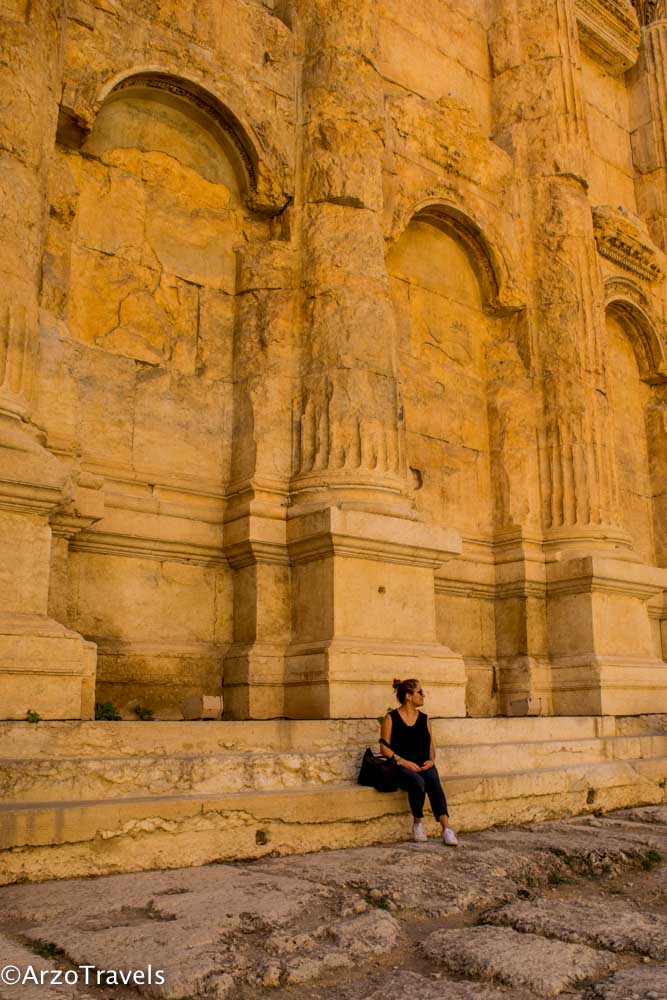
Disclaimer: This post contains affiliate links. This means I might earn a small commission when you buy a product (at no extra cost to you) after clicking on my link. More about it here .
TRAVEL TIPS FOR YOUR LEBANON ITINERARY
A bit crazy, hectic, and chaotic – here is what to expect when visiting Lebanon. Find out where to go and what to see in only 5 days in Lebanon. While I wished that I had two more days, this 5-day Lebanon itinerary allowed to me get a good glimpse of the country and get to see some wonderful places.
Before talking about the best places to visit in Lebanon in 5 days (or so), here are some travel tips.
How to Get to Lebanon
I suggest flying into Beirut. There are many flights from Istanbul and other countries in the Middle East, and it allows you to combine your trip easily with a trip to Jordan , Istanbul, or other nearby destinations.
How to Get Around in Lebanon
- If you are brave , you can rent a car and explore Lebanon on your own.
- However, driving in Lebanon seems very crazy because I experienced it as crazy, hectic, and wild, where drivers make their own rules.
- This did not only apply to Beirut but also to many other places. Streets are always crowded, and an extra car would only add to the pollution (which is a big problem in the country).
However, the alternatives are not perfect, but there are some fun other ways to get around.
I mostly used the minibusses to get around.
- There are some newer ones (as you can see in the picture) and some which were really old.
- In general, they are for sure not fancy, and the drives were insane in some parts, but they were fun.
- Yes, there were times, I was, legitimately, scared for my life – even though I was just a passenger – but in the end, it all went well.
- And in the end, I did not have to worry about driving myself.
- Whether I went to Baalbeck, Byblos, or Tyre, it was possible to go in the small buses to many destinations in Lebanon and get around for very little money.
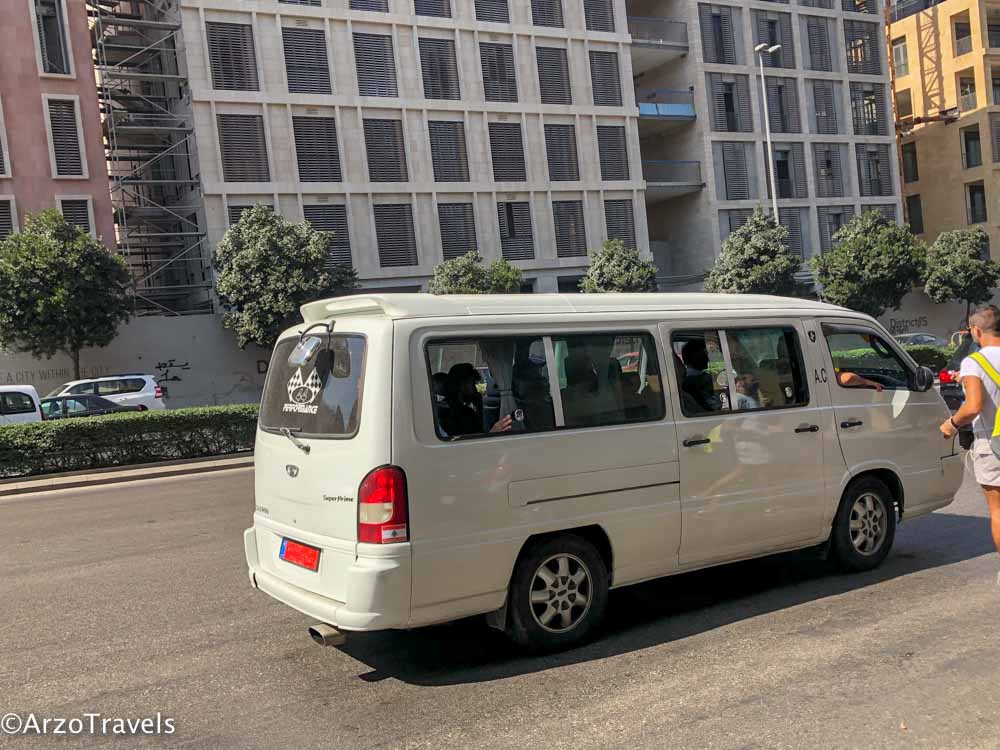
UBER / TAXI
- There are also Uber and taxis available, but I suggest only using Ubers in Lebanon if needed. My first time using Uber was in Lebanon, actually. I did not use them often, but I liked Uber. There are plenty of Ubers available, and you do not have to worry about being ripped off.
- Taxis can be tricky – I used them twice. Once from the airport to the city center (not a pleasant experience) and once I got on a very old Mercedes with an older taxi driver. We discussed the fare in advance and that was a good deal (you should be aware of the distances).
Where to Stay in Lebanon
For this itinerary, I suggest staying in Beirut most of the time. Lebanon is small but stretched, and Beirut is quite centrally located.
I did only day trips (using minibusses for most of the day tours). Getting around in Lebanon is time-consuming, and even an 80-km drive can take up to 3 hours. Still, you will also get to see different landscapes and do not have to worry about checking in and checking out all the time.
However, if you stay for more than 5 days in Lebanon, it might make sense to book one or two nights near Byblos and do a few trips from there, so you avoid too much driving.
- I stayed in a hostel/hotel in Hamra – a popular district in Beirut. There are dorms, but you can also book private rooms. The great thing about this hostel is that it has a pool on the rooftop. Check out rates at Hamra Urban Gardens.
- If you are looking for luxury accommodation , you might want to check out Four Seasons Hotel Beirut. It comes with a great location, and the views from the rooftop are great!
What to Eat in Lebanon
The good news: Lebanon is foodie heaven!
Whether you are a meat lover or a vegan , this country has amazing cuisine . So, as someone who eats veganish (and strictly vegetarian), I was in heaven. All the delicious food was to dream of. Of course, there are falafel & hummus and the fresh Fattoush salad, but there was so much more to eat and enjoy.
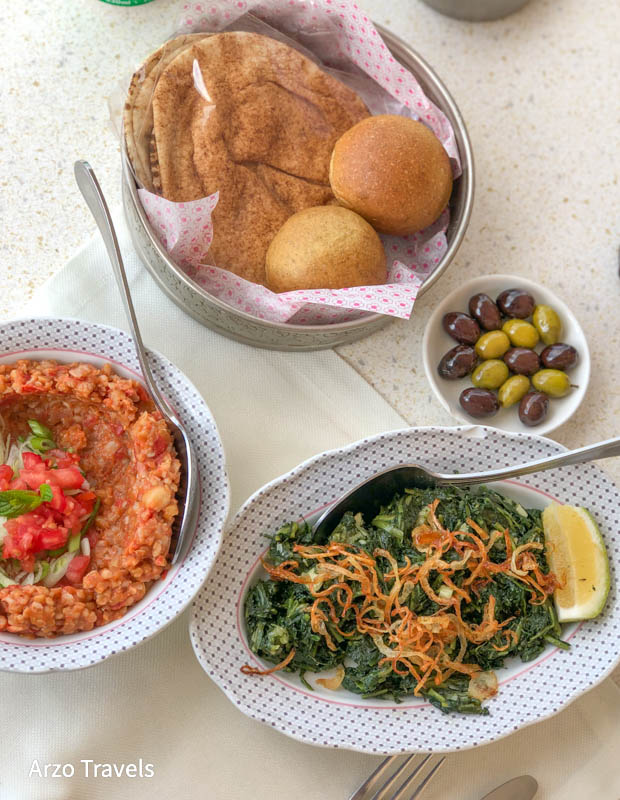
It is more diverse than in many other countries in the Middle East. Though I love Arabic food in general, Lebanon has probably one of the best cuisines in the world, so plan in enough time to enjoy some good food.
Safety in Lebanon
I am generally cautious but did not feel the need to take extra precautions. Despite its very complicated history (and present), it is a safe destination to visit (INFO: SITUATION MIGHT HAVE CHANGED IN 2024)
However, if you visit these days, there might be some demonstrations and problems .
If you stay in a hotel/hostel, you will not be strongly affected by regular blackouts (even though there are many).
Also, not all public services function properly, like waste collection . I must say that Lebanon is – unfortunately – very dirty in many parts, and you will see tons of trash everywhere. However, I doubt that this is the result of the irregular waste collection, but more from people just littering wherever they go.
BEST PLACES TO VISIT IN 5 DAYS IN LEBANON
Let´s start with the capital of the country: Beirut.
Beirut – 2 Days
My tip is to spend 1.5 or two days in Beiru t and explore the gems of the city. Though Beirut is the capital, it is still quite small, and with 2 days, you will have time to see the main attractions and places.
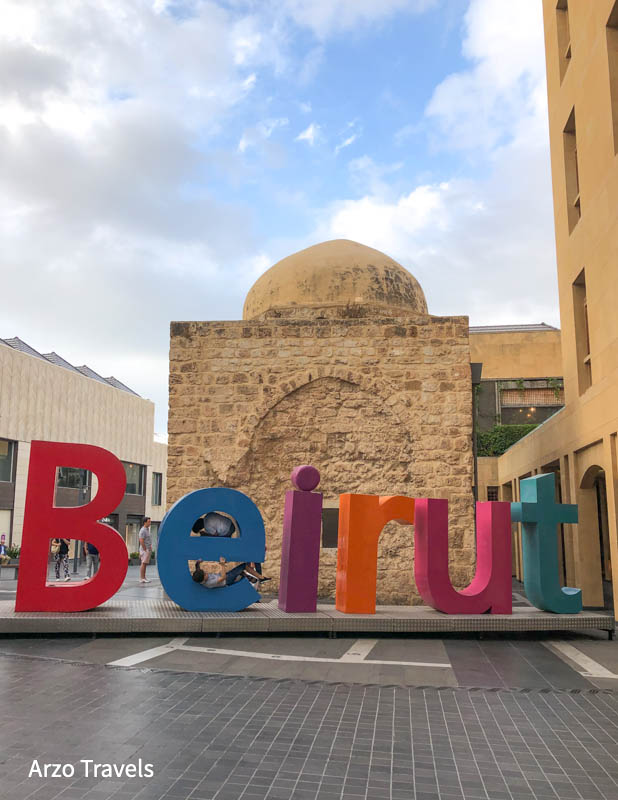
My tip for the first day (especially if you do not have a full day) is to visit the American University first and explore this area for an hour or so before heading to the Rauche Rocks (for the sunset) , and then having dinner/drinks there before strolling the promenade . Start this day slowly and prepare for a busy day 2.
If you have more time on your hands, visit Hamra – a popular busy area with many cafes and shops. This is also a good place to visit in the evening.
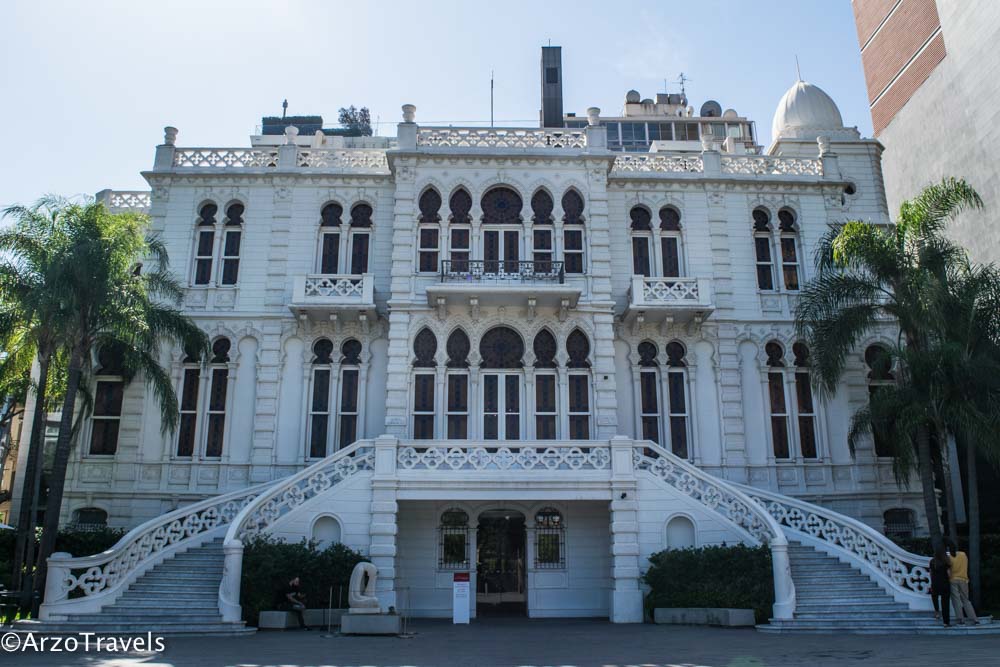
Day 2 in Beirut will be busier. Start at the Sursock Museum and then walk down and visit the St. Nicolas Stairs, the St. Elian & Gregory Cathedral, and Beirut Souks, and stroll the Gemayzeh area – this is also a lovely area to have lunch or dinner.
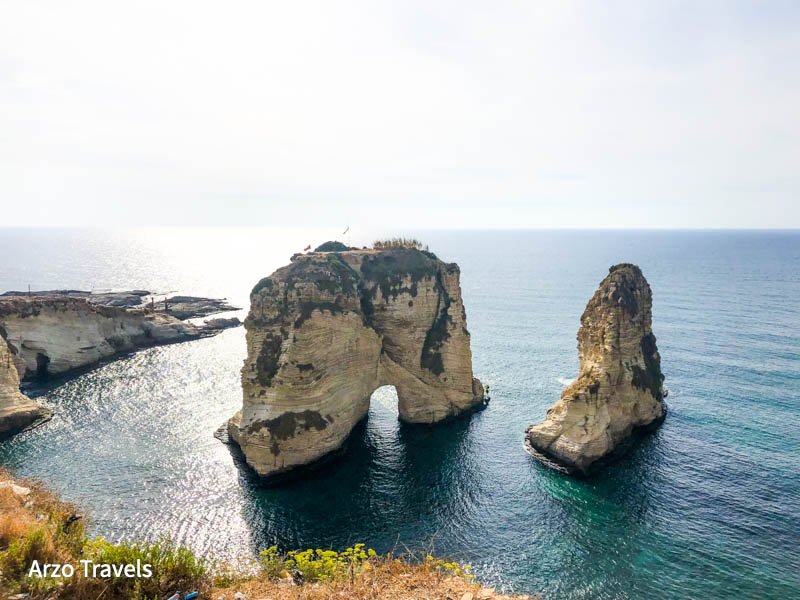
Then, make sure to visit Zaitunay Bay and stroll Beirut´s Marina , where you will find – besides yachts – a lot of restaurants, too.
The most stunning building in Beirut is the Mohammad Al-Amin Mosque .
- Ma ke sure to not only admire the architecture from the outside but also pay a visit inside.
- The entrance is free,
- and you do get something to cover yourself up with if you are not dressed appropriately.

Beirut is one of the very best places to go out – even I went to a club. Okay, it was during the week, and there was not that much going on, but if you want to experience the infamous nightlife in Beirut, visit during the weekends. There are many rooftop bars and clubs where you can dance the night away.
Balbeeck – 1 Day
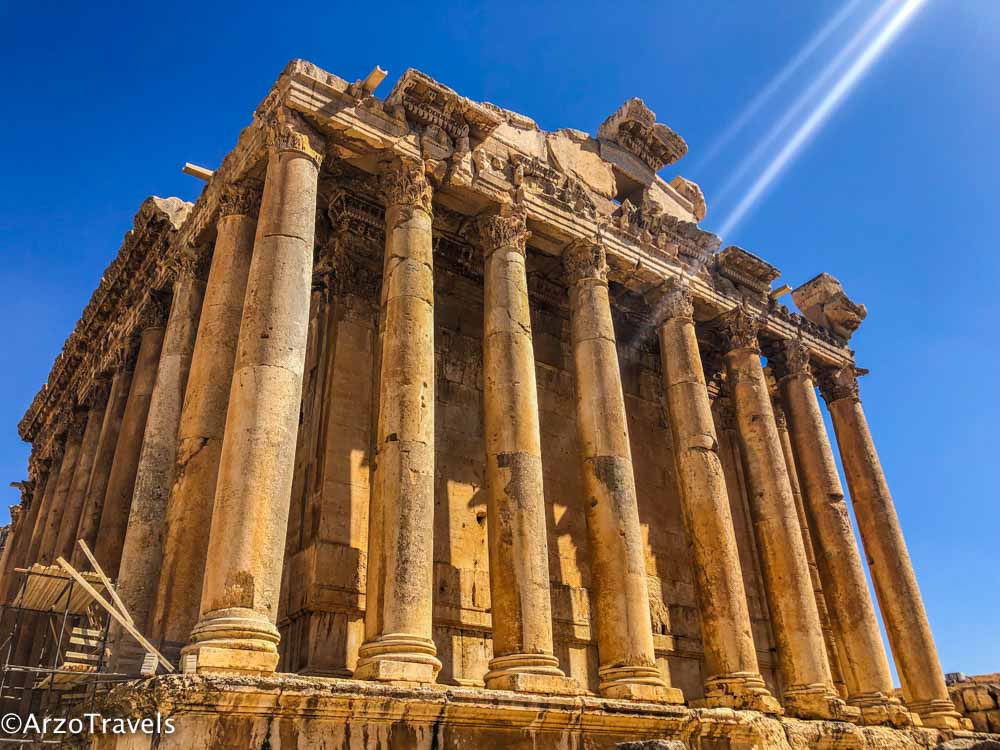
Thanks to the efforts of archaeologists, it is still in great condition . So it is not a surprise it is actually quite busy because many people want to see this exquisite place.

- Getting there is time-consuming but worth it .
- Either take a minibus (we had to change buses once, and it took more than 2.5 hours in total, but it was an interesting ride), join an organized group, or hire a car and get there yourself.
- In early July through August, there is an international festival held in Balbeeck.
Jeita Grotto – Harissa – Byblos – 1 Day
My favorite day was when I visited these three spots in one day because they are some of the best places to visit in Lebanon.
Many tour operators offer tours to these places in one day, and it is definitely doable.
One of the girls I met at the hostel where I stayed and mostly used minibusses to get around (but also Uber and a taxi). It saved us tons of money this way – and it was fun!
Jeita Grotto
The first stop is probably Jeita Grotto, which is less than 20 km north of Beirut. The Jeita Grotto is a system of two separate, but interconnected, karstic limestone caves spanning an overall length of nearly 9 kilometers.
I am surely no expert on visiting caves , but I have seen a few over the years – and these were my favorites.

This limestone cave is imposing, and it exceeded my expectations. The grotto was discovered in 1836 by an American and opened in 1958 (Lower Grotto) and 1969 (Upper Grotto).
UPPER GROTTO
- After a scenic drive (Uber) from Beirut, you can get out at the funicular station.
- Buy your ticket (cash only) for a bit more than 11€, and then you can use the funicular to go up.
- It is a very short ride up, and once there, you can explore the Upper Grotto.
- Over a distance of 700 meters – which is open to the public – you’ll find many lime formations, which come in all kinds of sizes and shapes.
- If you look closely, you’ll find many different “animals,“ “vegetables,“ and more.
- It did not take us too long to go through, and after probably less than 30 minutes, we were walking out and walking down to the Lower Grotto.
LOWER GROTTO
- At the Lower Grotto , you can do a short boat ride over a distance of 400 meters . Don´t worry – you don’t have to row yourself. Just sit down and enjoy the short electro ride.
- It is quite chilly inside, so bring a pullover with you (around 16 degrees Celsius).
All those activities are included in the ticket price (funicular, Lower and Upper Grotto, and a ride on the mini train, which I did not use).
A documentary is also shown in different languages. We missed the English version and would have had to wait for a few hours for the next one. So, if you want to watch it, ask for the times beforehand.
The whole tour took less than one hour , and on the way to the car park, we also spent time in the pretty gardens on the property.
Jounieh / Harissa – Téléférique
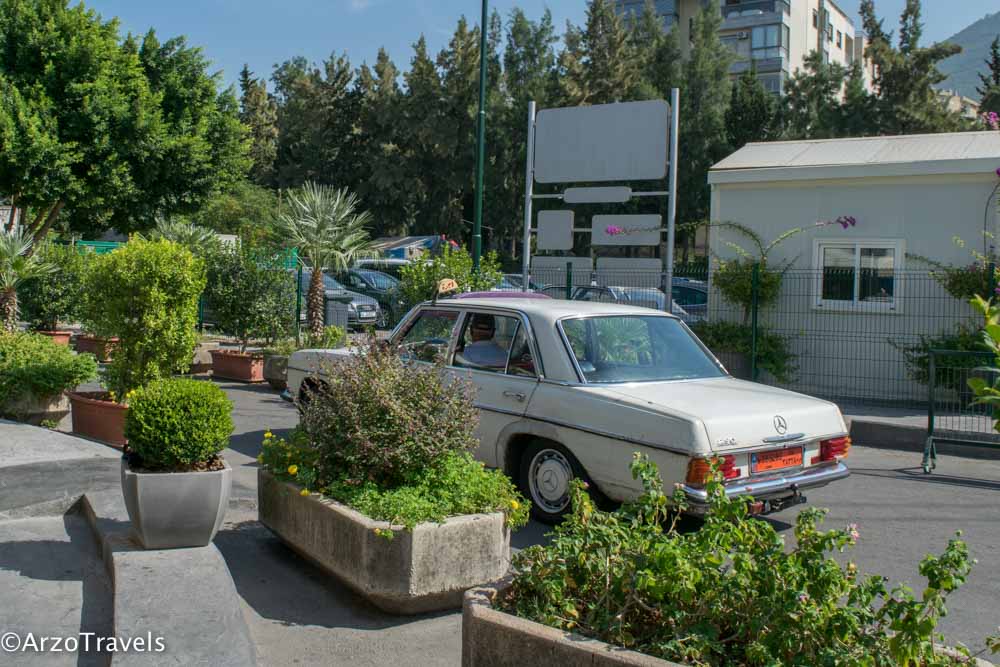
One of the best tourist attractions in Lebanon is going up via the Téléférique.
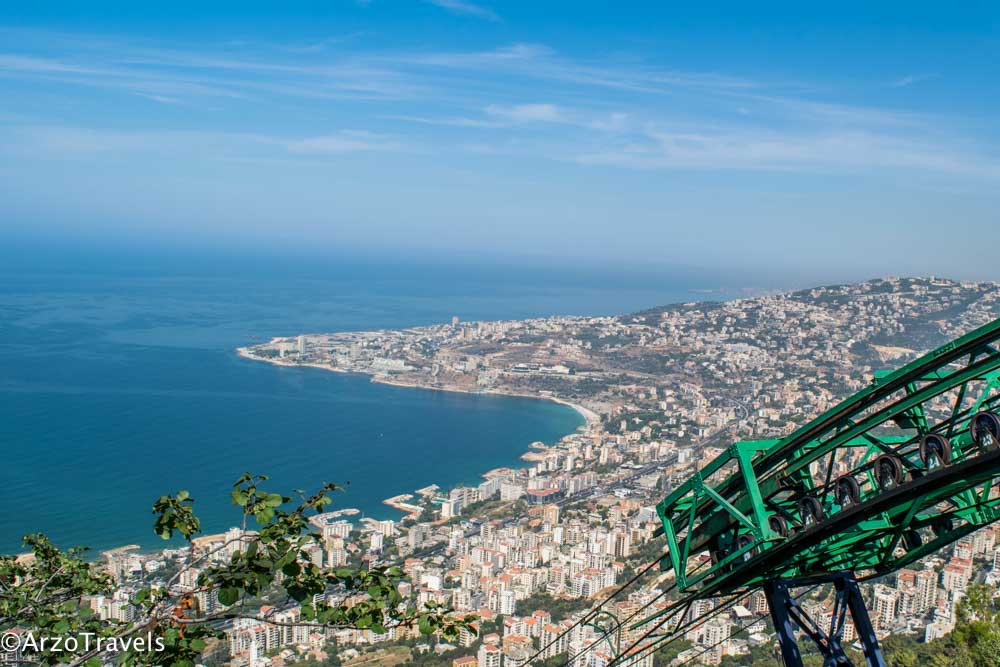
I am all about the views, and here you can probably experience some of the country’s best views.
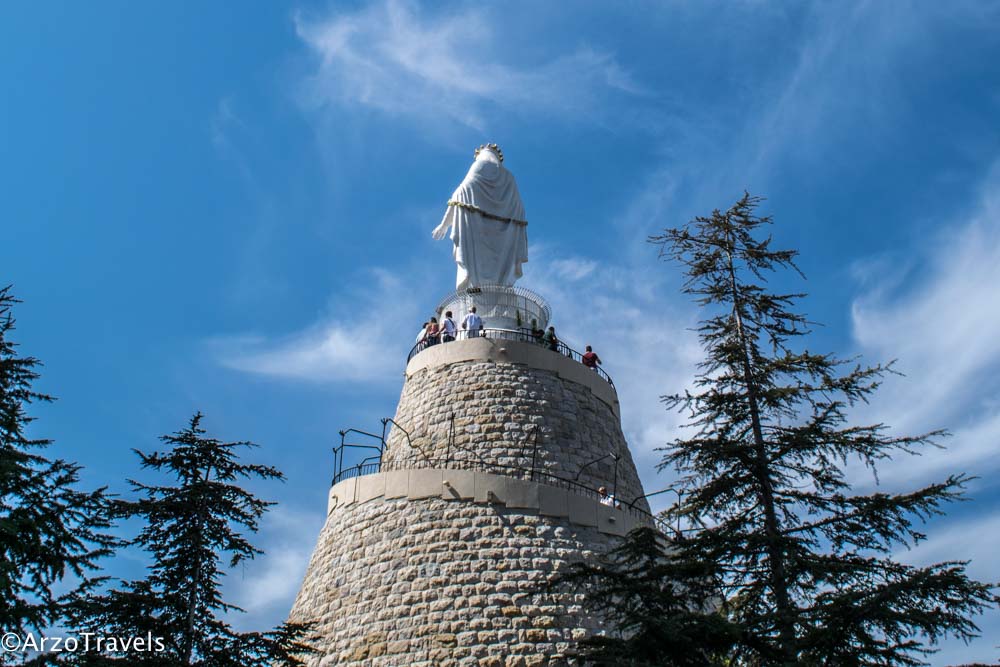
There are several cafes/restaurants with good views and also playgrounds if you visit Lebanon.
From Harissa, we took a minibus and headed to Byblos.
Byblos was another of my favorite places to visit in Lebanon . It is a charming little village with a long history. Located about 40 kilometers north of Beirut , it is one of the oldest continuously inhabited cities in the world – with over 7,000 years of history. It received UNESCO World Heritage Status in the 1980s.
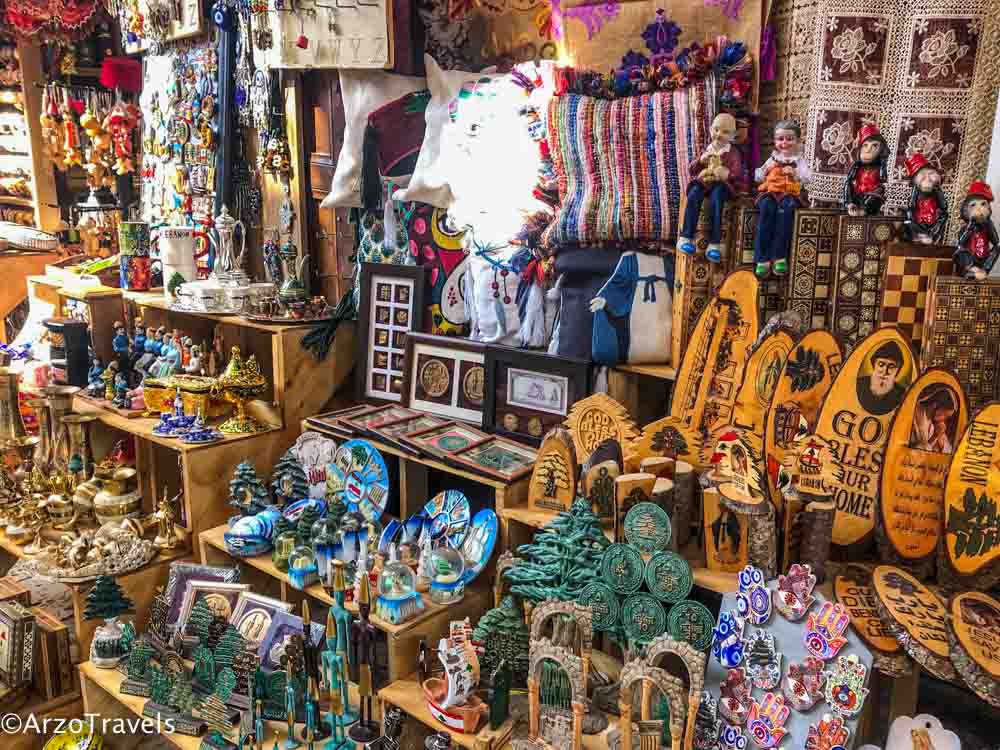
The minibusses leave from the highway, so you need to get there to take them. Unfortunately, I did not save the exact location, but if you ask for the minibus to Byblos, locals might help you.
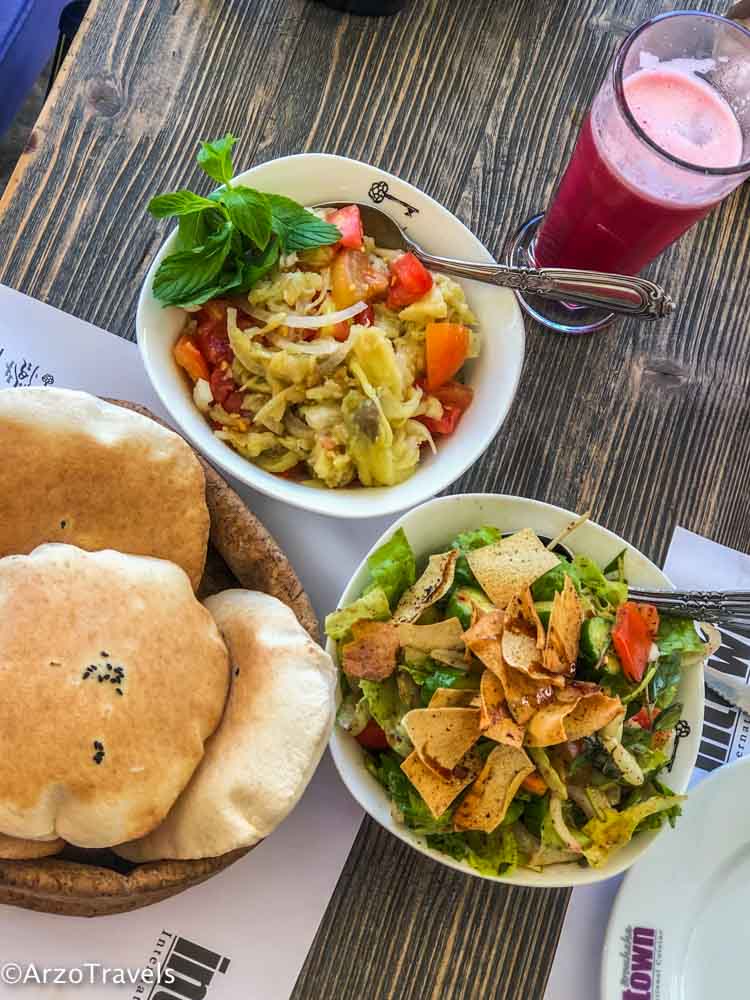
I am all about cute cafes, narrow streets, and pretty views, and I found all of that in Byblos. The village is small, and we strolled Byblos for around 2 or 3 hours before having an early dinner.
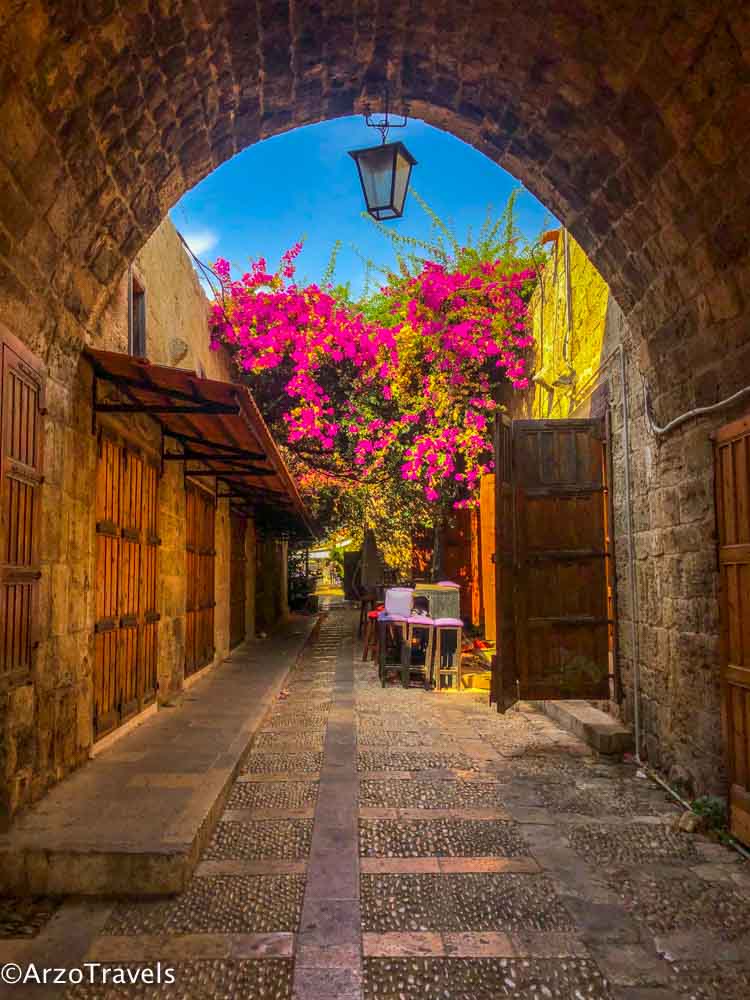
Check out the ancient fishing harbor, the small but pretty historical center with its narrow streets and small shops. Make sure to stroll the side streets for the cute cafes .

If you‘re in Lebanon for just 5 days – or something like that – 1 day is definitely enough to see the before-mentioned 3 places in one day.
Yes, it might be a busy day (whether you join guided tours or organize it yourself), but it is worth the hassle. This day was my favorite day in Lebanon.
Tyre – 1 Day
You should add at least one day in the south of the country to your Lebanon itinerary. I opted for Tyre (Sour) and wanted to experience a lesser-known place.
Tyre is one of the oldest continuously inhabited cities in the world. It is a small town (but busier than Byblos) with several Roman and Byzantine archaeological sites , colorful buildings , and a busy town center.
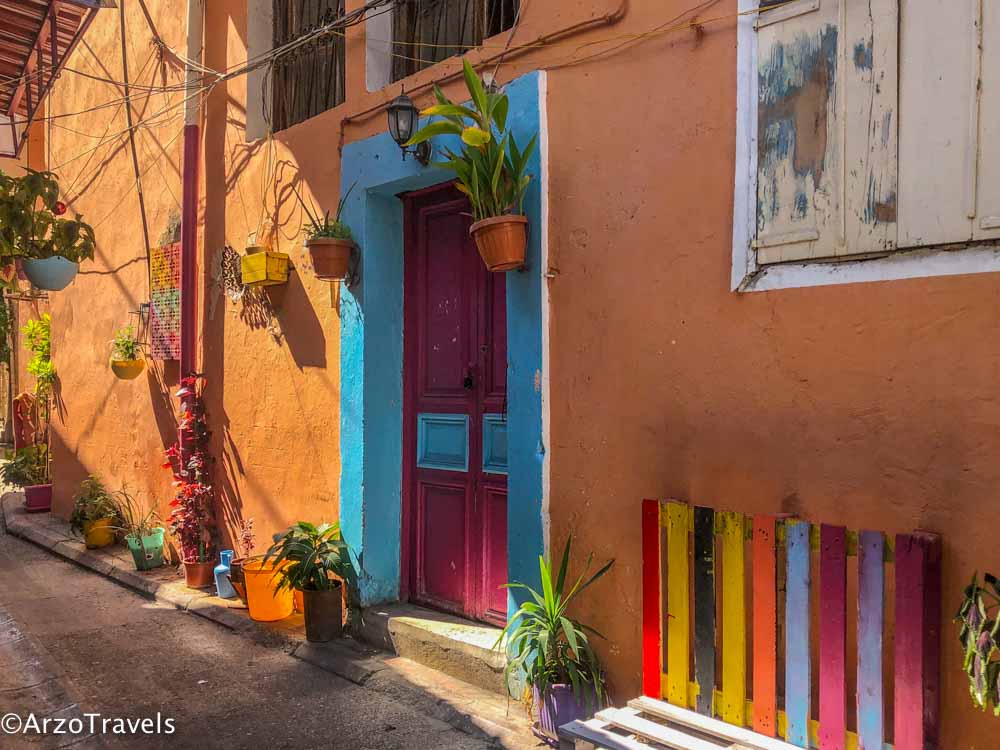
MORE PLACES TO VISIT IN LEBANON
With five days in Lebanon, I got a good idea of the country. I wish I had two more days to hike in the mountains because Lebanon is known for some pretty mountain areas, like Qadisha Valley .
Qadisha Valley
It is great for hiking in the summer and good for winter sports in the winter . If I had 7 days in Lebanon, I would have stayed a night in Byblos, and on my way back to Beirut, I would have stopped at some villages and towns along the way.
Lebanon – this small Middle Eastern country is known for its rich history, diverse culture, and stunning landscapes, yet very underrated. Despite facing periods of political instability and conflicts, Lebanon boasts a vibrant capital, Beirut, renowned for its nightlife and cuisine.
Looking back now, I am pretty happy with how I created my 5-day Lebanon itinerary and didn’t regret the way I planned my trip at all.
So, this is why I hope this Lebanon itinerary helps you to plan your trip as well (and if Lebanon isn’t on your bucket list yet, then make sure to add it now) – it is a beautiful country that deserves much more recognition.
Hopefully, these tips on the best places to visit in Lebanon will help you plan your Lebanon trip!
- READ MORE: Is Jordan safe for solo female travelers?
- Find out about the best stay to visit in Jordan
PIN ME FOR LATER
Save this pin on Pinterest for your Lebanon trip!
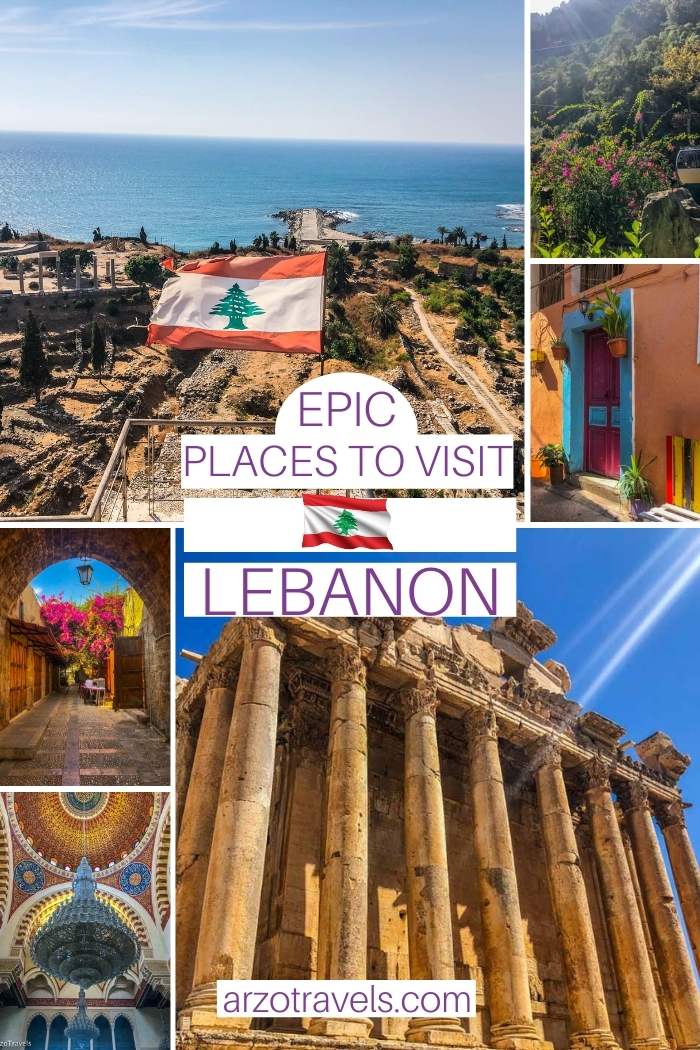
Pin It on Pinterest

Everything You Need to Know Before Traveling in Lebanon
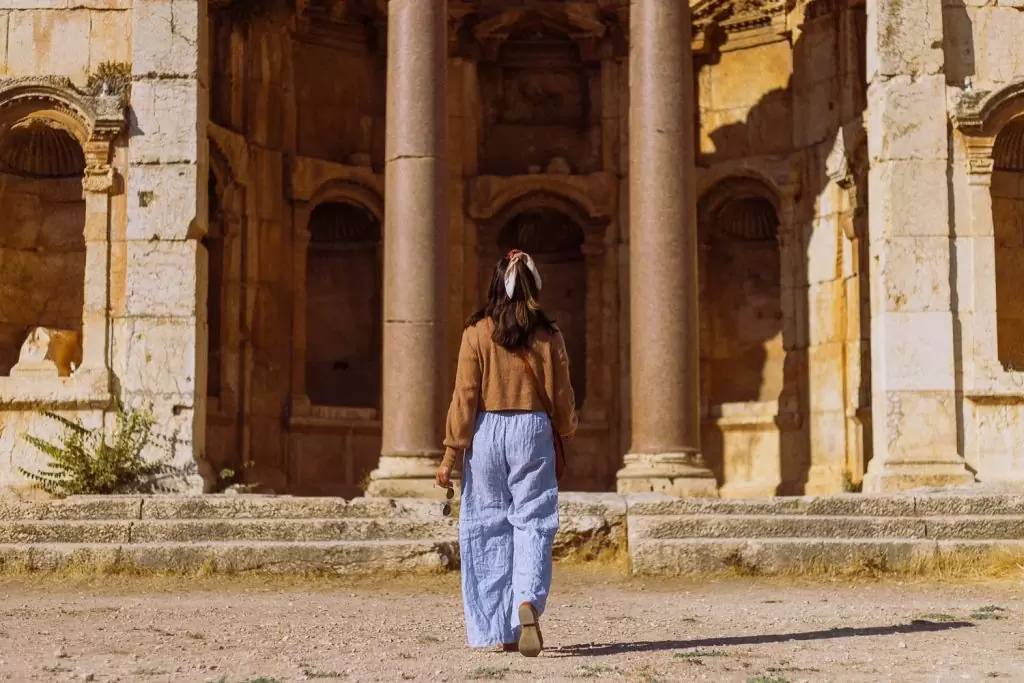
Some articles on Rachel Off Duty contain ads and affiliate links. If you plan on buying or booking something I’ve recommended, please consider using my links, which help power this site at no additional cost to you! To learn more, read our Privacy Policy .
Some articles on Rachel Off Duty may contain affiliate links. Read more in our Privacy Policy.
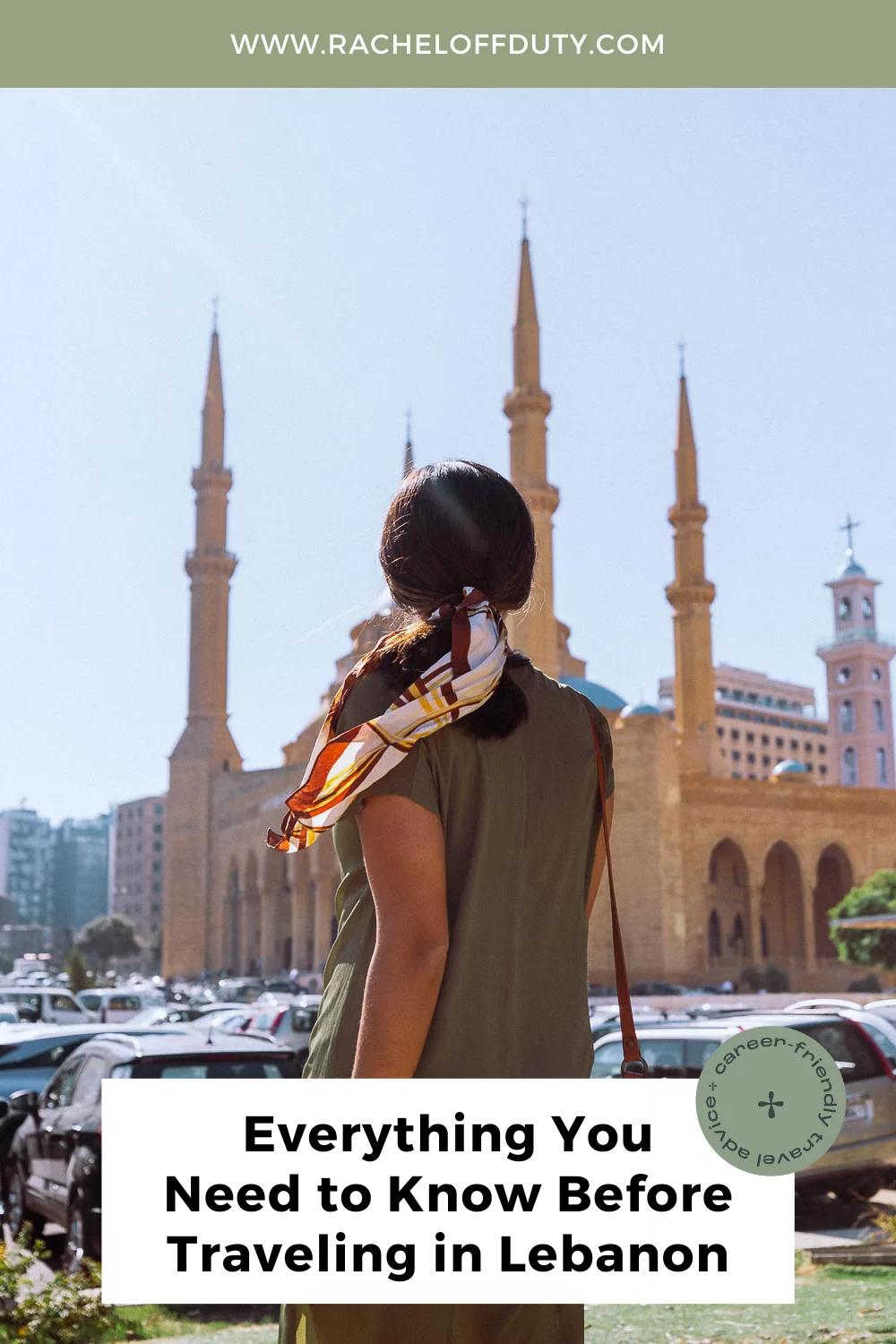
I was hosted by TourLeb while visiting Lebanon. All thoughts and opinions are my own.
Want to experience Lebanon firsthand? Come with me on a GROUP TRIP to Lebanon this Summer (Aug 19 – 27, 2023). Space is limited. Reserve your spot with a deposit by clicking this link .
“Have you been to crazy countries before, or is this your first time?”
My guide, Nada, asked me moments after I slid into her car at the busy Beirut-Rafic Hariri International Airport, weary after the 20-hour journey from Los Angeles to Beirut.
“Yes?” I replied, after making eye contact with my boyfriend Jacob sitting next to me in the back seat. My family is from the Philippines and Jacob’s is from Mexico , after all. Despite it being our first time in the Middle East, we didn’t feel out of place in a country worlds apart from our own, both geographically, culturally, and socio-politically. In fact, my heart was racing for a different reason. I was thrilled to finally set foot in a place I’d dreamt of visiting since I was 13.
“Good,” she chuckled, and with that we whizzed off to Beirut. Welcome to Lebanon!
Despite being one of the smallest countries in the world, Lebanon is fascinatingly, multi-dimensionally rich. Within just 4,036 square miles, Lebanon encompasses six million people, 18 religions, multiple languages and dialects, diverse geography, and more than 6,000 years of history that has carved the country into what it is today.
While traveling in Lebanon is relatively safe, there are lots of things you should know before you visit this country. Familiarizing yourself with Lebanon’s culture, religions, safety, politics, and economic situation will help you orient yourself more quickly.
Once you do, you’ll be able to better appreciate the spirit of Lebanese people, their joy, their food, and their joie de vivre.
So, let’s get into it. Here are 14 things you should know before traveling to Lebanon!
14 Things You Must Know Before Visiting Lebanon
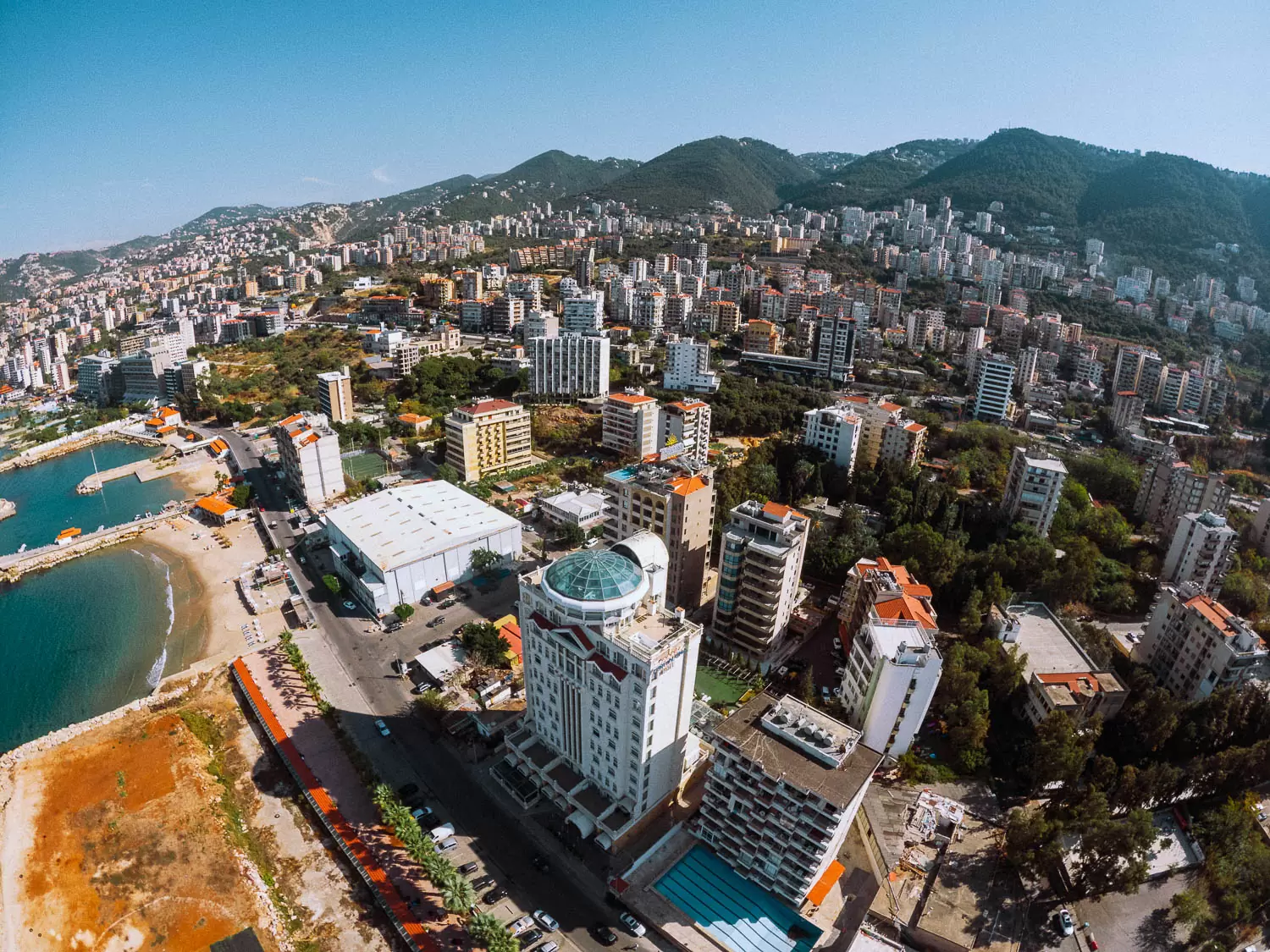
1. Guide vs Solo: Should You Visit Lebanon On Your Own?
First, do you need a guide when traveling to Lebanon? As a frequent solo traveler and avid trip planner, I am used to being fiercely independent when I travel abroad. So, I tend to only seek out local guides for individual activities, like walking tours and cooking classes.
But, after spending 10 days traveling in Lebanon, I can say with certainty that I wouldn’t have been able to do or see even half of the things I got to experience without having a local guide.
Lebanon is a chaotically beautiful country and many things work differently than you might be used to.
Some examples of this include:
- Street signs often only shown in Arabic or French
- Local guesthouses often not searchable on platforms like Booking.com and Airbnb
- Guesthouse staff, on occasion, not speaking English
- Navigating different cultural intricacies, from visiting mosques to traveling to more conservative parts of the country – like Tripoli and Saida
- Money being more difficult to understand in general (more on this later)
- More sensitive areas, like the Beqaa Valley near the Syrian border, having heightened precautions in order to visit safely
And so on.
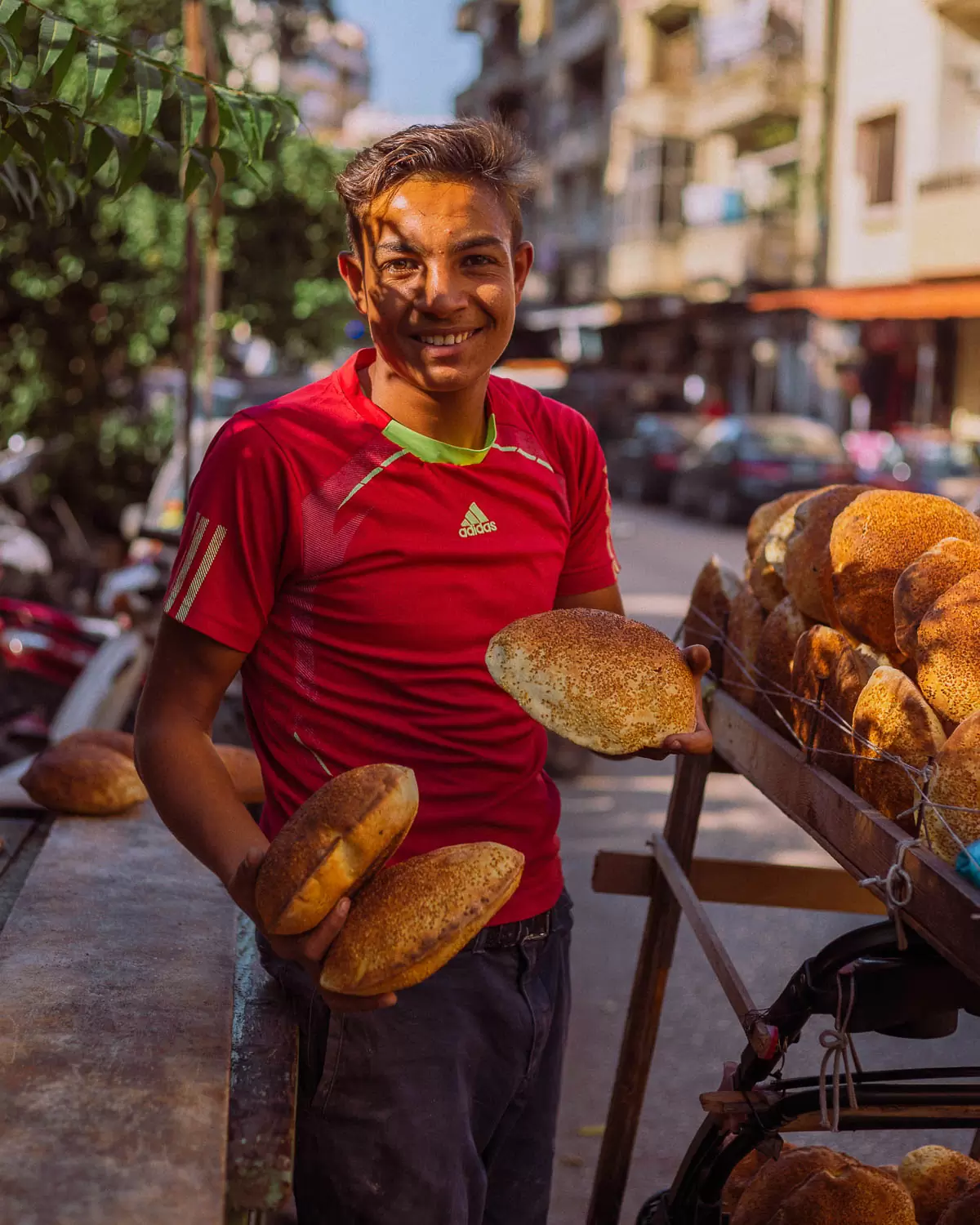
Visiting Lebanon With TourLeb
I visited Lebanon on a private, almost fully-guided itinerary with TourLeb , a women-owned tour company-meets-social enterprise that prioritizes responsible tourism and uplifting local businesses.
The TourLeb staff are unmatched in their knowledge of Lebanon, and I often joked throughout my trip that Nada has the entire country’s six million people on speed dial. In fact, she and her co-founder Joelle started TourLeb after traveling around Lebanon to interview 6,000 people across 1,000 villages to publish a book, Hyphen Islam Christianity , about the people and stories that interweave together to create the oft-hyphenated identities of Lebanon.
So, yes, they’re extremely well connected!
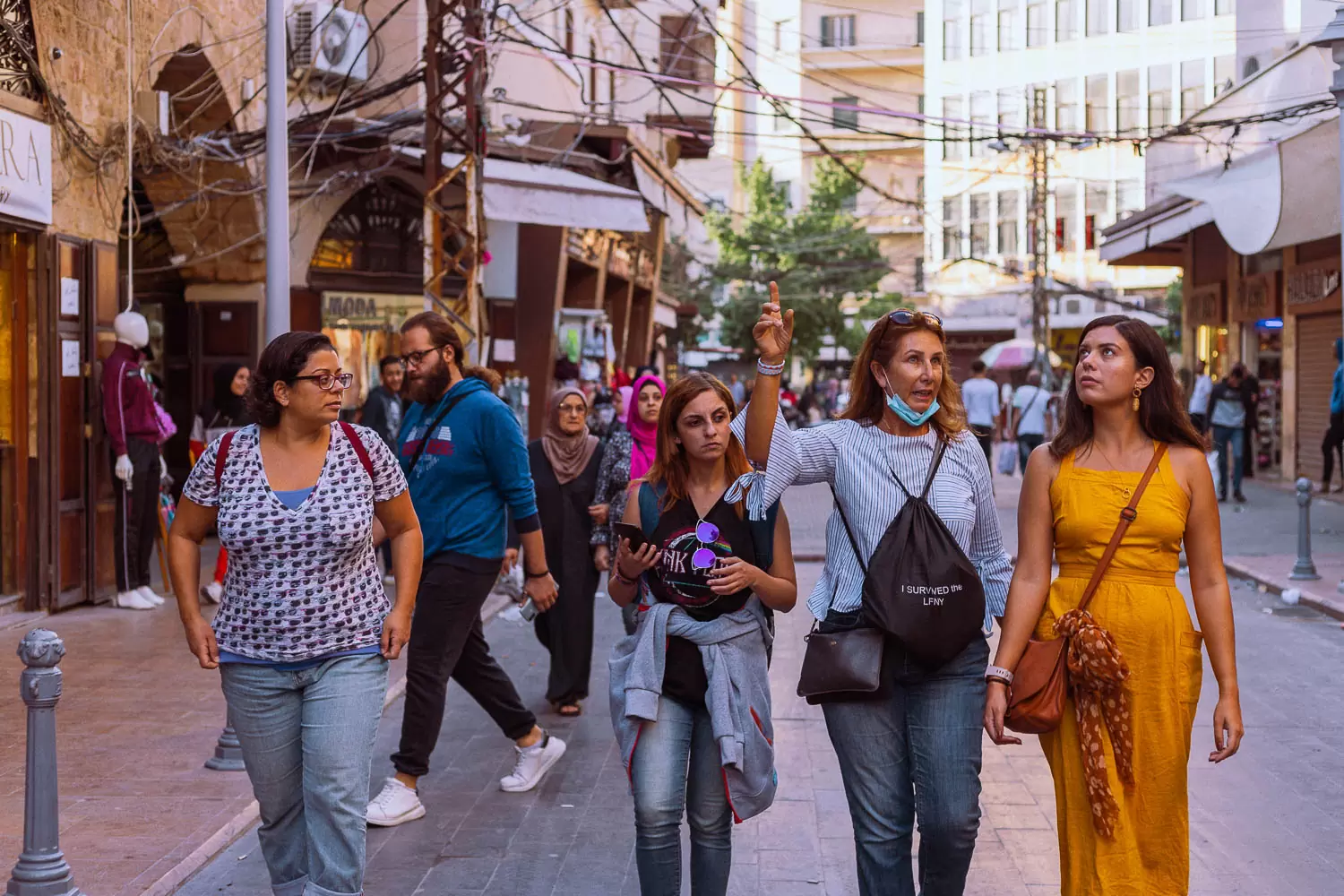
TourLeb offers a couple different options to help travelers visit Lebanon:
- Fully Bespoke Private Tours: Ranging from $900-$1500 per week for a couple (or $250 per day for parties of up to 4). This is what I did when I visited Lebanon!
- Itinerary Planning: $30/day to give you a blueprint for your own self-guided Lebanon holiday.
- Day Trips: Whether you want a private day trip (like, to visit the Beqaa Valley or Tripoli) or are interested in joining one of TourLeb’s weekly day trips that explore off-the-beaten-path Lebanese villages, they often provide excursions that can help you see more of the country even if you’re on a budget.
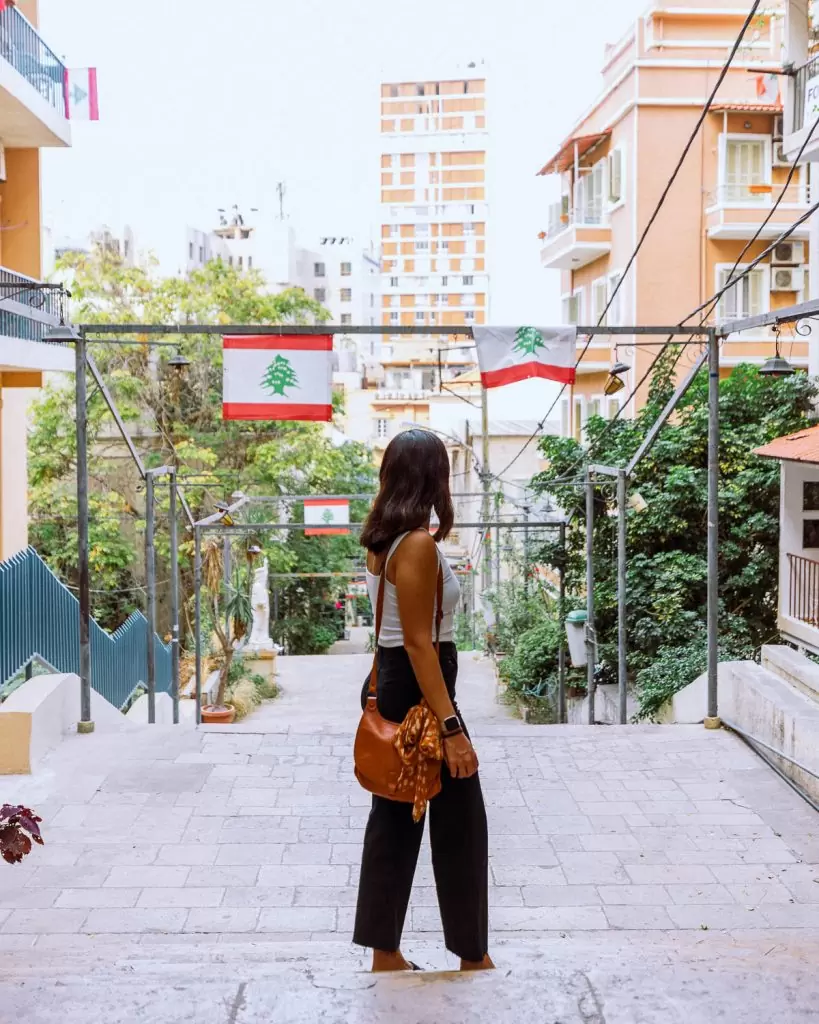
Want to Visit Lebanon with Me?
I’m hosting a group trip to Lebanon this summer! From August 19 – 27, 2023, we’ll walk the footsteps of ancient Romans, cheers to delicious mediterranean wines, dance the night away in Beirut, experience unmatched Lebanese hospitality, uncover palaces and hammams, soak up the sun at the beach, and eat like you’ve never eaten before.
See the full itinerary here or click the button below to reserve your spot! (LIMITED SPOTS AVAILABLE)
While I recommend having a local guide for your Lebanon trip, you might prefer flying solo. If you do, I still recommend hiring a driver – at least for your first visit – because navigating the roads, army checkpoints, and any unexpected situations in this country would be very tricky without one!
RELATED: Top Woman-Owned Travel Companies That Should Be on Your Radar
2. How to Get to Lebanon
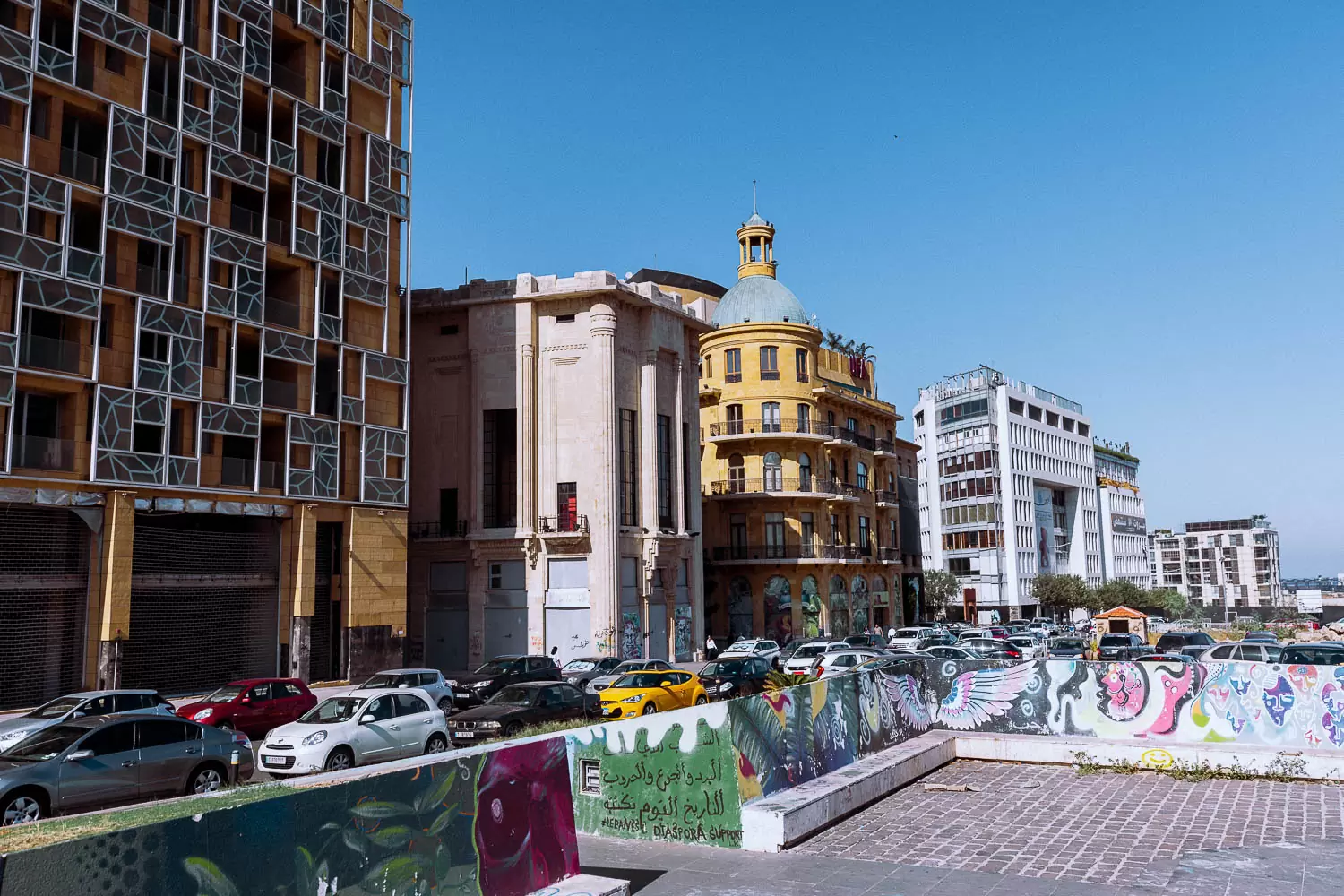
Getting to Lebanon is actually easier than you might think!
While there are currently no direct flights from the USA to Lebanon, you can often find routes that only require one layover. Airlines like Emirates, Turkish Airlines, Qatar Airways, and Air France have regular Beirut routes with layovers in Dubai, Istanbul, Doha, or Paris. Compare airlines and prices on Google Flights or Kayak to see which route is best for you.
When you arrive in Lebanon, you’ll be landing in Beirut. You’ll fill out a brief immigration document and go through customs upon arrival. Unlike the bad rap US customs officials get, customs officials in Lebanon are actually so kind and welcoming to tourists!
The only thing you need to remember? You cannot have any Israeli passport stamps or security stickers in your passport . If you do, you’ll be denied entry to Lebanon.
3. Lebanon’s History
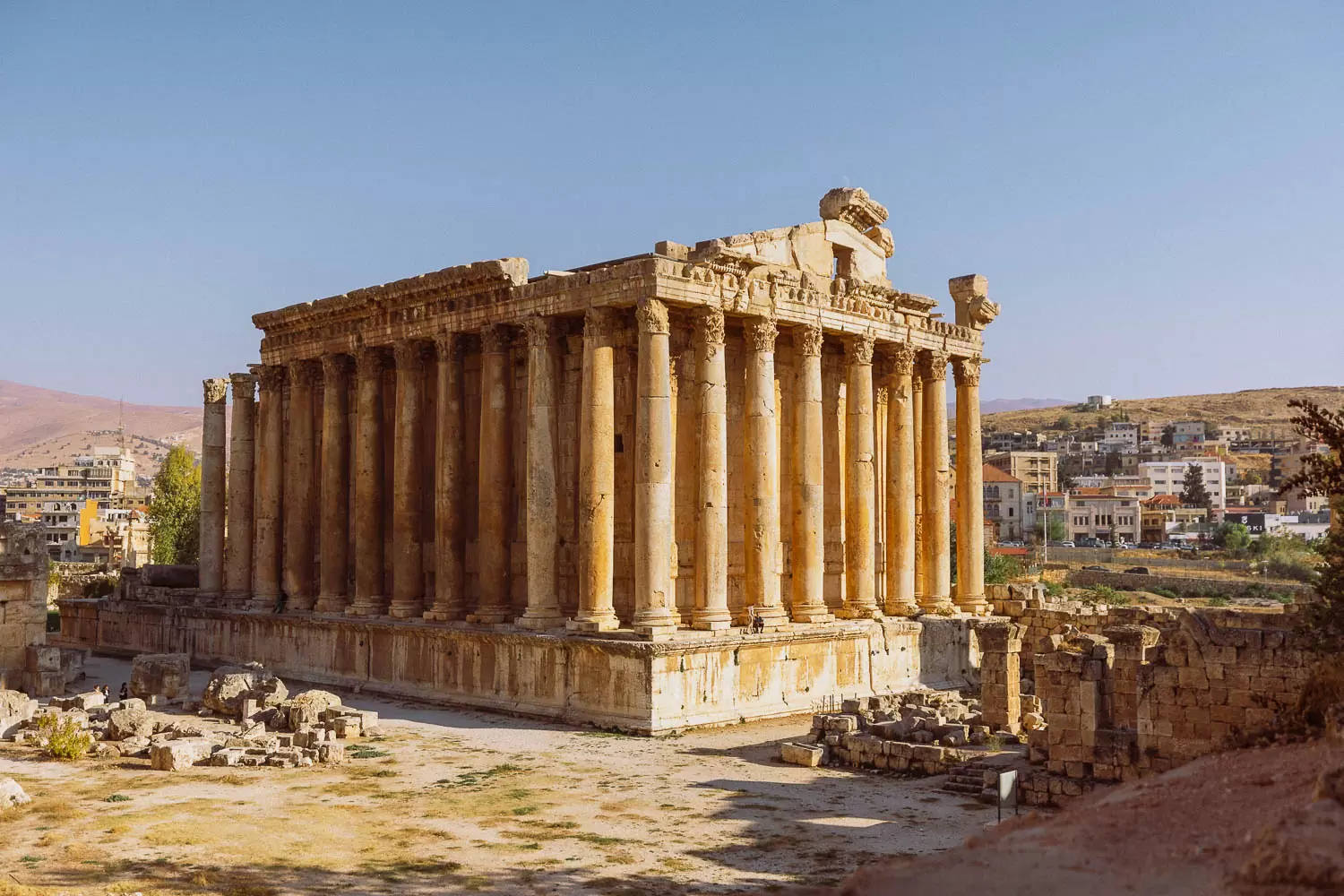
From the ancient Phoeniciean and Assyrian eras, to Roman and Byzantine regimes, to Crusaders, Mamluks, and eventually, Ottoman Rule, this ancient land had been molded and shaped by countless layers of influence and culture.
When 300 years of Ottoman rule dissolved after WWI, Lebanon finally became the country we know today. But, its complex history only gets even more nuanced in the last 100 years. Starting with the French Mandate (which is why you’ll hear French as commonly as you will Arabic) in the early 1900s, to the war in the 70s, to the economic and electricity crises of today, to the Beirut Blast of 2020, Lebanon has been dealt a series of hurdles – emerging from each even more resilient than the last.
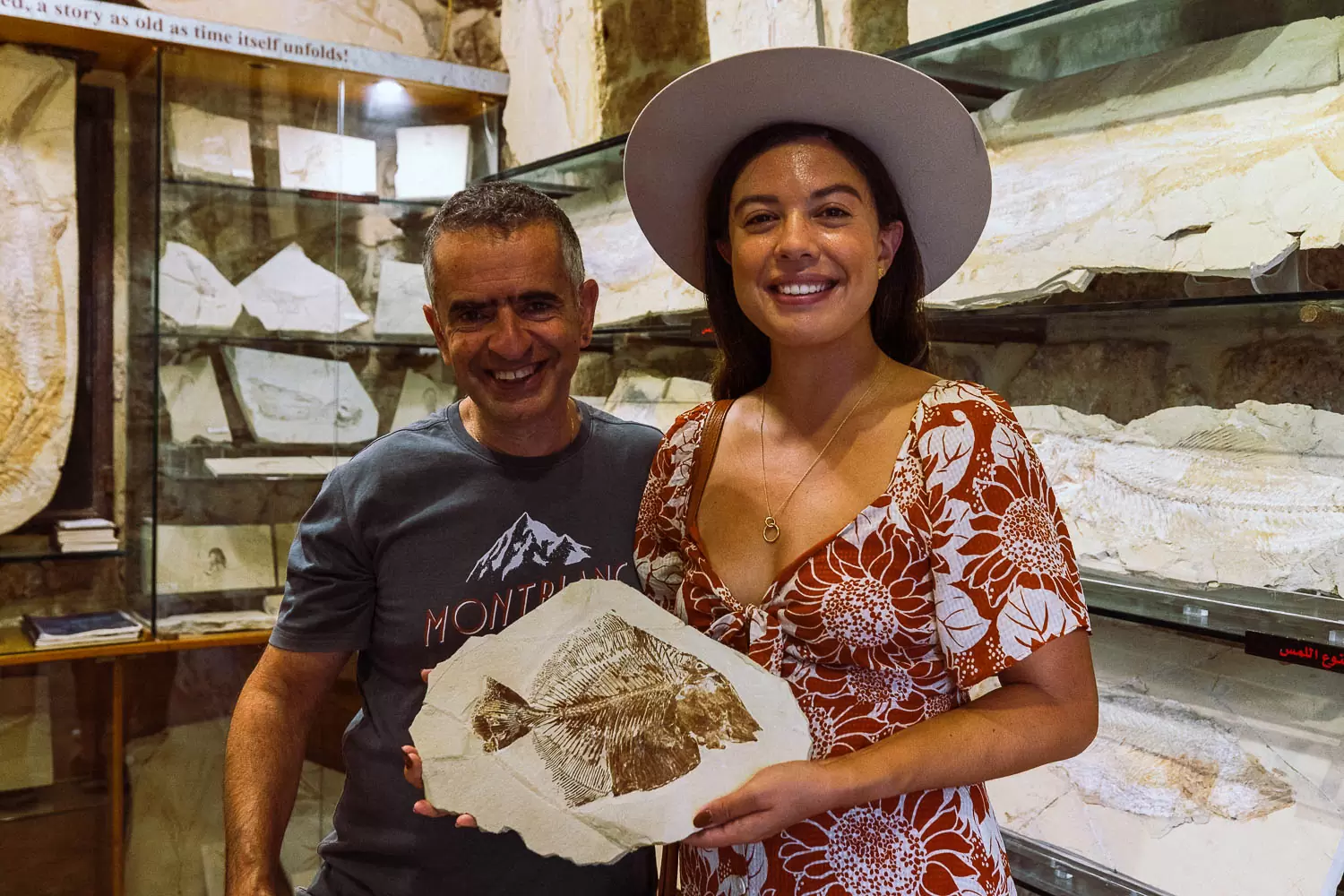
Spend some time exploring this country and you’ll begin to see these layers reveal themselves.
You’ll see it in the ruins that rival those of Athens, the French and Arabic dialects that echo across the souks, the ancient fish fossils of Byblos, the neighboring churches and mosques, and the chic cafes that are serenaded by daily calls to prayer.
4. Safety in Lebanon: Is Lebanon Safe to Visit?
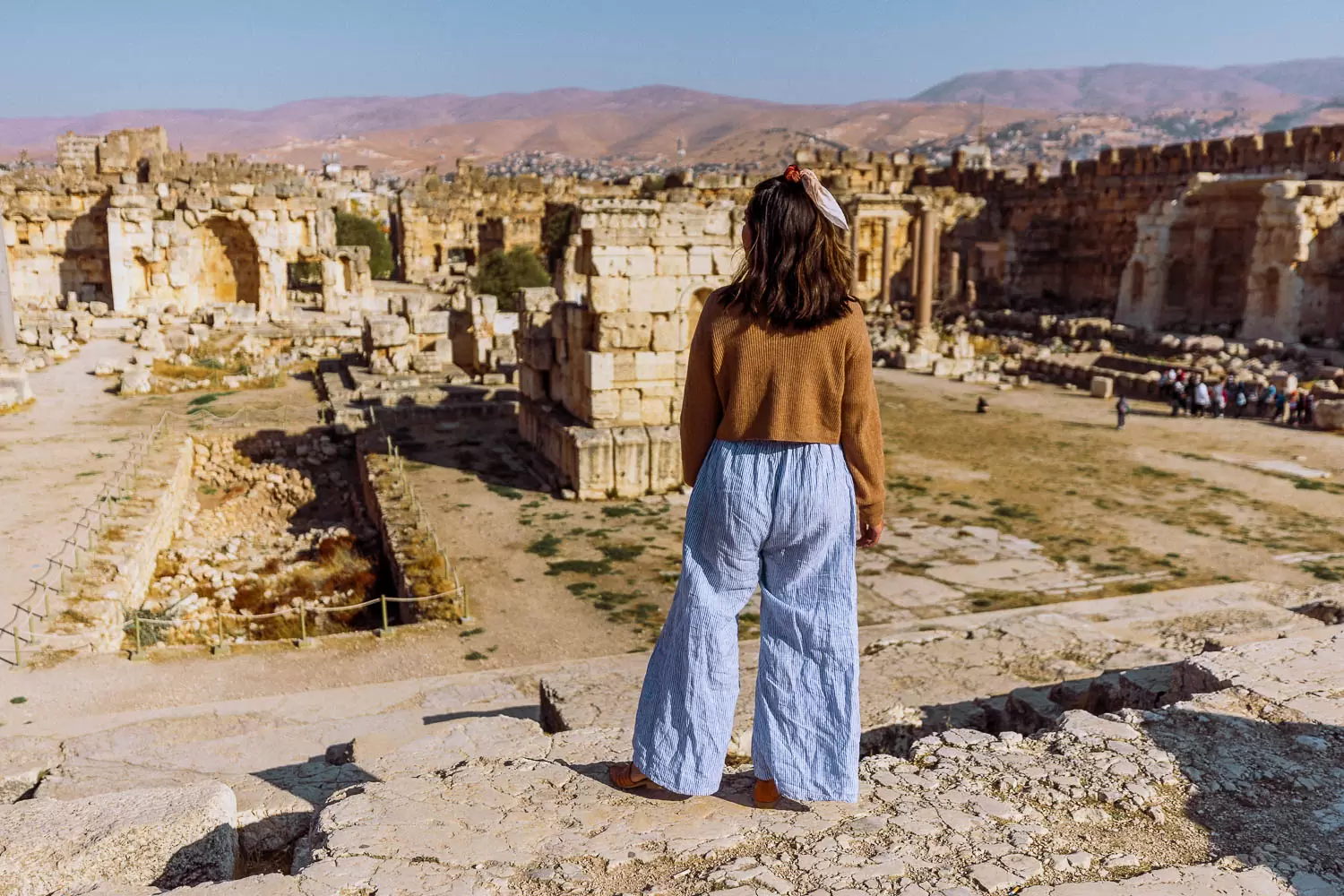
You might be asking yourself – is Lebanon safe? And with everything going on, is it safe to travel to Lebanon now ?
General Lebanon Safety Overview
In general, traveling to Lebanon is quite safe for tourists. Much safer than the news and our government-issued travel advisories would have us believe. I want to stress this, because the country is desperately in need of tourism and many Lebanese people are quite eager to shed the negative perceptions of their country that the media have long associated with Lebanon.
In fact, I was often met with a combination of surprise (that an American would be visiting their village, restaurant, or hotel!) and delight that resulted in some of the most unbelievable hospitality I’ve ever experienced.
Geographic / Political Situations Surrounding Lebanon
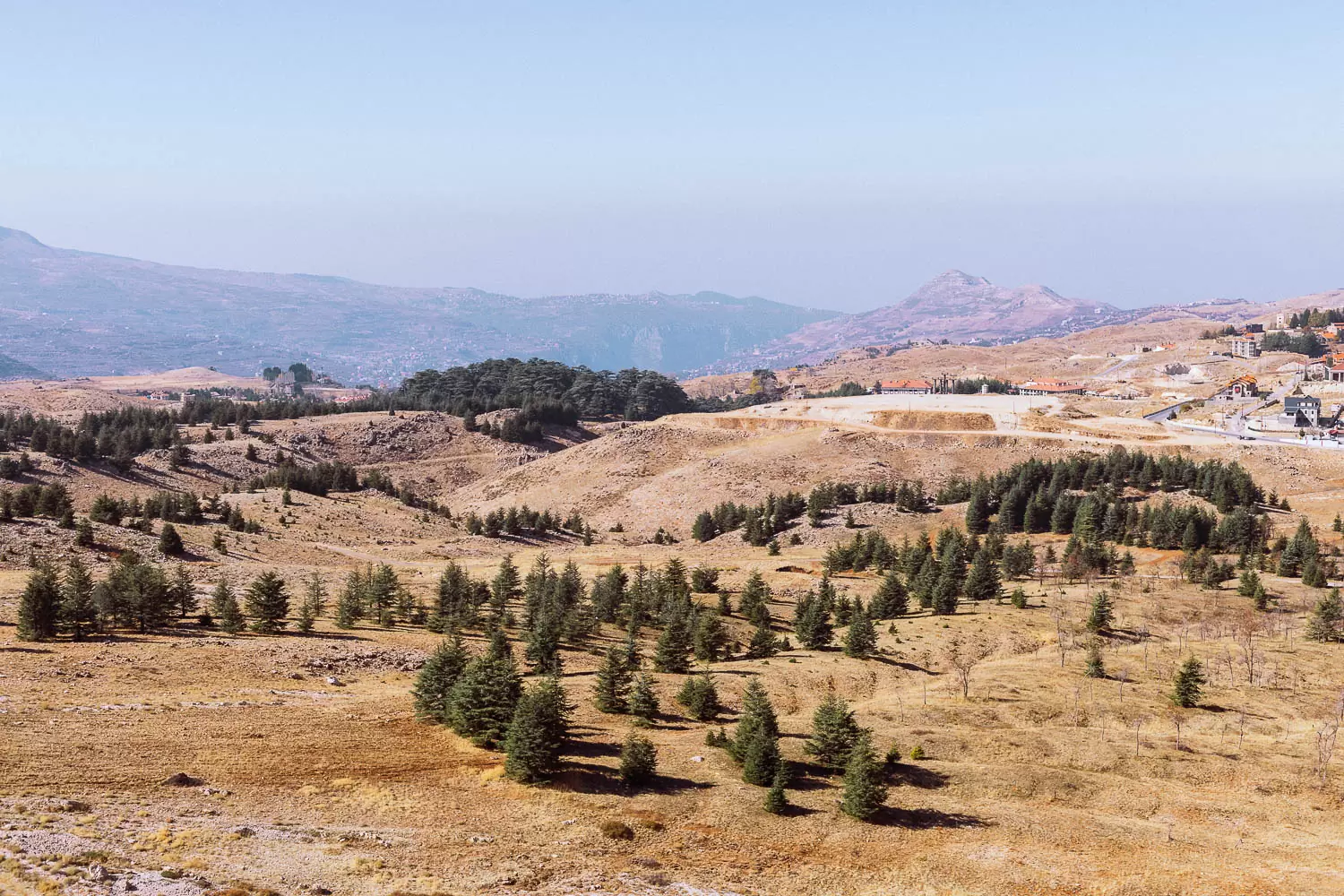
Now, with that said, Lebanon still presents safety issues you should be aware of.
You shouldn’t visit refugee camps or the borders between Lebanon and Syria, particularly without a guide. The southern region of Lebanon is also the main location of Hezbollah’s conflict with Israel as well, and you’ll begin to see a UN presence once you reach the southern seaside town of Tyre for that very reason.
However, I traveled to both Tyre and the Beqaa Valley near the Syrian border, and in both cases I felt safe and had absolutely no issues. I was super happy to have my TourLeb hosts explaining the history, sociopolitical tensions, and safety protocols every step of the way so I knew what to expect at all times.
In fact, one of my favorite meals was in Rayak, just minutes from the Syrian border crossing to Damascus.
On the day we traveled to the Beqaa Valley, there was one moment I was particularly grateful to have a local guide. We were visiting the Baalbek ruins, and saw a wedding near the entrance to the site. Our guide told us to anticipate gun shots, as shooting up into the sky is a common way of ‘celebrating’ the new couple’s union. Within moments, we heard gun shots off in the distance. Had we not been briefed on this cultural practice, we would’ve been so spooked!
Economic Situation in Lebanon
Lebanon is undergoing an ongoing economic, fuel, and electricity crisis. While crime rates are actually fairly low in the country, desperate times can mean some desperate situations, and petty theft isn’t unheard of as local people navigate unprecedented economic hardships. Keep close watch of your belongings but also, use this as an opportunity to patronize local businesses and support the local economy with your tourism dollars.
Safety for Women and Solo Female Travelers in Lebanon
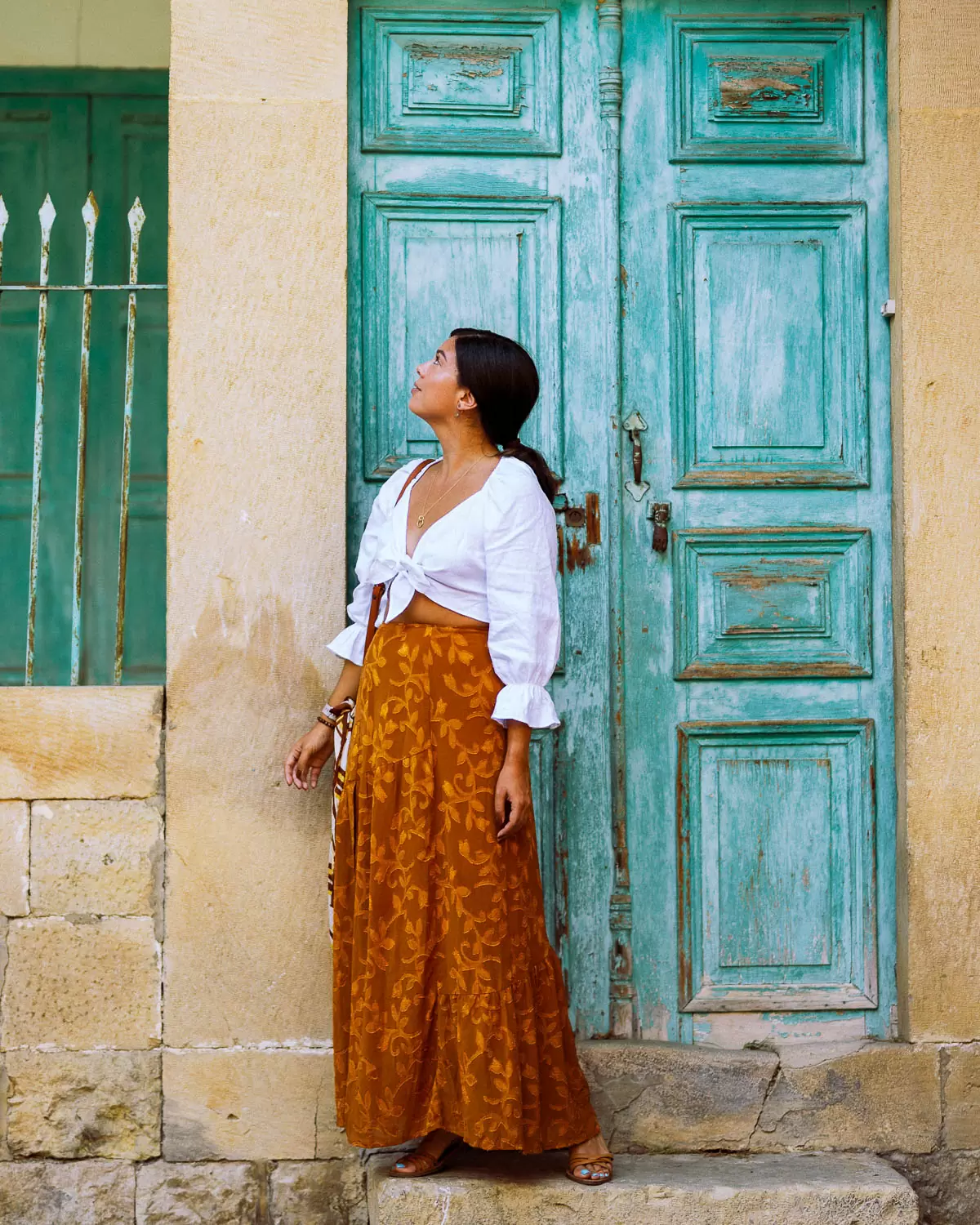
Economic and political landscapes aside, I can’t tell you how many times I was told that Lebanon is one of the safest places for woman to travel solo in the Middle East. Likening this to Lebanon’s Arab and Muslim influence (combined with the fact that English and French are widely spoken, making it easier for solo travelers that don’t speak Arabic to get around), people strive to treat solo female travelers the way they’d treat their own sisters, and want to make extra sure these travelers feel safe and welcome when moving throughout the country. This is especially true in the areas more commonly frequented by travelers, like Beirut, Byblos, Batroun, Jounieh, and Tyre.
Above all else, you can read as much as you want about safety while traveling in Lebanon ahead of time. But, one of the best things you can do is check in with locals throughout your trip. They’ll often have the latest advice on what’s safe, what isn’t, and what precautions you might want to take.
5. Languages Spoken in Lebanon
The national language of Lebanon is Arabic. However, as I just mentioned, French is also super prevalent due to the country’s French Mandate era of the early 1900s. Today, just under half of the Lebanese population is French-speaking, and another 15% are partially French-speaking, as most schools still teach using French as a second language.
Because of the coexistence of French and Arabic, Lebanese people have derived some unique expressions that blur the lines between the two languages. One example of this is saying “merci kteer” instead of “merci beaucoup” to express “thank you very much.” “Merci” is French for “thank you,” while “kteer” is Arabic for “many.”
Beyond that, English is commonly spoken by around 30% of the population, especially those in the tourism and business industries. Younger generations also lean heavily towards English in day to day conversation.
6. Religions in Lebanon
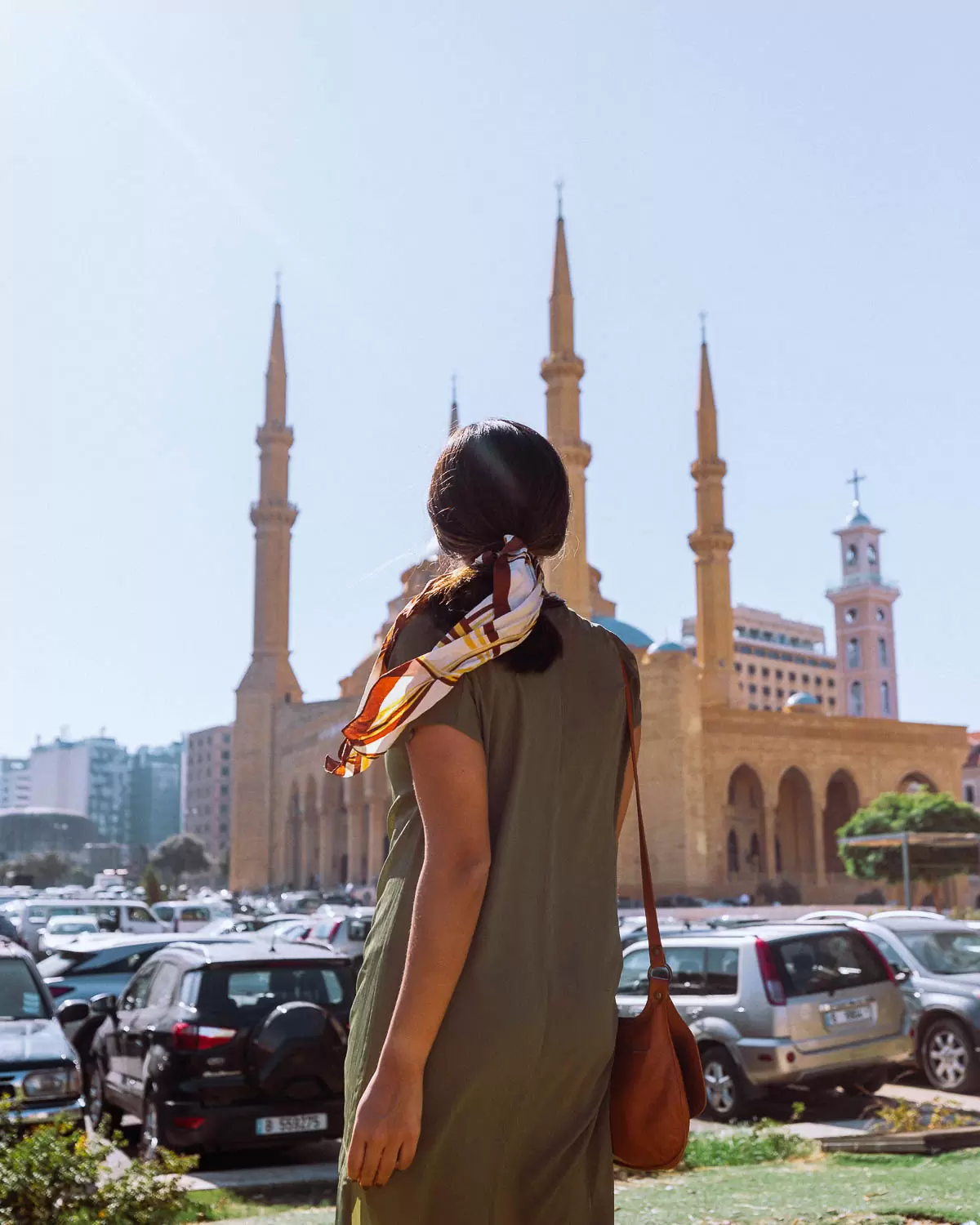
It is often said that without Lebanon’s enduring political and economic issues, the country could be a model for how the rest of the world can coexist. As a small country with more than 18 religious communities, Lebanon is a multi-faith society where mosques and churches coexist and bell towers and calls to prayer are equally common sounds of daily life.
Approximately 60% of the Lebanese population is Muslim (including Shiite, Sunni, Druze, Ismaili, and Alawi), and 40% is Christian (including Catholic communities like Maronites, Armenian Catholics, Greek Catholics; and non-Catholic communities like Greek Orthodox, Armenian Orthodox, Protestants, etc).
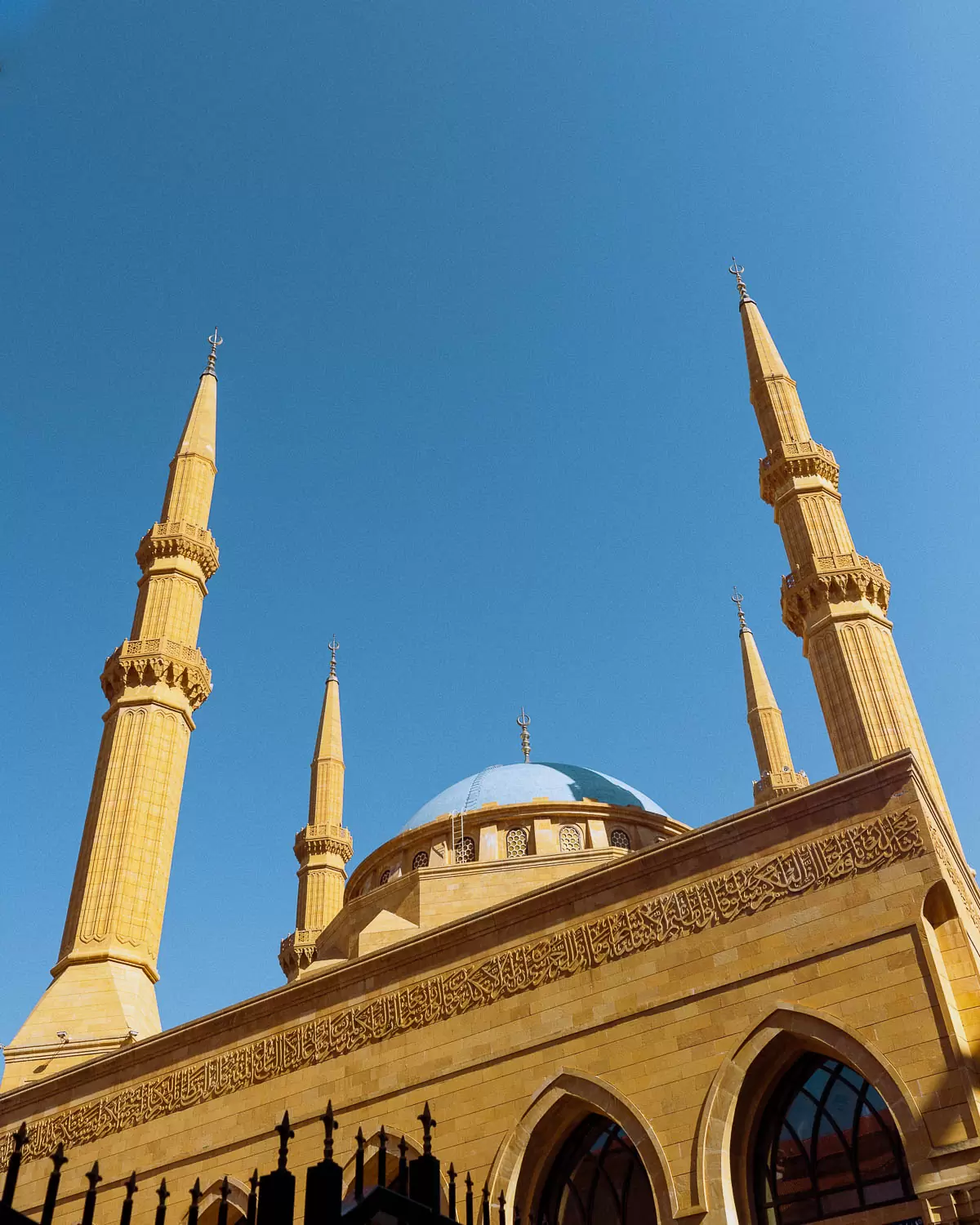
Lebanon is not without its own religious tensions and disagreements. But, as a country that recognizes and respects several religious communities, it is a remarkable thing to witness as a visitor! Here, you can visit mosques and churches in pretty much any city, hike through the Christian monasteries of the Kadisha Valley, and witness the Druze community’s Jumblatt Palace in the Chouf. All of it makes up equal importance in the fabric of what makes Lebanon, Lebanon.
7. Currency and Exchanging Money in Lebanon
Due to decades of debt, Lebanon is experiencing a financial crisis that can be felt in all aspects of daily life. It’s so bad that Lebanese people are largely unable to withdraw money from their bank accounts, and many salaries that were once livable are now worth mere fractions of what they once were.
Lebanon uses the Lebanese Pound or Lira, and you’ll see online that $1 USD = approximately 1,513 Lebanese Pounds. But (and it’s a BIG but!), Lebanon widely operates on a black market exchange . On the black market, $1 USD = anywhere from 24,000 – 35,000 Lebanese Pounds at the time of writing this article.
Because of this, you’ll want to bring your own local currency to Lebanon and exchange currency there, versus trying to find Lebanese currency abroad (most likely, you will not be able to anyway). Once in Lebanon, exchange your money at a reliable place using the ‘black market’ exchange rate, which fluctuates hourly. This way, you’ll get a fair exchange against the actual market value of everyday life in Lebanon.
I found that navigating the money exchange in Lebanon was one of the most confusing parts of visiting the country. Fortunately, my guide helped with this throughout my 10 days in Lebanon.
8. Lebanon Geography and Places to Visit
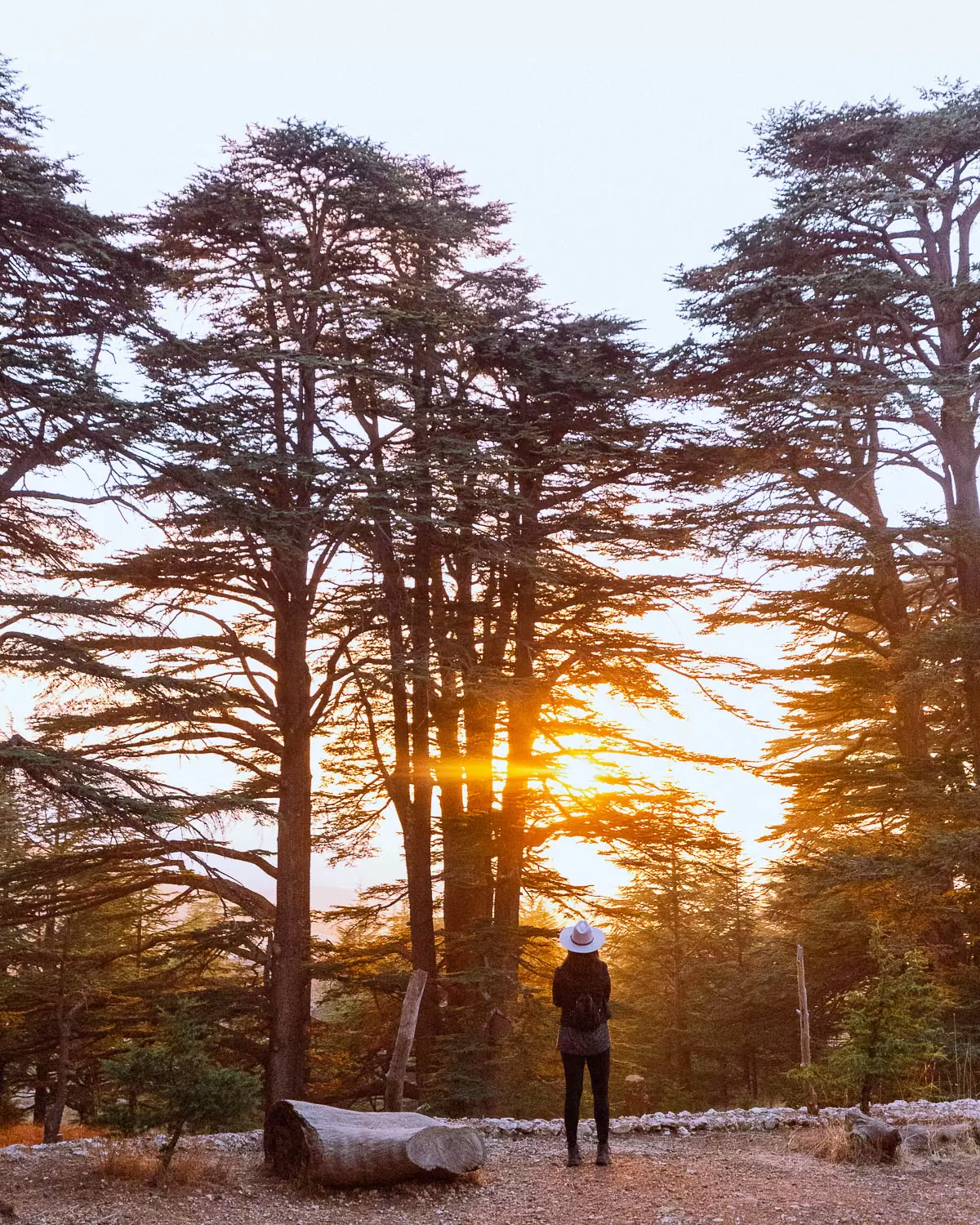
When we think of the Mediterranean, most people may first think of Greece, Italy, or Croatia. But Lebanon is a Mediterranean gem in its own right, with beautiful coastlines and many stretches of crystal clear, aquamarine waters.
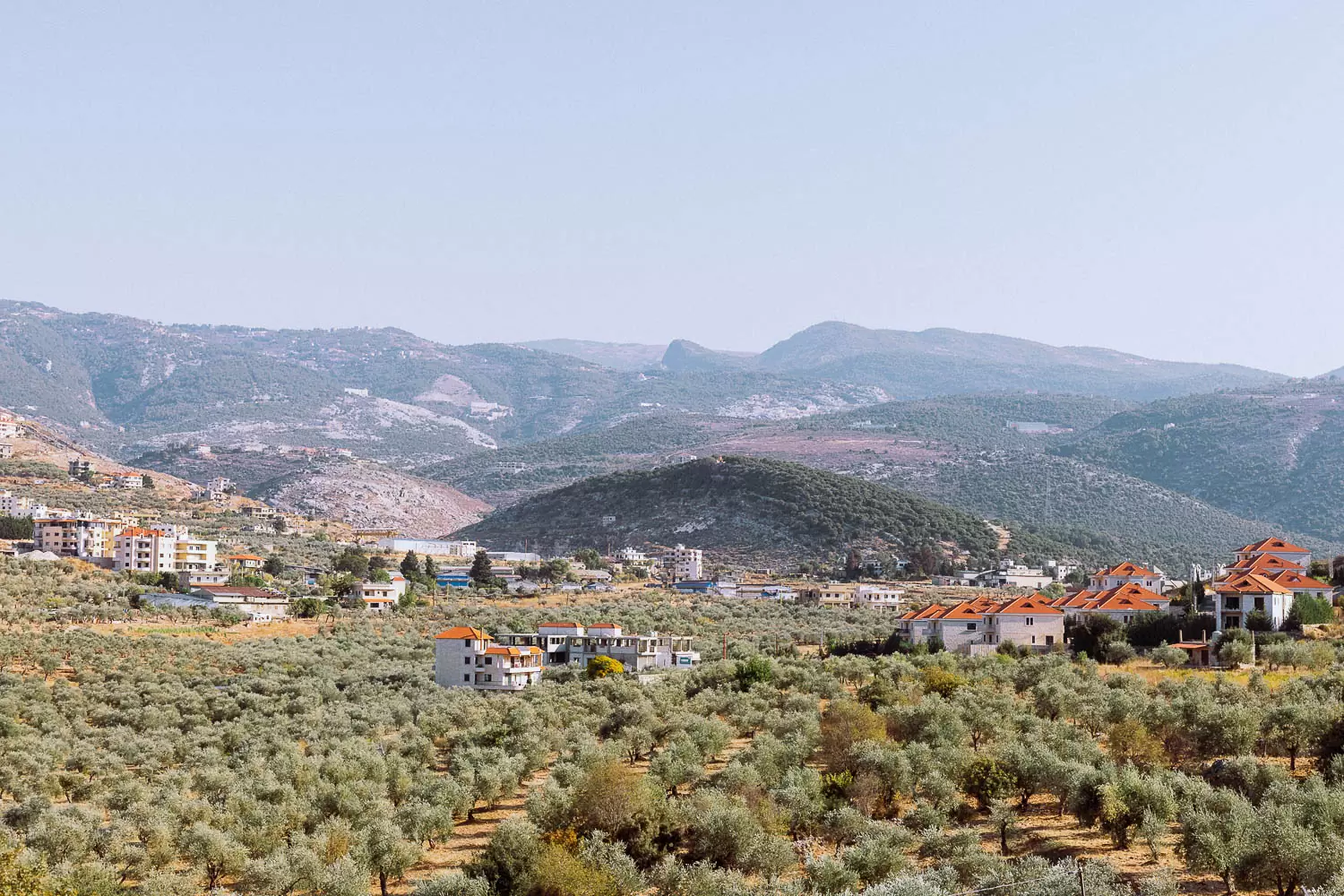
Bordering Lebanon are Israel to the south, and Syria to the north and east. No doubt, this is a region all too familiar with conflict and tension. However, in my experience – going with a guide allowed us to travel all over Lebanon while remaining both informed and safe. There are military checkpoints throughout the country monitoring the roads. At one point after visiting Baalbek in the far east, we found ourselves wine tasting on a vineyard just a stone’s throw from the Syrian border. Again, with our guides monitoring the daily conditions of the region, we felt incredibly safe and welcomed by the people in the Beqaa Valley!
Though Lebanon is a tiny country, it will surprise you – from Mediterranean coastlines, to mountain regions fit for skiing in the winter, to verdant green valleys and relaxing wine regions, Lebanon’s geographic diversity is truly unbelievable.
Some of the Top Places to Visit in Lebanon Include:
- Beirut : The Paris of the Middle East and the capital city of Lebanon, Beirut should be on any first-timer’s list when traveling to Lebanon. Come here historical city center and neighborhoods, stay for the incredible food and nightlife!
- Byblos : Also known as Jbeil or Jebeil, the seaside village of Byblos is a remarkable symbol of civilization. Byblos has been continuously inhabited throughout the past 8,000 years, and today, the historic center is a UNESCO World Heritage Site.
- Jounieh : A once sleepy fishing village that now hosts a long list of attractions, Jounieh is just 30 minutes outside of Beirut and well worth a visit. Take the Teleferique cable car, visit the Casino du Liban, explore the famous Jeita Grotto, or go paragliding over the Mediterranean coast. The views are unbelievable!
- Tripoli : You shouldn’t miss the dizzying, magnificent city of Tripoli in northern Lebanon. Here, you’ll find the largest crusader fortress in Lebanon, a labyrinthine network of souks, and the chilled out fisherman’s village of El Mina which is not to be missed.
- Baalbek : The ruins of Baalbek are so impressive, they are absolutely worth the trek. Here, you can find some of the finest remaining structures of the Roman Empire, like the Temple of Bacchus.
- Saida and Tyre : You can visit the southern seaside towns of Saida and Tyre on a single day trip. Visit the Crusader Sea Castle and the old souks in Saida, and the Hippodrome and Al Mina ruins in Tyre, before ending the day on the Tyre Port and Christian Quarter.
- Chouf : Chouf (also referred to as ‘The Chouf’) is a beautiful region filled with palaces, mountainside villages, a cedar tree reserve, and a large population of Lebanese Druze. Don’t miss the Jumblatt or the Beiteddine Palaces.
- Kadisha Valley : The famous Holy Valley is located high up in the Mount Lebanon chain, and has been home to countless monastic communities for centuries. The drive through the Kadisha Valley is one of the most stunning in all of Lebanon, featuring rugged landscapes dotted with churches and monasteries throughout. You can visit them by car or even hike between the monasteries on foot.
Read my list of all the places you should visit when traveling to Lebanon next!
9. Culture and Etiquette in Lebanon
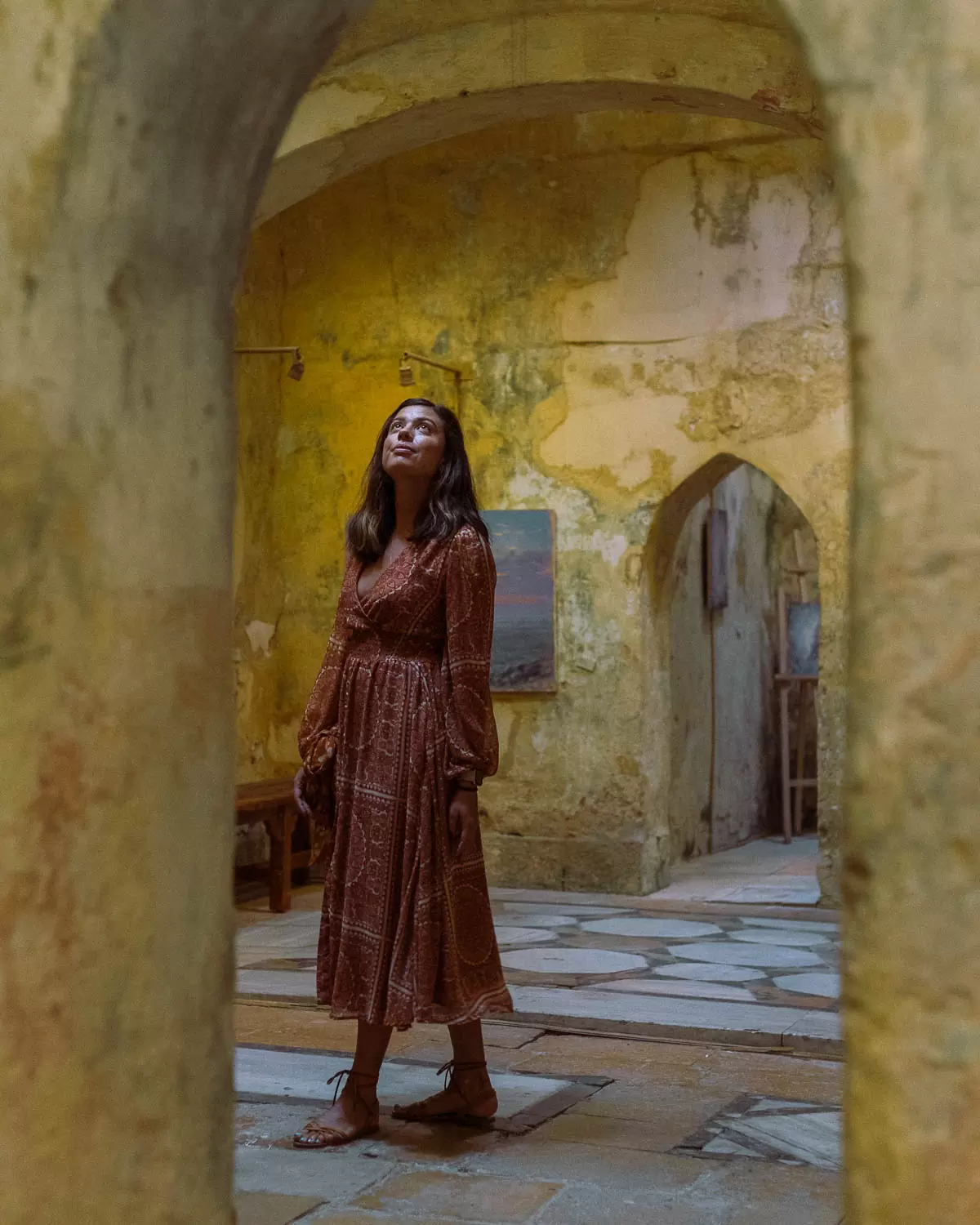
Lebanon is home to a myriad of cultures and customs, and while there is no sole “fixed” way of doing things, I found the country to be incredibly welcoming and inviting for foreign travelers.
I observed Lebanese teens in Beirut dressed in shorts and sneakers hanging out with friends at local bars, streets filled with locals smoking shisha and playing cards until late in the evenings, veiled and unveiled women at restaurants sharing tea and gossip, you name it.
With all that said, there are some things you should keep in mind when visiting Lebanon.
General Tips to Follow When Traveling to Lebanon:
- You can dine with both hands – dining with the right hand only doesn’t really apply in Lebanon
- PDA isn’t extremely taboo, but outside of holding hands, tourists should probably do it sparingly (no need to attract unnecessary attention or judgment, especially from more conservative onlookers). And, unfortunately I’d say LGBTQ+ couples should exercise more caution here and adhere to a zero PDA policy when out and about.
- Punctuality isn’t really a thing in Lebanon – hours are more fluid and you shouldn’t judge your tours or reservations if they don’t start immediately on time.
- Lebanese hospitality is unparalleled. I can’t stress this enough! I’ve never had a better breakfast, better hosts, or better conversations than I did while on this trip. Be a gracious guest and try everything when offered homemade food, be prepared to stay long periods of time and engage in conversation, and bring gifts when appropriate. Hosting is seen as an honor and a privilege, and it isn’t uncommon for even those with the smallest homes to invite you in for a coffee as their guest.
- To most Lebanese, Israel is a huge point of contention. Regardless of your understanding of the situation, it’ll serve you well to simply respect the opinions of locals. And, if you’ve ever traveled to Israel in the past, make sure there is no evidence of that trip in your passport when entering the country.
- While daily life can be quite relaxed in Lebanon, you should never forget that the country is in the crossroads of conflict. Always remain alert and vigilant with your belongings and with the locations you travel to when traveling to Lebanon, and rely on the advice of locals at all times.
10. Weather in Lebanon
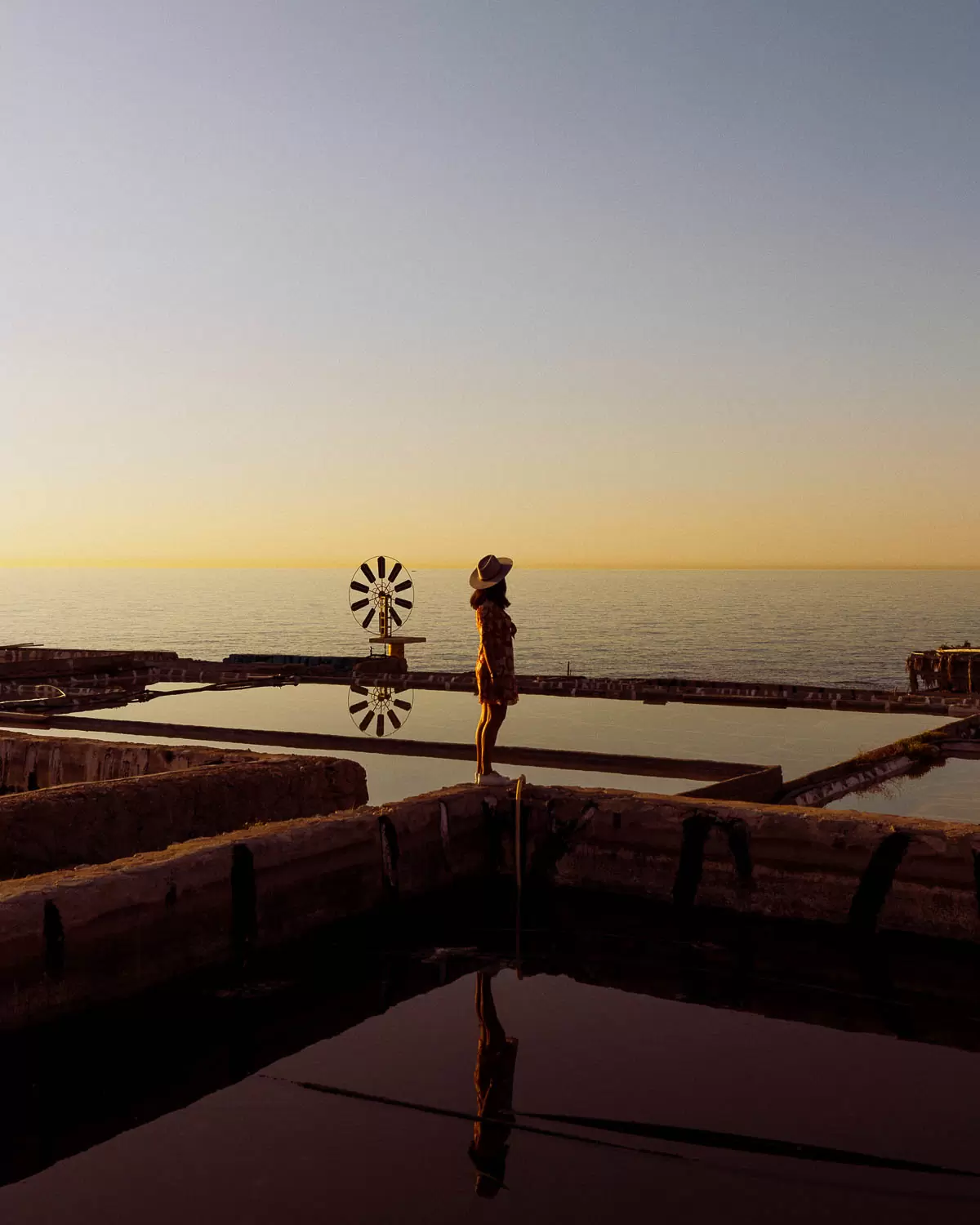
Lebanon generally has a mild Mediterranean climate, with hot summers and rainy winters. The coastline will be hotter and more humid than inland and mountainous regions, which can even get enough snowfall in the colder months for skiing and snowboarding.
If you’re wondering when is the best time to visit Lebanon based on the weather, March – May, and September – October are ideal. However, we came in early November and it was still so warm. We even took a dip in the Mediterranean! The only caveat is that in the winter months, the sun will set around 4:30 pm and your daylight hours will be shorter.
Depending on where you plan to go, I recommend packing a variety of clothing fit for both the coastal areas and mountain regions, with some extra layers for any chilly evenings.
11. What to Pack for and Wear in Lebanon
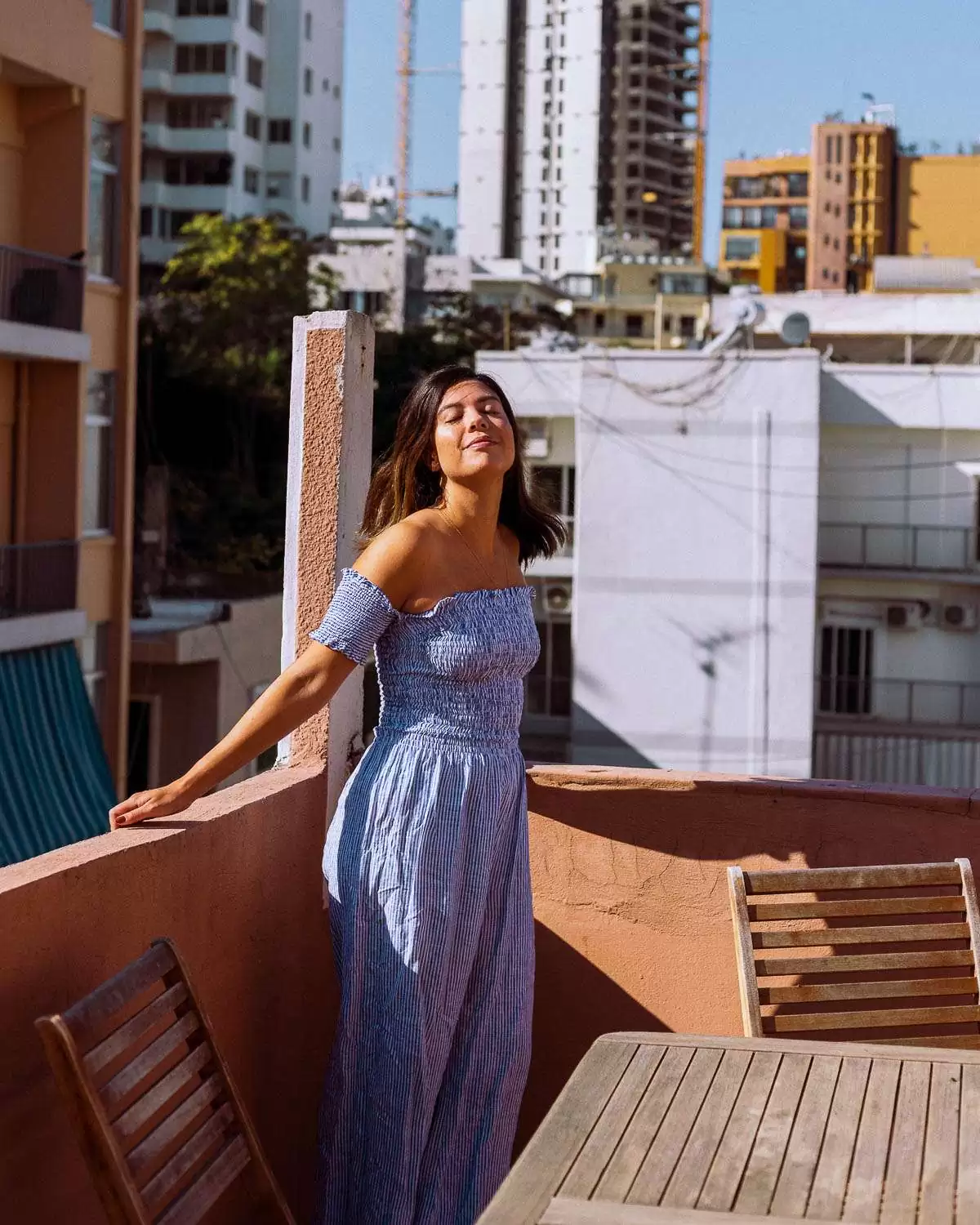
Lebanon is a pretty liberal country. So, what you pack will be dictated by your activities and the places you want to visit, rather than based on any particular custom or requirement.
You’ll generally find very casual as well as stylishly dressed people in Beirut, and naturally, a bit more traditionally and modestly dressed people in less densely populated areas. No matter where you go, it won’t be uncommon to see women in modern sundresses and jeans alongside women in veils or burkas in the same setting.
My Packing Tips for Lebanon:
- Avoid dresses and skirts / shorts that are extra short, as well as plunging necklines or backless tops (to me, this was honestly less about feeling inappropriate, and more about making sure I was not making any local men or women feel uncomfortable)
- Pack swimsuits with a bit more coverage (bikinis are totally fine, but I personally didn’t bring any that were more skimpy)
- Stick to breathable fabrics – Lebanon can be hot especially along the coasts!
- Bring layers if you plan to visit Lebanon’s mountain regions, particularly in the winter months
- Bring a variety of scarves, as you’ll need to cover your hair and shoulders when visiting mosques out of respect. I tied one to my purse every day so I could throw it on when needed.
- When visiting mosques, as well as more conservative cities like Tripoli and Saida, it’s best to wear pants or a skirt / dress that falls below the knees
- Take your shoes off when entering a mosque. If you don’t like the idea of being barefoot, wear socks. The floors will most likely be carpeted!
- Men should avoid wearing shorts or tank tops in mosques, as your shoulders and legs need to be covered, too
12. Transportation and Getting Around when Traveling in Lebanon
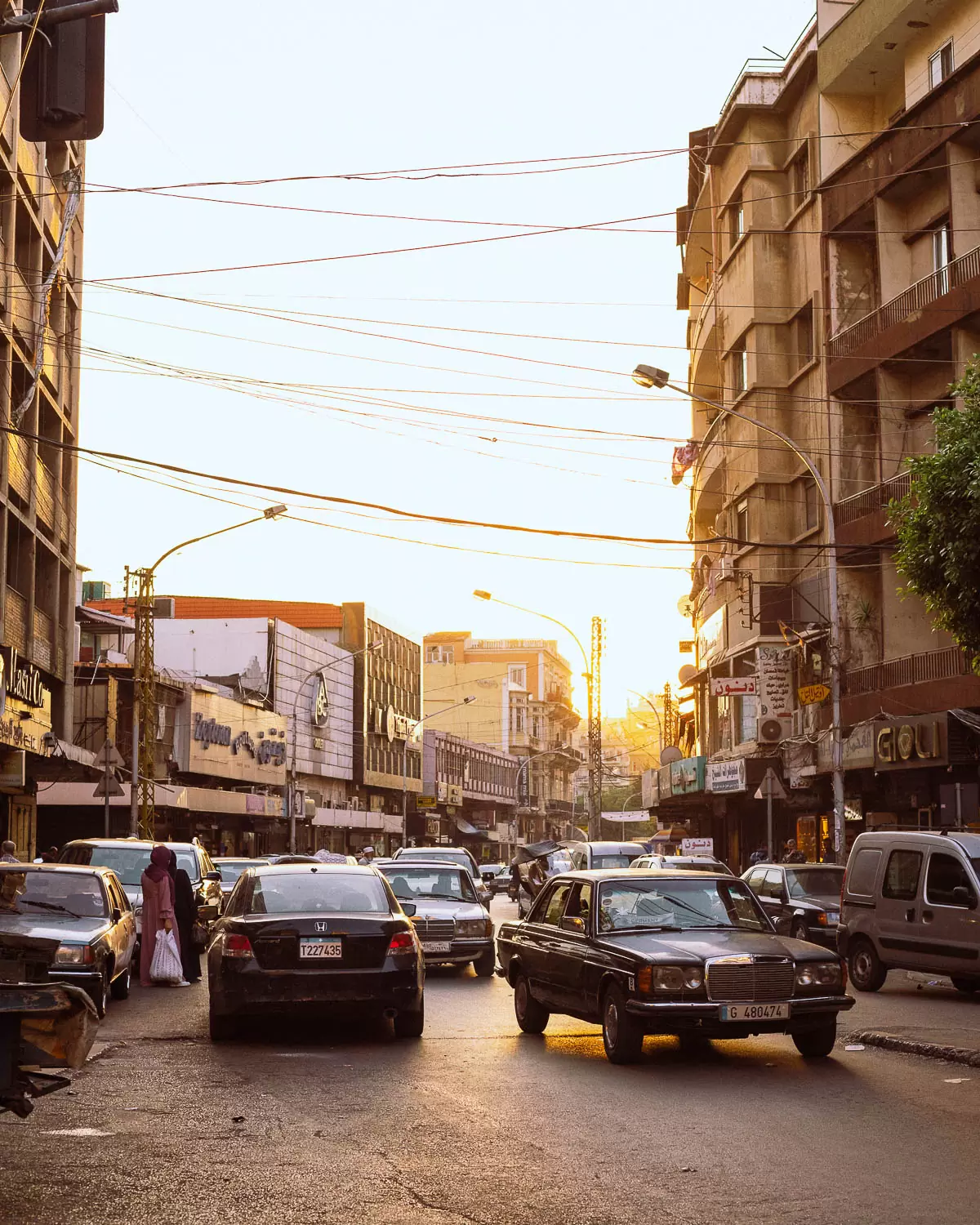
You could theoretically rent a car and drive while traveling in Lebanon, but I wouldn’t recommend it. Especially if it’s your first time traveling to the country. The roads are confusing, everyone drives with their own rules, and there are military checkpoints throughout the country that – while generally safe – can seem intimidating for foreigners.
Careem, a transportation app similar to Uber and Lyft, is supposed to be available in Beirut and Jounieh. But, I didn’t get a chance to confirm this for myself while I was there. If you use this app (or any others) when visiting Lebanon, let me know in the comments!
All that said, if you can swing it, I highly recommend booking tours with transportation included, and / or hiring a private guide like we did with TourLeb. If we had driven ourselves, we probably would’ve done less than half of the things we had on our itinerary. The logistics would’ve been too much to navigate, and there are certain parts of the country – like Tripoli and Baalbek – where it really is best to visit with a local that knows their way around.
13. Food, Alcohol, and Tipping in Lebanon
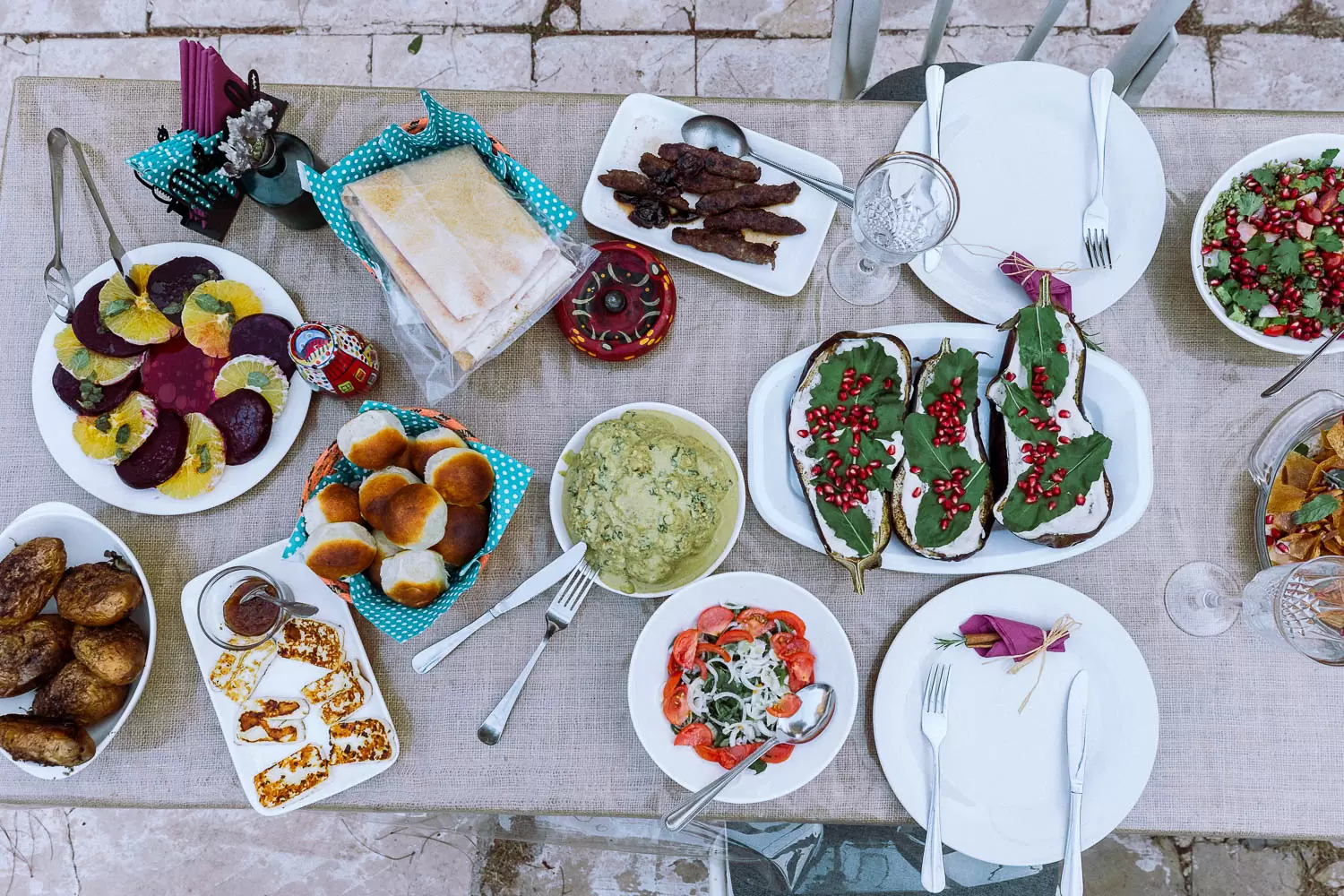
Lebanese people are serious about their food – and it is my absolute favorite cuisine in the world for this very reason.
Their Mediterranean climate combined with fresh Middle Eastern herbs and centuries-old traditions make even the simplest dining experiences a phenomenal occasion. You’ll want to try all of it, and you’ll want to do a good amount of walking during your visit to balance it all out 🙂
Some of my absolute favorite bites of food in Lebanon included:
- A simple, yet crisply fried falafel pita (which cost less than $1 USD) in Saida
- Handmade zaatar and cheese manakish (well, anything covered in zaatar, to be honest)
- Savory sesame-studded ka’ak filled with cheese and, you guessed it, zaatar
- Sweet, indulgent knafeh covered in orange blossom syrup and stuffed into a pita, which coincidentally made for a fantastic hangover breakfast
- Mezze for every meal of the day
- Lahme baajin made on the side of the road in the Chouf
- Freshly prepared kibbeh at a cozy restaurant tucked into the mountains of Ehden
I could keep on going – the food is just that good.
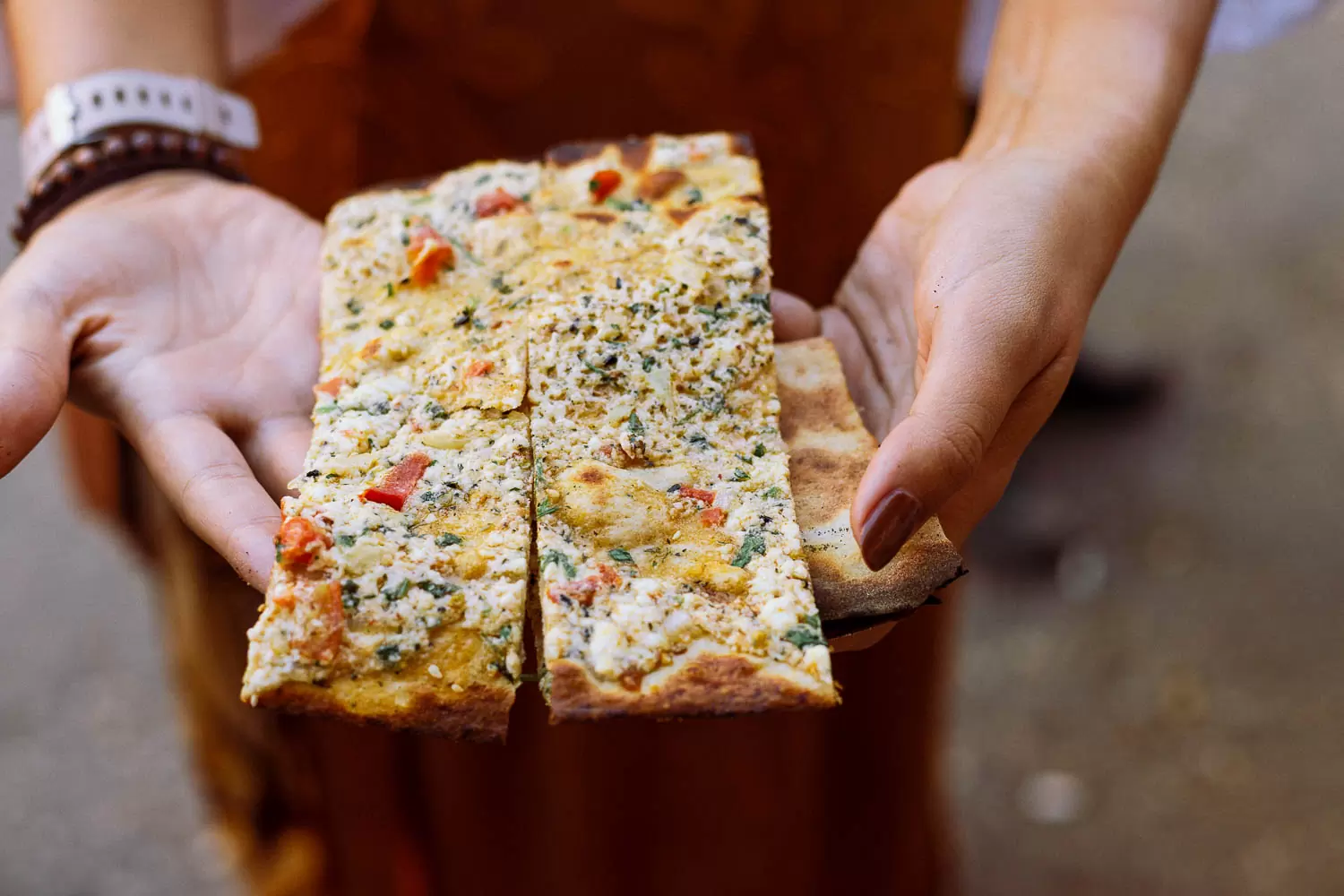
Alcohol Etiquette in Lebanon: Do People in Lebanon Drink?
Lebanon is one of the most liberal countries in the Middle East, and you can easily – and abundantly – enjoy alcohol throughout most of the country. In fact, Lebanon proudly produces tons of local beer, wine, and even spirits.
The only restrictions on this will be in the more conservative parts of the country, like Tripoli and Saida, where alcohol will be sparse or nonexistent out of respect for larger concentrations of Muslim populations.
Outside of this, you will be able to easily find and enjoy a drink in Lebanon freely and without worry.

Tipping in Lebanon: Is It Appropriate?
When it comes to tipping in Lebanon, it’s generally advisable to either round up or pay 10 – 15% at restaurants depending on the service you received.
You’ll also want to carry small bills for other tipping encounters, including supermarket trips (if they carry your groceries to your car), gas station stops (an attendant will fill your tank), and buying drinks at a bar.
14. Travel Insurance For Traveling to Lebanon: Do You Need It?
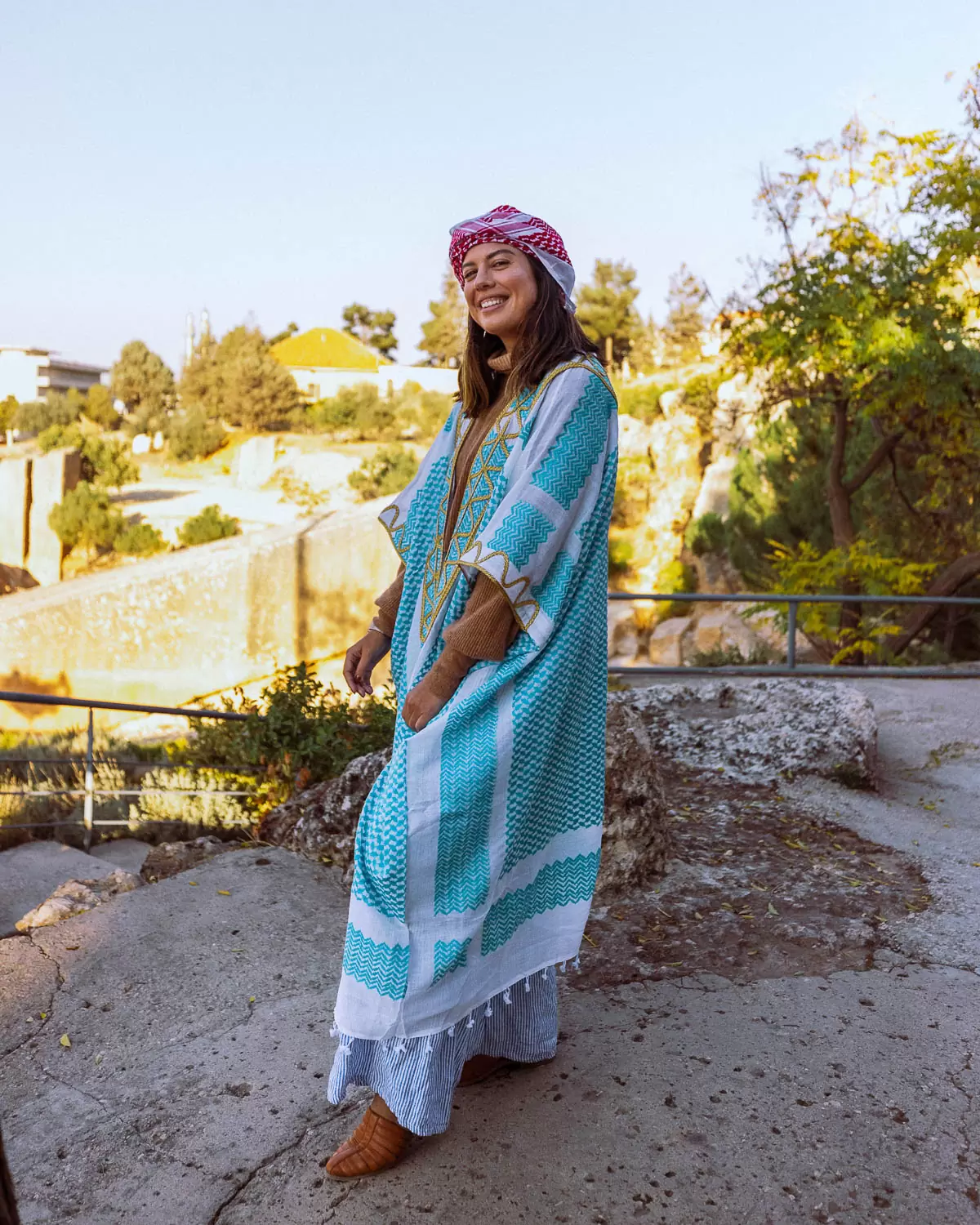
Whether or not you need travel insurance is your own personal choice. But, keep in mind that without insurance, any incidents (stolen gear, hospitalization, etc) will need to be covered out of pocket while abroad.
Some reputable travel insurance companies with good reviews include:
- World Nomads
- Allianz Travel Insurance
It’s hard for me to put into words how much I loved my time traveling in Lebanon, so I’ll end by saying this: if you’re feeling adventurous and considering visiting Lebanon, you must do it. Lebanon has been without a doubt one of the most culturally enriching, delicious, eye-opening, educational, authentic, raw, and fun countries I’ve visited to date, and I can’t wait to go back!
P.S. Skipped to the end? Don’t fret! While you can travel to Lebanon on your own, some might feel more comfortable visiting with a local tour company. If that’s you, you might want to consider traveling to Lebanon with TourLeb. Mention ‘Rachel Off Duty’ when booking to get up to 15% off a private tour of 3 days or more. Contact them here .
Or, travel with me to Lebanon on a group trip this summer (August 19 – 27). See the itinerary and reserve your spot by clicking this link .
Are you considering traveling to Lebanon? Did you find these tips helpful? Let me know your plans in the comments!
Read This Next:
- 10 Unforgettable Places to Visit in Lebanon
- 10+ Effortless Ways to Start Saving Money for Travel
- The Best First-Time Solo Female Travel Destinations
- Solo Female Traveler Safety Tips Every Woman Should Know
Pin For Later:
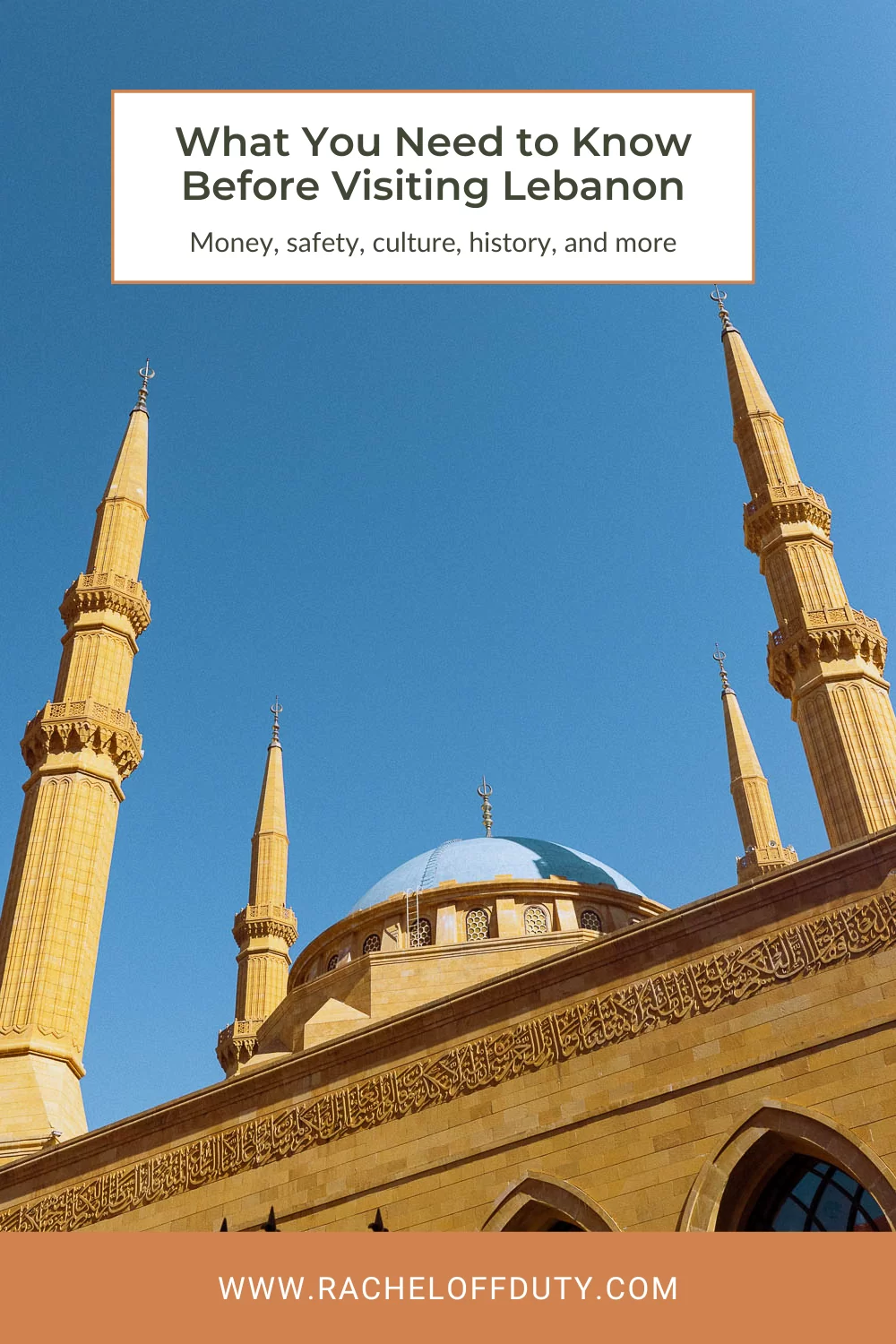
Hey there! I’m Rachel, a travel writer and a full-time advertising / marketing expert. In 2019, I traveled more than 25 times while working 9 to 5, and since then I’ve committed myself to living a more adventurous life, even if it means bringing my laptop along for the ride. Are you hungry to travel more, but overwhelmed with how to juggle work and play? You’ve come to the right place!
Recent Adventures:

The Best Places to Visit in Peru For First-Timers
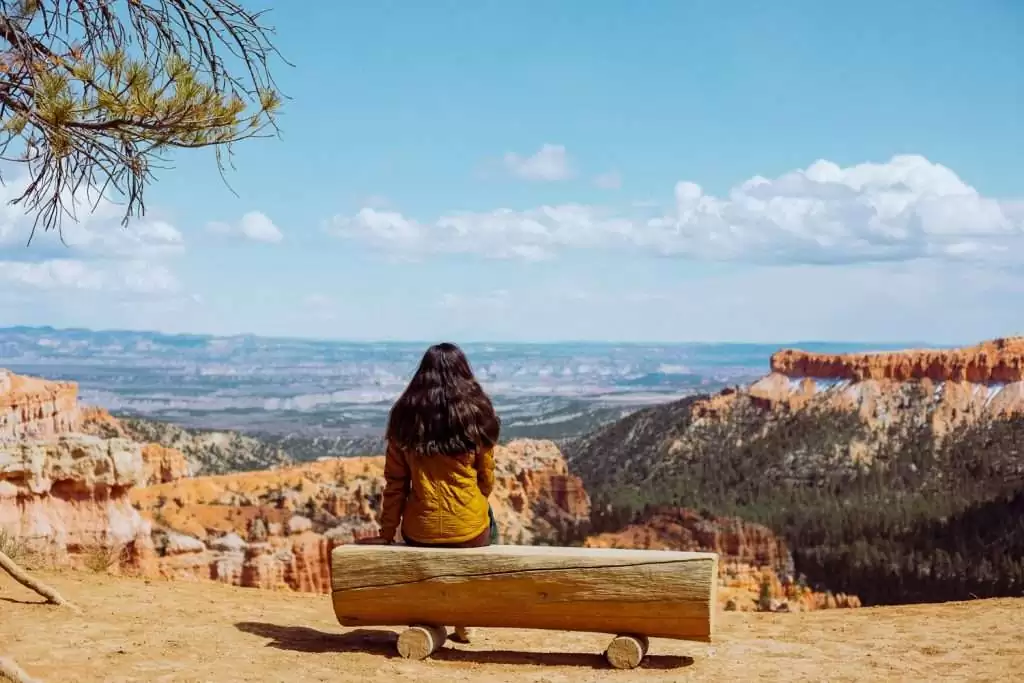
Top Woman-Owned Travel Companies That Should Be on Your Radar
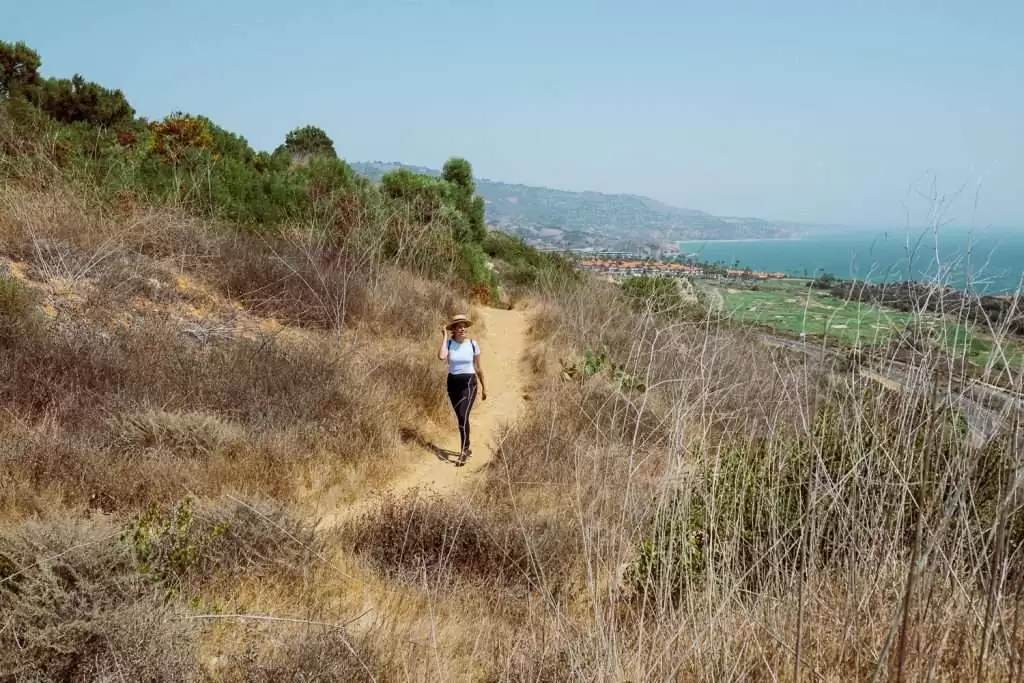
Los Angeles Staycation Idea: Two Days in Palos Verdes, California
Let's go places.
- Updated on: March 1, 2023
Leave a Reply
Your email address will not be published. Required fields are marked *
Save my name, email, and website in this browser for the next time I comment.
Follow the Off Duty Life

Join a Community of Go-Getting Travelers.
Sign up below!


Navigate forward to interact with the calendar and select a date. Press the question mark key to get the keyboard shortcuts for changing dates.
Navigate backward to interact with the calendar and select a date. Press the question mark key to get the keyboard shortcuts for changing dates.
Lebanon Trip Planner
Top destinations in lebanon.

Top attractions in Lebanon

Other notable attractions

Explore nearby places
- Borj Hammoud
- Borj El Brajneh
- Chouaifet El Qoubbeh
- Zouk Mosbeh
- Zouq Mkayel
- Qornet El Hamra
- Mar Moussa El Douar
- Deir El Harf
- Dhour El Choueir
All related maps of Lebanon
- Map of Lebanon
- Map of Beirut
- Map of Chiyah
- Map of Borj Hammoud
- Map of Hazmieh
- Map of Borj El Brajneh
- Map of Jdeideh
- Map of Zalqa
- Map of Jal el Dib
- Map of Antelias
- Map of Chouaifet El Qoubbeh
- Map of Bsalim
- Map of Beit Mery
- Map of Er Rabie
- Map of Dbayeh
- Map of Aley
- Map of Zouk Mosbeh
- Map of Broummana
- Map of Zouq Mkayel
- Map of Qornet El Hamra
- Map of Jounieh
- Map of Jitta
- Map of Harissa
- Map of Mar Moussa El Douar
- Map of Damour
- Map of Deir El Harf
- Map of Ajaltoun
- Map of Rechmaiya
- Map of Zaraaoun
- Map of Dhour El Choueir
- Map of Hasbaya
Lebanon throughout the year
- Lebanon in January
- Lebanon in February
- Lebanon in March
- Lebanon in April
- Lebanon in May
- Lebanon in June
- Lebanon in July
- Lebanon in August
- Lebanon in September
- Lebanon in October
- Lebanon in November
- Lebanon in December
Q&A about Lebanon
Add places from guides with 1 click, collaborate with friends in real time, import flight and hotel reservations, expense tracking and splitting, checklists for anything, get personalized suggestions.
4.9 on App Store, 4.7 on Google Play
Lebanon 7 Day Itinerary
In many ways Lebanon is a microcosm of the Middle East. The food bursts with flavor, the people brim with charm and warmth, and the streets ooze with culture and tradition.
But the tiny country also has it own twist, where seemingly infinite sandy plains dramatically give way to spectacular verdant valleyscapes, and ancient cities and Islamic architecture are juxtaposed by urbane hipster neighborhoods.
Luckily, with its network of informal minibuses and relative stability, Lebanon is safe and accessible for travelers.
Here’s a guide on how to make the most of the country and see highlights in just one week:
Days 1-2: Beirut
The so-called Paris of the Middle East is a veritable hodgepodge of neighborhoods, and an ideal hub to launch your day trips across Lebanon from and return to to chill in the evening.
If you are on a budget there’s no better place to stay than Hostel Beirut, a homely abode-cum-NGO, where backpackers from all over come to share an Almaza beer on the terrace.
Its best to explore Beirut by foot. From Hostel Beirut in the lively Mar Mikhael, replete with Parisien architecture, follow the famous Armenia Street westward winding into Gemmazeye district passing hipster cafes, bars, and shawarma stops, pausing to walk up the city’s many colorful stairways.
At night the area transforms into a brimming spot for bar crawls and clubbing. You’ll never be far from amazing food. Try the casual shawarma restaurant Barbar, and the incredible hummus dishes in Cafe Em Nazih, or treat yourself to the Samke Harra, a tasty spiced fish dish, at El Denye Hek.
Continue westward, gazing at the grand ceilings of the Mohammed al-amin mosque and wander through Beirut’s souqs and beyond Lebanese parliament near the buzzing Nijmeh square in the city’s more modern quarter.
Eventually you’ll reach the snazzier Hamra district where you can venture through the campus of the American University of Beirut. From there you can reach the Avenue de Paris promenade, a majestic coastline famous for the Pigeon Rock formation in Raouche, which bursts into life just before sunset.
Day 3: Byblos/Jbeil
Grab a minibus just 40mins in the Beirut traffic down Highway 51, then hike about 20 toward Jeita Grotto.
It may seem like a rundown theme park above, but below its a jaw-dropping set of interconnected limestone caves, replete with enormous stalactites and stalagmites, and an underground river which you can explore by boat.
Next, return to the highway and head up to Byblos (Jbeil). Chill along its sandy beaches on the Mediterranean shores, before walking along the coastal promenade through the cute marina into the ancient cobbled heart of Byblos.
Explore the gardens, souqs, and ruins of the old Phoenician city, a UNESCO world heritage site, and the seamlessly integrated bars, antique shops and restaurants before wondering up Byblos’ famous citadel for stunning views of the ancient city and coast.
Day 4: Baalbek & Anjar
No trip to Lebanon is complete without visiting the majestic and extensive Roman ruins of Baalbek, particularly the picturesque Temple of Bacchus, in worship of the Greek god Dionysus.
This is one of the top places to visit in the Middle East , especially if you have an interest in history.
For security, it's probably best to organise the 2.5 hour trip from Beirut by a guided tour to get the full history - try Living Lebanon which runs trips departing just outside Cafe Em Nazih.
Most trips are combined with a visit to the palatial ruins of the UNESCO Umayyad city of Anjar in the Beqaa Valley, not far from the Syrian border.
Day 5: Tripoli & Batroun
Rise early to grab the minibus for the 3+ hours trip up the highway to Tripoli, Lebanon’s second largest city, dating back to almost 14 BCE, and home to the world’s second largest amount of Mamluk architectural heritage—behind Cairo.
Stop off at the city’s chaotic heart near the Sultan Abdul Hamid clocktower, and heading eastward, dip into Cafe Fahim for an incredibly hearty breakfast of hummus, bread and pickles. The continue the maze of Tripoli’s streets guiding yourself through the crazy and colorful clothes, spice, vegetable, and meat souks.
Wiggle through the alleyways to find the steps toward the Citadel of Raymond de Saint Gilles, the city’s imposing fort. Be sure to venture across alongside all its ramparts for stunning views of this sprawling Middle Eastern metropolis.
On your way down follow the Abou Ali River north toward the textile souks and eventually to the old vegetable market on the other side. If you continue cutting in you’ll reach Syria street and the high security and bullet ridden architecture of the Bab-al-Tebbaneh and Jabal Mohsen neighbourhoods, home to Sunni and Alawite muslims respectively--who have been in tense conflict since the Lebanese civil war. Some walls and steps are adorned with graffiti art in attempt by NGOs to regenerate this war-torn area. Be careful, there is alway the risk of a flare up.
As you return to Beirut, jump off the minibus at Batroun for an evening stroll along its coastal alleyways. Starting at its large port walk south alongside its phoenician wall where you will eventually come across the cute sea facing Our Lady of the Sea Church. Continue on toward the Ray Sur Mer restaurant where you can dine in front of the crashing waves in a cosy setting.
Day 6 ,7: Bsharri
After five days of Middle Eastern cities, ruins and beaches, it's time for a detox.
Grab a minibus to the highway again, stop over at the large roundabout where most of buses gather just outside the capital. Here you can find a bus going up to Bsharri—a quaint mountain village hidden in the Kadisha valley. It can be a rickety 4-5 hour journey up into the mountains, and be patient as many will be looking for a lift en route.
Try to stay at the homely Tiger Guesthouse. The alpine village is sprawled on the side of the valley, so there are plenty of stunning views as you traverse its many layers -- explore its wavy cobbled streets and dominating churches.
During Easter there's a particularly communal feel with several street fetes. Food options are limited but Al Zaytouni’s sandwich house is best for shawarma, and check out Rtc Restaurant higher up where you can chill over shisha and enjoy incredible views over the village and valley.
Ultimately, Bsharri is all about hiking. Most trails start heading westward out of Bsharri where you can hike through the emblematic cedar trees and into the magisterial Kadisha valley.
Be sure to take the steep descent to visit the Monastery of Mar Elisha, a ancient hidden gem, once a refuge for monks, carved out of the valley side. If you’re feeling energetic enough hike up the other side of the valley for even finer views of the monastery.
Plan a Trip to Lebanon
Have you ever been to Lebanon? Do you have any recommendations for places to visit or things to do? Share your thoughts in the comments sections below.
By Tej Parikh
- Leave a reply
Great article Tej. This is a fantastic succinct one week guide of Lebanon. It really helped us reminisce over our 5 day trip we did to Lebanon last year. Of course, we would have loved more time there. But we felt that 5 days, being based in Beirut, gave us a good opportunity to see the very best of Lebanon. Actually, we were hoping to help your readers who may also only have 5 days in Lebanon. We have actually written a very thorough 5 day itinerary. Plus, we have briefly written about the current Revolution (2019-2020) taking place there. It's certainly not an in depth analysis on the sociopolitical situation, but rather a comment on how this may impact travel to Lebanon currently. Here’s the link - https://travelmademedoit.com/lebanon-the-ultimate-itinerary/ We hope you and your readers find this helpful. Cheers, Dan & Beck from Travel Made Me Do It
Provide feedback, share your experience and submit your comment.
Related Articles
Travelling, backpacking & gap years in lebanon.
Looking for an alternative destination to travel? Consider Lebanon. This country is a fantastic off the beaten track ...
Volunteer in Lebanon
Are you looking for a life changing experience? Want to travel and give back? Consider going to volunteer in Lebanon. Th...
31 Best Places to Visit in the Middle East
The Middle East is an incredible region to explore with ancient ruins, unique architecture, beautiful beaches, important...
Learn Arabic in Lebanon
Plan a break to study Arabic in Lebanon. This country is a great place to book an Arabic language course, expect frie...
Study Abroad in Lebanon
Lebanon is an underrated country to study abroad. The country might look small on a map, but there are lots of highly...
Teach English in Lebanon
Lebanon has a population of around 5 million but there is a strong demand for English teachers. This is one of the mo...

Travel Guide to Beirut, Lebanon [with Sample Itinerary]
Read our Beirut travel guide to help you have an idea with your next journey to this wonderful capital in the country of Lebanon.
![lebanon trip itinerary Travel Guide to Beirut, Lebanon [with Sample Itinerary]](https://twomonkeystravelgroup.com/wp-content/uploads/2020/07/Travel-Guide-to-Beirut-Lebanon-with-Sample-Itinerary8.jpg)
- Best Sailing Destinations in the Middle East
- Middle East Expat’s Guide To Money Management
- Life in the Middle East: Moved to Saudi Arabia for Love
- How to Teach English in the Middle East – TEFL Teaching Job in the Arab Countries
- Travel to the Middle East – One Week Trip Itinerary for Oman
Table of Contents
Beirut Travel Guide: Places to Visit in Beirut, Lebanon
1. national museum of beirut.
![lebanon trip itinerary Travel Guide to Beirut, Lebanon [with Sample Itinerary]](https://twomonkeystravelgroup.com/wp-content/uploads/2020/07/Travel-Guide-to-Beirut-Lebanon-with-Sample-Itinerary.jpg)
Suggested Tour: Beirut: City Sightseeing Hop-on Hop-off Bus Tour
2. Zaitunay Bay
![lebanon trip itinerary Travel Guide to Beirut, Lebanon [with Sample Itinerary]](https://twomonkeystravelgroup.com/wp-content/uploads/2020/07/Travel-Guide-to-Beirut-Lebanon-with-Sample-Itinerary1.jpg)
3. Mim Museum – Mineral Museum
![lebanon trip itinerary Travel Guide to Beirut, Lebanon [with Sample Itinerary]](https://twomonkeystravelgroup.com/wp-content/uploads/2020/07/Travel-Guide-to-Beirut-Lebanon-with-Sample-Itinerary2.jpg)
4. Mohammad Al-Amin Mosque
![lebanon trip itinerary Travel Guide to Beirut, Lebanon [with Sample Itinerary]](https://twomonkeystravelgroup.com/wp-content/uploads/2020/07/Travel-Guide-to-Beirut-Lebanon-with-Sample-Itinerary3.jpg)
5. Pigeon Rocks in Raouche
![lebanon trip itinerary Travel Guide to Beirut, Lebanon [with Sample Itinerary]](https://twomonkeystravelgroup.com/wp-content/uploads/2020/07/Travel-Guide-to-Beirut-Lebanon-with-Sample-Itinerary4.jpg)
6. American University of Beirut
![lebanon trip itinerary Travel Guide to Beirut, Lebanon [with Sample Itinerary]](https://twomonkeystravelgroup.com/wp-content/uploads/2020/07/Travel-Guide-to-Beirut-Lebanon-with-Sample-Itinerary5.jpg)
7. Gemmayzeh Street
Gemmayzeh is another of Beirut’s nightlife districts, like restaurants after bars after cafes. It gets very lively, especially in the evening. If you’re looking for something to have fun, this is the place you should go to.
8. Beirut Souks
![lebanon trip itinerary Travel Guide to Beirut, Lebanon [with Sample Itinerary]](https://twomonkeystravelgroup.com/wp-content/uploads/2020/07/Travel-Guide-to-Beirut-Lebanon-with-Sample-Itinerary6.jpg)
9. Hamra Street
If you want to “immerse” yourself in Beirut, you should not miss the highly lively Hamra street. There are lots of shops, cafes, restaurants, bars, hotels, people, and cars. Might probably the “real Beirut”. Anyone who wants to shop will find all possible shoe and textile shops here. You can spend an hour just wandering around this street.
10. Corniche Beirut
![lebanon trip itinerary Travel Guide to Beirut, Lebanon [with Sample Itinerary]](https://twomonkeystravelgroup.com/wp-content/uploads/2020/07/Travel-Guide-to-Beirut-Lebanon-with-Sample-Itinerary7.jpg)
Beirut Travel Guide: Sample Weekend Itinerary to Beirut, Lebanon
Day 1 – weekend guide to beirut, lebanon.
Mim Museum – Mineral Museum American University of Beirut Zaitunay Bay
Day 2 – Weekend Guide to Beirut, Lebanon
National Museum of Beirut Mohammad Al-Amin Mosque Hamra Street Corniche Beirut Pigeon Rocks in Raouche
Day 3 – Weekend Guide to Beirut, Lebanon
Beirut Souks Gemmayzeh Street
Beirut Travel Guide: Where to Stay in Beirut, Lebanon
*All prices are subject to change.
Where to Stay in Beirut, Lebanon if you’re a Backpacker
Napoleon Hotel
![lebanon trip itinerary Travel Guide to Beirut, Lebanon [with Sample Itinerary]](https://twomonkeystravelgroup.com/wp-content/uploads/2020/07/Travel-Guide-to-Beirut-Lebanon-with-Sample-Itinerary9.jpg)
Napoleon Hotel’s luxurious rooms are all air-conditioned and equipped with cable TV and a fully stocked minibar. The marble bathrooms feature sunken tubs, separate showers, and hairdryers. Guests can enjoy cocktails to the tunes of a string quartet at the piano bar.
Price: Starts at $30 per night for Standard Double or Twin Room, add $3 for taxes and charges, $12 for breakfast (optional), but it offers a free cancellation.
Talal Hotel
![lebanon trip itinerary Travel Guide to Beirut, Lebanon [with Sample Itinerary]](https://twomonkeystravelgroup.com/wp-content/uploads/2020/07/Travel-Guide-to-Beirut-Lebanon-with-Sample-Itinerary10.jpg)
Price: Starts at $14 per night for Standard Double or Twin Room, includes taxes and charges, free breakfast, and it offers a free cancellation. Breakfast at Talal Hotel can be enjoyed in the lounge with its sofas and bright wall painting.
Price: Starts at $37 per night for Budget Double Room with Shared Bathroom, add $4 for taxes and charges, and it’s partially refundable.
Alaamira Furnished Apartments
![lebanon trip itinerary Travel Guide to Beirut, Lebanon [with Sample Itinerary]](https://twomonkeystravelgroup.com/wp-content/uploads/2020/07/Travel-Guide-to-Beirut-Lebanon-with-Sample-Itinerary11.jpg)
Alaamira offers fully furnished studios and apartments with 1, 2, or 3 bedrooms and living rooms. All units have ACs, flat-screen TV, and a small kitchen equipped with a fridge, stovetop. Some units include a balcony.
Price: Starts at $43 per night for One-Bedroom Apartment, add $4 for taxes and charges, $5 for breakfast (optional), but it offers a free cancellation.
Where to Stay in Beirut, Lebanon if you’re on a Budget
Viccini Suites
![lebanon trip itinerary Travel Guide to Beirut, Lebanon [with Sample Itinerary]](https://twomonkeystravelgroup.com/wp-content/uploads/2020/07/Travel-Guide-to-Beirut-Lebanon-with-Sample-Itinerary12.jpg)
Viccini Suites offers self-catering apartments with a kitchenette and private balcony. The air-conditioned apartments at Viccini come with free Wi-Fi and a seating area with LCD TV. The apartments have marble floors and are decorated in light colors.
Price: Starts at $50 per night for Exclusive Suite, includes taxes and charges, and it offers a free cancellation.
Mar Mikhael Heritage Apts
![lebanon trip itinerary Travel Guide to Beirut, Lebanon [with Sample Itinerary]](https://twomonkeystravelgroup.com/wp-content/uploads/2020/07/Travel-Guide-to-Beirut-Lebanon-with-Sample-Itinerary13.jpg)
Mar Mikhael Vintage Apts features accommodation with free WiFi, a flat-screen TV, and a kitchen. Beirut Rafic Hariri International Airport is 9 km away.
Price: Starts at $50 per night for Apartment-Split Level, includes taxes and charges, and it offers a free cancellation.
Silver Apartments
![lebanon trip itinerary Travel Guide to Beirut, Lebanon [with Sample Itinerary]](https://twomonkeystravelgroup.com/wp-content/uploads/2020/07/Travel-Guide-to-Beirut-Lebanon-with-Sample-Itinerary14.jpg)
Silver Apartments is a self-catering accommodation. Wi-Fi access is available at an added fee. Accommodation will provide you with a flat-screen TV, air conditioning and a balcony. Rafic Hariri Airport is 15 minutes by car.
Price: Starts at $55 per night for One-Bedroom Apartment, add $6 for taxes and charges, and it offers a free cancellation.
Where to Stay in Beirut, Lebanon if you want Luxury
Mövenpick Hotel Beirut
![lebanon trip itinerary Travel Guide to Beirut, Lebanon [with Sample Itinerary]](https://twomonkeystravelgroup.com/wp-content/uploads/2020/07/Travel-Guide-to-Beirut-Lebanon-with-Sample-Itinerary15.jpg)
This luxurious resort in Beirut’s center features 4 indoor and outdoor pools , 5 restaurants, and an expansive spa. Free Wi-Fi is available. The bright guest rooms at the Mövenpick Hotel Beirut have modern interior design. They include a flat-screen TV, a spacious seating area, and views of the sea, the city or the courtyard. A range of relaxation and recreational options are on offer at the Essential Spa & Health Club, including tennis courts, massage services, and a sauna.
Price: Starts at $255 per night for Classic King Room, add $28 for taxes and charges, $33 for breakfast (optional), but it offers a free cancellation.
Sofitel Beirut Le Gabriel
![lebanon trip itinerary Travel Guide to Beirut, Lebanon [with Sample Itinerary]](https://twomonkeystravelgroup.com/wp-content/uploads/2020/07/Travel-Guide-to-Beirut-Lebanon-with-Sample-Itinerary16.jpg)
Sofitel Beirut Le Gabriel is a luxury full-service hotel with a range of upscale amenities tailored to suit business and leisure guests alike. The spacious rooms and suites come with modern furnishings. Each is fitted with cable TV, air conditioning, Bose sound system, minibar, and coffee machines. Free WiFi is available throughout. Guests can also relax in the indoor swimming pool, workout in the fitness center, and enjoy gourmet French and Lebanese cuisine.
Price: Starts at $350 per night for Junior Suite, add $39 for taxes and charges, $25 for breakfast (optional), but it offers a free cancellation.
![lebanon trip itinerary Travel Guide to Beirut, Lebanon [with Sample Itinerary]](https://twomonkeystravelgroup.com/wp-content/uploads/2020/07/Travel-Guide-to-Beirut-Lebanon-with-Sample-Itinerary17.jpg)
Le Gray features a stylish design and a neon-lit, top-floor bar with 360-degree panoramas oversea, city, and mountains. All rooms have free Wi-Fi. This hotel houses spacious rooms featuring luxury fibers and soft hues. They all feature black-tiled bathrooms with a tub and luxury amenities. For a relaxing break from busy Beirut, Le Gray’s wellness center offers massages and beauty treatments. Indigo on the Roof Restaurant serves international cuisine with a Mediterranean twist and an impressive wine wall.
Price: Starts at $350 per night for Deluxe Double Room, add $39 for taxes and charges, $38 for breakfast (optional), but it offers a free cancellation.
Beirut Travel Guide: List of restaurants that you can try while in Beirut, Lebanon
1. Em Sherif Restaurant
![lebanon trip itinerary Travel Guide to Beirut, Lebanon [with Sample Itinerary]](https://twomonkeystravelgroup.com/wp-content/uploads/2020/07/Travel-Guide-to-Beirut-Lebanon-with-Sample-Itinerary18.jpg)
Operating hours: 12:30 PM – 4:00 PM / 8:30 PM – 12:00 AM (Sun-Sat) Address: Rue Victor Hugo, Beirut Lebanon
2. Ferdinand
![lebanon trip itinerary Travel Guide to Beirut, Lebanon [with Sample Itinerary]](https://twomonkeystravelgroup.com/wp-content/uploads/2020/07/Travel-Guide-to-Beirut-Lebanon-with-Sample-Itinerary19.jpg)
Operating hours: 5:00 PM – 01:00 AM (Sun-Sat) Address: Mahatma Gandhi Street Hamra, Beirut Lebanon
3. Babel Bay
![lebanon trip itinerary Travel Guide to Beirut, Lebanon [with Sample Itinerary]](https://twomonkeystravelgroup.com/wp-content/uploads/2020/07/Travel-Guide-to-Beirut-Lebanon-with-Sample-Itinerary20.jpg)
Operating hours: 12:00 PM – 11:30 PM (Sun-Sat) Address: Zaitunay Bay, Minet El Hoson, Beirut Lebanon
4. Appetito Trattoria
![lebanon trip itinerary Travel Guide to Beirut, Lebanon [with Sample Itinerary]](https://twomonkeystravelgroup.com/wp-content/uploads/2020/07/Travel-Guide-to-Beirut-Lebanon-with-Sample-Itinerary21.jpg)
Address: Hamra Mahatma Gandhi Street Hamra, Beyrouth, Beirut 1103 Lebanon
5. Abd El Wahab
Address: Abdel Wahab El Inglizi Ashrafieh, Beirut Lebanon
And that’s our Beirut travel guide for you! We hope we’re able to give you enough insights about this city. Have you been here? Or are you planning to go here? Share with us your experience!

Are you on Pinterest? Pin these!
![lebanon trip itinerary Travel Guide to Beirut, Lebanon [with Sample Itinerary]](https://twomonkeystravelgroup.com/wp-content/uploads/2021/01/Travel-Guide-to-Beirut-Lebanon-with-Sample-Itinerary1.png)
About the Writer

Leave a Reply Cancel reply
Your email address will not be published. Required fields are marked *
This site uses Akismet to reduce spam. Learn how your comment data is processed .
COPYRIGHT DISCLAIMER: Many of the articles on Two Monkeys Travel Group are guest posts by a number of Approved Contributors and are hosted by Two Monkeys Travel Group. Approved Contributors control their own work and post freely to our site. This includes all text and images that they use within their own work. All contributors are instructed to follow internationally recognised copyright and intellectual property guidelines. Two Monkeys Travel Group takes its own responsibilities very seriously, so if you feel that any part of this work is abusive in any way, please send us an email so that we can investigate - [email protected]
DISCLOSURE: Please note that some of the links above are affiliate links. So when you make a purchase we sometimes make a small commission, at no extra cost to you. The cost to you remains the same, sometimes even cheaper if we have negotiated a special deal for our readers.We use all of the companies we have listed here and that’s why they are in this list, but of course we need to keep Two Monkeys Travel Group running as well as it can, which is exactly what you’re helping with if you do decide to buy or book something through an affiliate link! If you have any more questions about the companies we use or any other companies you’re looking at, just email us and we’ll be happy to help. Please see our full disclaimer page for more information.
Written by Two Monkeys Travel - Contributor
Two Monkeys Travel Group – Community Travel Blog is a travel blog and website. We quickly grew into a valuable source of inspiring travel stories, advice, itineraries and travel guides, with the aim of demonstrating how to live a sustainable life of travel, whilst living your own definition of success. If you'd like to contribute and write a guest post, contact us at [email protected]
48 Hours in Tokyo – Exploring Japan’s Vibrant Capital
How to find the best hotels in new york, top california destinations for families to enjoy, scuba diving and snorkeling in the philippines, what are the benefits of booking flight tickets in advance, related posts, best hostels in boracay, philippines – for as low as $6, 10 tips on how to successfully haggle in asia, your complete do-it-yourself (diy) travel guide to azerbaijan, japan’s golden week – what you should know about the golden week in japan, previous post, 12 countries where you can get citizenship by investment, 9 european countries where you can get a residency by investment, subscribe to our newsletter.
Receive tips on how you can live a sustainable long-term travel lifestyle!
- First Name *
- Name This field is for validation purposes and should be left unchanged.
- Meet the Team
- Work with Us
- Czech Republic
- Netherlands
- Switzerland
- Scandinavia
- Philippines
- South Korea
- New Zealand
- South Africa
- Budget Travel
- Work & Travel
- The Broke Backpacker Manifesto
- Travel Resources
- How to Travel on $10/day
Home » Middle East » Lebanon » Backpacking Guide
Backpacking Lebanon Travel Guide 2024
Backpacking Lebanon is a truly amazing experience on many levels. If you love history, you are a fan of delicious food and get excited by getting off the beaten path travel destinations, then Lebanon is the perfect country for the ultimate adventure.
The Middle East has no shortage of compelling countries to visit. For experienced backpackers, perhaps no country in the region is more safe, interesting, and fun to visit than Lebanon.
The best part? Lebanon is a small country and you ca Couchsurfing n see most of it in a relatively short period of time. Plus, Lebanon is nearly void of any main-stream tourism and the possibilities to explore it are endless.
Whilst backpacking in Lebanon is ultra rewarding, traveling here is not without its challenges and quirks. This Lebanon travel guide will bring you up to speed on all of the need-to-know information you will want to have a truly epic backpacking trip.
Below, I provide honest advice on where to go backpacking in Lebanon, backpacker accommodation, suggested Lebanon itineraries, top things to do in Lebanon, how to travel the country, daily travel costs, best hikes, Lebanon budget travel hacks, and other important bits and pieces.
Can you taste the hummus and manoushe yet? Let’s get to it…
Why Backpacking in Lebanon?
Lebanon is defined by two distinct topographies: the Mediterranean sea and the interior mountain ranges. You may be surprised to learn that Lebanon does not have any deserts. Depending on where you are at any given moment, the landscapes, food, culture, and people can vary greatly across the board.
Almost certainly, you will start your backpacking journey in the capital Beirut . From Beirut, the coastal cities to the north or south are dotted with interesting UNESCO World Heritage sites, beaches, and towns to explore. Besides Beirut, Tyre , Saidia , and Tripoli are the main urban centers along Lebanon’s coast.
The Bekaa Valley , Lebanon’s famous wine growing region, is home to the largest and best-preserved Roman temple in the world at Baalbek .
For outdoor adventures, Lebanon’s mountains are prime for hiking, photography, and simply experiencing a bit of chill time after the traffic and pollution found on the coast.
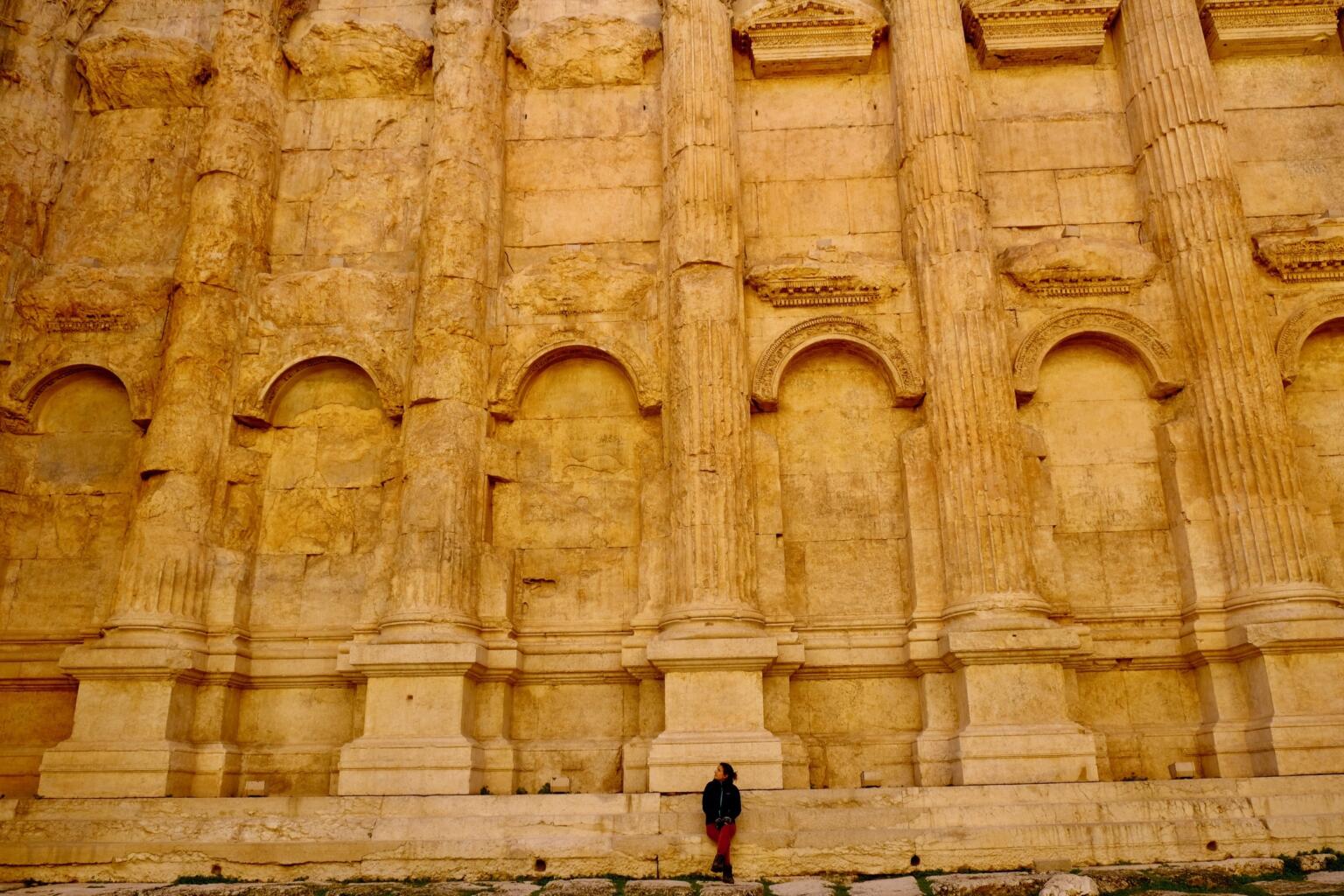
The Broke Backpacker is supported by you . Clicking through our links may earn us a small affiliate commission, and that's what allows us to keep producing free content 🙂 Learn more .
The Chouf Reserve , the Cedars of God , and the Baatara Gorge are among Lebanon’s most impressive natural areas.
Sprinkled in-between the villages in the mountains are some truly beautiful monasteries, rivers, forts, and ruins.
Remember that one can drive from the southern tip of Lebanon to the northern frontier in less than half a day. There really is a ton of awesome places to explore in a concentrated area. Backpackers can achieve an ideal balance of visiting ruins, soaking in the culture, eating tasty food, hanging out at the beach, and hiking—all over the course of just a day or two.
Lebanon certainly has something for every keen backpacker. Now, let us take a look at some of your itinerary options for your epic Lebanon trip…
Best Travel Itineraries for Backpacking Lebanon
Places to visit in lebanon, top things to do in lebanon, backpacker accommodation in lebanon, lebanon travel costs, best time to travel to lebanon, staying safe in lebanon, how to get into lebanon, how to get around lebanon, working in lebanon, what to eat in lebanon, lebanese culture, some unique experiences in lebanon, final advice before visiting lebanon.
Below I have provided a few Lebanon travel itineraries to help you make the most of your time in the country.
These routes are just suggestions based on the itineraries I utilized during my time spent backpacking Lebanon. Each of these routes can be customized or reworked to fit your interests and schedule.
#1 Lebanon 7 Day Itinerary: Highlights of Lebanon
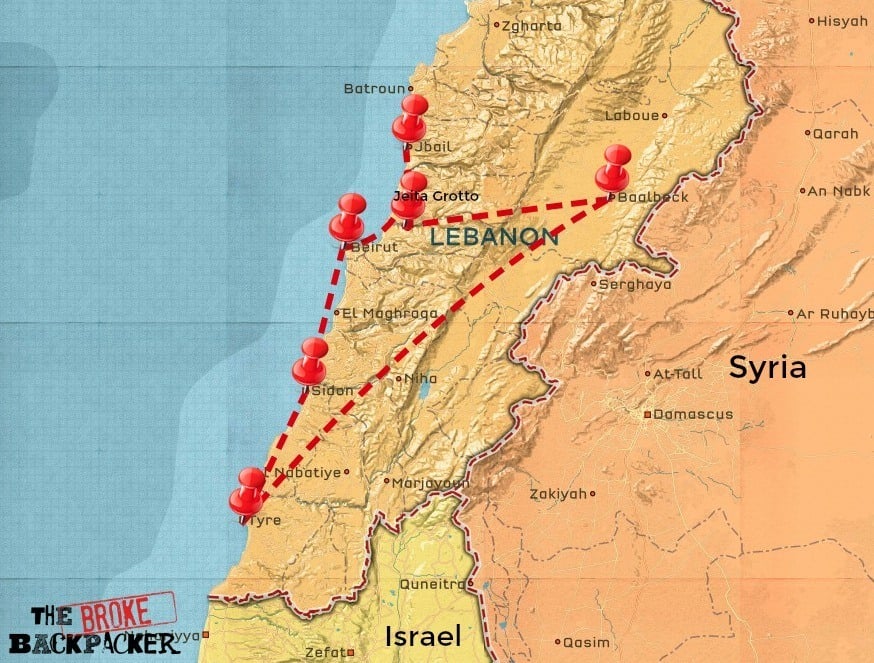
To start your trip, you should dedicate at least one full day to exploring Beirut . You can easily spend two or three days in Beirut, but because of time limitations, one full day will have to do.
From Beirut, you can head south and explore Saida and Tyre . Spending the night in each city is well worth it, especially in Saida as it is bigger than Tyre.
From Tyre, you can make the drive/take buses to the Bekaa Valley . In the town of Baalbek , you will find the most incredible Roman ruins I have ever seen. Because of the distance between Tyre and Baalbek, you should opt to stay the night in Baalbek.
Your last few days can be split between Byblos and Beirut. From Byblos, you can easily make day trips to check out the truly spectacular Jeita Grotto and Baatara Gorge (home to the famous 200-meter waterfall).
The distances between all of these places are never more than a couple of hours, more, however, if you are using public transportation. If you don’t want so much go-go-go and nightly accommodation changes, you can base yourself in Beirut, Saida, and/or Byblos and just day trip from there.
#2 Lebanon 10 Day Itinerary: From South to North
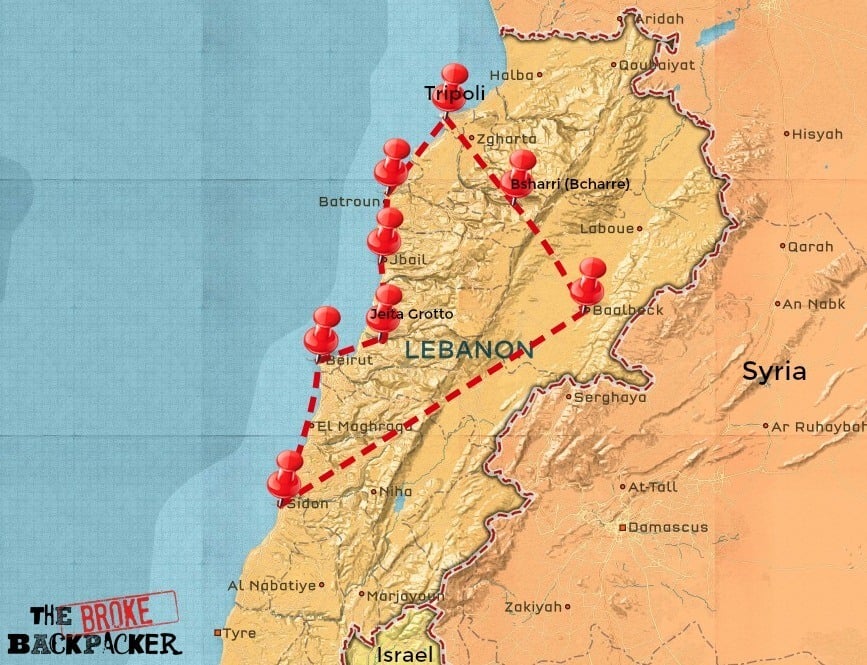
So what is worth seeing in Lebanon with a few extra days? The short answer: LOTS. Tripoli in the north of Lebanon is an interesting city to visit, though I must say that Tripoli is not for everyone…
On one hand, Tripoli is loaded with ancient mosques, an impressive hilltop castle, great food, and a diverse population. On the other, it is a very chaotic city: polluted, noisy, and massive. I personally like discovering chaotic Middle Eastern cities… but in small doses.
The drive from Beirut to Tripoli does not have to be done in one shot. Spend the night in Byblos and/or Batroun and save only one full day for Tripoli.
Rather than head to Tripoli, an alternative option is to spend more time discovering Lebanon’s interior. The Chouf Reserve and Cedars of God are gorgeous and prime destinations for hiking and camping (camping in non-winter months only).
#3 Lebanon 2 Week Itinerary: Cities, Coast, Mountains, and Ruins
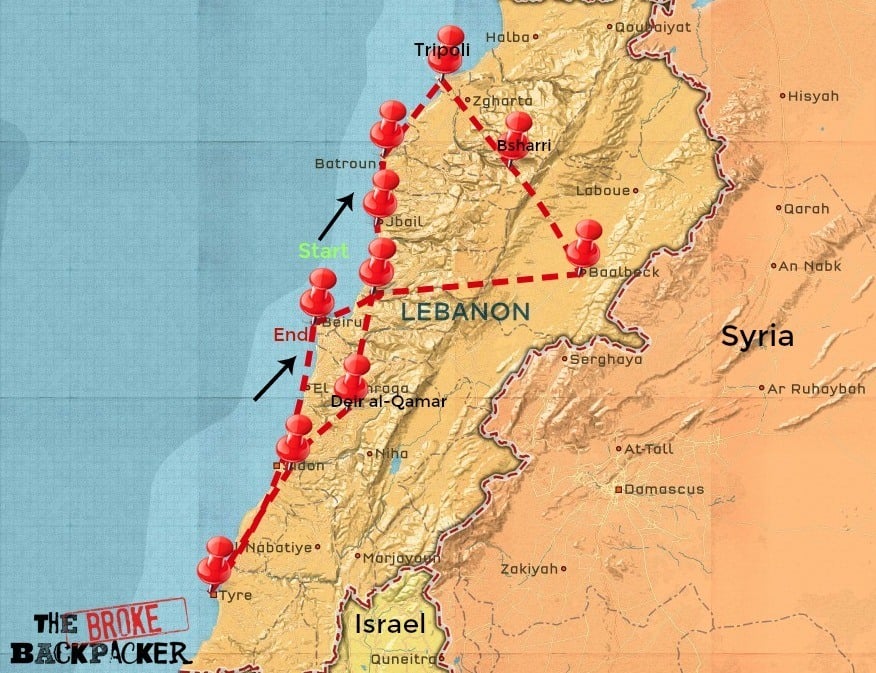
Instead of starting your journey in the south, head north of Beirut . Stop off at Byblos , Batroun , and Tripoli , before making the drive inland to Bcharre . I recommend staying in Bcharre for at least two nights.
In the winter, Bcharre almost looks like a town you might find somewhere in the Alps. There are lots of cool monasteries and hikes to go on in and around Bcharre.
Depending on road conditions, you can access the Bekaa Valley via a mountain road that passes by the Cedars of God reserve. Note : in the winter (or after the first big snow), crossing from Bcharre to the Bekaa Valley is impossible. The road is buried under snow.
Again, depending on road conditions, you can head towards the Baatara Gorge depending on road conditions. Another fine town for a stopover is Deir El Qamar —probably the most beautiful Lebanese town I visited.
You can finish your Lebanese adventure down south in Saida and Tyre before circling back to Beirut.
From the sea to the mountains, Lebanon is loaded with awesome places to explore. Save for a few pockets near the Syrian and Israeli borders, there really are not many “no go” places in Lebanon.
Beirut is the undisputed social, political, and commercial artery of the country. It’s all happening in Beirut.
It should be known that since the civil war in Lebanon ended (and long before it started as well), the country has been divided (unofficially) into Christian areas and Muslim areas, with crossover from both groups present in many regions as well.
Southern Lebanon and the Bekaa Valley are now Muslim majority, where in places groups like Hezbollah have a die-hard following. Tripoli in the north is also a Muslim majority.
The central hill country overlooking the coast is majority Christian. In fact, since most, if not all, of the Christians formerly living in the south fled during the war and resettled in the central hills and coast, there has been an insane development explosion in this part of the country.
All of that said, the treatment of backpackers does not change in the slightest from one region to another.
Some of the most magical places in Lebanon are products of its rich historical legacy. Its ancient forests and cedar groves, seaside fortresses, archaic churches, mosques, monasteries, and old souks all come together to compliment and highlight the diversity of the country.
Let’s take a look at some of the top places to visit in Lebanon…
Backpacking Beirut
The Lebanese capital of Beirut suffered a HUGE amount of devastation during the Lebanese Civil War and is just now beginning to resemble how it looked pre-war… in places.
As I said, Beirut is Lebanon’s cultural, political, nightlife, and commercial center. Because of that fact, Beirut offers a taste of Middle Eastern-flavored cosmopolitan life. I have heard Beirut referred to as the “Paris of the Middle East.” I dug deep, but nowhere in my imagination could I find the link between the two cities.
That said, I really enjoyed my time in Beirut! Some of the top places to check out in Beirut include:
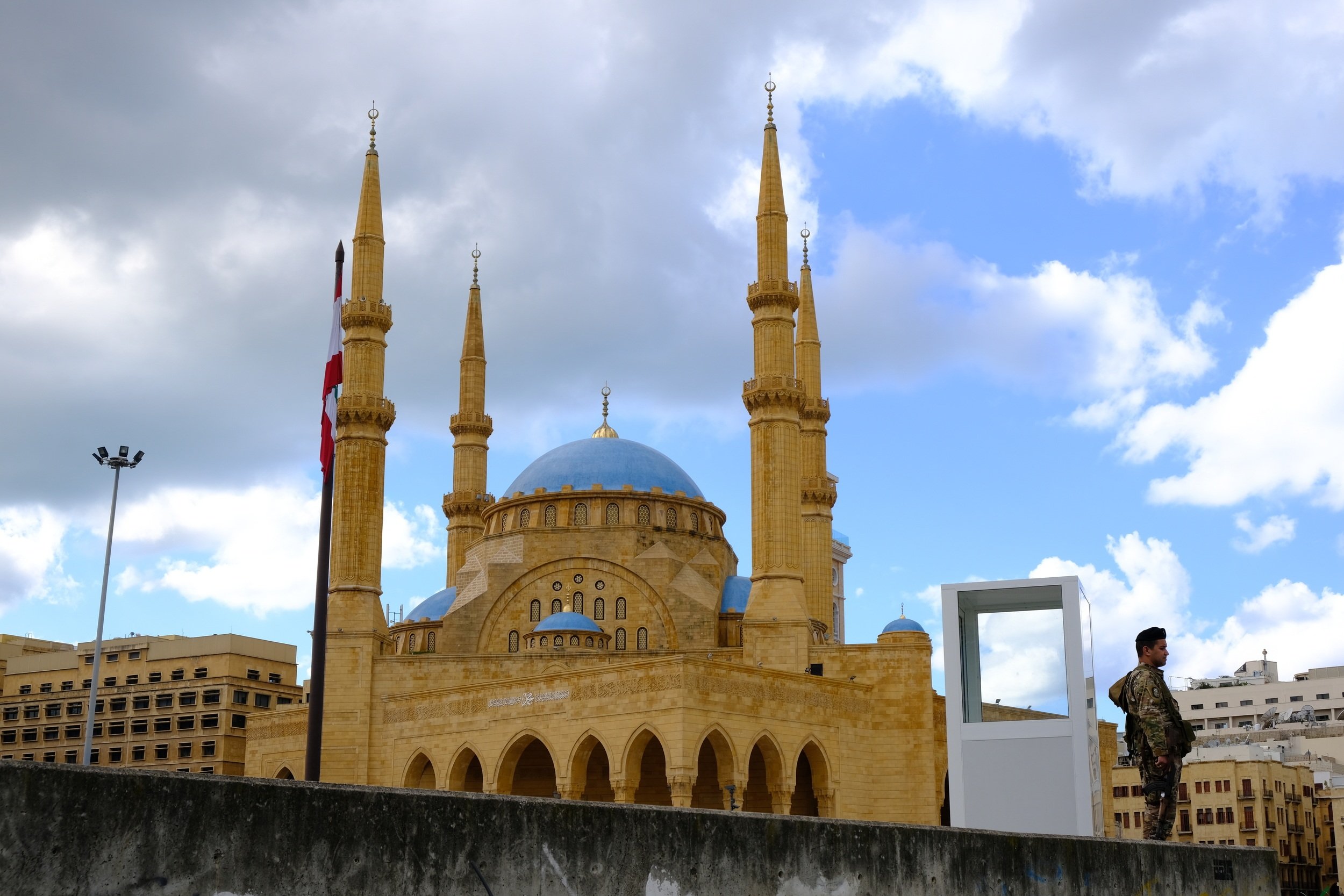
- Hamra neighborhood: Hipster, university-vibes, good live music.
- Mar Michael : Another hipster enclave lined with nice bars, restaurants, and shisha spots.
- Mohammad Al-Amin Mosque : Massive mosque dominating an entire city block. Close to downtown. The army dudes out front told me that non-muslims could enter after prayer time for photo ops.
- Raouche : Rock formation in the sea. You can wander around on the bluffs just opposite it for good views.
- Souk el Tayeb : One of the few organic/local food product markets in Beirut.
- Vieux Quartier de Gemmayzeh : the best place to see typical pre-war Lebanese architecture.
- City Center : Full of boutique shopping and high-end cafes. Not really a backpacker scene but worth a walk through, considering all of the restoration work that has happened here.
- Abandoned building exploration : There are endless dilapidated, war-ravaged buildings still standing in Beirut. Some are quite interesting to explore. Be careful though!
- Old Holiday Inn : Once the largest hotel in Beirut, the Old Holiday Inn became a symbol of the Lebanese Civil War. Its heavily bombed skeleton still stands near downtown Beirut today.
My favorite place to eat meze in Beirut was at Cafe Em Nazieh . Great vibes/food, good shisha, and all around beautiful space to grab a drink and chill.
Backpacking Jounieh
If you are passing through, Jounieh warrants a few hours of your time. Check out the old town streets, shops, and cool architecture of some of the ruins. Jounieh is also famous for being an epic paragliding destination if that is of interest to you.
A few minutes drive from Jounieh will bring you to the town of Harrisa (not the spice FYI). From here, you can catch some pretty stunning views of the sea (if the pollution isn’t too bad) stretching all the way to Beirut and north to the mountains. The Greek Orthodox church in Harrisa has some very impressive mosaic work covering the walls.
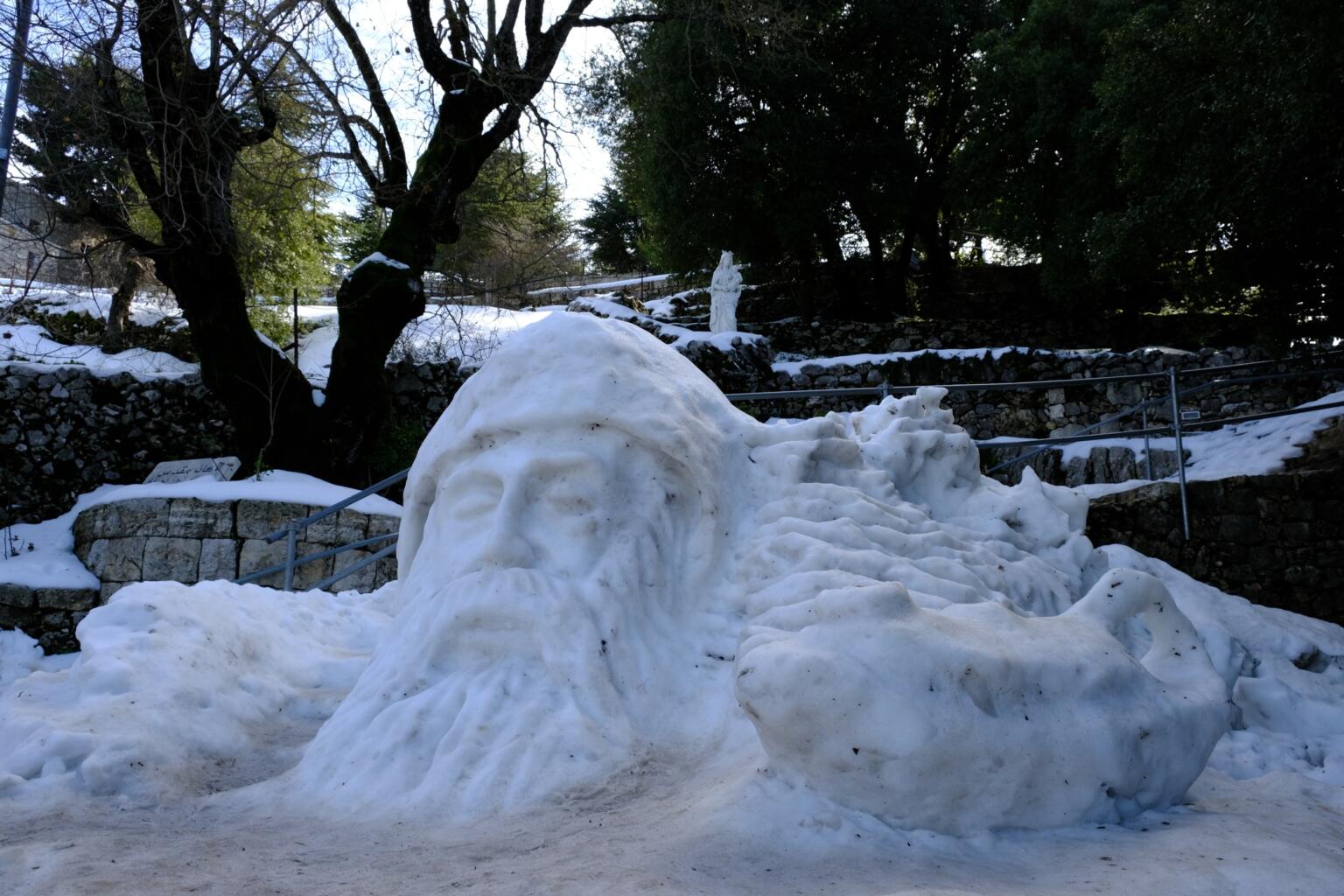
If you have even more time, the trip into the mountains from Harrisa to the Saint Charbel Monastery is well worth it.
Backpacking Byblos/ Jbeil
Byblos (or Jbeil depending on who you ask) is one of the oldest continuously inhabited cities in the world. Archaeologists have found evidence of a permanent human settlement here dating back to 8800 BC!
Byblos has a very attractive, albeit a bit touristy, old town with souks, nice cafes with terraces, and plenty of spots to grab a bite.
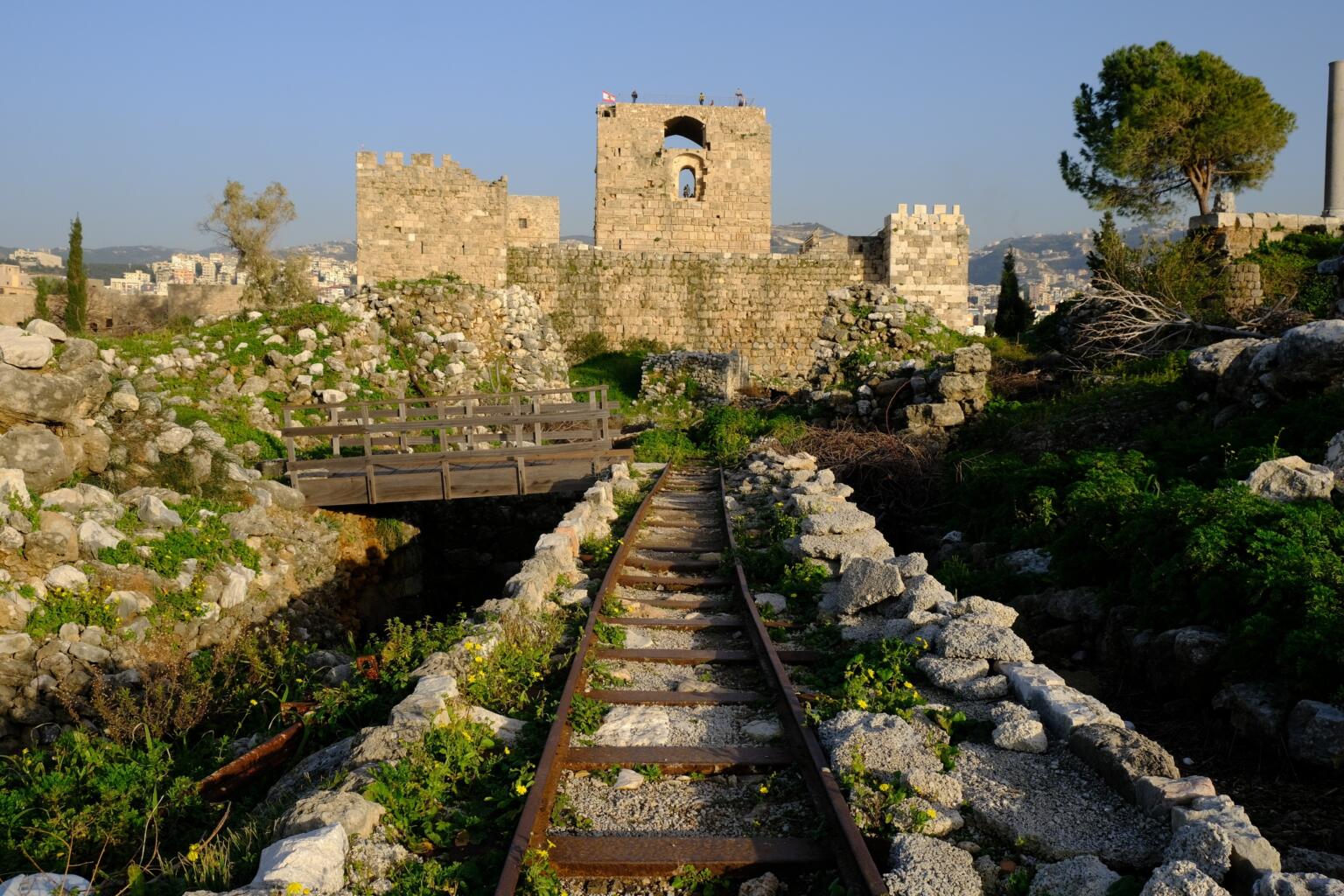
Be sure to check out the Crusaders Castle , built in the 12th century. Entrance to the castle is 8000 LBP. The complex also features Roman columns and Phoenician ruins.
Unlike other historical sites in Lebanon, I was pleased to see a huge team of workers doing restoration on the castle and other sites within the complex. The entrance fees are actually doing what they are supposed to do, hurray! The Rock restaurant is an excellent place to grab a huge meze feast.
Backpacking the Jeita Grotto
A recent contestant to join the “ Wonders of the World ” list, the Jeita Grotto is the most impressive natural phenomena in Lebanon and perhaps in the entire Middle East.
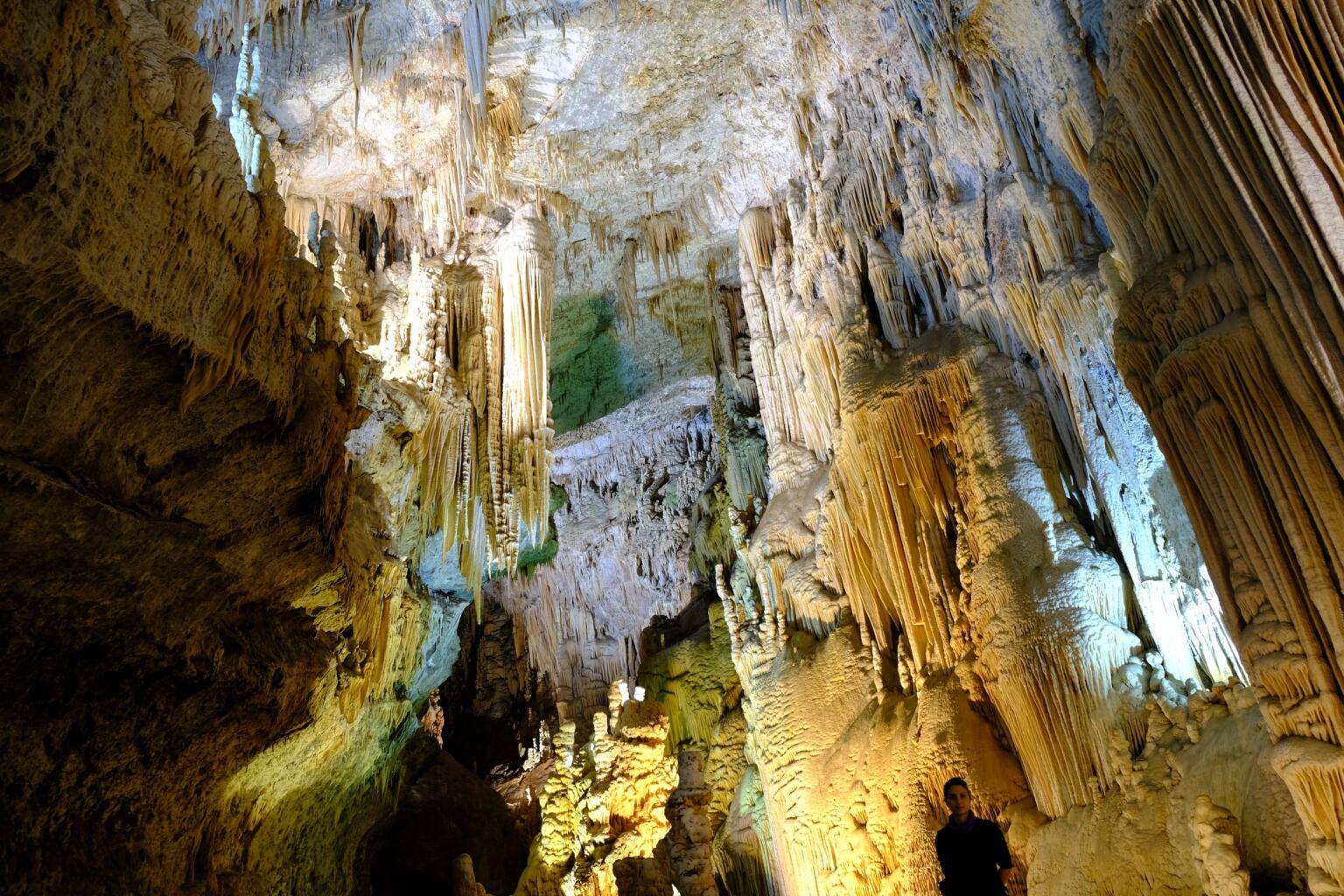
The Jeita Grotto is a system of two separate, but interconnected karstic limestone caves spanning an overall length of nearly 9 kilometers! The caves are situated in the Nahr al-Kalb valley within the locality of Jeita, less than 20 km from Beirut .
Entrance to the Jeita Grotto is $12 USD . Admission includes a cable car ride and a short boat journey within the lower cave section.
Note : in the winter or after periods of heavy rain, the lower grotto may be closed . When it rains heavily or there is lots of snowmelt, the lower cave gets totally flooded and becomes inaccessible.
Honestly, pictures of the Jeita Grotto do not fully prepare you for how spectacular and massive the inside of the cave is. Some of the biggest stalactite formations in the world are found inside the Jeita Grotto.
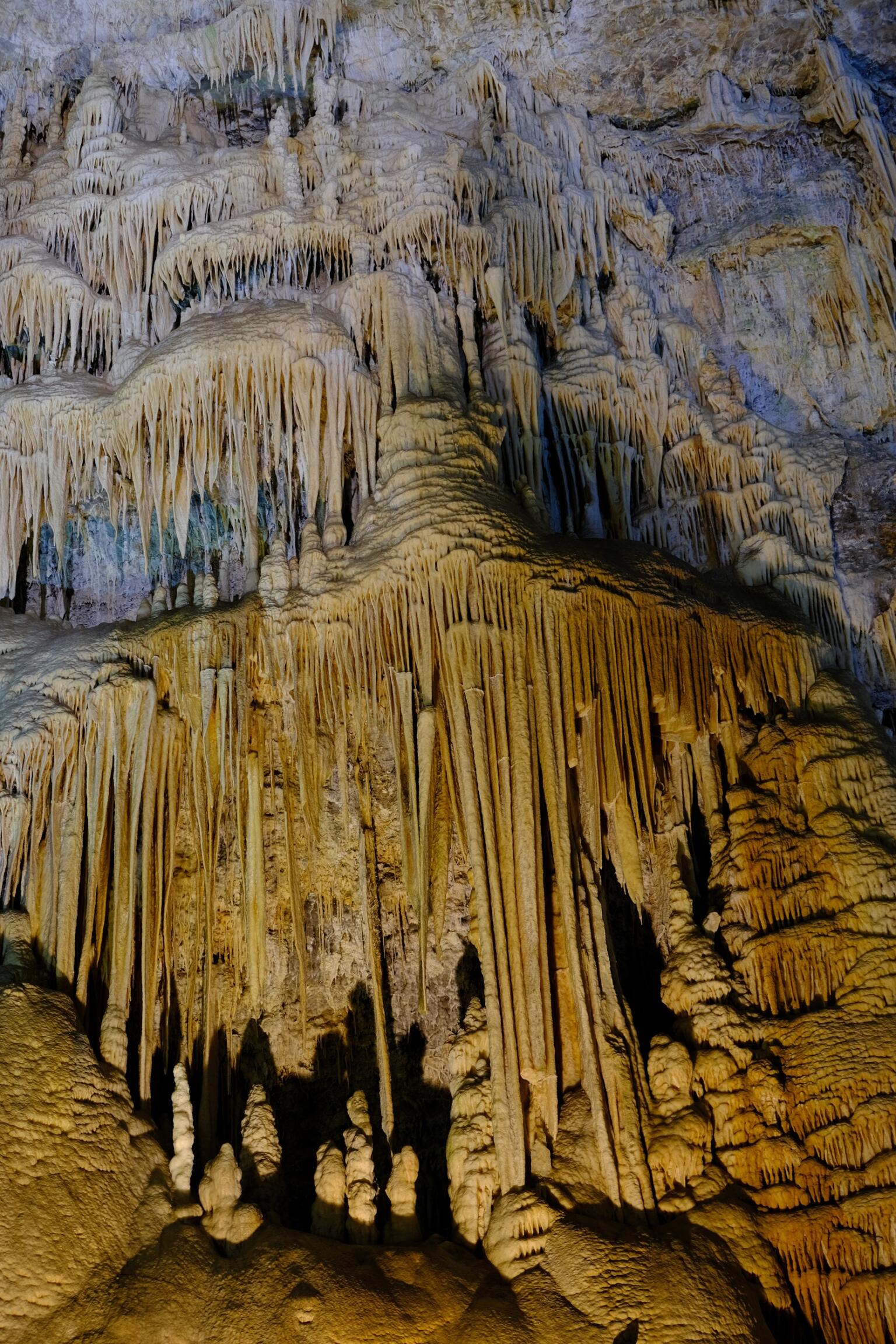
It took millions of years for this cave to form. Obviously, avoid touching the rock, littering, or doing anything that may disrupt the fragile ecosystem of the cave. Photography is forbidden in the cave and this rule is enforced by the dudes stationed every 50 meters on the footpath.
Big thanks to Miss Pierrette and Dr. Haddad for granting special photography access to me for this article.
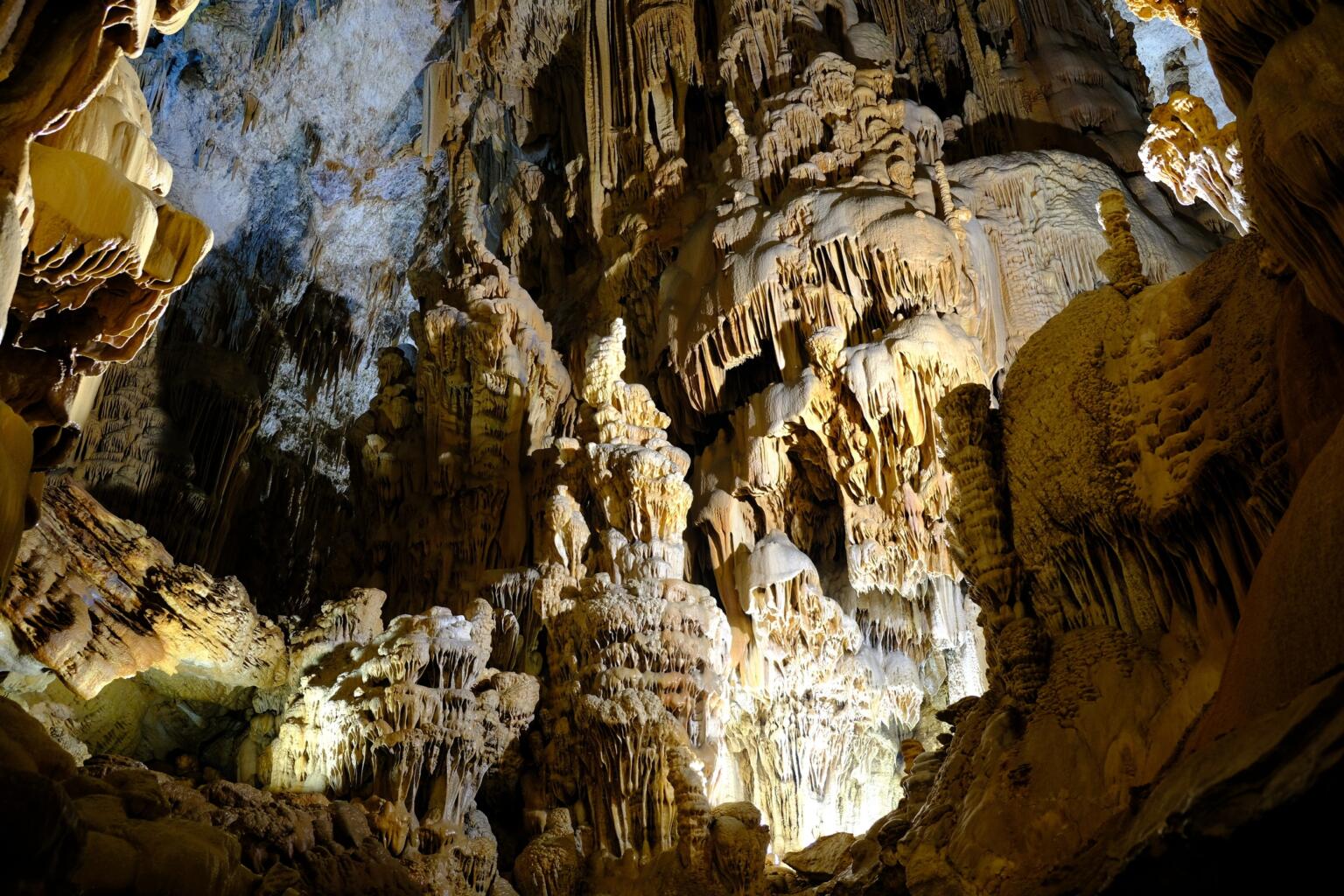
Backpacking Batroun
Batroun is another fine coastal town north of Byblos. I found Batroun to be the most attractive, clean, medium-sized coastal town north of Beirut.
You can dedicate a day to walking around Batroun without boredom. Like Byblos, Batroun is an ancient city that has been occupied for thousands of years by various groups.
The old port area is still an active fishing port where you will find the locals grilling their fresh catch, preparing the nets, and just generally chilling out by their boats when not out at sea.
Located just next to the port is the Saint Georges Cathedral . Be sure to walk out a bit north of the port area to see the old Phonecian sea walls .
Also worth a look is the Diaspora Square which has various buildings paying tribute the Lebanese diaspora living abroad.
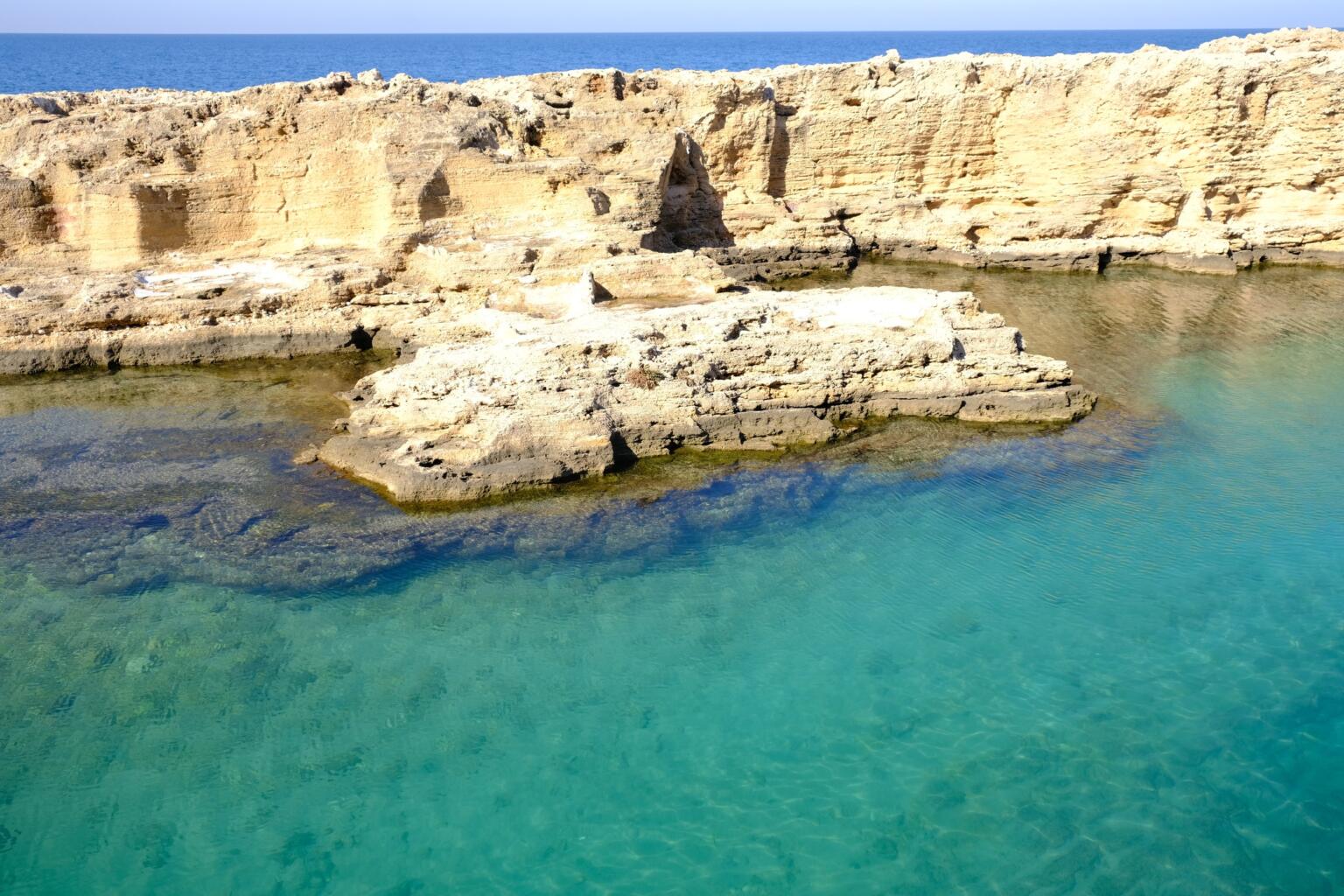
Batroun does have an(if the pollution isn’t too bad) O ld Souk area as well, but it is rather small and underwhelming.
Ray’s Cafe is an excellent place to grab lunch or a coffee with sea views. For grilled fish at a decent price, hit up Chez Maggi (roughly 50 meters from Ray’s).
Backpacking Tripoli
Lebanon’s second biggest city could not have more of a different vibe than Beirut. Tripoli is indeed a full-on sensory experience of a different variety.
In my opinion, you can see what Tripoli has to offer in just one day, but if you do find yourself in Lebanon’s north, it would be a shame to miss out on Tripoli.
Though Tripoli might have horrible traffic jams that rival Beirut, a serious pollution problem, dirty streets, and, a large impoverished population, Tripoli also offers amazing street food, a really cool Old Souk area, and plenty of medieval mosques, forts, and churches to dazzle your historical fancy.
While it is true that Tripoli has a reputation for being one of the more dangerous cities in Lebanon, the violence Tripoli has experienced in recent years has died down considerably.
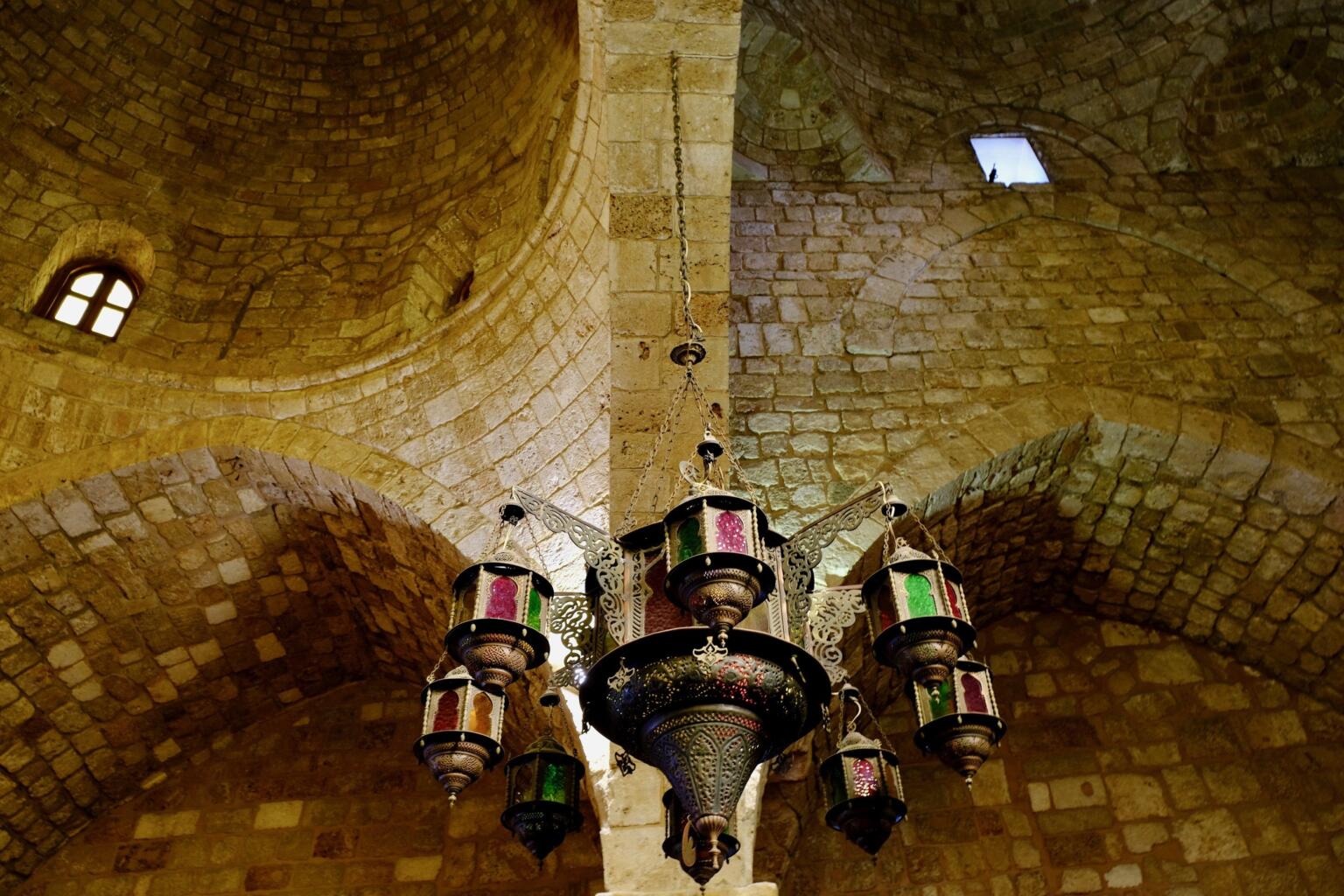
Likewise, the sporadic clashes between rebels and government forces that took place a number of years ago happened well outside of the city center.
If you just stick to the center, the old souk area, and the coast, there is pretty much zero risk of encountering any issues unless you happen to be very unlucky. Certainly, don’t skip Tripoli because you have heard it is unsafe.
Tripoli is massive so taking a taxi is certainly the way to go if you are trying to get across town. A taxi across the city should cost no more than 4000 LBP.
Top Places to Visit in Tripoli:
- Citadel of Raymond de Saint-Gilles/Tripoli Castle : This hilltop fort was finished in 1103 and is in great condition despit the repeated attacks and seizures it has endured.
- Old Souk : One of the biggest and most diverse souks (markets) I visited in Lebanon. You can find literally anything here. Be sure to haggle when buying stuff!
- Taynal Mosque : A beautiful mosque built in 1336. Photography is allowed inside. Remember to always remove your shoes when entering a mosque.
- Mansouri Great Mosque : One of the oldest and most important mosques in Lebanon.
- El Mina : The somewhat unattractive port area.
- Akra Restaurant : Good meze found near the entrance of the Old Souk. The menu is only in Arabic FYI.

Backpacking Akkar
If you like to hike, the natural areas around Akkar are some of the best in the whole north. You can even hike to old forts and water mills located way out in the bush.
Some of the footpaths can be confusing, so it may be worthwhile to “hire” a local kid to show you the way.
Akkar is home to a staggering number of Syrian and Palestinian refugees, so expect to see camps spread throughout the territory.
The Qamouaa Plain is not in Akkar, but rather a few hours drive to the southeast. In the Qamouaa, you can find some equally chill hiking opportunities even in the winter.
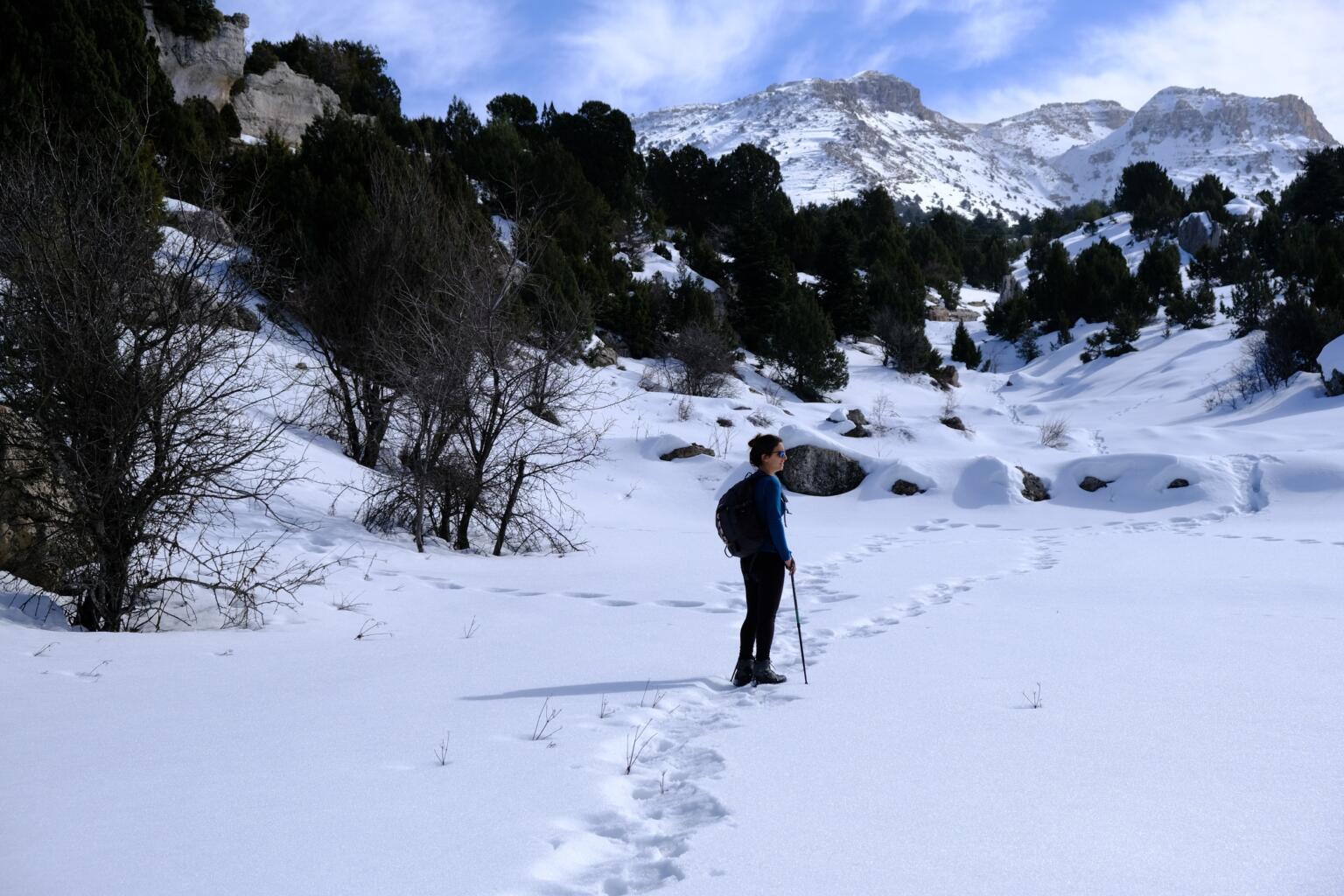
Note: Large amounts of snow can be present in the winter. If planning a trek keep in mind that you will likely encounter snow above 1400 meters.
You can tackle a short hike in the Qamouaa Forest just 10 minutes outside of the settlement of Fnaidek.
Backpacking Bcharre
Bcharre is one of my favorite places in Lebanon for several reasons. For one, the town is located just above the Kadisha Valley —one of the most historically and naturally significant valleys in the country.
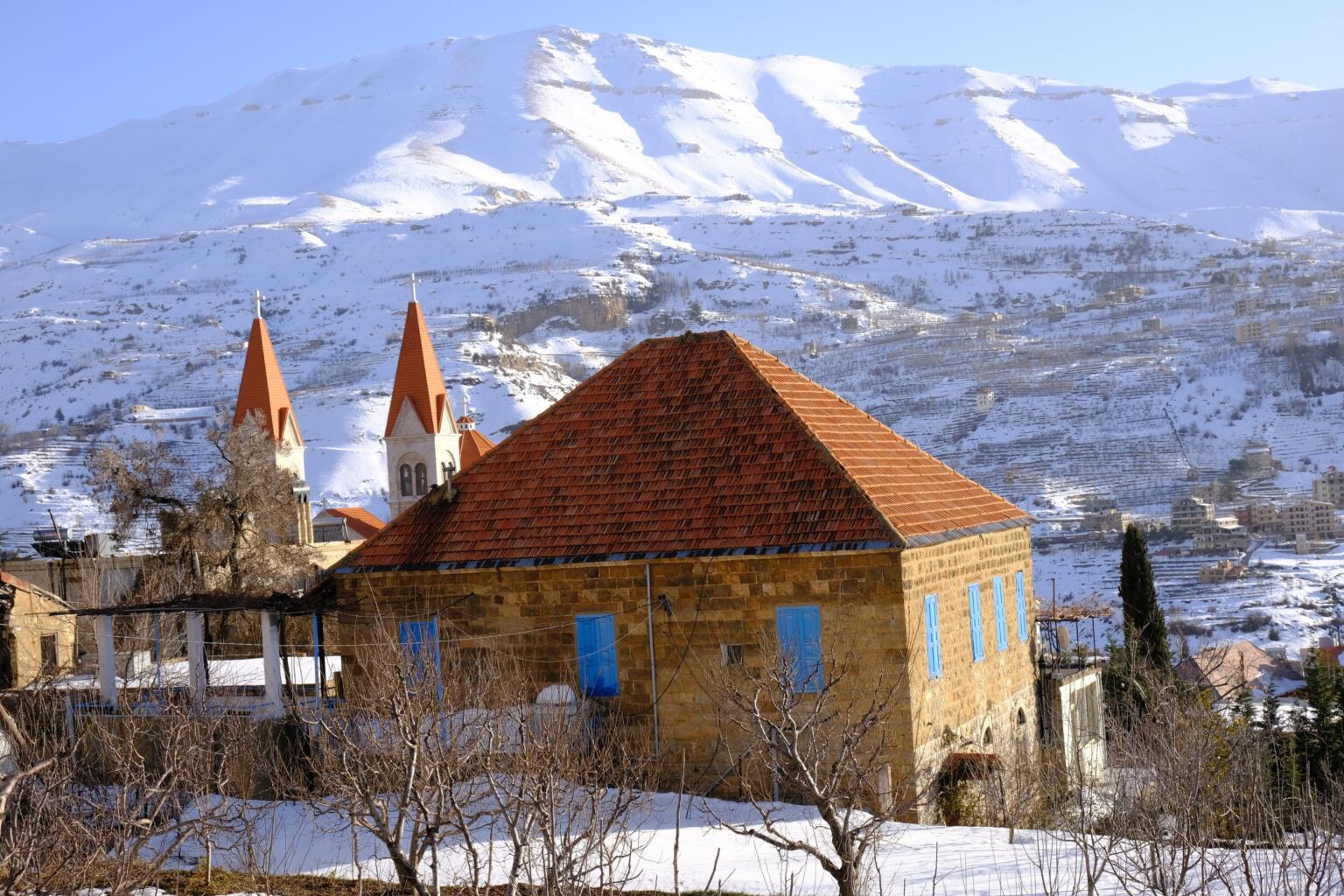
Here you will find monasteries carved out of the rock, pristine olive groves, and part of the Lebanese Mountain Trail footpath.
Likewise, the Cedars of God reserve and ski station is just 15 minutes up the mountain from Bcharre. Even in the winter, you can opt to drive (or hike) to several of the low-lying and super impressive monasteries down in the valley.
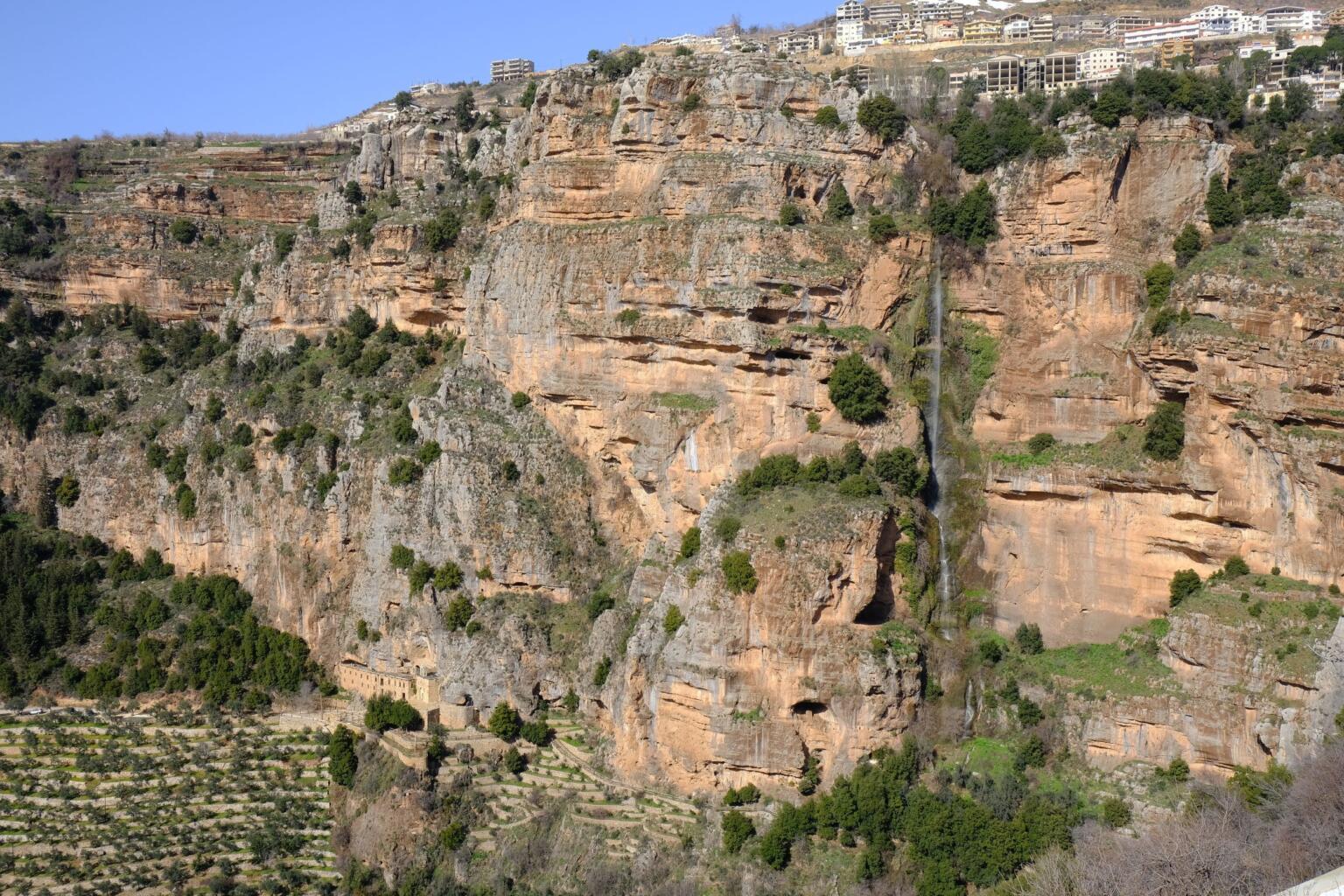
The Deir Mar Antonios Qozhaya Monastery dates back to 1000 ad and is very well maintained. Entrance is free and you can opt to spend the night (for a fee) so should you choose.
Another awesome monastery to visit is the Deir Mar Elisha Monastery . Somehow, its creators dug this beautiful building out of the rock and managed to make it all work. There is also an epic waterfall just a 5 minutes walk down the path from the monastery.
Backpacking the Cedars of God
The Cedars of God are very impressive as they are some of the oldest and largest cedar trees on the planet.
At the same time, when I visited was on a Sunday in January, it was true pandemonium involving thousands of people. It was a horrible experience with people blasting loud music, insane traffic jams, and, locals throwing trash everywhere.
By days end, there was so much trash and debris left by the locals that it looked like the aftermath of a week-long music festival involving hundreds of thousands of people. So sad. Definitely not the peaceful experience I was after.
I am sure this was just a fluke experience, but seriously avoid going to the Cedars of God on the weekends at all cost.
Also, the actual number of cedar trees is very small indeed. Don’t expect to find a massive forest. For that, go to the Chouf.
Note : there is a military base located just next to the cedar reserve and access is limited in places.
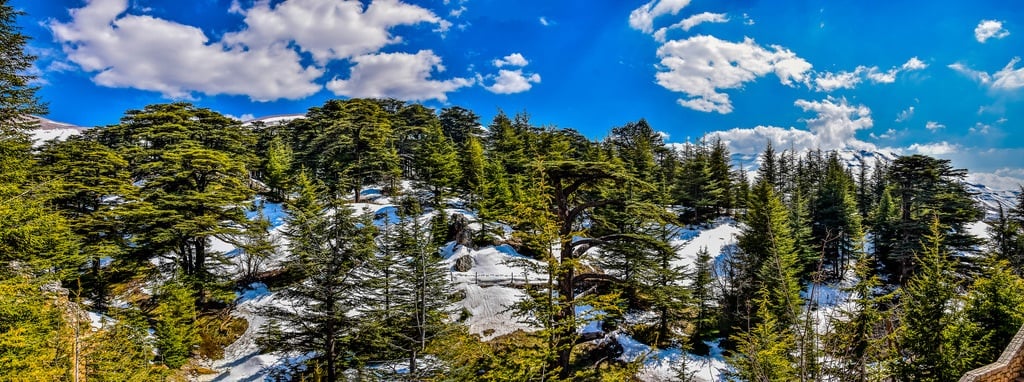
Backpacking Baalbek and the Bekaa Valley
Baalbek is not to be missed under any circumstances. The Bacchus Temple and the surrounding ruins are very, very impressive and worth every bit of the 15,000 LBP ($10) entrance fee.
Nowhere else on earth can you find such large and well preserved Roman ruins. The whole archaeological site is massive and you can easily take 3-4 hours to explore it properly.
Other highlights of Baalbek include a visit to the Sayyida Khawla Mosque . This mosque features some truly extravagant mosaic work and was one of the more impressive mosques I saw in Lebanon.
You need to go through a security control (a dude watching football on his phone with an Ak-47 slung across his lap) in order to enter, but otherwise, it is pretty chill.
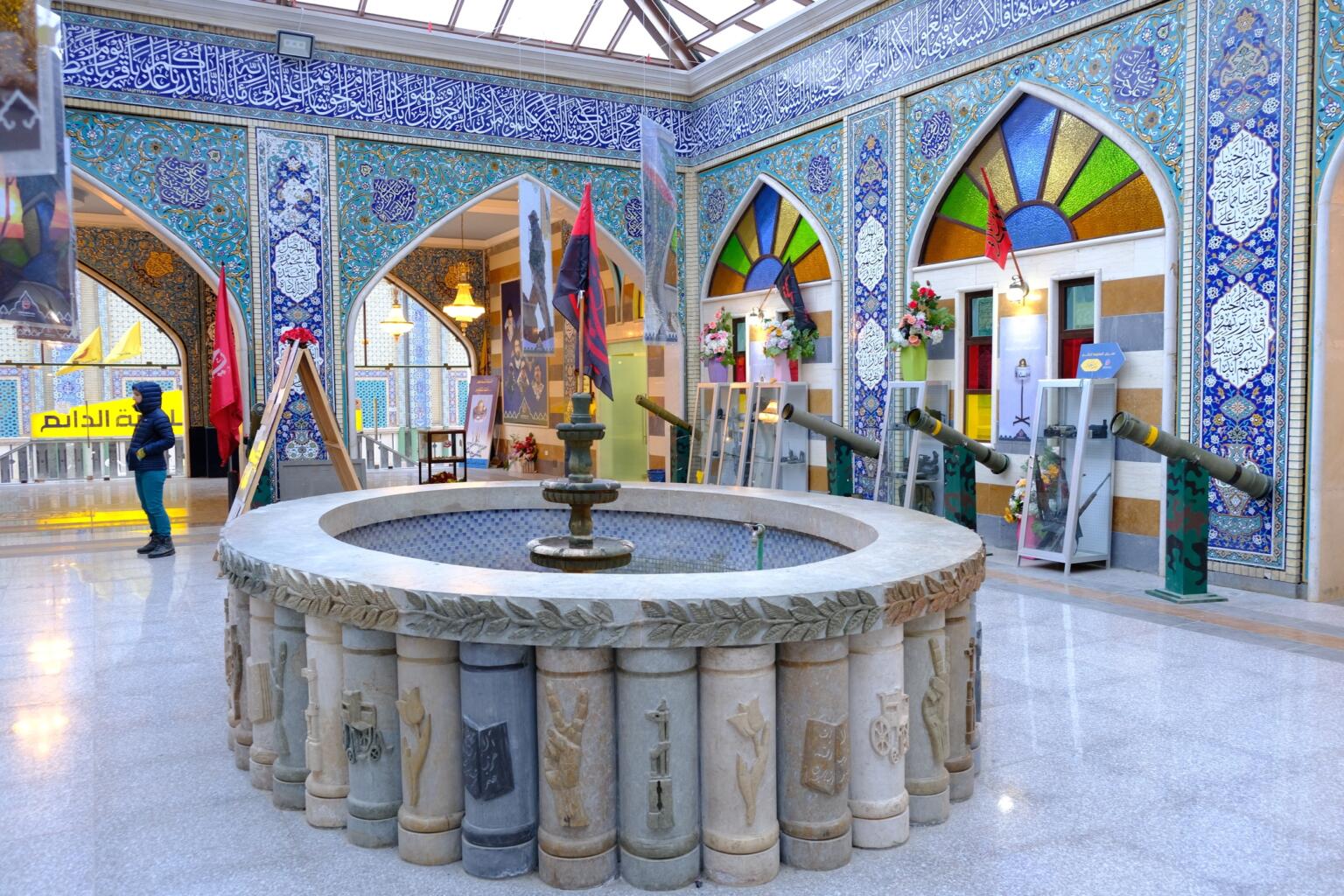
Located on the same property as the mosque is the Islamic Resistance Support Association War Musem (IRSA) , Hezbollah’s main fund-raising institution. The museum is a pretty fascinating glimpse into the history and propaganda machine of Hezbollah and its co-conspirators.
The IRSA is a Hezbollah institution established in 1990 to manage and regulate the organization’s fund-raising enterprise. Originally, the institution was subordinate to Bayt al-Mal (Hezbollah’s bank, but IRSA’s subordination has been changed).
According to unconfirmed information, today the IRSA is directly under the control of Hezbollah secretary general Hassan Nasrallah.
The Baalbek Guest House is a great place to spend the night. Includes an awesome full-spread breakfast.
I had a hard time finding a proper grocery store in Baalbek, but there are plenty of cheap falafel/shawarma places on and off the main drag. El Kahyam is a great/cheap falafel spot.
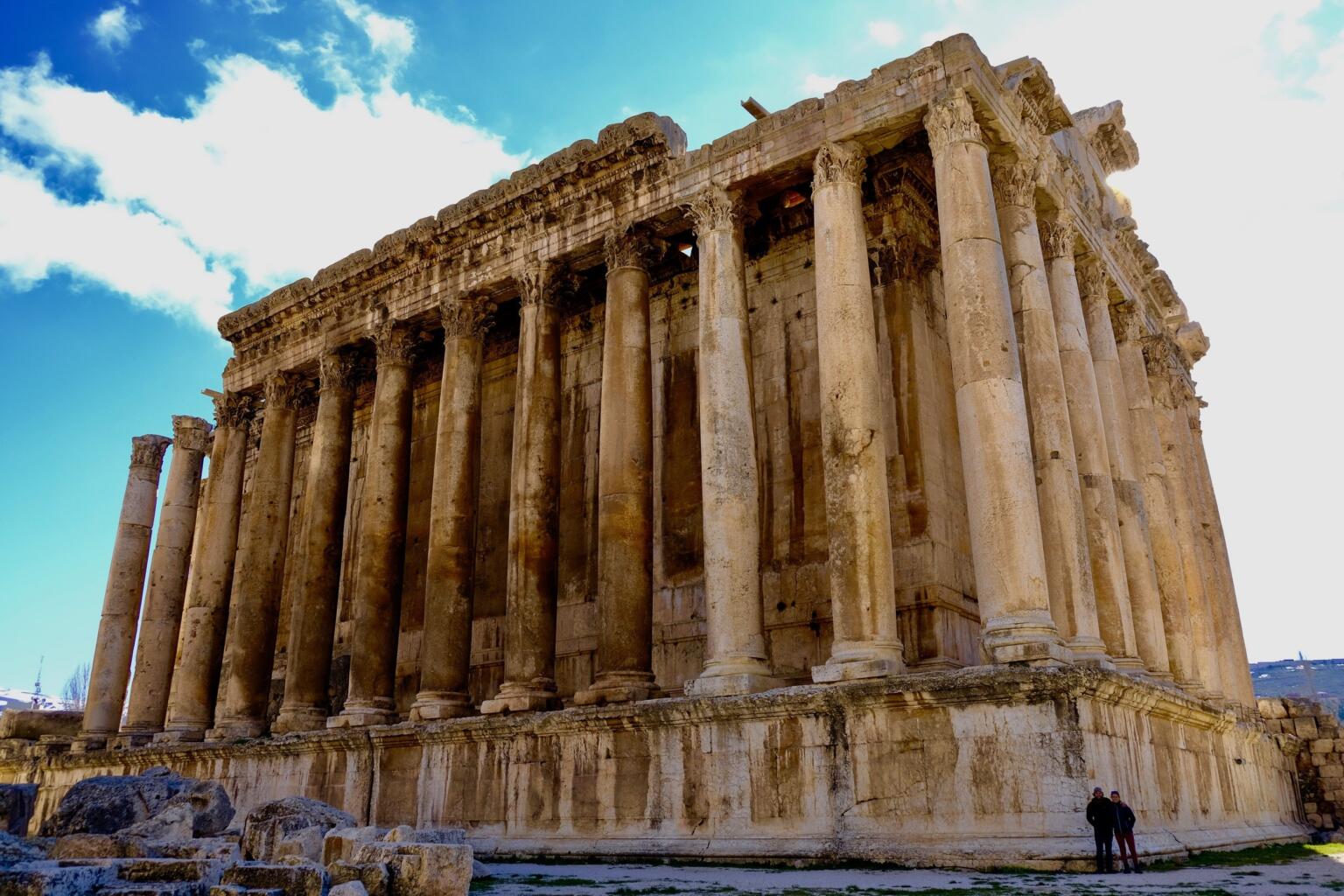
In the Bekaa Valley, there are also massive Syrian and Palestinian refugee camps spread throughout the territory. Apparently, the Lebanese government does give them some assistance in the form of temporary tent housing as well as access to local social services.
Many refugees work in the agriculture sector that dominates the Bekaa. It was a trip seeing these huge tent villages with satellite dishes mounted on top of the tents. Priorities, right?
Backpacking Anjar
In case you didn’t get enough of the awesome ruins at Baalbek, you can head across the valley to Anjar. At Anjar, you can check out an impressive Omoyiad Citadel , which rivals Baalbek in terms of general acreage.
I’ll be honest with you though: after seeing the Bacchus Temple, the ruins at Anjar are just kind of “meh.”
If possible, visit the Anjar ruins first.
Thanks, Bacchus Temple, you have forever made other ruins in the world pale in comparison.
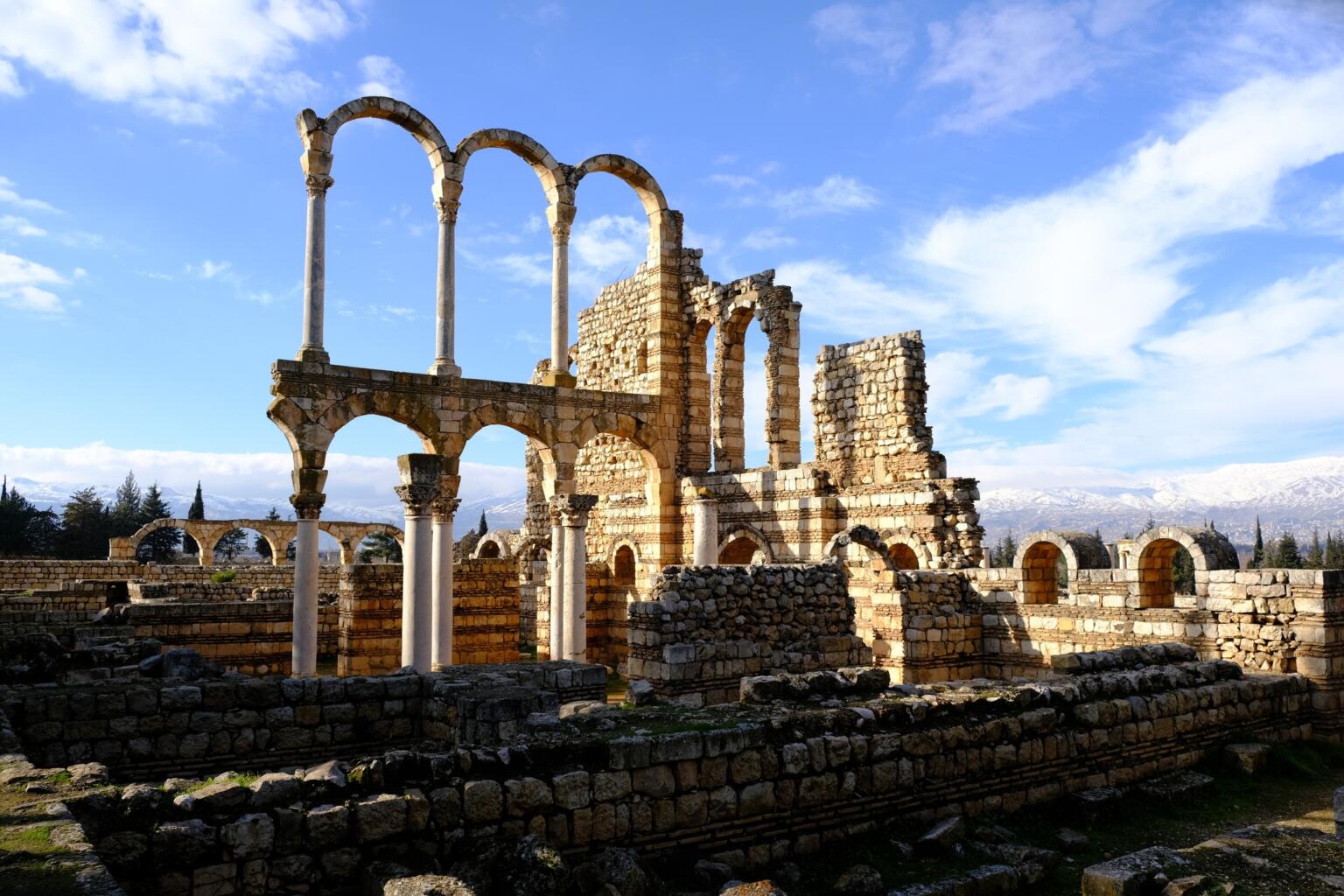
Other than the ruins there is nothing of interest in Anjar, so don’t sleep here. To arrive at Anjar, try to take the back roads if possible as they are dotted with fine pastoral landscapes and vineyards, and far less traffic-ridden than the main road.
Backpacking Ain Dara
For a chill night in a typical Lebanese mountain village, Ain Dara makes for a good stop over. There is nothing particularly riveting about Ain Dara itself but there is plenty of awesome hiking to be found in the nearby Chouf Reserve . A few nice churches, sandwich shops, and several small bakeries rank among the highlights.
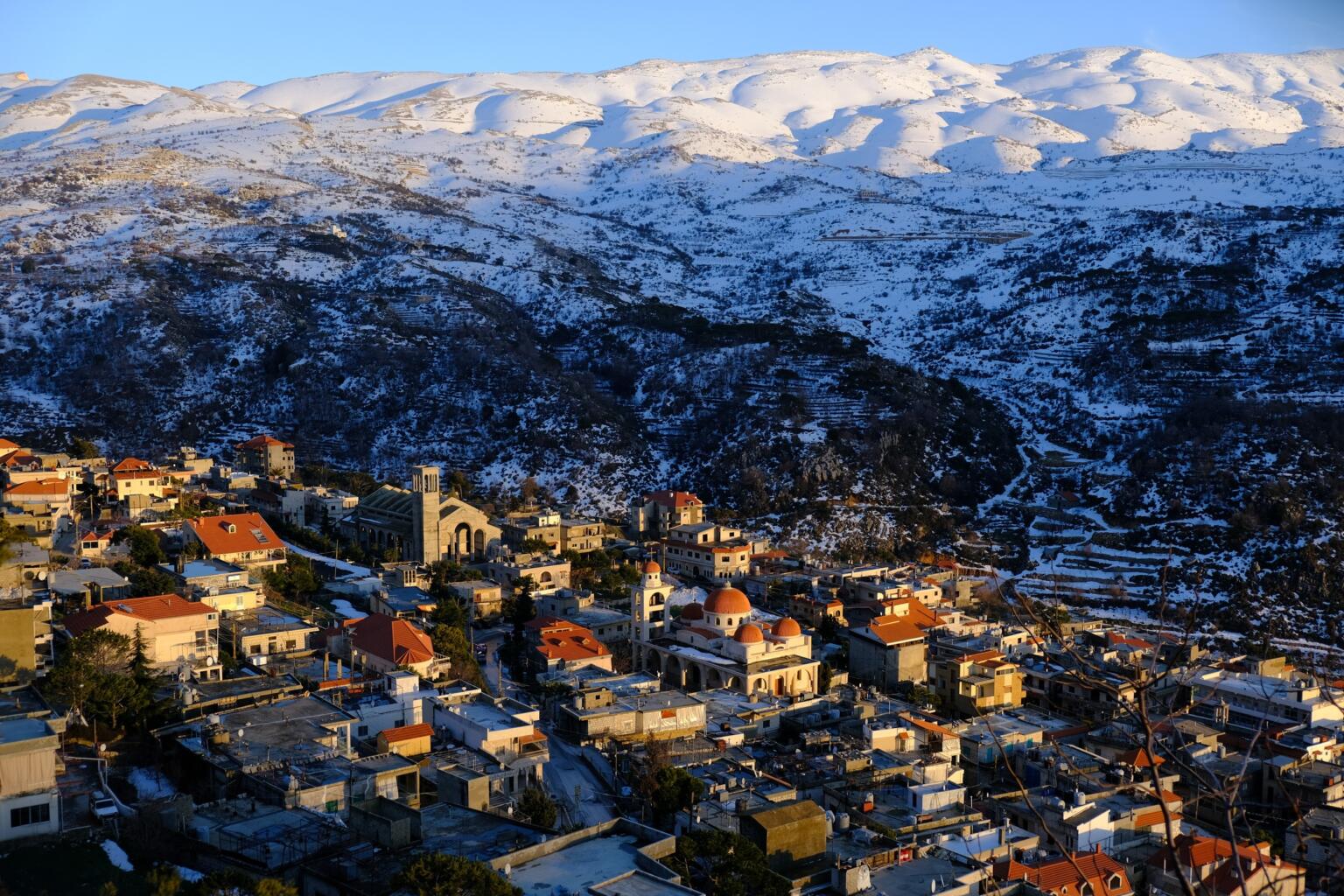
If you are looking for a place to relax, Ain Dara is a good candidate.
Backpacking The Chouf Reserve
Located south-east of Beirut, the Chouf Reserve region comprises a narrow coastal strip notable for the Christian town of Damour , and the valleys and mountains of the western slopes of Jabal Barouk, the name of the local Mount Lebanon massif , on which the largest cedar forests in Lebanon are found.
The Chouf is truly a vast area and is home to several unique animal species including lynx, wolves, porcupines, and wild boar.
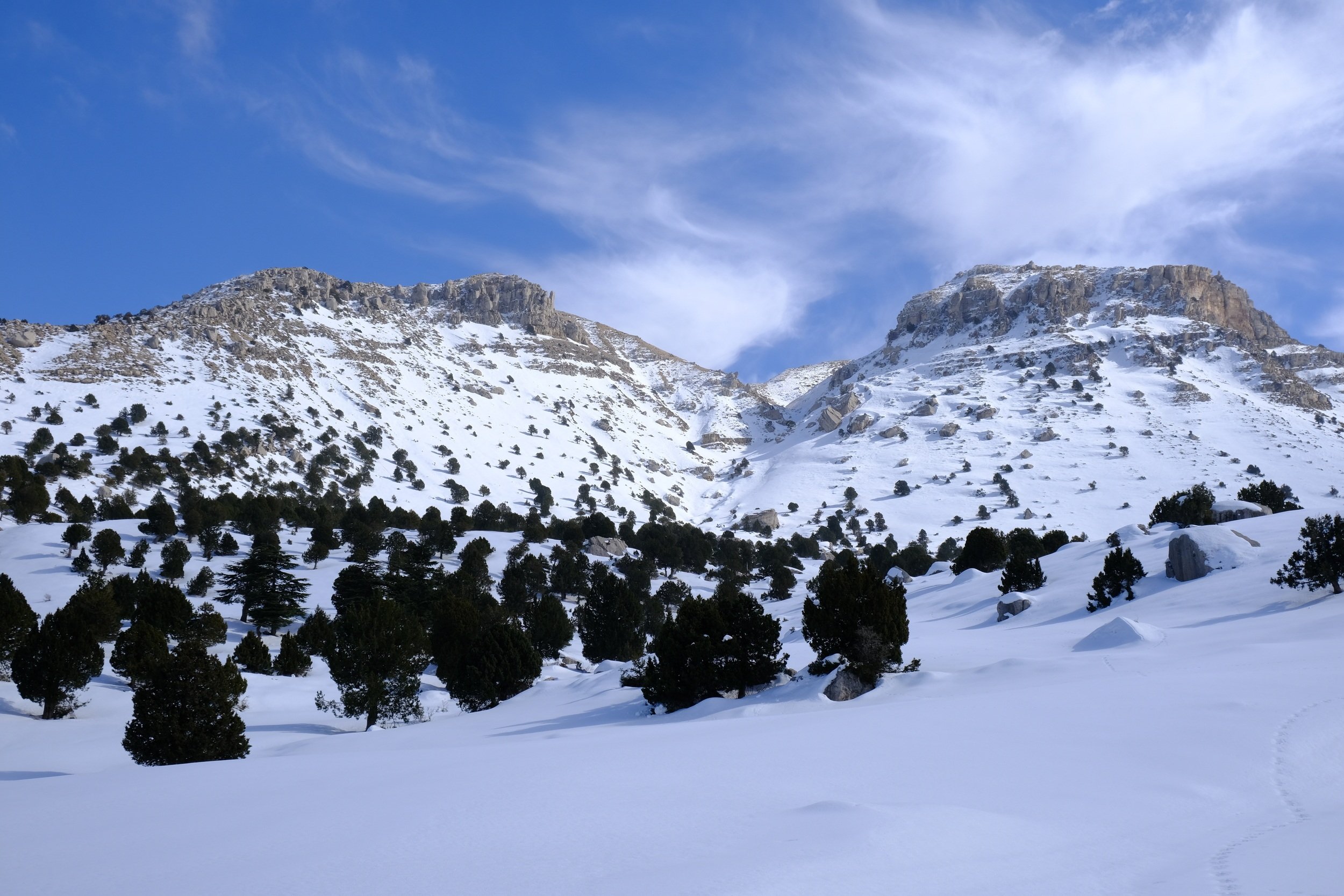
In the summer, the Chouf is perfect for hiking and camping, though the high elevations during the winter are difficult, if not impossible, to access due to heavy snowfall. Accessing the Chouf by car from the Bekaa Valley is only possible when there is not heaps of snow blocking the road.
Backpacking Deir El Qamar
Deir El Qamar is a special place in Lebanon. There are sections of the town with gorgeous stone buildings and well-preserved cobblestone streets.
The main square of the town is dominated by an ancient mosque, which non-muslims can enter (which is true of all mosques in Lebanon FYI).
Nearby is the ultra-quirky, yet impressive Moussa Castle . The Moussa Castle was built by one talented dude over the course of 50+ years. Inside, there are life-sized, mechanized dioramas depicting traditional Lebanese life along with a substantial collection of antique weapons from all over the world.
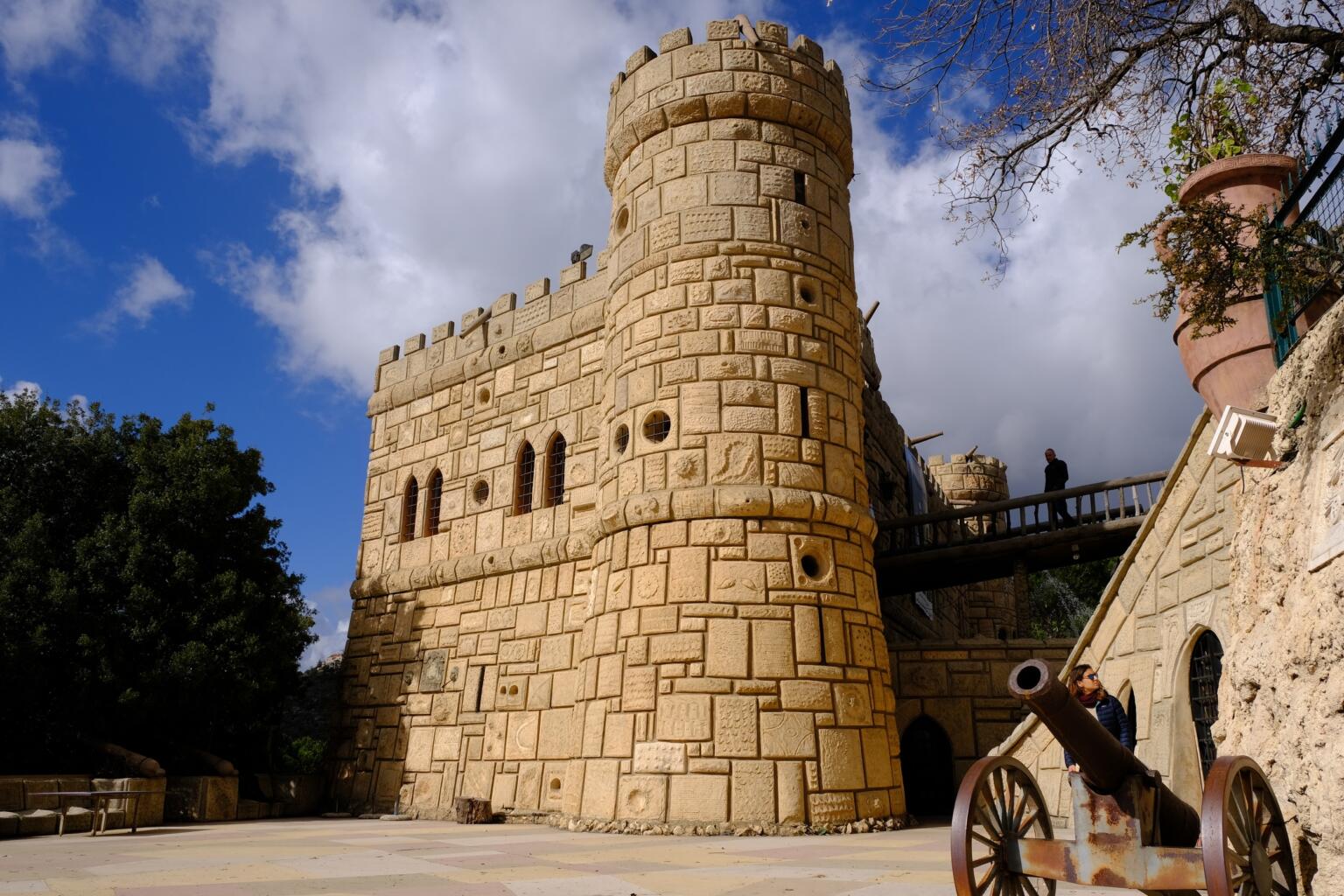
The 15,000 LBP entrance fee to Moussa Castle is overpriced but is worth it considering there isn’t much else going on in the area in terms of attractions.
Once you see the amount of work that went into the building and designing of the castle, the price feels more justified.
Another impressive historical structure in the area is the Beiteddine Palace . Entrance fee to this place is 10,000 LBP and is most definitely overpriced.
If history and architecture are important to you, 10,000 LBP may be a small price to pay, however, I opted not to visit it after learning what the price is.
For a rather indulgent night’s sleep, you can stay at the best place I slept at in Lebanon; at a friend of mine’s Airbnb .
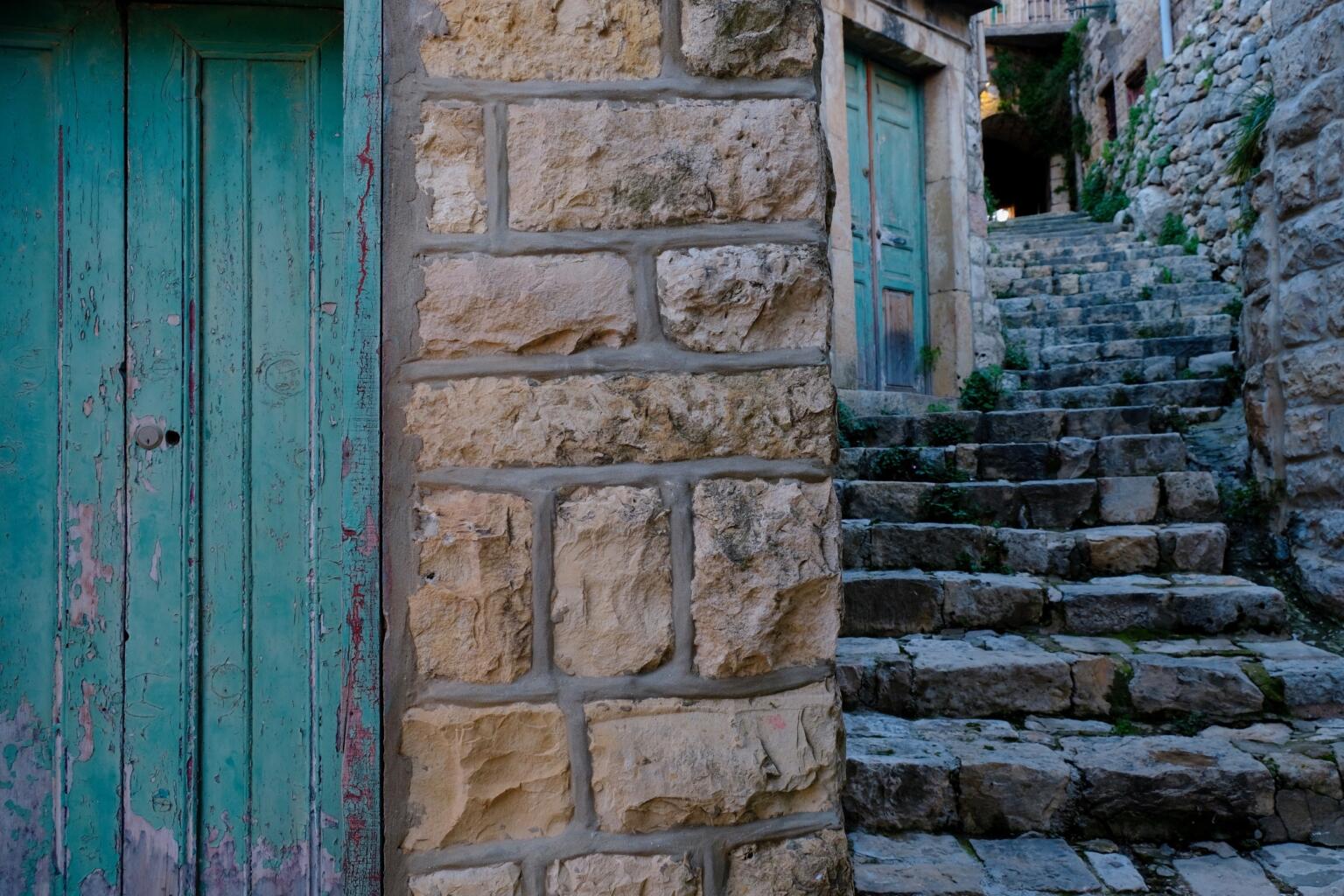
This place is incredibly nice (super luxury for Broke Backpackers), especially if you have been sleeping rough or camping for a few days beforehand (which we were). The extra cash is worth it, if only for one night.
The breakfast was amazing and far too much food for two starving people to consume. Thanks, guys, your place rocks!
Backpacking the Baatara Gorge
Like the Jeita Grotto, the Baatara Gorge is just one of those magical places only found in Lebanon. This is another must-visit spot, no matter the time of year.
The Baatara Gorge sinkhole is a massive waterfall in Tannourine near Balaa. The waterfall drops 255 meters into the Baatara Pothole, a cave of Jurassic limestone located on the Lebanon Mountain Trail. The cave is also known as the Cave of the Three Bridges.
I tried three different times to come here in the winter and failed on the first two attempts due to snow on the road.
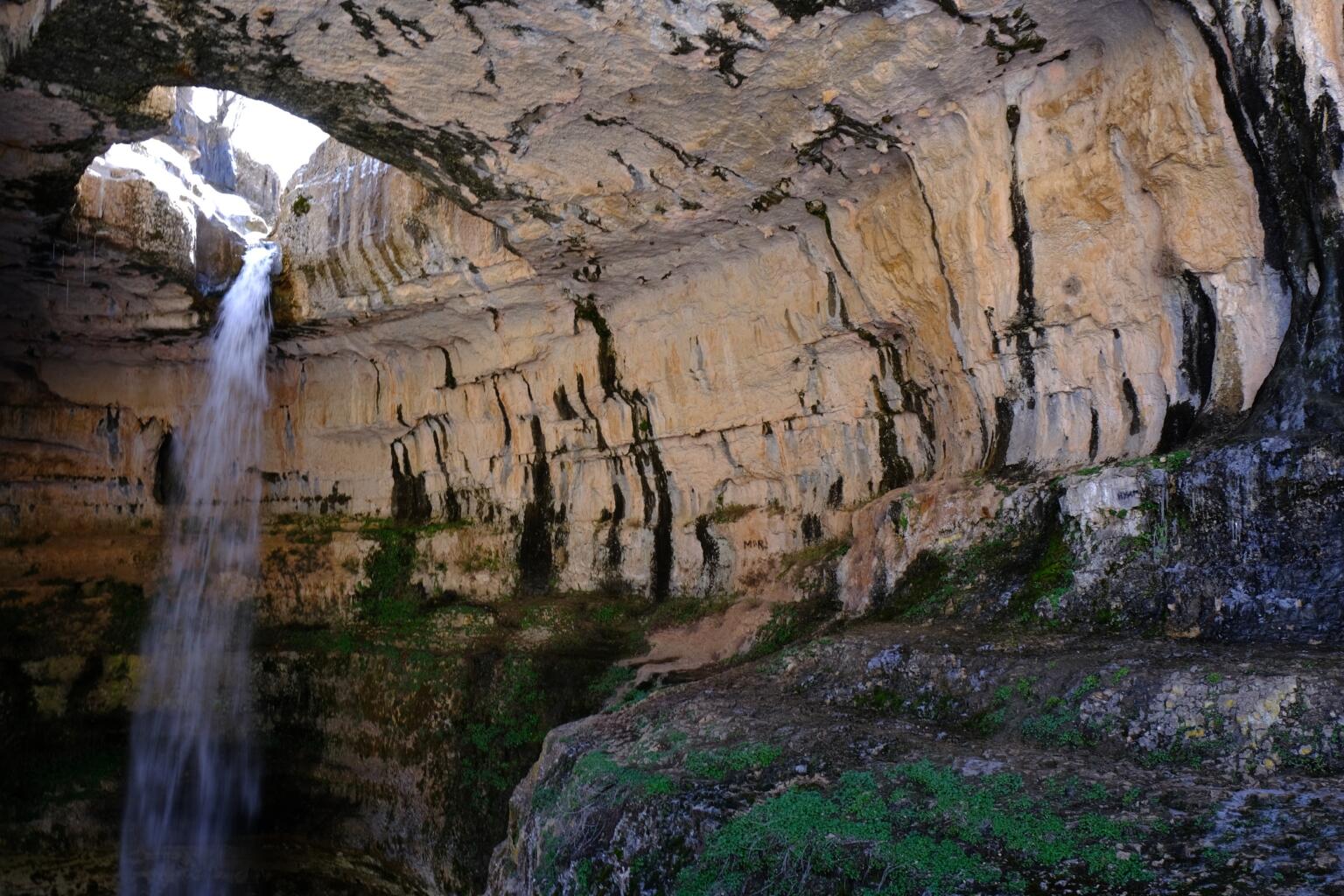
Note : In the winter you CAN’T access Baatara via the Bcharre-Tannourine road OR from any other of the small mountain roads EXCEPT the main road coming from Byblos, which the local government snow plows.
Camping is possible here, though in the summer Baatara can be quite crowded and you wouldn’t likely be able to set up shop until towards the end of the day. I saw people camping here in Janaury, but the night time temps were well below freezing. Summer camping may not be allowed, but I don’t know for sure.
How Not to Die at the Baatara Gorge
If you plan to go down to the man sinkhole/waterfall area be very, very careful . In the winter, the whole natural bridge is completely frozen with ice and the whole path down to it was also covered in snow and/or ice.
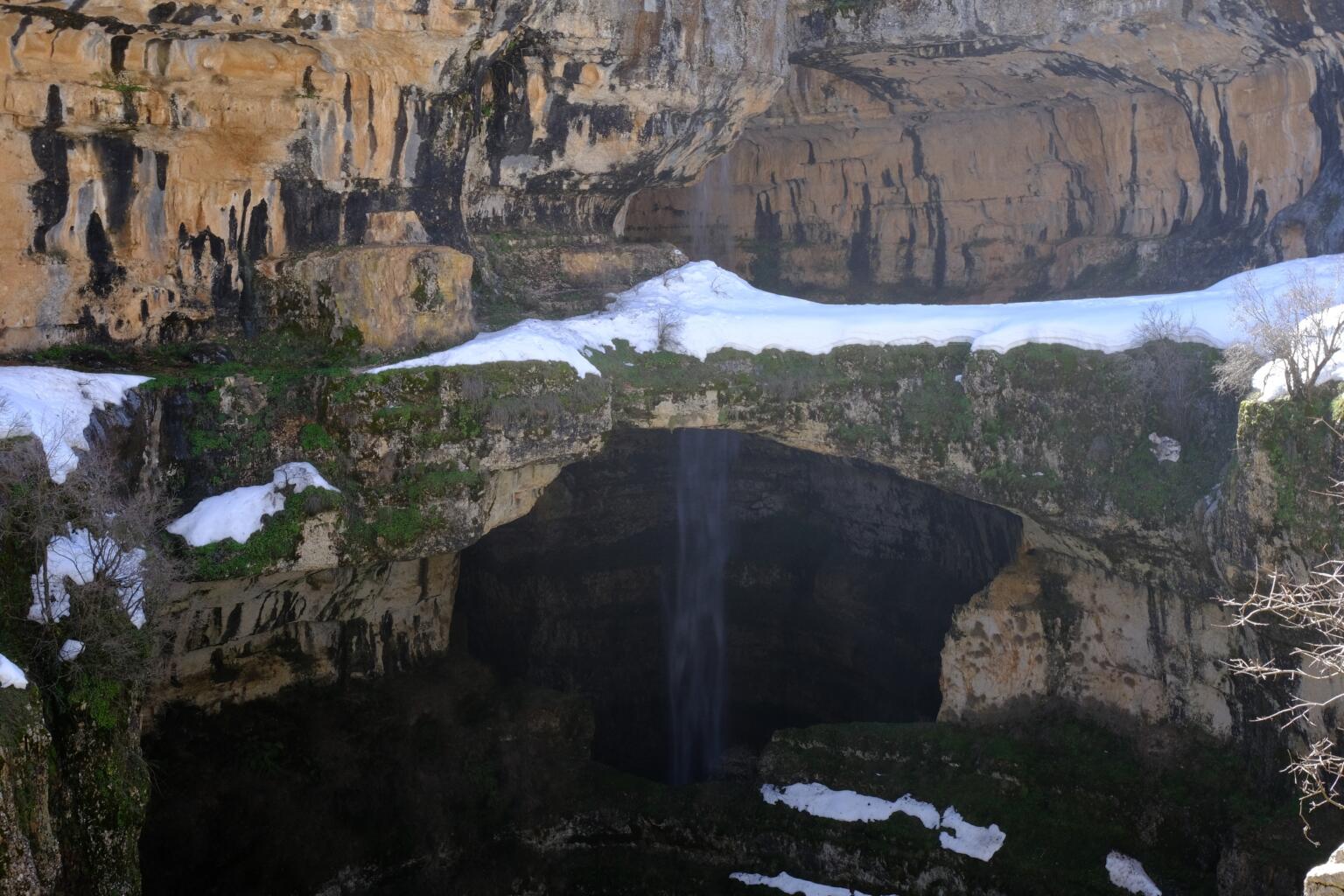
Once on the natural bridge, there is only a 2-meter width of standing space (on ice) and a 250-meter drop on either side. If you slip and fall off, you will most certainly die. Again this was totally iced over when I was on it, so please don’t do anything stupid or make any sudden movements while on the bridge at any time of the year. Use microspikes, trekking poles, and even crawl if you have to.
In the summertime, walking on the natural bridge is probably not as dangerous, but in the winter/when ice is present, you need to be fully focused and on high alert when you are anywhere near the edge of the sinkhole so that you can avoid a pointless and premature death. No photograph is ever worth dying for. Don’t be the next selfie-taking news headline.
Backpacking Saida/Sidon
Once back in southern Lebanon, be prepared to eat very well! The food in Saida is unreal. Wandering around the Old Souk, there are endless delicious looking pastries, street food options, and fresh fruit and veggie vendors.
The kneffe in Saida is on another level (an amazing warm, cheesy desert). Saida is probably my favorite big city in Lebanon. It’s got lots going for it: historical sites, awesome food, fun markets, nice locals, and some of the best (and cleanest) beaches in Lebanon are not too far away.
If you have the time, plan to stay in Saida for at least a couple of days.
Top Things to do in Saidia:
- Old Souk : One of the best souks I visited in Lebanon for sure.
- Soap Museum : Saida has been ground zero for soap manufacturing since forever. The soap museum is an interesting place to learn about the history and process of soap making here.
- Saida Castle on the Sea : Just what it sounds like. Entrance fee: 8,000 LBP.
- St. Nicolas Church : Plenty of cool mosaics and interior decor.
- Al-Omari Mosque : One of the oldest and most important Mosques in southern Lebanon.
- Falafel Akawai : Amazing falafel sandwiches for $2. Located in the Old Souk.
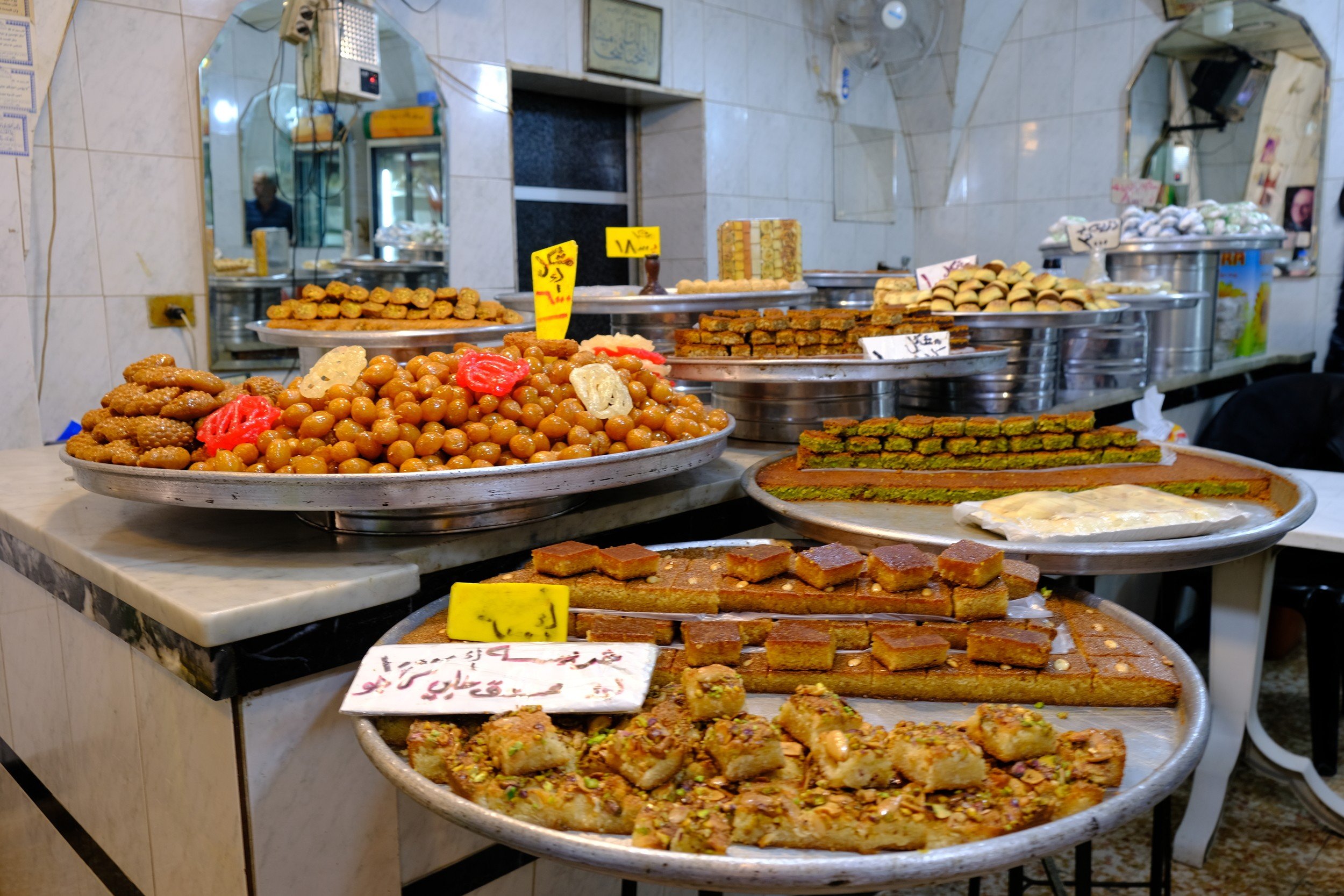
Backpacking Tyre/Sour
Just 45 minutes south of Saida is the coastal city of Tyre. Tyre is a short drive from the inaccessible border with Israel, so yeah, this is basically the end of the line geographically for most backpackers in southern Lebanon.
Tyre is also worth spending a few nights in. Like Saida, Tyre has a cool Old Souk (alright, most places in Lebanon have awesome Old Souks!). The Souk is divided into different sections based on what the merchants are selling (fish, veggies, meat, street food, clothes, etc).
The UNESCO World Heritage site known as the Old Egyptian Port (entrance 6000 LBP) is worth a visit. It’s a shame that the sea just in front of the site is horribly polluted with plastic shit and rubbish.
The Hara Neighborhood located by the fishing port is the best area in town to sleep. The streets are clean and have been restored with great skill following the end of the war. Grab a drink at the bar by the lighthouse for sunset.
On the opposite side of town, the seafront promenade “main drag” is the city’s main vein for shisha bars, cafes, restaurants and general nightlife happenings.
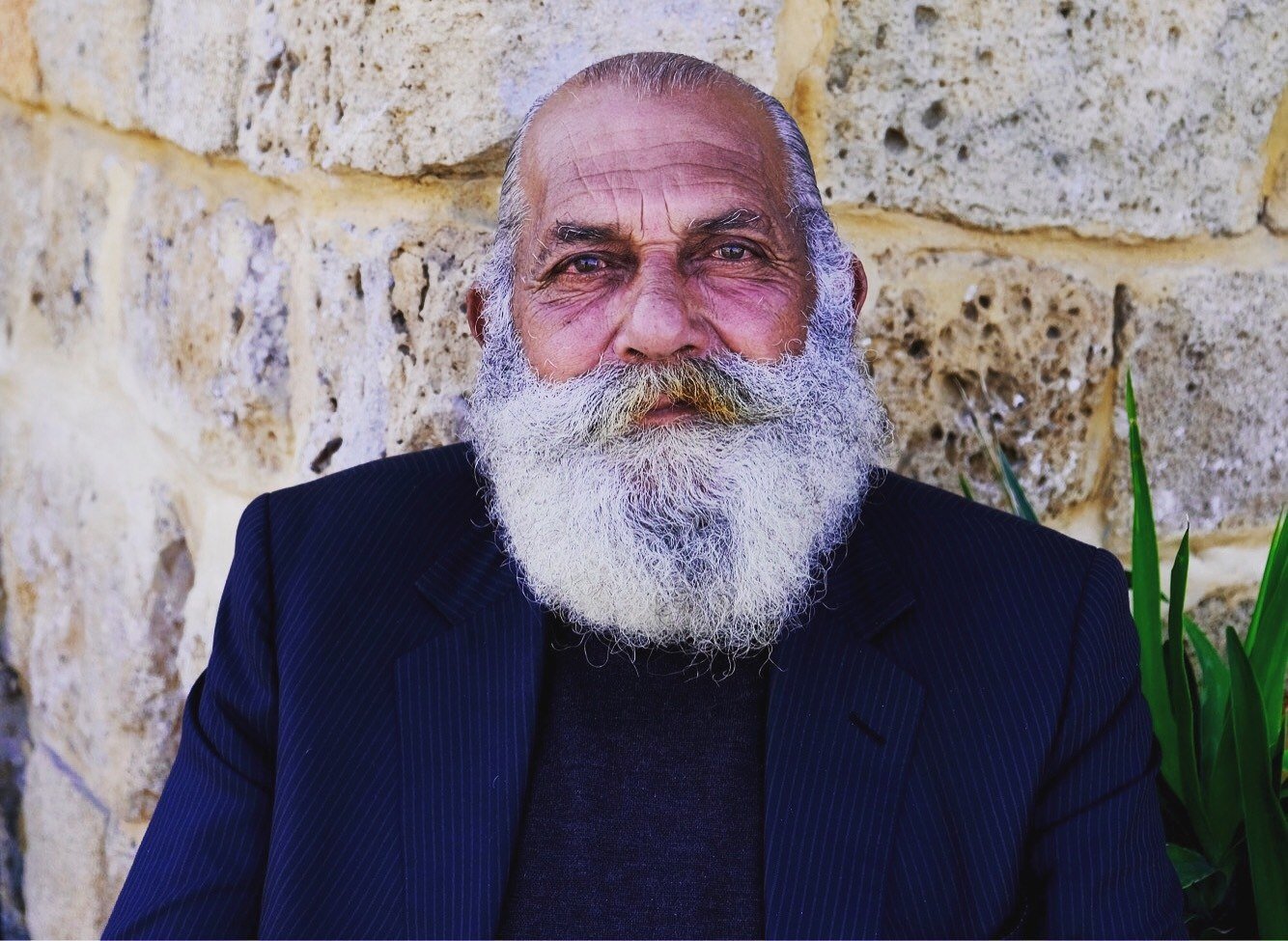
Over the last 50 years, Tyre has suffered terribly from one conflict after another. At the present moment, Tyre is peaceful, but its residents are all too aware of how close Israel is, and because of the tensions between the two countries, the potential conflict is just something that the residents must live with.
Hezbollah flags and propaganda posters are everywhere in Tyre, but again Hezbollah and its supporters could not care less about giving a backpacker a hard time.
Tyre is 100% safe. Just don’t go talking about how great Israel is and you will be fine (this is true whenever you are in Lebanon. Don’t say the “I” word.
Getting off the Beaten Track in Lebanon
The fact is that most of Lebanon is off the beaten path for travelers. I saw almost no other backpackers/tourists over the course of the near month I spent in Lebanon.
Apart from the famous sites like Baalbek, the Jeita Grotto, and parts of Beirut, the rest of Lebanon is not visited by foreigners in heavy numbers.
Lebanon is indeed one of the least-touristy countries I have ever been to. Only Pakistan has felt more off the beaten track as a whole then Lebanon.
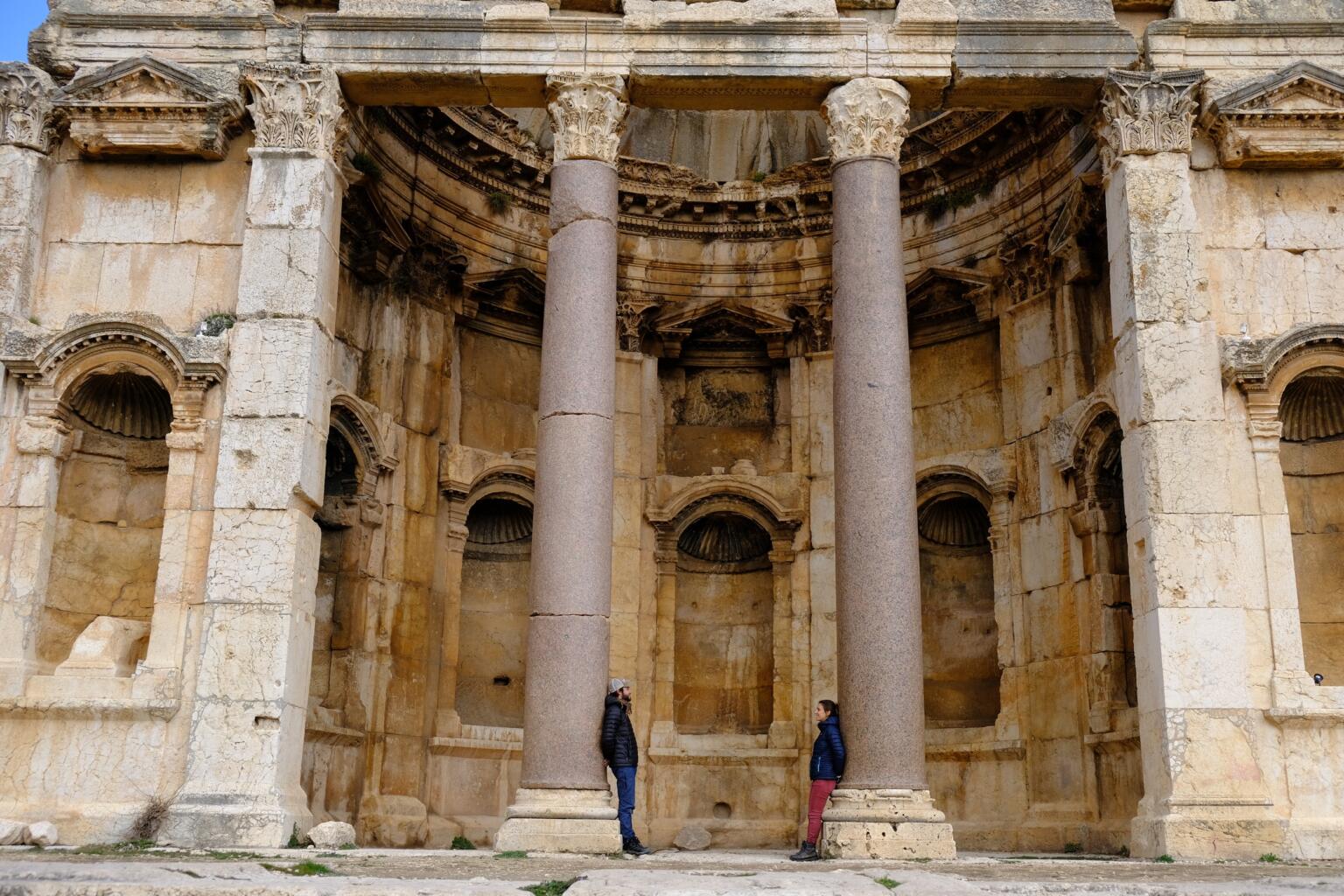
As soon as you set foot out of Beirut or the other above mentioned sites, you are not bound to see many other foreigners, which leaves the door to discovery and exploration wide open.
One absolute gem of an unorthodox adventure, is Mt Mleeta Resistance Memorial otherwise known as “Hezbollah Land”. Situated on Lebanon’s Southern border with Israel, it is the former battle front from Hezbollah’s war with the occupying Israeli army which has been turned into an open air museum. The museum is operated by serving Hezbollah soldiers making it a controversial, but fascinating experience.

We’ve tested countless backpacks over the years, but there’s one that has always been the best and remains the best buy for adventurers: the broke backpacker-approved Osprey Aether and Ariel series.
Want more deetz on why these packs are so damn perfect? Then read our comprehensive review for the inside scoop!
Below I have listed the 10 best things to do in Lebanon.
1. Explore the Jeita Grotto
There is a reason that the Jeita Grotto was a nominee to join the “7 wonders of the world” list. This place is total magic and is not be missed!
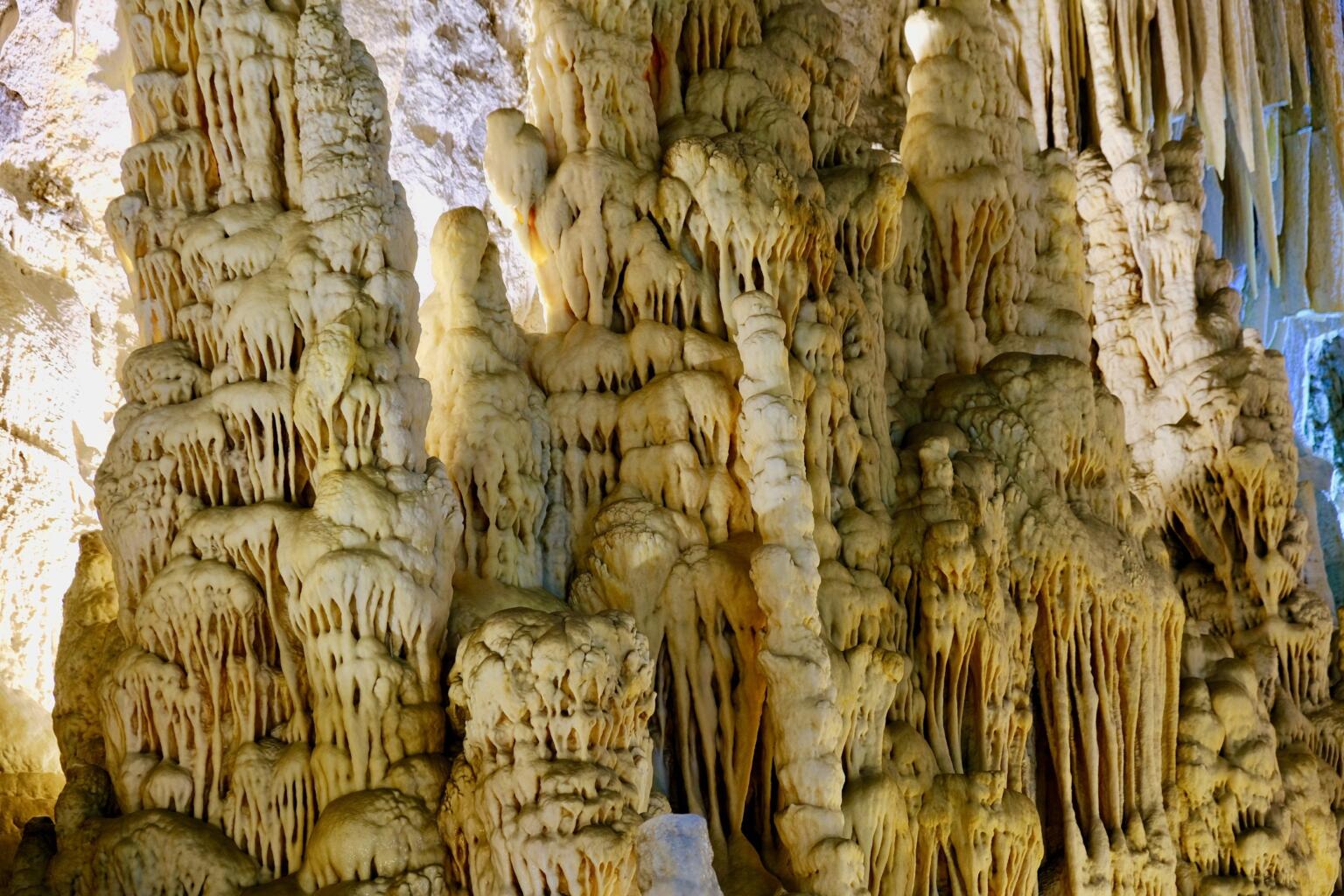
2. Get Lost in the Old Souks
Oddly enough, Beirut does not have a massive regional souk. In just about every other city though, you can wind you way through ancient market streets and small forgotten allies to discover the true sights, smells, and tastes of modern Lebanon.
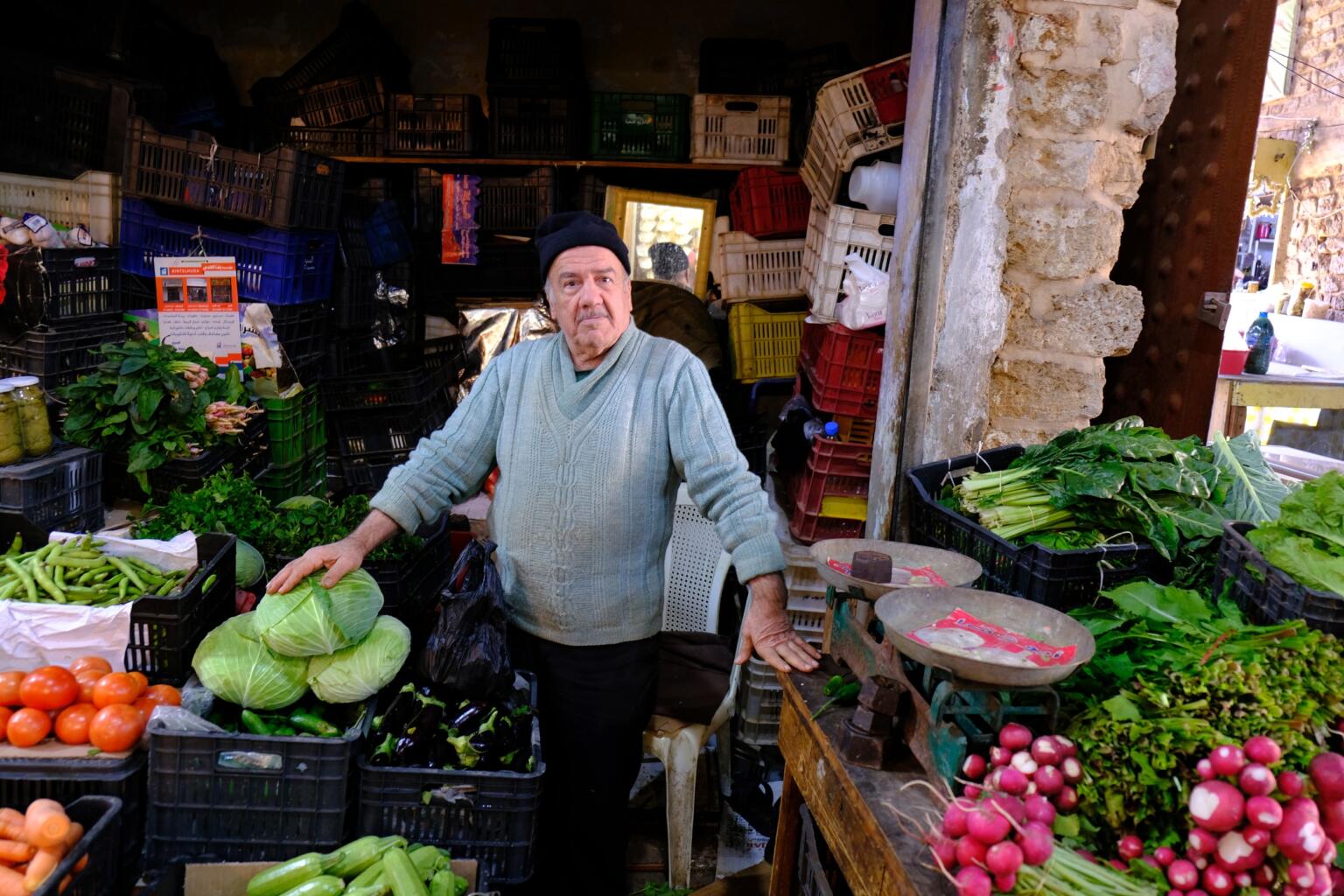
3. Stay in a Monastery
Lebanon is home to some truly incredible monasteries in the mountains, some of which you can spend the night at!
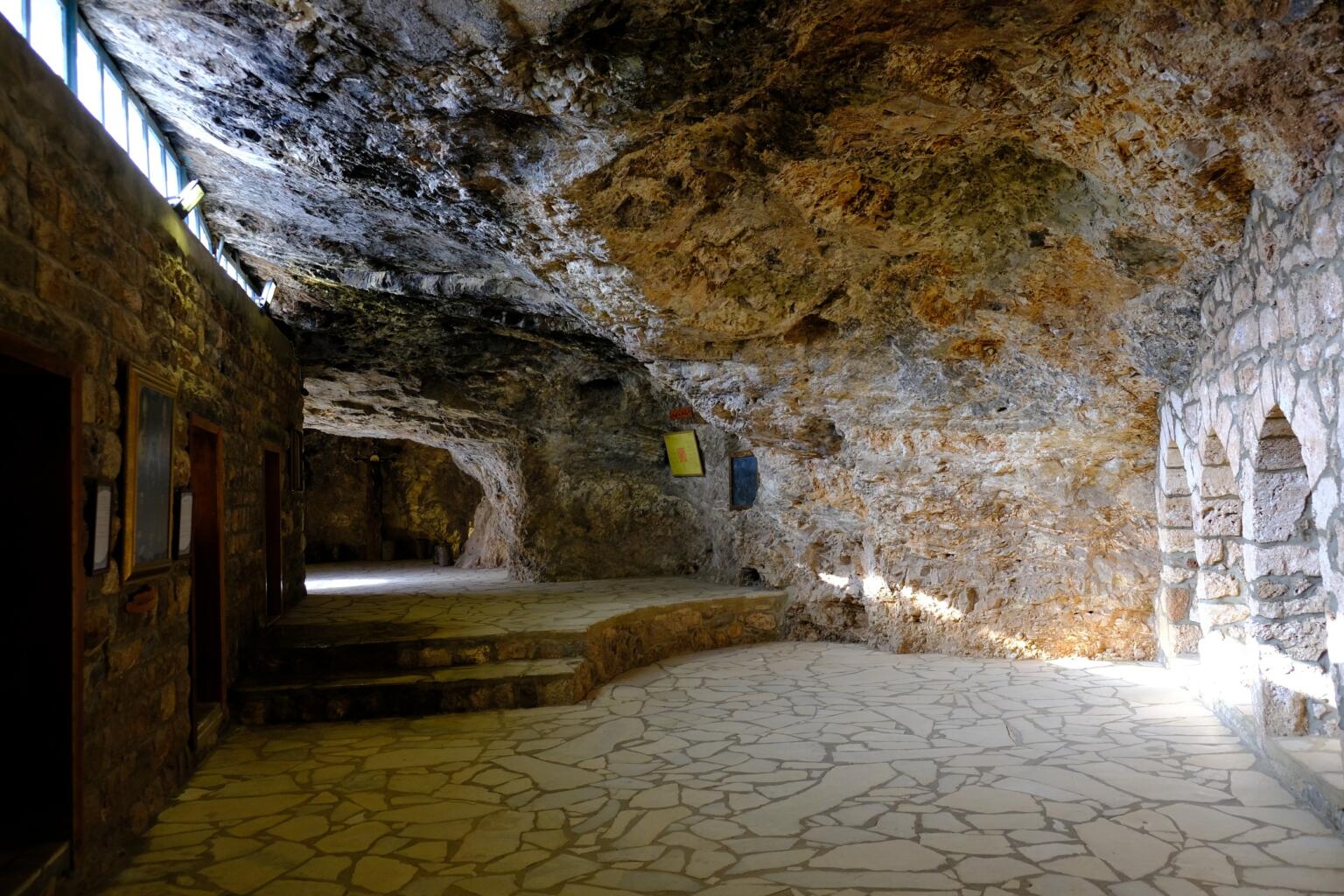
4. Eat Meze
Meze is a broad term for all of the amazing small/side dishes found in Lebanese cuisine. Meze can just be the appetizers, or it can easily turn into a huge spread for an entire meal. Hummus, baba ganoush, fatoush, grape leaves, labneh, spicy potatoes are all amazing meze dishes.
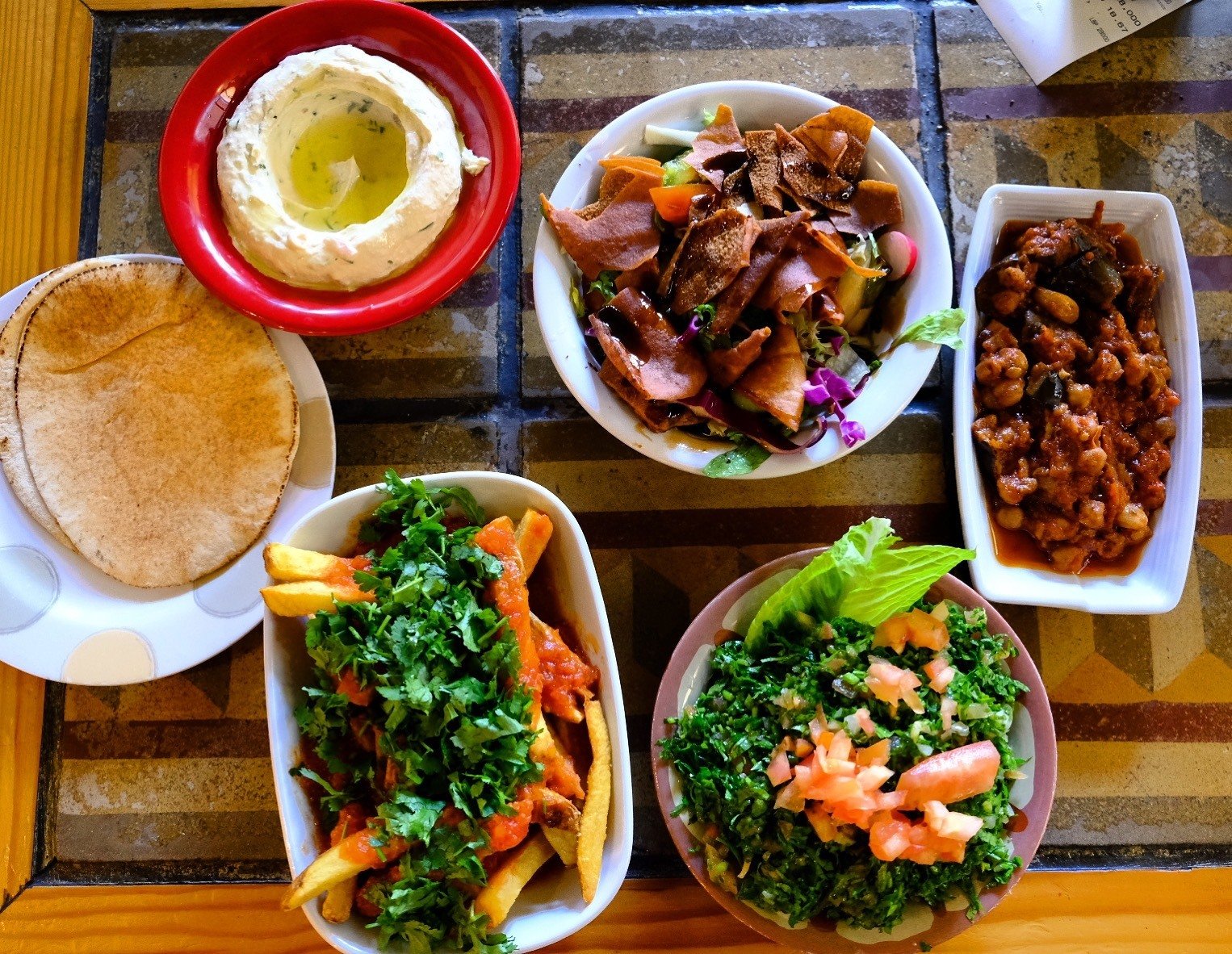
5. Visit the Mosques and Churches
Just about everywhere you go in Lebanon, you will find a beautiful mosque, a church, or both. Architecture, age, and interior design vary across the board and visiting these religious buildings offers a deeper insight into one of the major realities of Lebanese life: religion.
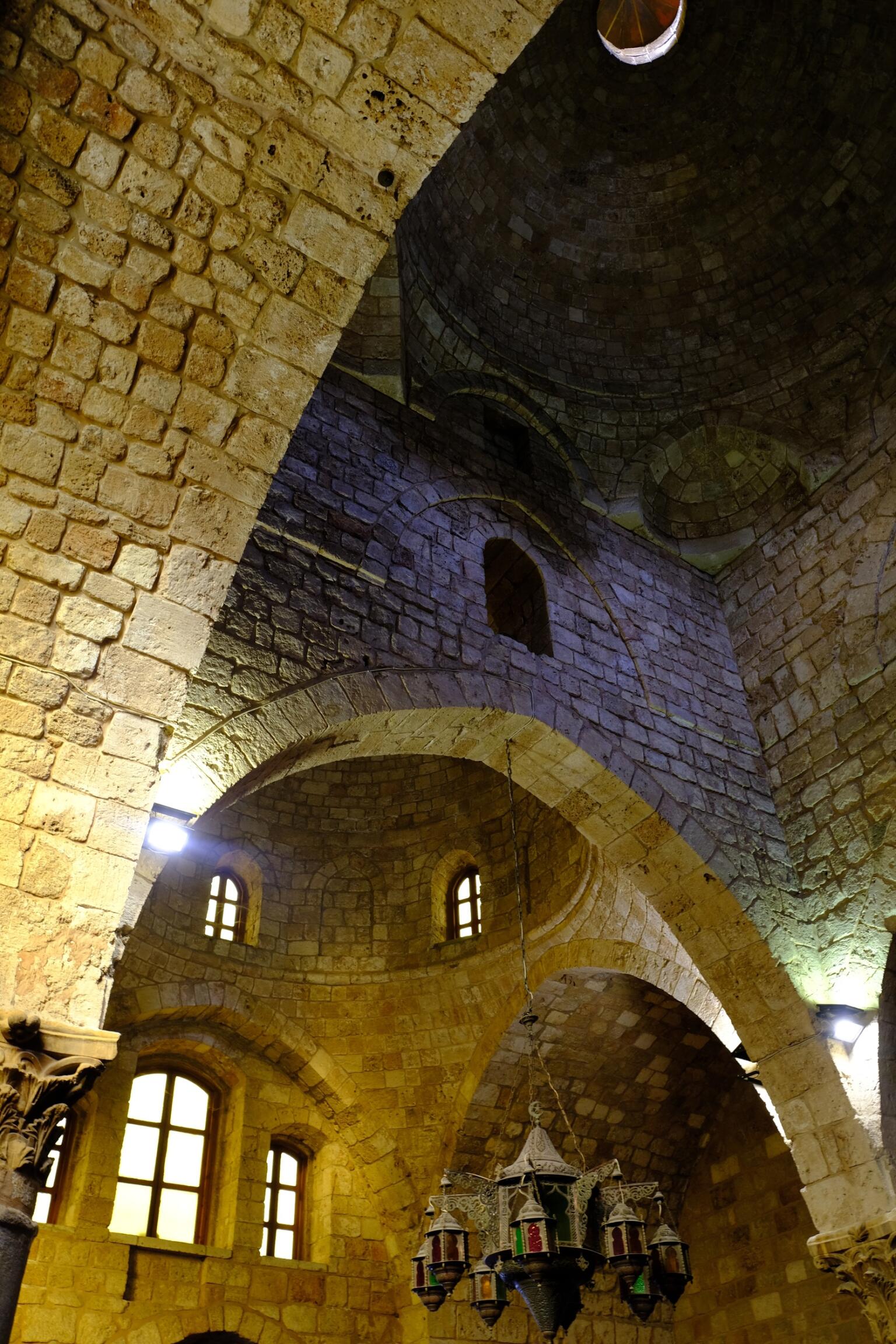
6. Experience the Bacchus Temple at Baalbek.
As far as ruins go, the Bacchus Temple at Baalbek is the most impressive man-made structure from history that I have ever seen. Also, not to be missed!
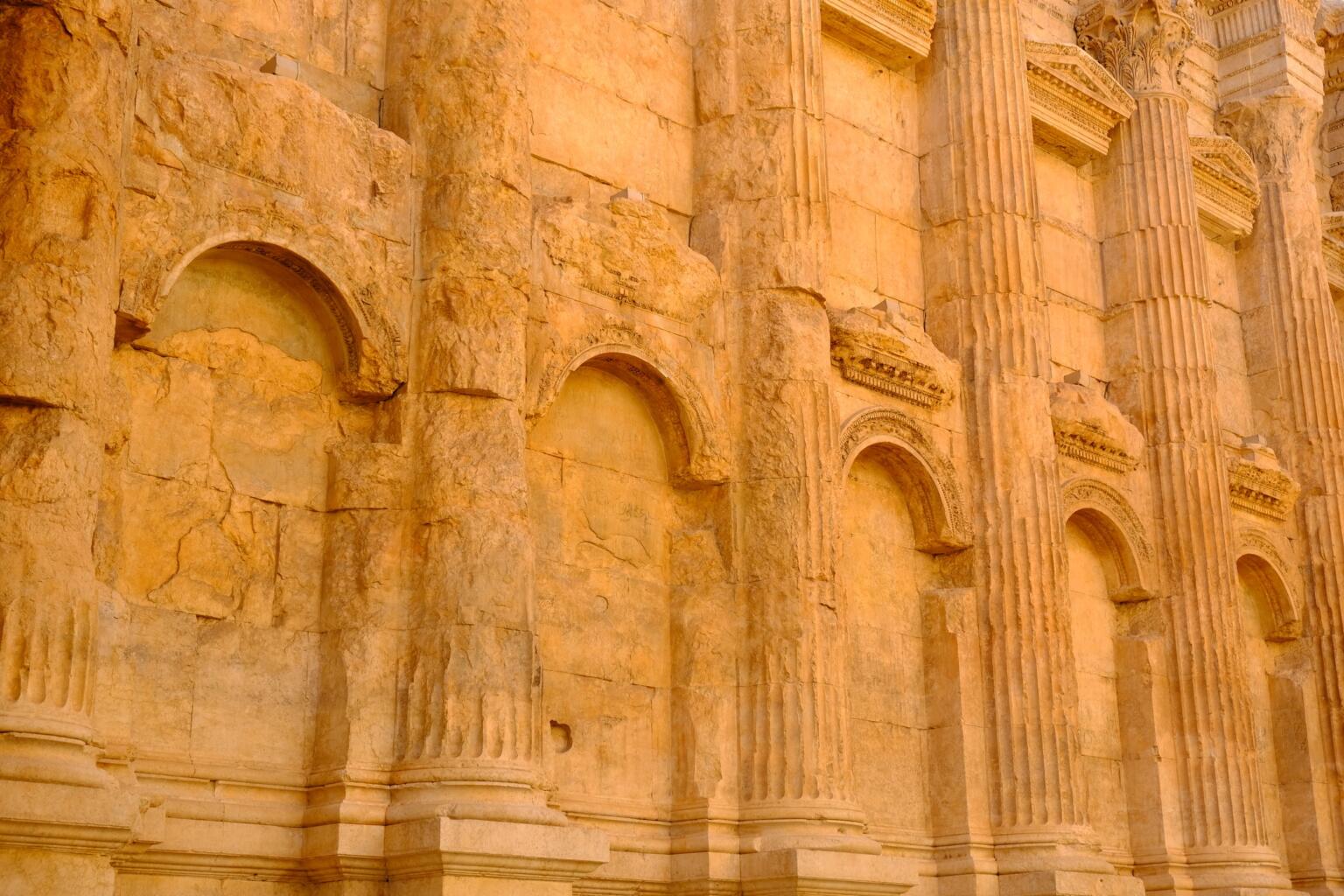
7. Be Wowed at the Baatara Gorge Waterfall
Lebanon’s second most famous natural attraction is equally as mind blowing as the Jeita Grotto, but in a totally different way.
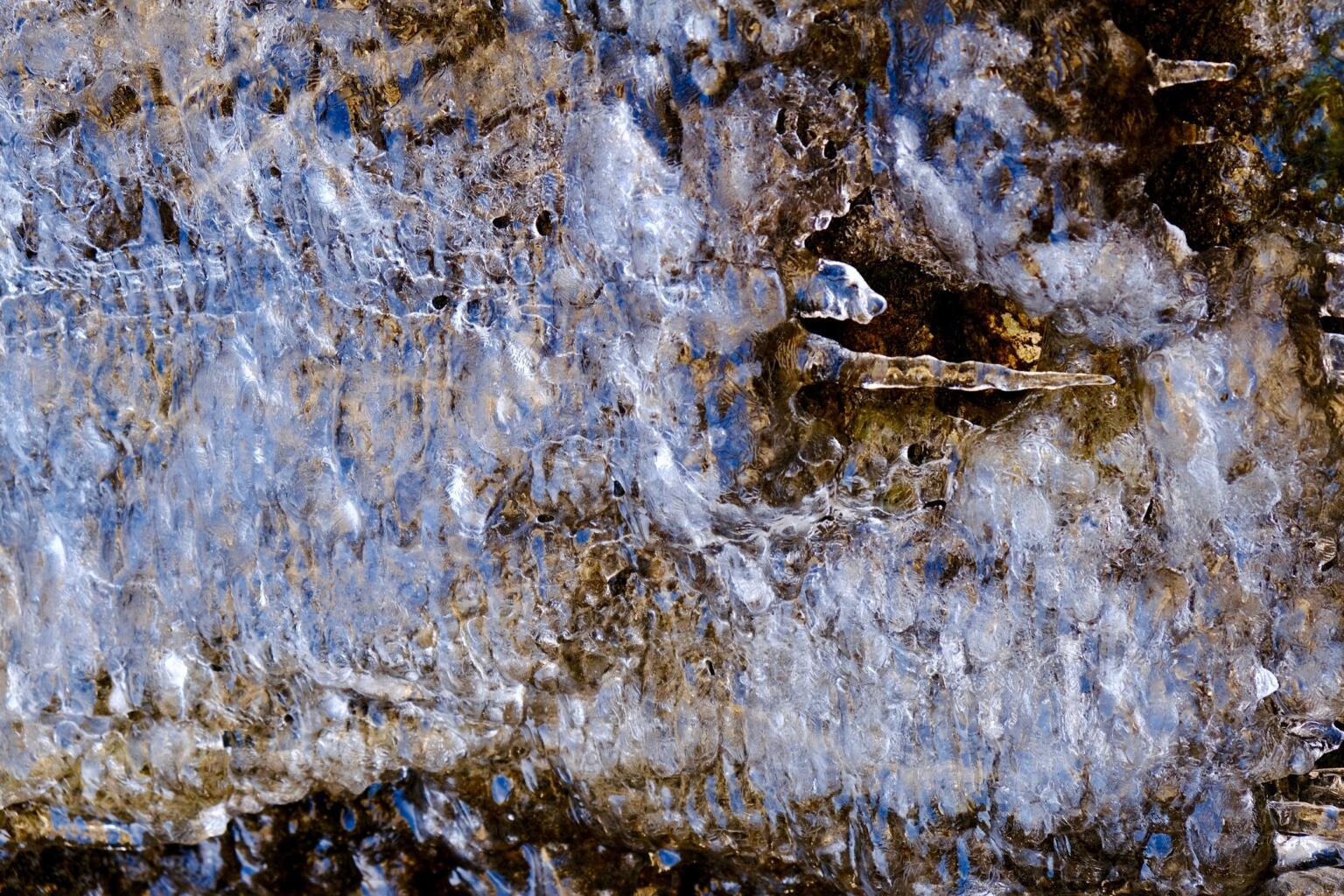
8. See the Ancient Trees at the Cedars of God Reserve
Whilst my own experience at the Cedars of God was far from a positive one, the trees here are incredible and if you get to see them on a day where hordes of people are not present, I am certain you will thoroughly enjoy yourself.
9. Go for a Hike in the Kadisha Valley
Monasteries, forts, waterfalls, and miles of hiking trail make the legendary Kadisha Valley one of the most compelling areas in all of Lebanon.
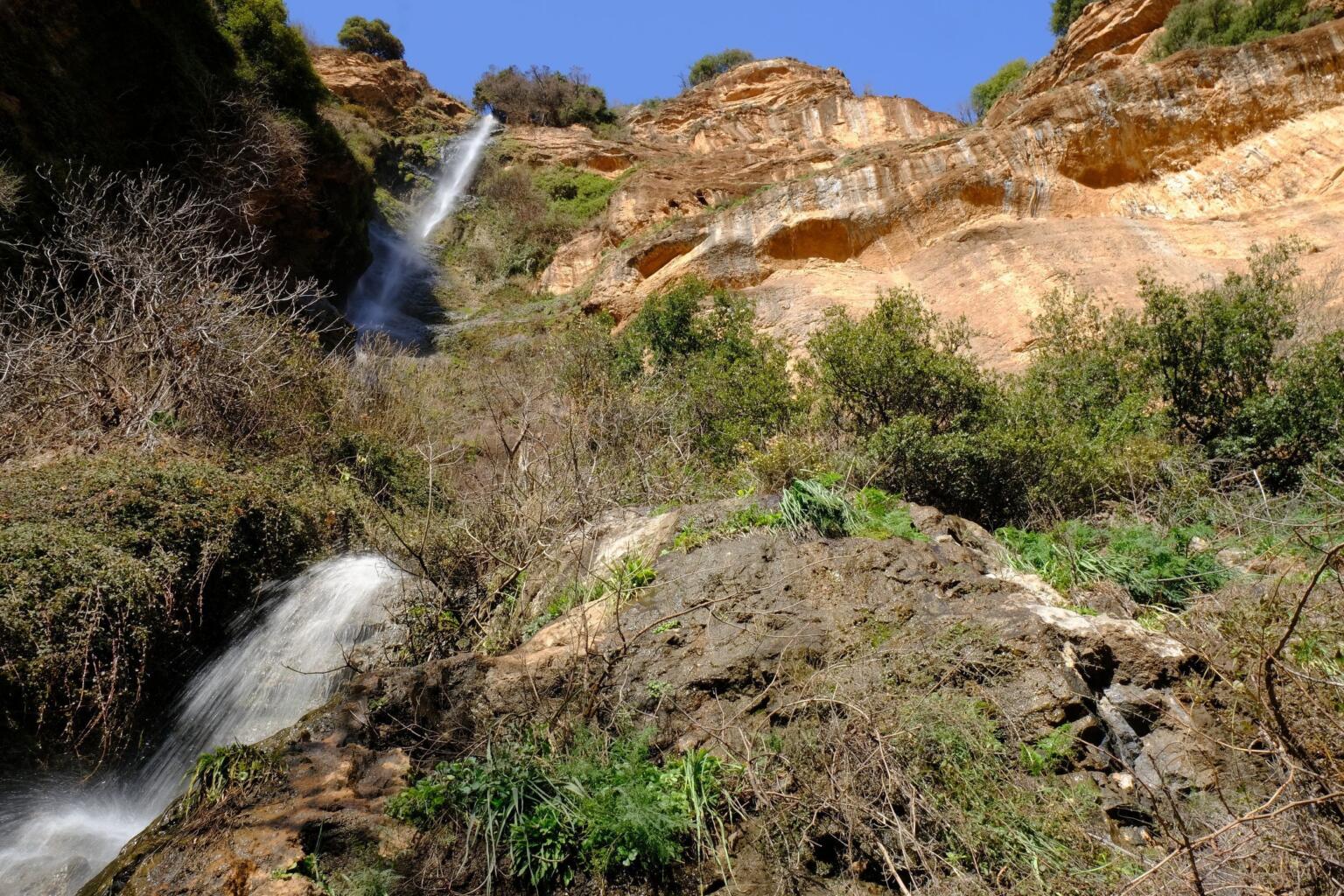
10. Try Arak
Arak is a popular liquor throughout the Middle East. It is an especially important beverage in Lebanon. I was told that if you eat any sketchy street meat, a couple of shots of Arak will all but guarantee that you won’t get sick as the parasites cannot survive a good Arak bath in your stomach.
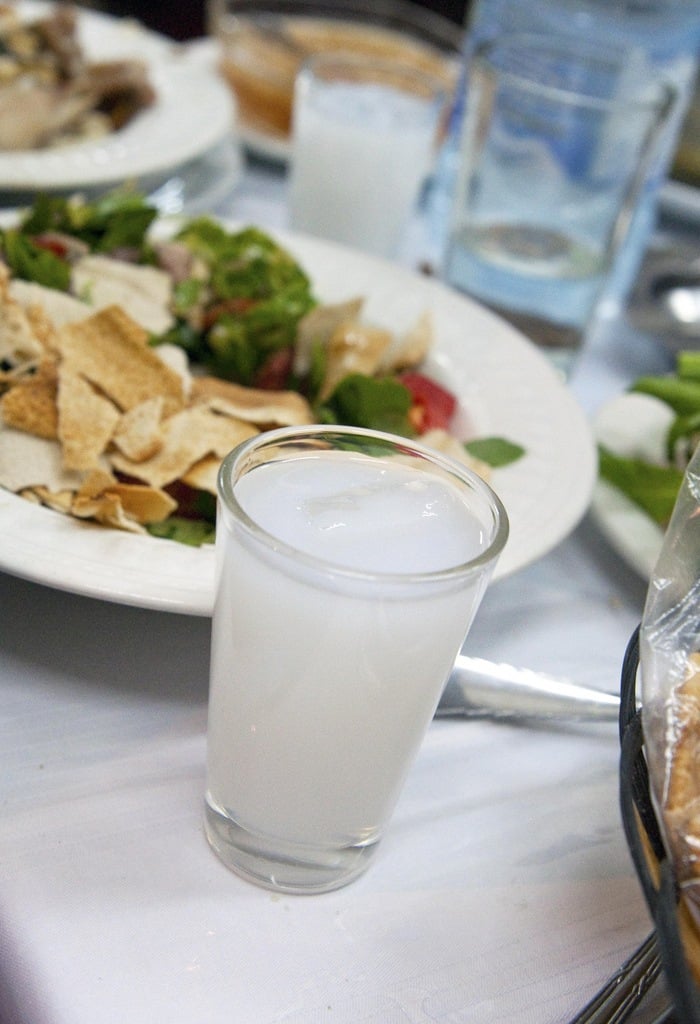
Wanna know how to pack like a pro? Well for a start you need the right gear….
These are packing cubes for the globetrotters and compression sacks for the real adventurers – these babies are a traveller’s best kept secret. They organise yo’ packing and minimise volume too so you can pack MORE.
Or, y’know… you can stick to just chucking it all in your backpack…
Finding cheap backpacker accommodation in Lebanon is not without its challenges. Save for Beirut, there are virtually no hostels to be found anywhere in the country!
Lebanon is just not set up to facilitate a backpacker scene as of yet, and the lack of hostels reflect that. That said, you do have some options. Just don’t expect to find $10 dorm beds anywhere in Lebanon.
Your best bet for finding cheap accommodation is to book midrange hotels and cheap Airbnb apartments.
Whilst not dirt cheap, you can find some decent places in the $35 – 50 per night range. If you go for an ultra-budget hotel, it is likely to be a shit hole in an unfavorable area, so unless absolutely necessary, avoid staying at the bottom of the barrel hotels.
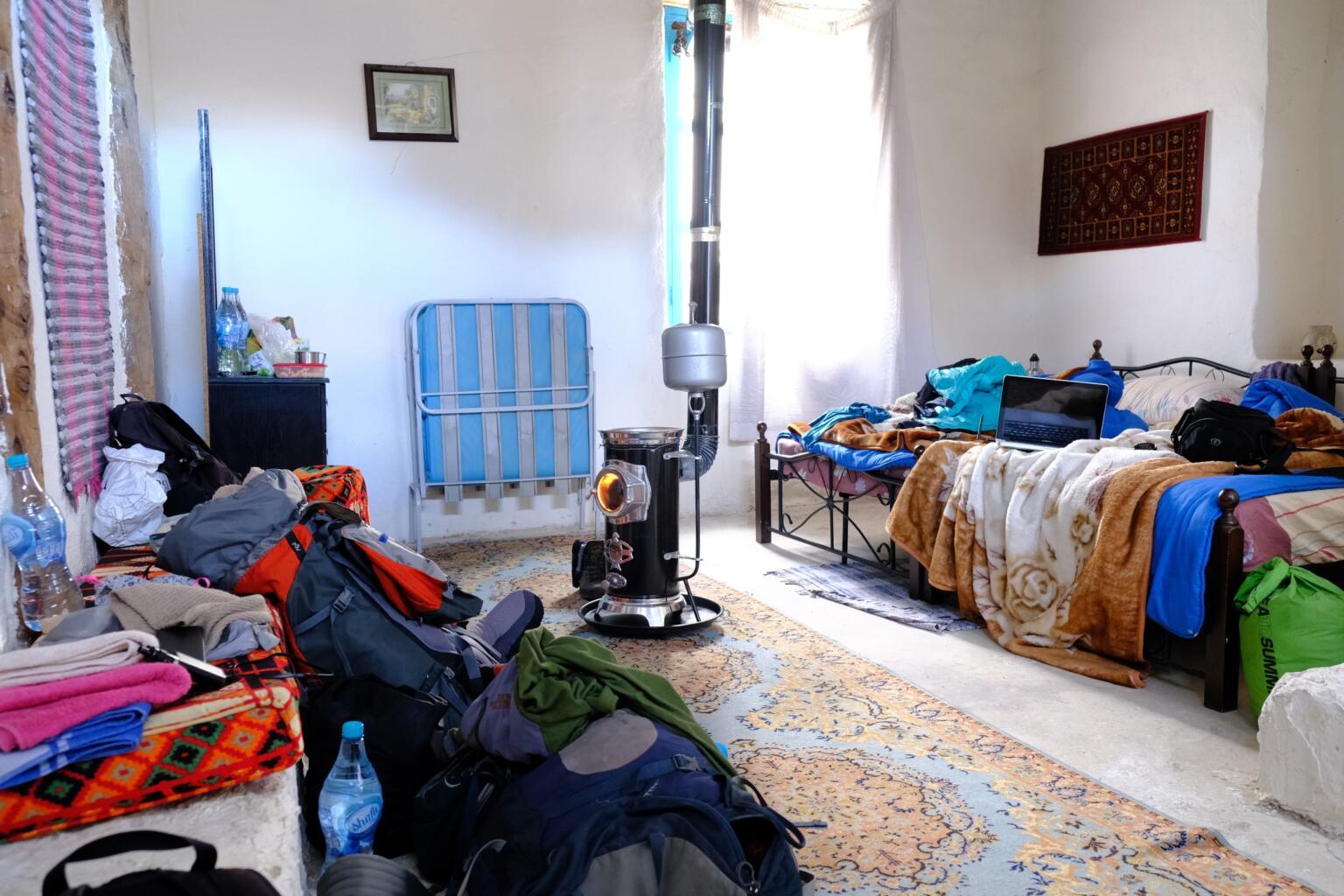
Camping (in the mountains) and Couchsurfing are also legitimate options in Lebanon.
Th Best Places To Stay in Lebanon
Yeah… as you can see the hostel options are seriously lacking in Lebanon.
One of the most important questions any backpacker should be asking is, “is Lebanon expensive?” The short answer is that it is neither cheap nor crazy expensive. If there were a number of backpacker hostels scattered throughout the country, then yes, Lebanon would indeed be a cheap country to travel in.
Because there are in fact barely any budget hostels in Lebanon, it is hard to travel in Lebanon on a total shoe string budget.
Not including a rental car, one can travel in Lebanon on $40 – 60 per day and be comfortable and happy. If you have another person to split the hotel room costs, your costs will be in the $40 – 60 range easily.
Food in Lebanon is worth spending money on and generally isn’t insanely expensive either.
One can eat very well for under $10/day if you stick to street food like kebab type sandwiches and manouche (like a breakfast pizza covered in either Zaatar spices or Labneh ). For $20/day you can seriously eat like a king (meat dishes tend to be a little pricey though).
Entrance fees to major attractions range from around $5 USD to $15 USD depending on what the attraction is.
Groceries from a super market or small shop are reasonable and one can easily cook an excellent meal for $5 -10 worth of store bought ingredients.
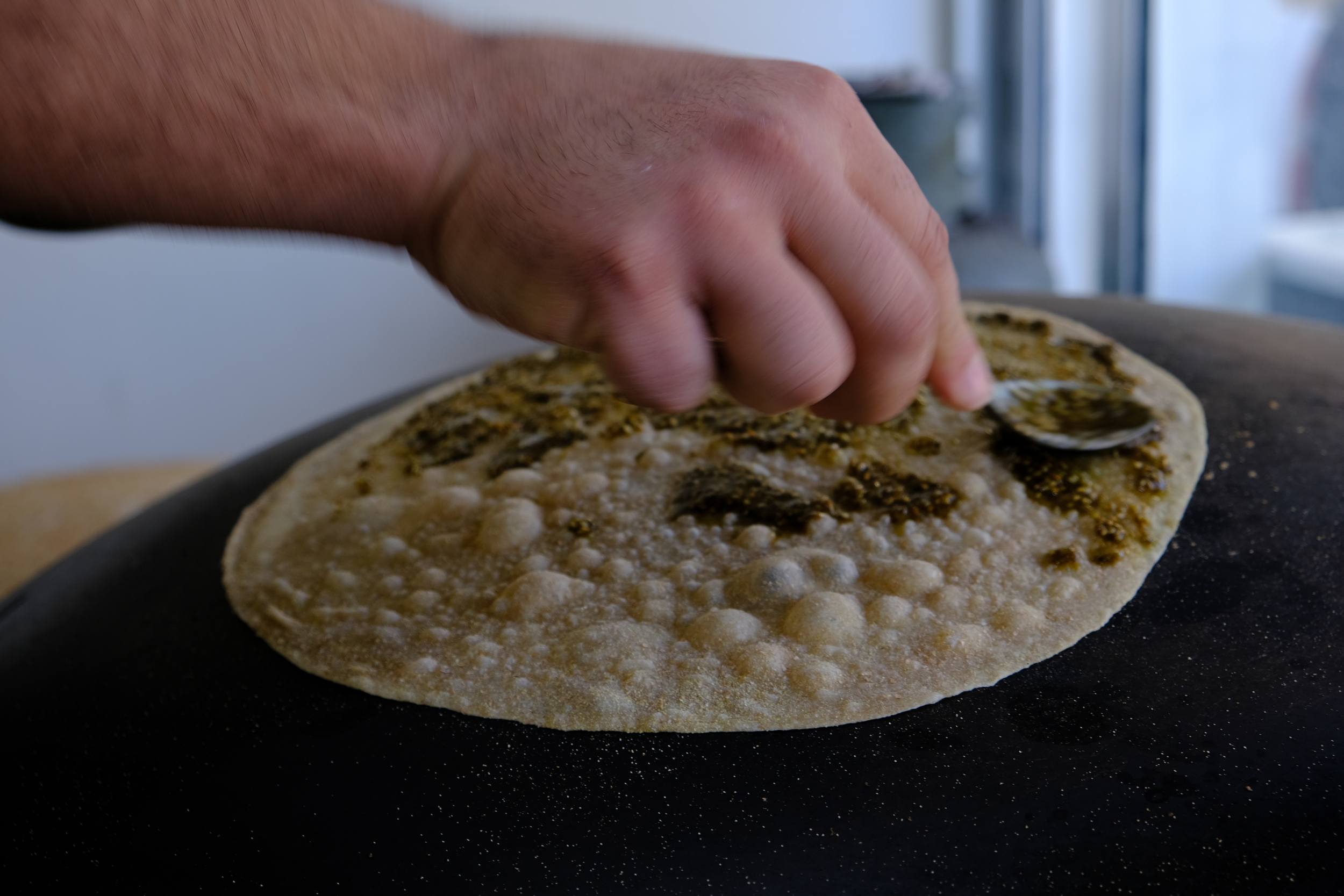
I recommend Couchsurfing as much as you possibly can. The more you Couchsurf and hitchhike, the more money you can spend on wine, good hummus, and activities like paragliding. Pure and simple.
As I mentioned before (and will again), having a good tent and sleeping bag are crucial to budget backpacking. Both will save you a ton of money on accommodation. Whilst backpacking in a hostel-less country like Lebanon, having the right gear and ability to camp out (when possible) is very important to keep costs to an absolute minimum.
Below is a list of what you can expect to spend on a daily basis (excluding car hire) whilst backpacking Lebanon.
Lebanon Daily Budget
Money in lebanon.
Fun fact : Lebanon has two currencies. That’s right!
Lebanon’s two currencies are the Lebanese Pound (LBP) and the US Dollar (USD ).
Both currencies are widely excepted everywhere in Lebanon. If you pay with USD you will likely get your change in LBP.
The Lebanese Pound has a stable exchange rate against the dollar: 1500 LBP = 1 USD.
Paying with USD for things like hotel rooms and entrance fees to attractions is the way to go if you have the USD on you. Likewise, you don’t really need to have US dollars in Lebanon. I think the locals are now starting to trust their own currency because I rarely saw Lebanese people pay for anything using USD.
I recommend carrying cash on you as credit cards are not always accepted. All of the day to day transactions are done in cash, not with cards.
Also, I has some trouble with the ATM machines not accepting my foreign bank card. Make sure that when you head into the mountains, you have plenty of cash because the ATM machines are few and far between!
Tip : Find out whether or not your bank in your home country has fee-free international withdrawal. If so, activate it for your trip or for whenever you travel abroad. Once I discovered my bank card had that option, I saved a huge amount in ATM fees! When traveling to Lebanon on a budget, every dollar counts right?
Travel Tips – Backpacking Lebanon on a Budget
Camp : With plenty of stunning mountains and forests to explore, camping saves you money and can help you get off of the beaten path on an epic adventure.
Cook your own food: Travel with a portable backpacking stove or stay at a hostel with a fully-equipped kitchen. Cooking your own food to save some serious cash whilst backpacking across Lebanon. Make sure you buy camping gas BEFORE leaving Beirut as they don’t see it anywhere else in the country. The Decathlon store north of Beirut is where to find gas. Call first to make sure they have the kind you need in stock.
Why You Should Travel to Lebanon with a Water Bottle
Plastic washes up on even the most pristine beaches… so do your part and keep the Big Blue beautiful
You aren’t going to save the world overnight, but you might as well be part of the solution and not the problem. When you travel to some of the world’s most remote places, you come to realise the full extent of the plastic problem. And I hope you become more inspired to continue being a responsible traveller .
Plus, now you won’t be buying overpriced bottles of water from the supermarkets either! Travel with a filtered water bottle instead and never waste a cent nor a turtle’s life again.

Drink water from ANYWHERE. The Grayl Geopress is the worlds leading filtered water bottle protecting you from all manner of waterborne nasties.
Single-use plastic bottles are a MASSIVE threat to marine life. Be a part of the solution and travel with a filter water bottle. Save money and the environment!
We’ve tested the Geopress rigorously from the icy heights of Pakistan to the tropical jungles of Bali, and can confirm: it’s the best water bottle you’ll ever buy!
I traveled to Lebanon during the entire month of January. For some things, the weather was perfect. The coast was absolutely beautiful and to be honest, I can’t imagine what the absolute toxic air of the coastal highway would be like in the summer heat.
For winter travel in the mountains, most of the time the roads were fine, and other times they were not. Whilst true that seeing the Lebanese mountains when they are covered in snow is magical, the snow also presents a number of other challenges.
Hiking options at high altitude are pretty much zero unless you have snow shoes and all the right gear. Likewise, many of the small roads are closed and impassable in the winter.
From what locals told me, late Spring and October are the absolute best times to visit Lebanon. Certainly, if you plan to do some hiking, the fall time is best.
Summers in Lebanon are just too hot, and the air too polluted (at least by the sea) for it to be enjoyable for most people.
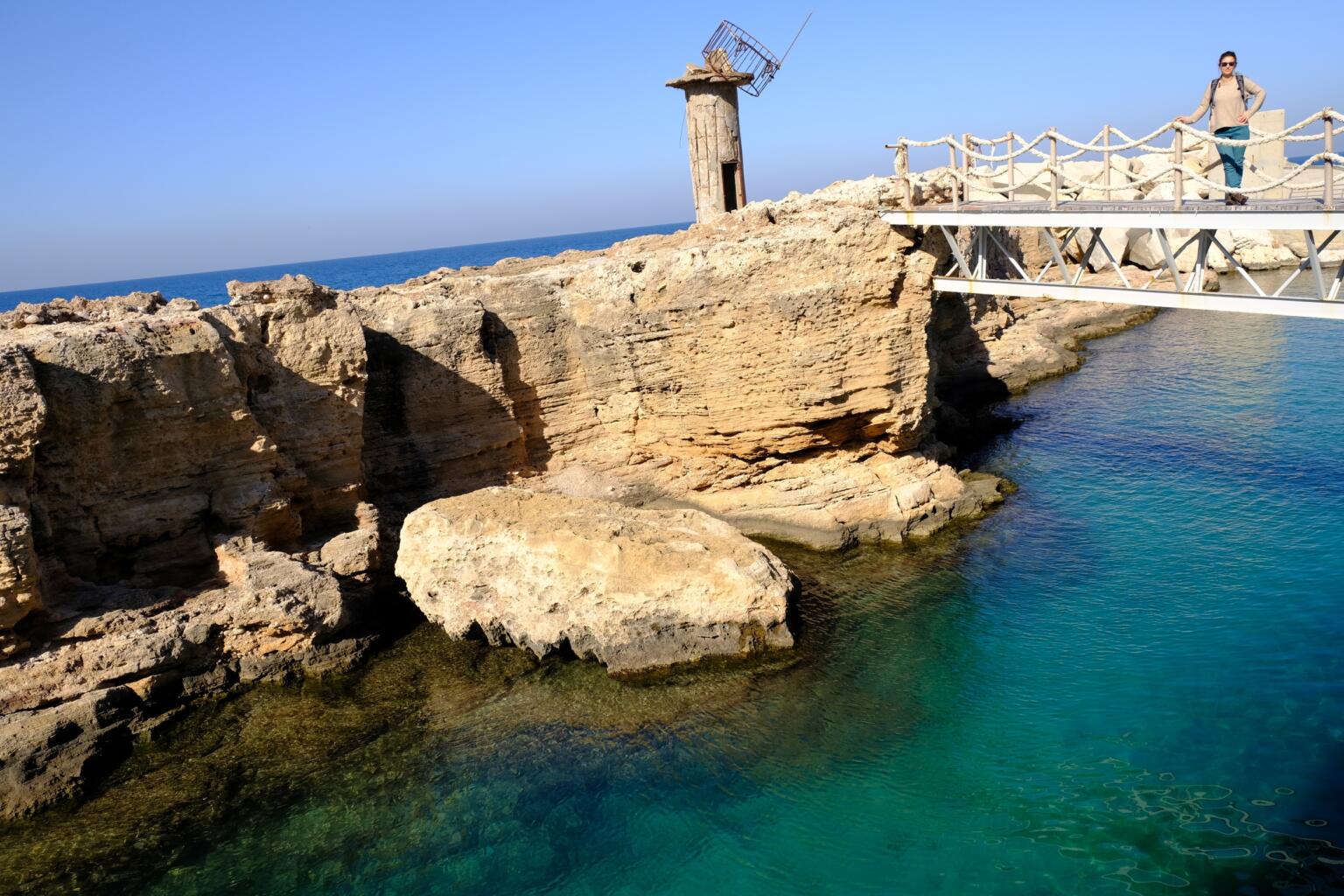
Winter is also fantastic, save for the few inconveniences mentioned above.
Be sure to pack warm stuff for the winter months! If you bring the right gear, like a solid rain jacket , a warm down jacket, and a badass sleeping bag, the cold nights in the mountains won’t really affect you. Check out my list of the 7 best jackets to take traveling here .
Festivals in Lebanon
The Lebanese love to have a good time (don’t we all?). Here are a few Lebanese festivals to look for:
Hippodrome Vinifest, October : 4-day wine festival is organized at the Hippodrome with all kinds of wine tasting activities, food stands and music entertainment.
Jounieh International Summer Festival, June/July : A 10-day international festival that is organized in Jounieh, providing outdoor shows, food and music… and lots of fireworks.
Byblos International Festival, July/August : A fun music/culture festival held in a beautiful setting overlooking the Byblos harbor and ruins.
Baalbek International Festival, July/August: Ever wanted to go to a festival held amongst epic Roman ruins? This is your chance.
Zouk Mikael International Music Festival, July : An annual one-week international music festival held in the vicinity of the Roman amphitheater just opposite the Old Souq.
What to Pack for Lebanon

Travel Security Belt
This is a regular looking belt with a concealed pocket on the inside – you can hide up to twenty notes inside and wear it through airport scanners without it setting them off.

Microfiber Towel
Hostel towels are scummy and take forever to dry. Microfibre towels dry quickly, are compact, lightweight, and can be used as a blanket or yoga mat if need be.

Petzl Actik Core Headlamp
A decent head torch could save your life. If you want to explore caves, unlit temples, or simply find your way to the bathroom during a blackout, a headtorch is a must.

‘Monopoly Deal’
Forget about Poker! Monopoly Deal is the single best travel card game that we have ever played. Works with 2-5 players and guarantees happy days.
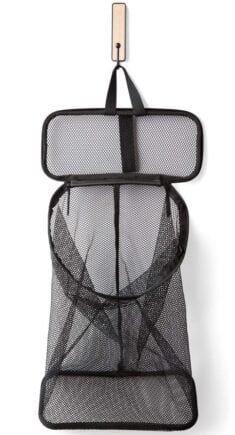
Hanging Laundry Bag
Trust us, this is an absolute game changer. Super compact, a hanging mesh laundry bag stops your dirty clothes from stinking, you don’t know how much you need one of these… so just get it, thank us later.
A quick Google search may reveal that Lebanon is not safe to travel to. That is utter bullshit. The security situation in Lebanon remains more or less stable and you can go to 95% of the places in the country without worrying about safety. You can read all our reasons why Lebanon is safe along with some tips and tricks, or read the summary below.
Backpackers should avoid traveling to remote north eastern areas just opposite the Syrian border. There is nothing worth seeing here anyway.
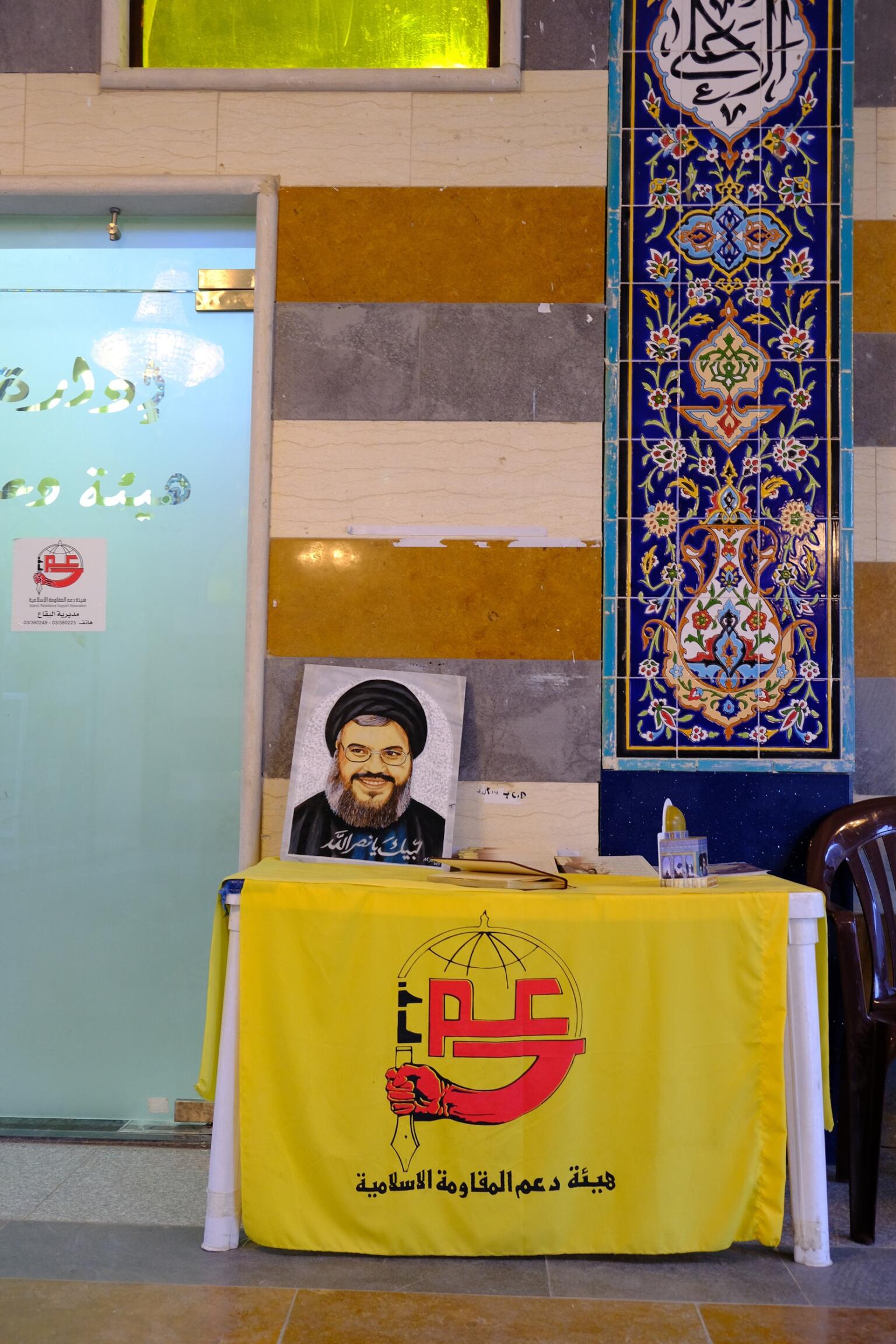
Likewise, trying to go too close to Israel border is just stupid. For one, the Lebanese soldiers won’t let you through without a special permit, and if you do get through and try to carry on into Israel, you will be arrested, shot, or both.
Beirut has a mixed reputation on safety. Around the city center, Hamra, and Mar Michael areas, it is totally safe, even late at night. I would however caution against aimlessly walking around in a part of town you do not know (especially not drunk or loaded with cash). There is a lot of poverty in Lebanon and sometimes desperate circumstances lead to desperate actions (like robbing foreigners).
In the Bekaa Valley and in southern Lebanon, Hezbollah is active and their support is substantial. Again, this doesn’t really change anything for us backpackers, but just so that you are aware. Don’t go around talking about how great the USA and Israel are and you should be just fine.
I would also avoid expressing your political opinion, your religious opinion, or talking about the civil war with people you have just met.
Many Lebanese people opened up to me about their experience with the war and about the religious tensions in Lebanon, but only after spending significant time with them first. Certainly, don’t push the subject. Be respectful and try to imagine how things must of been in Lebanon while the war raged for more than 15 years.
You will see that all over Lebanon the army has set up check points. These checkpoint are nothing to be worried about. Just be prepared for a heavy military presence every where you go in the country.
Check out Backpacker Safety 101 for tips and tricks to stay safe whilst backpacking.
Pick yourself up a backpacker security belt to keep your cash safe on the road.
I strongly recommend traveling with a headlamp whilst in Lebanon (or anywhere really – every backpacker should have a good headtorch !). Check out my post for a breakdown of the best value headlamps to take backpacking.
Sex, Drugs and Rock ‘n’ Roll in Lebanon
The Lebanese sure as hell love to party. In terms of alcohol use, Lebanon might just be the most tolerant and liberal muslim majority country in the Middle East. Beer, wine, arak, whiskey… you name it, it’s here.
Beirut has a pumping nightlife scene that has made it famous around the world. Alcohol, binge coffee drinking, and sheesha smoking: those are the three main vices in terms of substances in Lebanon. If you are looking to party, Beirut is the place.
Also, Lebanon is producing some of the tastiest wine I have ever tried, and if you have a chance go wine tasting in the Bekaa!
I am sure that there is weed/hash around too, I just never came across it. Lebanon does have some pretty serious drug laws though, so if you do go in search of something to smoke, be very careful how and where you go about getting it.
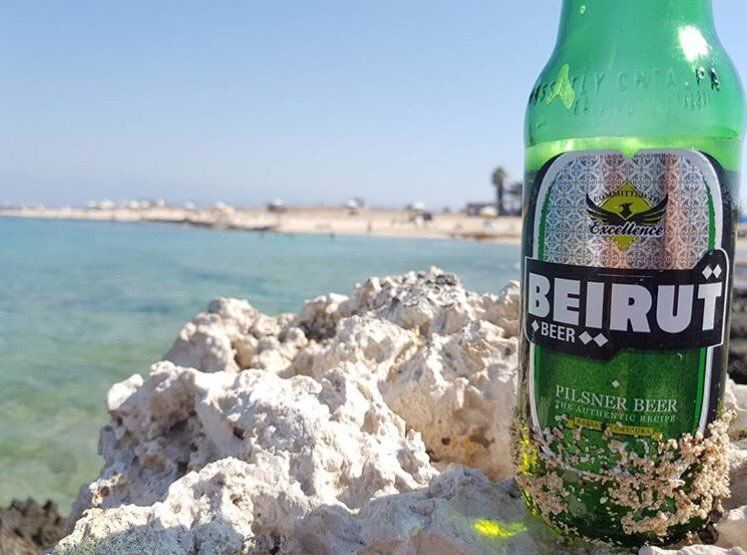
My advice? If you happen to make friends with some young Lebanese dudes just ask them.
As a whole, Lebanese society is not nearly as conservative as other Muslim majority countries. If you are a woman walking down the street without your hair covered, nobody will even look twice at you, even if you are in a Muslim part of town.
Be aware that if you venture into smaller villages that are of Muslim majority, it won’t always be possible to find booze at the local grocery shops.
Travel Insurance for Lebanon
ALWAYS sort out your backpacker insurance before your trip. There’s plenty to choose from in that department, but a good place to start is Safety Wing .
They offer month-to-month payments, no lock-in contracts, and require absolutely no itineraries: that’s the exact kind of insurance long-term travellers and digital nomads need.

SafetyWing is cheap, easy, and admin-free: just sign up lickety-split so you can get back to it!
Click the button below to learn more about SafetyWing’s setup or read our insider review for the full tasty scoop.
Below I share the practical information needed for arriving into the country and traveling around Lebanon.
Entry Requirements for Lebanon
Since the borders are effectively sealed via Syria (for foreigners) or Israel (for everyone without a special permit) you will almost certainly arrive into Lebanon by air.
For citizens of the USA, the UK, most of Europe, Canada, Australia, New Zealand, China, Japan, and most South American countries (many others too) you do NOT need to apply for a visa in advance.
Tourist visas are granted for 30 days on arrival at the airport in Beirut. You can apply for a 3 month extension for your visa while in the country if you want more time. Just don’t overstay your visa as the Lebanese government takes that shit very seriously.
Note on previous Israel/Palestine visits : If the Lebanese customs people/army ask you if you have ever been to Israel or Palestine, the answer must always be NO , even if you were just there last week or more than 10 years ago. It doesn’t matter.
If you tell the Lebanese customs officers that you have indeed been to Israel OR Palestine (you can’t really do one without the other), then you will most certainly not be allowed to enter Lebanon. If you for some reason have an Israeli stamp in your passport, you will not be allowed to enter into Lebanon.
Luckily, Israel knows this and stopped stamping passports years ago.

It only takes 2 minutes! Book your transport on 12Go now and guarantee your seat easily.
As you should know by now Lebanon is a small country. It doesn’t take long (in theory) to get from one end to the other.
For backpackers traveling on a shoestring budget, you can opt to take the public bus, which can certainly take you anywhere up and down the coast. Using public transport in the mountains can be a far more complicated affair however.
Traveling by Bus in Lebanon
Be sure, the public bus system in Lebanon is probably the most confusing system I have ever encountered, short of trying to catch a ride in an unmarked collectivo in Guatemala City.
The buses are not always marked and when they are marked there are marked in Arabic, which doesn’t help most backpackers. Furthermore, there are no stops or central bus stations. The buses stop when people flag them down or need to get off and there is not much more to it than that.
Still, if you are determined and willing to engage the locals, you can get by. I found the Lebanese very well meaning and helpful and somehow I got everywhere I needed to get!
When not walking in the cities, you can opt to either hail a shared taxi or use Uber. Hitchhiking is an option too. More on hitchhiking in Lebanon later in the post.
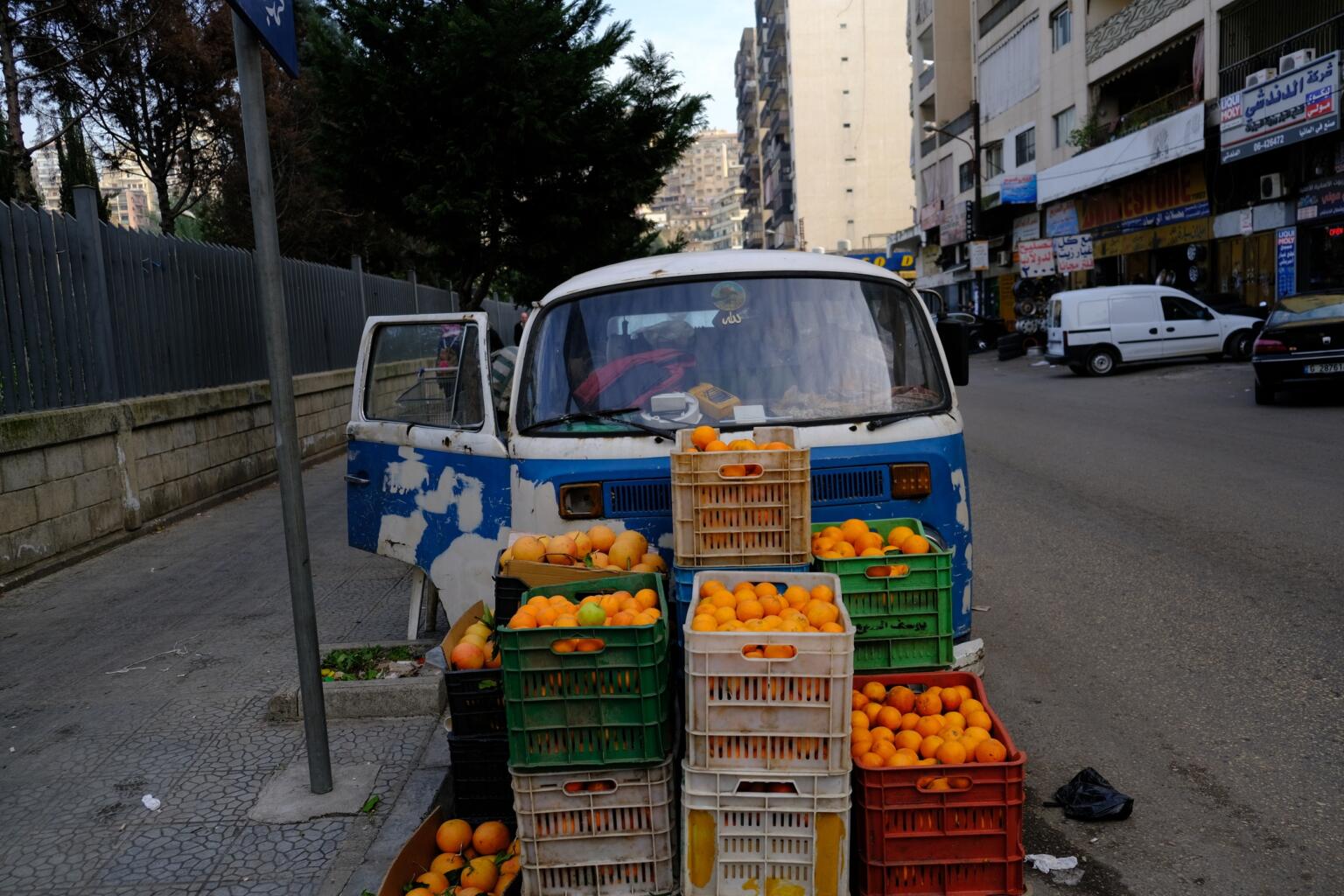
Fun fact : One thing that blew me away about the cars in Lebanon are the sheer number of old Volkswagen buses/vans there are. Literally, everywhere you go in Lebanon you see a old Volks vans from the 1970’s, some in decent condition, others not so much. I love these vans, so it was great to see.
Traveling to Lebanon by yourself? Check out this detailed guide from our friend and fellow travel blogger Anna Everwhere on traveling to Lebanon solo .
Renting a Car in Lebanon
As I mentioned above, renting a car is definitely the way to go. I rented a car for two weeks in Lebanon and I ended up paying about $17 USD a day, plus the petrol. I did not take insurance and the asshole at the rental car company place charged me $70 for a scratch that was already there before I rented the car.
You can sort your car rental in just a few minutes. Booking in advance is the best way to ensure you score the lowest price and your choice of vehicle. Often, you can find the best car rental prices when you pick up the rental from the airport. Make sure you cover your rental car with a RentalCover.com policy . It covers your car against any common damages such as tires, windscreens, theft, and more at a fraction of the price you would pay at the rental desk.
Be aware, the Lebanese drive like fucking maniacs. Lanes, right away concepts, turn signals, stop lights, blind curves… all of those things mean nothing to the average Lebanese driver.
When driving in Lebanon, you need to seriously assume/pretend like everyone around you is drunk, blind, and may turn into you at any moment because that is exactly what it feels like to be surrounded by Lebanese drivers on the highway.
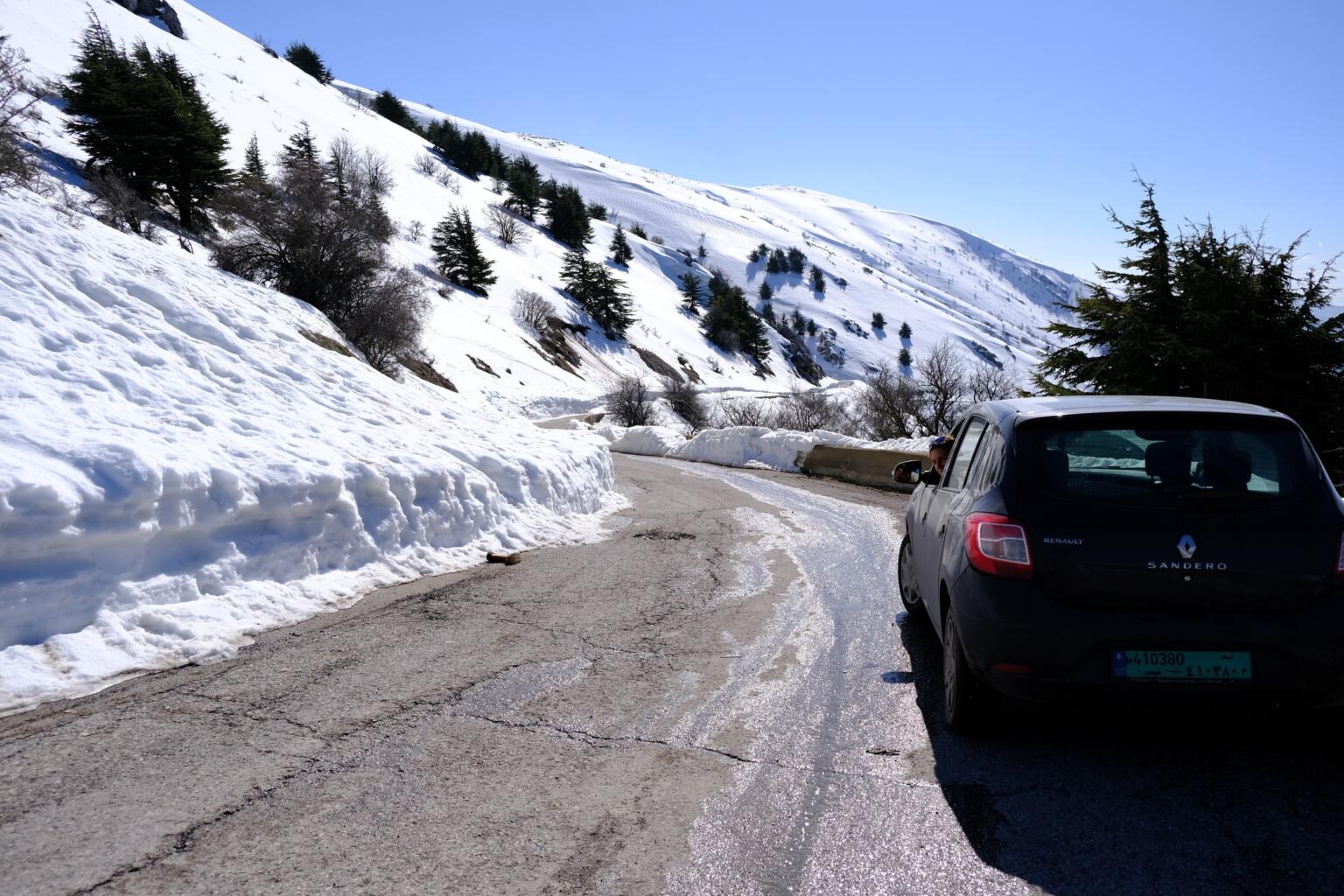
Onwards Travel from Lebanon
Overland onward travel options out of Lebanon are limited, if not impossible. It may be possible to cross the border from Lebanon into Syria, but 1.) you will most definitely need to have already gotten your visa in advance and 2.) the army in both Lebanon and Syria may well stop you for ages and ask you a million and one questions about why you are coming to Syria.
If any of you have any recent information on the Lebanese-Syrian border crossing for foreigners, please leave a comment below!
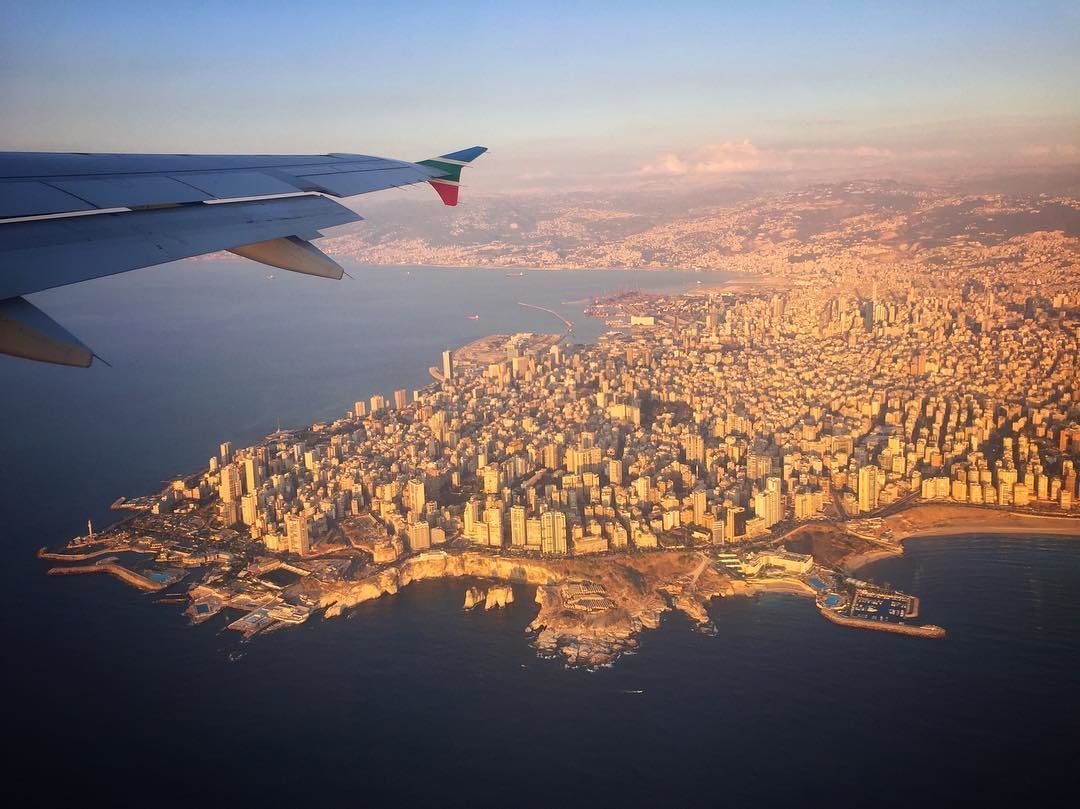
Your best (and likely only) bet for onward travel out of Lebanon is by air from Beirut.
The ferry running from Lebanon to Cyprus seems to have stopped running a number of years ago and I have found no evidence to the contrary. Apparently, when the sea is calm, you can take a ferry from Lebanon to Turkey and then get to Cyprus by ferry from there.
Lebanon is in severe economic doldrums. Living costs are high and jobs sparse. It isn’t exactly a beacon for ex-pat workers, in fact, there is a serious exodus going on as young Lebanese look elsewhere for a more prosperous life.

A new country, a new contract, a new piece of plastic – booooring. Instead, buy an eSIM!
An eSIM works just like an app: you buy it, you download it, and BOOM! You’re connected the minute you land. It’s that easy.
Is your phone eSIM ready? Read about how e-Sims work or click below to see one of the top eSIM providers on the market and ditch the plastic .
Work Visa’s For Lebanon
Getting a work visa for Lebanon is not exactly straightforward. Technically, foreigners can only fill job vacancies that cannot be filled by a Lebanese worker although a healthy bribe culture means that the rule is not always enforced.
Nevertheless, there is some bureaucracy to deal with before a work visa can be awarded.
Teaching English in Lebanon
Many Lebanese people can speak surprisingly good English… and you know what? The demand for Lebanese wanting to learn English is growing every year (sorry Frenchies).
Candidates with Bachelor Degrees are preferred but this is not actually a mandatory requirement. The average pay range is $900 – $1500 per month which is just about enough to etch a living.
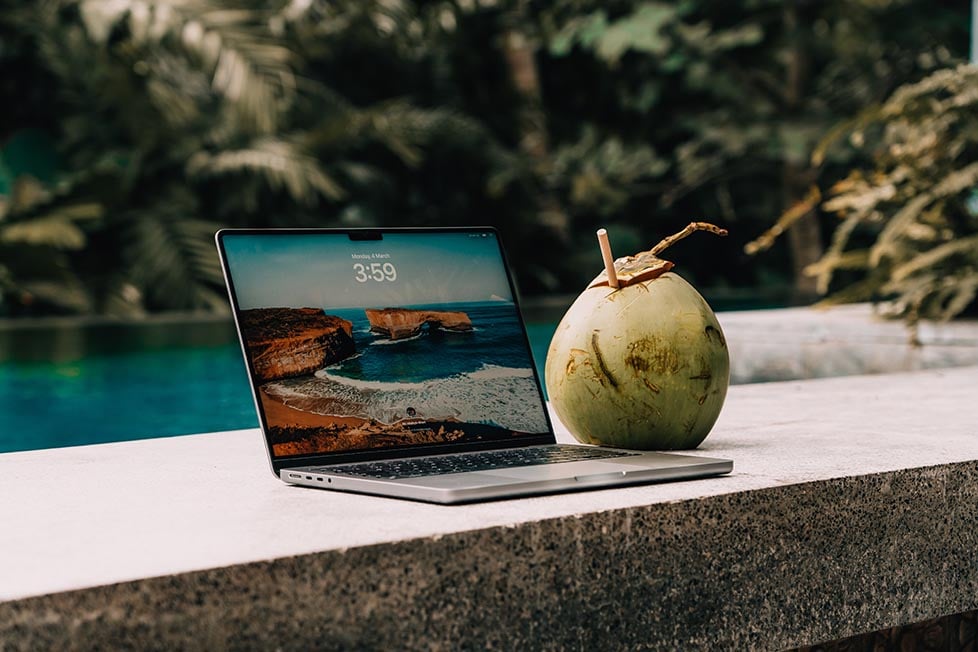
Volunteer in Lebanon
Lebanon is not a suitable destination for backpacker volunteers. Whilst there are many worthy projects, the political situation in the country makes it very unwise. If you really want to volunteer in Lebanon, then seek out a proper NGO or Humanitarian Project that has the relevant clearance to operate in the country.
Lebanese food is simply incredible. There are so many options and tasty things to try that if you love to eat, you are coming to the right country! Below I have listed a few of my favorite Lebanese dishes:
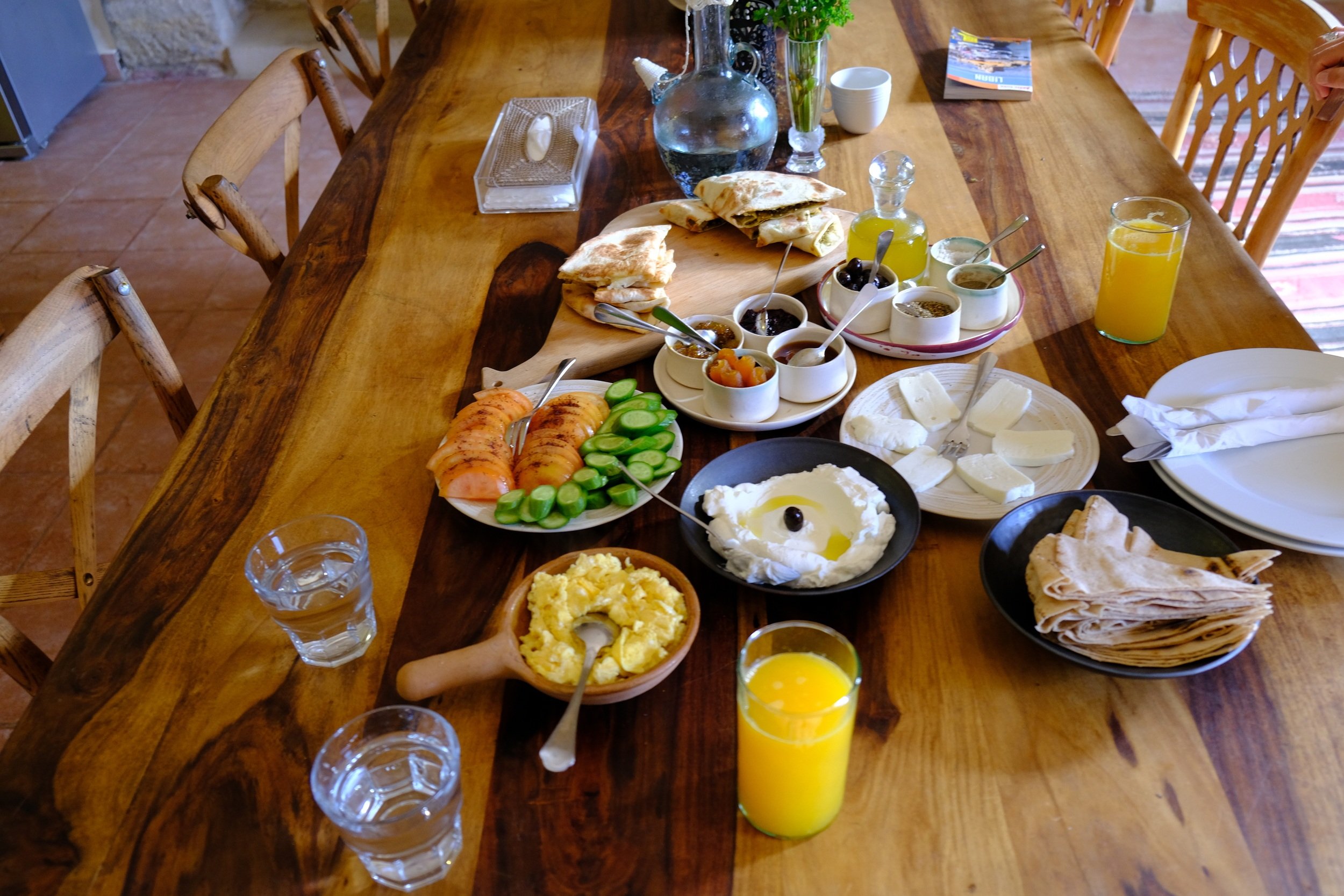
Hummus : A chickpea based dip/spread made with olive oil, salt, and tahini paste.
Foul : A breakfast food usually served hot. Made with a fava bean base, raw onions, and olive oil.
Manousche : Another common breakfast food (it’s good anytime, really). It’s kind of like a pizza, but usually topped with the famous Lebanese spice, Zaatar.
Mutabal : The same thing as Baba Ghanouj. A delicious dip made with smoked eggplant.
Kefta : Oblong shaped meatballs filled with parsley and spices.
Kibbeh : Can take many forms, but is usually a flat ground-beef and bulgur grain dish seasoned with spices and topped with pine nuts. Must have with yogurt!
Fatoush : A classic Lebanese salad topped with fried bits of Lebanese bread and many vegetables like tomatoes and sweet peppers.
Fried Fish : When you are in southern Lebanon, the fish is excellent!
Shawarma : The classic Middle Eastern street food sandwich filled with shawarma meat (can be chicken, lamb, or beef), sauce, and pickled veggies.
Labneh : A slightly sour, young cheese-yogurt hybrid that is delicious on everything
Tabolueh : A world-famous cold salad made with bulgur, tomatoes, and a ton of parsley, lemon juice, salt, and onions.
Lebanese Pastries : I could write an entire article on all of the different Lebanese pasty concoctions. There is an endless variety. Try to sample a different one every day. In Saida, go for the kneffe .
The Lebanese people are a true pleasure to get to know. We experienced countless acts of hospitality and kindness from the people we met.
From taxi drivers and fish vendors to bar staff and Airbnb hosts…the Lebanese people are some of the most genuine, kind-hearted, and generous people I have ever met whilst traveling or not.
One thing is certain, if you end up becoming friends with any Lebanese people, you will certainly not starve. The Lebanese love language is certainly food, and I swear I gained 10 pounds whilst backpacking in Lebanon just from constantly being offered delicious food.
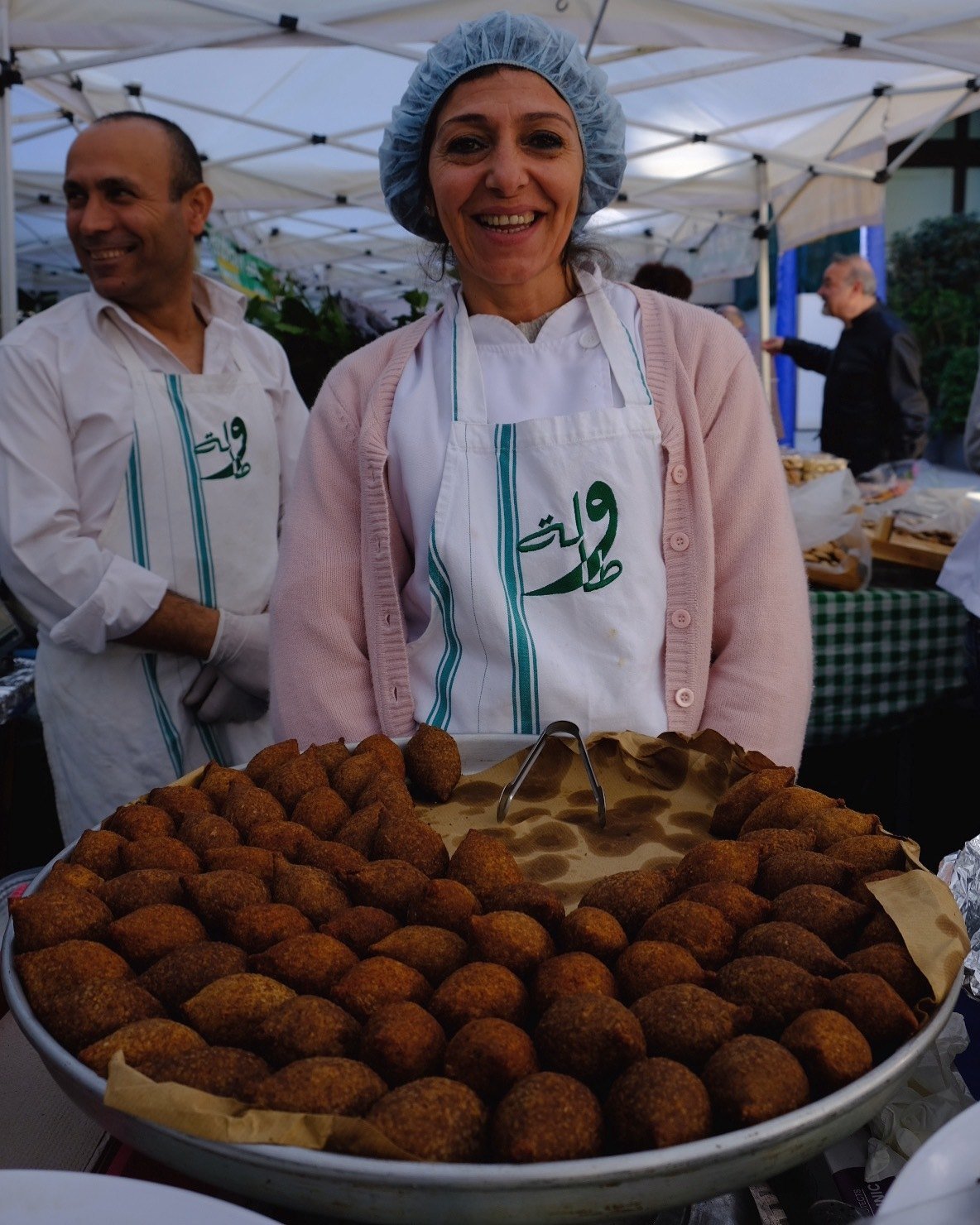
Ironically, a majority of the Lebanese population is still likely to be very traumatized from the shit they endured during the war years. However they cope with these traumas, it certainly does not manifest in a negative light in the way they interact with foreigners.
Special thanks to all of the amazing people who showed us so much love in Lebanon, especially the Kobrossi family.
Internet in Lebanon
From what I had read online before I came to Lebanon, I was confident that I could pick up a SIM card for my phone for “just a couple of bucks.” WRONG! If you have also read similar information on other blogs regarding cheap SIM cards in Lebanon, forget it.
It just is not true at all. Apparently, there is some monopoly/government corruption thing going on with the cell phone companies because SIM cards and data are fucking expensive.
After going to (seriously) 10 phone shops in Beirut and haggling when it wasn’t appropriate to haggle, I was able to get a SIM card good for one month loaded with 5 GB of data on it for $45 USD.
You CAN find cheaper options than that, but often they only include 1 GB or less and the SIM card will still cost you $25 easy.
The two main cell phone companies in Lebanon are Touch and Alfa . Both cost pretty much the same. I had Alfa and it worked well throughout the country.
Travel Phrases for Backpacking Lebanon
The official language of Lebanon is Arabic and knowing a few words of it will certainly help you over the course of your backpacking journey. Amazingly (but not so surprisingly), many Lebanese people are fluent in English, French, or both. I met dozens of trilingual Lebanese folks.
For the most part, you can get by on English or French, and any Arabic you learn will only be a bonus. Plus, the locals will greatly appreciate your effort to learn.
Here are a few useful Arabic travel phrases to get you started:
Note : Arabic does not use the same alphabet as English, so these translations are transliterations of how the word would look if written using the English alphabet.
Books to Read whilst Backpacking Lebanon
Here are a few of my favorite books set in Lebanon:
From Beirut to Jerusalem : One of the most thought-provoking books ever written about the Middle East, From Beirut to Jerusalem remains vital to our understanding of this complex and volatile region of the world.
A House of Many Mansions : In the light of modern scholarship, a famous Lebanese writer and scholar examines the historical myths on which his country’s warring communities have based their conflicting visions of the Lebanese nation.
Pity the Nation: An Abduction of Lebanon : With the Israeli-Palestinian crisis reaching wartime levels, where is the latest confrontation between these two old foes leading? Robert Fisk’s explosive Pity the Nation recounts Sharon and Arafat’s first deadly encounter in Lebanon in the early 1980s and explains why the Israel–Palestine relationship seems so intractable.
Hezbollah: The Global Footprint of Lebanon’s Party of God : Hezbollah: The Global Footprint of Lebanon’s Party of God is the first thorough examination of Hezbollah’s covert activities beyond Lebanon’s borders, including its financial and logistical support networks and its criminal and terrorist operations worldwide.
Lonely Planet Middle East : Always good to have a Lonely Planet on hand (though this guide is best!), especially if you are planning to go to multiple countries in the Middle East.
A Brief History of Lebanon
Since Lebanon is one of the oldest continuously inhabited places in the Middle East, giving a brief history is not a easy task. Basically, for the last few thousand years, the territory now known as Lebanon has been ruled and/or conquered by the Phoenicians, Egyptians, Romans, Arabs, Christians, Mamluks, and the Ottomans, among others.
In 1975, when the Lebanese civil war broke out, the country was forever changed by the conflict.
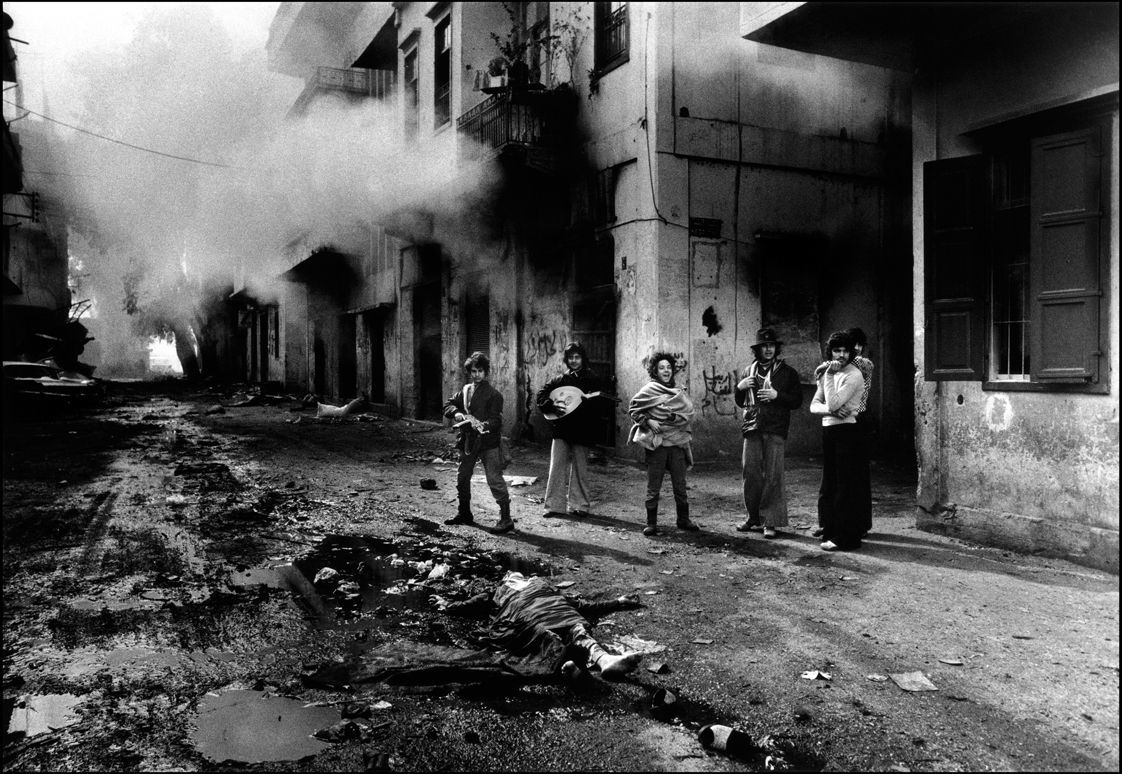
The Lebanese Civil War and its Aftermath
In all, it is estimated that more than 100,000 were killed, and another 100,000 handicapped by injuries, during Lebanon’s 16-year war. Up to one-fifth of the pre-war resident population, or about 900,000 people, were displaced from their homes, of whom perhaps a quarter of a million emigrated permanently. Thousands of people lost limbs during many stages of planting of land-mines.
The War can be divided broadly into several periods: The initial outbreak in the mid-1970s, the Syrian and then Israeli intervention of the late 1970s, escalation of the PLO-Israeli conflict in the early 1980s, the 1982 Israeli invasion, a brief period of multinational involvement, and finally resolution which took the form of Syrian occupation.
In May 1991, the militias (with the important exception of Hezbollah) were dissolved, and the Lebanese Armed Forces began to slowly rebuild themselves as Lebanon’s only major non-sectarian institution.
Some violence still occurred. In late December 1991, a car bomb (estimated to carry 100 kg (220 lb) of TNT) exploded in the Muslim neighborhood of Basta.
At least thirty people were killed, and 120 wounded, including former Prime Minister Shafik Wazzan, who was riding in a bulletproof car. It was the deadliest car bombing in Lebanon since June 18, 1985, when an explosion in the northern Lebanese port of Tripoli killed sixty people and wounded 110.
The last of the Westerners kidnapped by Hezbollah during the mid-1980s were released in May 1992.
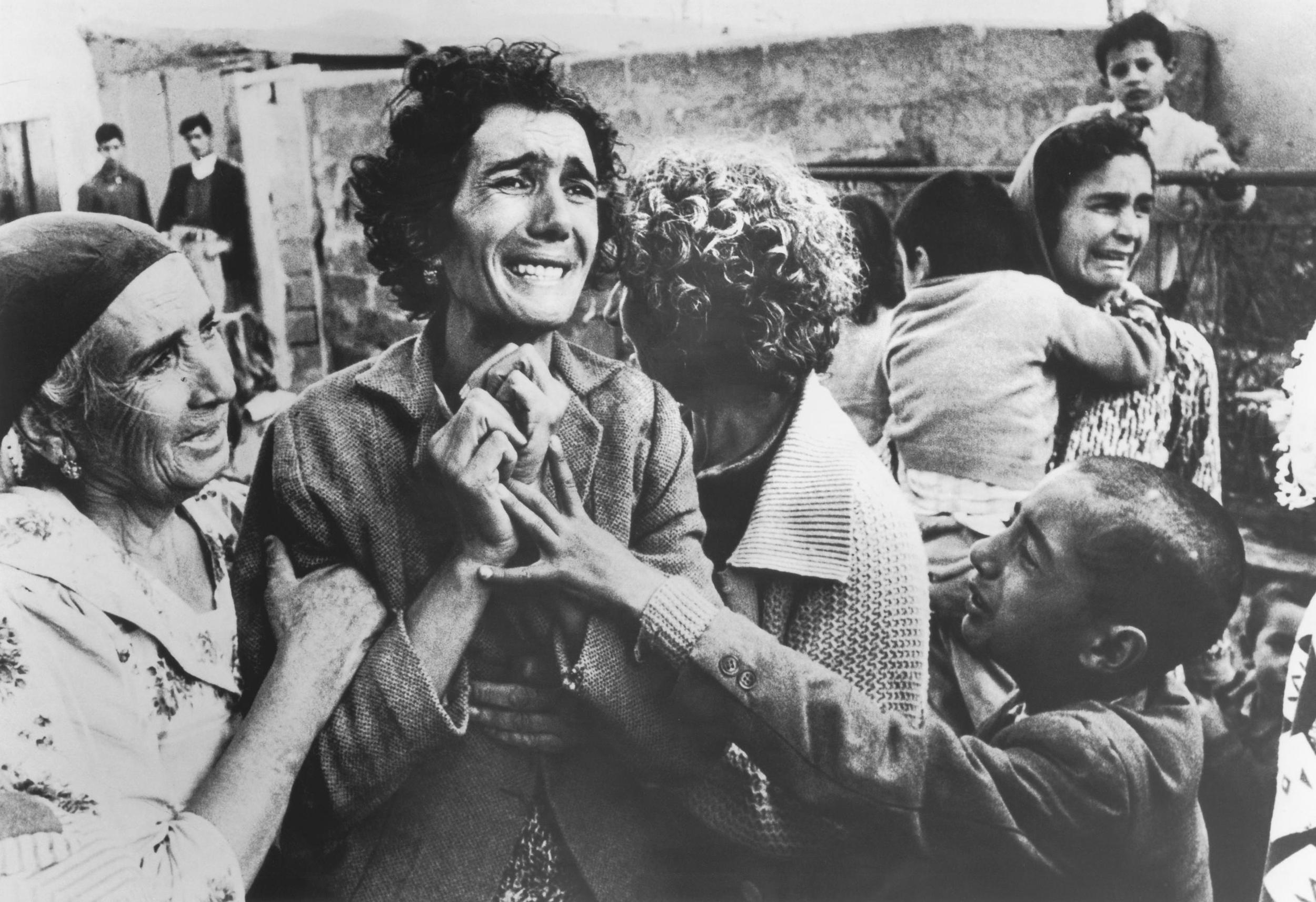
Lebanon in the Present Moment
Lebanon and its population are still recovering from the civil war. Evidence of bombed out, destroyed buildings are still standing all over Beirut as a daily reminder to the people living there just how fucked things got in the not so distant past.
That said, Lebanon has not surrendered in defeat to the wounds and trauma of war. Lebanon is a country on the move and the people I spoke to expressed a deep love and optimism for the future of their country.
The fact remains that Lebanon is still a deeply divided country, though at least for the present moment the majority of Lebanese citizens are finding ways to look past their ideological differences and co-exist with one another, which is very good to see indeed.
I guarantee you that most of the Lebanese people do not want another war and will do everything in their power to avoid one.
The backpacker scene in Lebanon will develop as more and more keen travelers find their way to this magical land, which will be great for the economy and well as for the general public confidence that will get a boost when locals see foreigners coming to enjoy their country.

Things go wrong on the road ALL THE TIME. Be prepared for what life throws at you.
Buy an AMK Travel Medical Kit before you head out on your next adventure – don’t be daft!
Trekking in Lebanon
Lebanon’s mountains are full of awesome hiking trails. Hiking is not a super popular past time in Lebanon, but slowly people are getting stoked on it. The people behind the Lebanese Mountain Trail (LMT) have done heaps in promoting hiking and trekking in the country.
When the mountains are covered in several feet of snow, the options are endless. Here are a few of the best hikes in Lebanon.
Lebanese Mountain Trail : The LMT is a 470 km (292 mi.) foot path traversing the breadth of Lebanon from north to South. The trail is made up of 27 different sections and takes roughly one month to complete end to end. If you have the time and motivation, this is an ultra rewarding way to see Lebanon. Most people start the thru hike in late spring.
Al Ammouaa Forest : For a chill and non-crowded place to enjoy the mountains, the Ammouaa Forest Reserve in north east Lebanon is a great spot. We did an awesome 3 hour hike out here and did not see another person (also we were trekking in 3 feet of powder and my feet nearly fell off due to cold).
Kadisha Valley : One of my favorite sections of the LMT runs through the Kadisha Valley. Here you have ancient olive groves, monasteries, rivers, and waterfalls.
The Chouf Reserve : Lebanon’s biggest forest reserve is the best place to surround yourself with ancient cedars and escape the crowds. Ok, sometimes it can be busy here, but most of the time (especially once you leave the road), it is just you and the trees.
Horsh Ehden Nature Reserve : Another very low-key spot not too far from Bcharre. The lower elevations are hikable in the winter.
Adonis Valley : One of the best places to see a large lake in Lebanon (Lake Chouwen).
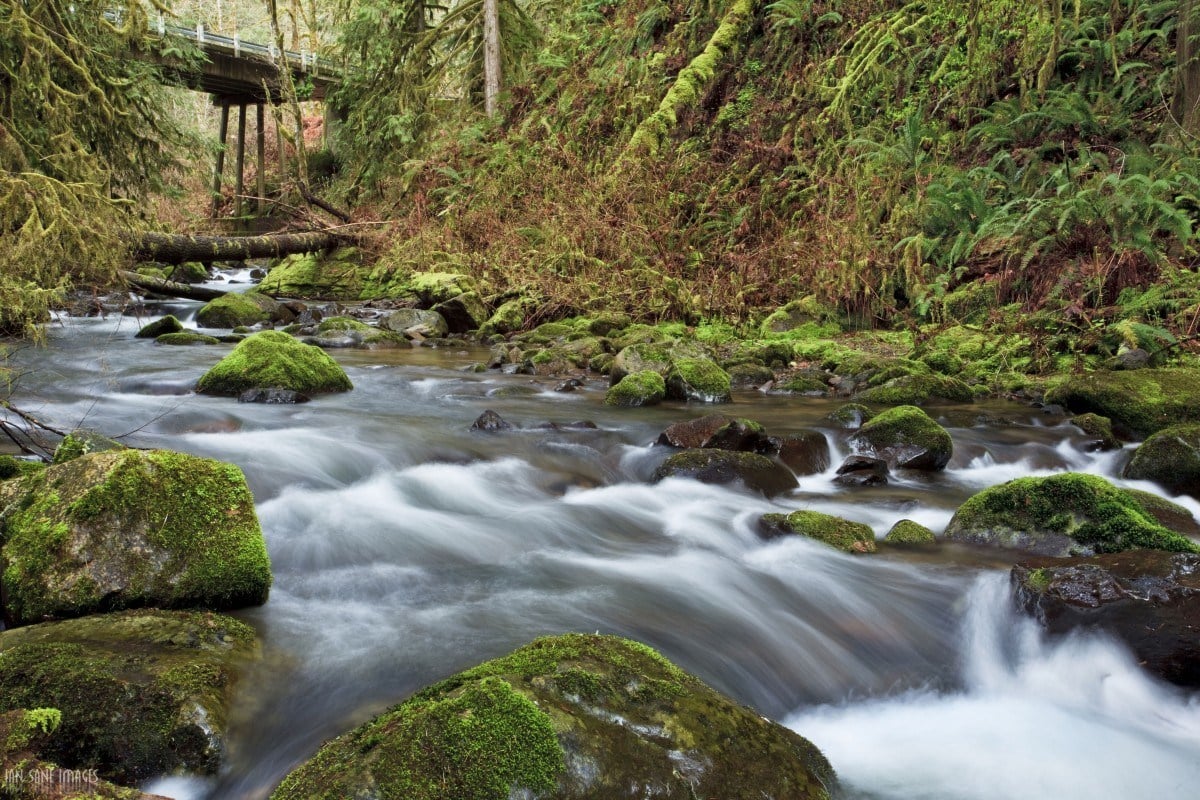
Scuba Diving in Lebanon
In the summer when it is too hot to do anything else, why not go for a scuba dive? Prospective divers can find dive shops in Beirut, Saida, Byblos, Batroun, Jounieh, and Tripoli, to name a few. There are a handful of interesting dive sites to be found up and down Lebanon’s coast.
Aub Canyon, near Beirut : The walls on this reef are steep, beautiful, and full of small caves and fishermen’s nets with a huge old anchor lying at 43m. The water here is pretty polluted though, so do your best not to swallow any!
Shark Point , near Beirut: One of the best dive sites in Lebanon. Diverse and rich. Fine diving between April and September. Moray eels, stingrays in groups, eagle rays, groupers, and sharks – the small tooth sand tiger and the gray nurse sharks tend to be around in July.
The Souffleur, south of Beirut (12 km) : An epic place to see a World War 2 wreck!
Alice B, near Jounieh : An excellent site for underwater photographers. An easy dive for people with little experience.
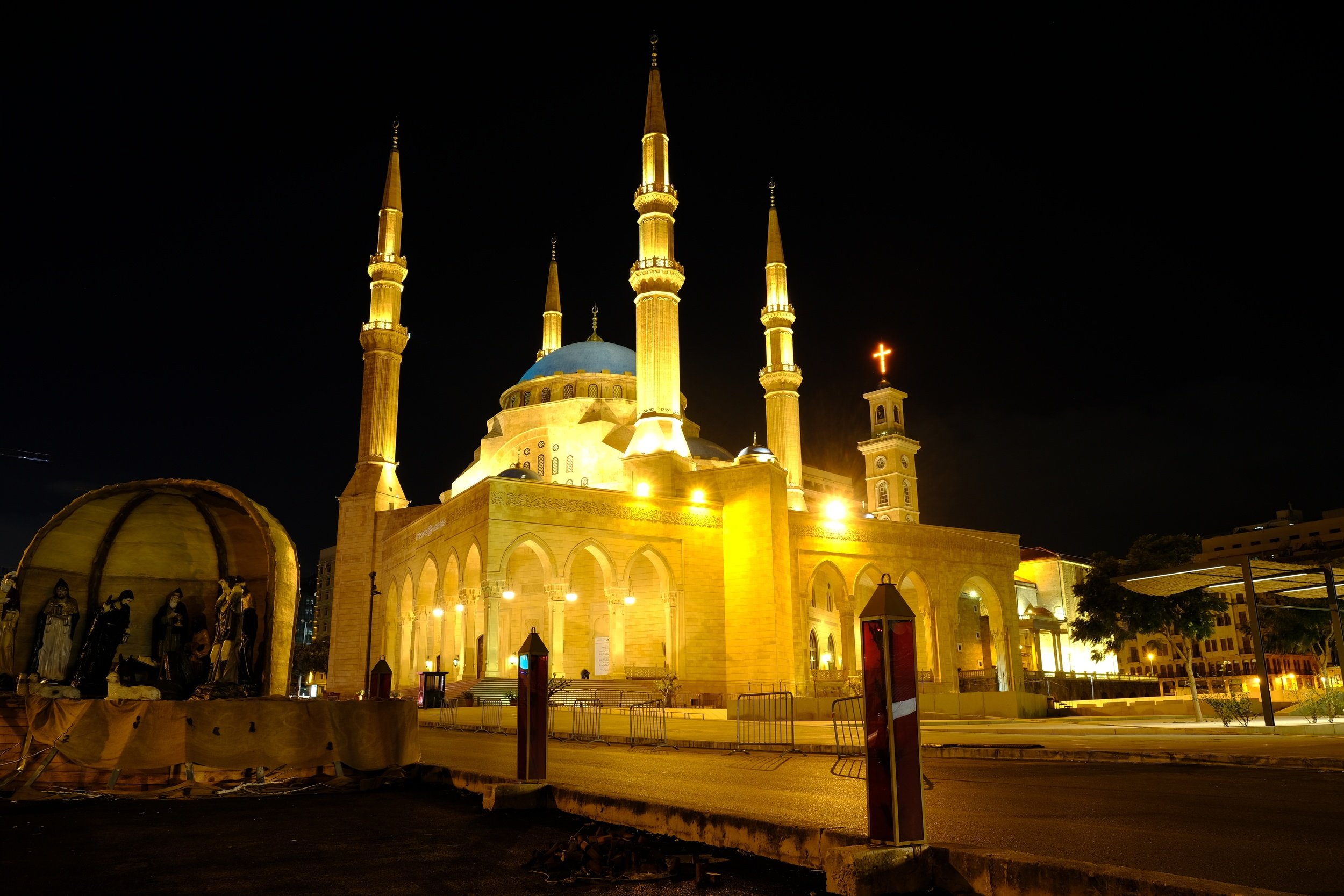
I hope you found this Lebanon backpacking guide useful. I am confident that this is the most comprehensive Lebanon travel guide on the internet and one I wish I had when I first went backpacking in Lebanon!
It was truly a pleasure to travel in Lebanon, and to have the chance to write about it. My hope is that you put this Lebanon travelguide to use for your own unique backpacking adventure!
Lebanon is a very special country filled with amazing human beings. If you are about to set off to Lebanon, you are in for one amazing travel experience. Happy travels, amigos.
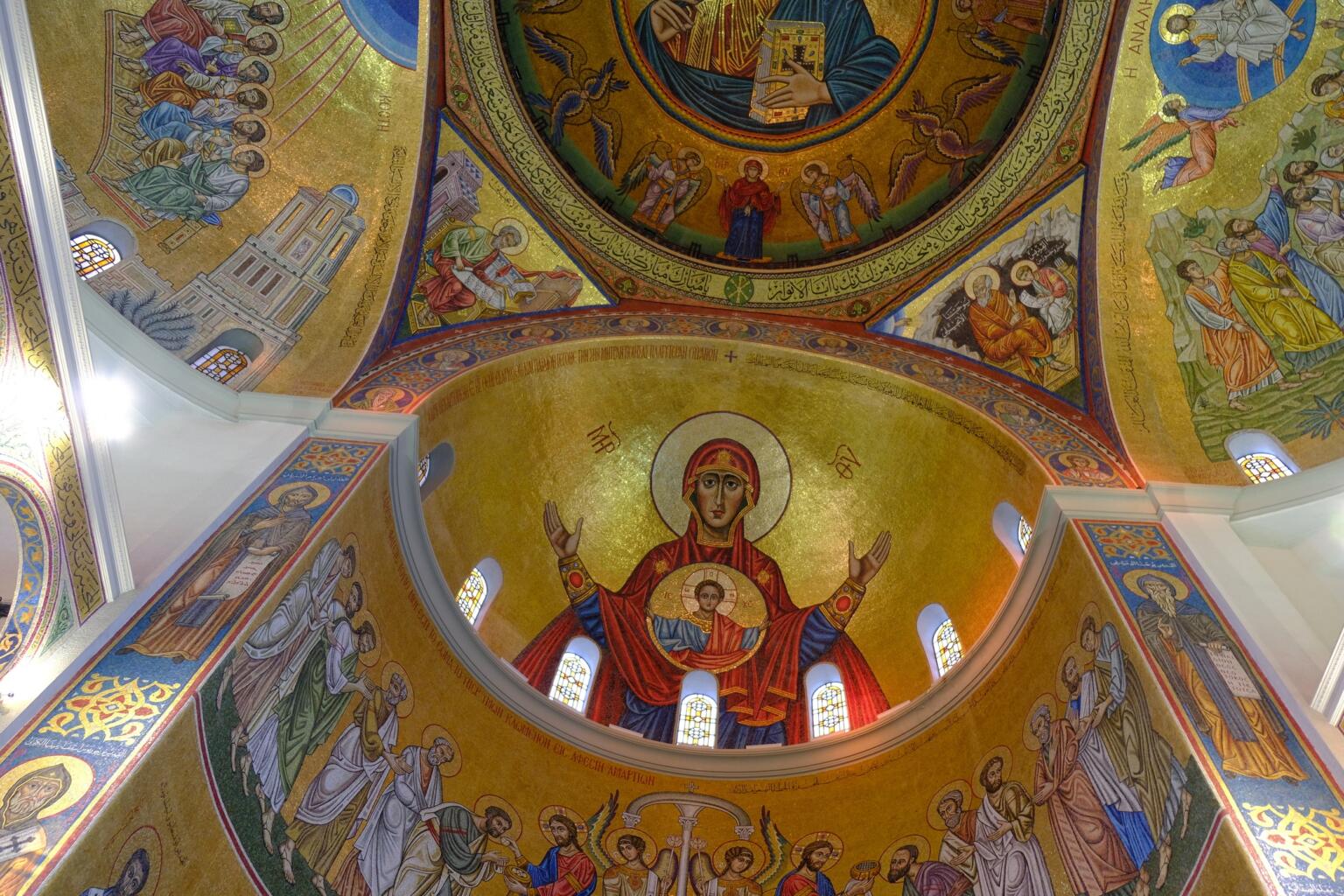
Will Hatton
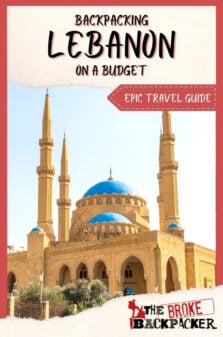
Share or save this post

Heading to Lebanon in a couple months, thank you for all the great info, this was extremely helpful and please learn a new word besides whilst.
Thanks for the helpful article and resource! However, I wanted to provide a very important correction to the Money section. Lebanon has been in the midst of a financial crisis since 2019, which has caused the value of the Lebanese pound/lira to spiral downwards. This means that the official pegged rate of 1500 Lebanese lira to USD is no longer accurate, not even close. As of our visit last week (early May 2022), the black market rate was 27,000 lira to 1 USD! Stores and restaurants have adjusted their pricing accordingly, so if you don’t know this you will experience a bit of sticker shock! Therefore: bring cash, preferably crisp US dollars, and plan to change the money in Lebanon after arrival. Many restaurants and stores (and local Lebanese) will happily accept your US dollars for your purchase and give you change in lira (although the rate might be slightly different, like 25,000 lira to 1 USD instead of 27,000). Don’t use your foreign credit card at the official rate lest you accidentally pay $500 USD for a meal that should cost $30 USD!
I’m going to Lebanon in a few weeks. Thanks for the info.
Nice article and despite all the issues I still believe international traveling and intercultural exchange between different religious groups is still possible To answer BackpackingTony’s question, they don’t have a way to verify if you’ve ever been to Israel, but they will ask you at the border. You just have to provide the correct verbal answer to that question, and you’re good to go. On a sad note, something truly disturbing happened to me at Beirut airport yesterday. I was detained for no reason, physically injured and had my clothes thrown on the floor and stepped on by the Lebanese border authorities. I understand that not every country is going to be warm and fuzzy to tourists, but this is an international Airport processing over 20,000 visitors a day from all over the world and this kind of savagery is simply outrageous. I am planning on sharing my experience on every possible platform, so maybe one day it gets back to the airport authorities
Lebanon is on level 4 terrorism and undergoing the worst economic crisis in it’s history. Kindly be aware that there a revolution going on, and most roads are blocked with burning tires. Definitely not the place you’re expecting!
Wow! What an incredible well researched article! Thanks so much! I’ve got a question about visiting Lebanon. I’ve read that the Lebanese Government will deny entry for any visitor with an Israeli passport, Israeli visa valid or expired and used or unused and passports with entry stamps to Israel. I visited Israel back in 2015. I never got a stamp in my passport, just a blue card when I entered and pink card when I left. That passport has since expired and I’m traveling on a new one (I’m from Canada BTW). Since I’ve been to Israel but don’t have a stamp on my passport would you know if I will still be denied entry?
Leave a Reply Cancel reply
Your email address will not be published. Required fields are marked *
Save my name, email, and website in this browser for the next time I comment.
Notify me of followup comments via e-mail.

IMAGES
VIDEO
COMMENTS
Lebanon travel guide: a 2-week itinerary. This is a compelling travel guide to Lebanon that shows how to visit the Levantine country during the crisis, including where to exchange in the black market. It also includes things to do, how to move around, where to stay and more. Despite its tiny size, Lebanon is the most diverse country in the ...
Day 2: Jeita Grotto and Harissa. On Day 2 of your 1 week Lebanon itinerary, it's time to head north of out Beirut to explore one of the country's greatest natural wonders - Jeita Grotto. An amazing underground network of seriously impressive caves, it's easy to spend a few hours here - with a short documentary film, short cable ride ...
Published: February 21, 2024. LEBANON. This is the ultimate 5 day Lebanon itinerary. In this Lebanon travel guide, we'll explain how to do day trips and tours from Beirut to visit the Rock of Raouché, Jeita Grotto, Harissa, Byblos, Chouwen Lake, Baatara Waterfall Gorge, Baalbek Ruins, Kadisha Valley and Cedars of God.
Day 0: Arrive in Beirut, Lebanon. Day 1: Explore Beirut. Day 2: Sidon & Tyre. Day 3: Jeita Grotto, cable car to Our Lady of Lebanon and Jbeil/Byblos. Day 4: Batroun and 2 Roman Ruins, Tripoli. Day 5: Qadisha Valley, Cedars of God or Horsh Ehden National Park. Day 6: Hiking in Qadisha Valley.
Lebanon itinerary day 7: Tripoli day trip. Tripoli is Lebanon's second largest city and a Tripoli day trip must be added to any Lebanon itinerary. It's a completely different world compared to Beirut. I left Le Bristol Hotel around 08:30 and was in Tripoli at 10:00. If there is much traffic it could be a bit longer.
The Perfect One Week, Two Week, and Three Week Travel Itinerary For South Africa. The Absolute Most Beautiful Villages Along The Mosel River, Germany. The Perfect Romania Travel Itinerary: Timisoara, Cluj-Napoca, Sibiu, Brasov, Bucharest. The Ultimate One To Two Week Travel Itinerary For Guatemala.
This 10-day Lebanon itinerary was a little dream come true kind of experience. I've wanted to visit Lebanon for a long time and was very excited when I finally started to plan this trip. ... Day 4: A Day Trip to Baalbek. No trip to Lebanon is complete without a visit to the magnificent Baalbek. Baalbek, also known as Heliopolis in antiquity, is ...
Day 3: Baalbek. Hop back into the car and drive over a spectacular pass to reveal the glorious Bekaa Valley spread out beneath you. Follow the main road north to reach the ancient town of Baalbek, where the magnificently preserved Temple of Bacchus and the vast adjacent Temple of Jupiter hold their own against any Classical ruins in the whole ...
The author goes through a dream Lebanon road trip itinerary to explore this Middle Eastern country highlights in just one week. With just an area of 10,452 square kilometers (4,036 sq mi), Lebanon is a country that you must visit. Lebanon is actually the oldest country name in the world, remaining unchanged for over 4,000 years.
A man smoking in a public bus in Lebanon Lebanon travel guide: a 2-week itinerary. Here you will find the best itinerary for Lebanon. It might be a bit challenging to include all of these places in just 2 weeks but, if you plan ahead, it is totally feasible. Day 1, 2 - Beirut - The most liberal city in the Middle East
Ultimate 5 day Lebanon itinerary. Reading time: 7 min. Lebanon just seems to have it all! Ranging from beautiful mountain ranges (also great for skiing in the winter), national parks, vineyards, Roman temples, a nice Mediterranean coastline, and Beirut is famous for its party scene! Distances are short in this small country, which make it ideal ...
This 4-day Lebanon itinerary includes: Historical sites of Lebanon. Nightlife recommendations in Lebanon. Road trips in Lebanon. Hotels, resorts, and guesthouses in Lebanon. Lebanon travel tips and ideas. Restaurant recommendations in Lebanon . And much more! So without further ado, let's dive right into our ultimate 4-day Lebanon travel guide!
How to Travel to Lebanon in 2022 & 11 Days Itinerary; Don't forget to leave a comment below if you enjoyed the article or have questions! ... I had planned a trip to Lebanon in May 2020 (tickets paid for and everything) but Covid happened. Since then, Lebanon had gone through some significant changes like the economic crisis, etc, and I was ...
Day 1: Exploring Vibrant Beirut. Experience the heart of Lebanon in its capital, Beirut. Start your day with a visit to the National Museum to learn about the country's fascinating history. Explore the iconic Pigeon Rocks and enjoy a leisurely stroll along the Corniche, overlooking the Mediterranean Sea. Delight in the eclectic cuisine at local ...
March 14, 2018. Last Updated on April 17, 2020. For those who are going to travel the Pearl of the Middle East, I'm sharing my one-week Lebanon itinerary to help you plan your own journey. Lebanon: a name that many still associate with war and the Hezbollah even after 20 years the civil war has ended. Lebanon used to be a tormented land ...
Lebanon Itinerary Day 1: Beirut. Beirut is vibrant, dynamic, and cosmopolitan. With one full day in Beirut, my travel companion and I walked the city from top to bottom and soaked in some of its history-laden highlights. Beirut's Central District; Lebanon's tumultuous history is visible in Beirut's architecture.
The best things to see in Lebanon in 7 days complete itinerary: Day 1: Start the day in Beirut and spend the afternoon in Jeita Grotto. Day 2: Start the day in Byblos and the afternoon in Balou Balaa. Day 3: Start the day in Douma and visit the oldest olive trees in Bchaaleh. Day 4: Paragliding and Baalbek.
Balbeeck - 1 Day. Plan one day to visit Baalbeck. Baalbeck is Lebanon's greatest Roman treasure. Actually, it is the largest Roman temple ever built and still very well-preserved, even though it has suffered from theft, war, and earthquakes. Thanks to the efforts of archaeologists, it is still in great condition.
Visiting Lebanon With TourLeb. I visited Lebanon on a private, almost fully-guided itinerary with TourLeb, a women-owned tour company-meets-social enterprise that prioritizes responsible tourism and uplifting local businesses.. The TourLeb staff are unmatched in their knowledge of Lebanon, and I often joked throughout my trip that Nada has the entire country's six million people on speed dial.
With Wanderlog's mobile travel planner on Android and iOS, access and edit your trips wherever you go — even while offline. 4.9 on App Store, 4.7 on Google Play. Keep your places to visit, flight/hotel reservations, and day-by-day itineraries for your trip to Lebanon in our web and mobile app vacation planner.
Day 4: Baalbek & Anjar. (Temple of Bacchus, Baalbek, Image Credit: Alicia Philomena) No trip to Lebanon is complete without visiting the majestic and extensive Roman ruins of Baalbek, particularly the picturesque Temple of Bacchus, in worship of the Greek god Dionysus. This is one of the top places to visit in the Middle East, especially if you ...
9. Hamra Street. 10. Corniche Beirut. Beirut Travel Guide: Sample Weekend Itinerary to Beirut, Lebanon. Day 1 - Weekend Guide to Beirut, Lebanon. Day 2 - Weekend Guide to Beirut, Lebanon. Day 3 - Weekend Guide to Beirut, Lebanon. Beirut Travel Guide: Where to Stay in Beirut, Lebanon.
If there were a number of backpacker hostels scattered throughout the country, then yes, Lebanon would indeed be a cheap country to travel in. Because there are in fact barely any budget hostels in Lebanon, it is hard to travel in Lebanon on a total shoe string budget. Not including a rental car, one can travel in Lebanon on $40 - 60 per day ...